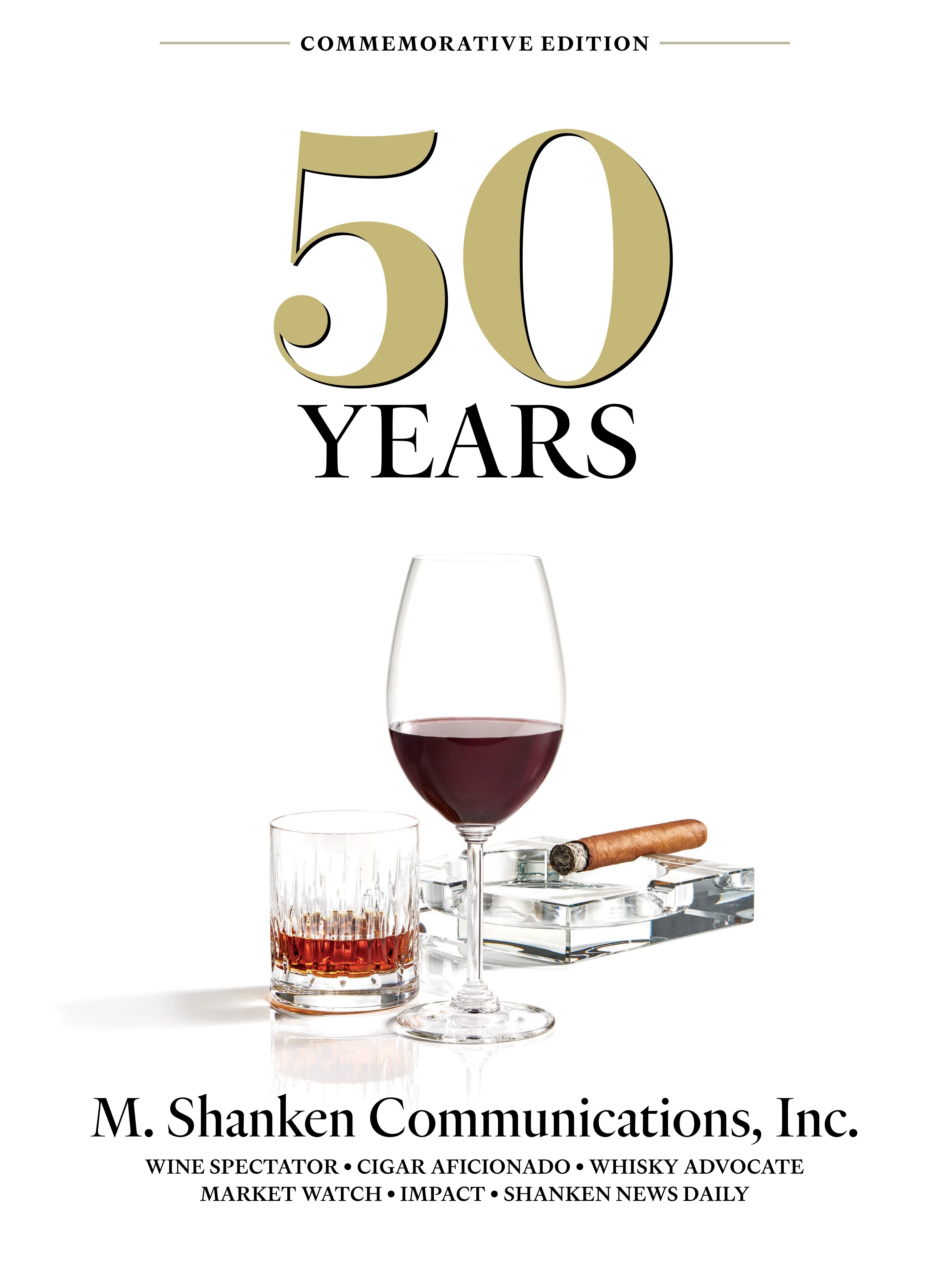
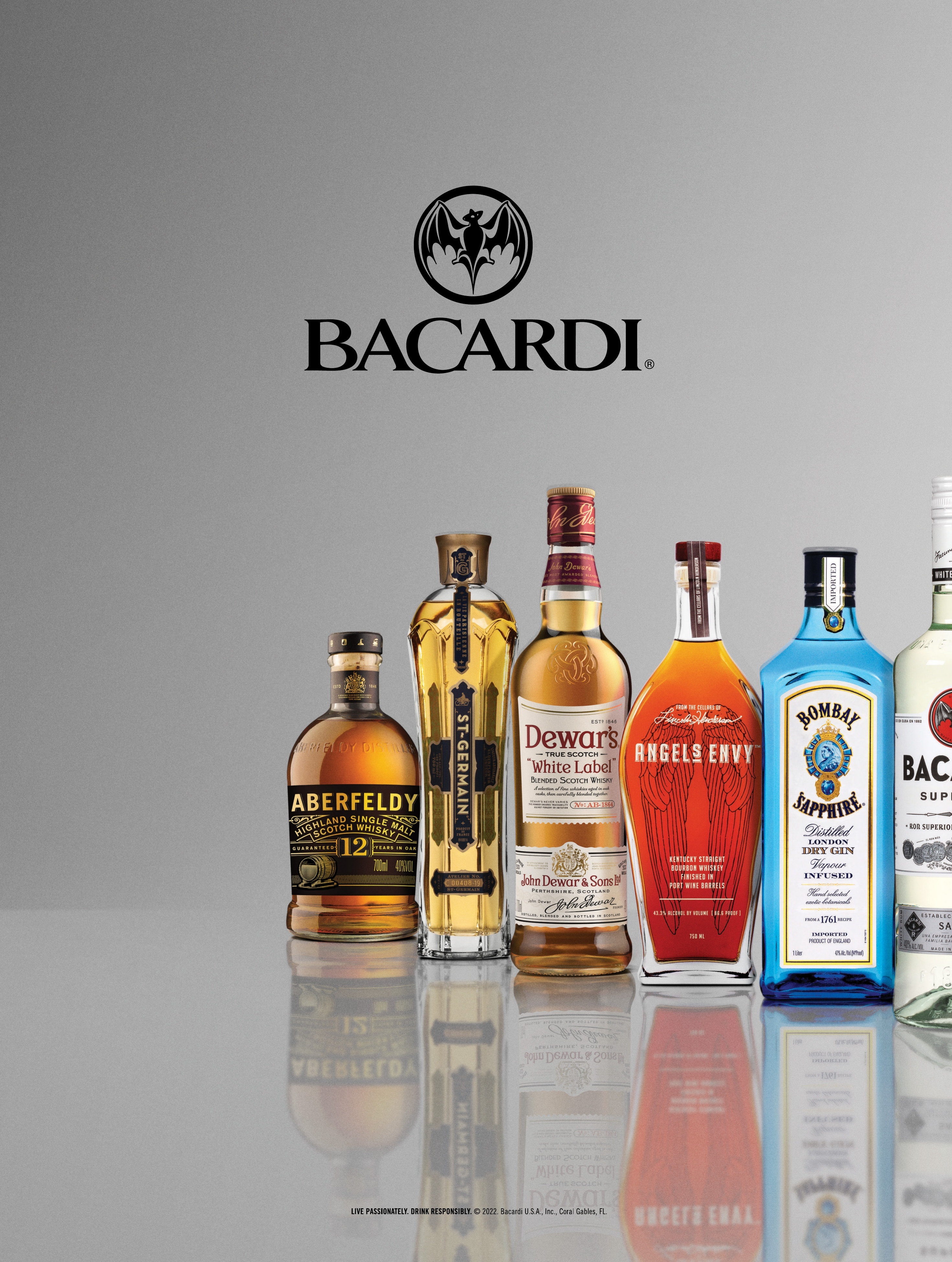

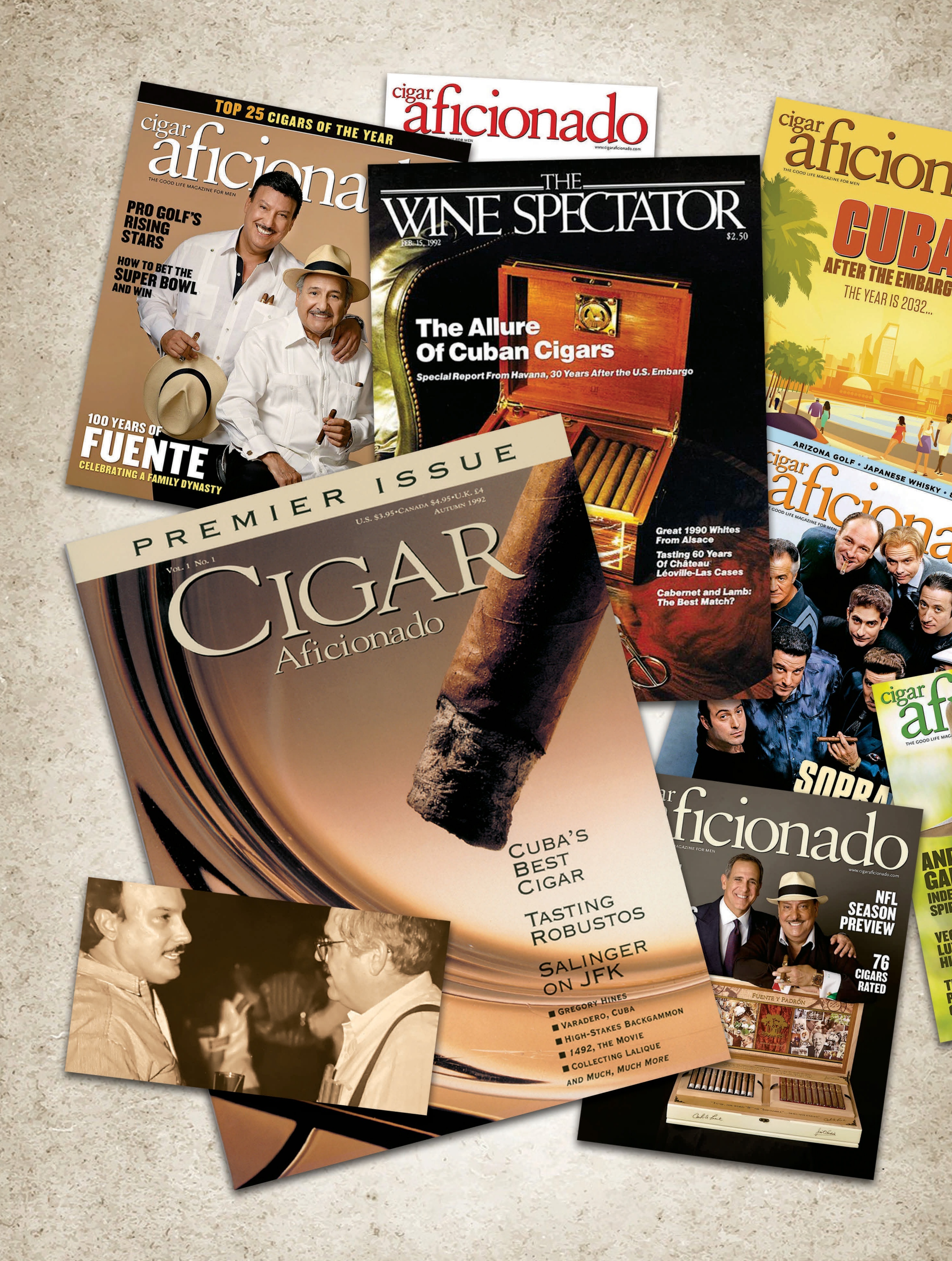
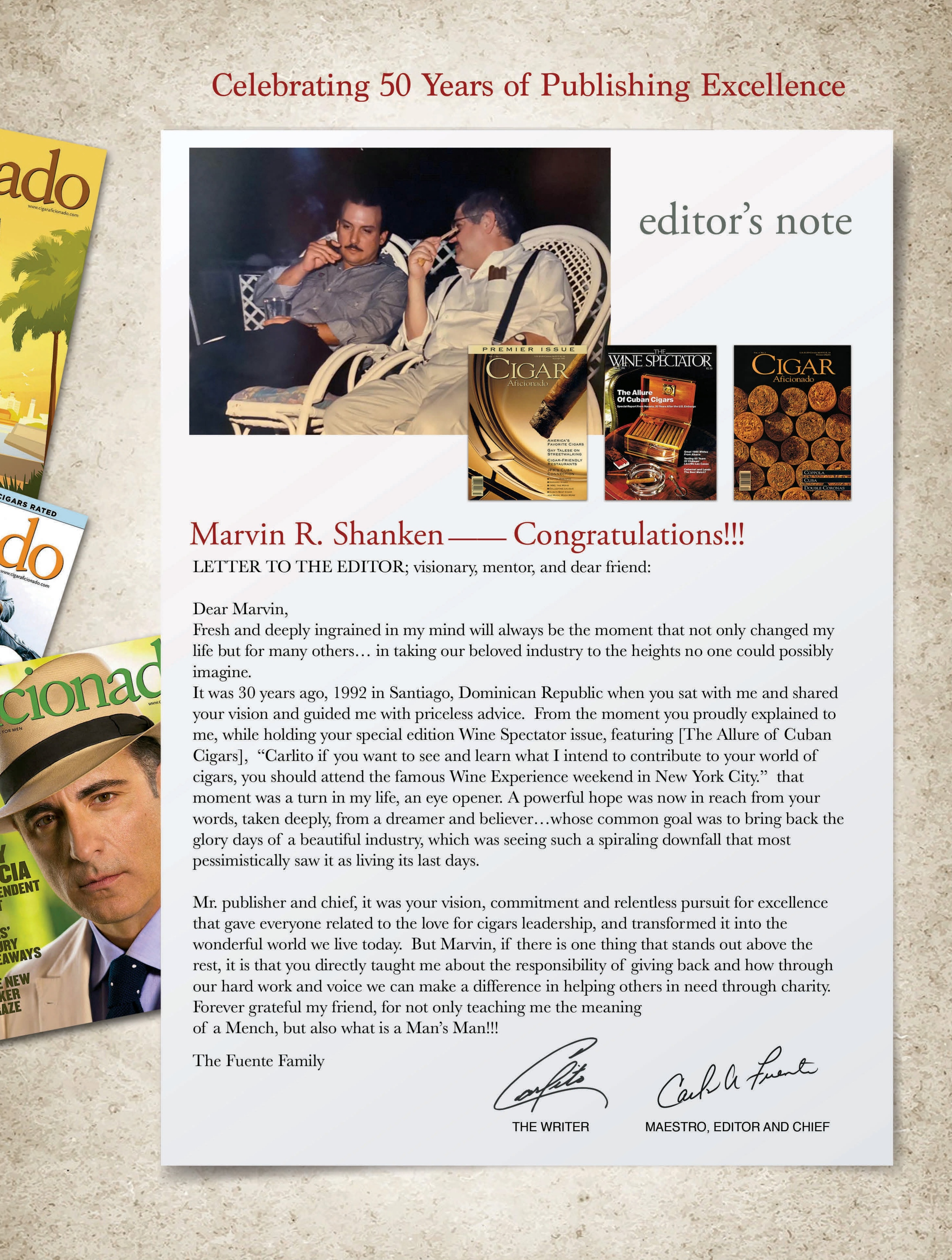
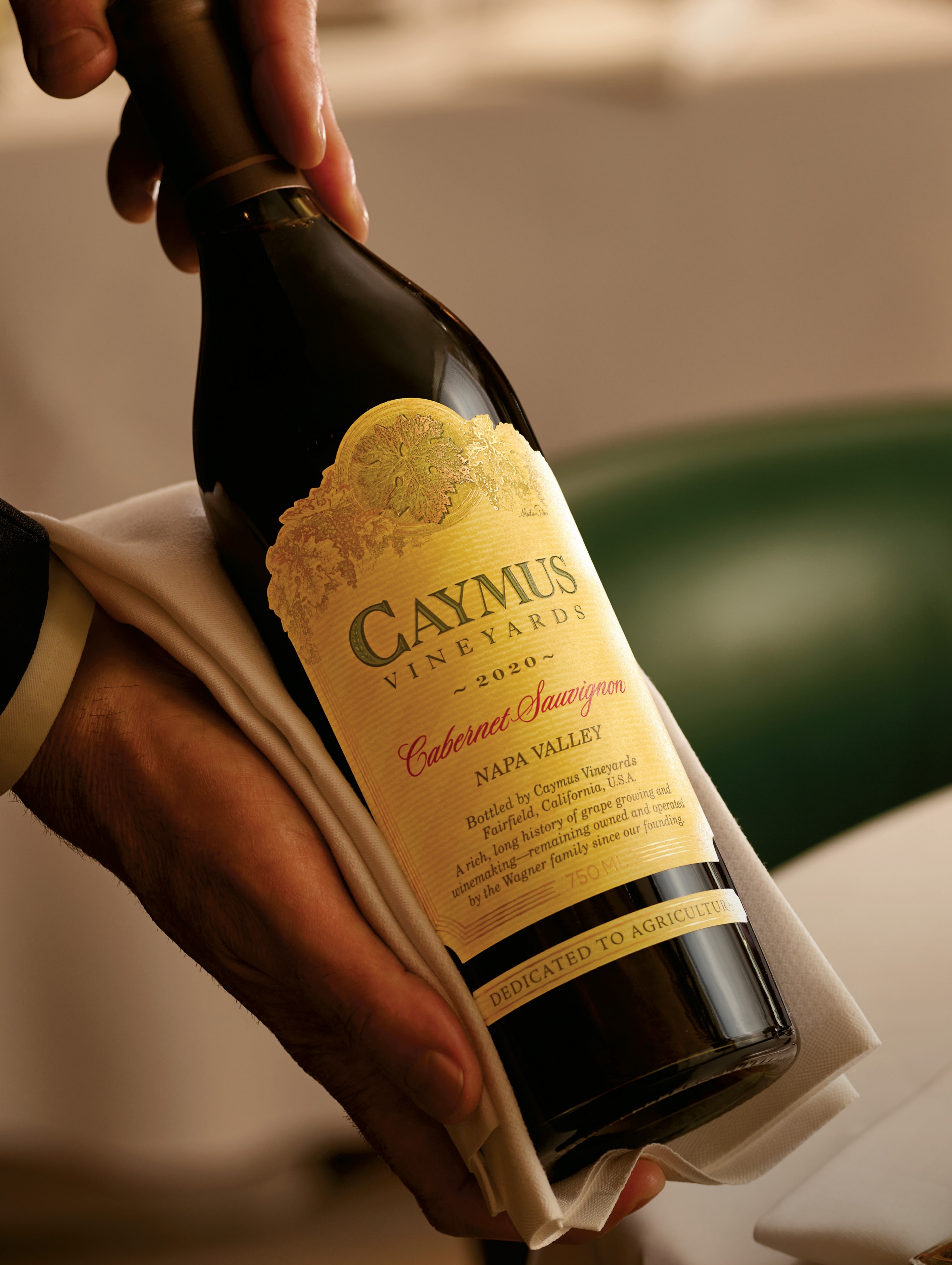
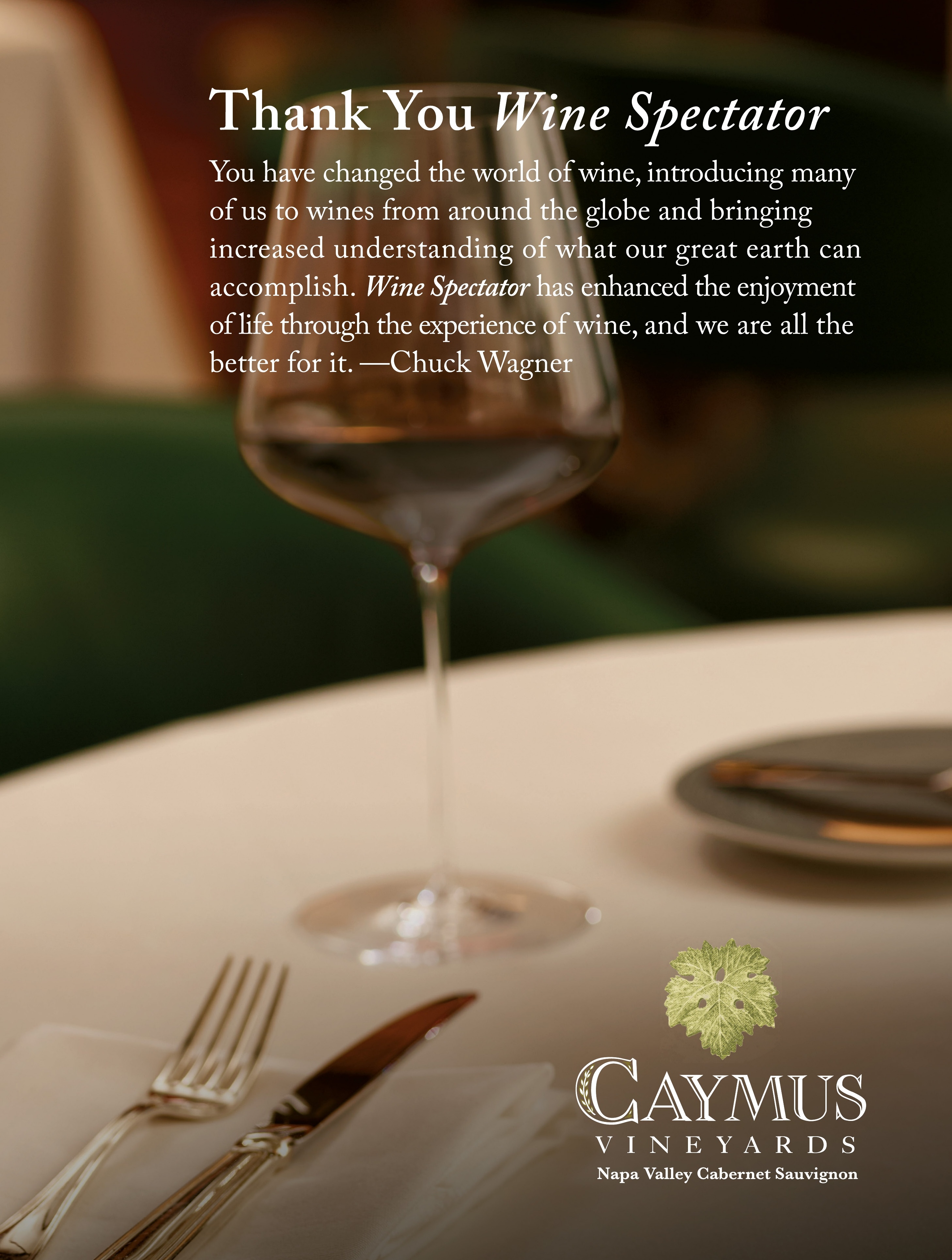
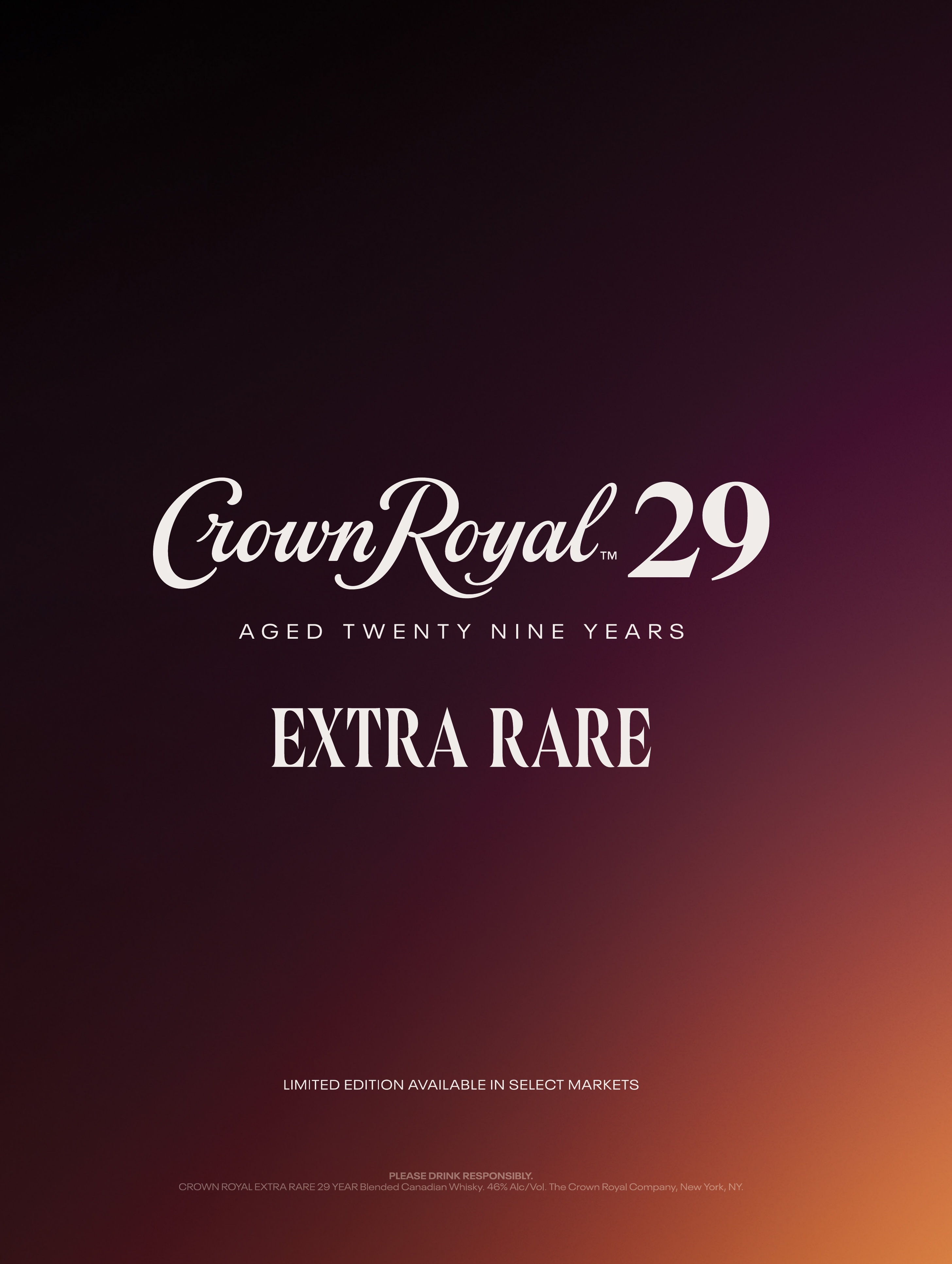
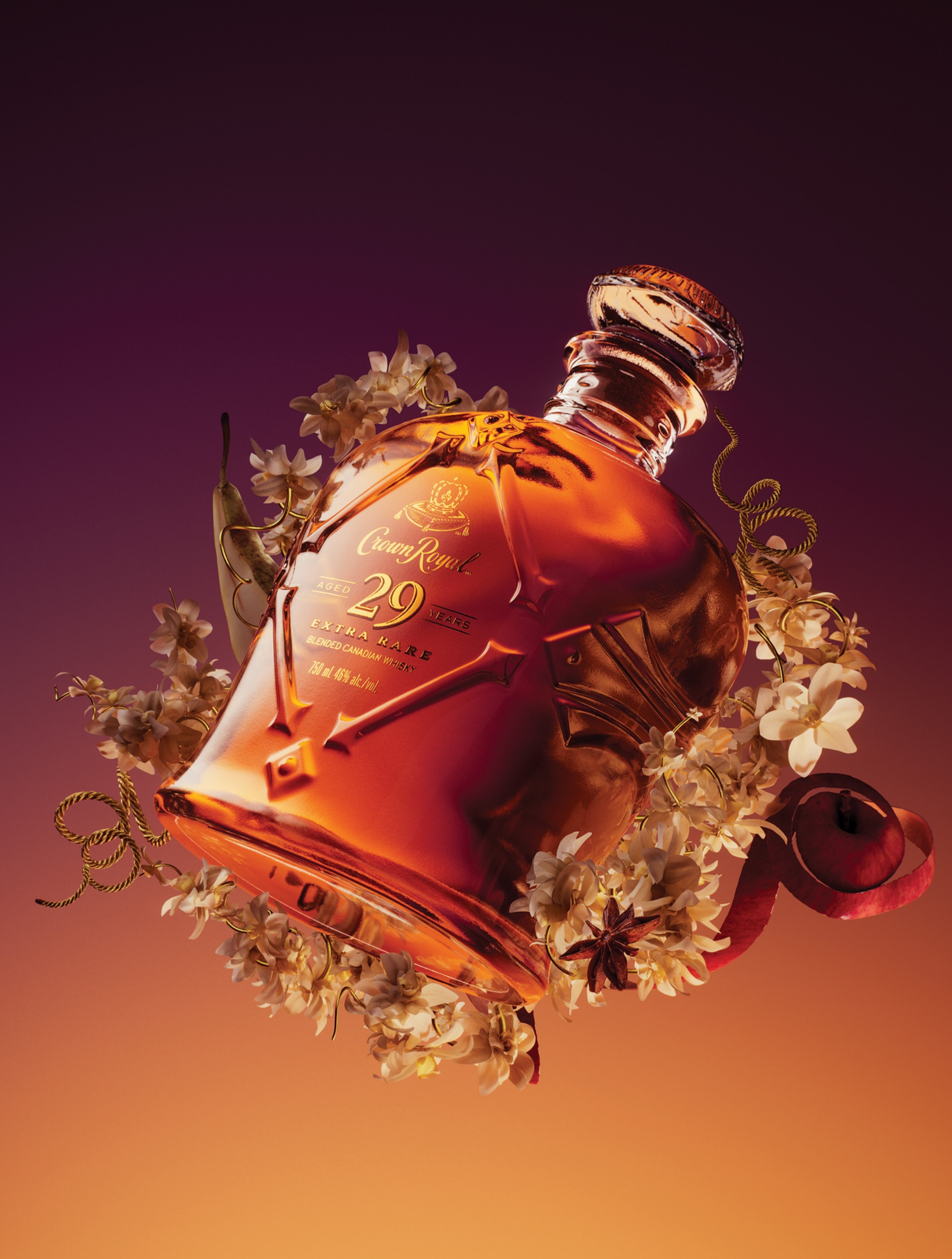
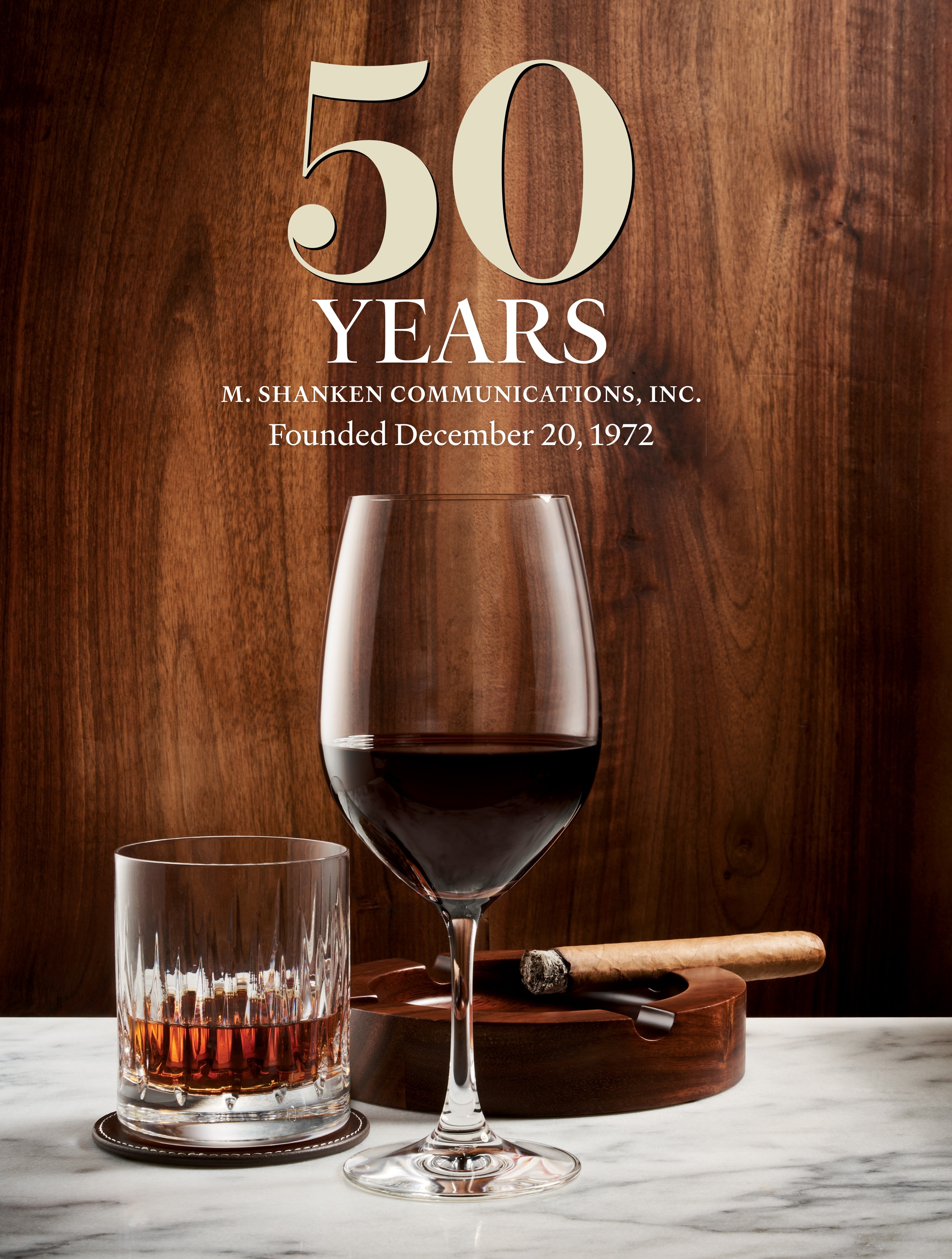
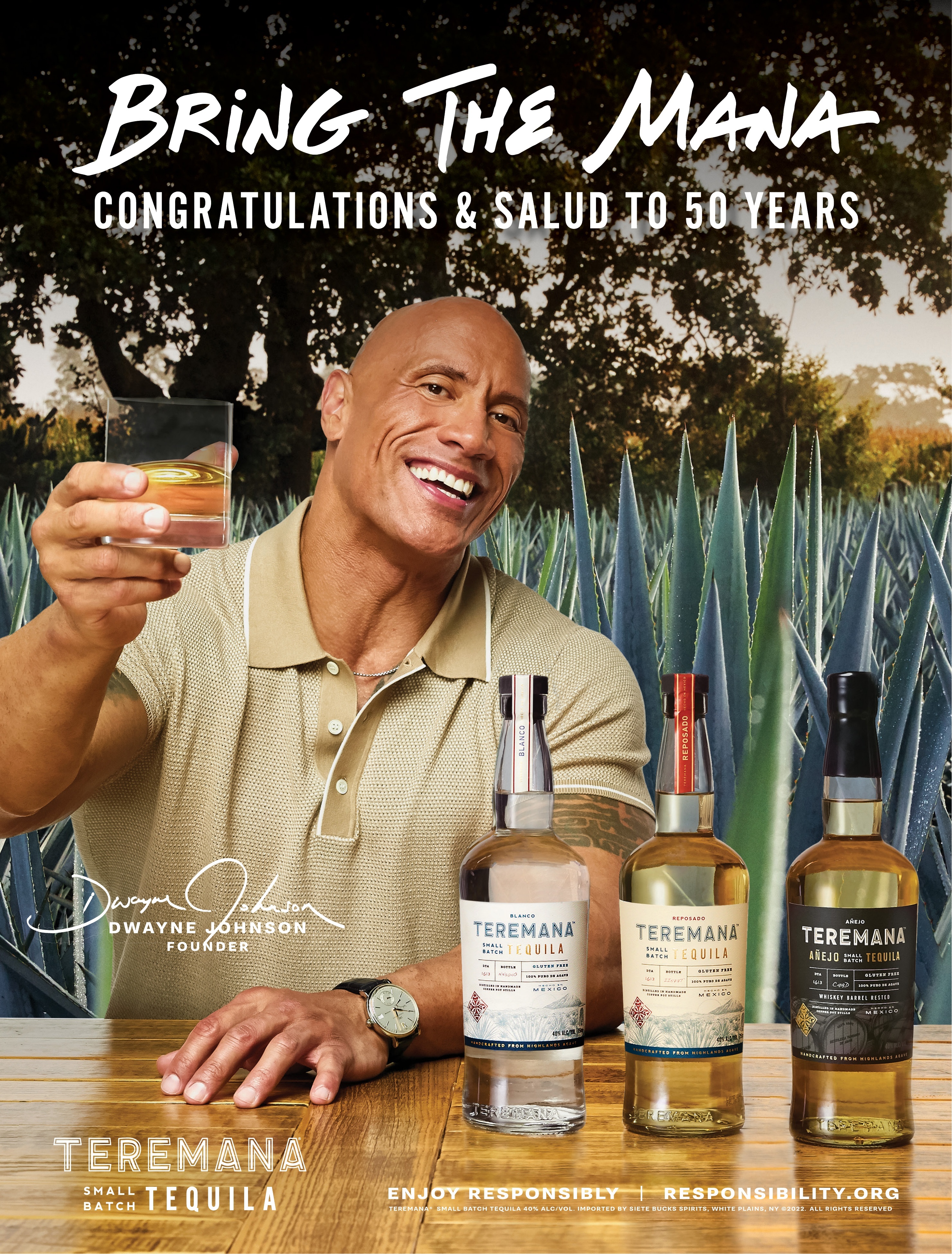
M. SHANKEN COMMUNICATIONS • 50 YEARS
From the Publisher
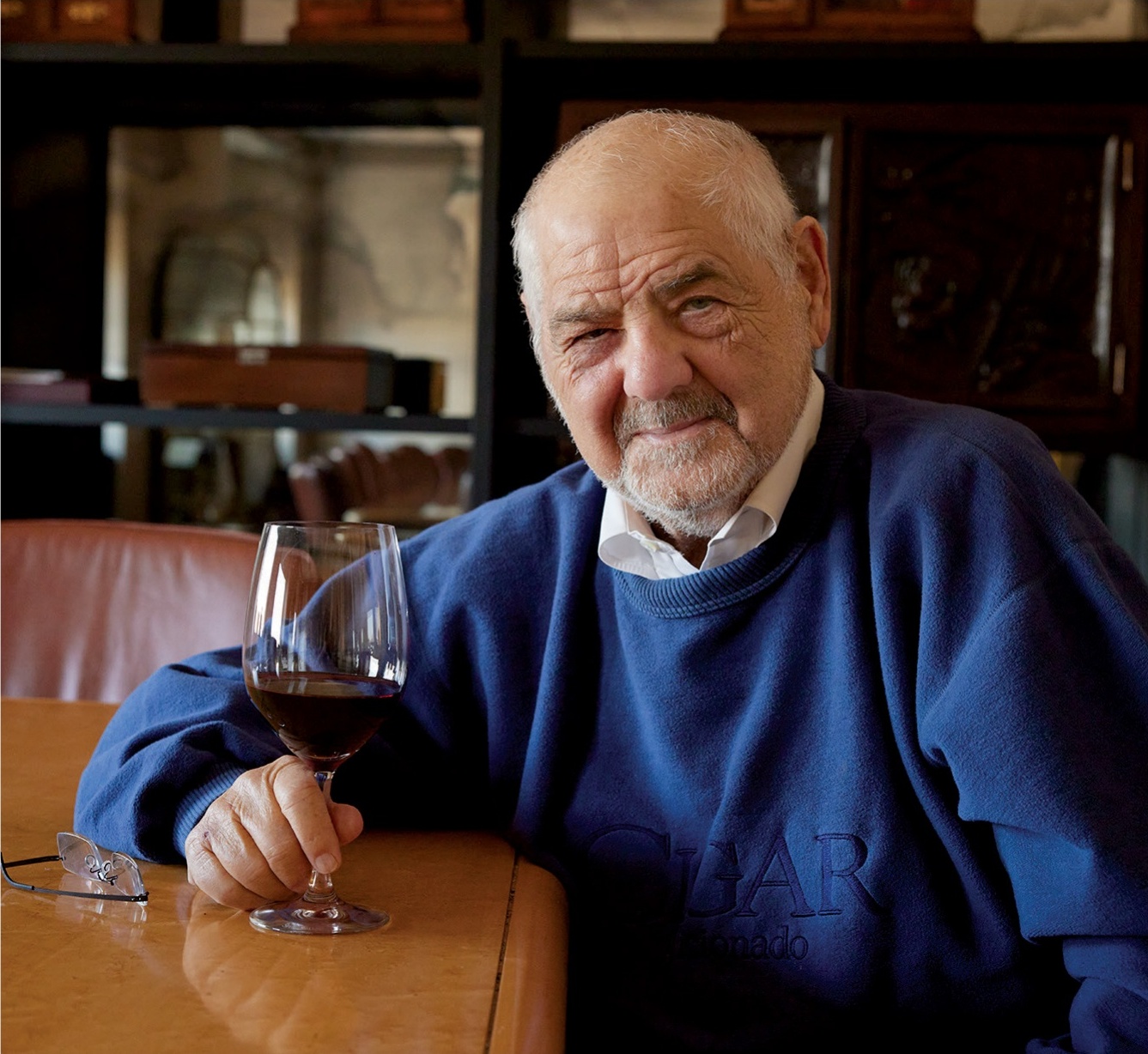
I was not even remotely aware that I was approaching a 50-year milestone until it was brought to my attention last spring. M. Shanken Communications was formed on Dec. 20, 1972. Suddenly, it felt significant. That’s when the conversation began with my colleagues about how we should celebrate this very special occasion. The publication you have in your hands is the result of a comprehensive look back over the last half-century.
I have described my decision to become a journalist and publisher as akin to jumping out of a plane without a parachute. Initially, I was not embraced by the beverage alcohol industry. I had to prove my mettle as a journalist first. The struggles of the early years motivated me more to succeed. The journalistic principles I’ve always followed—based on factual reporting and editorial integrity—brought acceptance and, ultimately, respect and are the bedrock of all of M. Shanken Communications’ publications. The bond of trust with our readers has always been our most precious asset.
An ancient Greek philosopher once said, “The only constant in life is change.” That has certainly been true for a long-term observer of the beverage alcohol and cigar businesses. I’ve been very fortunate to have known giants in these industries, many of whom are no longer with us. Companies have come and gone. Reporting and analyzing change, and keeping consumers and the trade well-informed has been the enduring hallmark of all my publications.
Some of the highlights of this 50 anniversary issue are the 50-year history of the beverage alcohol and cigar industries. It is a must-read primer for anyone new to the industry and everyone who wants to reflect on the past 50 years. I hope you enjoy the in-depth interview with me, as I look back on my 50-year career. Over the years, I’ve enjoyed interviewing countless luminaries and I’ve selected a sampling of some of the best subjects to share here. In addition, brand advertising often captures the zeitgeist of an era and says a lot about our culture, so we’ve looked at some of the most notable ad campaigns of the past five decades. Ultimately, in looking back, we also feel compelled to look forward to the future. See our story on the future with projections through 2030.
Finally, I must acknowledge how lucky I am to have such a talented and dedicated team of loyal employees, many of whom have been with me for 30 and 40 years—and more. They and my wife, Hazel, and my family (including my daughter Jessica, senior vice president, business development) have supported me through the years and played a key role in our company’s success.
MARVIN R. SHANKEN
EDITOR & PUBLISHER
RICK WENNER
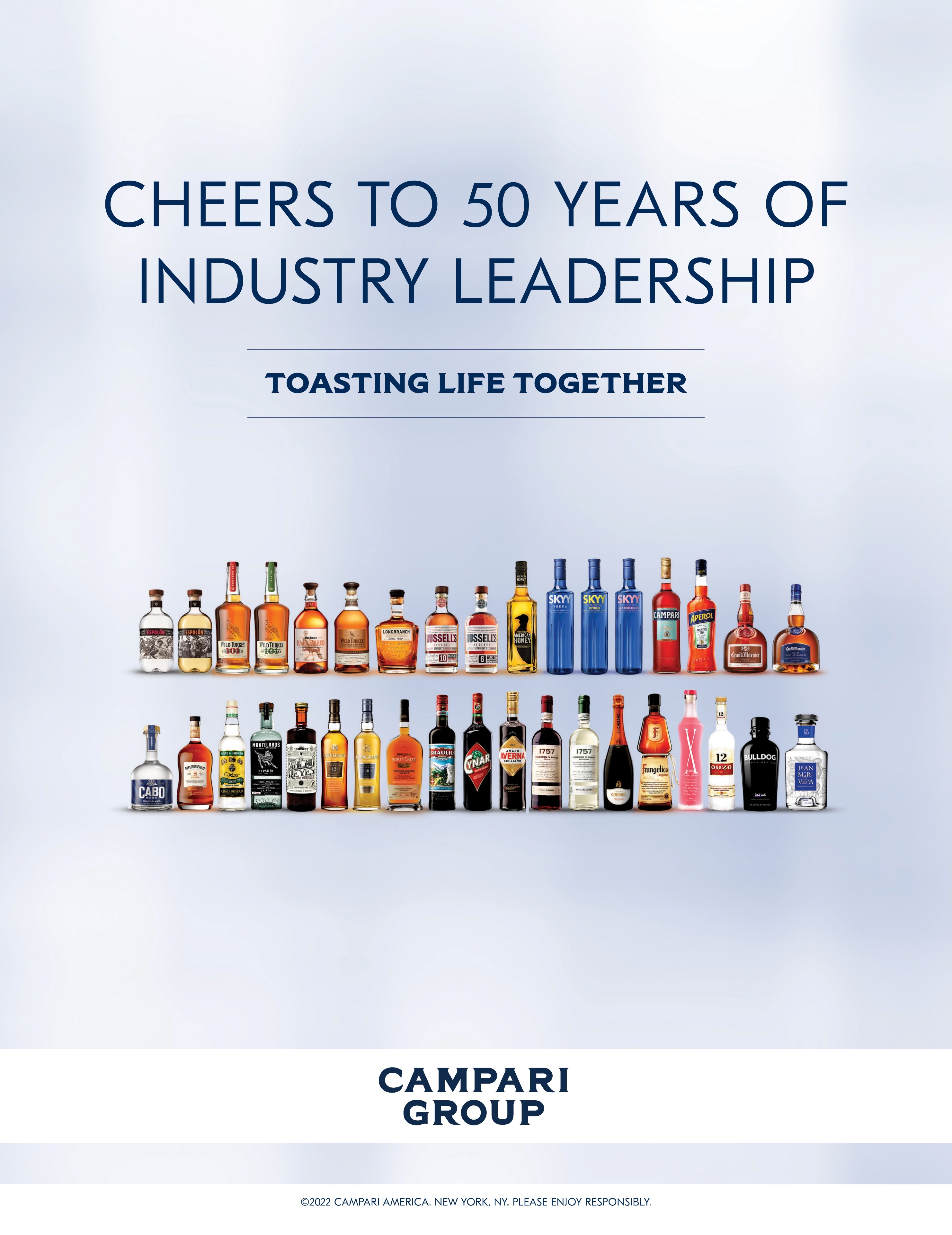
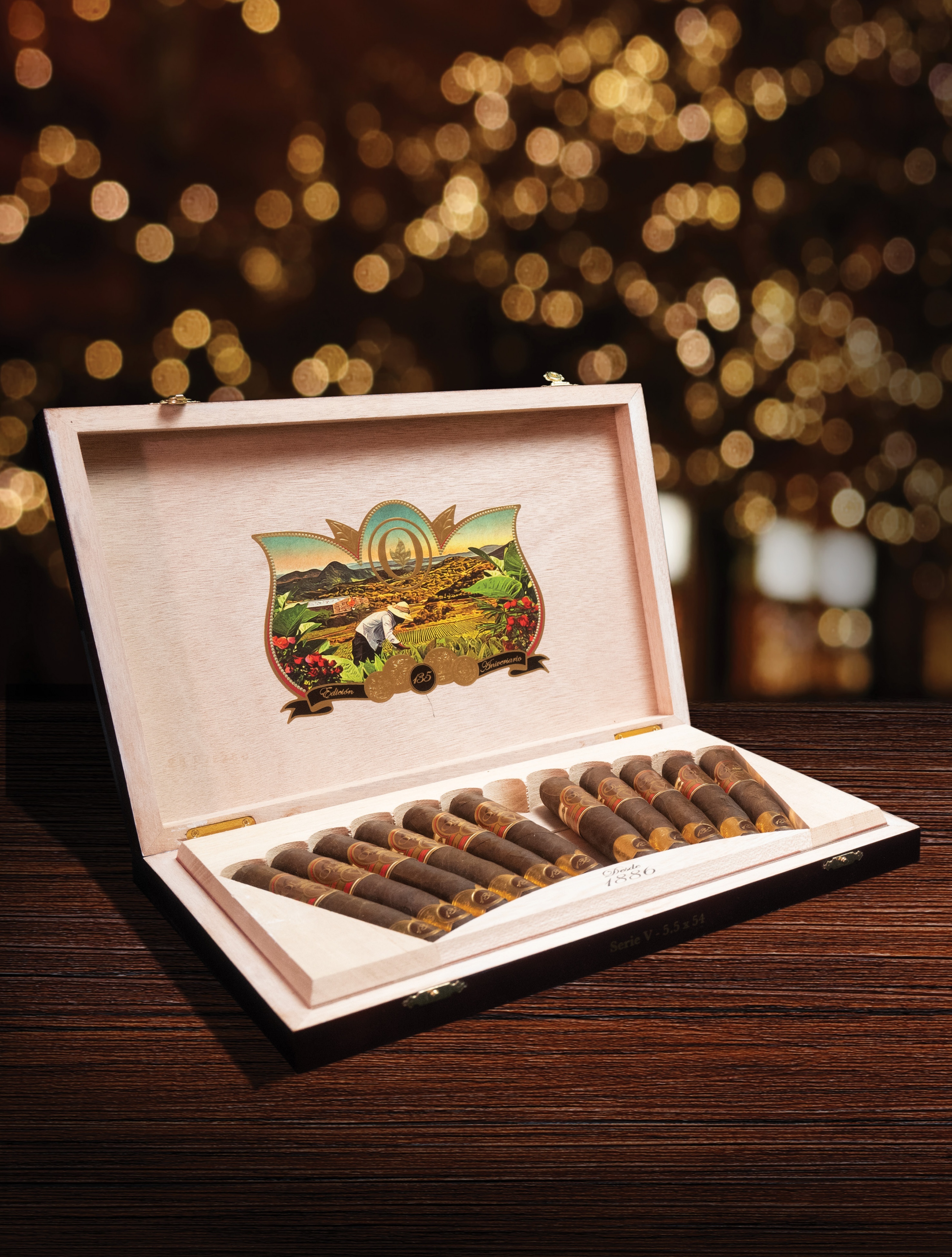
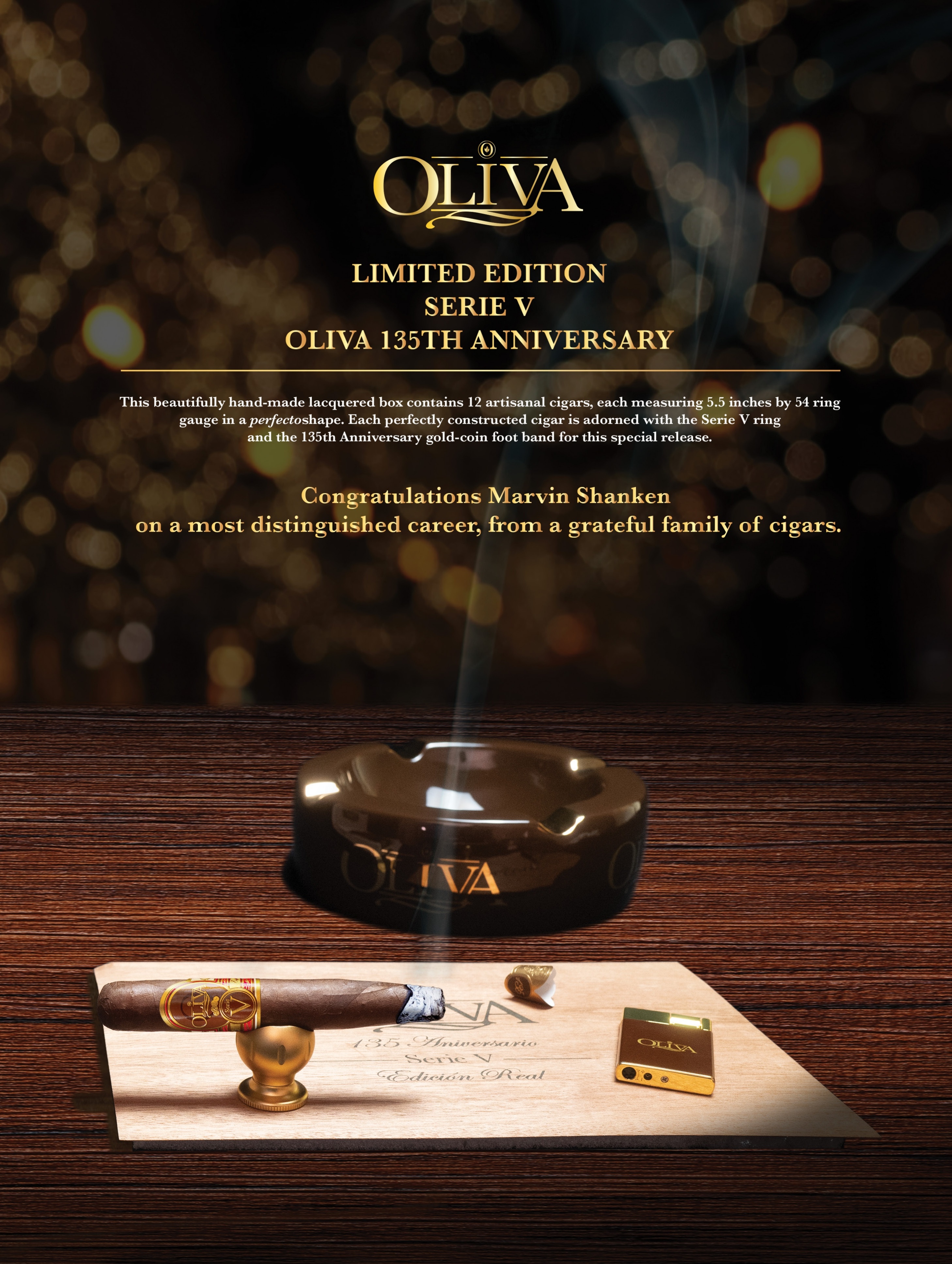
AN INTERVIEW WITH MARVIN R. SHANKEN
Looking Back on a Legacy
Marvin R. Shanken reflects on his 50 years in publishing
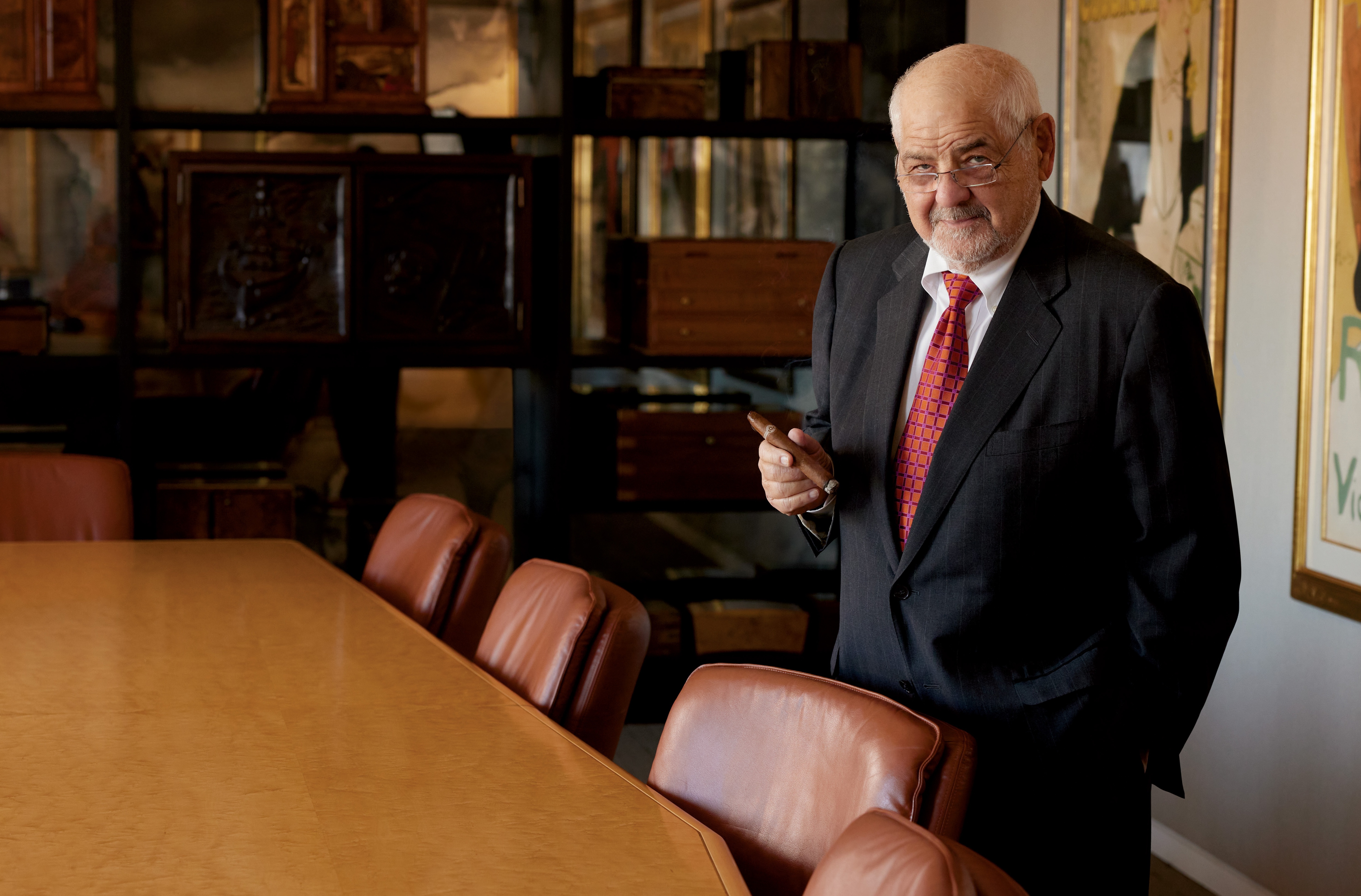
C oming up on a 50-year career in publishing, Marvin R. Shanken, chairman of M. Shanken Communications, recently sat for an extensive interview about his career with vice chairman Michael Moaba.
Q: What are your thoughts on celebrating 50 years in publishing?
SHANKEN: It’s a milestone I never thought about until earlier this year when I was told that on December 20, 2022, I will be celebrating 50 years. Then I thought to myself, “Wow. That’s special.” My first reaction was to think of all the great people at M. Shanken who have taken this ride with me. Many have been with me 30, 40 years. We’re a family. I’m a very lucky guy.
Q: Let’s go back to the beginning. How did you begin your career?
SHANKEN: After getting a business degree at the University of Miami in 1965 and then my MBA in real estate and finance from American University in Washington, D.C., in 1968, I got a job on Wall Street at a small investment banking firm. In 1970, I was sent to California to help finance a relatively small vineyard purchase for a client. I knew nothing about the wine industry, started doing research and discovered there wasn’t much reliable, published information available. The vineyard deal was completed and I was very proud of it. The investor I did the deal with invited me out to dinner to celebrate at a restaurant called La Crémaillère in Banksville, N.Y., a very elegant French restaurant. We had a beautiful dinner and our host said to me, “You can order any wine you want from the wine list.” Frankly, I’d never had any great wine before, but there was one I’d heard of so I ordered it: 1961 Pétrus. It was $100. One hundred dollars for a bottle of wine in 1970 was an extraordinary amount. So we drank it and bells went off. I experienced a taste that I had never had before. I loved the taste of the wine and wanted to learn everything I could about wine.
Q: How did you transition from real estate to publishing?
SHANKEN: In 1972, I was back in California working on another real estate deal and was in a head-on collision on coastal Highway 1 near San Luis Obispo. While recuperating in a local hospital, I had an epiphany and decided that I loved wine, not real estate, and decided I wanted to be a wine writer. I didn’t know what I was doing. I had never excelled in English class or even taken a journalism course, but I’d always had an appreciation for the fourth estate. It was a stupid idea at the time. I had no reason or basis for going in that direction because I had no experience in that field. That was 50 years ago!
Q: It couldn’t have looked like a career where you were going to make a lot of money.
SHANKEN: Money was never a goal other than I wanted [enough] to survive. It was really about learning and being involved in something I loved. I started looking around and found a newsletter for sale called Impact. It was owned by a stock brokerage company called Oppenheimer, and was published by a research guy named Jack Maxwell. He was unloading it and I heard about it. It had 200 subscribers and he wanted $10,000. I thought I was being very clever by negotiating to buy it for $5,000, borrowed from my sister Elaine. I later found out that he would have given it to me for free. At the closing, the lawyer pushed a metal index card file box with about 200 addresses in it across the table. I was now editor and publisher of Impact. That’s how my publishing career began. I ran Impact part time up to 1975, working in the investment bank and doing the newsletter. Then I decided to leave Wall Street and starve, but be happy trying to be a writer.
Q: How did that transition go?
SHANKEN: Well I wanted to write about wine but Impact was basically a trade publication for the spirits industry. Wine played a minor role in the editorial. When I bought Impact, there were only 200 subscribers who each paid $48 a year. Hence annual revenues of $10,000. Almost all of its subscribers were distillers and distributors. Very few people in the wine industry knew Impact existed. When it became my full-time occupation, I was living and working in a one-bedroom, third-floor walk-up apartment on East 53rd Street in New York City.
Q: How did that first year go?
SHANKEN: Within the first three months, I was certain I’d made the biggest mistake of my life. I had jumped out of an airplane without a parachute!
Q: What was it like trying to build the newsletter’s circulation and reputation?
SHANKEN: It took time. My first goal was to get the newsletter’s revenues to $100,000 as quickly as possible so I could take a salary. It took me a few years before I could take an annual salary of $15,000. Don’t ask me how I lived. It was hand to mouth, or month to month, as they say. No dining in restaurants. No haircuts. No new clothes.
Q: What was the liquor industry like then?
SHANKEN: I quickly learned the liquor industry was a closed kingdom, controlled by a small group of liquor barons, companies like Seagram, National Distillers, Schenley, Heublein, Hiram Walker and Brown-Forman. The one thing they all seemed to have in common was that they had either never heard of me, or heard of me and didn’t want any part of me. It wasn’t personal. They just didn’t want any outsiders coming into their industry. To suggest that I was unwelcome was an understatement. Most of these companies are gone now, as are Schieffelin, Somerset Importers, Renfield, Glenmore, Austin Nichols, Carillon Importers, Buckingham Importers and many others. Their brands continue but the companies are all gone.
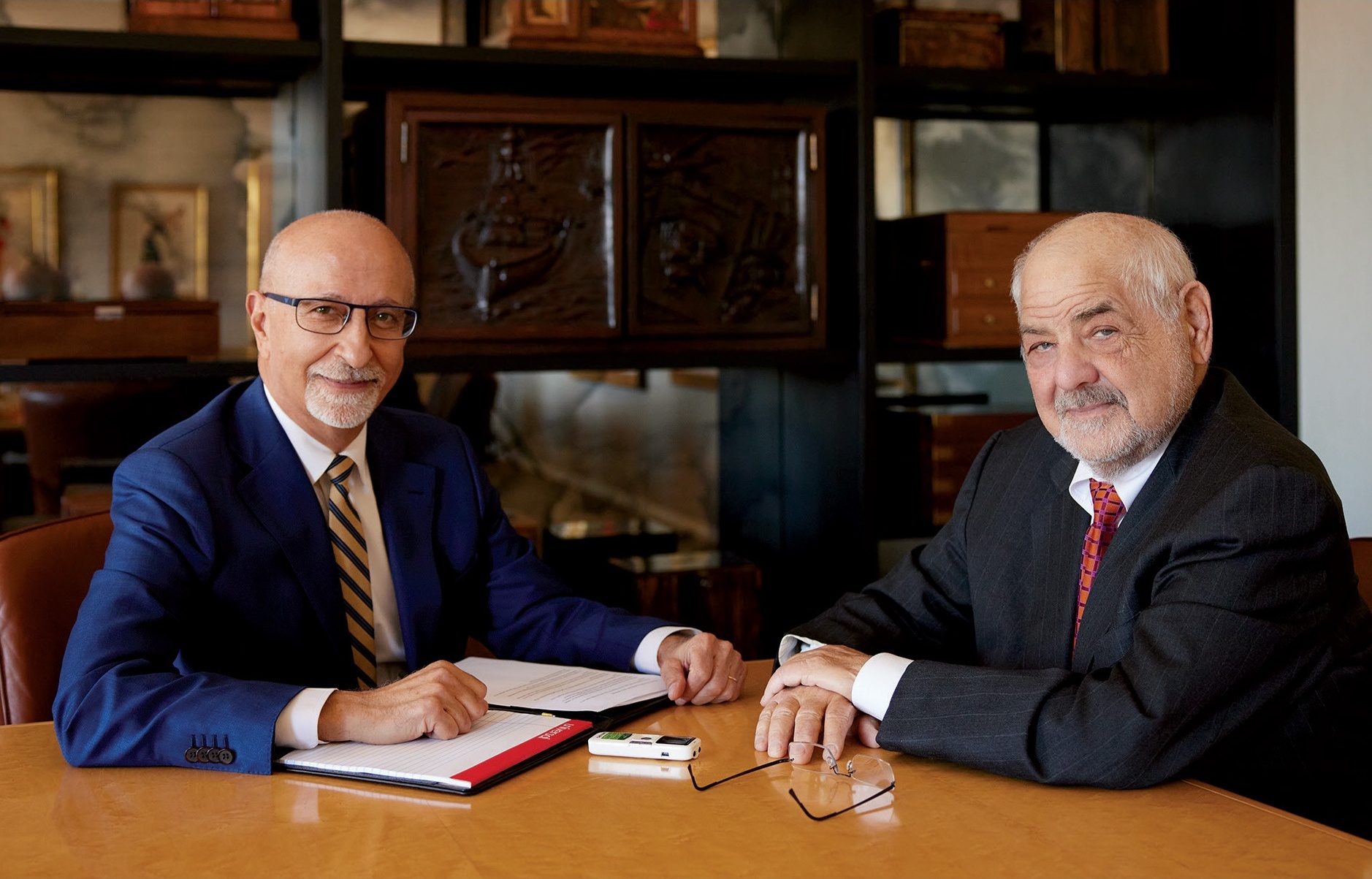
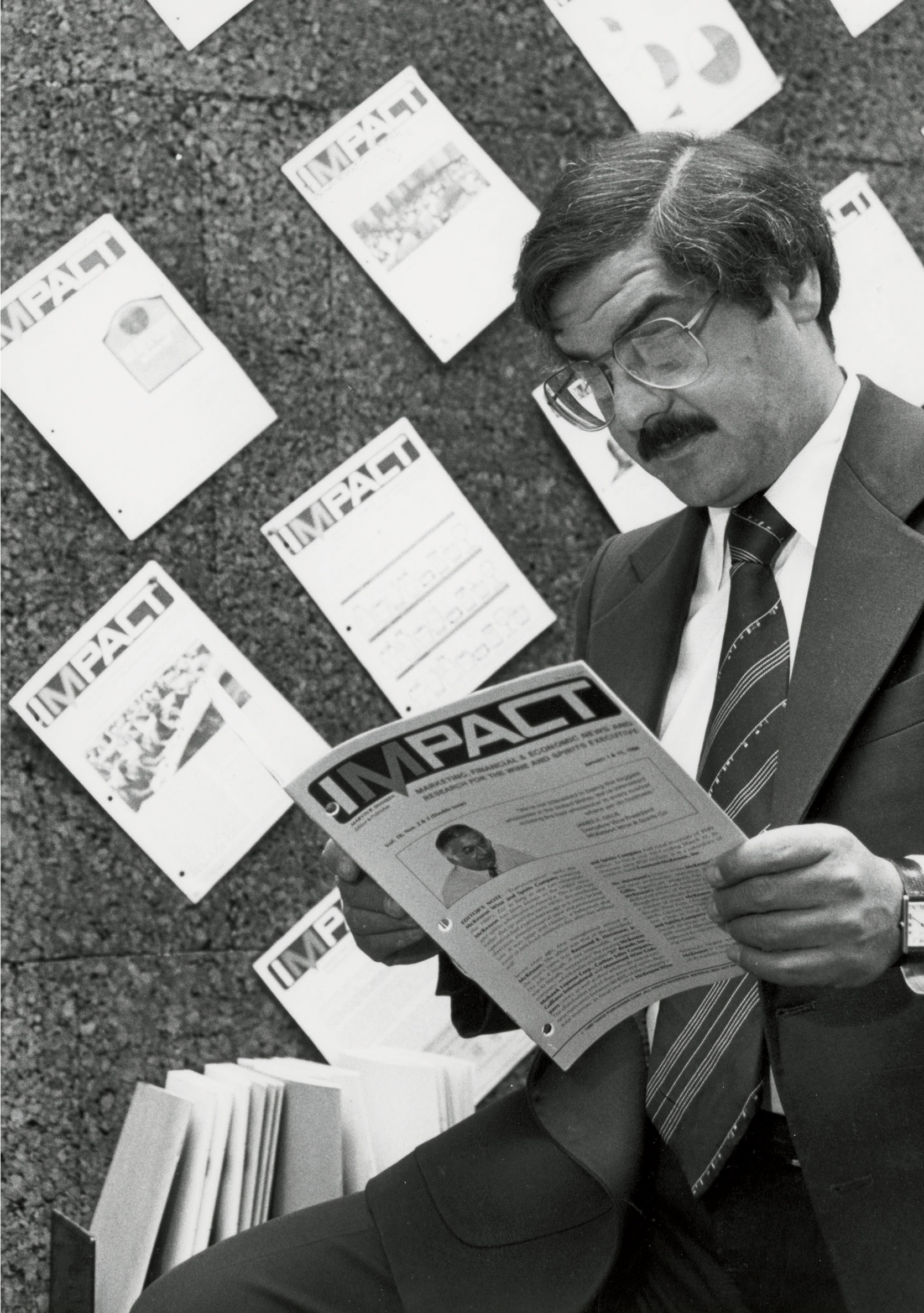
Marvin R. Shanken reviews an issue of Impact Newsletter in 1980.
Q: How did you meet key executives?
SHANKEN: I’ll never forget my first meeting with Seagram. I had an appointment so I could introduce myself to Harold Fieldsteel, their executive vice president and head of finance, who was considered a powerhouse in the Bronfman-owned enterprise. I was new to the industry and was ushered into his office by his assistant. It was a huge room with tapestries, art and accoutrements throughout. He stood up at his desk and motioned for me to sit down across from him, which I did. It was an eerie, highly intimidating moment. I remember feeling like a mouse looking up at a lion. The conversation began with him asking me, “What gives you the right to be an editor covering my industry.” That was my first introduction. No, “How nice to meet you.” No, “Welcome.” No, “How can I help you.” The rest of the meeting was basically an interview where I tried to justify my existence. He put me through my paces. I might add that years later he did accept me and we became friends.
The first industry conference I attended was an annual DISCUS (Distilled Spirits Council of the United States) meeting in 1975. I believe it was in Louisville, Ky. I will never forget going to the opening night cocktail reception and trying to mingle and introduce myself. Executives were having cocktails and as I tried to approach these groups, they would turn their backs on me and close ranks, intentionally excluding me. After several more attempts, I went back to my hotel room feeling very sad. I contemplated flying back to New York that night and giving up my dream of being a publisher. After a period of contemplation, I became determined that these people were not going to determine my fate and end my dream. To say the least, the early years were challenging.
Q: There must have been some more welcoming people?
SHANKEN: I survived because I was supported and embraced by the independent wine and spirits wholesalers of America. Plain and simple. So many distributors, and there were hundreds back then, were fed up with the excessive control exercised by the distiller barons. The other trade publications in those days just reprinted press releases supplied by distillers. There was no real, quality trade journalism. The wholesalers, on the other hand, wanted professional coverage of their industry. They encouraged and supported me by taking out subscriptions and recommending me to their friends in the industry. There were so many wholesaler giants then. They really treated me special. People like Stanton Sobel (San Francisco), Norm Lipman (Tennessee), Kokie Goldenberg (Minnesota), Al Davis (Atlanta), Arthur Edelstein (Chicago), Ray Tye (Massachusetts), Ray Herrmann (New York) and Vern Underwood (California). They are all gone now. Of course, my biggest supporter in the early days was Harvey Chaplin of Southern Wine & Spirits. In 1976, he ordered 100 subscriptions for his team and best retail customers. That one order paid my rent. Later I met Mel Dick, who ran the wine business at Southern. He also embraced me with open arms and helped me 45 years ago. One of my best friends among the wholesalers was Alan Dreeben of Block Distributing (now part of RNDC) in Texas. When I married my wife, Hazel, in 1981, he was my best man. In summary, the wholesalers of America deserve much of the credit for my survival.
Q: You were just publishing Impact at that time?
SHANKEN: I had produced and launched my first research reports in 1975, providing research and analyses of the wine and spirits industry for the first time. I was doing everything I could to stay alive. At that time, I had a friend named Terry Clancy, who had started his career in the wine business at Gallo, and he gave me a lot of good advice about how to build my business.
Q: You hosted the 46th Annual Impact Marketing Seminar this September. Your first was in 1977. How did that come about?
SHANKEN: In early 1977, I decided it was time to try to build the Impact brand by hosting an industry marketing conference. On May 12 of that year, the first Impact Marketing Seminar was held at the Park Lane Hotel in New York City. I was hoping that 50 people would register, but it sold out and we had 125 attendees who paid $225 to register. “Impact ’77,” as it was called, brought together industry executives and experts from advertising to government. With the expenses of the Park Lane and the luncheon, I barely broke even. Today, the Impact Seminar is the preeminent global conference for the wine and spirits industry.
Q: When did you start building your team?
SHANKEN: We had a very small team and we added to it one by one. We were all young and crammed into corners in our small office on East 53rd St. We did everything ourselves by hand. Issues were stuffed into envelopes and stamped; promotional mailings were collated sitting on the floor. Someone would run to the post office to drop them in the mail. It was very much a startup. I’ve been fortunate to have built a great team over the last 50 years. Many of the original team have been with me for over 30, even 40 years and more. As an example, you, Michael, started with me when you were 26 years old, and that was 45 years ago! We call it our M. Shanken family.
Q: Didn’t you host an annual party in New York City back then? How were you able to do that?
SHANKEN: Sometime in the late ’70s, we started hosting an annual cocktail party we called the Hoop de Doo. What can I say, it was the ’70s. And being unconventional had cache in those days. I hosted it at perhaps the most famous restaurant in New York, The Four Seasons, which I could hardly afford. But I was good friends with the owners, Paul Kovi and Tom Margittai, and they gave me a sweetheart deal on the Pool Room and food. The spirits and Champagne were donated by my new friends who were running the distilleries and wineries. The event was by invitation only, and well over 500 executives attended each year. It became a big success.
Q: When did your reputation reach the U.K.? Weren’t you invited to speak at an International Distillers & Vintners (IDV/Grand Metropolitan, now Diageo) corporate meeting in England?
SHANKEN: Yes. In 1978, I was invited by Anthony Tennant, CEO of IDV, to speak before a meeting of their executives in York, England. I talked about the difficulties ahead for whisky makers, the ascendancy of vodka and wine in America, among other trends. During the question and answer session at the end of my presentation, someone asked what I thought about Baileys (Original Irish Cream Liqueur). I said, “What’s Baileys?” as it hadn’t yet been launched in the U.S. They said, “Well it’s our new product and we’d like you to taste it.” Soon a silver tray arrived with a bottle of Baileys and a cordial glass. It was a beige colored, thick liquid and didn’t look appealing to me at all. I tasted it and proclaimed, “This shit will sell!” The crowd roared with laughter. That statement was later quoted far and wide and repeated in speeches by Anthony Tennant and his successor George Bull. Baileys went on to become a huge global success.
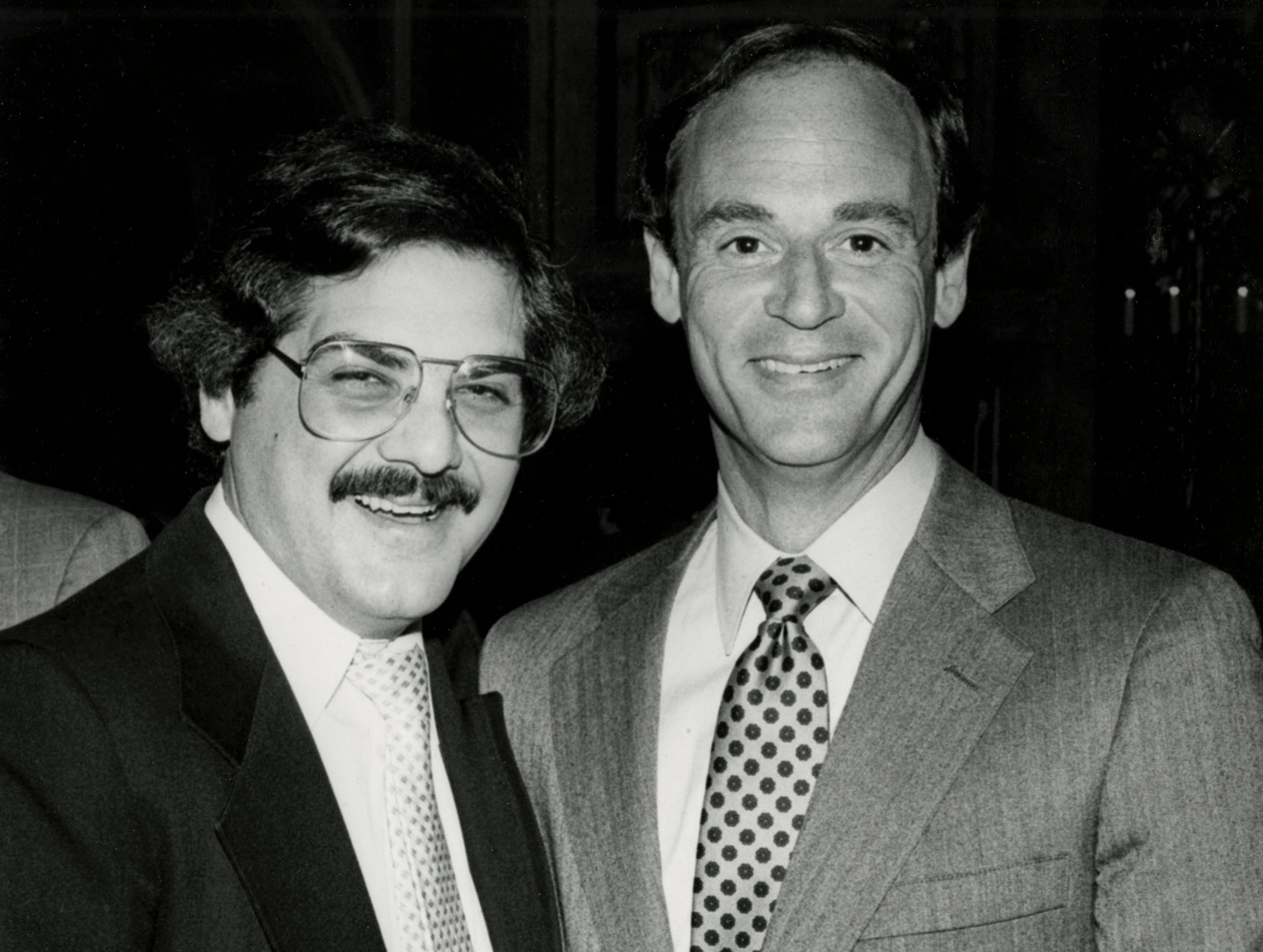
Alan Dreeben (right) of Block Distributing (later RNDC) was Shanken’s best man in 1981 when he married his wife, Hazel. (Photo from the mid 1970s.)
Q: When did you become involved in Wine Spectator?
SHANKEN: I became aware of Wine Spectator shortly after it was launched in April of 1976. It was a free, tabloid newspaper that was mainly distributed around its hometown of San Diego, California. When I first laid eyes on it, I loved it. It was simple, unpretentious and entertaining for consumers. I called up Bob Morrisey, who created it, to congratulate him. He and I became telephone pals. In 1978, he called me and said that he was having great difficulty keeping the publication afloat, and he recommended that I buy it. At the time, I was pretty busy trying to stay alive with my own small publishing company in New York and could not even entertain his suggestion. But I did agree to fly to California and spend a few days with him to try and help figure out how he could turn his newspaper business around. Airfare in those days was $300 round trip. He picked me up at the airport and I stayed at his house. There, I worked with him on his survival plan. When I came back east, I got some friends in the wine business to buy ads in his newspaper; they were $200 for a full page.
Q: So how did you end up buying Wine Spectator?
SHANKEN: A year later, in 1979, Bob called me and said, “I don’t want Wine Spectator to die. You have to take it over.” I said “no” again. Bob insisted and said that he was flying to New York to see me. He walked up two flights of stairs to my cluttered office/living room in the one-bedroom apartment/office, I think I had four employees at the time, and told me that he was folding the newspaper and that I had to take it over. He wouldn’t take “no” for an answer. “I’m giving it to you,” he said. I said “no.” I don’t know what got into me because I was struggling myself at the time. Finally I said, “Yes. I will take it over, but I don’t want it for free.” I had read somewhere that media companies sell for one times [their] revenues. I asked him what his annual revenues were and he said $40,000, so I said, “OK. I’ll pay you $40,000 but I don’t have it, so I’ll pay it over five years.” He said it wasn’t necessary, but I insisted and paid him $8,000 a year for five years. I took it over, threw my heart and soul into it, struggled and starved for a fairly long time. Then one day, I woke up and I had a real business. Today, Wine Spectator is the largest circulation wine magazine in the world, with over 2.7 million readers.
Q: Did you have plans to change Wine Spectator when you took it over?
SHANKEN: I was never satisfied with Wine Spectator as a newspaper, and I wanted to take it from an insiders’ California wine publication to a broader consumer publication. But you have to crawl before you walk, walk before you run, and printing a newspaper costs a fraction of what printing a magazine in full color does. Every year my goal was to grow the revenue and hire more people, to the point where one day I could educate people all over America about wine. I’ve said from the beginning: We’re not in the publishing business, we’re in the education business.
Q: Over the years there have been many other wine magazines and newsletters. How were you able to become the dominant consumer wine publication?
SHANKEN: At the heart of Wine Spectator’s rise is our integrity. We have never pandered to advertisers. Our goal has always been to be relevant, informative and entertaining to our readers. Our blind wine tastings were the foundation of our editorial and became recognized as the most accurate and reliable source for honest opinions. The enduring dream was building a team of talented, dedicated, full-time editors, writers and tasters. It was difficult in the early years to a certain extent, as we depended on freelancers along with our full-time staff. Today, we have the most experienced tasters and talented journalists in the wine world.
Q: How did you grow Wine Spectator’s circulation in the early years?
SHANKEN: There was no Internet in those days and no magic carpet. Ad campaigns I created helped grow our circulation. In the early ’80s, the ad read: “People serious about business read The Wall Street Journal. People serious about wine read the Wine Spectator.” Later in the ’80s, I created a co-op ad campaign that said: “For less than the cost of a good bottle of wine, get one year of Wine Spectator.” I got the wineries whose bottles were shown in my ad to chip in for the ads in consumer newspapers. This campaign went a long way in building the Wine Spectator brand across America. And, of course, wine began to enjoy growth as a mealtime beverage and pre-dinner cocktail.
Now remember, wine was not a household product in those days and the audience of wine consumers was a fraction of what it is today. In fact, what I like to say is that when I began with Wine Spectator, when you went to a restaurant that had 25 tables, one table would have a bottle of wine on it. Today, in that restaurant, every table would have a bottle. The market for wine exploded over the last 40 years.
Q: When was the first Wine Experience? How did that come about?
SHANKEN: The first Wine Experience took place in San Francisco in 1981. It was organized by the San Francisco Hotel and Restaurant Association and led by Richard Swig, owner of the Fairmont Hotel. It was a historic tasting. Only California wines participated. The following year, the event’s organizers, including Robert Mondavi, wine writer Robert Lawrence Balzer, Richard Swig and the mayor of San Francisco approached me to take it over and help raise it to the next level. That same weekend in 1981, by happenstance, I had planned a wine weekend in New York, called Wine Spectator’s Grand Award Wine Weekend, which took place at Windows on the World restaurant. It was the first year of our Restaurant Awards program, and we gathered restaurateurs, winemakers and wine lovers for a weekend wine celebration. Our event included wines from all over the world. Thirteen restaurants received the Grand Award that year. As of the most recent New York Wine Experience this October in New York City, 97 restaurants around the world currently hold a Grand Award, our most prestigious award for outstanding wine lists and service. Another 3,200 restaurants earned our other Wine Spectator Restaurant Awards: the Award of Excellence and the Best of Award of Excellence.
While our first event was a huge success, the California Wine Experience was a failure. We sold out with more than 400 attendees for our Wine Spectator Grand Award Wine Weekend in New York City, but the California Wine Experience had very few [attendees] and most came for free. They assumed people would come and they didn’t execute much of a marketing plan. Hence, their event lost a lot of money. When I finally agreed to take over their event, I paid them $1 for the trademark. I bought it through a newly formed charity entity called the Wine Spectator Scholarship Foundation.
Q: What was your motivation for starting the Grand Award program?
SHANKEN: In the ’70s, very few restaurants had serious wine lists. I was often frustrated when I went to restaurants that had good food but didn’t pay attention to the wine. Whatever a distributor sold them, they’d put on the list. Or the distributor would print the list for them! So to a restaurateur, ordering wine was no different than ordering plates, utensils or napkins. They didn’t get it. So I created what I called the Grand Award program, which provided incentive to restaurateurs to pay attention to wine, and if they did so successfully with improved wine lists, to honor them with awards from Wine Spectator each year.
For the first few years, even people who worked at Wine Spectator thought I was wasting my time. But today the Restaurant Awards program is incredibly successful—many great restaurants all over the world are part of it. Our wine list awards have become an important sign of quality for both casual and fine-dining establishments in America and abroad. Ask any Grand Award restaurant winner what the award means to them. Many recipients cry from happiness at the ceremony when they receive their award. It often takes them many years to build a list worthy of a Grand Award. It is the highest honor a restaurant can earn for wine, similar to a Michelin 3 stars for food.
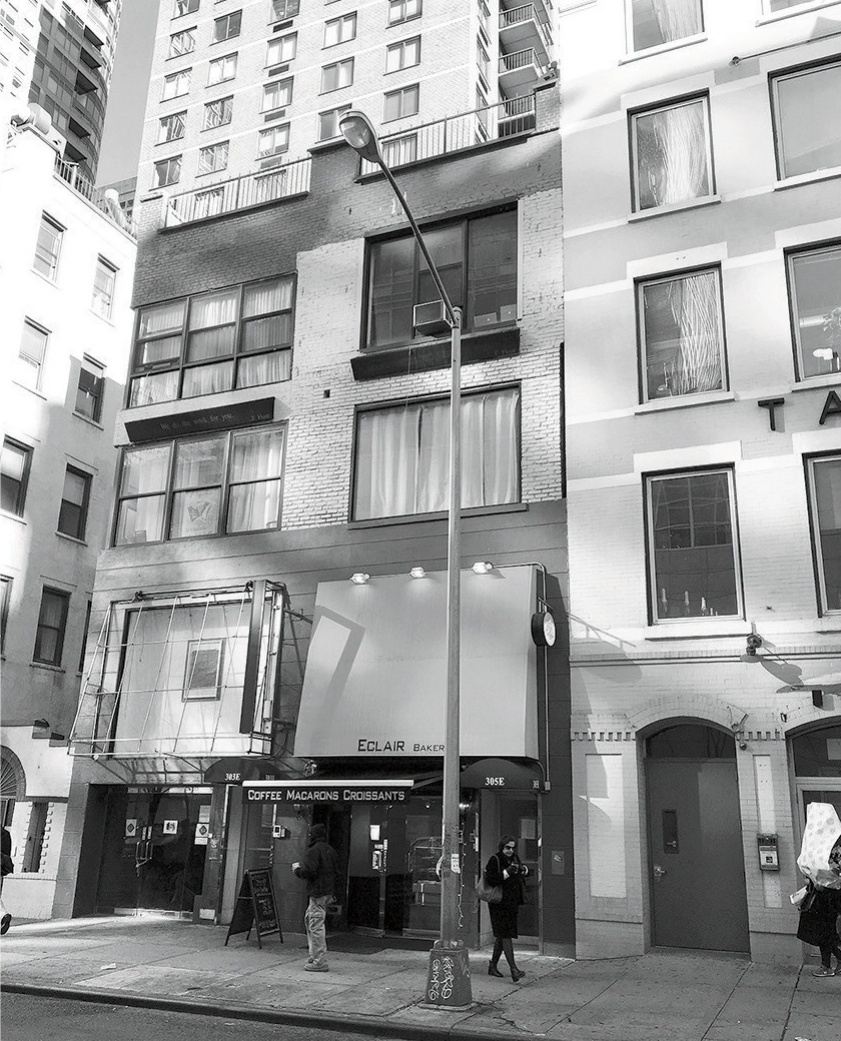

Shanken’s first office was a third-floor, one-bedroom apartment on East 53rd Street in Manhattan. Today, the company operates on the 33rd floor of Worldwide Plaza.
Q: Aside from the obvious educational aspect of the Wine Experience, what else has it achieved?
SHANKEN: The Wine Experience brings the wine world together. At one of the early ones, Robert Drouhin, the great Burgundy négoci-ant, walked up to Christian Moueix, from Bordeaux, and introduced himself. They told me it was the first time they had met! Two French winemakers had come to New York to meet! They told me that people in Bordeaux did not know the people in Burgundy, who did not know the people in Champagne, and so forth. The same was true for California vintners in those days. But the Wine Experience unites people from all the fine wine regions of the world. If you asked many of them, they would say they’ve met many of their peers at a Wine Experience and have since become friends who share ideas and experiences to make better wine.
Q: After over 40 years of Wine Experiences, does any one stand out in your mind?
SHANKEN: My most vivid memory of all the Wine Experiences is from 2001. After the World Trade Center was attacked on September 11, America was in shock. New York City was paralyzed. Events across America were canceled. No one wanted to travel. The Wine Experience was scheduled for a month and a half later, in late October. People called to ask, “Are you canceling?” Then Corinne Mentzelopoulos, owner of Château Margaux, called. She said, “Marvin, if you cancel it, they win.” So we announced we would host it and it sold out. Everybody came. It was unbelievable!
Q: What was your motivation for launching Market Watch magazine in 1981?
SHANKEN: Impact newsletter was read by supplier and wholesaler executives. There was a real need for a publication that would provide market intelligence for on- and off-premise operators—retailers and bar and restaurant owners. Over the years, Market Watch established itself as the leading magazine on beverage alcohol for the trade. We kept abreast of burgeoning marketplace trends and never talked down to our readers, who were becoming more sophisticated every year. Market Watch became the publication for what we liked to call “think pieces:” feature stories that addressed critical topics facing the wine and spirits industry at large, like consolidation at the wholesaler and supplier level, the anti-alcohol movement, the growing importance of supermarket sales and female consumers. I remember Penn Kavanagh, then-president of now-defunct Schieffelin & Somerset and one of the most erudite executives in the business at that time, saying, “Market Watch is the New Yorker magazine of trade publications.” That was a great compliment!
Q: Market Watch magazine hosts the Leaders Award banquet every year. When and why was that created?
SHANKEN: The first Leaders Award dinner was held in 1984. The idea was to honor excellence in beverage alcohol retailing. No one was recognizing progressive beverage alcohol retailers at that time. And we celebrated some legendary retailers that first year, including Harold Binstein in Chicago, Ed Jonna in Detroit, Jim James in Indianapolis, Ed Sands in D.C. and Spec Jackson in Houston. Since the beginning, we have honored over 250 of the leading chain and independent retailers in North America, and the annual Leaders banquet has become one, if not the only, event that brings together all three tiers of the industry in one room for a fun evening.
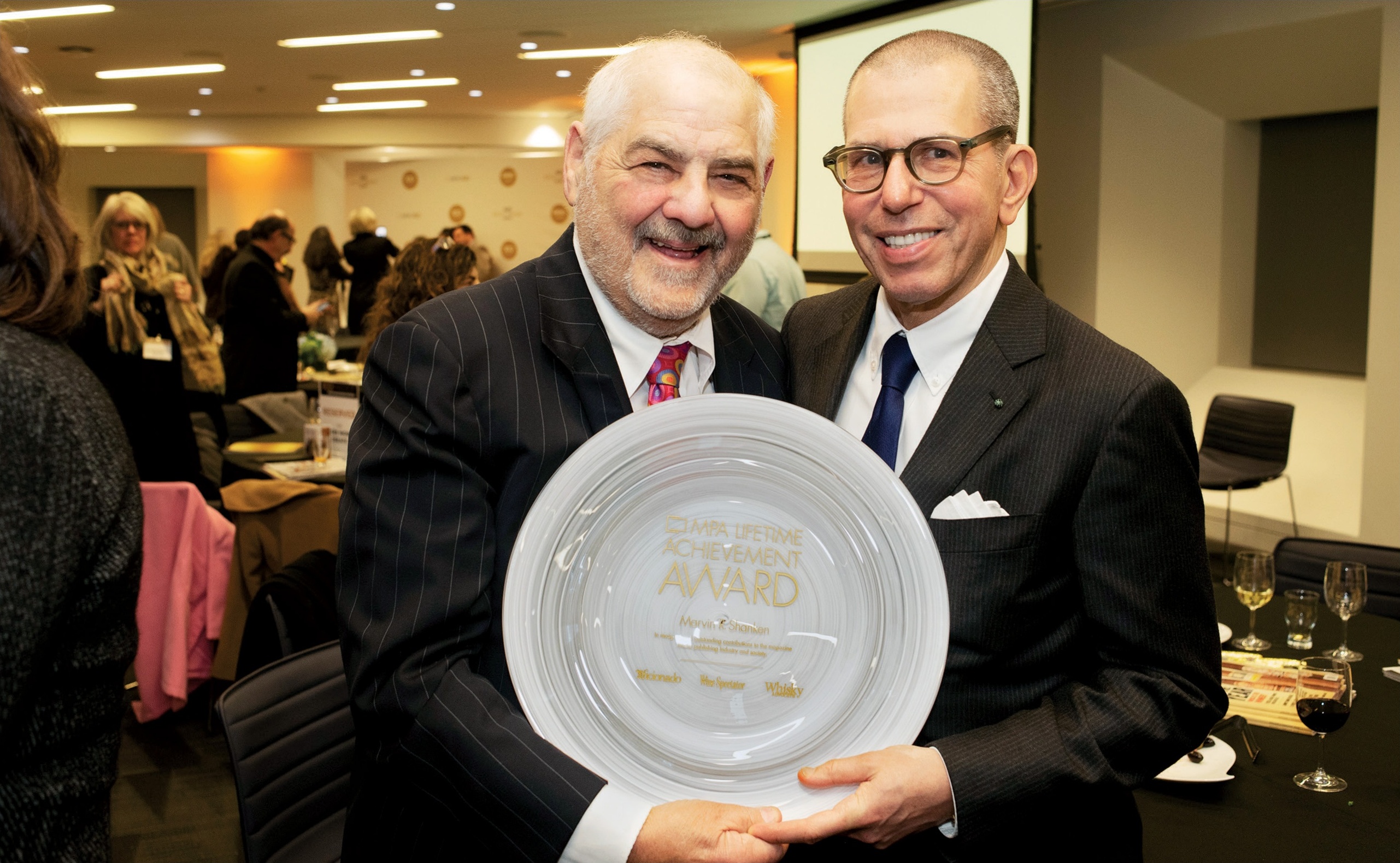
Shanken received the Association of Magazine Media’s Lifetime Achievement Award in 2019. Jonathan Newhouse (right), chairman of the board at Condé Nast, presented the award.
Q: What was the genesis of Cigar Aficionado?
SHANKEN: By 1991, Wine Spectator was already a success. Circulation and advertising were way up and events were expanding. I called my senior editors together for an editorial meeting at Pebble Beach. I told them that the editorial content of Wine Spectator was too narrow. We needed to expand our editorial coverage beyond wine, with more lifestyle content on travel, collecting, cooking, fine spirits and dining, all wine-related topics. One editor shouted out: “Cigars!” I said, “No way.” I had started writing a column in Wine Spectator in 1984 entitled “I Love a Good Smoke.” But all the Wine Spectator senior editors got together and asked me not to continue the column, as they thought cigars were inappropriate for an upscale wine magazine. I relented, but my passionate interest in cigars continued. Now they insisted that we do a cover of Cuban cigars as part of the new “lifestyle” editorial direction. When I asked who was going to write it, they all pointed to me, as I was the only serious cigar smoker in the group.
Q: Is that when you first traveled to Cuba?
SHANKEN: Yes. I went there in late ’91 to research and then write the cover story for Wine Spectator called “The Allure of Cuban Cigars.” I was allowed to travel to Cuba as a journalist, which was a special exemption, as Americans were not allowed to travel there. I immediately fell in love with the country and the people. I already loved their cigars. It was the most exciting week of my life to go to the mecca, the birthplace, of cigars. On the flight home, I looked out the window of the broken-down Cubana airplane I was on and said to myself, “I don’t want to die without having a cigar magazine.” I didn’t care what it cost or how much I could lose. I came back to New York and called a meeting with my executive team. I explained to them my dream of publishing a cigar magazine and then asked everyone around the conference room table to vote. Everyone voted “no.” There had never been a cigar magazine. The cigar industry was dying. Cigar sales had been declining over the past 30 years. They told me it was a reckless idea. I told them they were wrong. I said I don’t have a name, or a strategy, but I’m committed to it.
I decided to run ads with subscription order forms in Wine Spectator that said: “Wanted: Cigar Lovers!” Basically it said, “If you have a passion for cigars and want to learn more about them on a regular basis, this new publication is for you. If you are an American who smuggles Cuban cigars into the U.S., or have a wife who won’t let you smoke at home, this publication is especially for you.” We received nearly 100,000 responses from cigar lovers from all over the world. Cigar Aficionado launched in the fall of 1992 and has made a profit in each and every issue from day one—unheard of in the magazine world. It celebrated its 30th anniversary recently.
Q: In the beginning, was the cigar industry skeptical or enthusiastic?
SHANKEN: Before the launch, I went around to visit a lot of the cigar makers. Virtually all of them looked at me like I was a crazy person. In the handmade cigar business, sales had been flat at around 100 million handmade cigars for the previous two decades. I think all of the cigar makers I talked to were rooting for me, but they had little expectation that I would be successful. It reminds me of a short story.
In early 1992, I traveled to the Dominican Republic to meet with Carlos Fuente Sr., the proprietor of one of the leading cigar brands in America. At dinner, he asked, “What can I do to support your effort, as this would be very good for the cigar industry?” I told him that I would appreciate it if he would consider advertising. Carlos Sr. responded, “We have never, ever advertised, but you have my word that I will advertise in every issue.” I was extremely grateful for his generous support. Years later, his son Carlito, who now runs the company, told me that he went back to his dad and said, “Papa, we can’t afford to advertise in every issue of Marvin’s magazine. We don’t have the money.” Carlito said his father responded, “Don’t worry, son, it’ll only mean one ad, as there’s no way a cigar magazine will make it.” Fuente has advertised in every issue over the past 30 years. End of story.
Following the launch of Cigar Aficionado, many cigar companies’ businesses began to rise dramatically. The cigar market in America really exploded and sales grew rapidly. A lot of people credited the cigar boom to the launch of my magazine. Cigar smoking became an acceptable part of the American luxury lifestyle, due in large part to the roaring success of Cigar Aficionado magazine. Cigar bars and upscale cigar shops with smoking lounges began to spring up everywhere. Prices of luxury cigars skyrocketed as demand increased and quality improved.
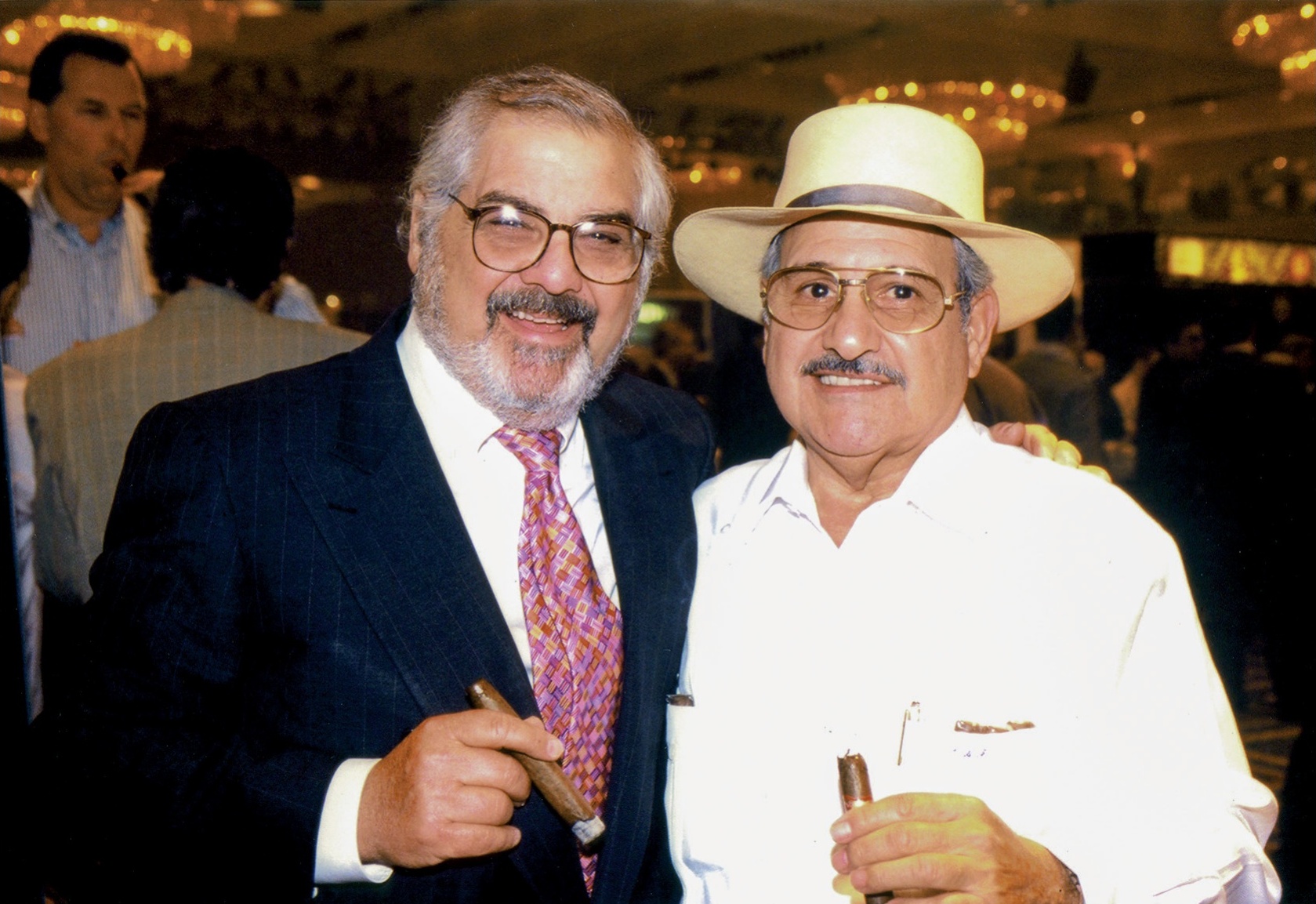
Shanken and Carlos Fuente Sr. (right) smoke cigars together in the early ’90s.
Q: When did you begin hosting the Big Smoke events?
SHANKEN: After the launch, I had this vision of bringing people together in one great room where we could sample cigars, drink whisky and just have fun. The first Big Smoke was held in New York City in 1993. I was hoping for 300 or 400 people the first year. I was shocked when we ended up with two sessions and more than 3,000 attendees in one night. A new lifestyle event was created. We then started taking the Big Smoke to many different cities across America. They each drew between 1,000 and 3,000 attendees, depending on the city’s size. The annual Big Smoke in Las Vegas attracts between 3,000 to 4,000 cigar lovers each year, including during COVID. It’s crazy!
Q: How did it come about that you named the event the Big Smoke?
SHANKEN: I’ve been enjoying smoking cigars since my college days at the University of Miami. Often, when I smoke cigars in public, people would complain about the smoke and the smell. This was the ultimate fuck you to the world at large. What better name for cigar lovers than the Big Smoke?
Q: What is your greatest memory of Cigar Aficionado over the past 30 years?
SHANKEN: Probably interviewing Fidel Castro in Havana, Cuba, in 1994.
Q: How did that come about?
SHANKEN: I’d been trying to interview him for two years. I had actually gone down to Cuba several times with the hope and expectation that I would get the interview, because various government officials there told me it was going to happen. I would wait and wait and wait and it never happened. They would always tell me to stay in my hotel room, that they would call me and I would receive instructions. It never happened. Then, on my fourth trip down, on a rainy night around midnight the phone rang and I was asked to meet a woman from the Foreign Affairs office in the lobby of my hotel. We went into a chauffeur-driven, dark-blue 1950s Mercedes through the damp streets of Havana to the Palace of the Revolution, where I had my interview with Fidel Castro. It was a once-in-a-lifetime moment I will never forget.
Q: I understand that this was very rare and that he only gave a few interviews in his lifetime. It was quite a coup!
SHANKEN: It was. After we published the interview, it was written about and talked about by many newspapers, magazines and TV stations around the world. It was big news. A few years later, I was on an Eastern Airlines shuttle plane from Washington, D.C., to New York. I was one of the last to get on and found a seat at the back of the plane—a middle seat, cramped in. Next to me, at the window seat, was Mike Wallace of 60 Minutes. Years earlier, he had been a luncheon speaker at my Impact Seminar [in 1982]. I reintroduced myself and we started talking. Then, out of the blue, he looked at me angrily and said, “You stole my interview!” I said, “What are you talking about? You’re 60 Minutes!” He said, “I’ve been working for the past 10 years on getting an interview with Fidel Castro for 60 Minutes and you got it. I was so mad. You have no idea.” He did say to me that he had three copies of the issue of Cigar Aficionado with Castro on the cover in the bottom drawer of his desk. Mike Wallace was a very competitive man. That cramped plane ride unexpectedly gave me quite a lot of satisfaction.
Q: Why did you decide to acquire Whisky Advocate?
SHANKEN: First of all, I love whisky. I saw enormous potential in what was then called Malt Advocate. The people who started it had created a homespun, small circulation hobby magazine. I thought it could one day be much more of a consumer magazine for whisky lovers. They also started an event called Whisky-Fest. They had attended a number of Big Smokes and decided to try it for whisky lovers. They took my model and made it a success. When I approached them to buy [the magazine], I think they thought they’d taken it as far as they could. I made them an offer, which they accepted. A month later, they called me back and said they had changed their minds. They had seller’s remorse. I waited a few months, called them back and raised my offer. The rest is history. I waited for two years while I privately negotiated to buy the name “Whisky Advocate,” which was owned by someone else, using a private attorney so they wouldn’t know that I was the buyer. Once I owned it and had the new name, Whisky Advocate, I totally redesigned the magazine and put my editorial and art teams to work creating the beautiful magazine it has become. When I bought the magazine, it had a few thousand paid subscribers. Today, it has a 150,000 paid circulation, with well over a million readers. This year, we hosted five WhiskyFests across America, including New York, Chicago, San Francisco, Florida at Hard Rock and the newest one at Resorts World Las Vegas. Its growth and acceptance have exceeded my wildest expectations. Today, the whisky market is on fire.
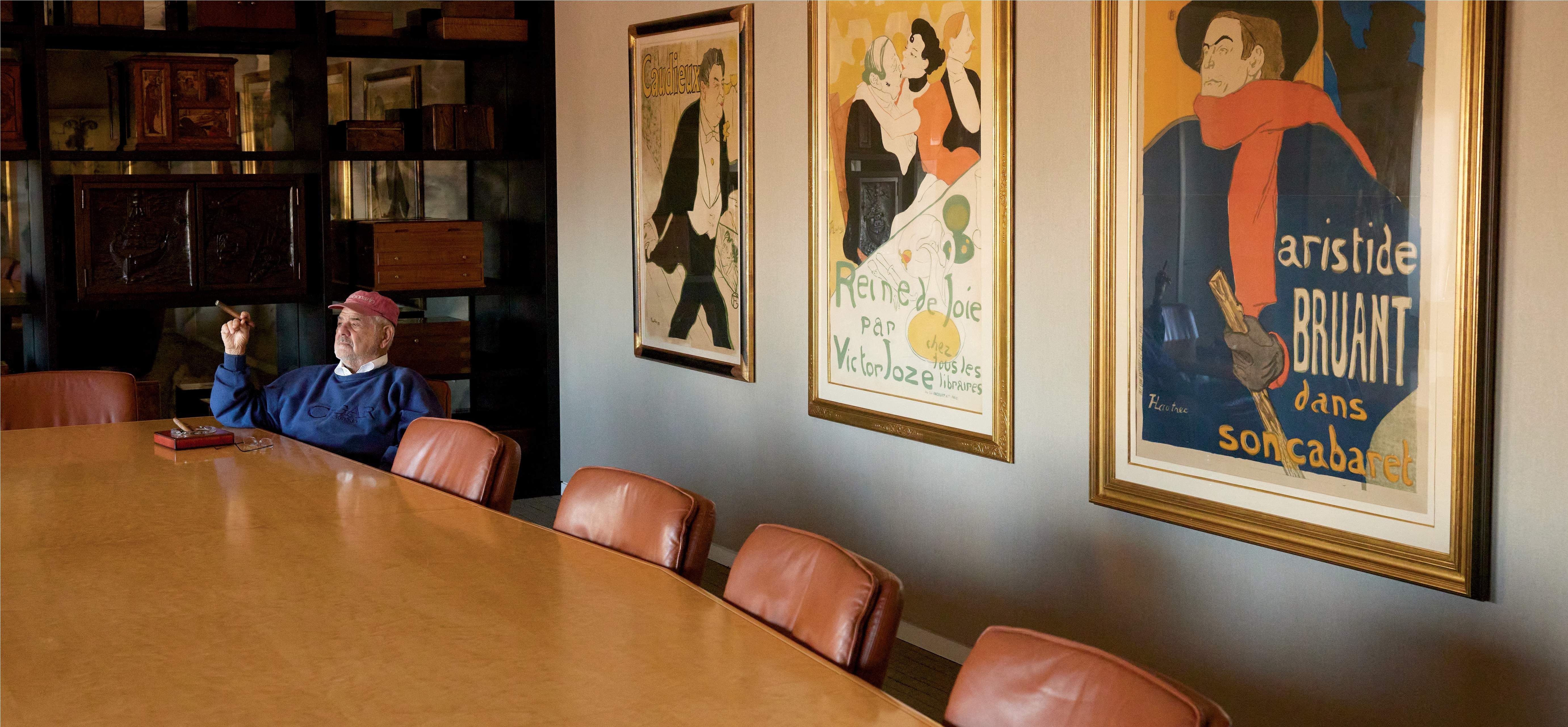
Q: What are your thoughts about the digital revolution in publishing?
SHANKEN: I’m a believer in print and I’m a believer in digital. We launched a digital daily publication in 2011 called Shanken News Daily that covers wine and spirits as well as the craft and cannabis businesses. It’s become very well-read in the industry, with over 50,000 subscribers. Everybody reads it. We also have websites for each of our brands that do very well. If you go to WineSpectator.com, CigarAficionado.com or WhiskyAdvocate.com, they’re all different. With millions of visitors each month, they are a source of knowledge for those passionate about wine, whisky and cigars. We’re also active on social media, with significant brand footprints.
Q: What are you most proud of over the past 50 years?
SHANKEN: That’s easy. From the very early days, we wanted to give back. Charity and charitable events are an integral part of the M. Shanken culture.
Q: Can you be more specific?
SHANKEN: Well, the Wine Spectator Scholarship Foundation was established over 40 years ago and has returned many millions to the wine industry. It has funded over 900 oenology and viticulture scholarships at the University of California, Davis; a state-of-the-art teaching restaurant at the Chaplin Hospitality School at Florida International University; and the Wine Spectator Learning Center, a major building in the center of the Sonoma State University campus. Most recently, we announced a $10 million donation to the Napa Valley College for a new wine teaching center, which includes both classrooms and laboratory facilities.
Q: What about Cigar Aficionado’s Night to Remember?
SHANKEN: For 23 years, we hosted a dinner, first at the ‘21’ Club and then at the Four Seasons restaurant in New York City, where we raised over $20 million for prostate cancer research.
While there are a number of other charities we are committed to, none gives me greater pride than the Els for Autism Foundation, of which I am chairman, where we operate a school for 300 autistic children on a 26-acre campus in Jupiter, Fla. With the Hall of Fame golfer Ernie Els, each year we host a very successful Els for Autism Pro-Am Golf Tournament, which is supported by my friends from leading wine and spirits companies across America. I am so grateful for their continued support over these past 14 years. The campus and the school are a model of what private enterprise is capable of doing to help kids in need, and many leaders in the autism world have come there for tours so they might be able to follow the example of what we’ve learned.
Q: What do you see in the future for M. Shanken Communications?
SHANKEN: I started M. Shanken Communications 50 years ago not knowing what the future may hold. It started as a family business. A great deal of credit goes to my talented team, many of whom have dedicated their lives to the company. We shared an exciting ride. I have my fingers crossed that the next 50 years will be even more exciting for a new generation.
RICK WENNER
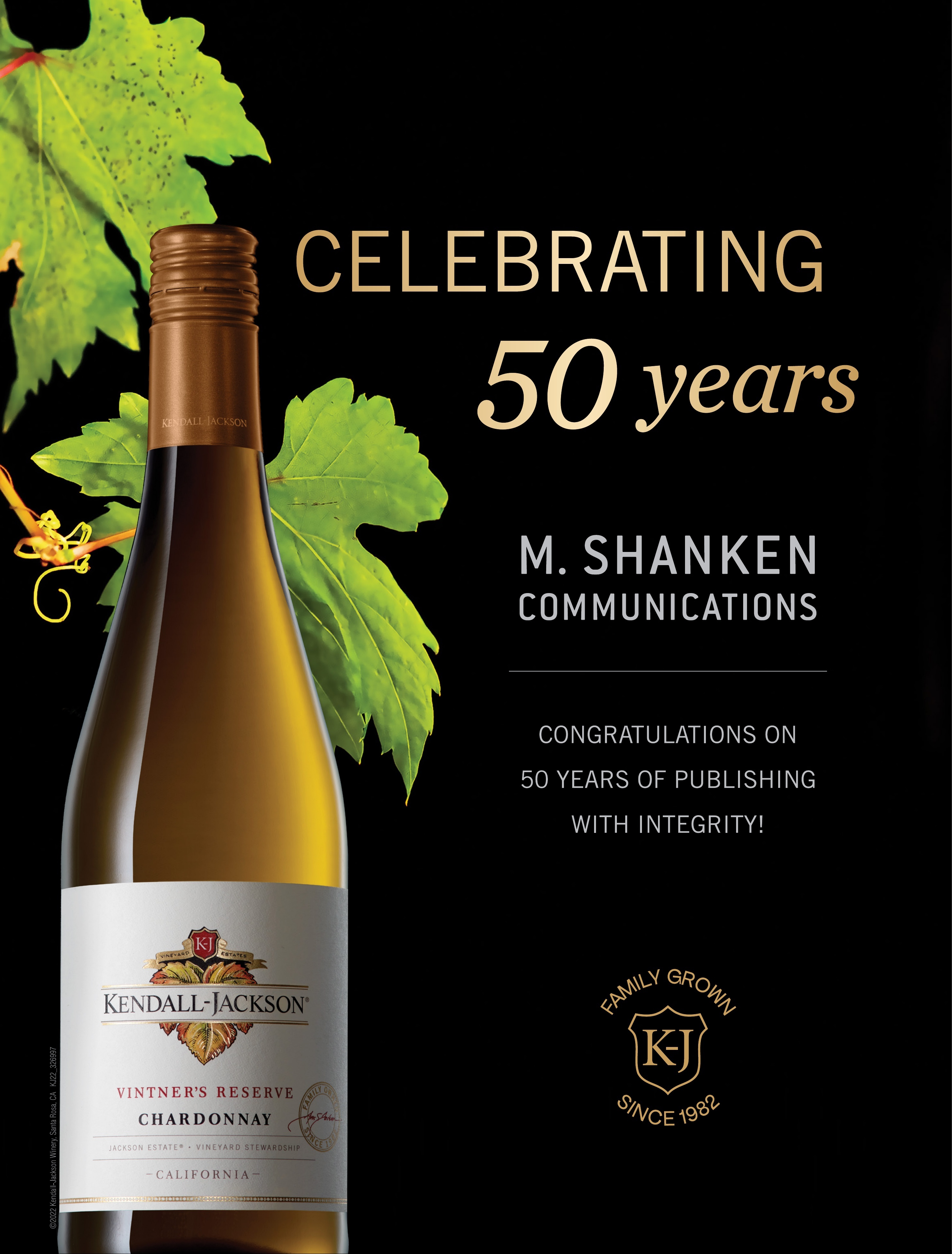
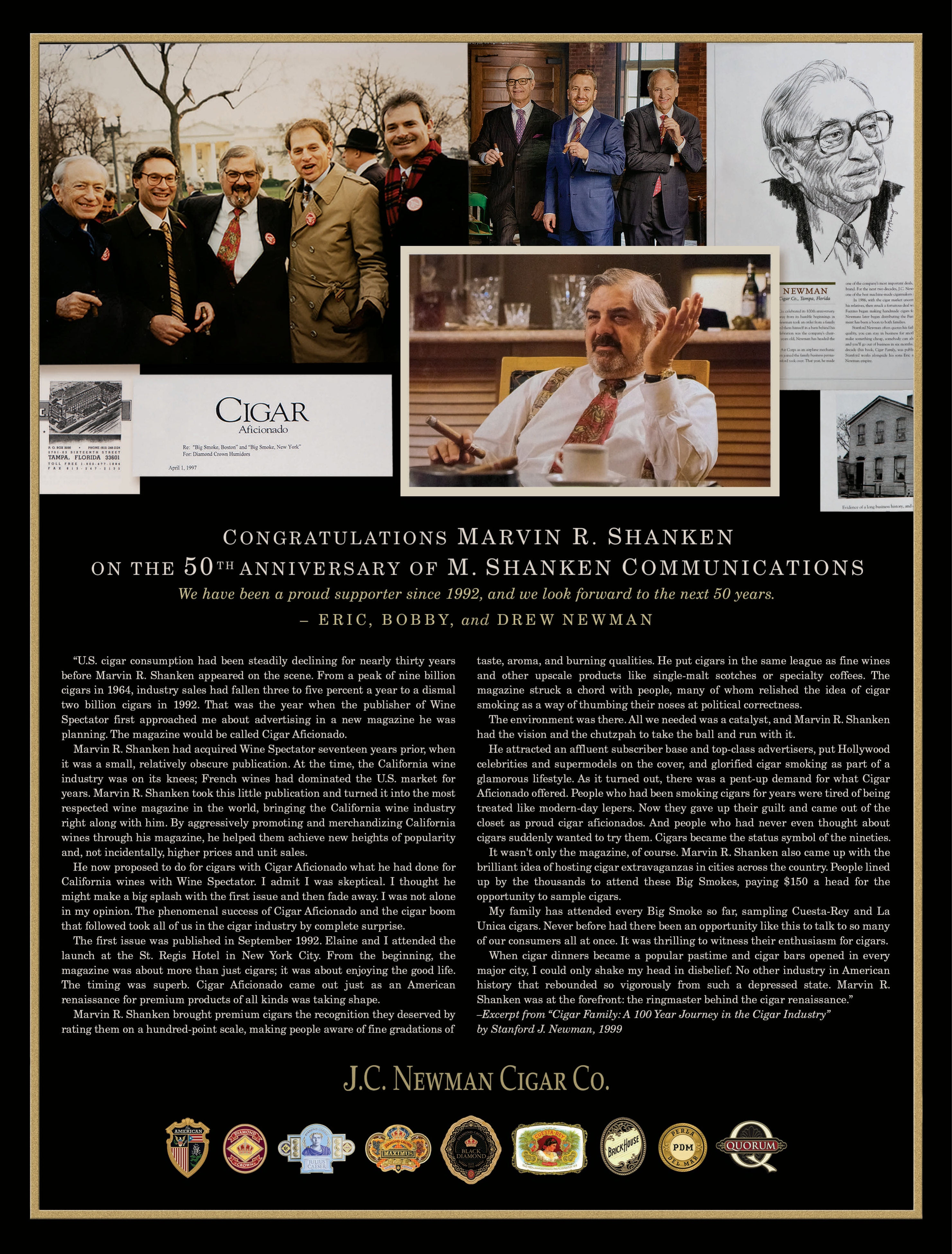
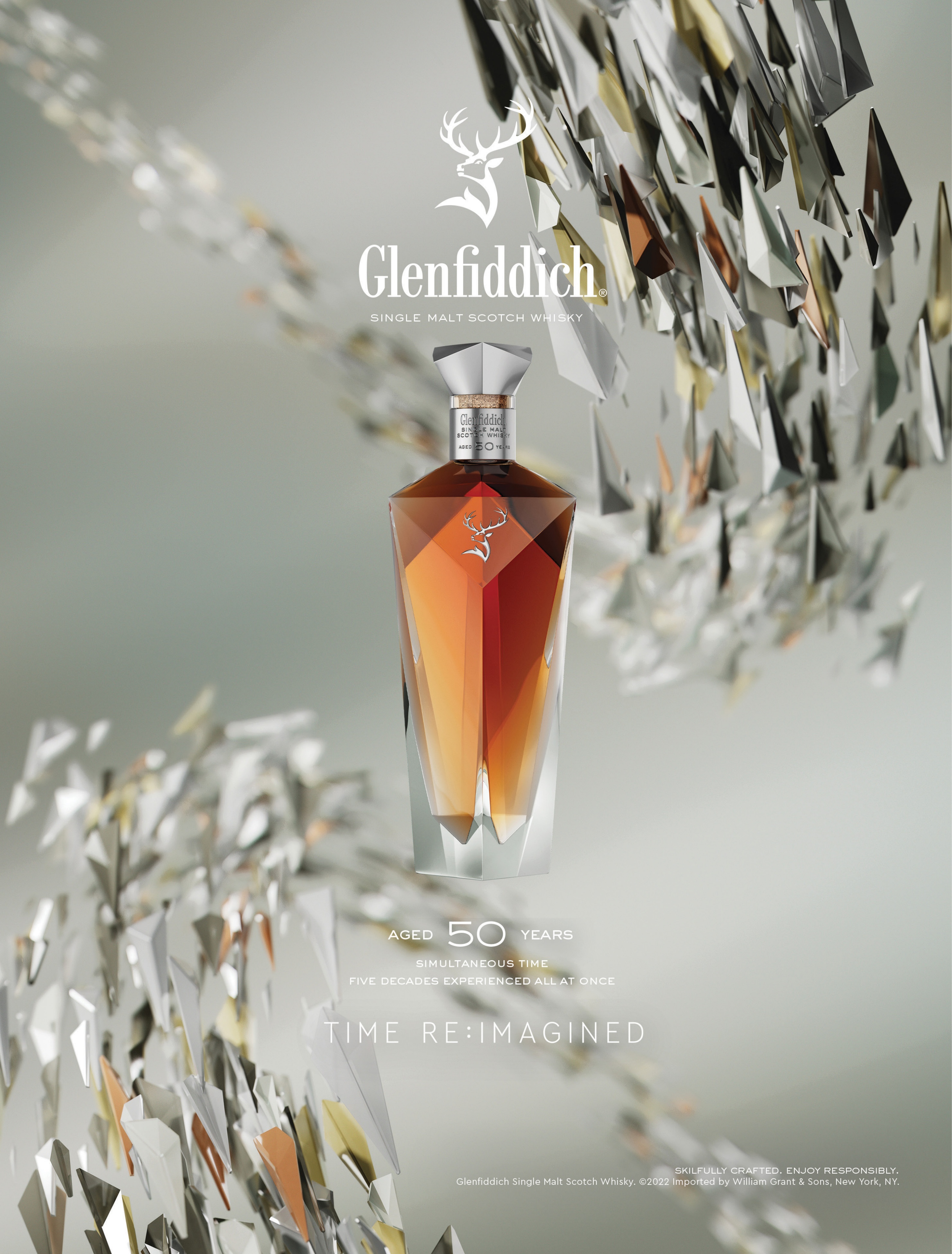
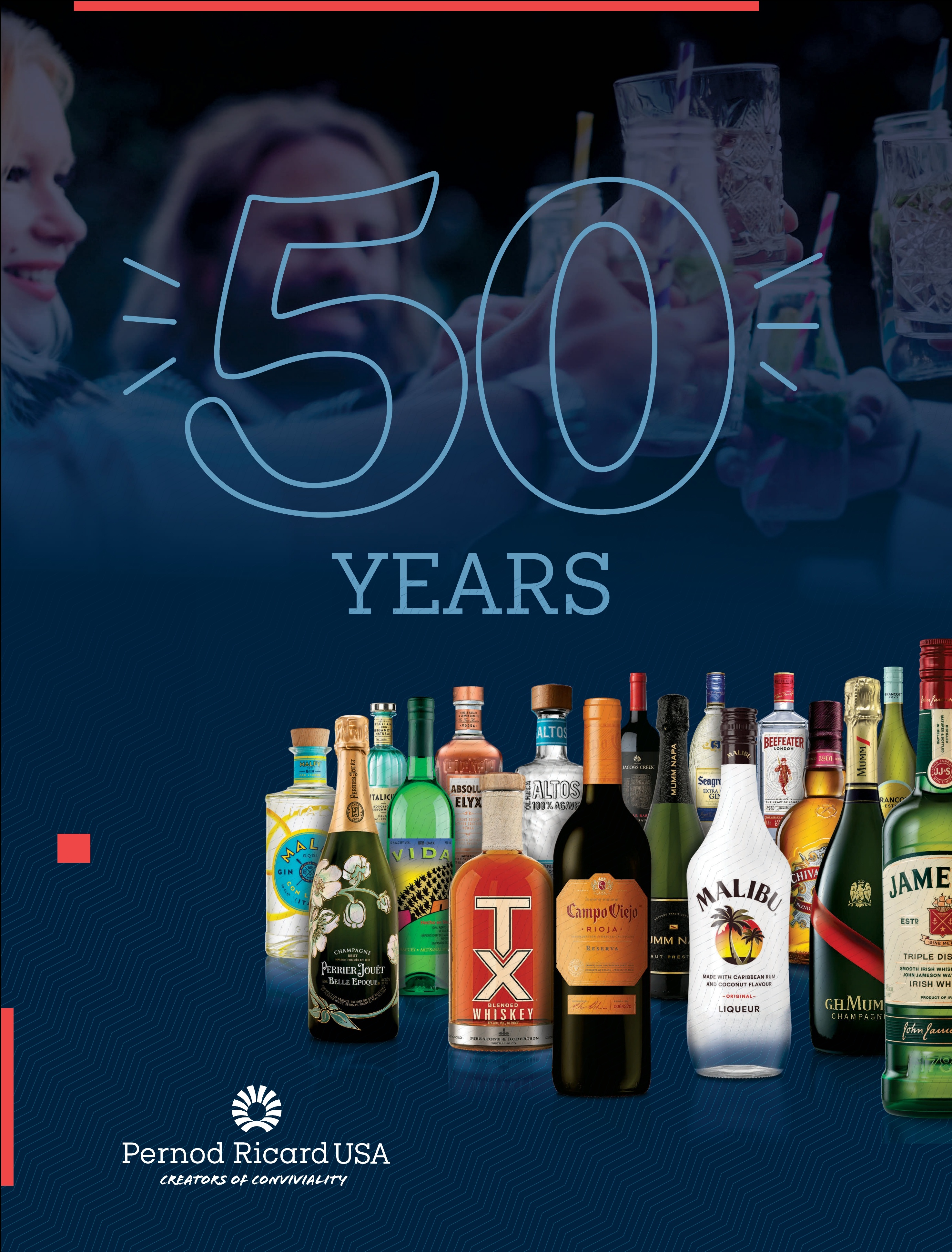
THE PORTFOLIO
M. Shanken Communications, Inc.
The Portfolio
Over its 50-year history, M. Shanken Communications has grown to include a far-reaching portfolio of publications, events and digital offerings
O ver the span of five decades, the M. Shanken Communications portfolio of magazines and newsletters has grown to become an all-encompassing collection of lifestyle and industry publications for the spirits, wine and cigar businesses. The company started with humble beginnings in 1972, when Marvin R. Shanken purchased Impact newsletter, and later in 1979, when he bought a then-struggling newspaper called Wine Spectator and completely revamped and revived it. Of course, in the years that followed, Shanken introduced several new publications to broaden the scope of his company. He launched Market Watch in 1981 to provide an in-depth look at the on- and off-premise spirits and wine trade. He created Cigar Aficionado in 1992, despite being advised by many that it was a bad idea. And he reimagined and relaunched Whisky Advocate in 2010, making a large commitment to one of the fastest-growing spirits categories in the world. With all of that, M. Shanken Communications has also been an early adopter and longtime supporter of digital technologies. The company launched its e-newsletter Shanken News Daily in 2011, and it has since added websites and mobile apps for many of its industry-leading publications. Read on for a snapshot of each publication within the M. Shanken Communications portfolio, joined by images from some of the company’s popular events.
THE PORTFOLIO • IMPACT NEWSLETTER
Impact Newsletter
1972
M arvin R. Shanken bought Impact newsletter from Oppenheimer & Co. in 1972 for $5,000, a sum he borrowed from his sister to finalize the purchase. At the time, he was a real estate investment banker working for a Wall Street firm that handled vineyard deals in California. There was a dearth of information about the wine market, and Shanken saw opportunity in the then-four-page Impact newsletter about the United States beverage alcohol industry.
Wine and spirits trade journalism at the time left much to be desired. There were a few newsletters and trade papers that mostly printed press releases churned out by the big supplier companies of the day, which are all defunct today. The copy would often appear wrapped around the ads suppliers bought in those publications. Shanken quickly developed a reputation as a respectable journalist. He challenged the status quo of the industry, did not accept any advertising in Impact initially and eventually only accepted quarter-page allied industry ads for many years. He approached his reporting analytically, supplying data on brands and company revenues for the first time. Impact Databank was created and the industry took note.
Impact’s style was brash and challenging, but its reporting was accurate. Trends were identified and quantified. Interviews with CEOs were in-depth and revealing. Its circulation began to grow. Shanken became the wine and spirits industry analyst and Impact the bible of the industry. The high journalistic standards of those early years are still practiced today, not only in Impact but in all of M. Shanken Communications’ publications.
The company published its first annual research study in 1976: the American Distilled Spirits Market Review and Forecast. One year later, its first wine report, the American Wine Market Review and Forecast, was launched. Shanken became the most reliable commentator on the spirits and wine industries and was widely quoted in major newspapers and magazines. Impact Databank statistics were often cited in articles as well.
Shanken held his first Impact Annual Marketing Seminar in 1977 at the Park Lane hotel in New York City. This event featured top speakers from major wine and spirits companies and New York ad agencies. The event has become the preeminent conference for the global beverage alcohol industry. Over the years, it has been held in London, Paris, Madrid, Berlin and Tokyo, and it has brought together CEOs, presidents and senior level executives from around the world. The 46th Annual Impact Marketing Seminar was held this past September at The Pierre hotel in New York City. The list of speakers over the seminar’s long history is a who’s who of the industry, with beverage executives complemented by well-known and engaging luncheon speakers such as Presidents Bill Clinton and George W. Bush; Vice President Dick Cheney; Secretaries of State Henry Kissinger, Alexander Haig and Madeleine Albright; British Prime Ministers Edward Heath and John Major; President of France Valéry Giscard d’Estaing; German Chancellor Helmut Schmidt and many other leaders from government, finance and journalism.
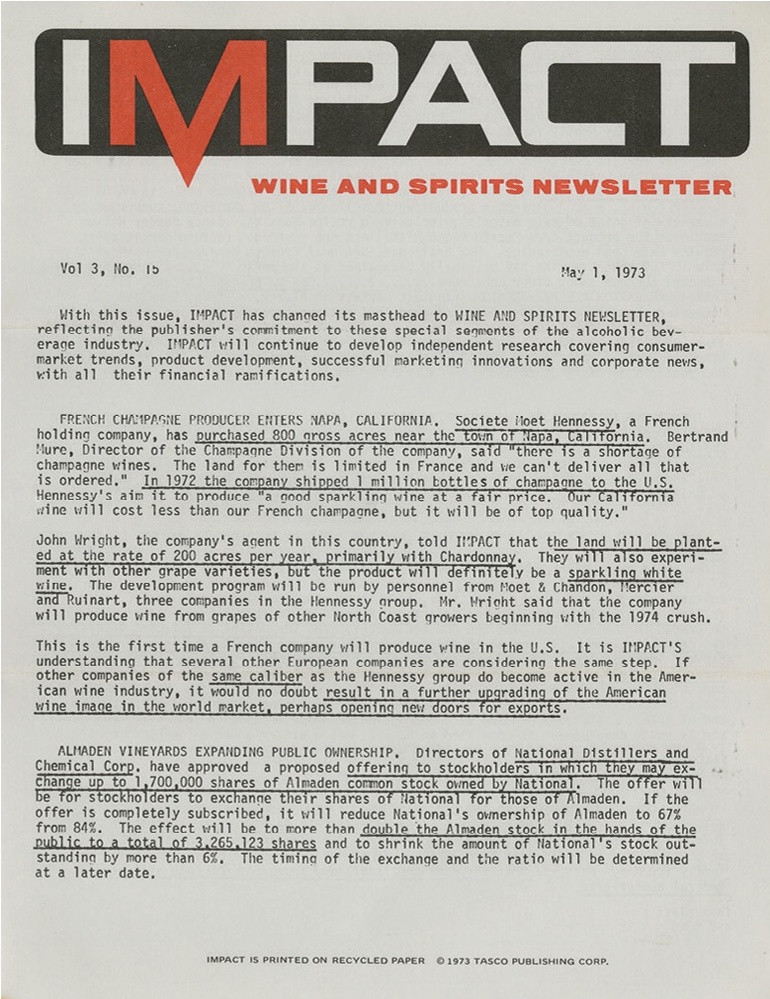
May 1, 1973
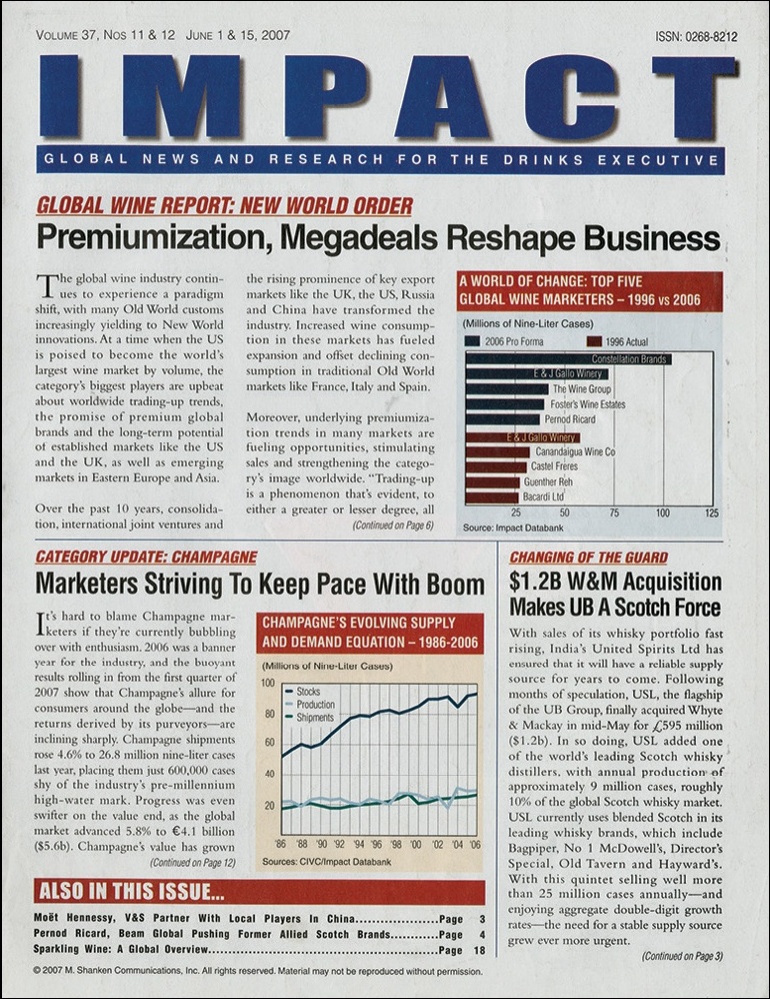
June 1 & 15, 2007

September 1, 1974
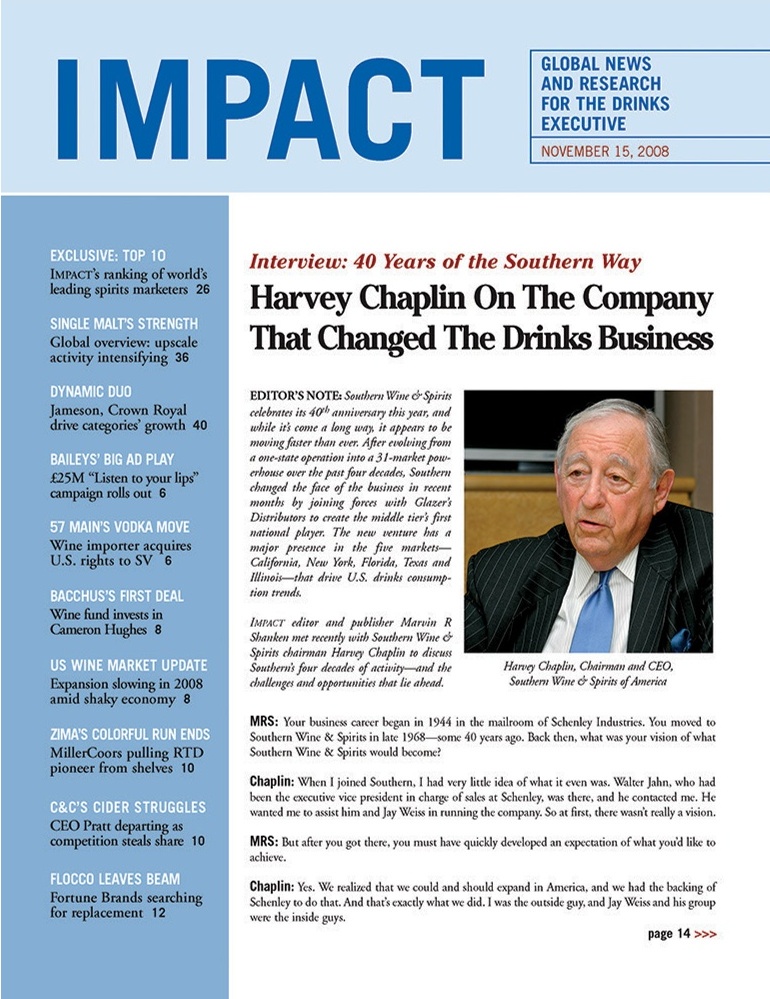
November 15, 2008
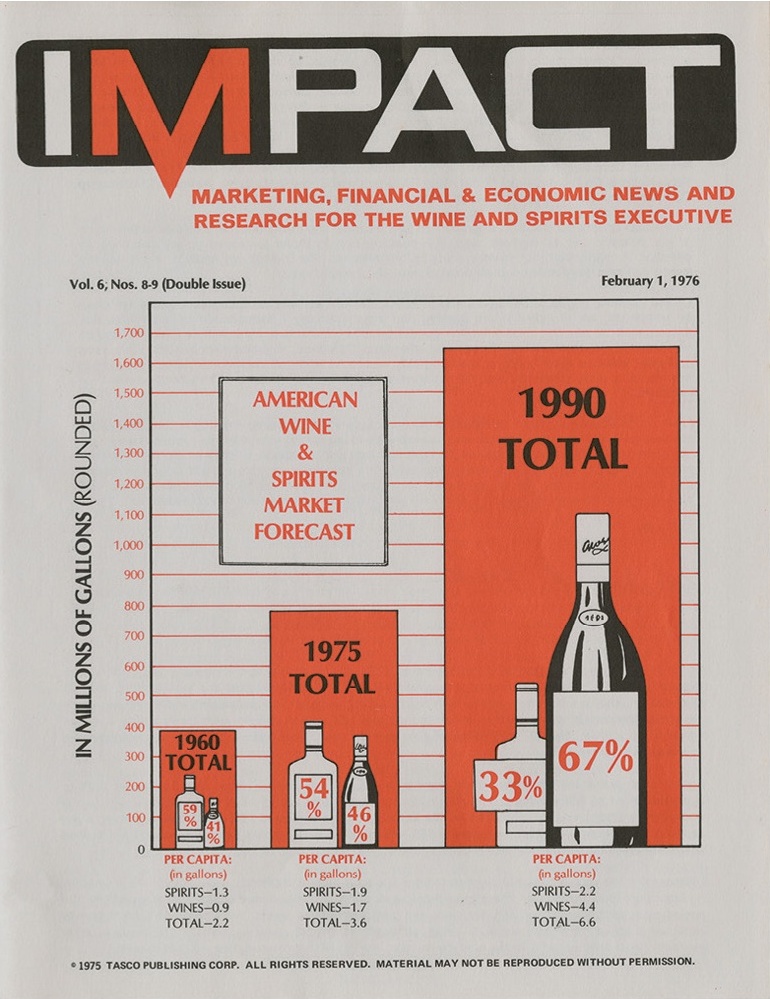
February 1, 1976
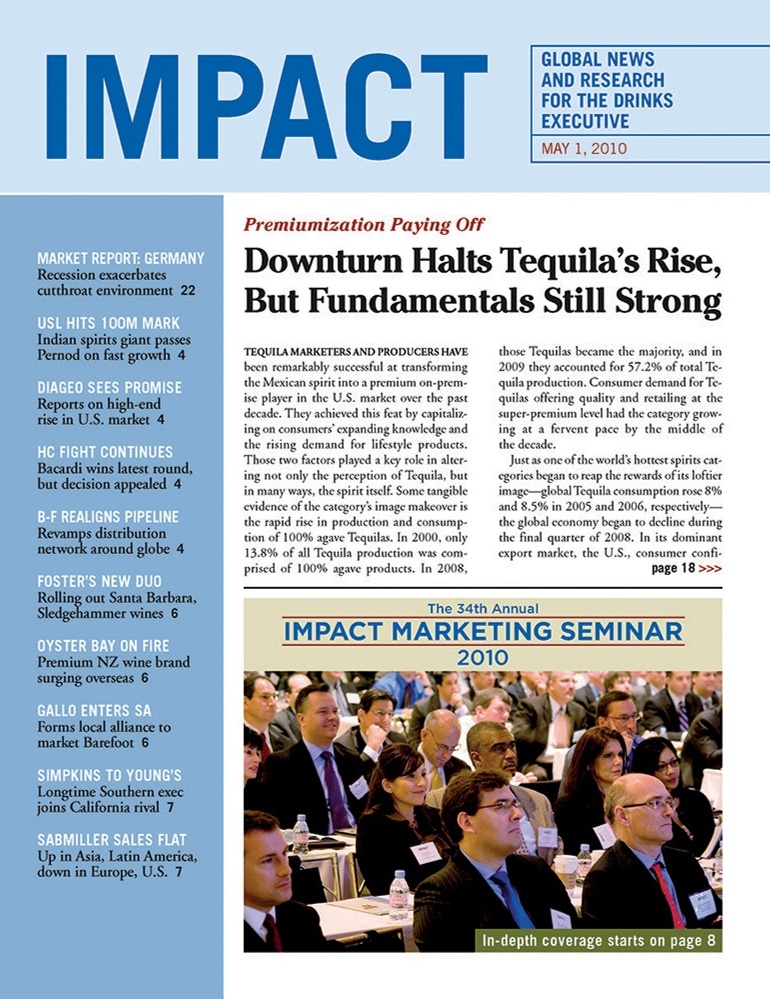
May 1, 2010
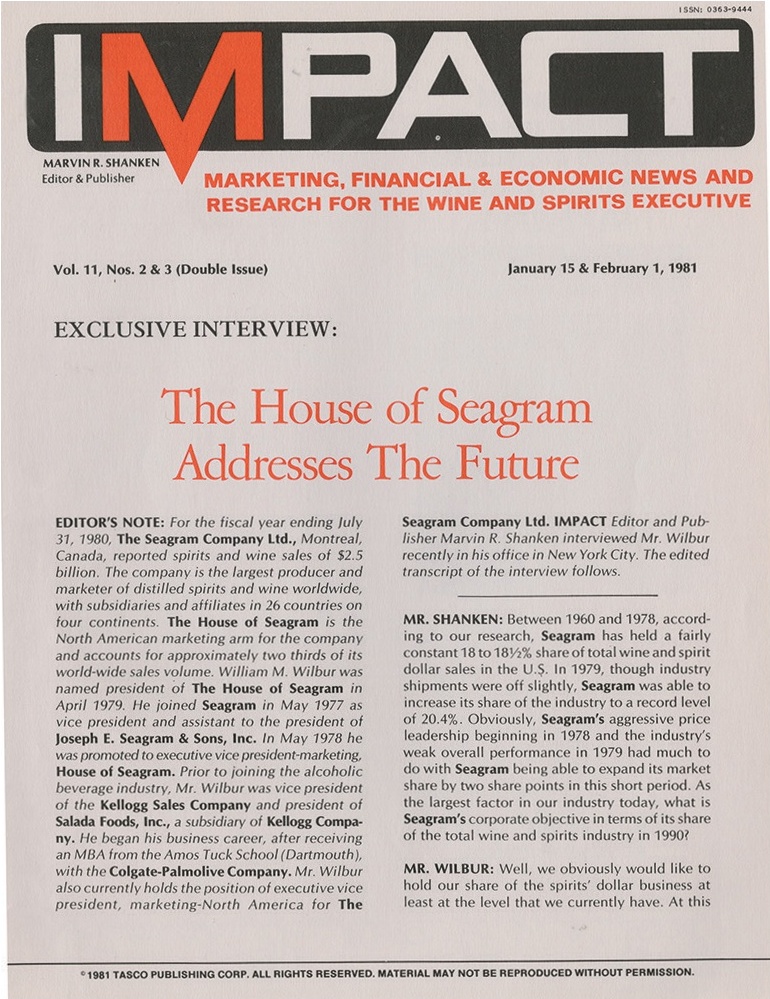
January 15 & February 1, 1981
May 1, 2012

December 15, 1987 & January 1, 1988
January 1 & 15, 2020
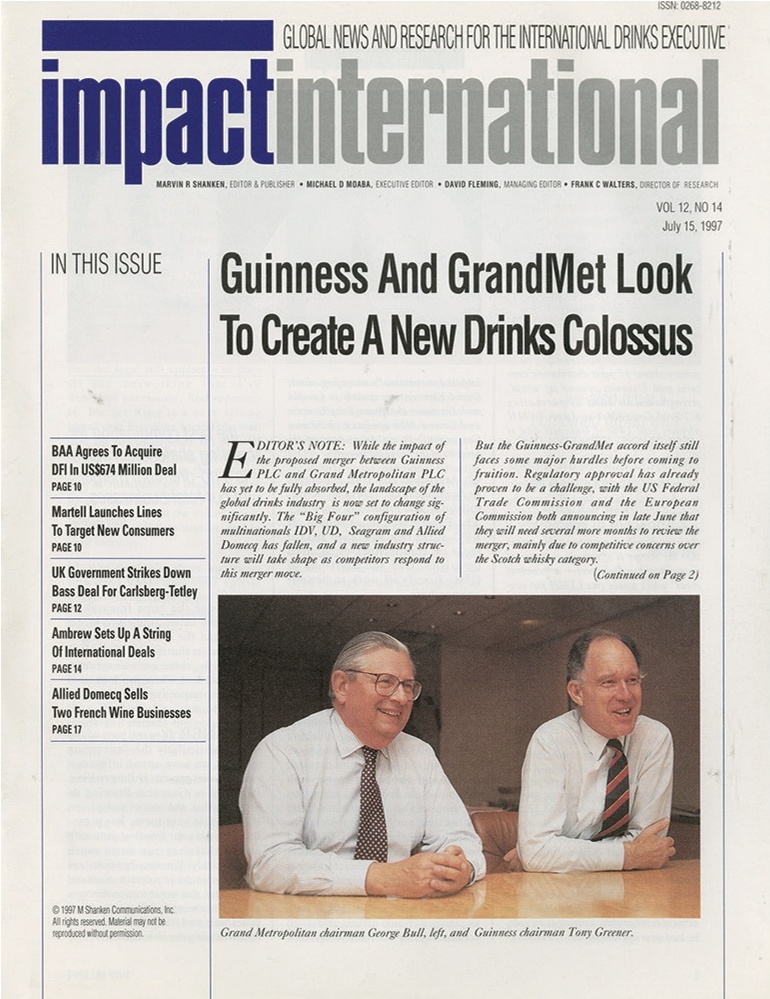
July 15, 1997
October 15, 2022
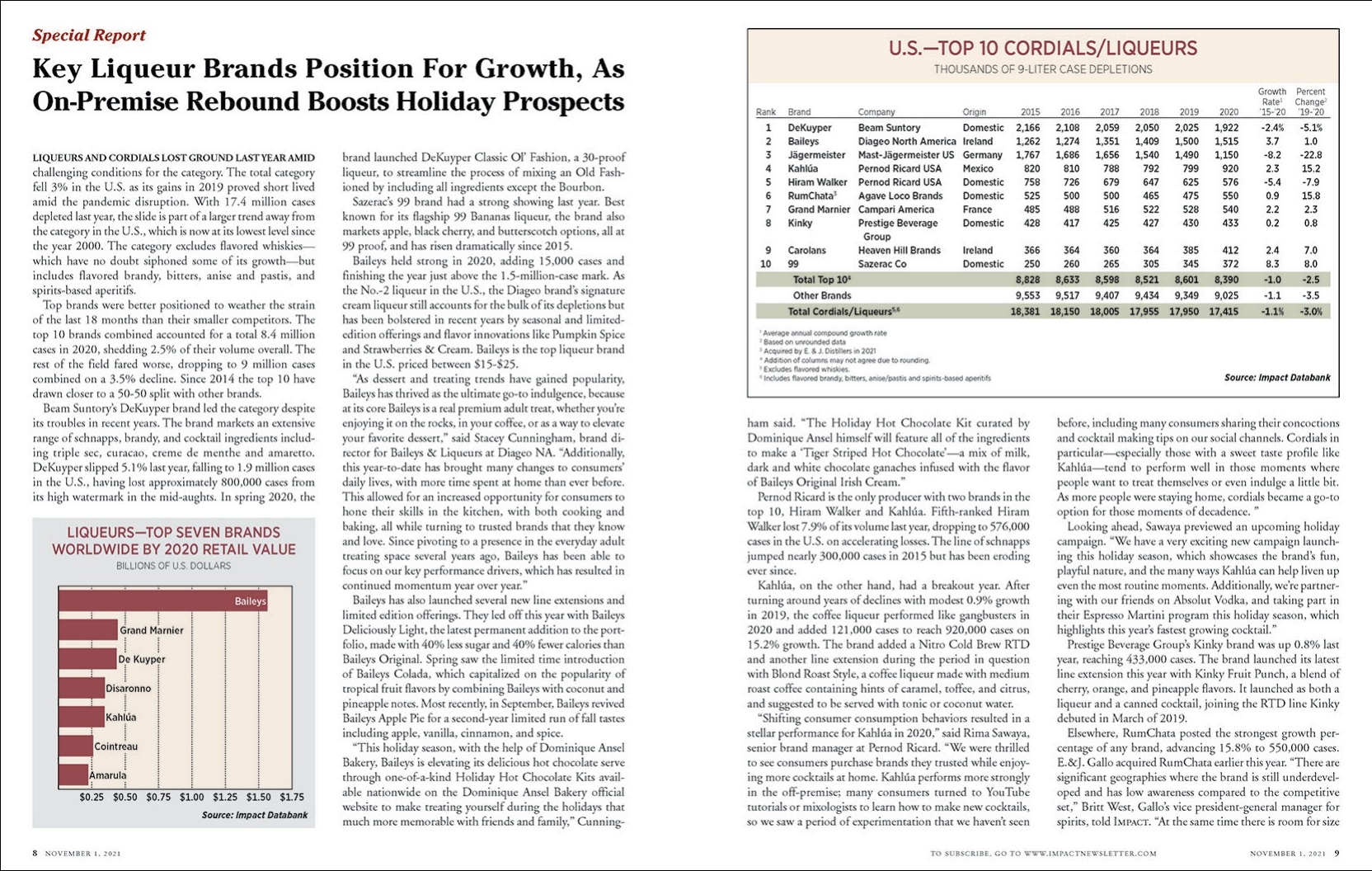
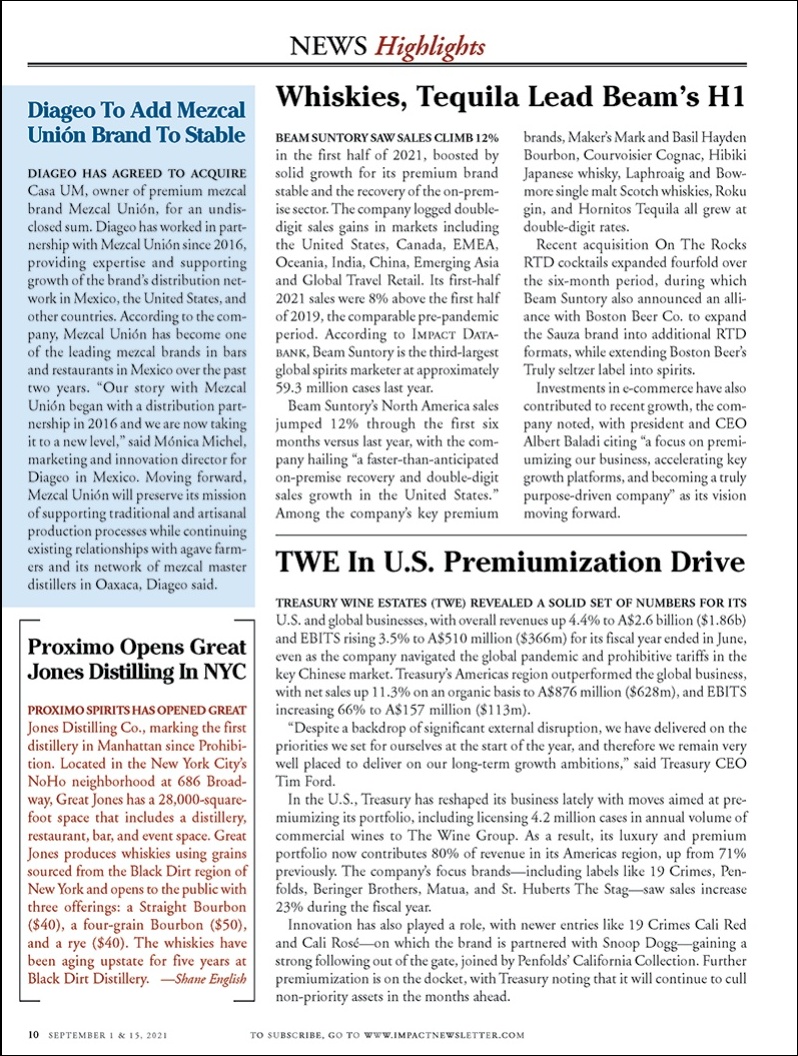
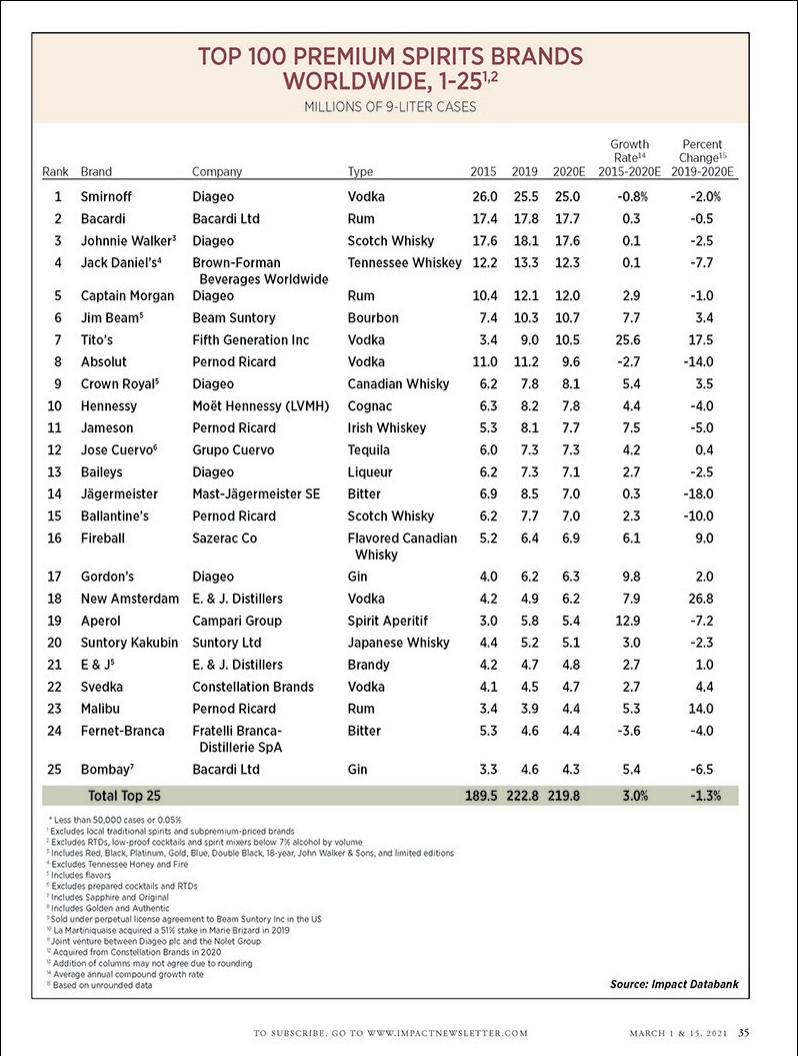
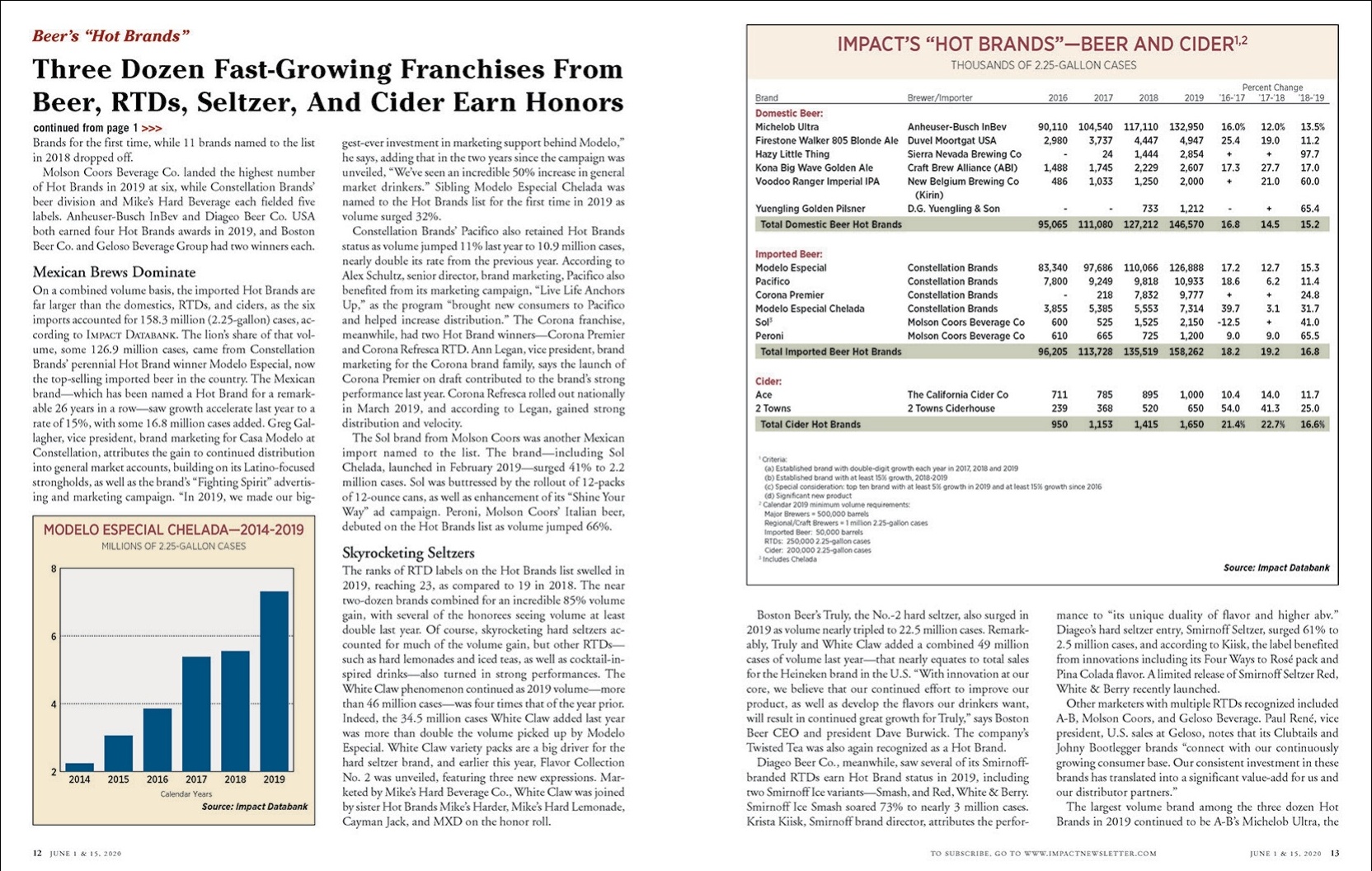
Impact features top-notch wine and spirits trade journalism, with reporting on industry trends and in-depth interviews with business leaders.

Former President George W. Bush (left) spoke twice at the annual Impact Seminar, in 2011 and 2016 (pictured above).
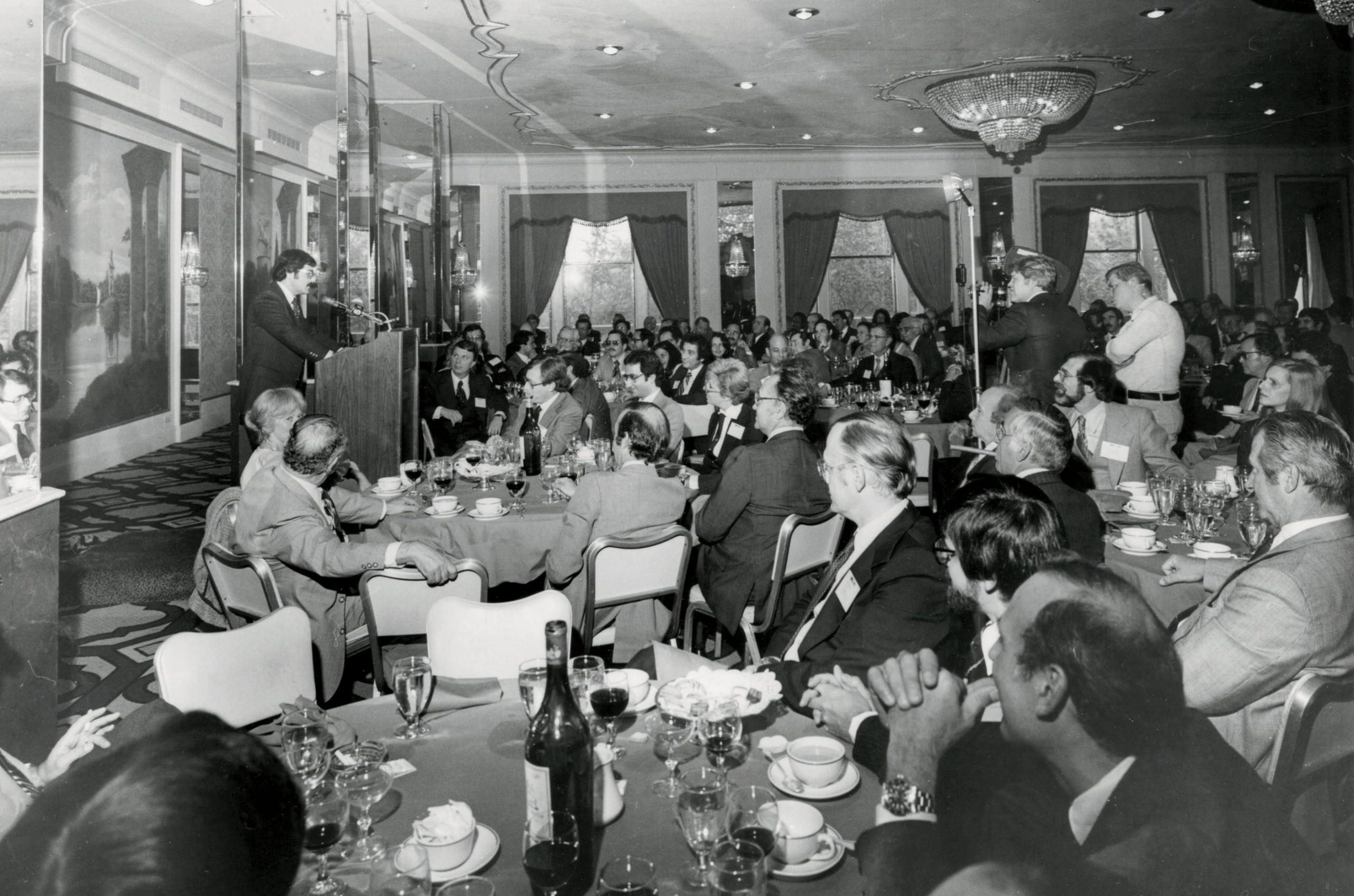
The first Impact Seminar luncheon was held at New York’s Park Lane hotel in 1977.
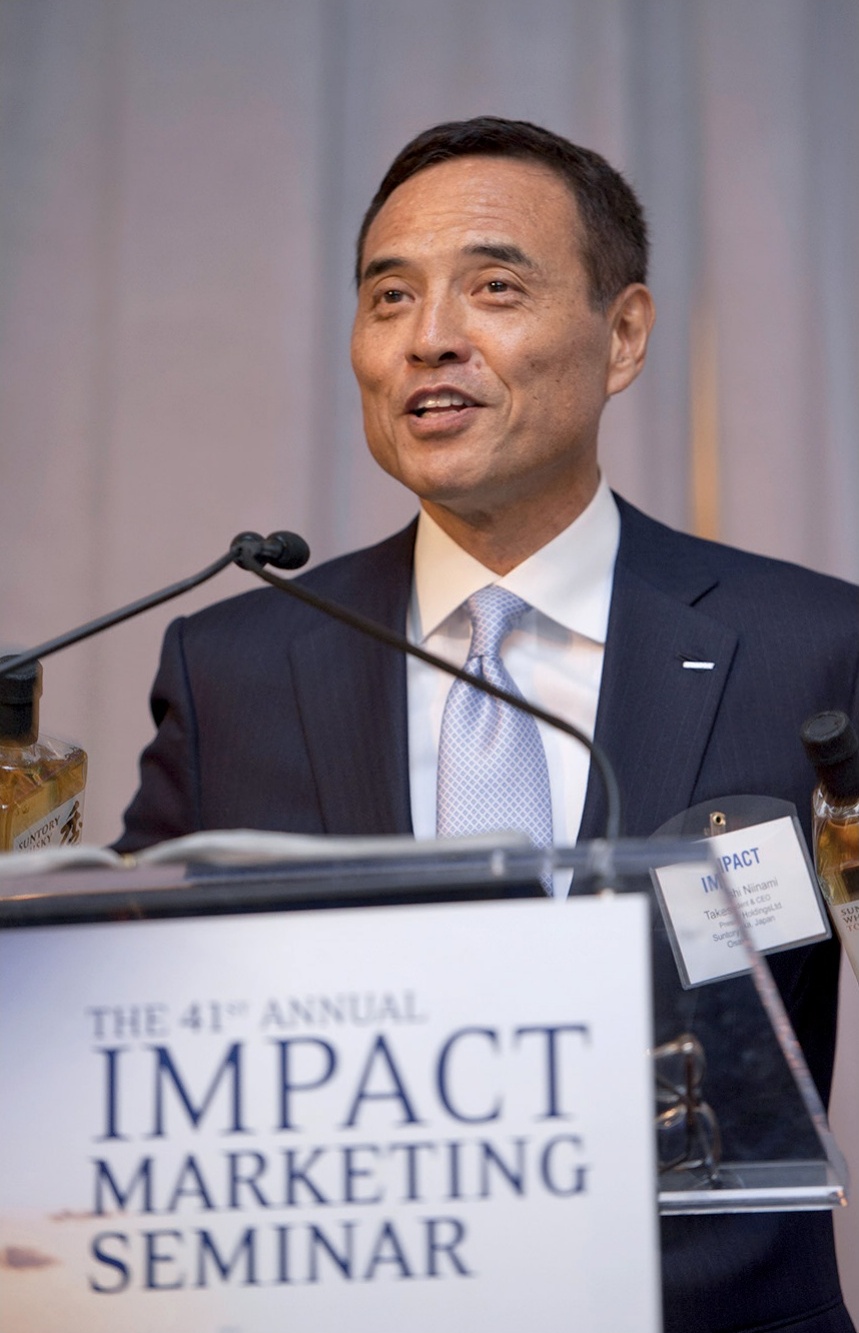
Takeshi Niinami of Suntory Holdings spoke at the 2017 Impact Seminar.
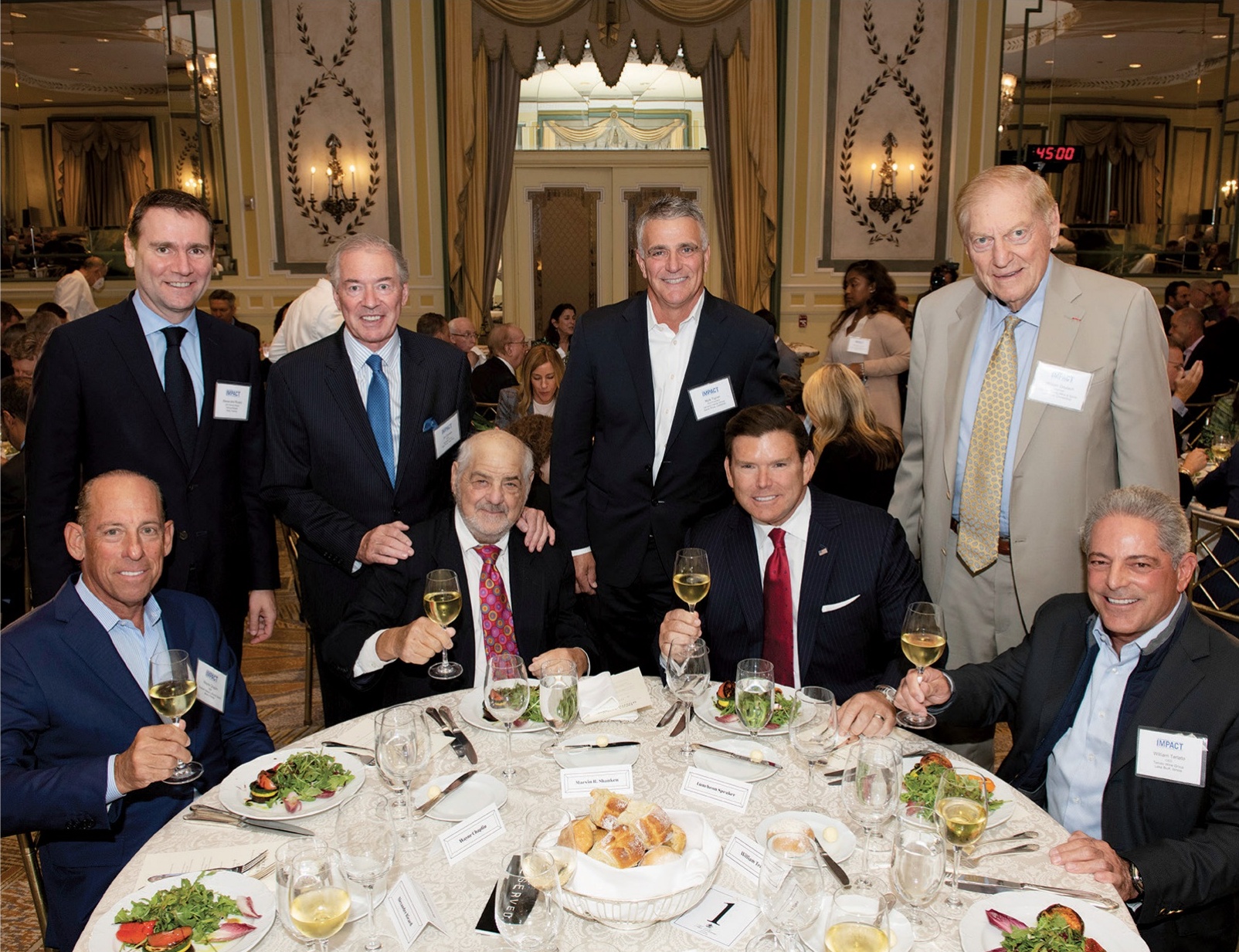
The head table at the 2022 Impact Seminar. Standing from left: Alexandre Ricard, Pernod Ricard; Jim Clerkin, Demeter & Co.; Rick Tigner, Jackson Family Wines; and Bill Deutsch, Deutsch Family Wine & Spirits. Seated from left: Wayne Chaplin, Southern Glazer’s; Marvin R. Shanken; lunch speaker Bret Baier, Fox News; and Bill Terlato, Terlato Wine Group.
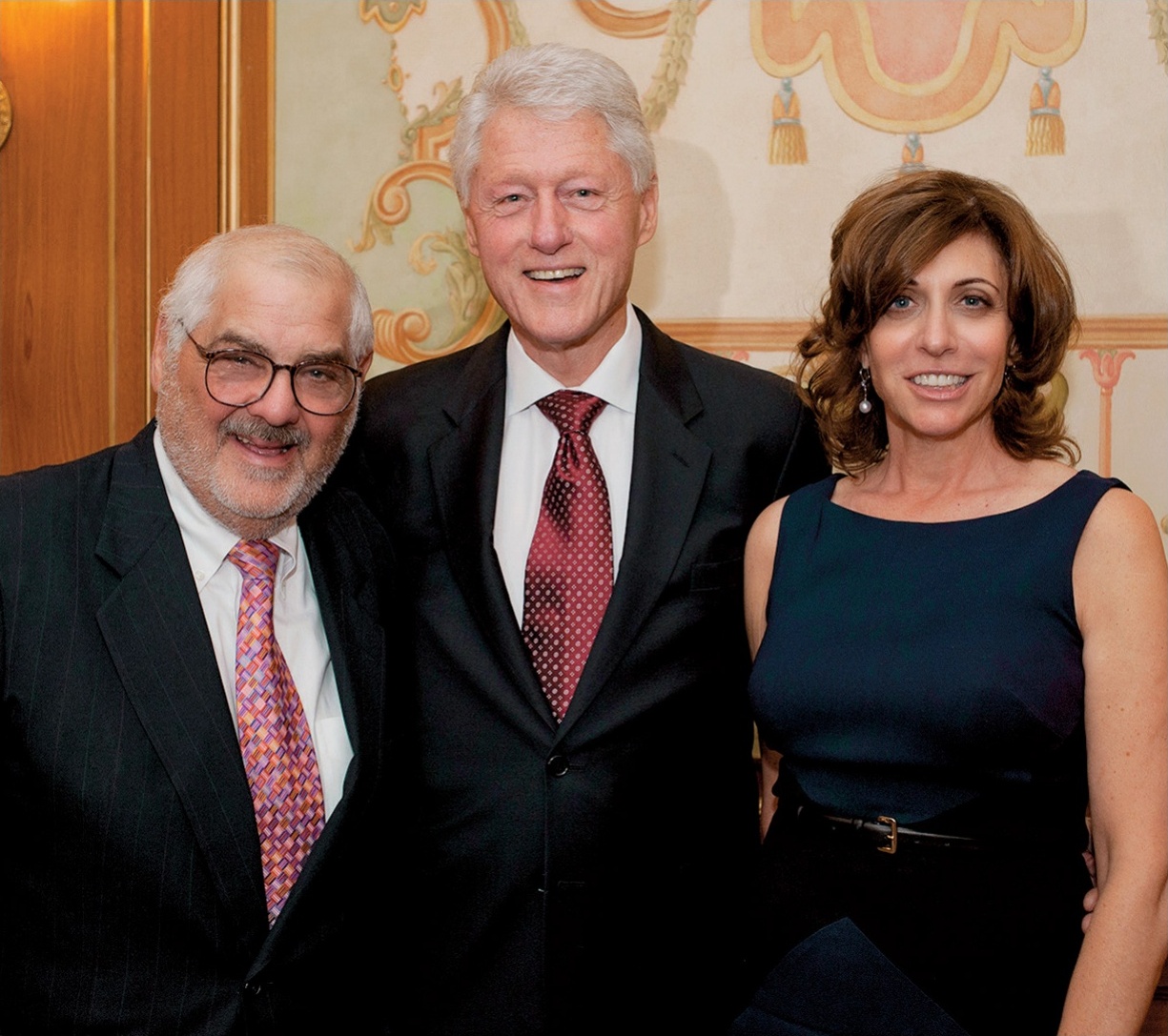
2012: Marvin R. Shanken, lunch speaker President Bill Clinton and Hazel Shanken.
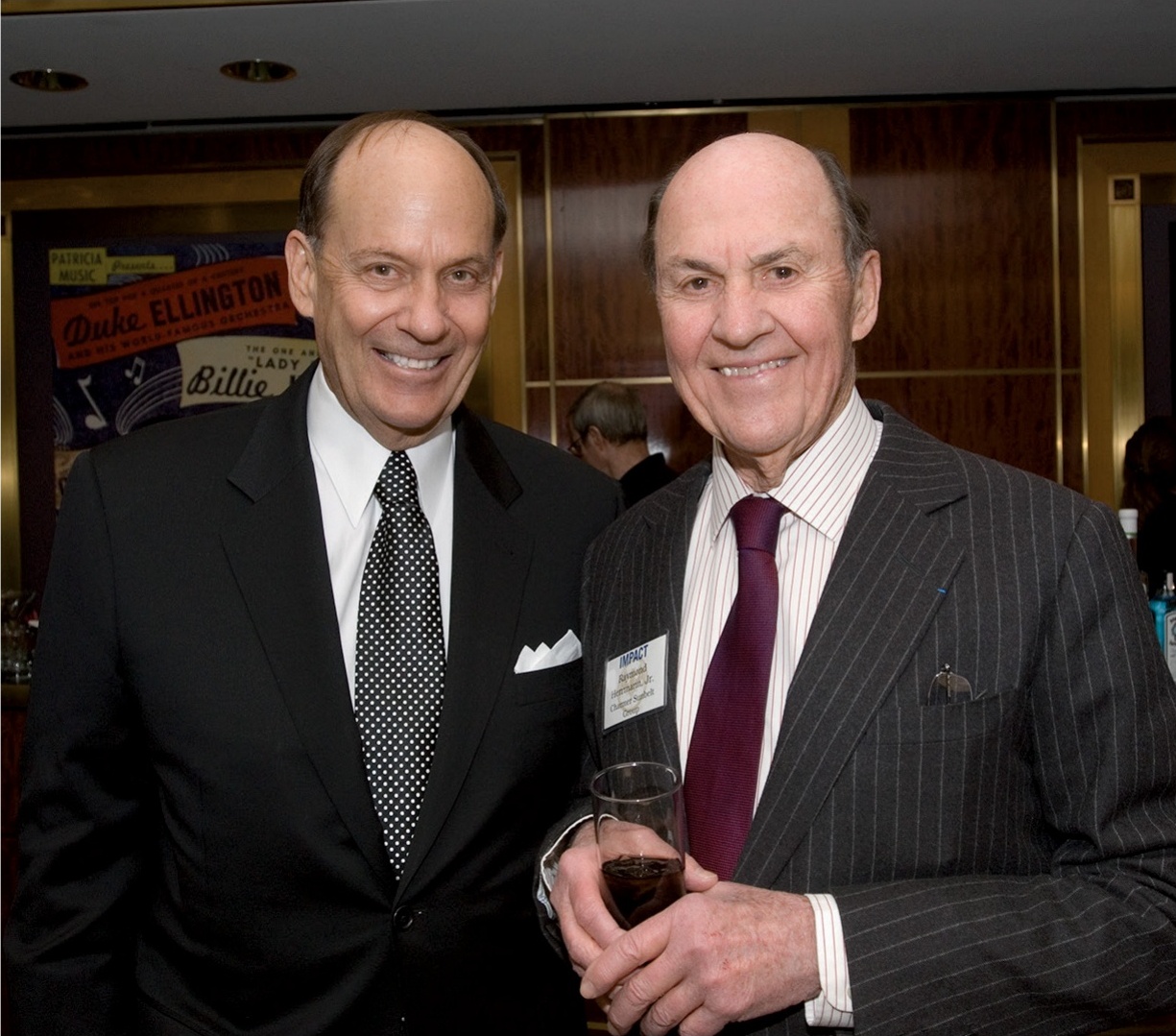
2009: Vern Underwood Jr., Young’s Market Co.; and Ray Herrmann, Charmer Sunbelt Group.
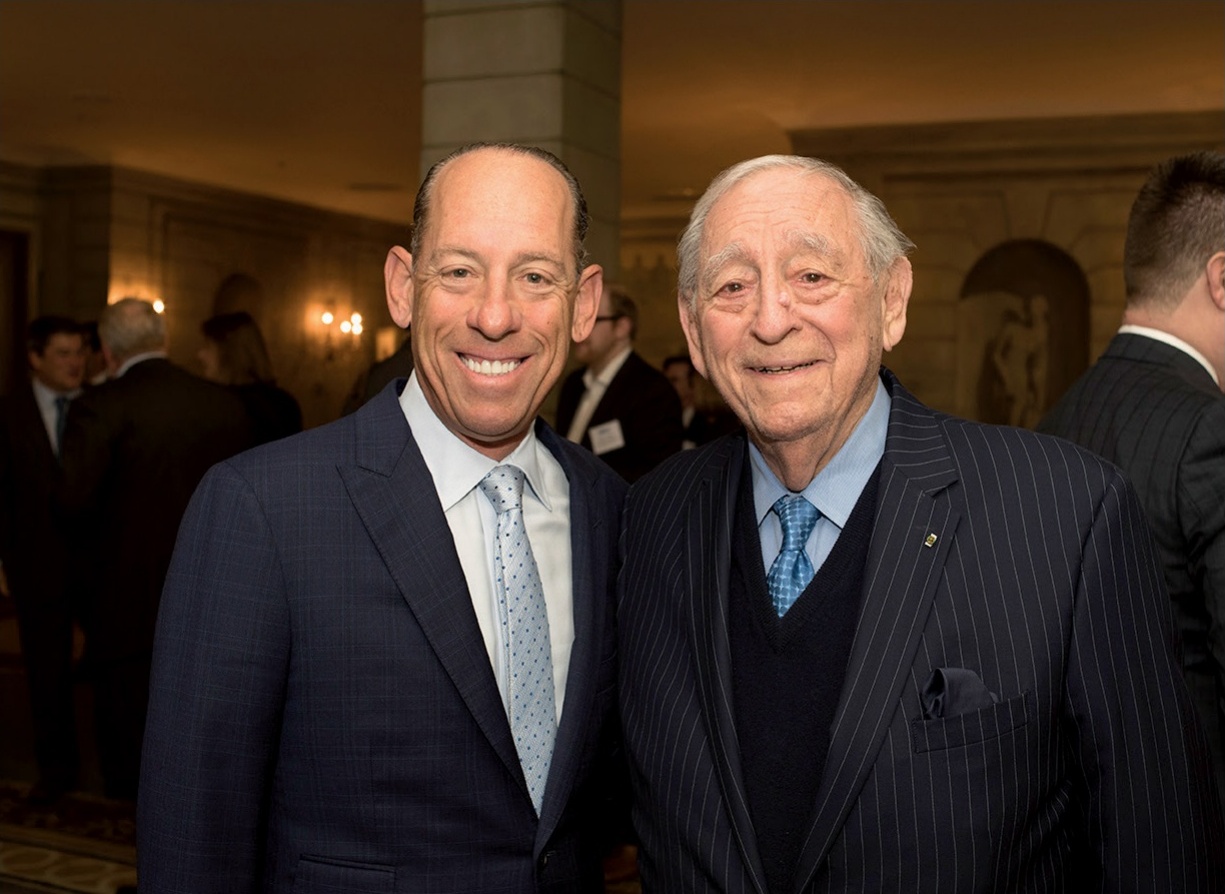
2018: Wayne Chaplin and Harvey Chaplin, Southern Glazer’s Wine & Spirits.
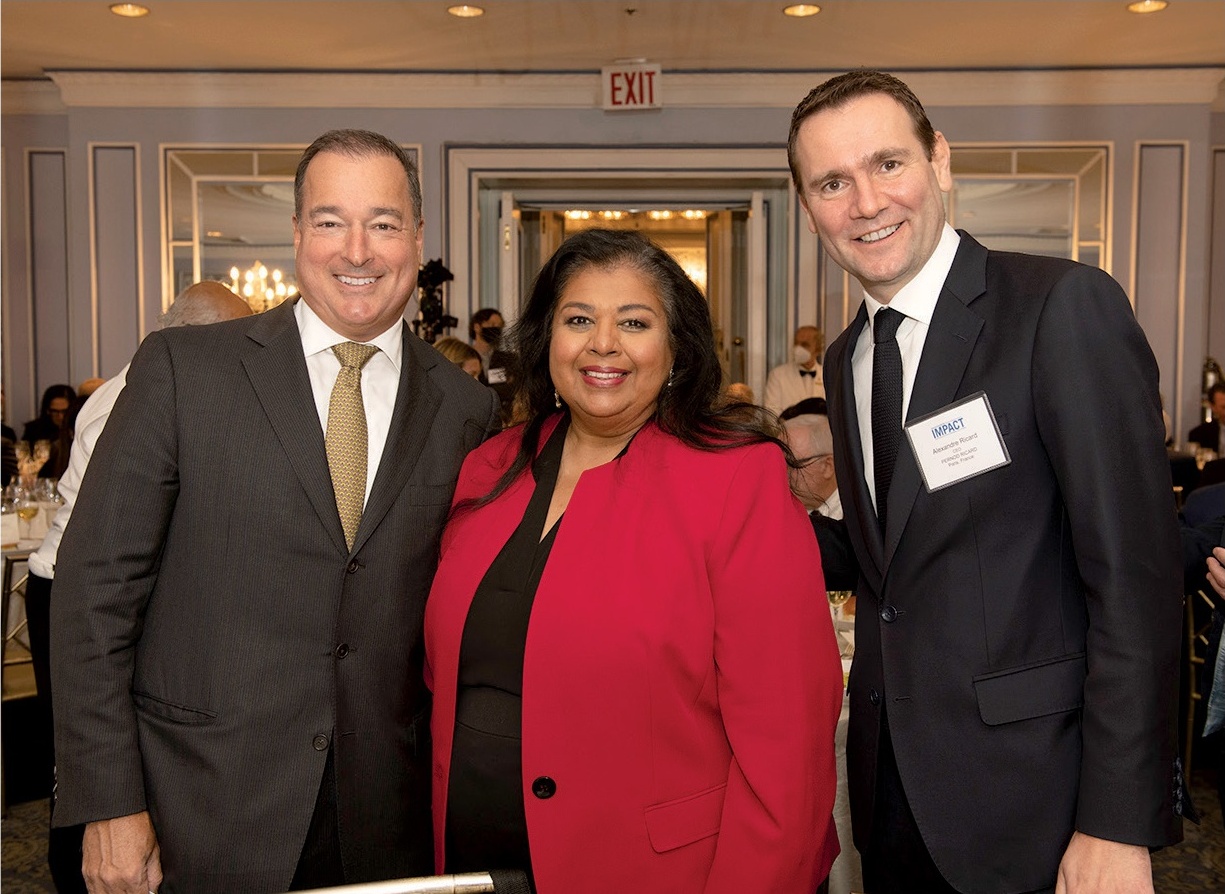
2021: Facundo Bacardi, Bacardi Ltd.; Ann Mukherjee, Pernod Ricard; and Alexandre Ricard, Pernod Ricard.
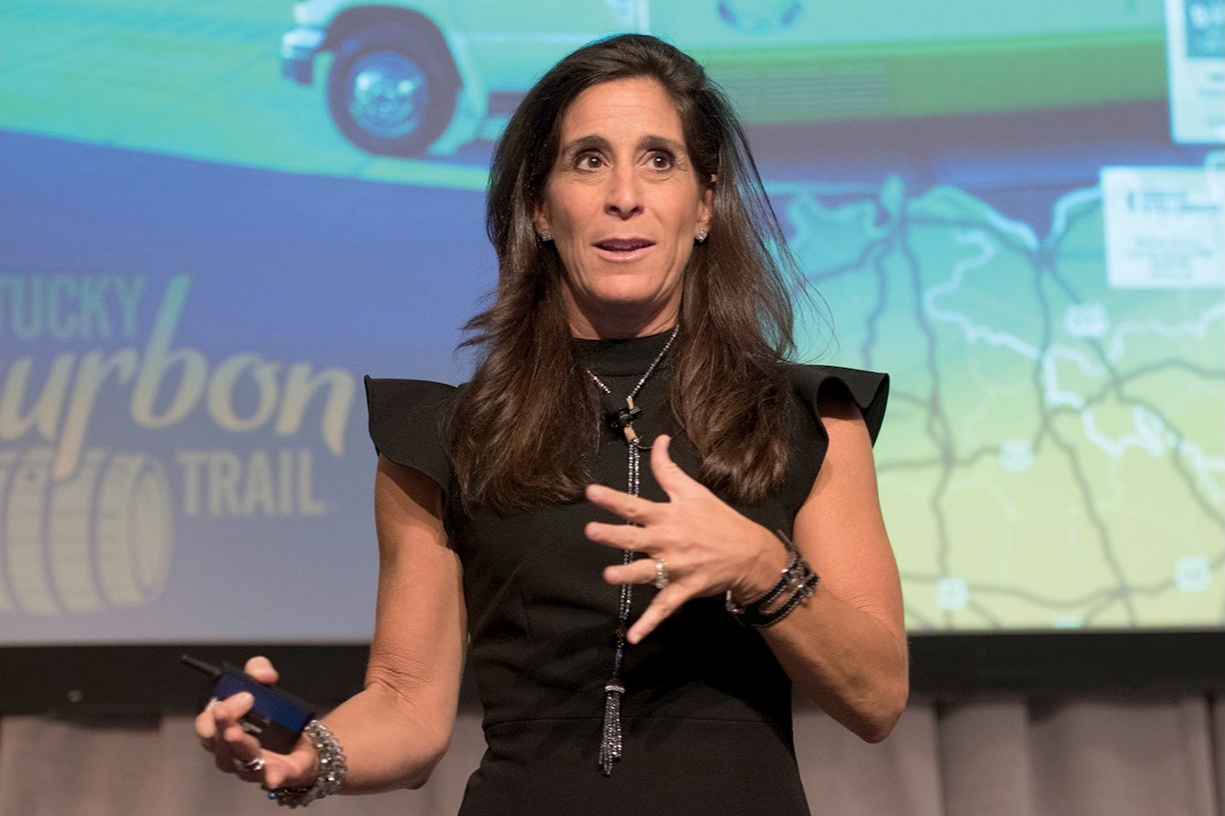
2018: Kate Latts, Heaven Hill Brands.
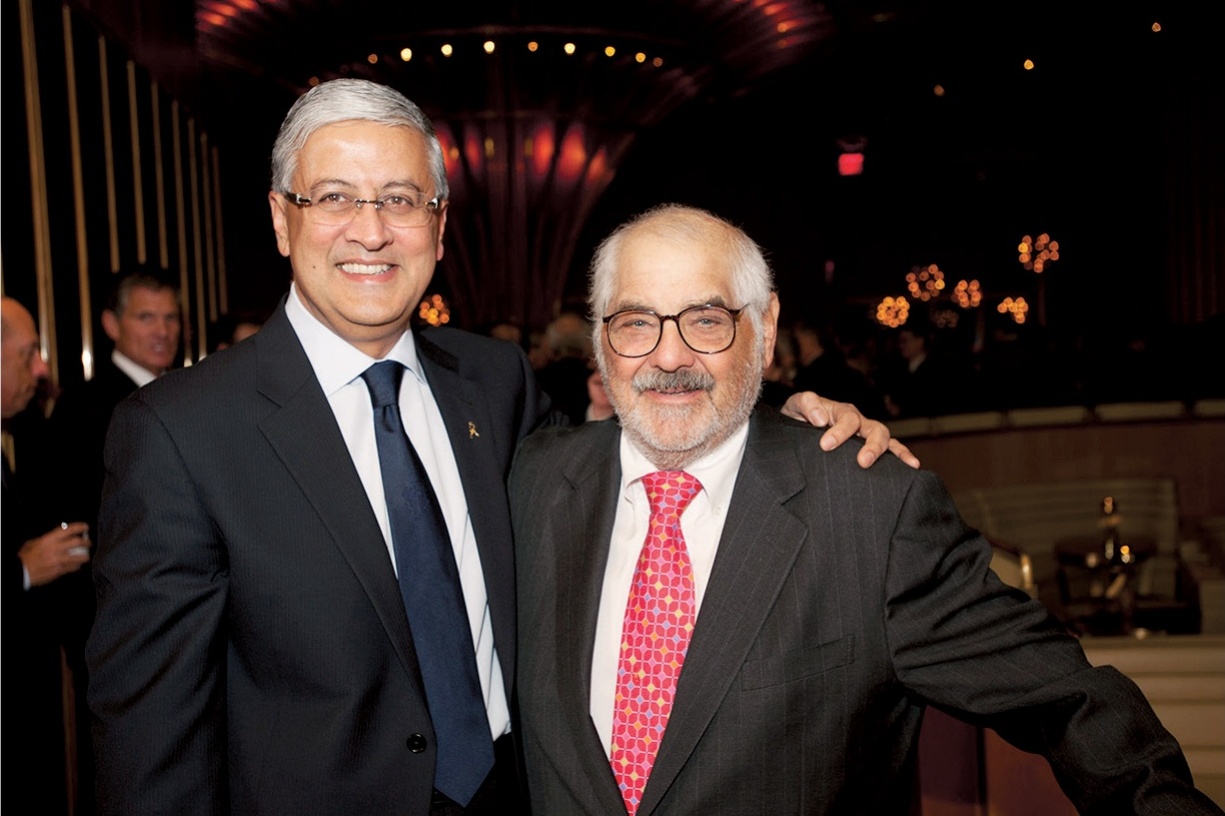
2014: Ivan Menezes, Diageo, and Marvin R. Shanken.
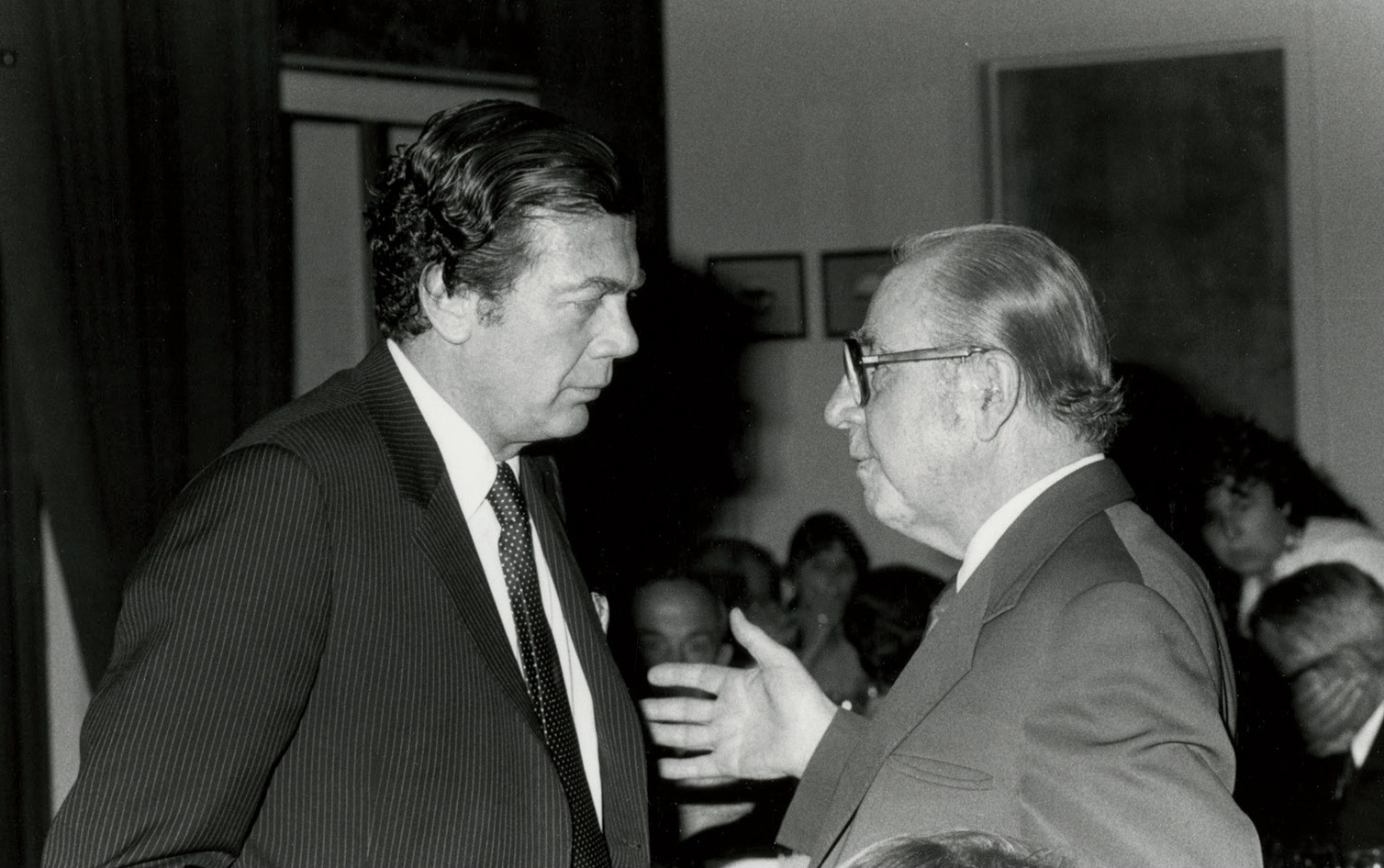
1980: Edgar Bronfman, the Seagram Co. Ltd., and Ernest Gallo, E. & J. Gallo Winery.
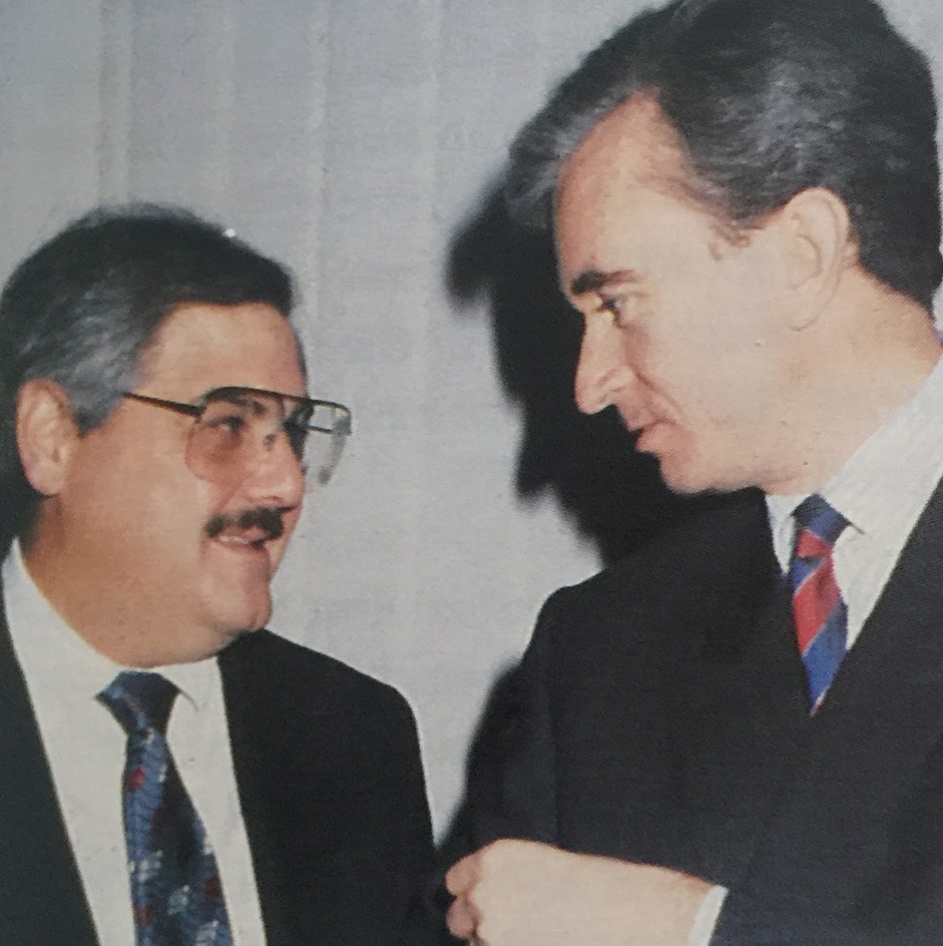
1990: Marvin R. Shanken and Bernard Arnault, LVMH.
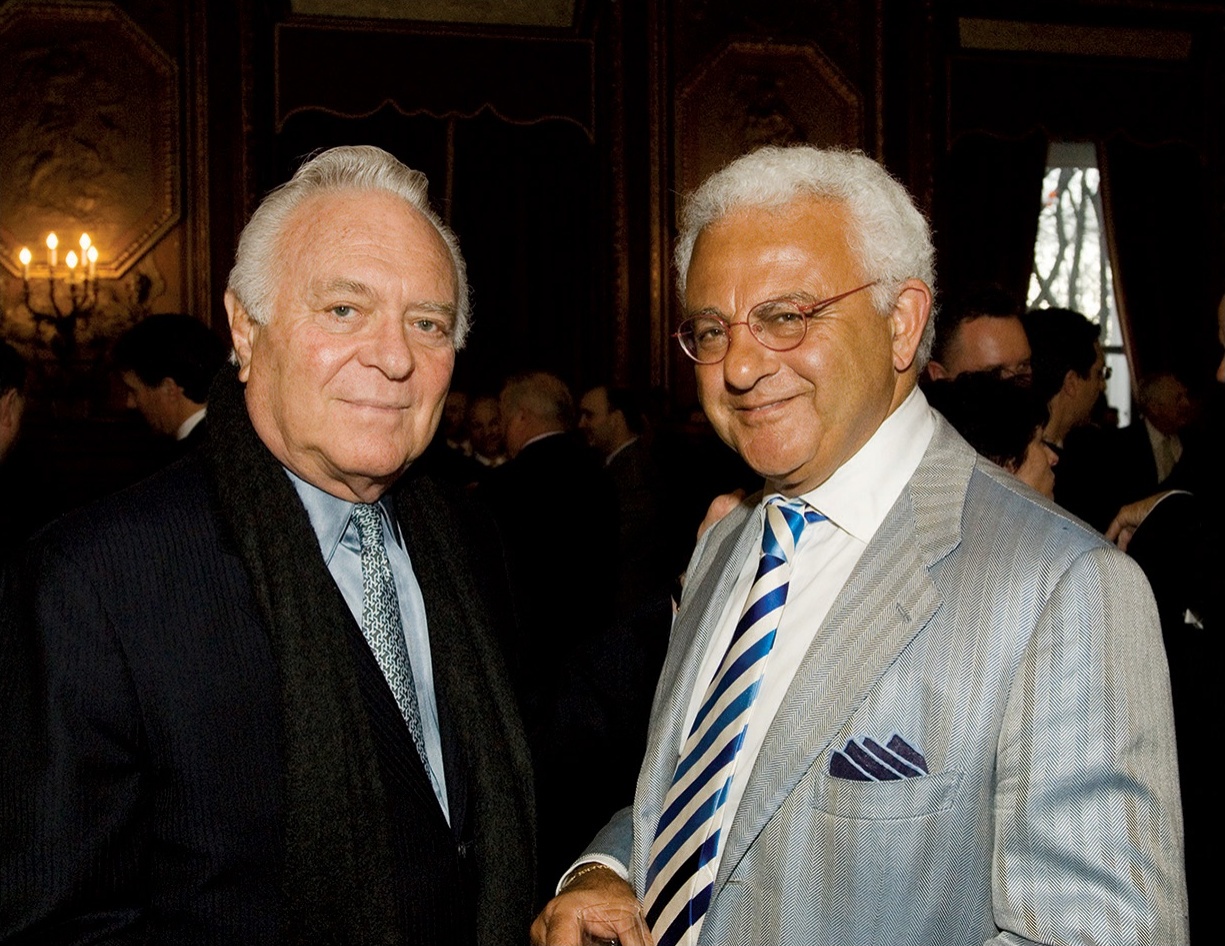
2010: Mel Dick, Southern Glazer’s, and Leonardo LoCascio, Winebow.
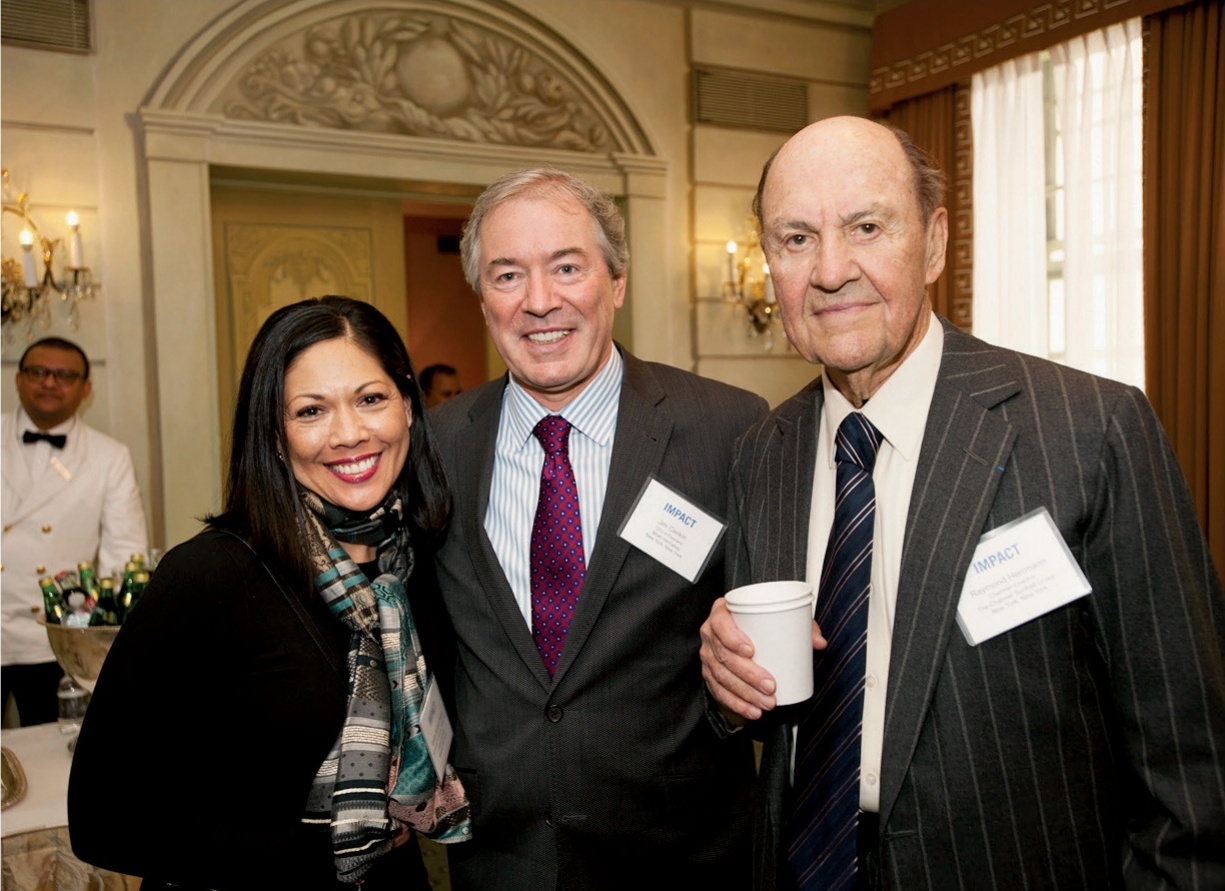
2014: Annette Alvarez-Peters, Costco; Jim Clerkin, Moët Hennessy USA; and Ray Herrmann, Charmer Sunbelt Group.
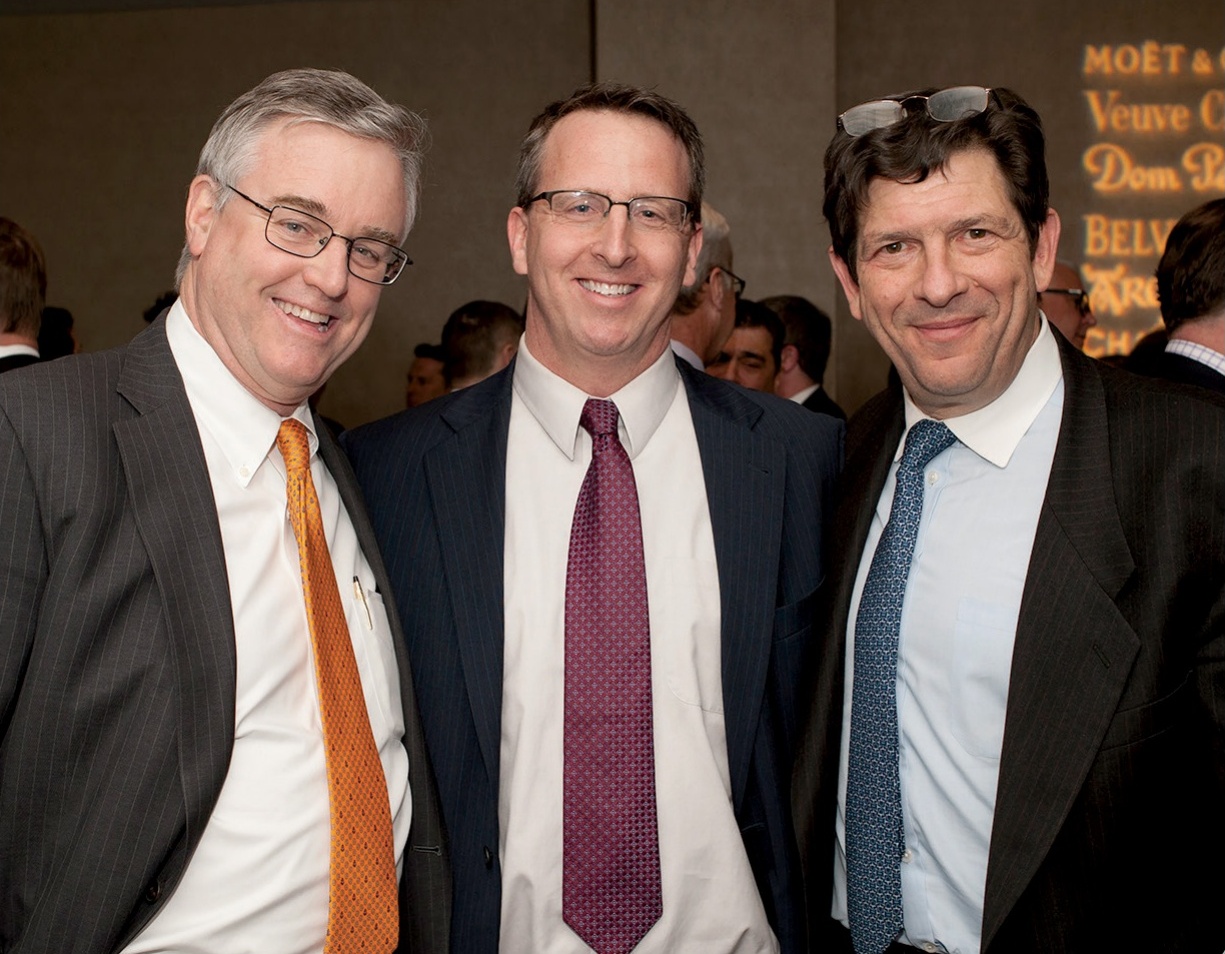
2015: David Trone, Total Wine & More; Jonathan Yusen, William Grant & Sons; and Charles Merinoff, Charmer Sunbelt Group.
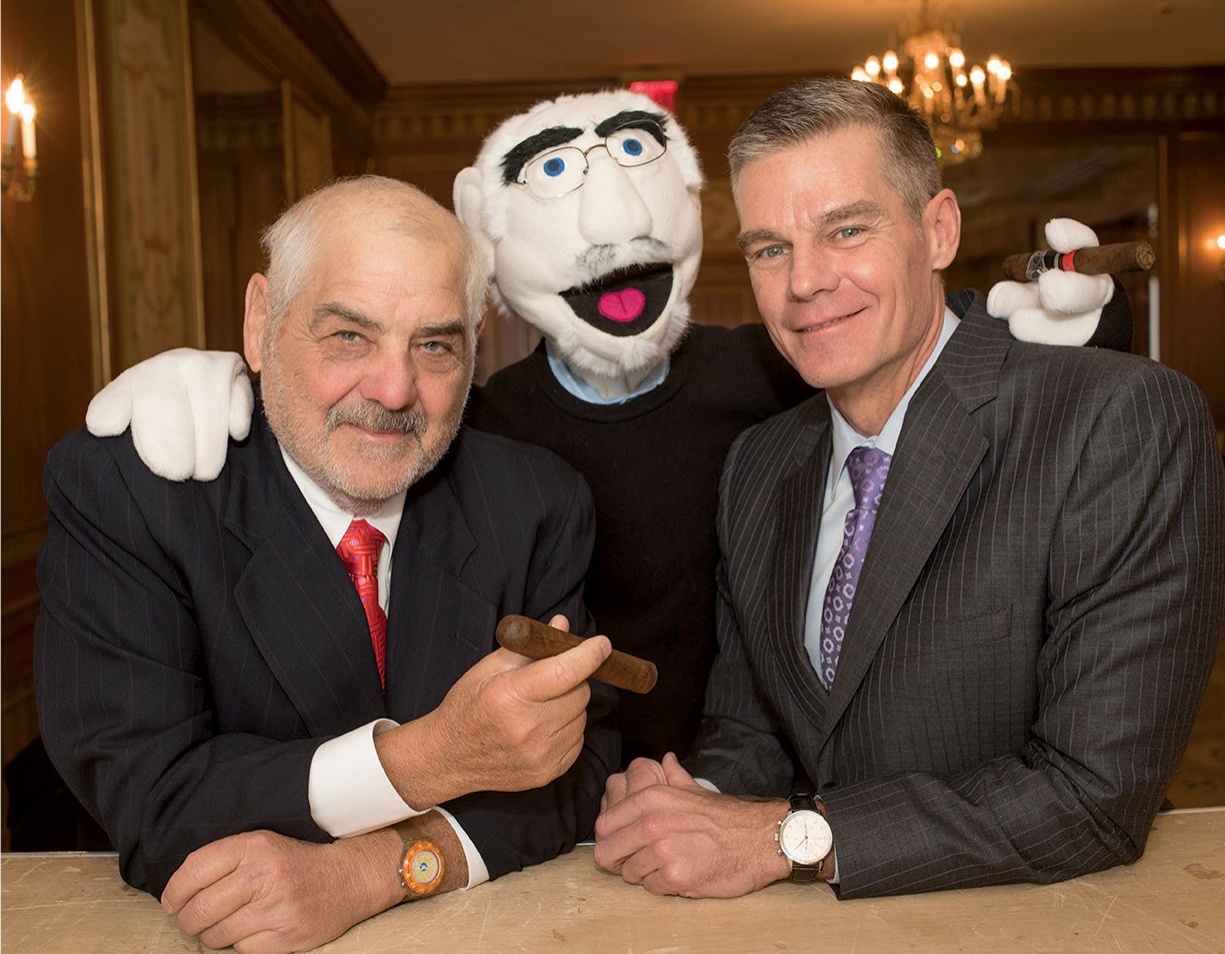
2018: Marvin R. Shanken; Mini Marv puppet; and Pete Carr, Bacardi North America.
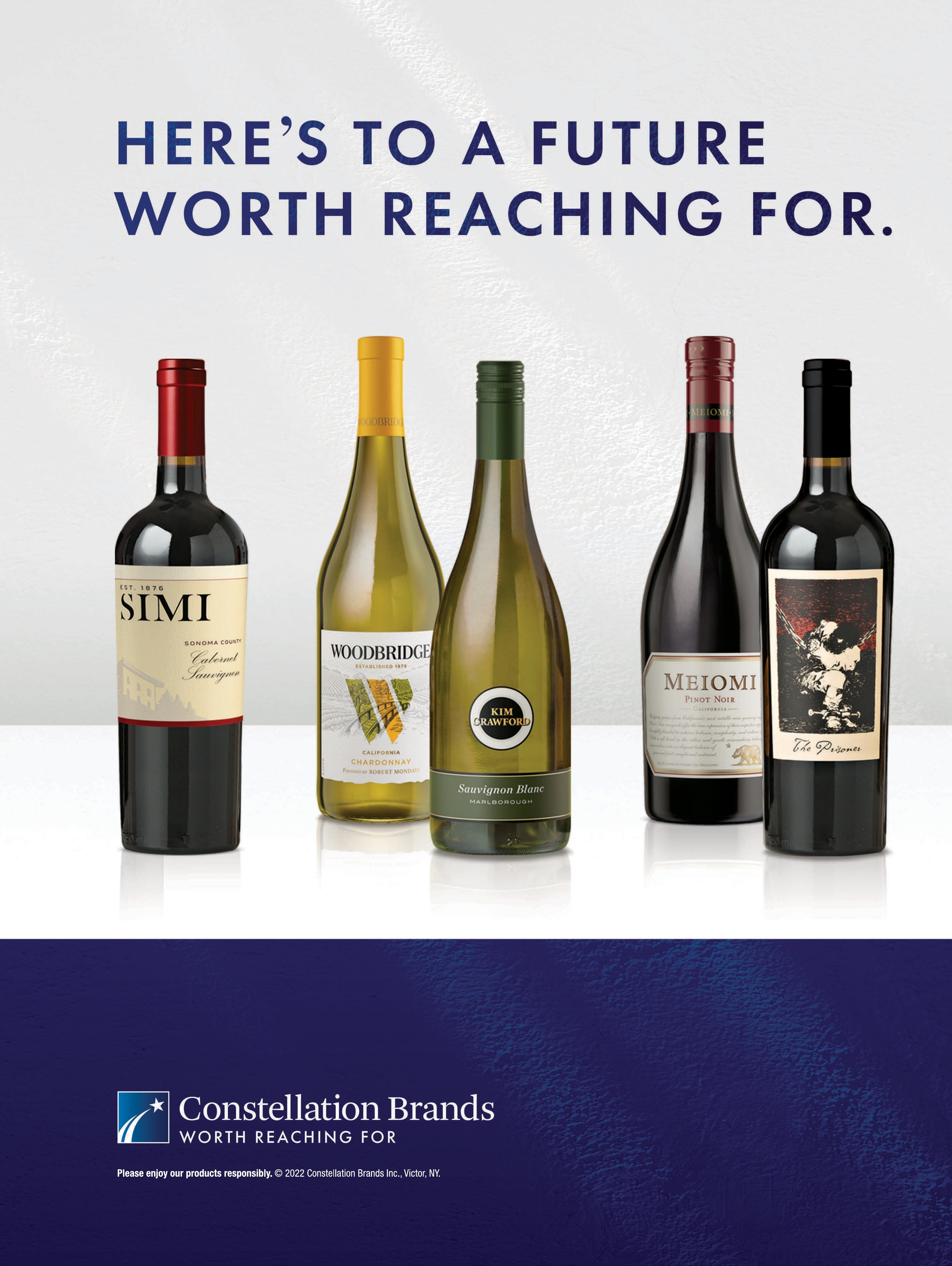
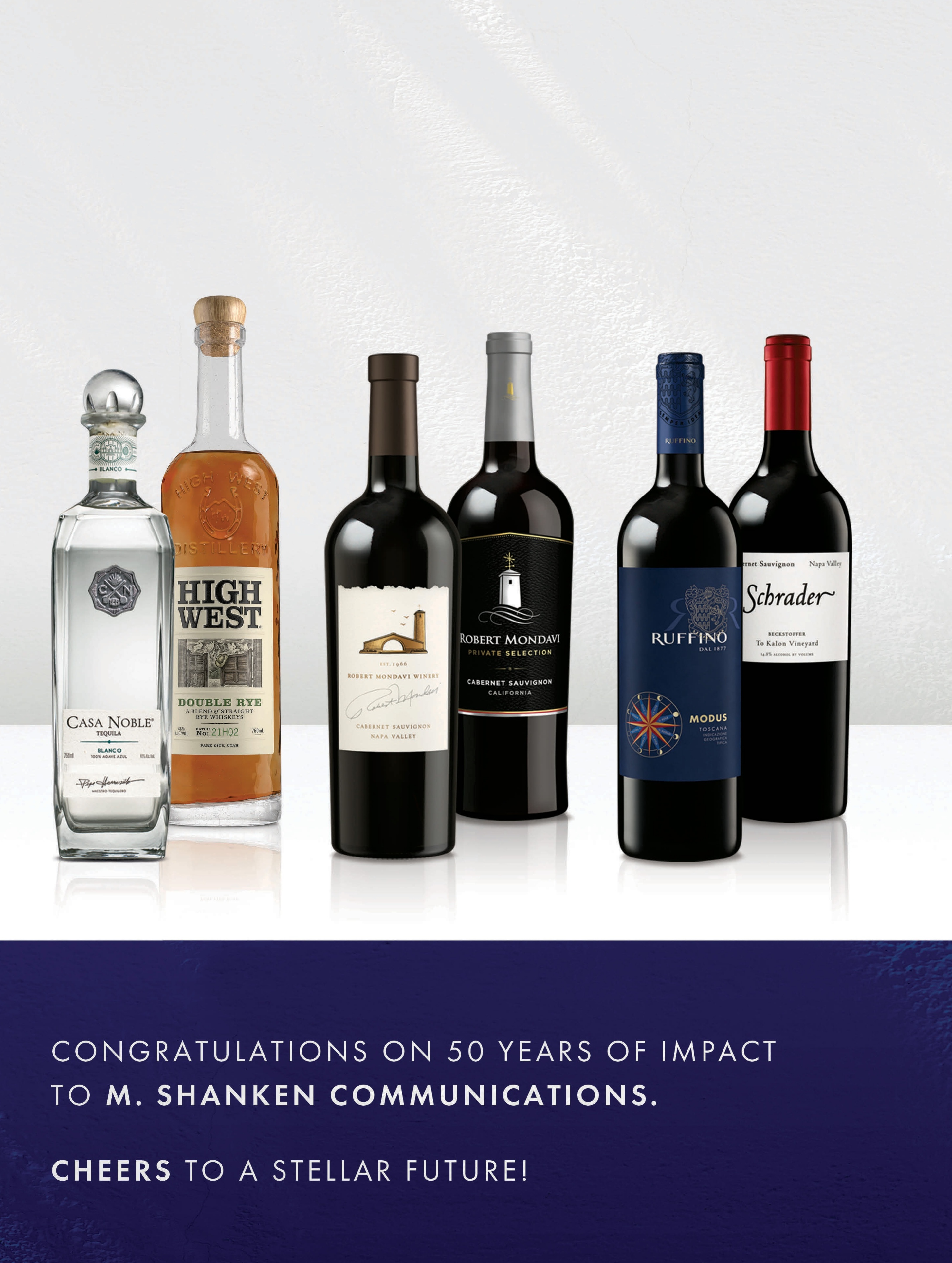
THE PORTFOLIO • WINE SPECTATOR
Wine Spectator
1979
F ew magazines have shaped an industry like Wine Spectator. The leading publication for all things wine has grown and evolved over its 46-year history into a must-read for all levels of enophiles, from grapegrowers and wine producers to restaurateurs, retailers and, of course, consumers. Marvin R. Shanken purchased Wine Spectator in 1979. At the time, the publication was a tabloid newspaper with a small circulation. But Shanken admired it from the start, lauding its integrity and unpretentious reporting. Both of those attributes have been key pillars for Wine Spectator and remain crucial today.
After purchasing Wine Spectator from founder Bob Morrisey, Shanken reimagined the publication. Over the course of many years, he built up its editorial staff and advertising base, and instituted many redesigns to modernize its look, feel and content. In the early and mid 1980s, Wine Spectator evolved from a newspaper to a magazine, and in 1993 it made a huge leap, broadening its focus to become a true lifestyle publication for people who love wine. This meant adding in stories about travel, dining and cooking, among other topics, all while maintaining a core dedication to the wine industry. That shift proved instrumental in making Wine Spectator the publication it is today.
“Our readers embraced our new approach, circulation soared, and the rest is history,” Shanken said in 2016 in Wine Spectator’s 40th anniversary issue. Today, Wine Spectator is read by more than 2.7 million people.
Former executive editor Thomas Matthews credits Wine Spectator’s success to its integrity and independence, as well as the expertise of its staff. “Our primary loyalty has always been to our readers, and Marvin has had an unerring vision of what our readers want,” he says. “By adhering to a strict code of ethics and upholding the standards of professional journalism, we have earned our readers’ trust and loyalty.”
Matthews, who served as executive editor of Wine Spectator for more than 20 years, adds that the magazine has always prioritized reporting over influence within the industry. The magazine’s editors have extensive knowledge of the wine regions they cover and they taste wines blind so that there’s no sway from labels and brands. “By throwing the spotlight on talented winemakers and emerging regions, we’ve helped support the growth of the wine industry,” Matthews says. “Wine Spectator has played an active and important role in helping wine become a fundamental element in contemporary culture.”
This effort has been supported by Wine Spectator’s Restaurant Awards program, which Shanken launched in 1981 to celebrate restaurateurs who make a serious commitment to wine. In the early days, very few venues qualified for the honor. But today, there are more than 3,000 restaurants globally who hold a Wine Spectator Restaurant Award.
“I would go to a lot of restaurants, and they had good food but they didn’t pay attention to wine,” Shanken recalled in 2016. “Today, the Restaurant Awards program is incredibly successful. Our wine list awards have become an important sign of quality for both casual and fine dining establishments in America and abroad.”
Wine Spectator’s annual Wine Experience events are equally important. The Wine Experience debuted in 1981 and was the first all-inclusive wine event of its kind to bring together winemakers from around the globe. “The Wine Experience has always been a high point,” Matthews says, noting that it creates a social platform for the wine community at all tiers, from vintners to the trade to consumers. “Prior to the Wine Experience, most wine regions were isolated autonomous units. Winemakers didn’t really know each other and they didn’t have places where they came together. The Wine Experience has been a key part in creating a global wine community.”
As the global wine community continues to evolve, Wine Spectator remains committed to reaching wine consumers across multiple platforms. WineSpectator.com, which launched in 1996, has become a leading digital source for information about wine, and it is accompanied by several other digital offerings, including mobile apps that consumers can use to search for wine ratings and tasting notes, and an app for the magazine’s Restaurant Awards, which allows users to find Wine Spectator–honored restaurants on the go. In addition, the magazine has a longstanding scholarship fund—created in 1983—that supports educational institutions with wine-centric course lists that prepare students for careers in wine and hospitality. The scholarship is funded by proceeds from the Wine Experience.
“I’ve said from the beginning: We’re not in the publishing business, we’re in the education business,” Shanken said in 2016 in Wine Spectator’s 40th anniversary issue. “We take a very strong independent view. We are not perceived to be the voice of the wine trade, but simply the gatekeeper and guide for the wine consumer.”
Wine Spectator will continue its slow and steady evolution under recently appointed executive editor Jeffery Lindenmuth, who previously helmed Whisky Advocate for five years. “Marvin’s direction to me has been that it is all about the reader,” says Lindenmuth. “Readers trust in the integrity of our blind tasting methodology and the way in which we apply the 100-point scale for rating wines. This will remain the guiding principle of all we do.”
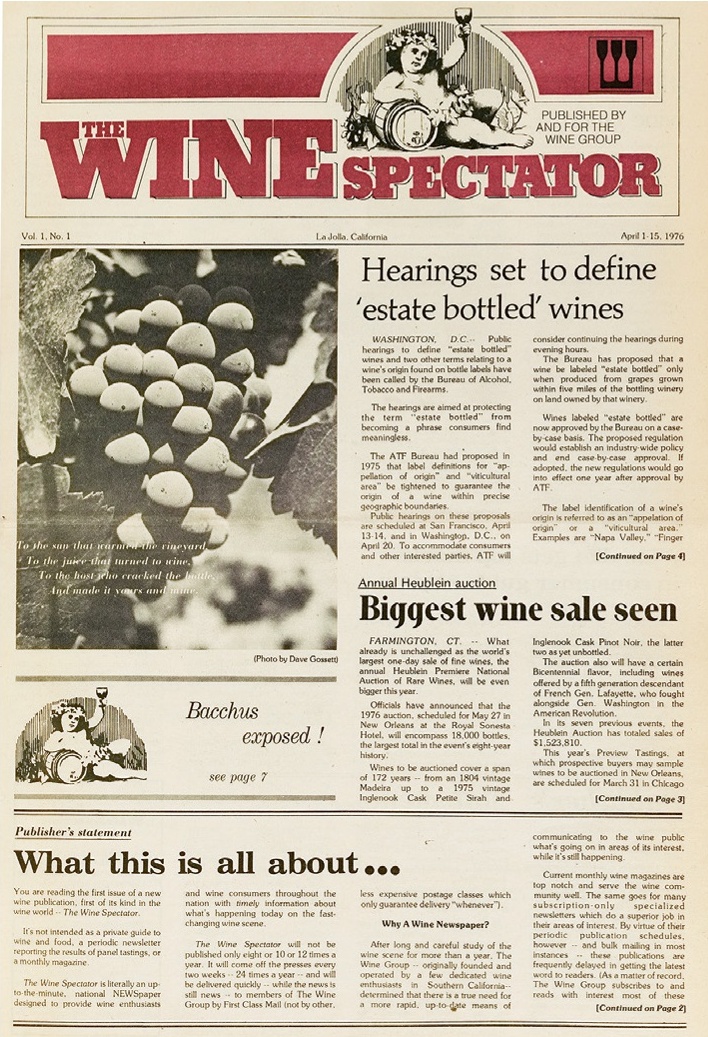
April 1, 1976
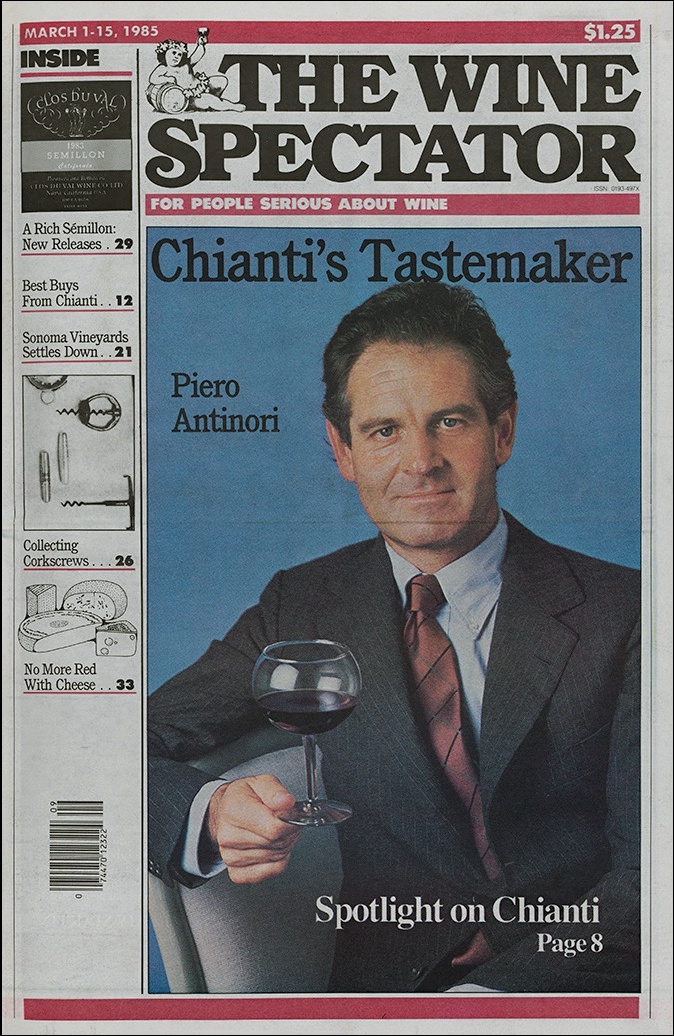
March 1–15, 1985
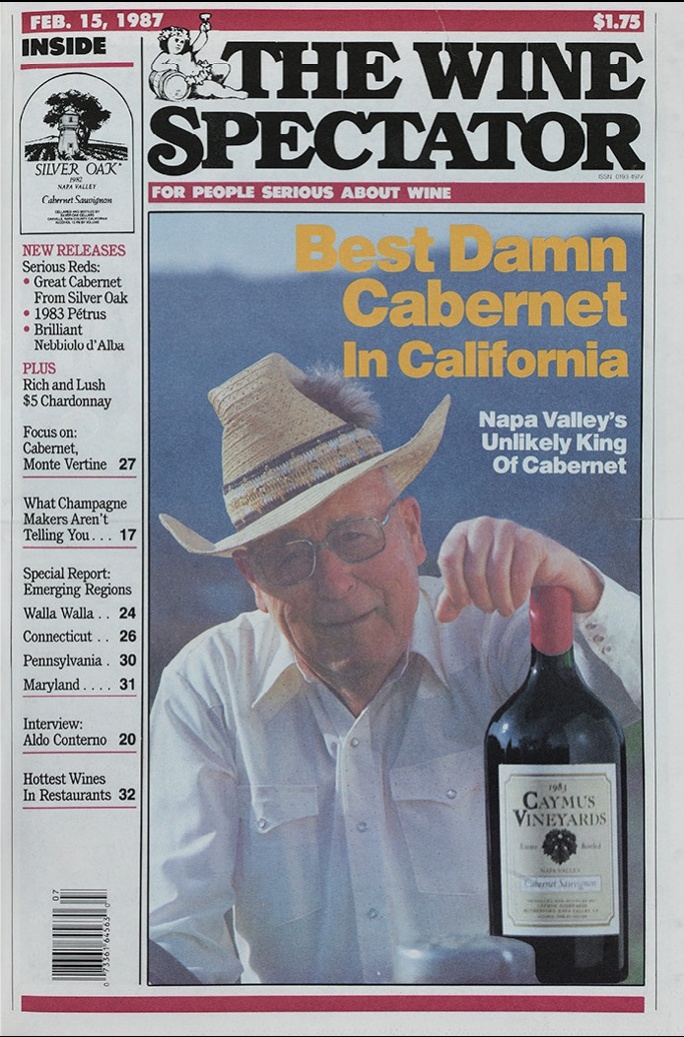
Feb. 15, 1987
Aug. 31, 1999
Oct. 15, 2003
April 30, 2011
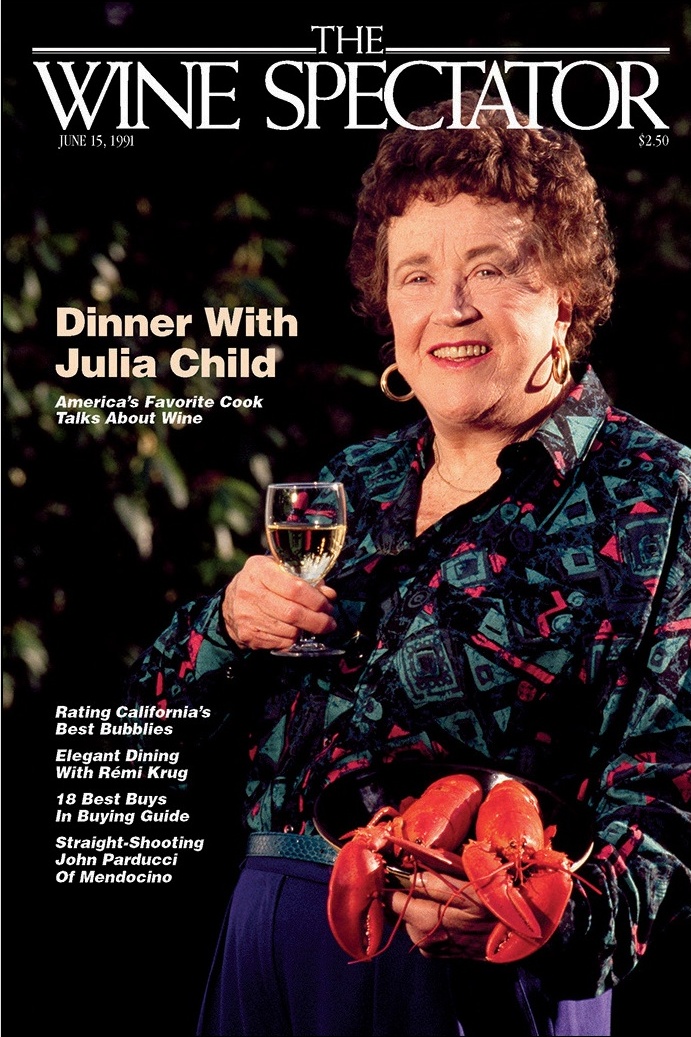
June 15, 1991
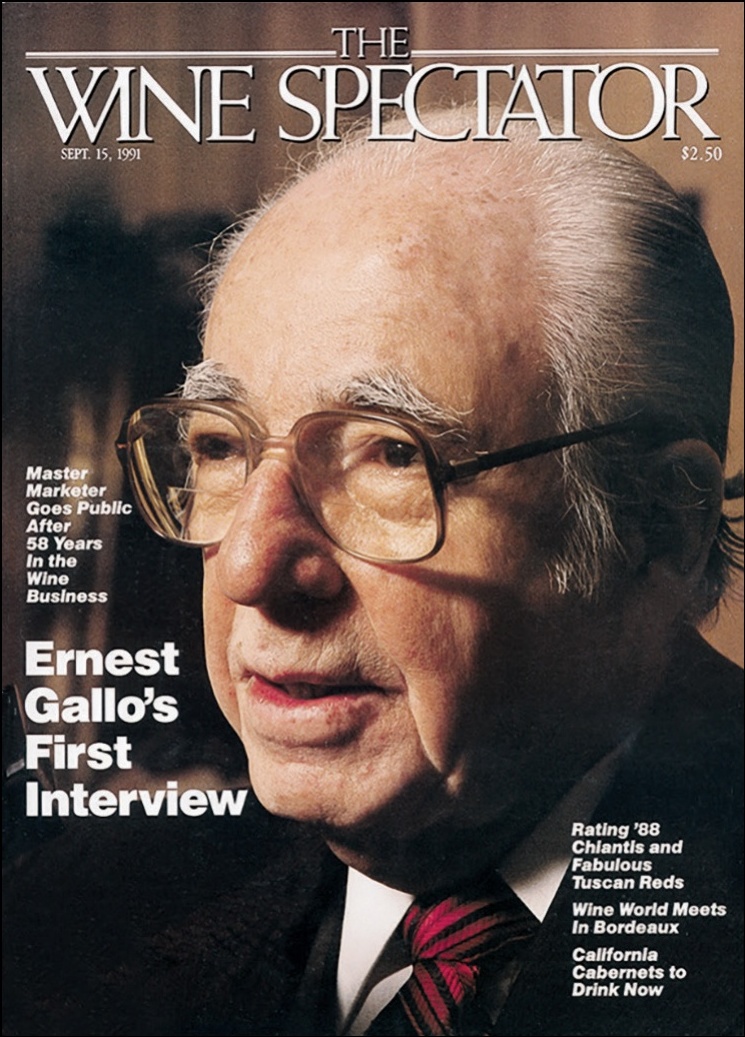
Sept. 15, 1991
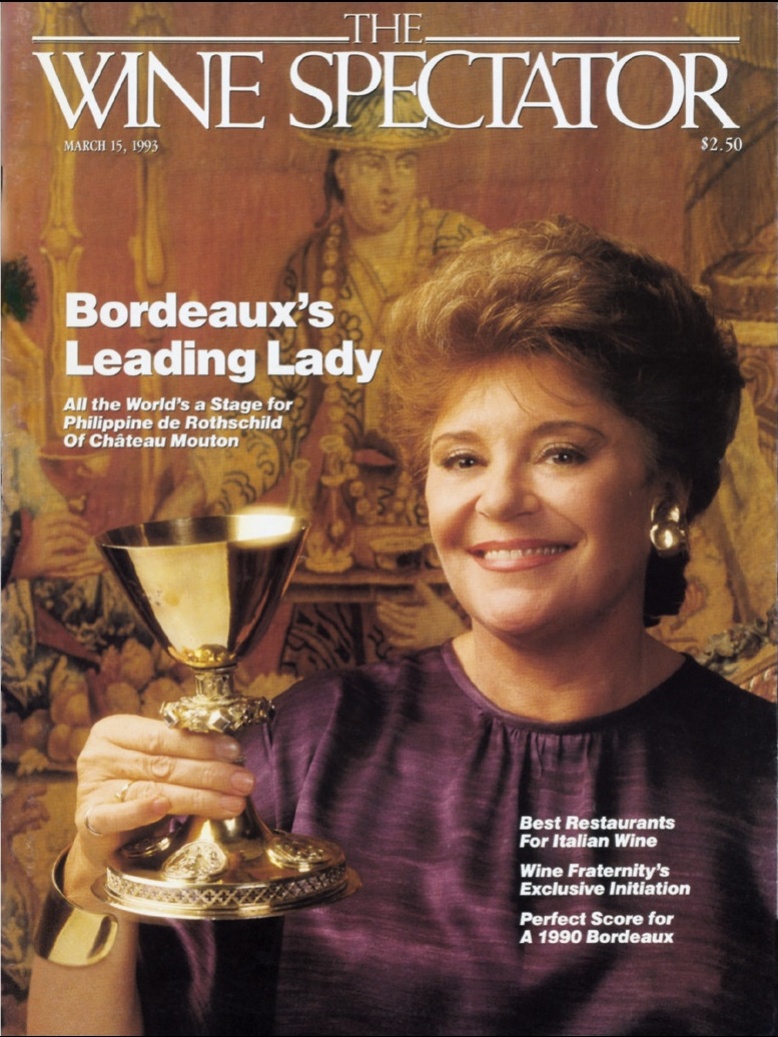
March 15, 1993
May 31, 2017
Dec. 31, 2021
Nov. 30, 2022
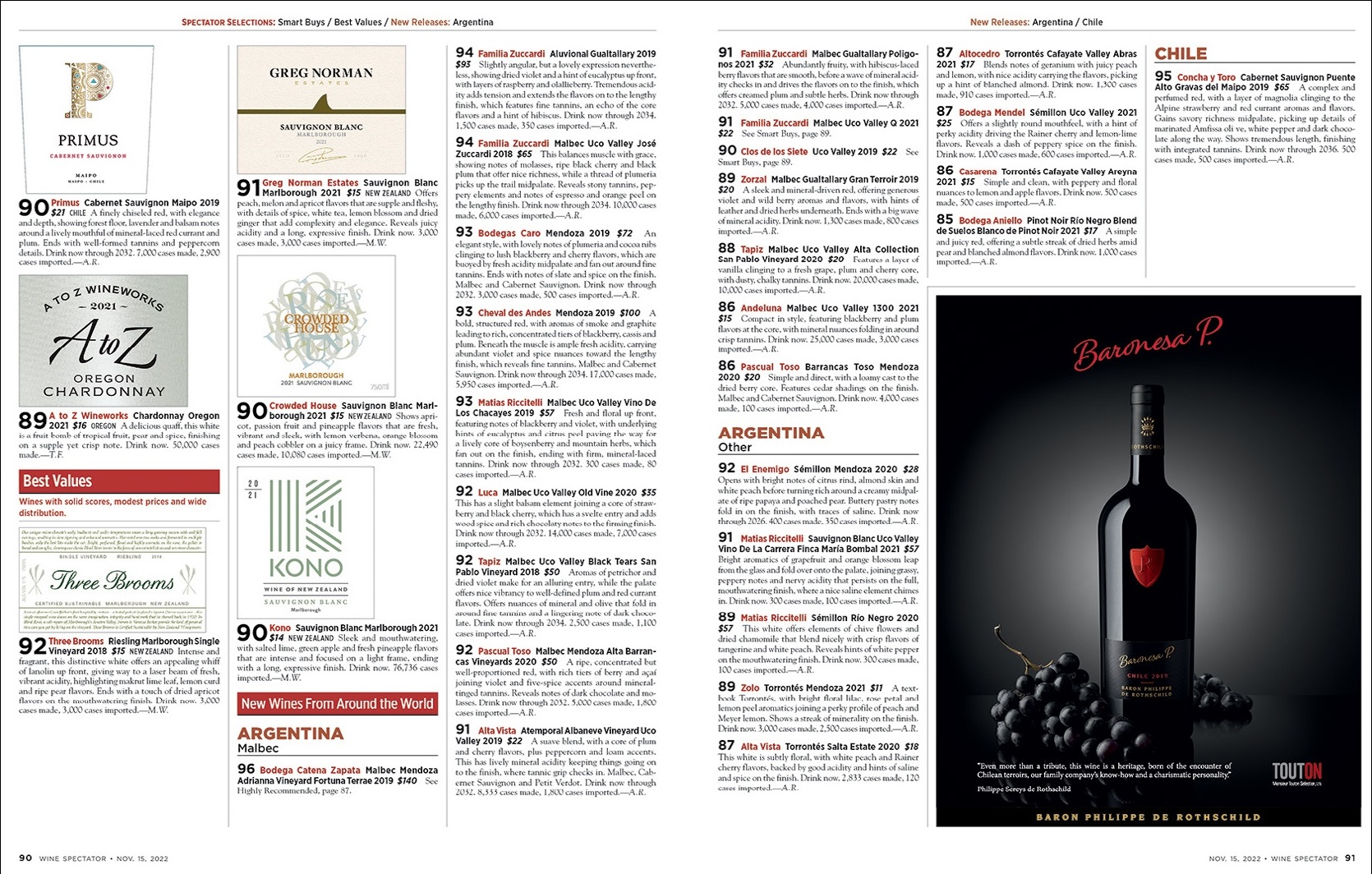
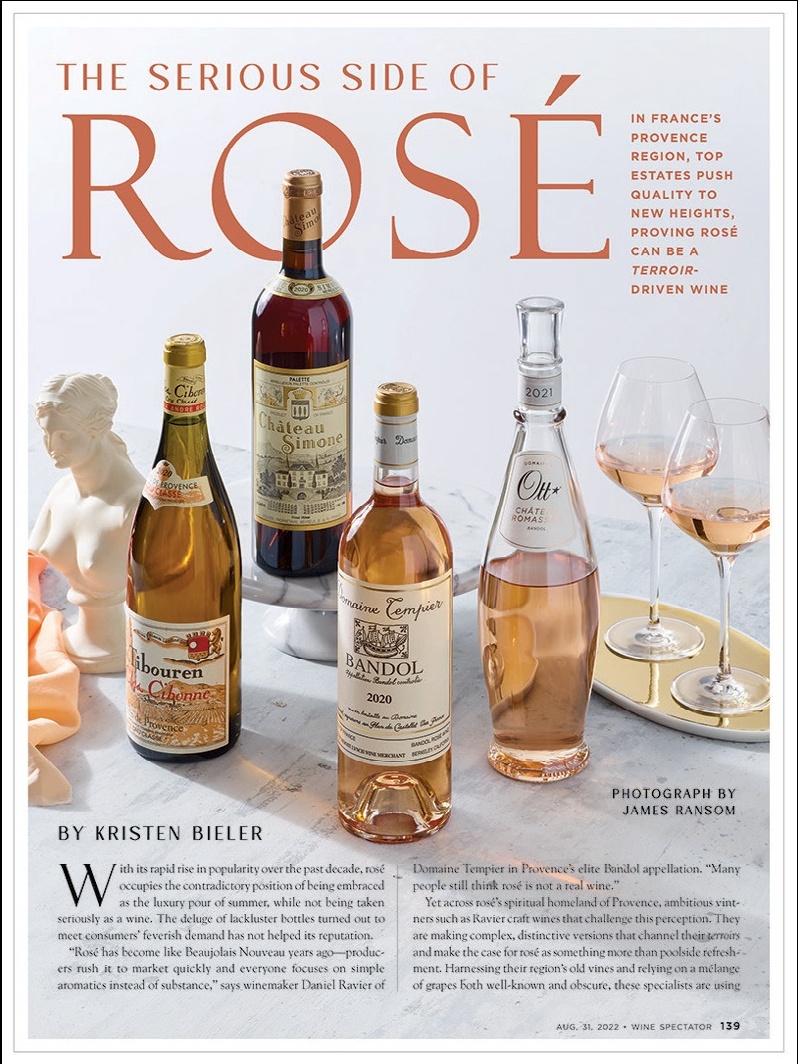
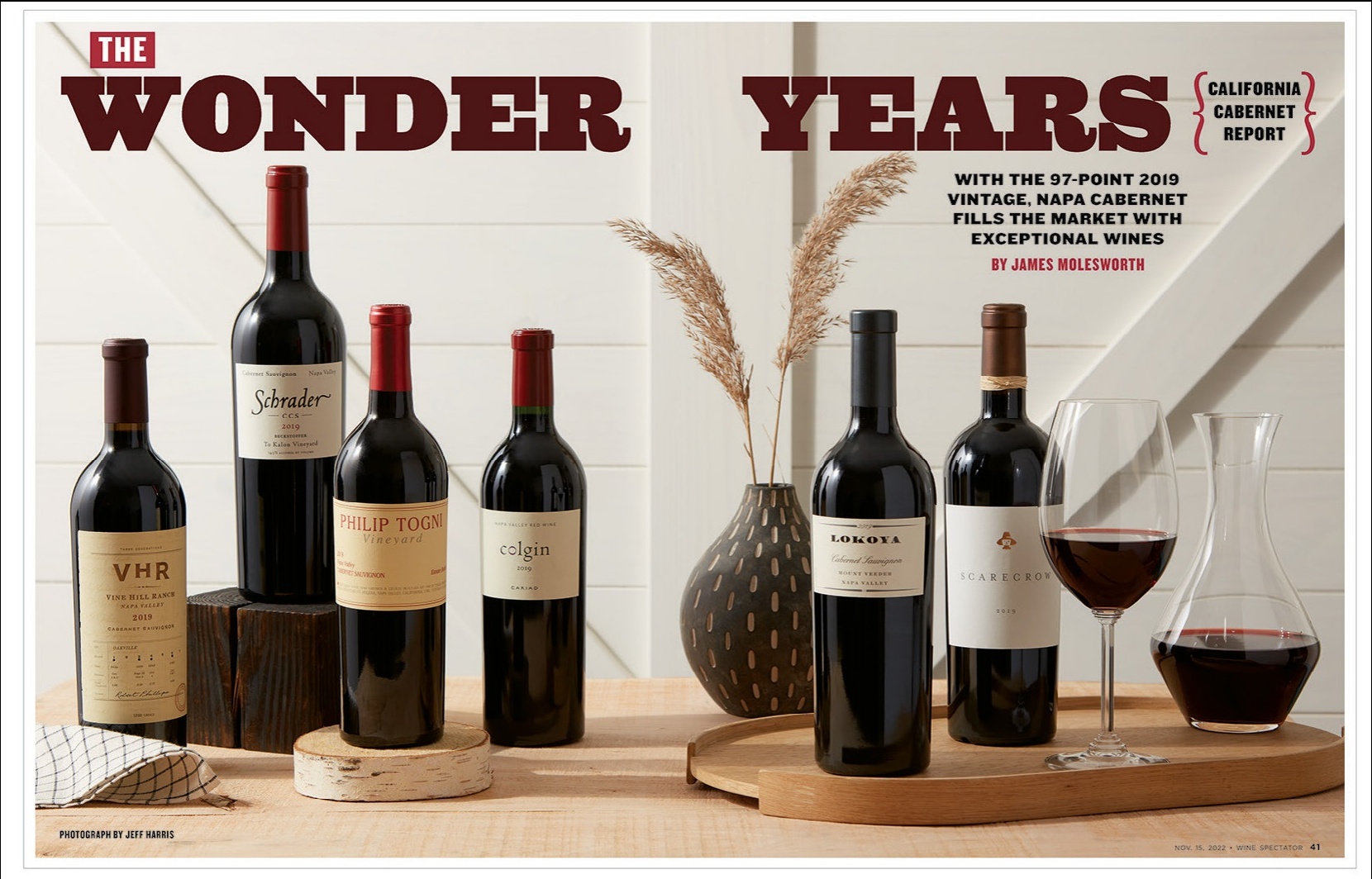
Wine Spectator covers the world of wine with a global perspective, from wine reviews to breaking news to in-depth tasting reports.
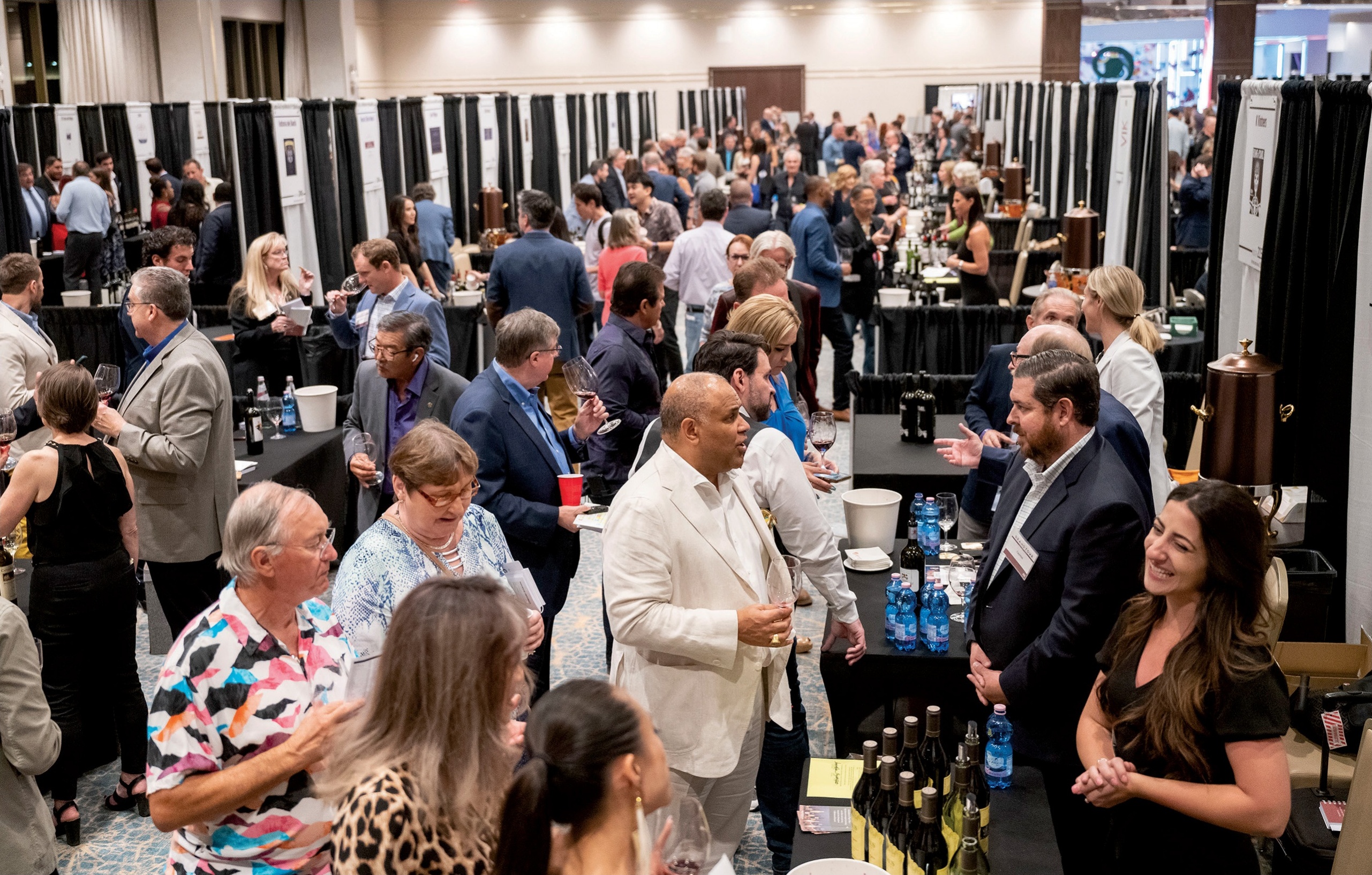
Wine fans sample hundreds of wines at the Las Vegas Grand Tour in 2022, one of three Grand Tour events in three different cities each year.
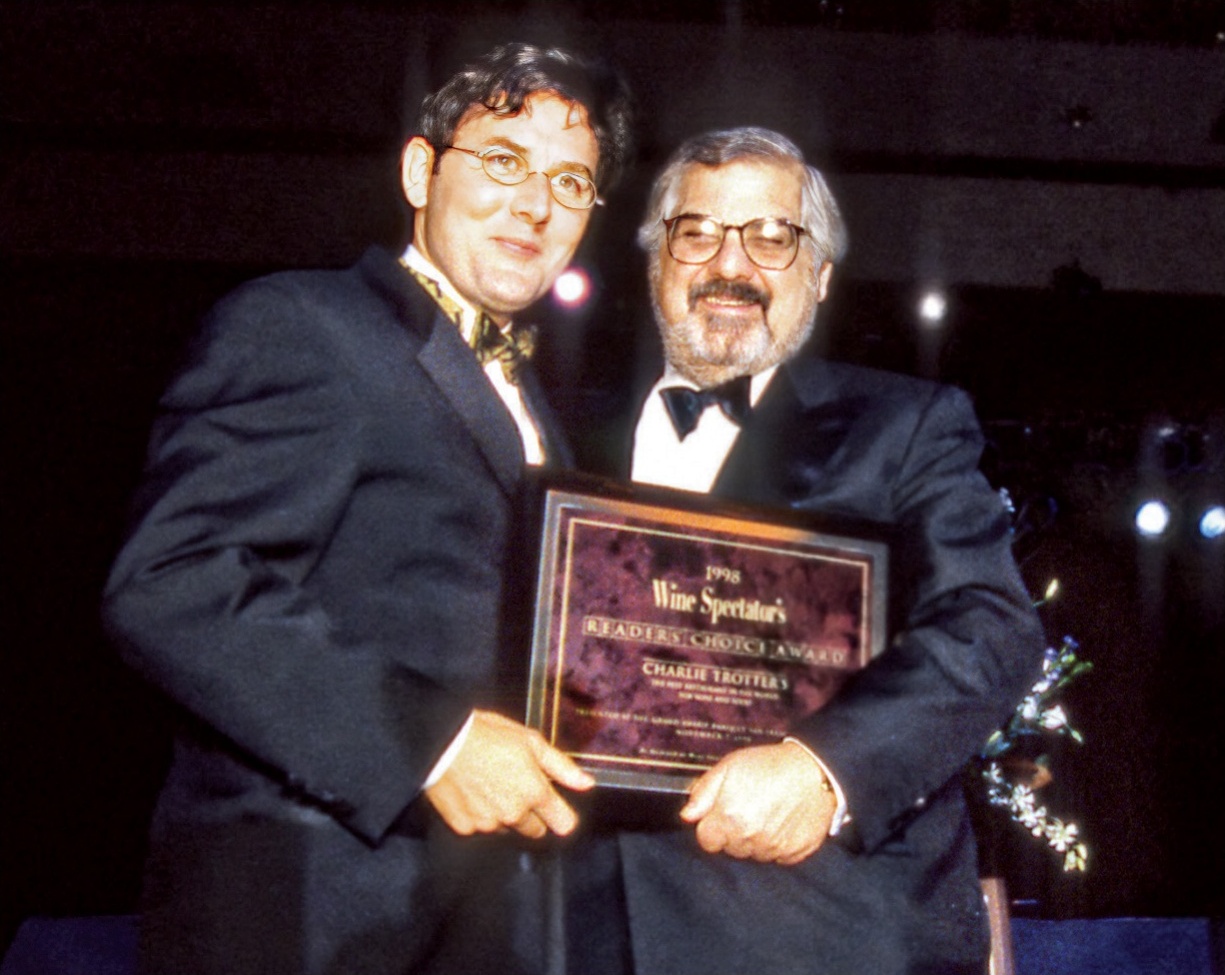
Restaurateur Charlie Trotter (left) receives the Readers’ Choice Award for the “Best Restaurant in the World for Wine and Food” at the Wine Experience in 1998.
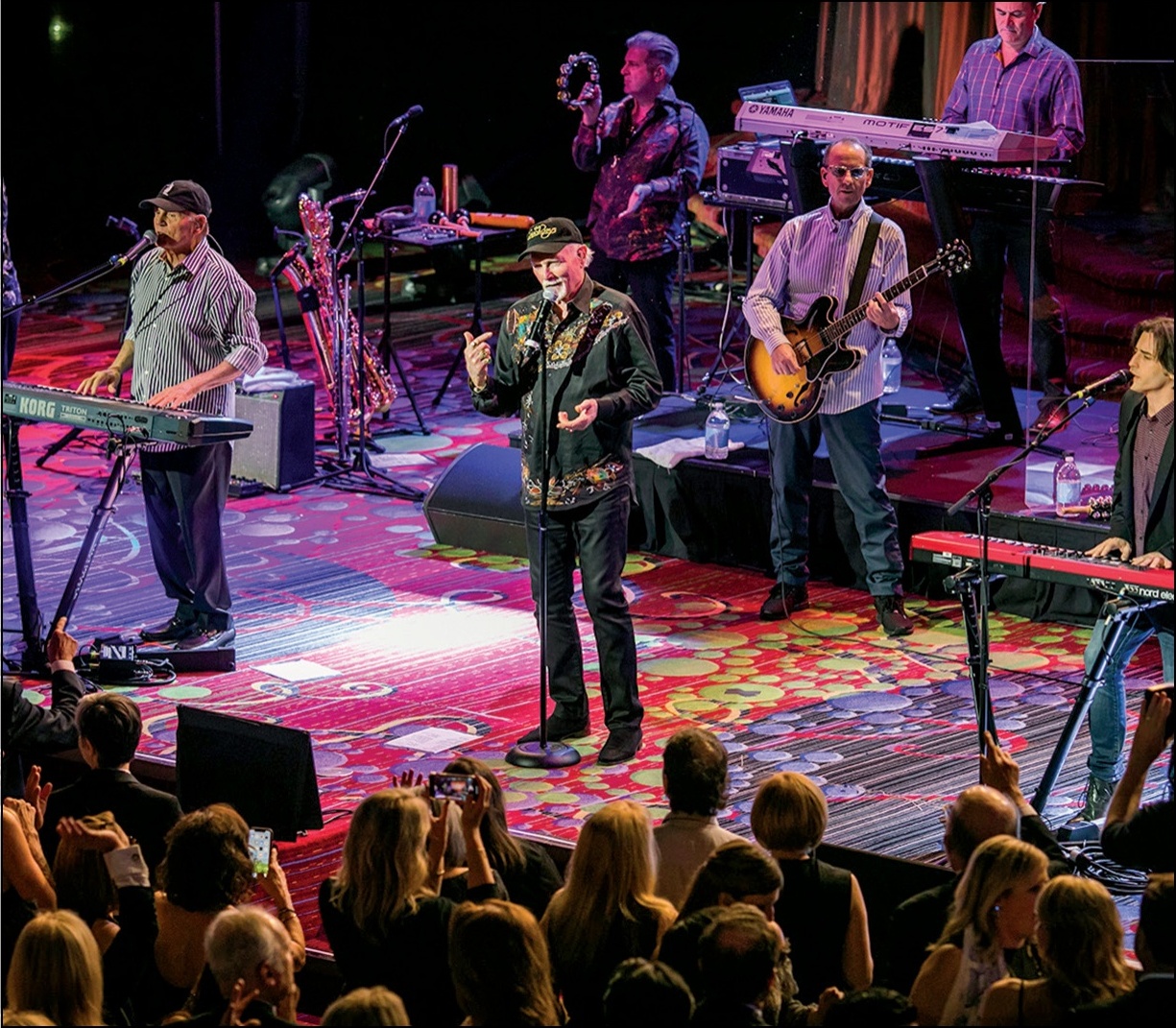
A performance by the Beach Boys caps off the 2019 Wine Experience.

Guests at the Grand Award Banquet in 2014 celebrate the past, present and future of wine.
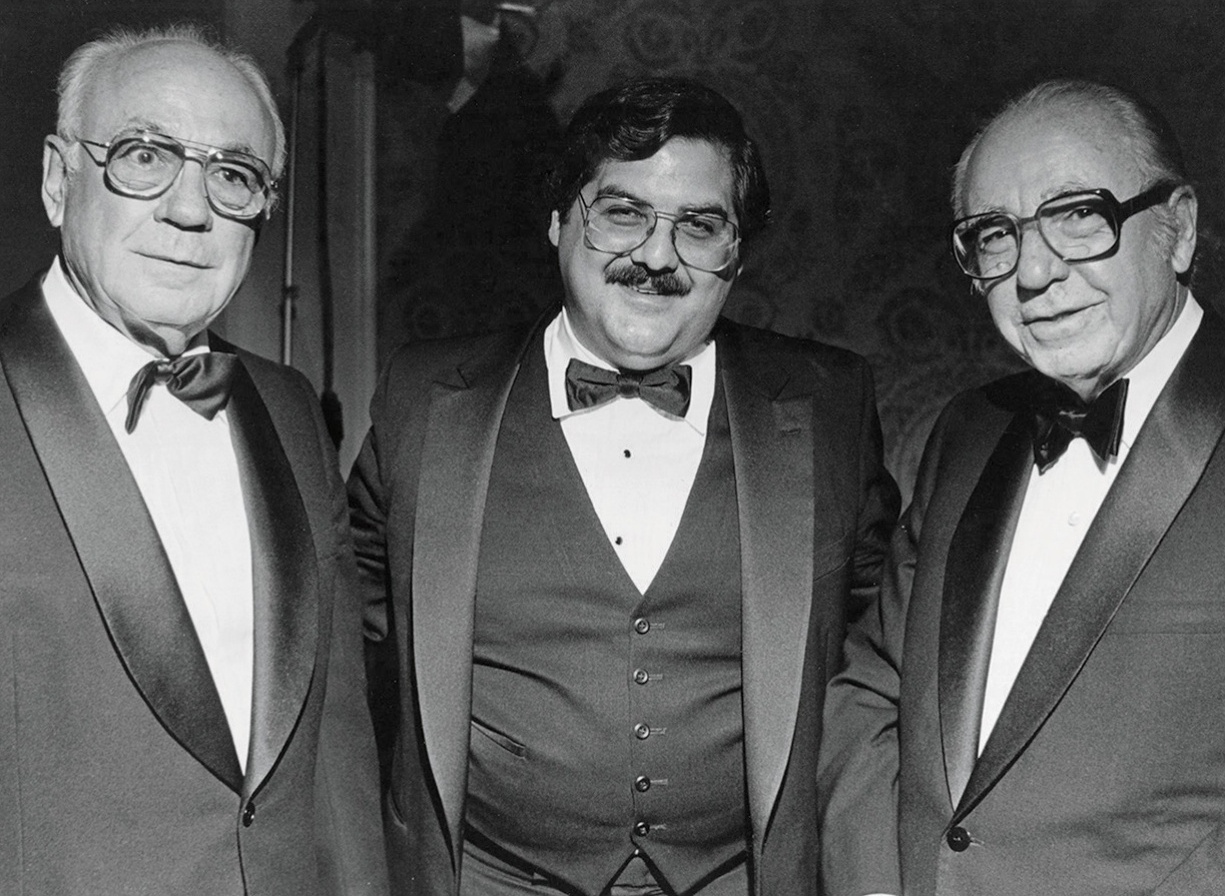
Marvin R. Shanken (center) welcomes California wine patriarchs Julio (left) and Ernest Gallo of E. & J. Gallo at the Wine Experience in 1983.
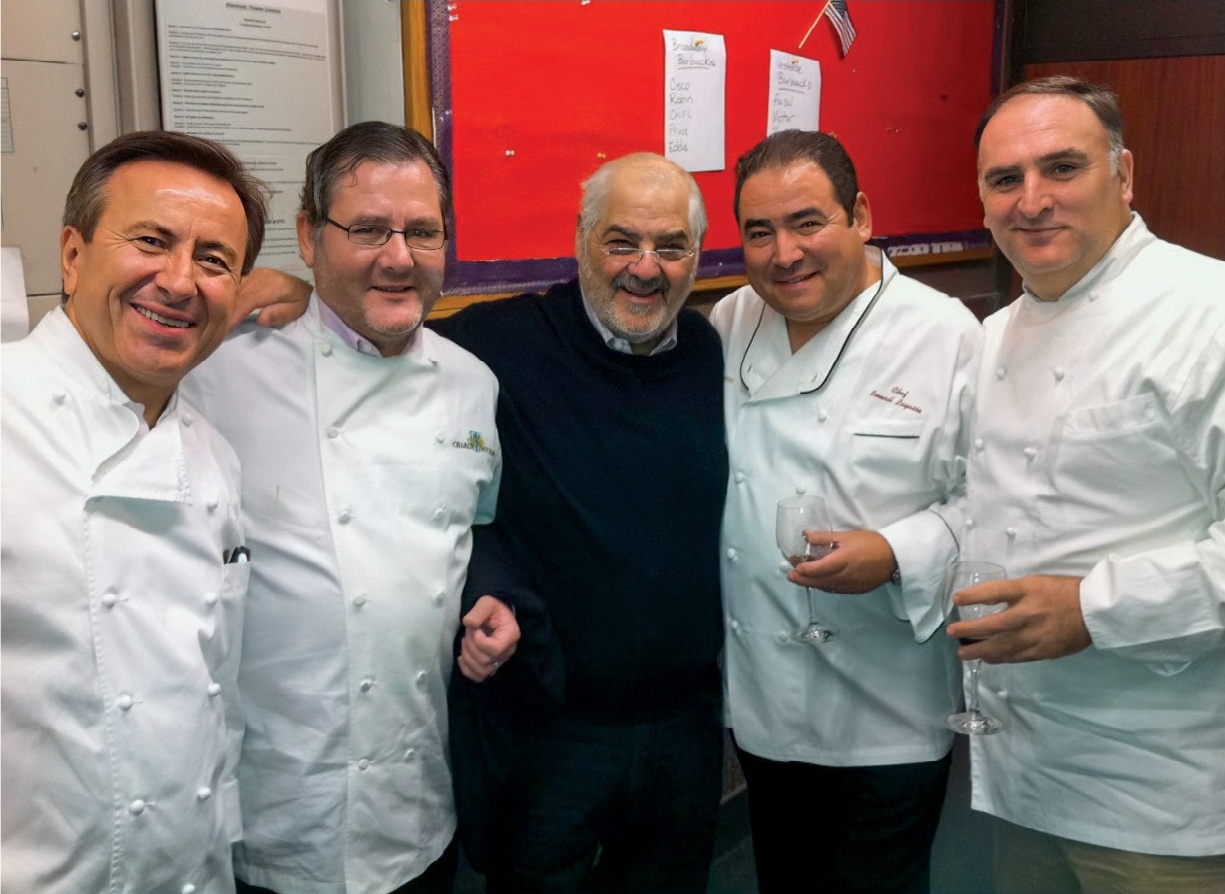
From left: Daniel Boulud, Charlie Trotter, Marvin R. Shanken, Emeril Lagasse and José Andrés at the Wine Experience in 2011.

Vintner Christian Moueix (right) at a tasting of his 2021 Wine of the Year, Dominus Estate Napa Valley 2018, at the 2022 Wine Experience, alongside senior editor and moderator James Molesworth.
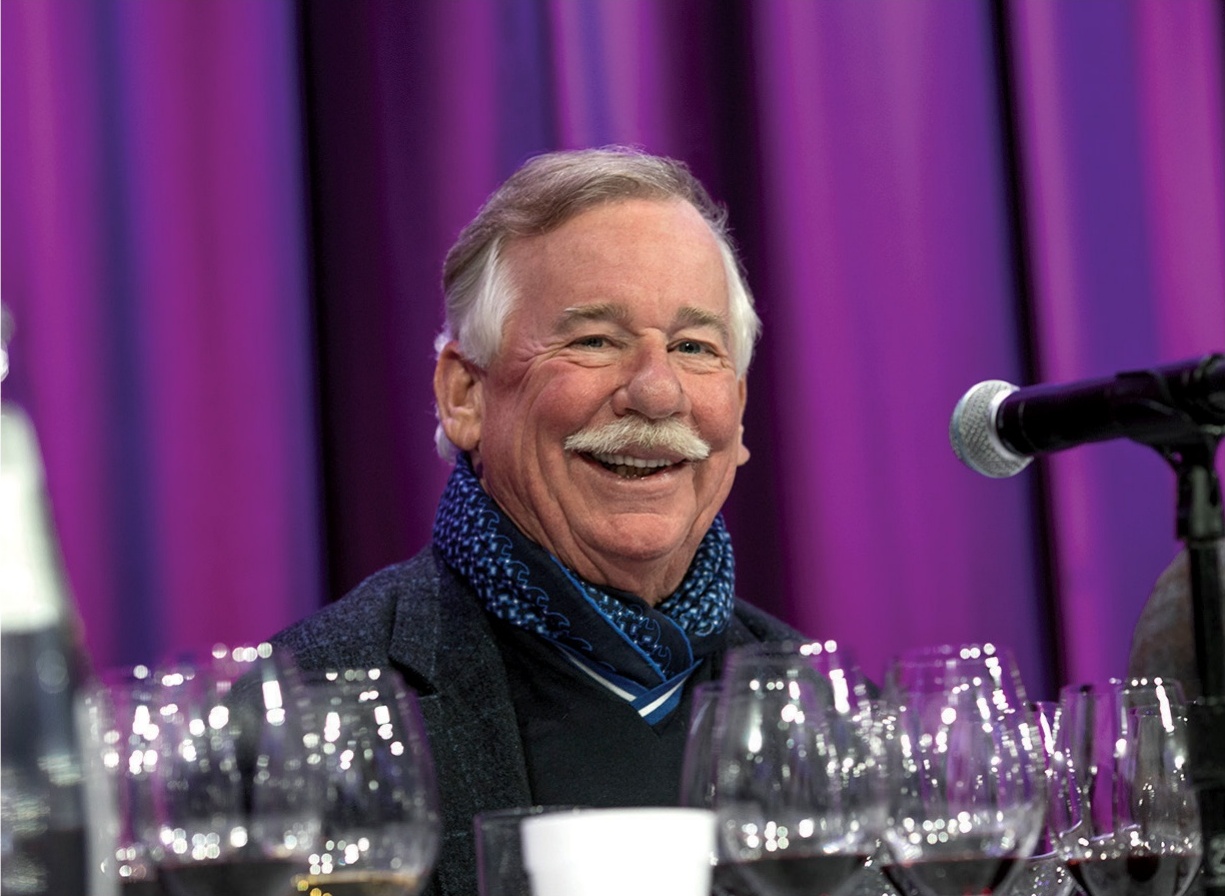
Fred Schrader of Schrader Cellars takes part in a 2018 panel tasting of six of his highly sought-after Napa Valley Cabernets.
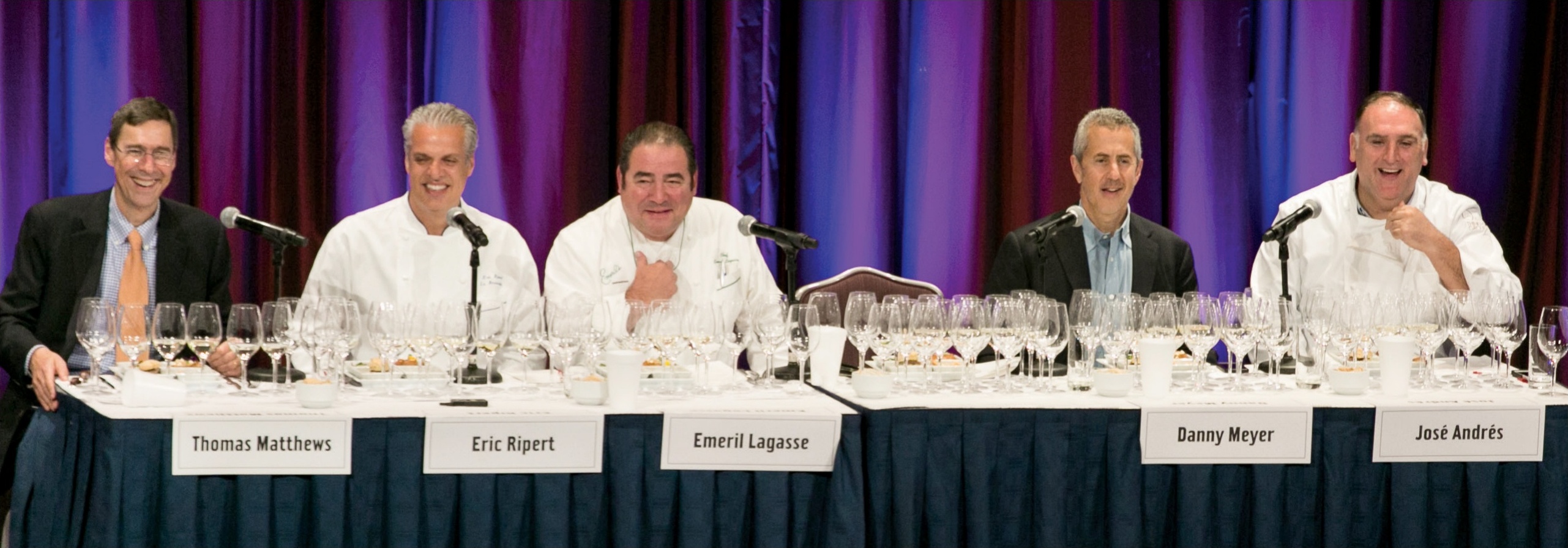
Executive editorThomas Matthews (left) moderates the Chefs’ Challenge seminar in 2014, with (from left) Eric Ripert, Emeril Lagasse, Danny Meyer and José Andrés sharing their signature dishes—and accompanying wine pairings—with the hungry crowd.

Diamond Creek Vineyards owner Boots Brounstein is honored as a Wine Star in 2016.
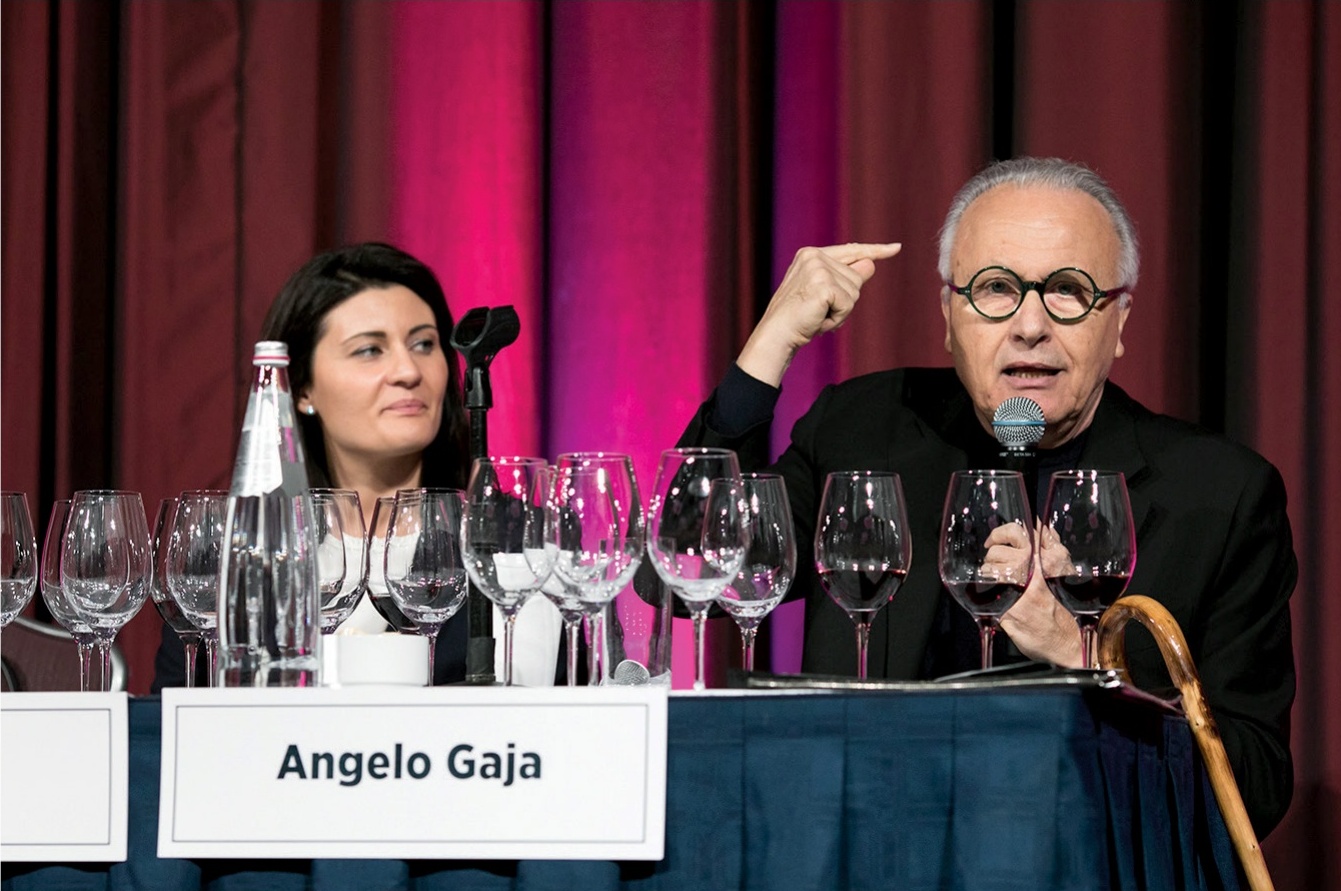
Gaia Gaja and her father, Angelo, serve four of their Gaja Barbarescos at a Wine Experience seminar in 2017.
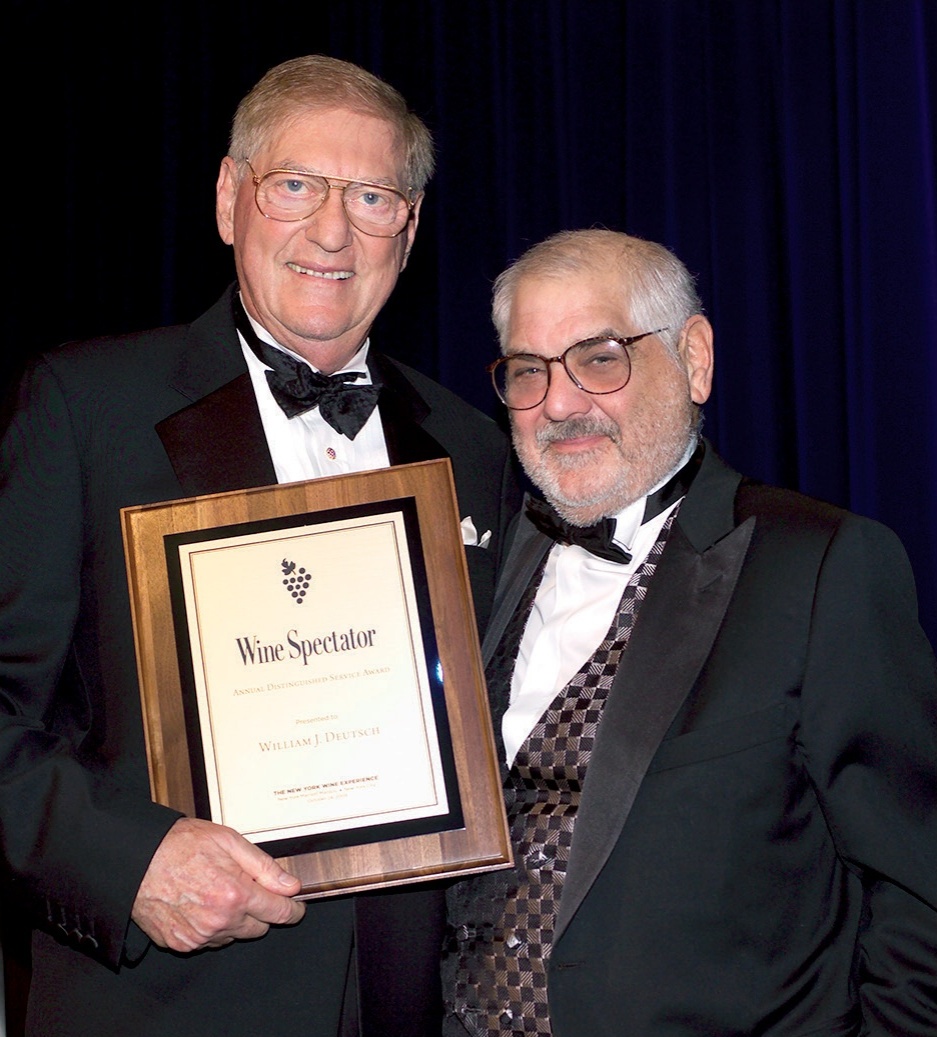
Bill Deutsch (left) of W.J. Deutsch & Sons is presented Wine Spectator’s Distingished Service Award in 2009.
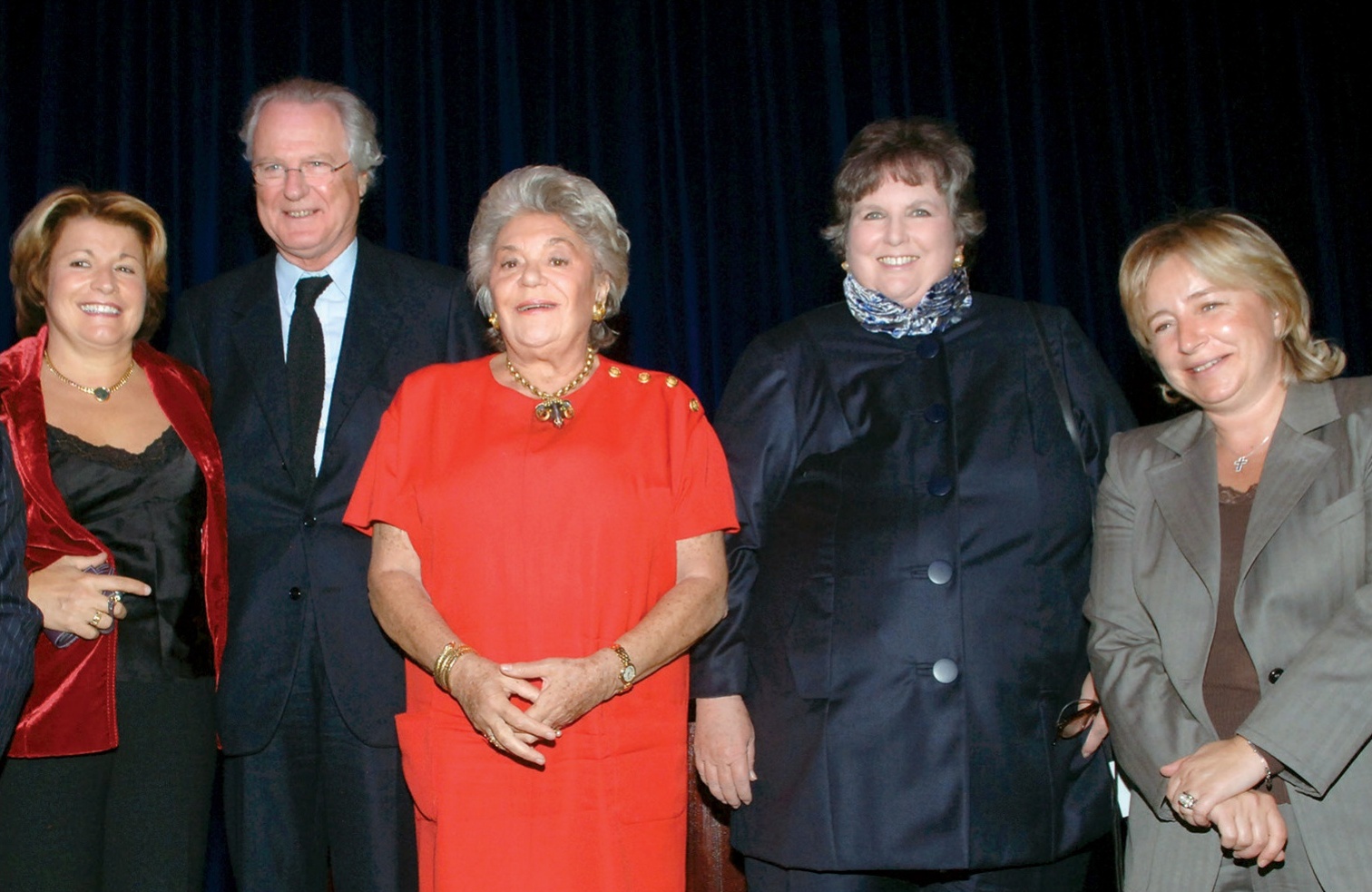
In 2005 all five Bordeaux first-growths are offered to Wine Experience attendees. From left: Corinne Mentzelopoulos of Château Margaux; Eric de Rothschild of Château Lafite Rothschild; Philippine de Rothschild of Château Mouton-Rothschild; Joan Dillon of Château Haut-Brion; and Florence Rogers-Pinault of Château Latour.
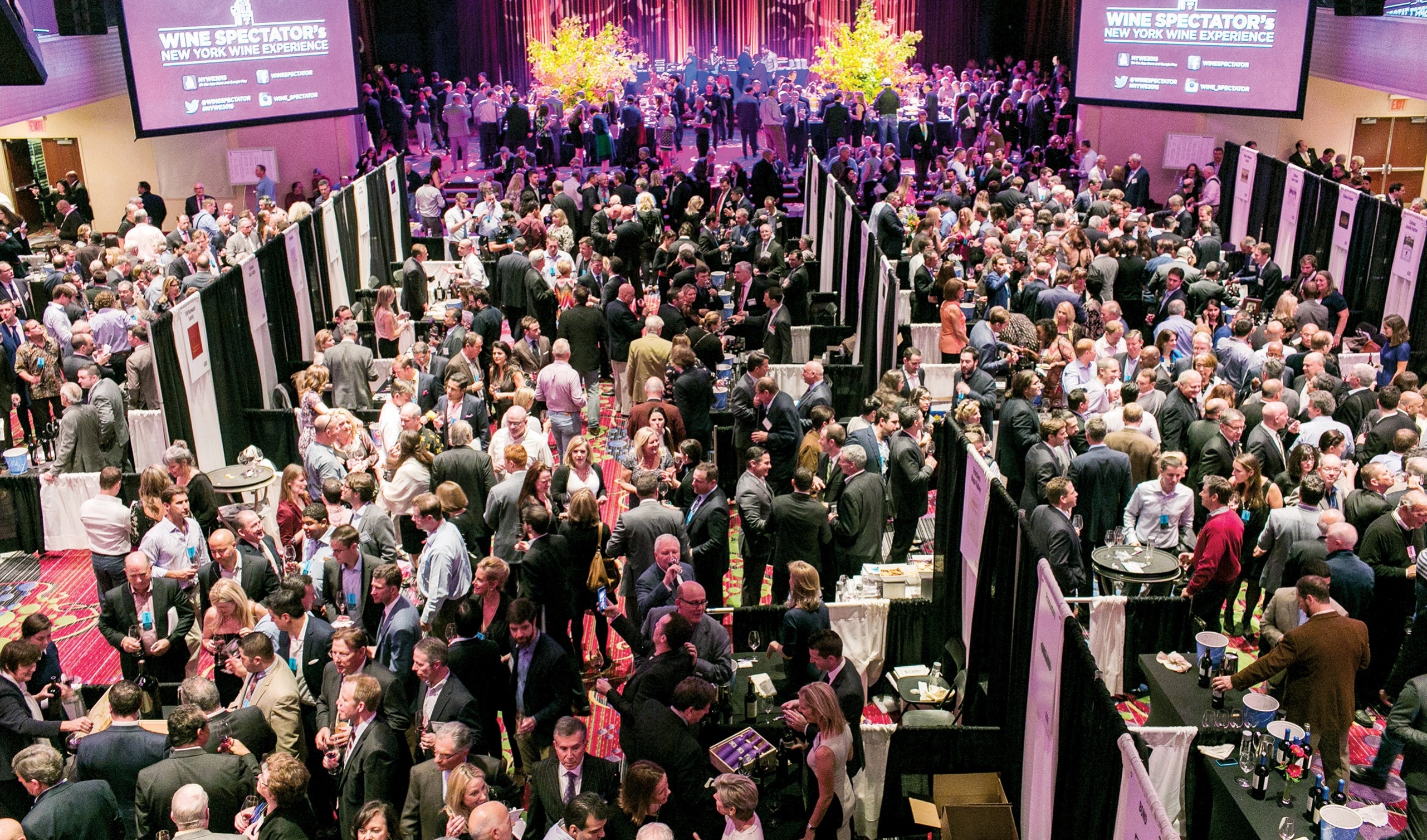
Wine Experience attendees gather at the Grand Tastings in 2015.
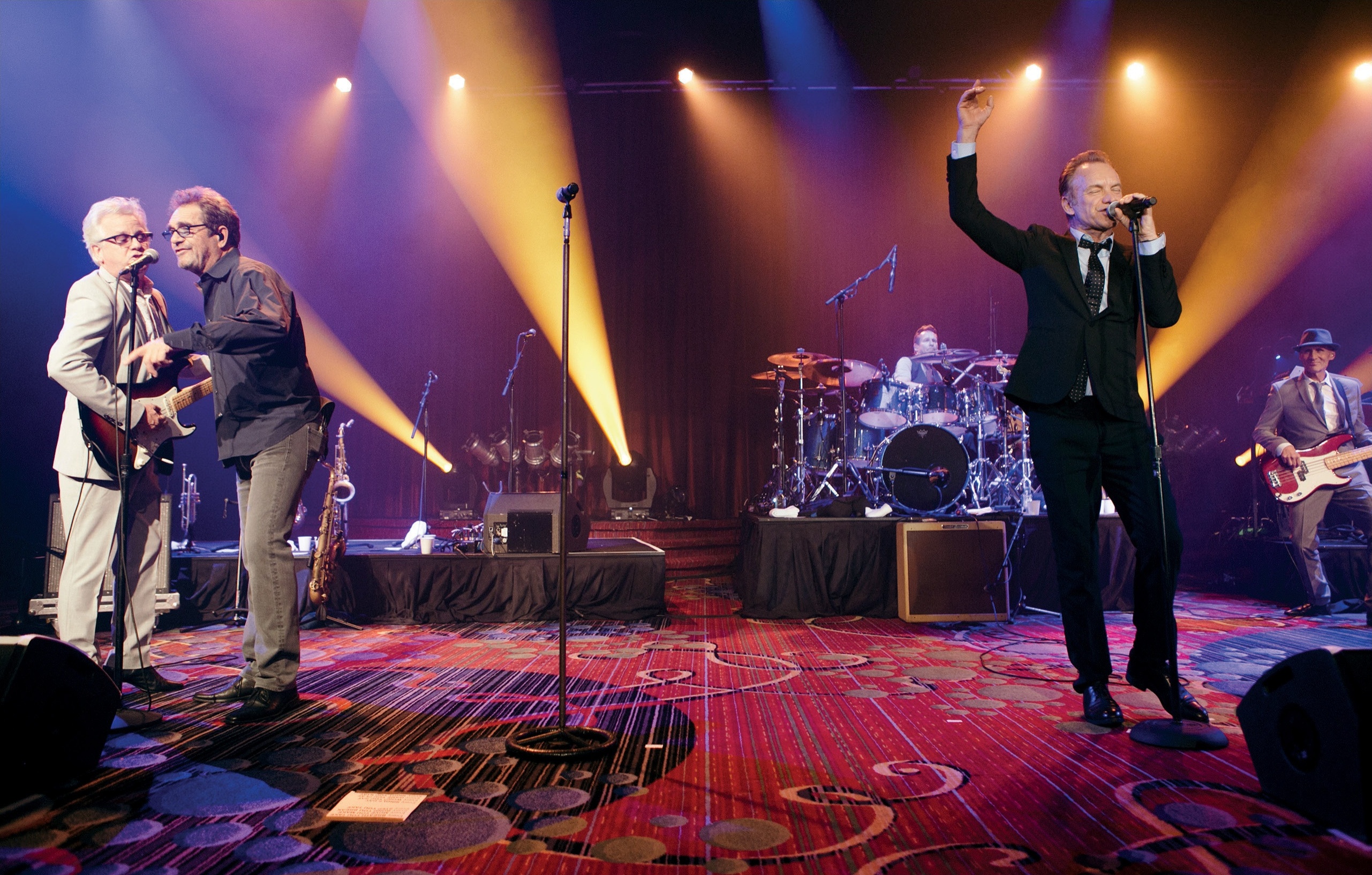
Huey Lewis and the News join Sting on stage for the finale to the 2016 Wine Experience festivities.

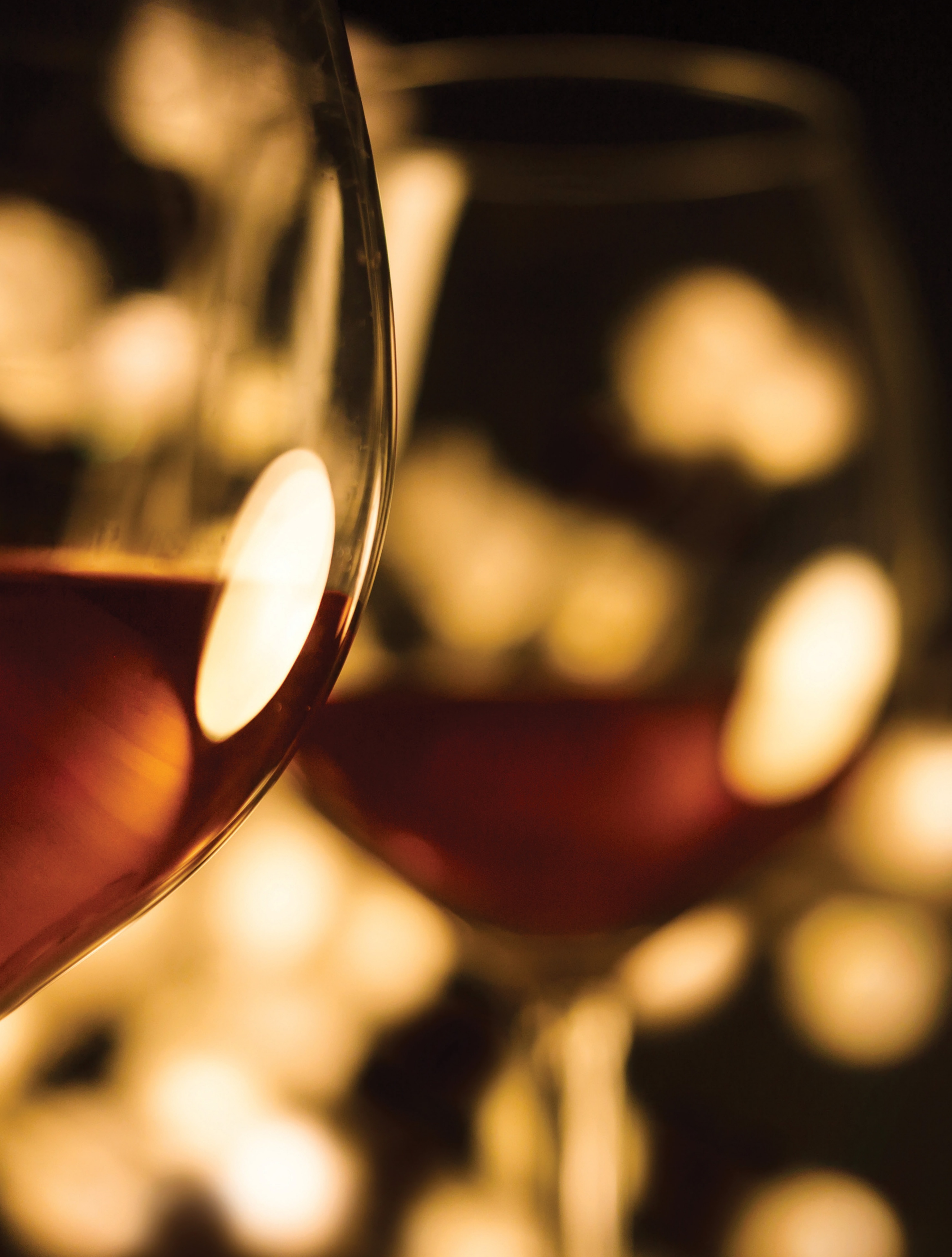
THE PORTFOLIO • MARKET WATCH
Market Watch
1981
M arvin R. Shanken launched Market Watch in September 1981 to fill the void for quality beverage alcohol reporting geared to the on- and off-premise. The third publication to join his portfolio, following Impact newsletter and Wine Spectator, Market Watch has established itself as a leading magazine for the beverage alcohol trade, enjoyed today by not only drinks retailers, restaurateurs and bar owners, but also by producers, suppliers, wholesalers and distributors.
The magazine has always kept ahead of drinks trends while analyzing the entire market. According to Michael Moaba, vice chairman of M. Shanken Communications, who was managing editor of Market Watch when it was launched, “Market Watch has always strived to elevate reporting on beverage alcohol sales trends and marketing. It has continued to keep pace with the industry’s growing sophistication over the past 40-plus years. Each issue of Market Watch offers in-depth looks at specific wine and spirits categories as well as profile stories on the most influential and interesting companies in the business, from top importers and producers to both large chain and small, independent on- and off-premise operators. With that, Market Watch also prints big-picture stories about important topics that affect the beverage industry at large.”
Some of Market Watch’s notable cover stories over its 40-plus year history include analyses on then-emerging drinks categories like wine coolers and light wine and interviews with industry heavyweights like Grey Goose vodka founder Sidney Frank, Seagram & Co.’s Bronfman family and Southern Wine & Spirits’ Harvey and Wayne Chaplin, to name a few. These were joined by stories on beverage retail giants like Costco Wholesale Corp. and Total Wine & More, and restaurant and hospitality companies like MGM Mirage (now MGM Resorts International) and Lettuce Entertain You.
To further support its readership, Market Watch launched its annual Leaders Award Dinner in 1984, a celebration of the country’s top beverage retailers. At the event, Shanken honors retailers of every scope and size for their excellence in the industry. The banquet is attended by major players in the off-premise, of course, but also by top spirits and wine producers and distributors, making it one of the only industry events that welcomes all three tiers of the beverage business.
“The thing I love best about Market Watch is that its coverage stretches across all three tiers of the trade, from supplier to distributor to retailer, while also encompassing the on-premise,” says current Market Watch executive editor David Fleming. “We get to look behind the curtain to see what makes this great industry tick.”
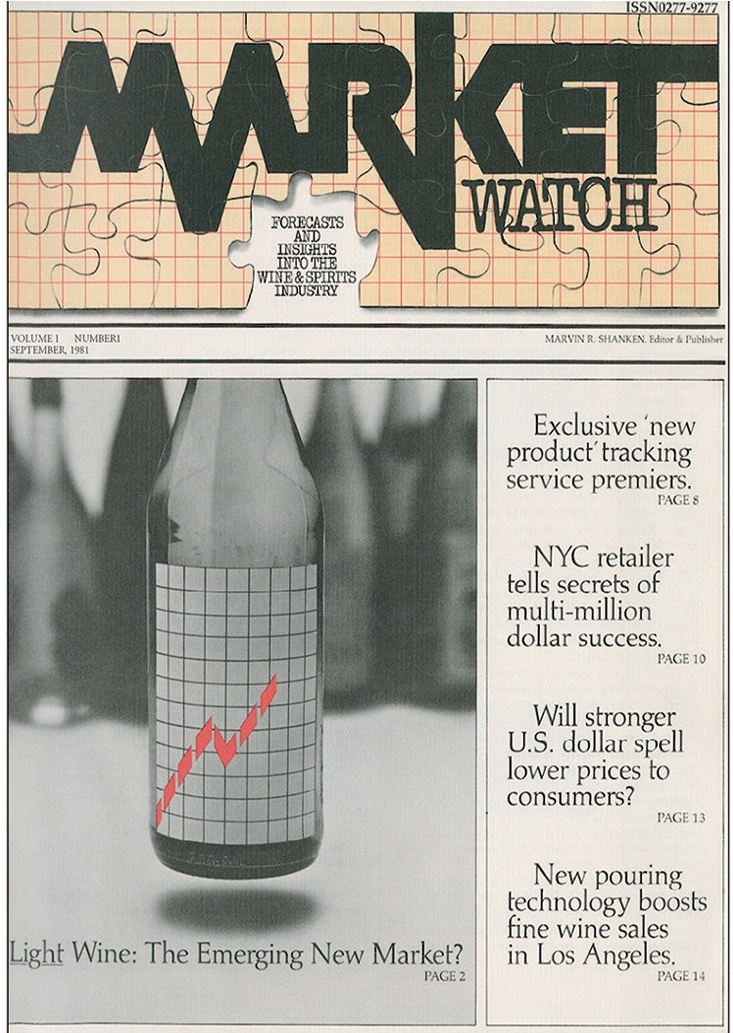
September 1981
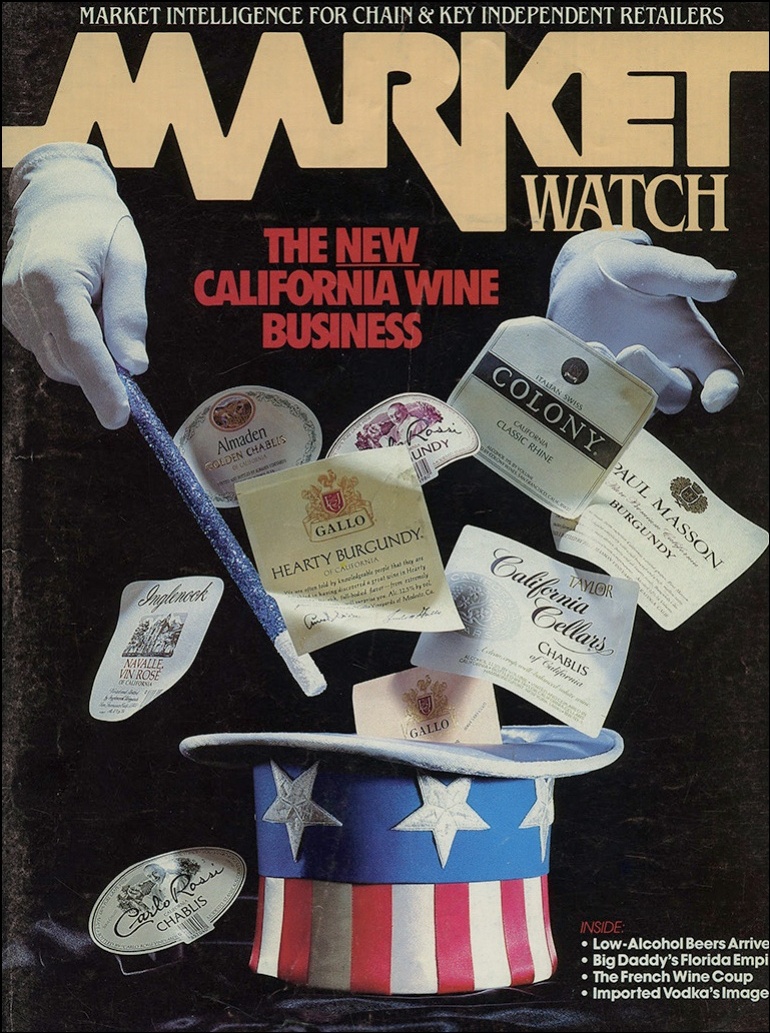
June 1984
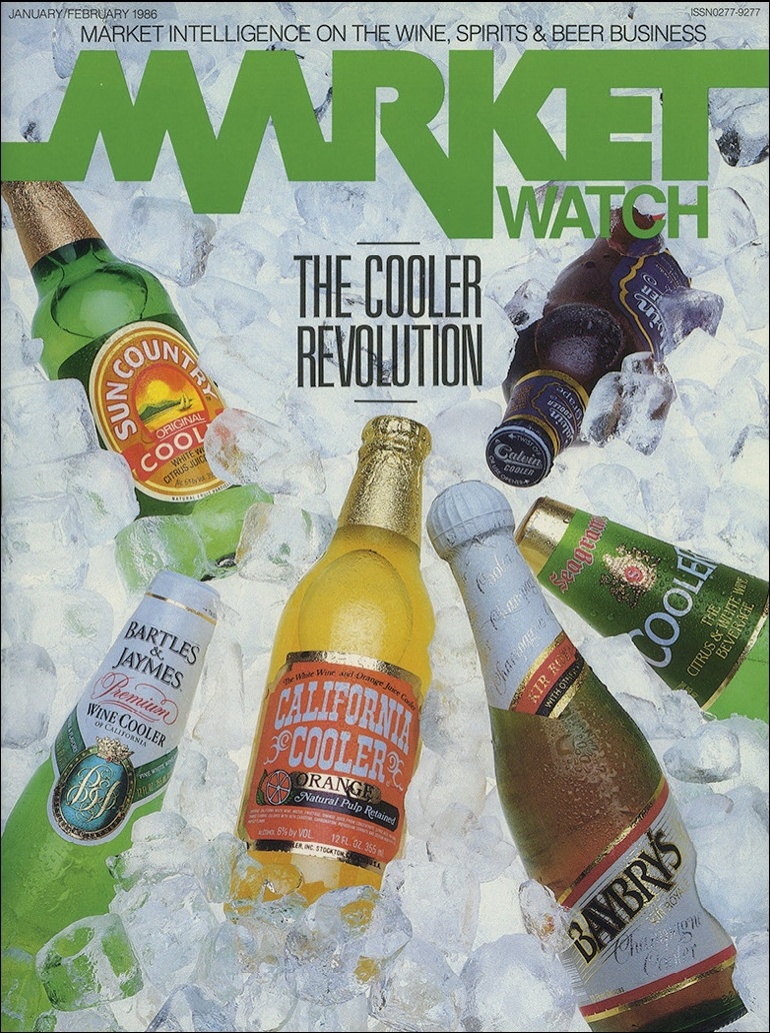
January/February 1986
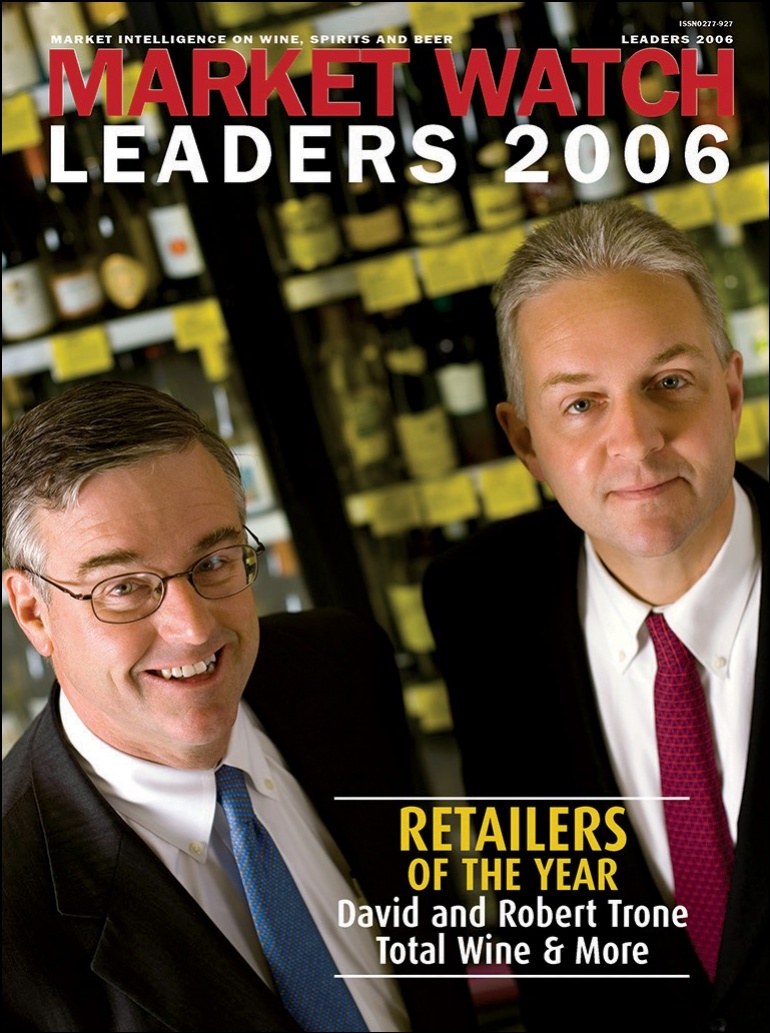
Leaders 2006
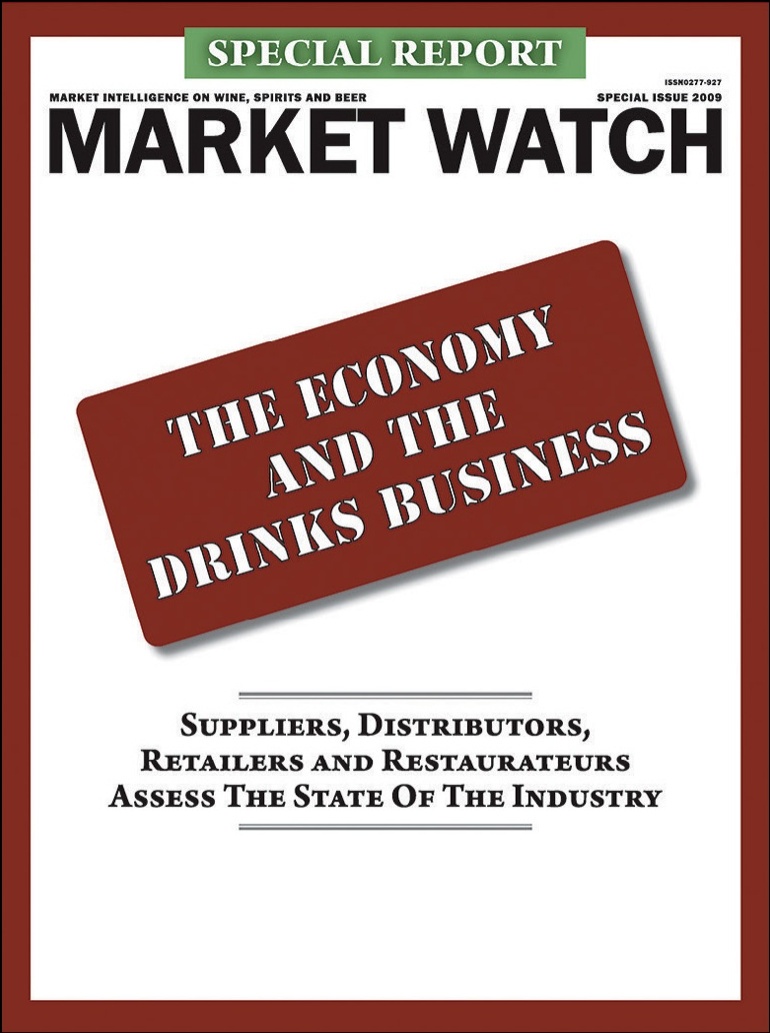
January 2009
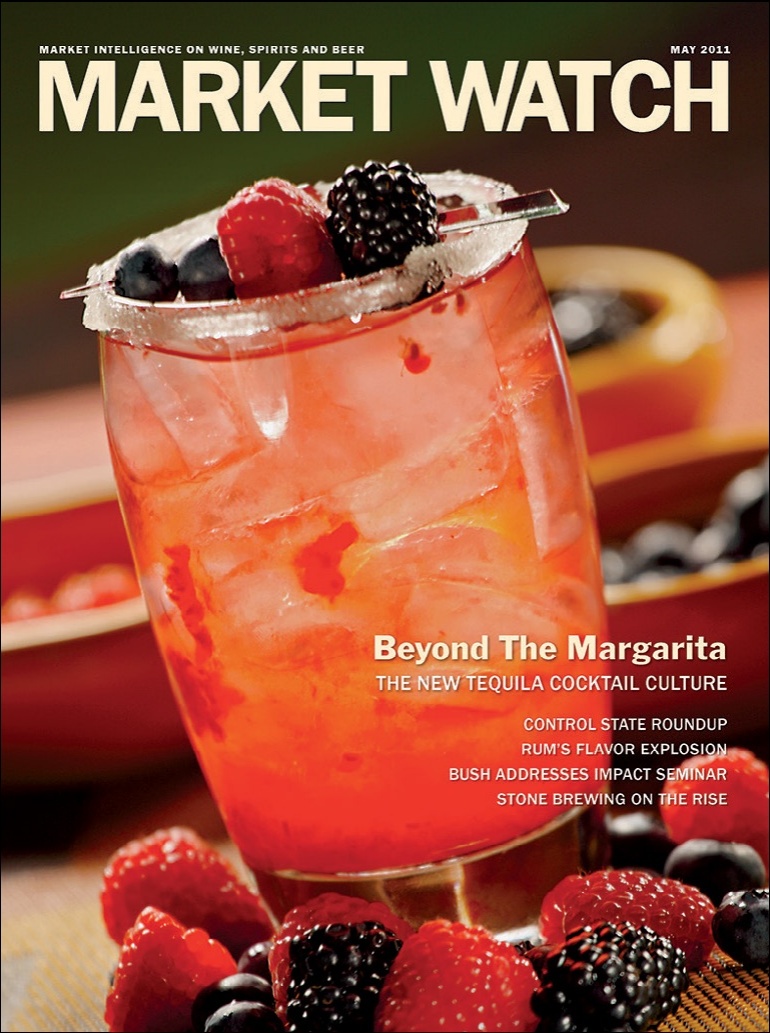
May 2011
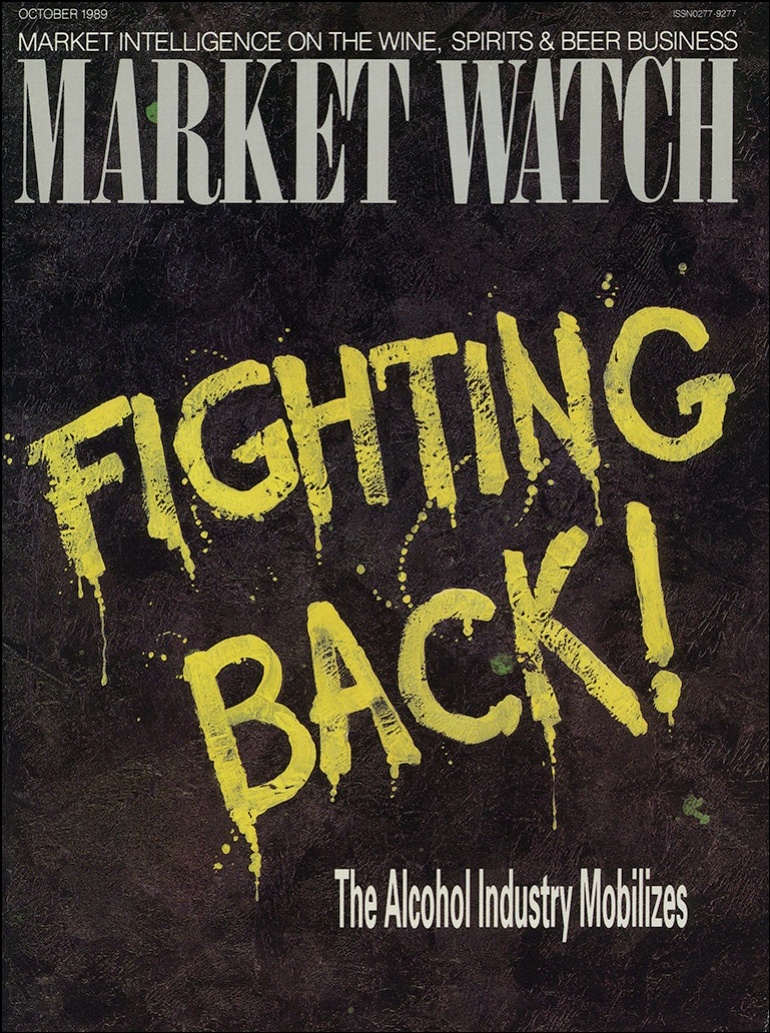
October 1989
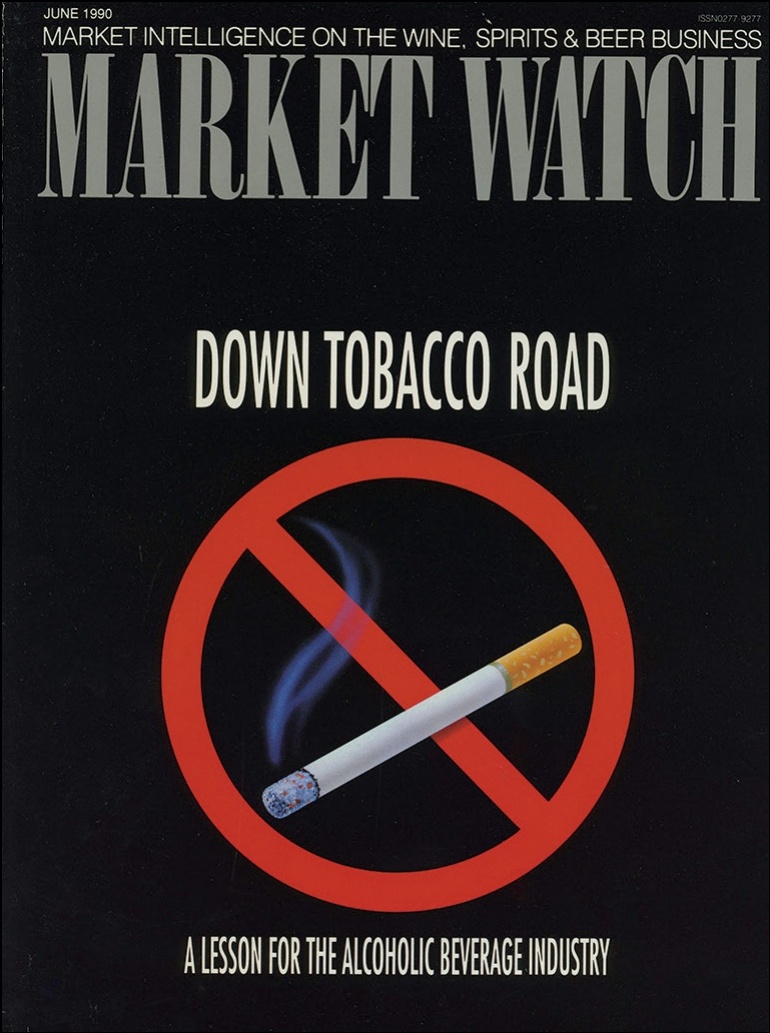
June 1990
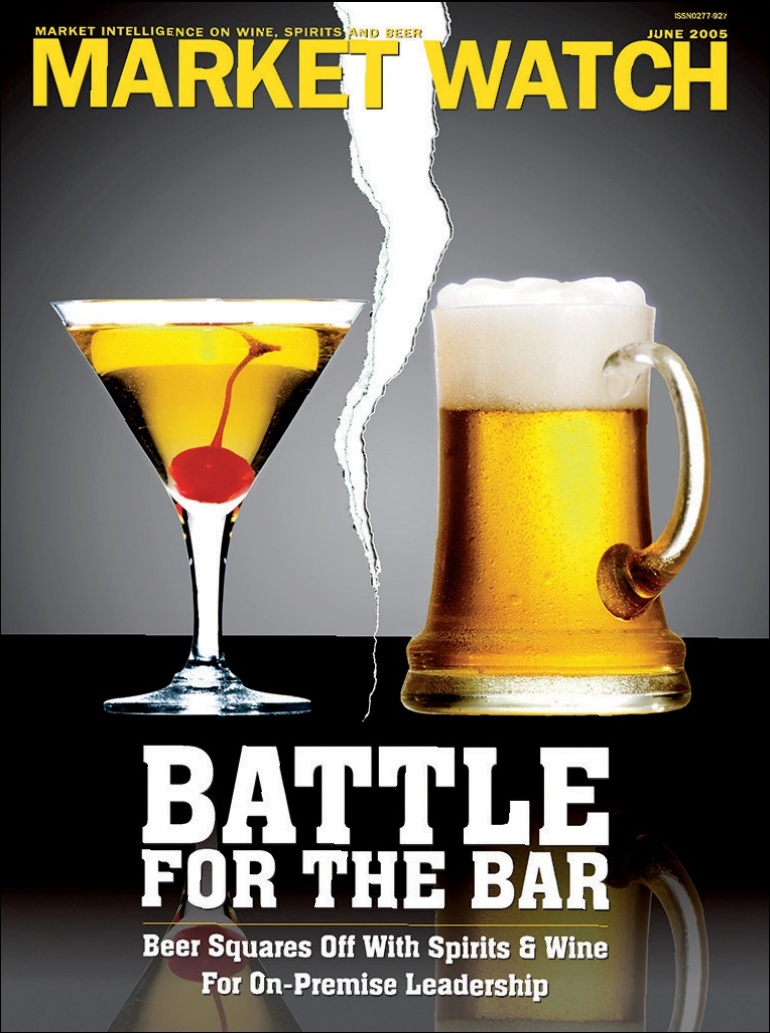
June 2005
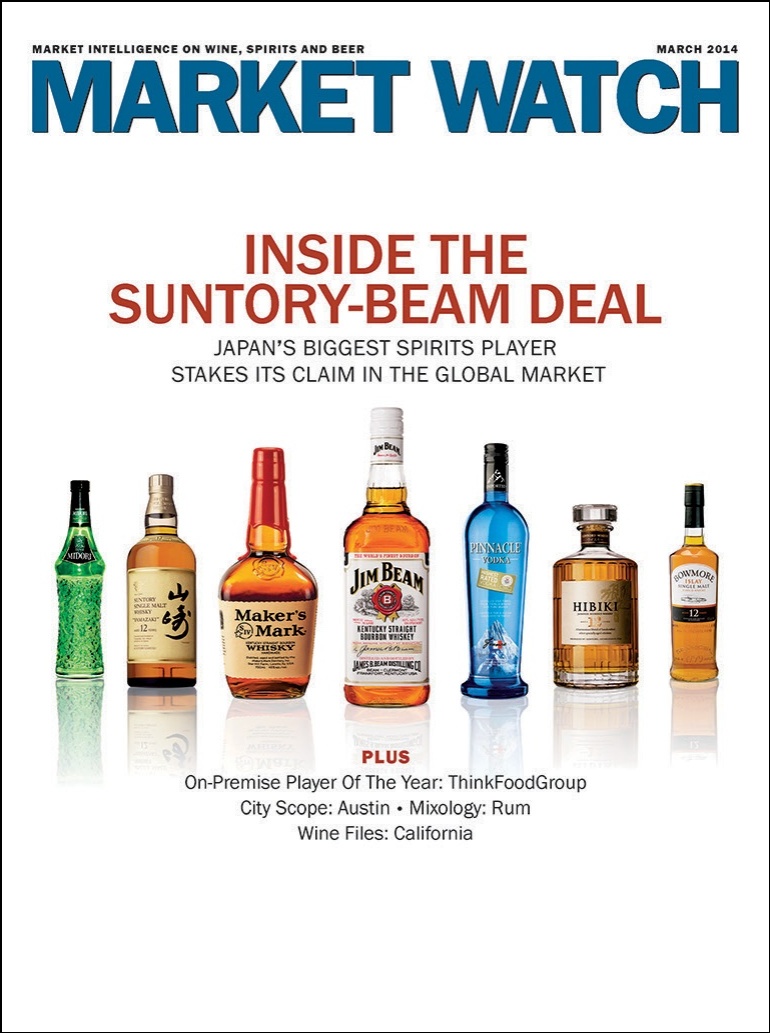
March 2014
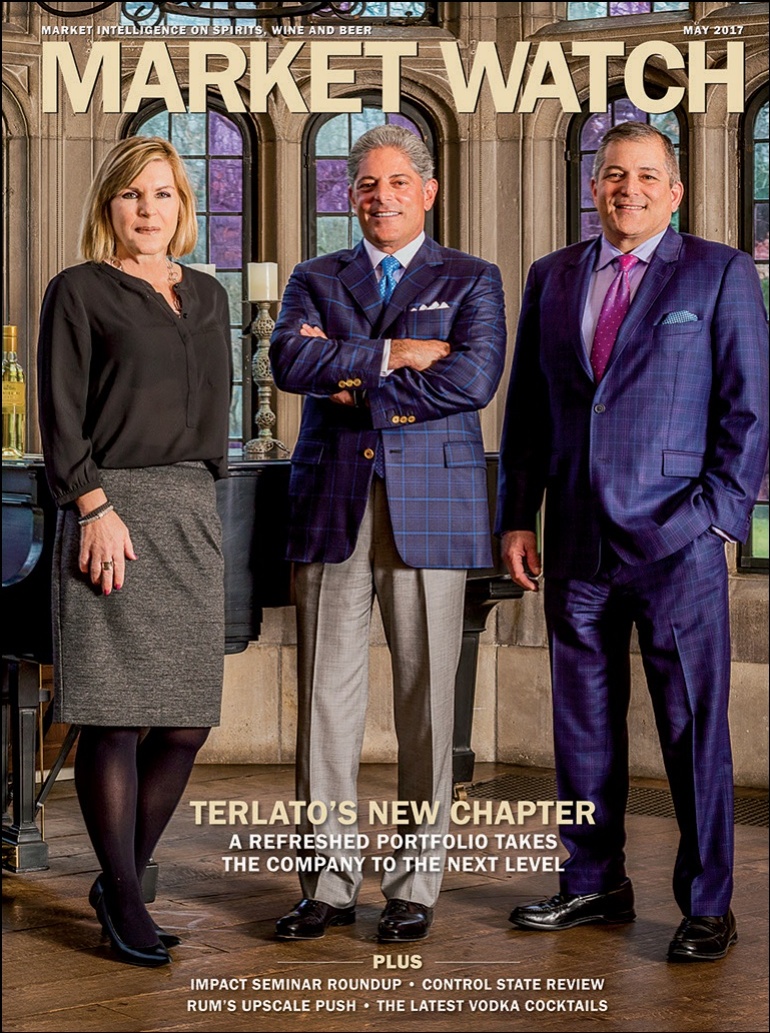
May 2017
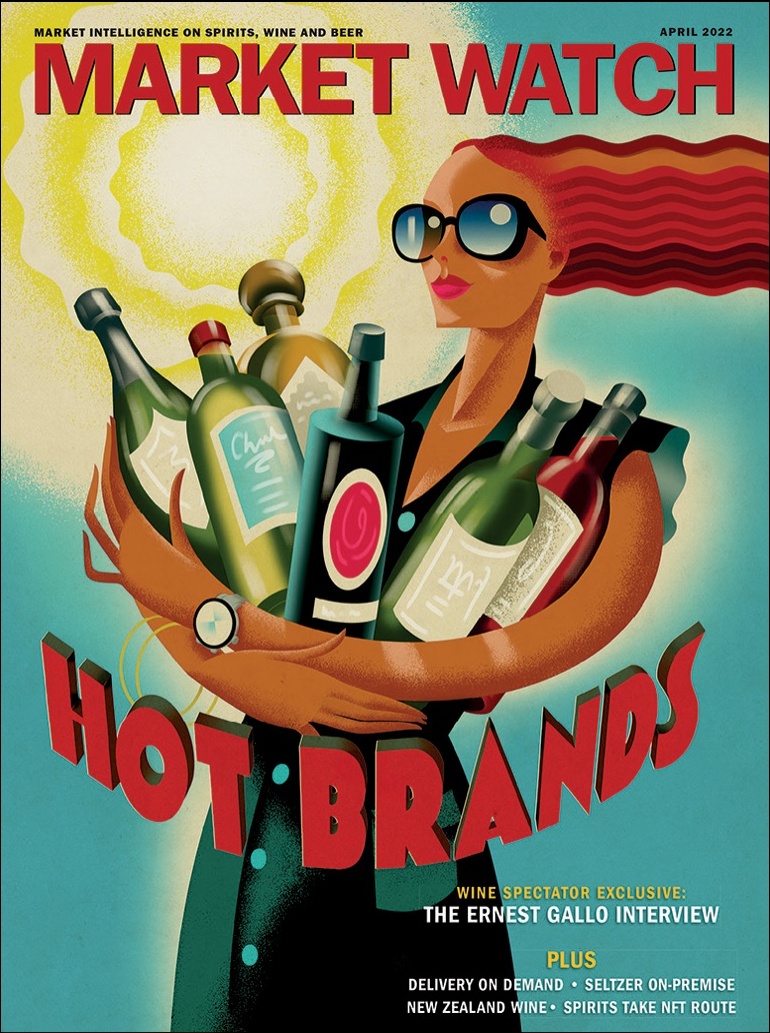
April 2022
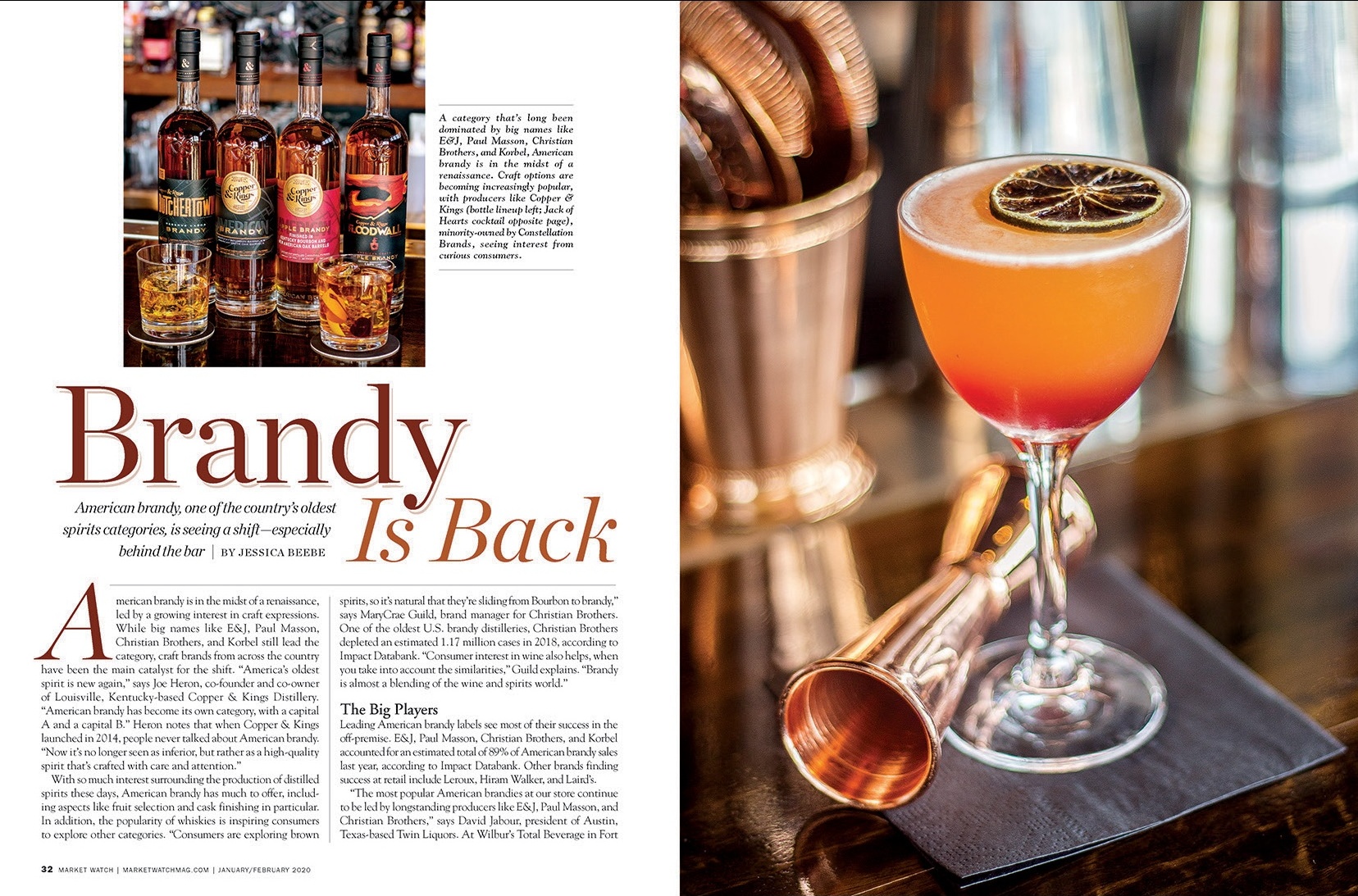
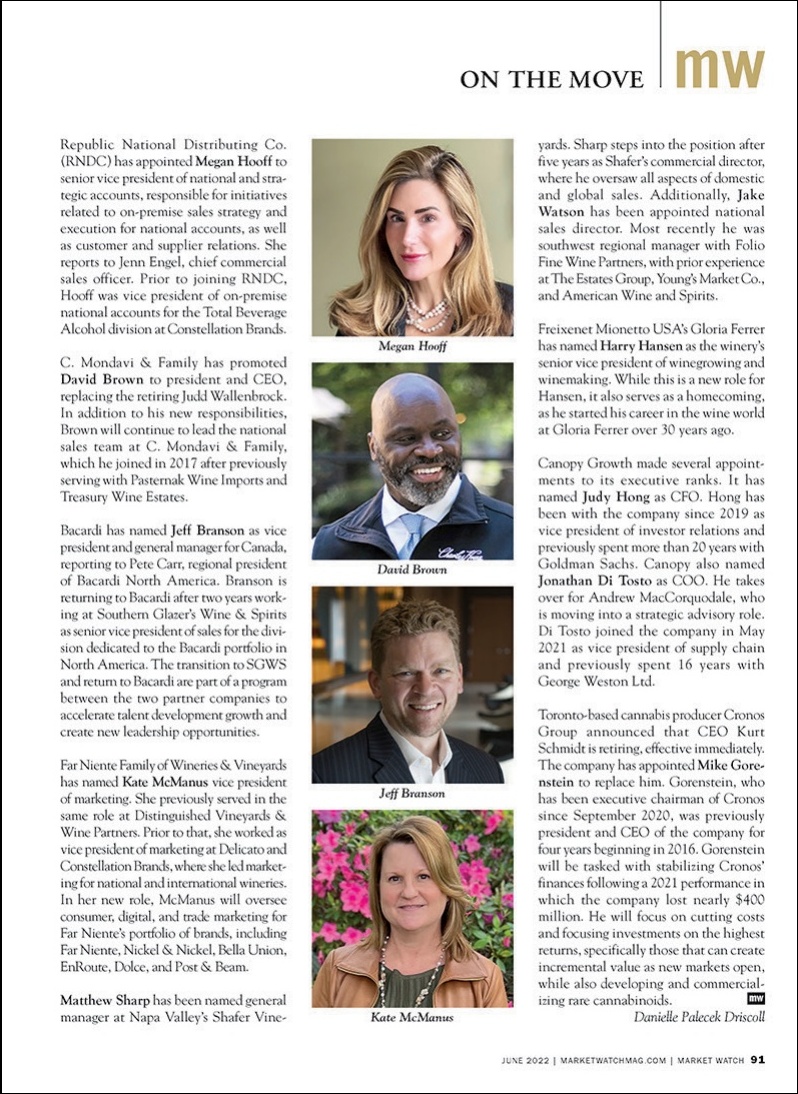
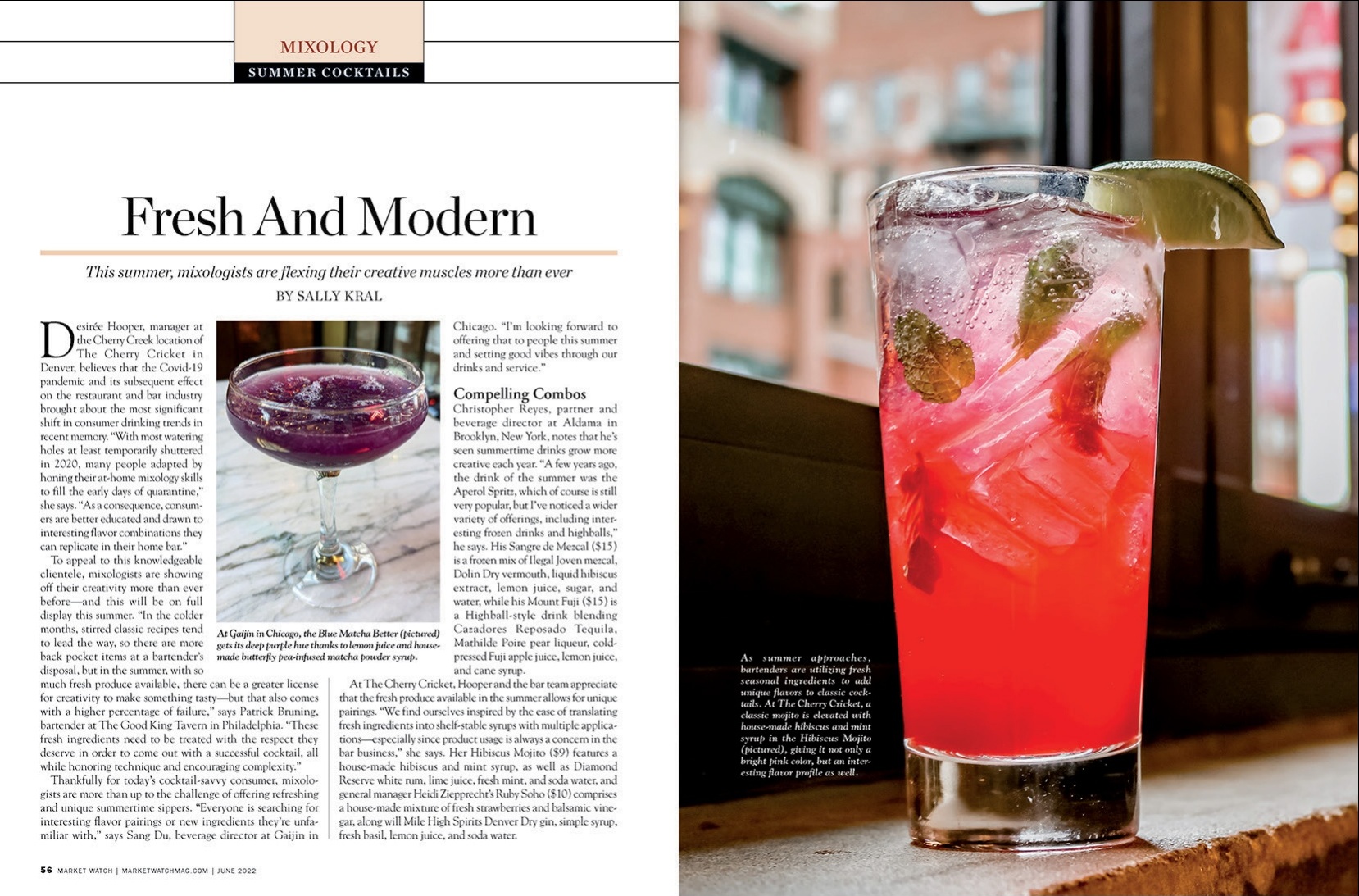
Samplings of the depth and breadth of Market Watch coverage.
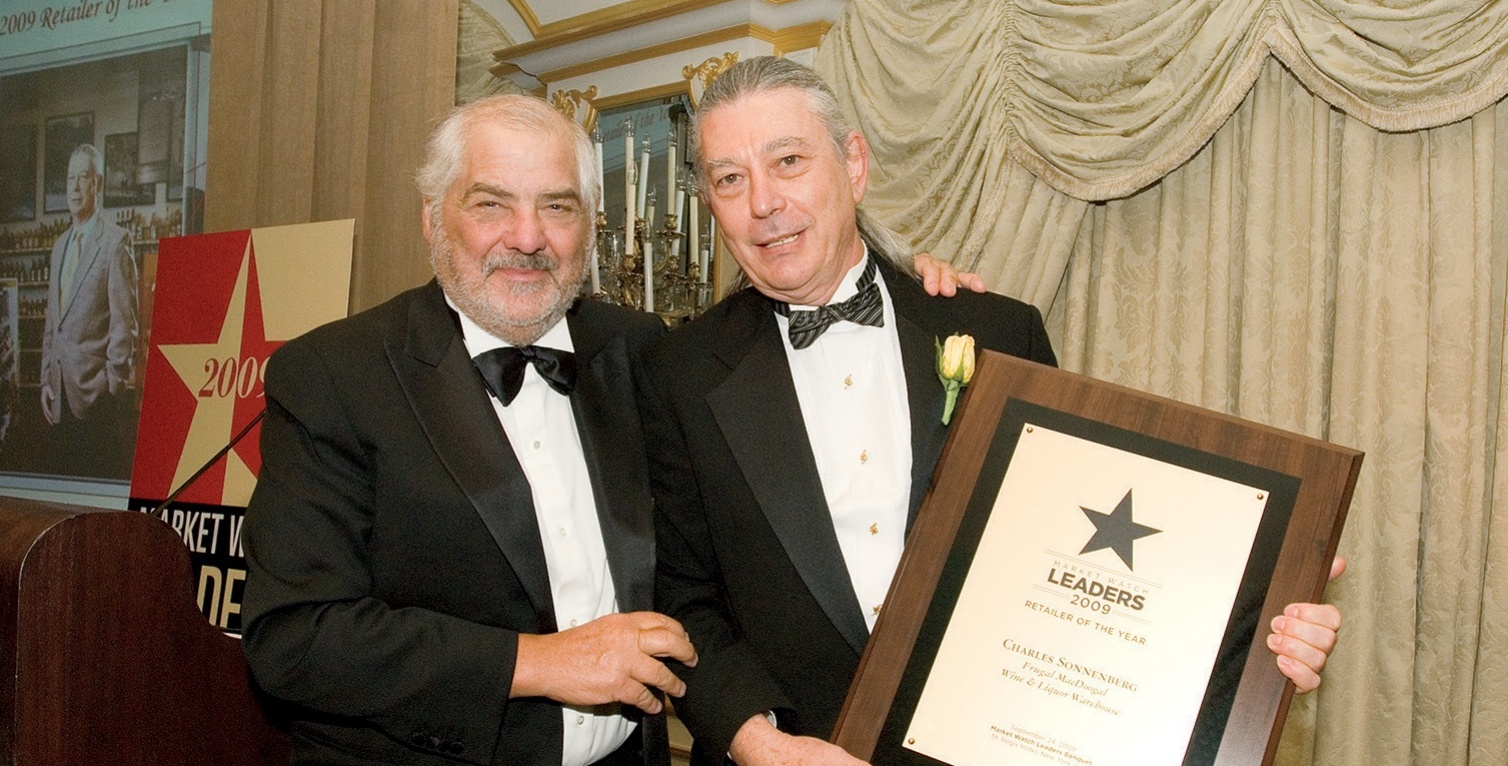
Marvin R. Shanken presents the 2009 Retailer of the Year award to Charles Sonnenberg of Nashville, Tenn.–based Frugal MacDoogal Wine & Liquor Warehouse.
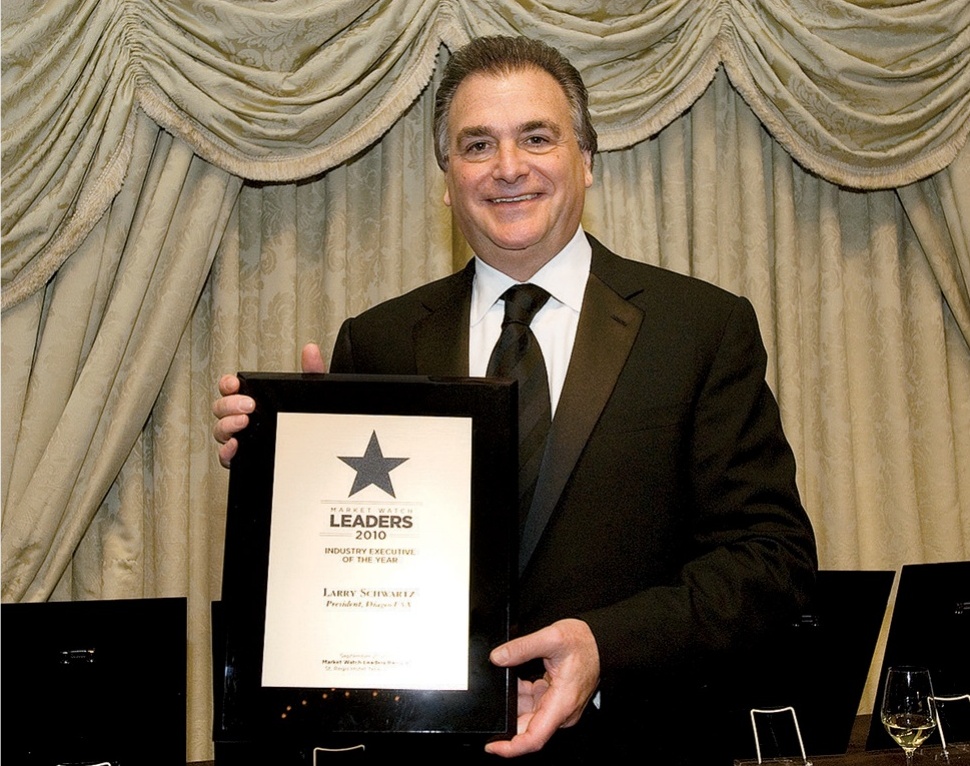
Larry Schwartz of Diageo USA received the Industry Executive of the Year award in 2010.
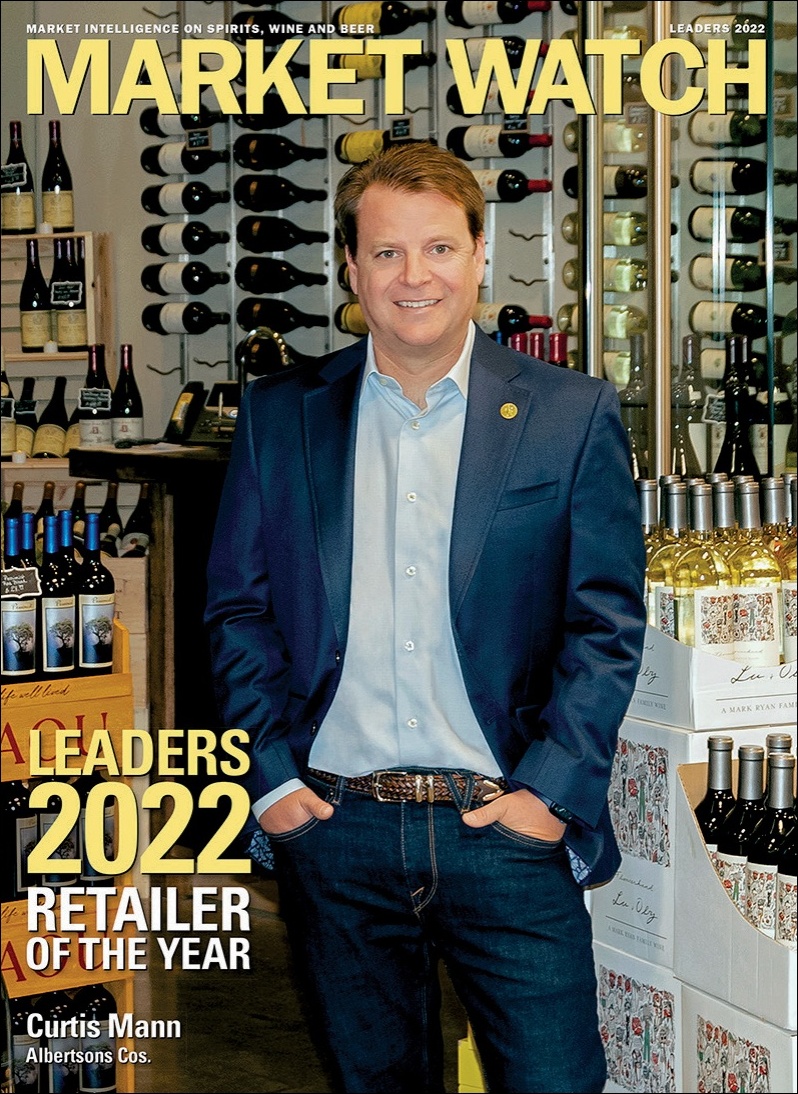
Market Watch keeps readers informed on industry leaders and trends.
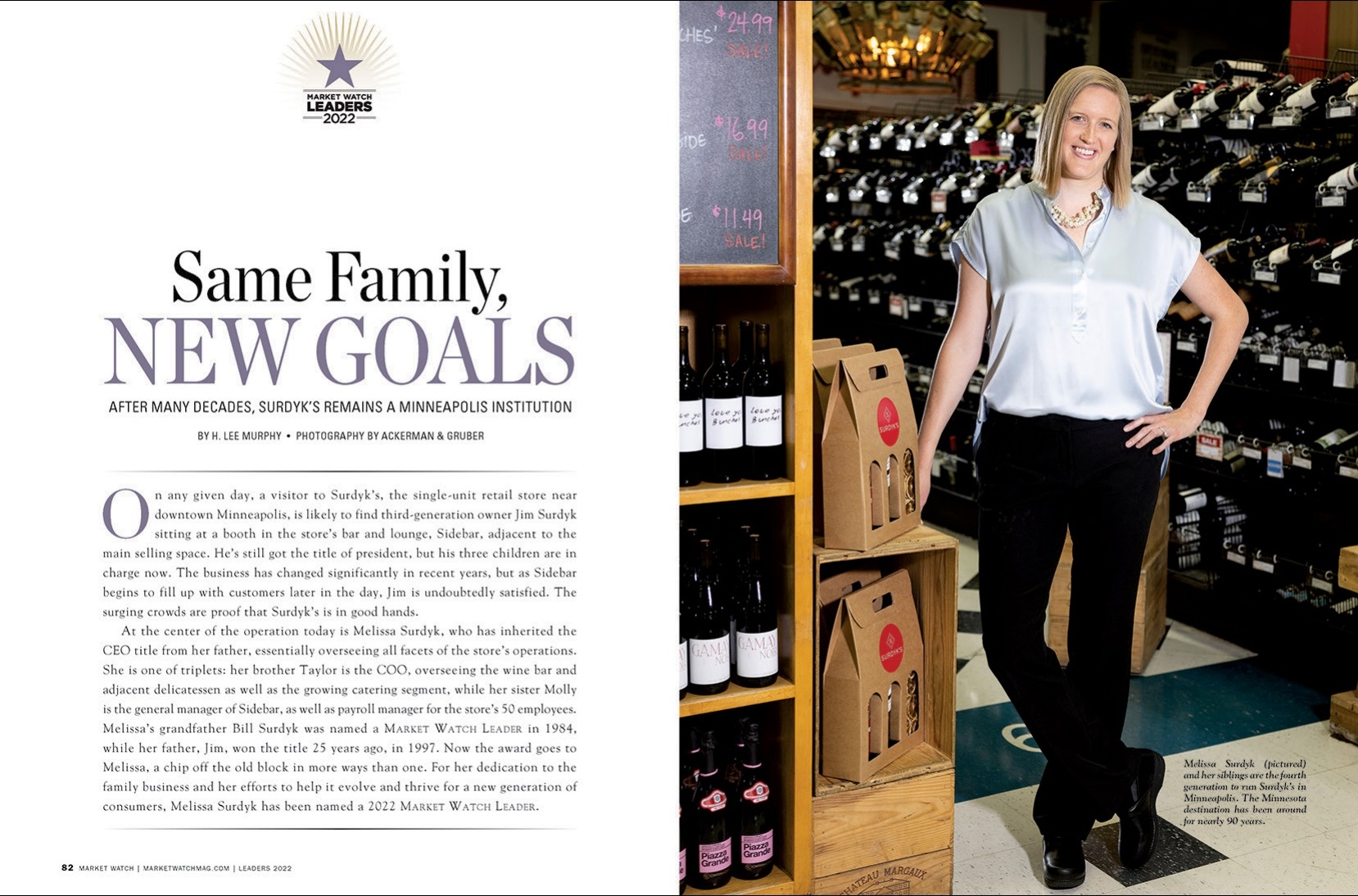
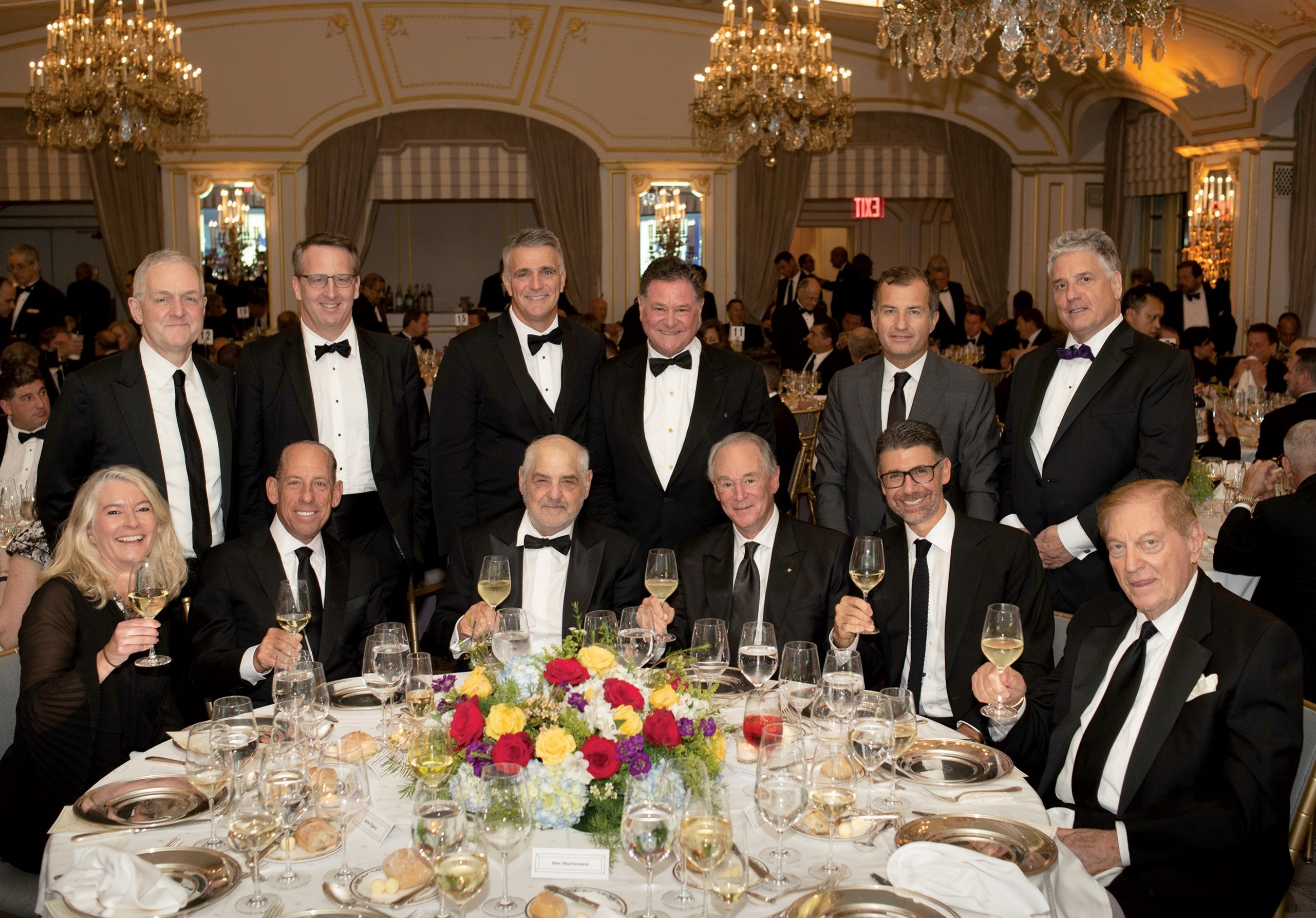
Industry movers at the 2019 Leaders dinner. Standing (from left): Robert Trone of Total Wine & More, Jonathan Yusen of William Grant & Sons, Rick Tigner of Jackson Family Wines, Stew Leonard Jr. of Stew Leonard’s, Ugo Fiorenzo of Campari Group and Jim Mortensen of Chateau Ste. Michelle. Seated (from left): Claudia Schubert of Diageo North America, Wayne Chaplin of Southern Glazer’s Wine & Spirits, Marvin R. Shanken of M. Shanken Communications, Alan Dreeben of Republic National Distributing Co., Rudy Costello of Stoli Group and Bill Deutsch of Deutsch Family Wine & Spirits.
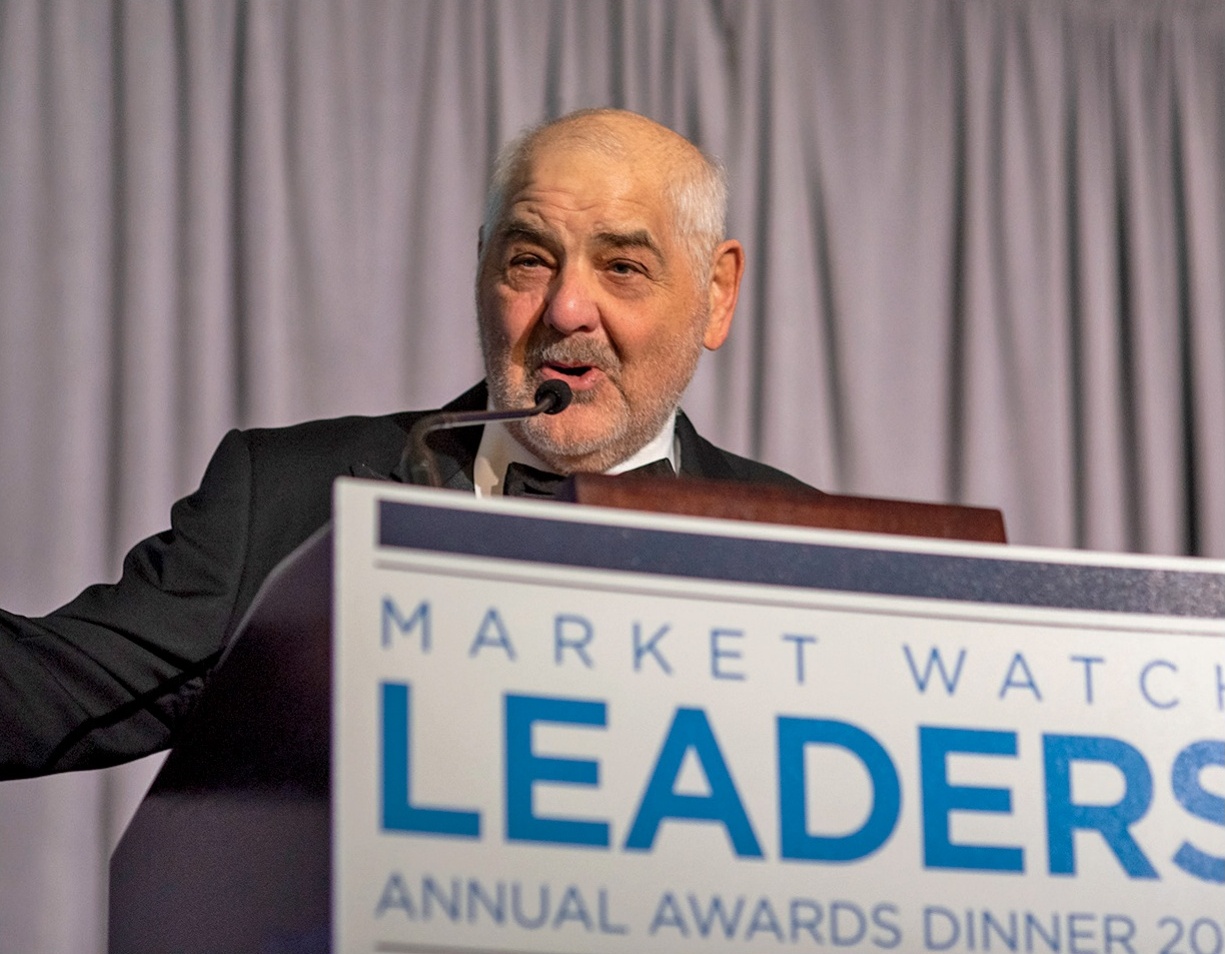
Marvin R. Shanken makes his opening remarks at the 2019 Market Watch Leaders dinner at the St. Regis hotel in New York City.
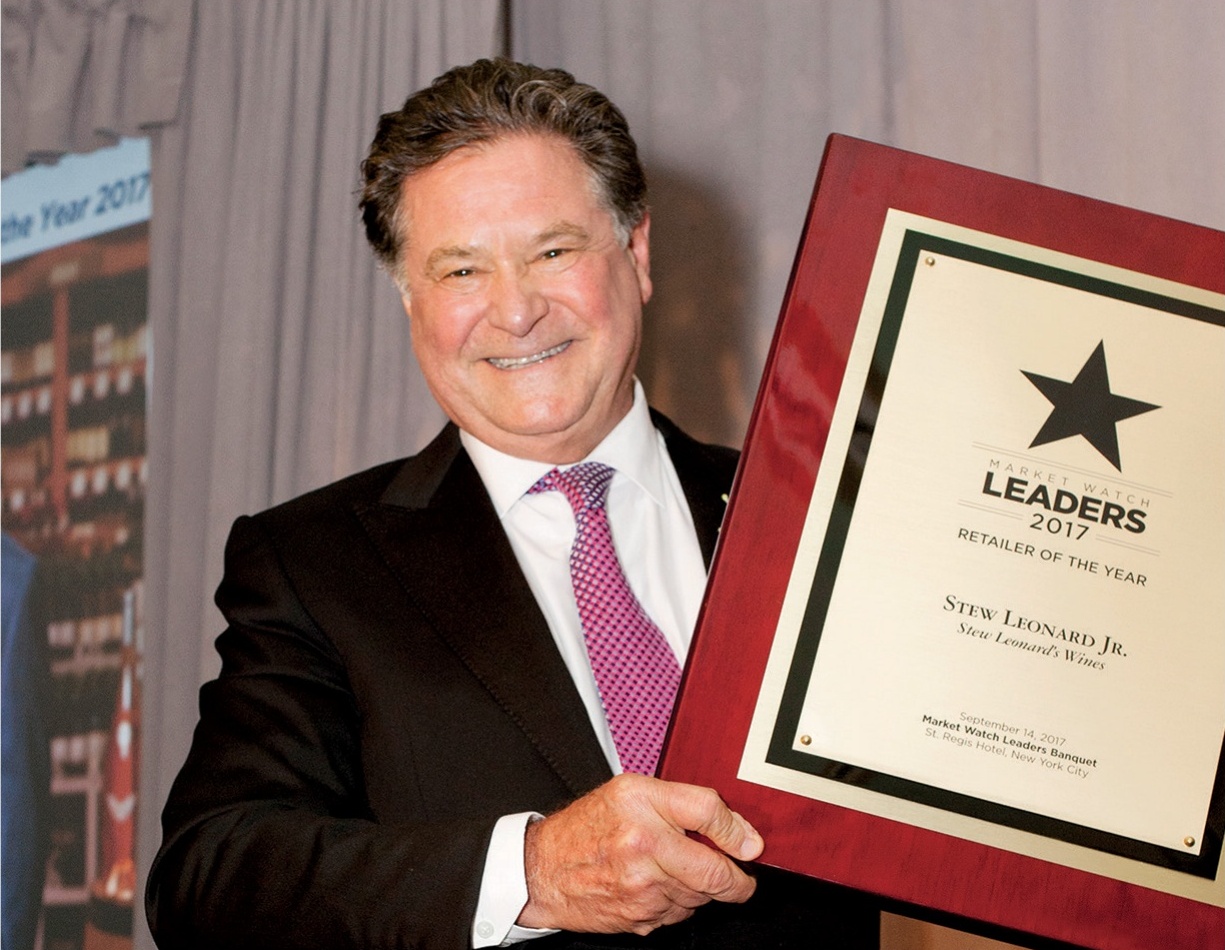
Stew Leonard Jr. of Stew Leonard’s Wines & Spirits is named the Market Watch Leaders 2017 Retailer of the Year.
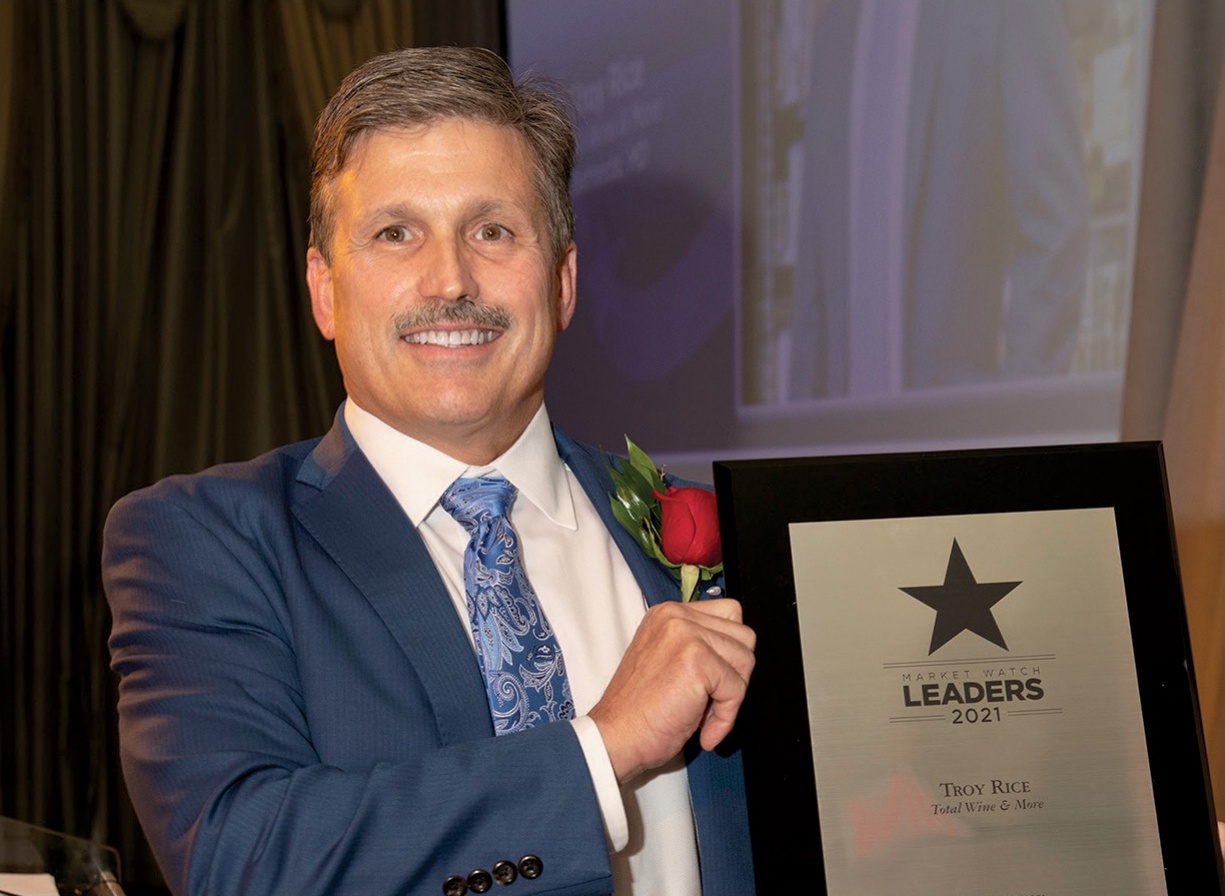
Troy Rice of Total Wine & More in Bethesda, Md., joins the Market Watch Leaders class of 2021.
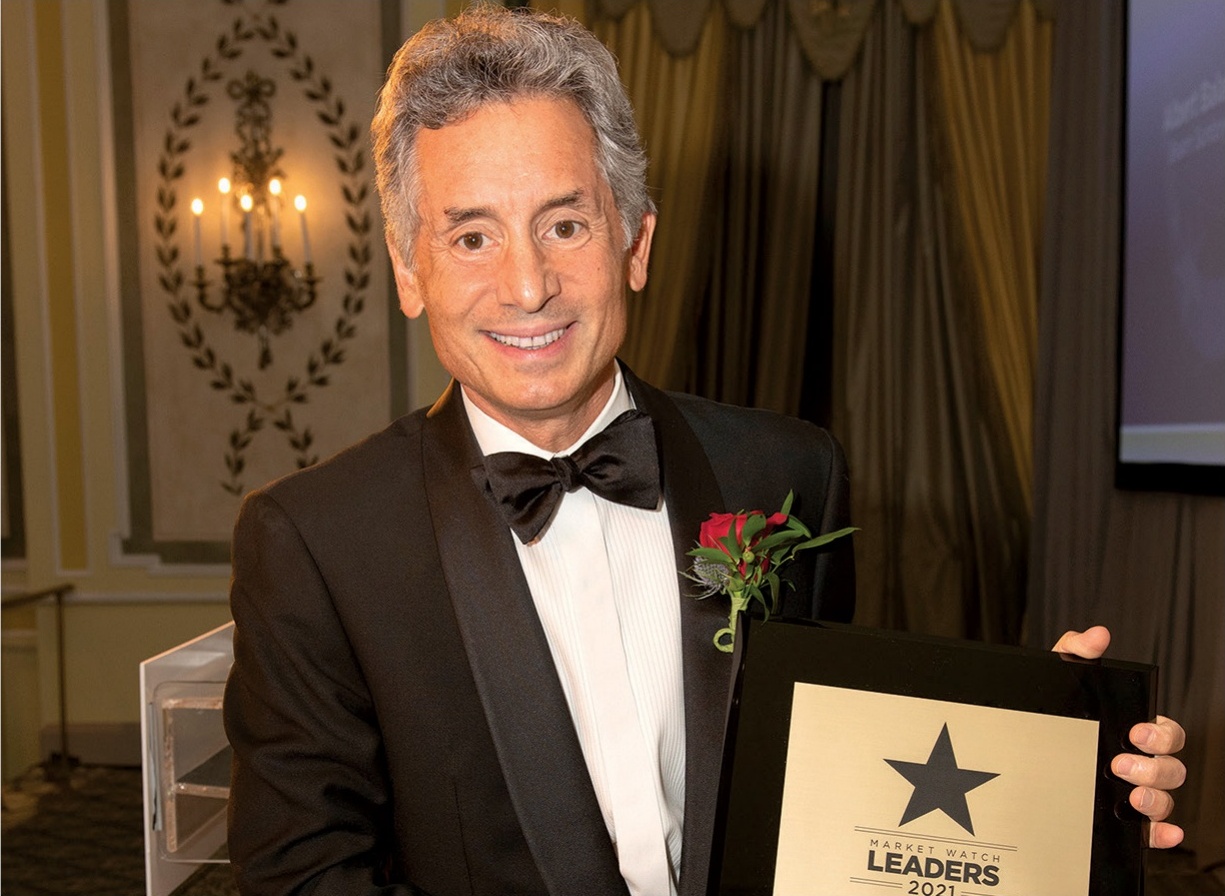
Albert Baladi of Beam Suntory is recognized as the 2021 Market Watch Leaders Industry Executive of the Year.
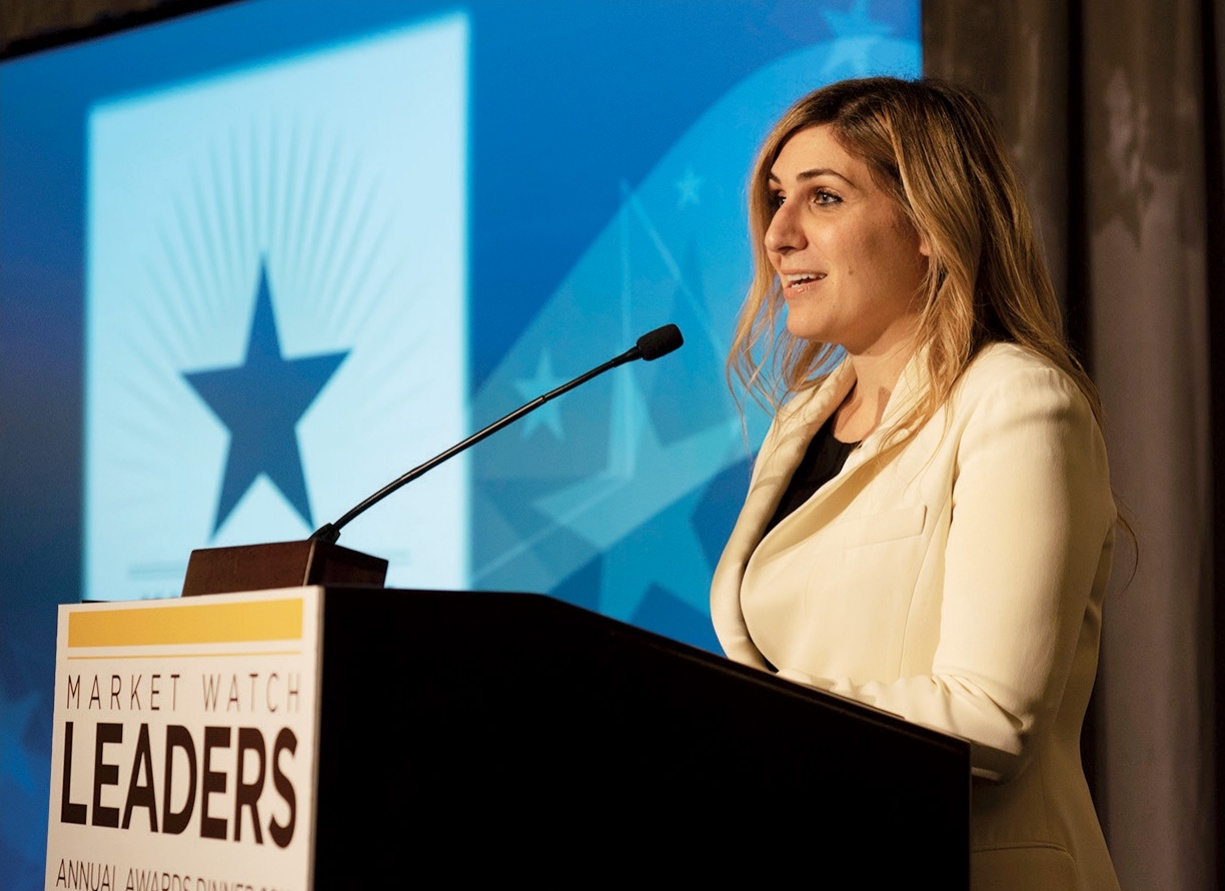
Jessica Shanken Reid makes her opening remarks at the Market Watch Leaders dinner in New York City on Sept. 27, 2018.
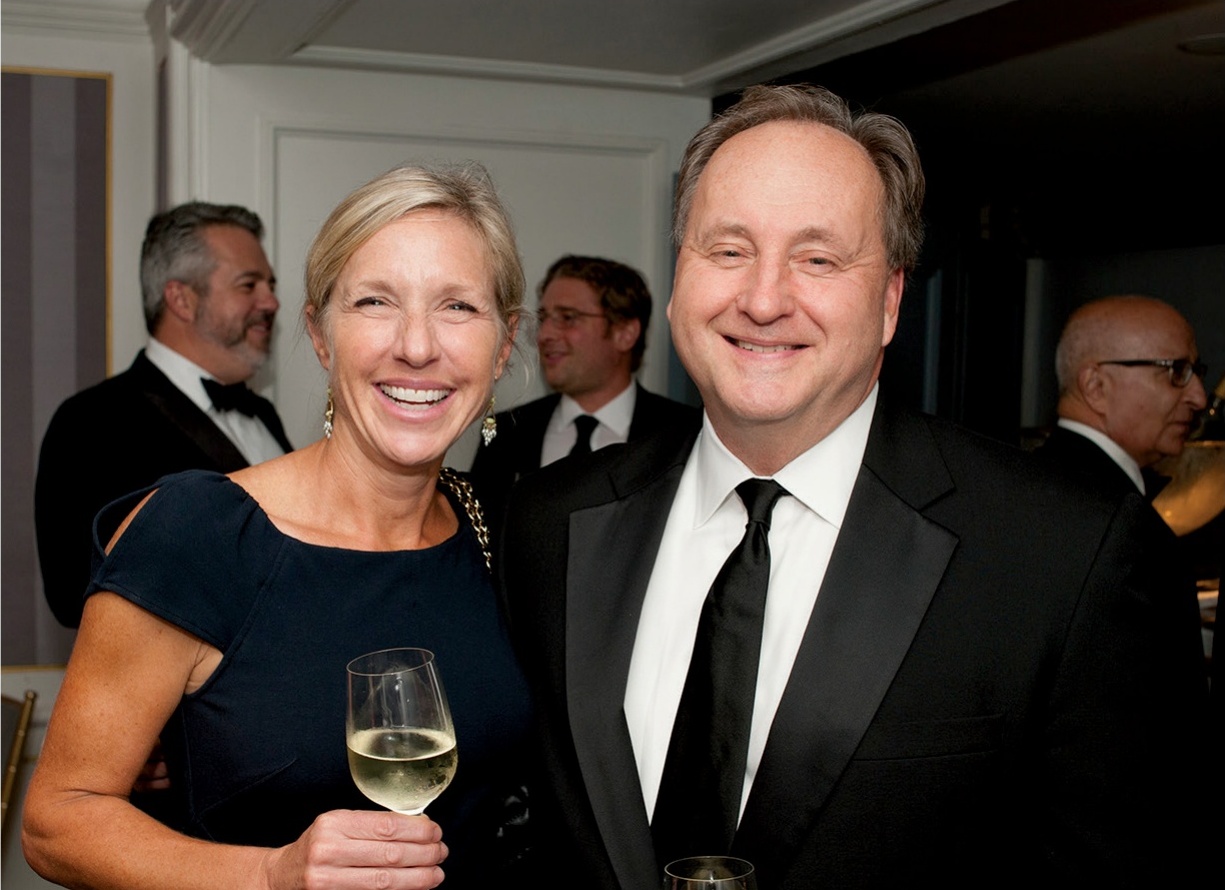
Christina Mariani-May of Banfi Vintners and Bon Torkelson of Trinchero Napa Valley at the Leaders dinner in 2017.
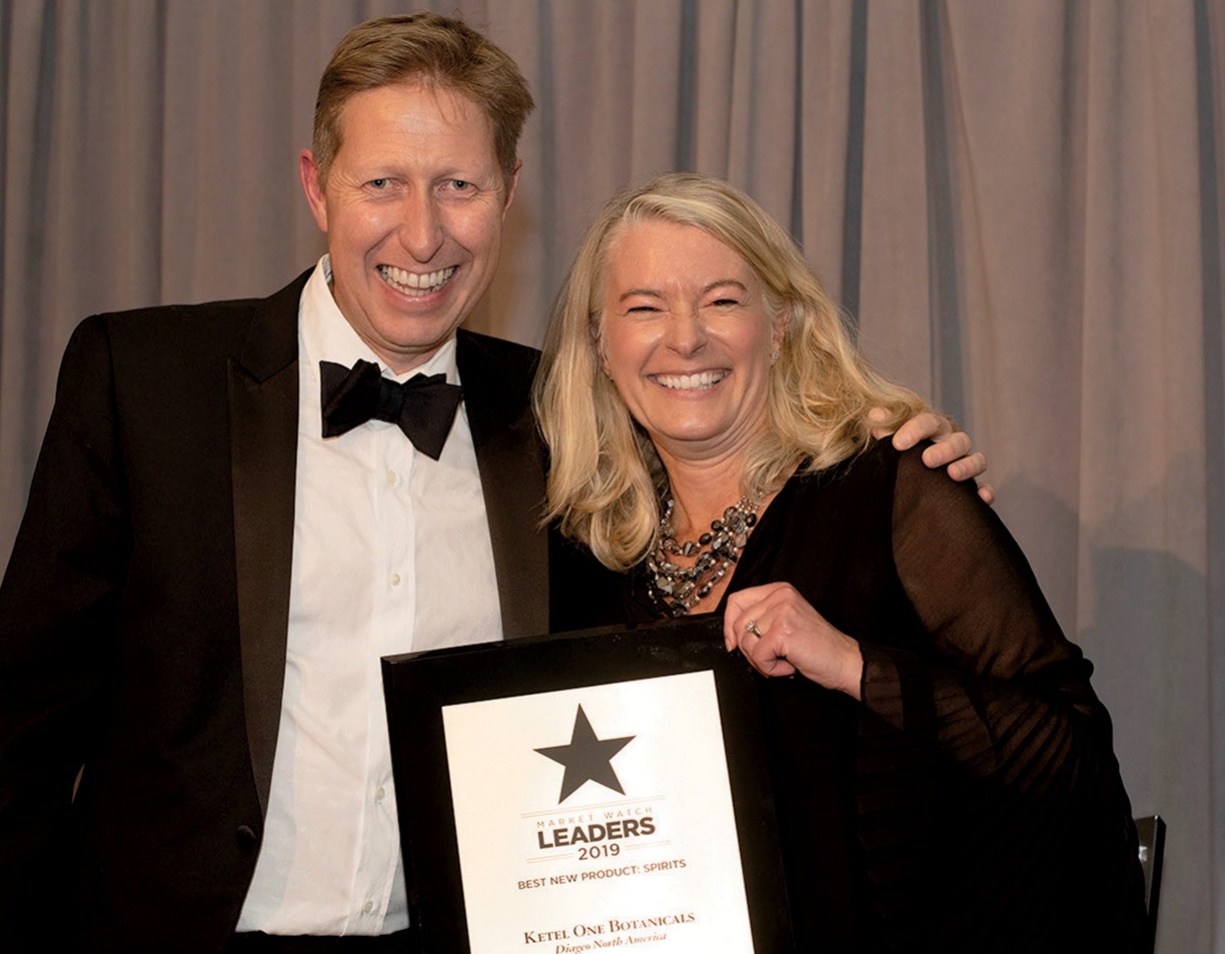
Ed Pilkington and Claudia Schubert of Diageo accept the award for Best New Product: Spirits, for Ketel One Botanical in 2019.
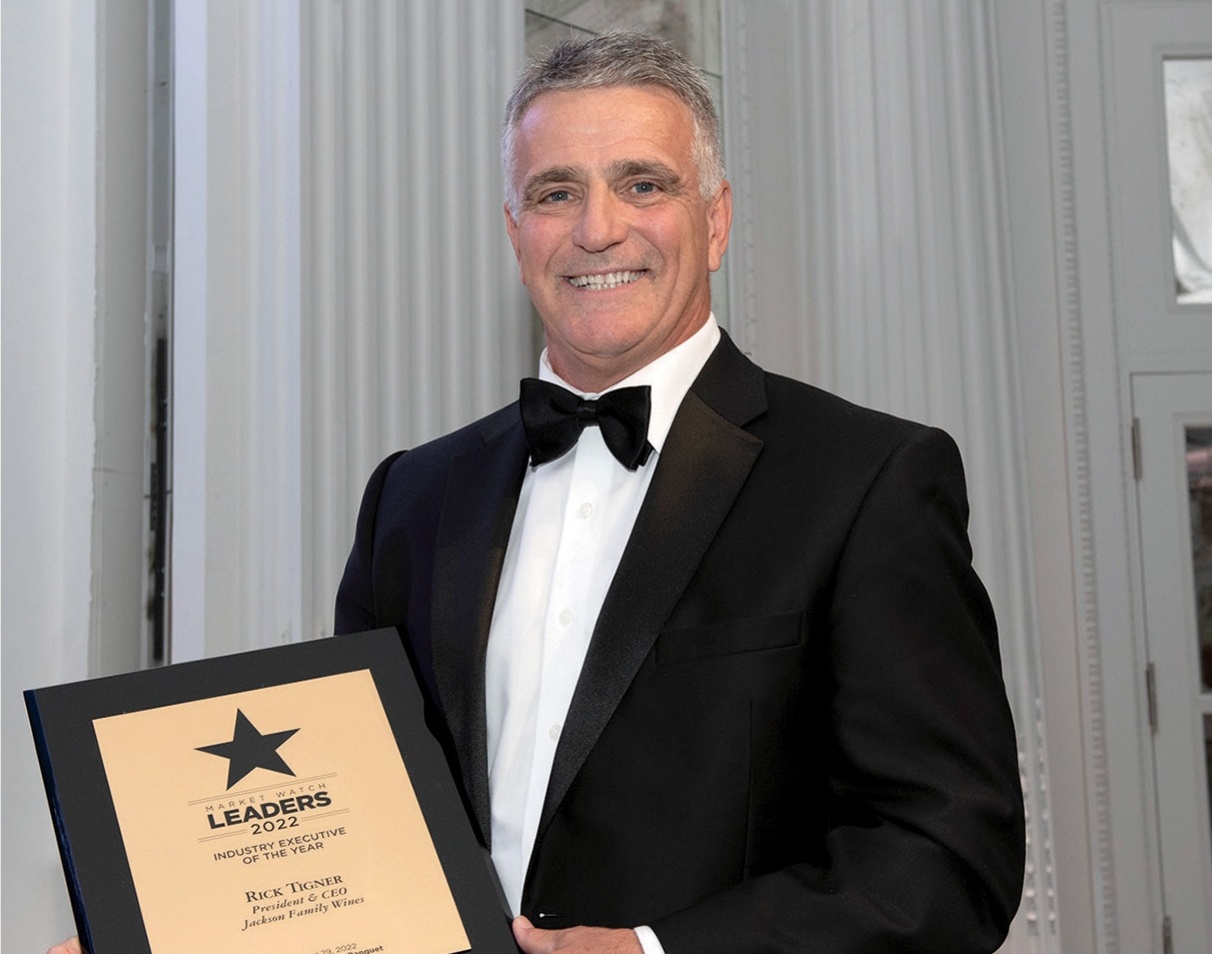
Rick Tigner, CEO of Jackson Family Estates, is announced as Industry Executive of the Year for 2022.
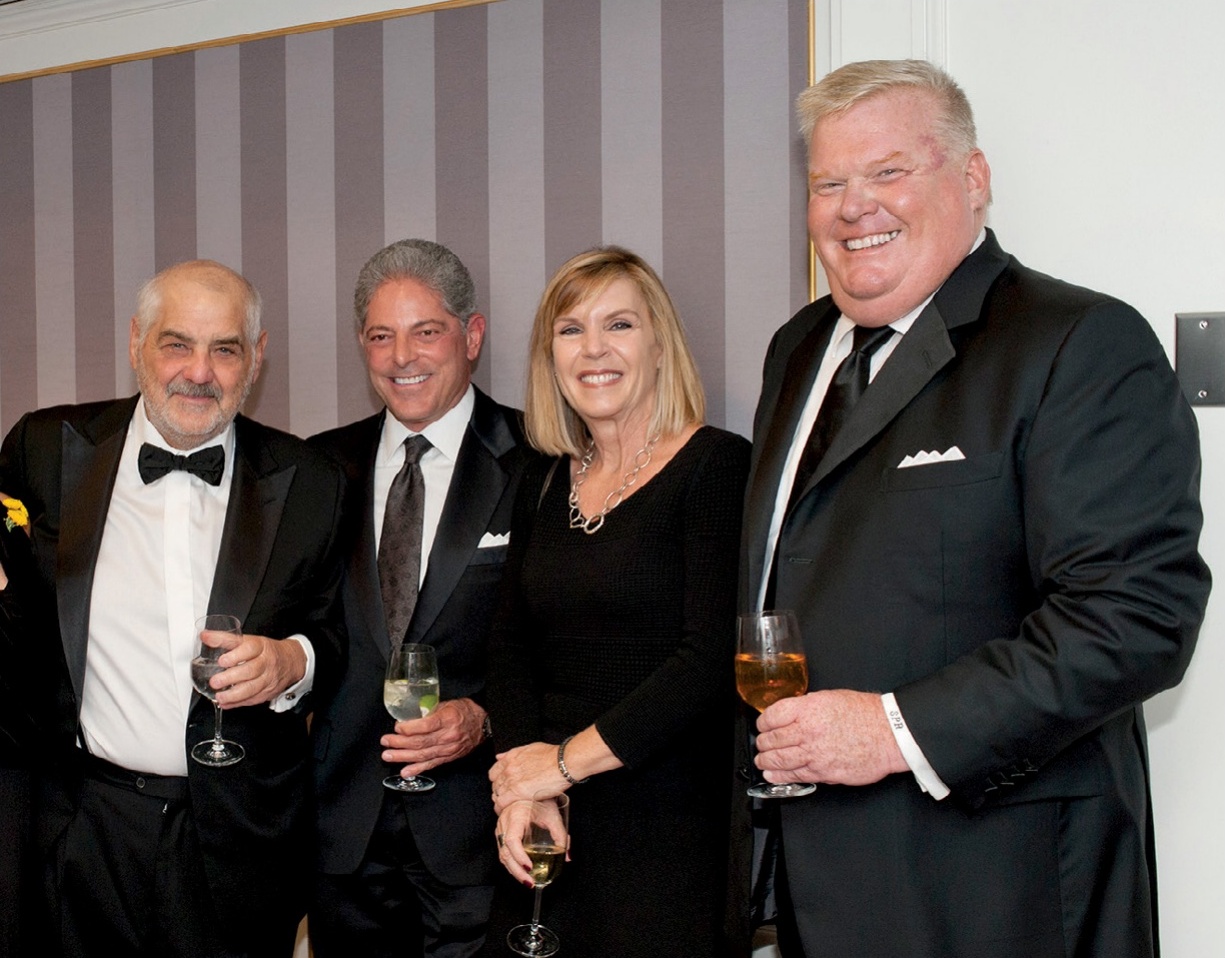
Marvin R. Shanken with Bill Terlato and Sandra LeDrew of Terlato Wines International and Stephen Rust of Diageo North America in 2017.
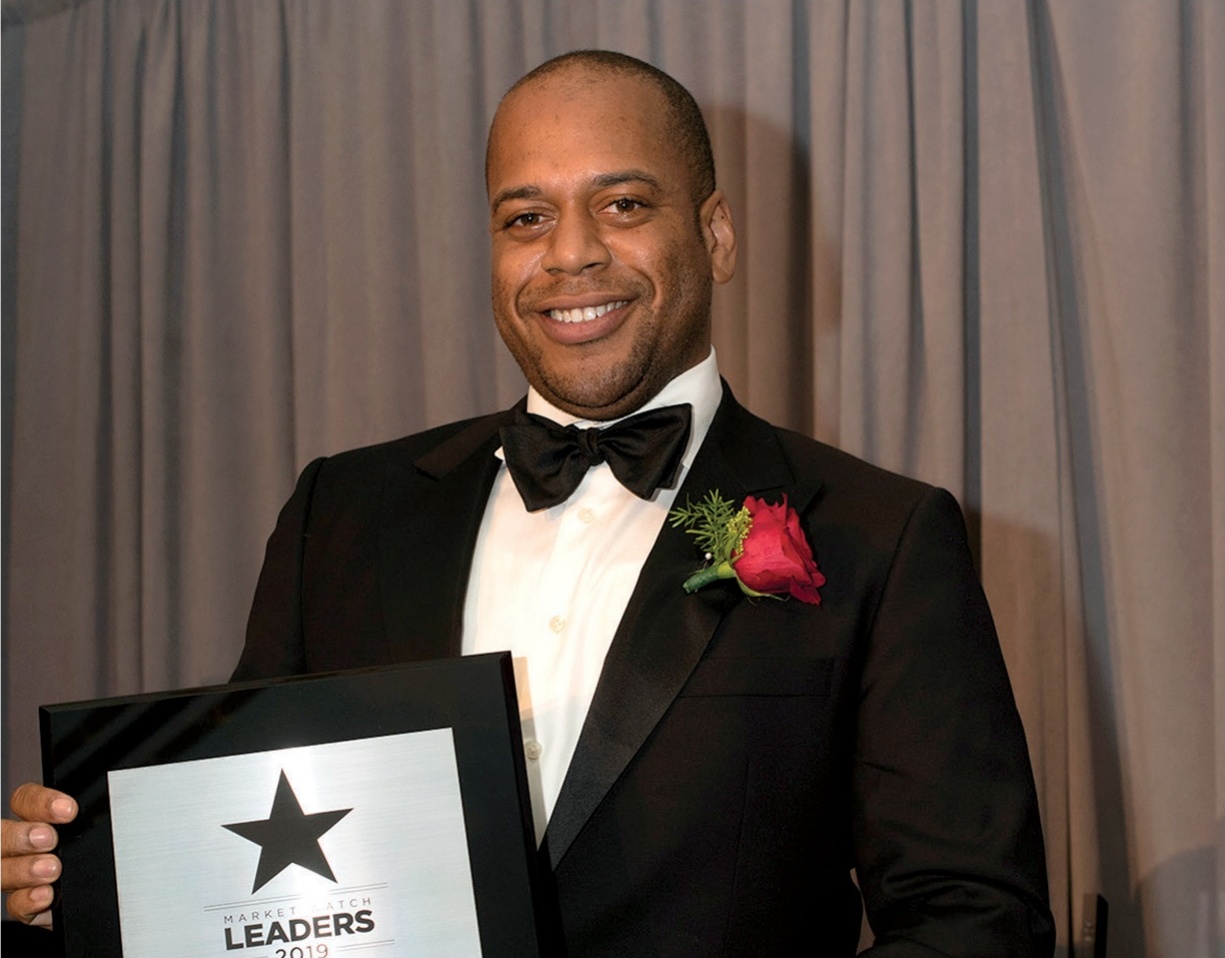
Market Watch Leader Marques Warren of Downtown Spirits in Seattle in 2019.
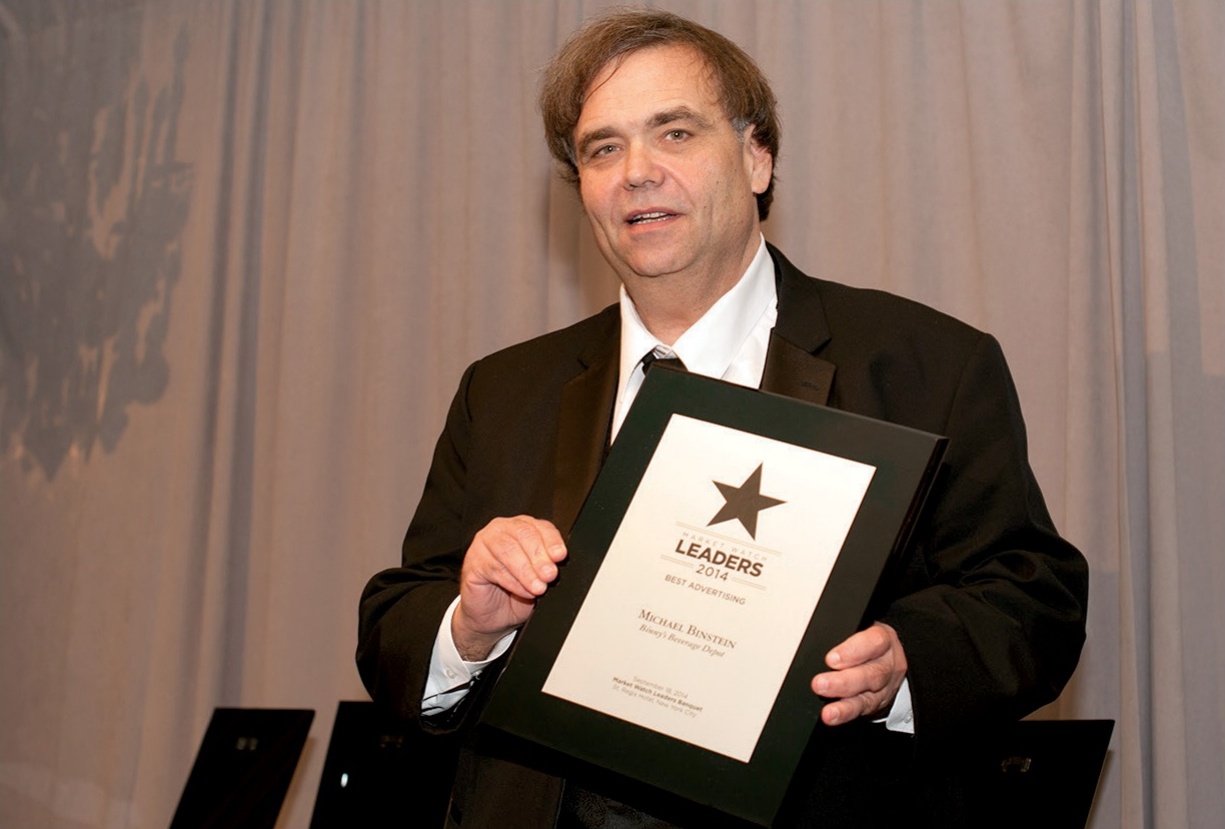
Michael Binstein of Skokie, Ill.–based Binny’s Beverage Depot displays his 2014 Market Watch Leaders Alumni Award for Best Advertising.
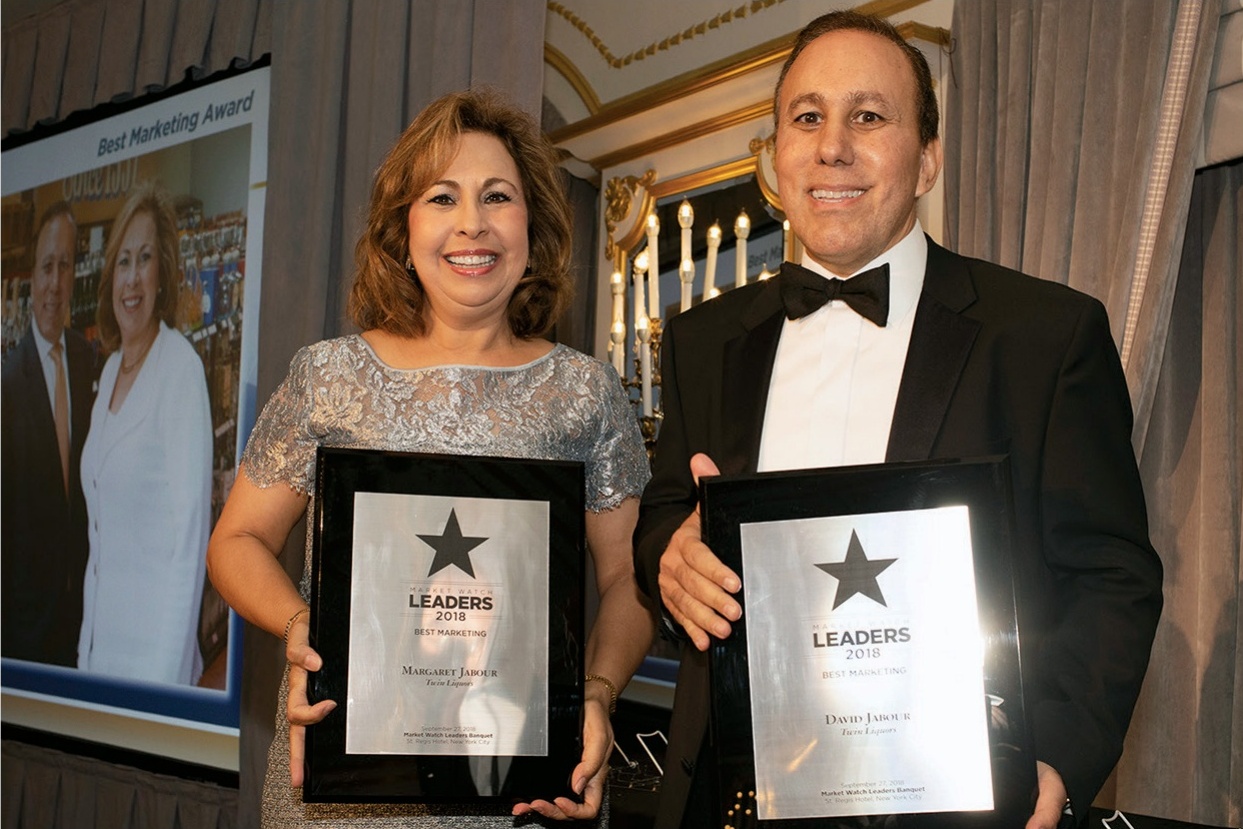
Margaret and David Jabour of Texas-based Twin Liquors win the 2018 Market Watch Leaders Alumni Award for Best Marketing.
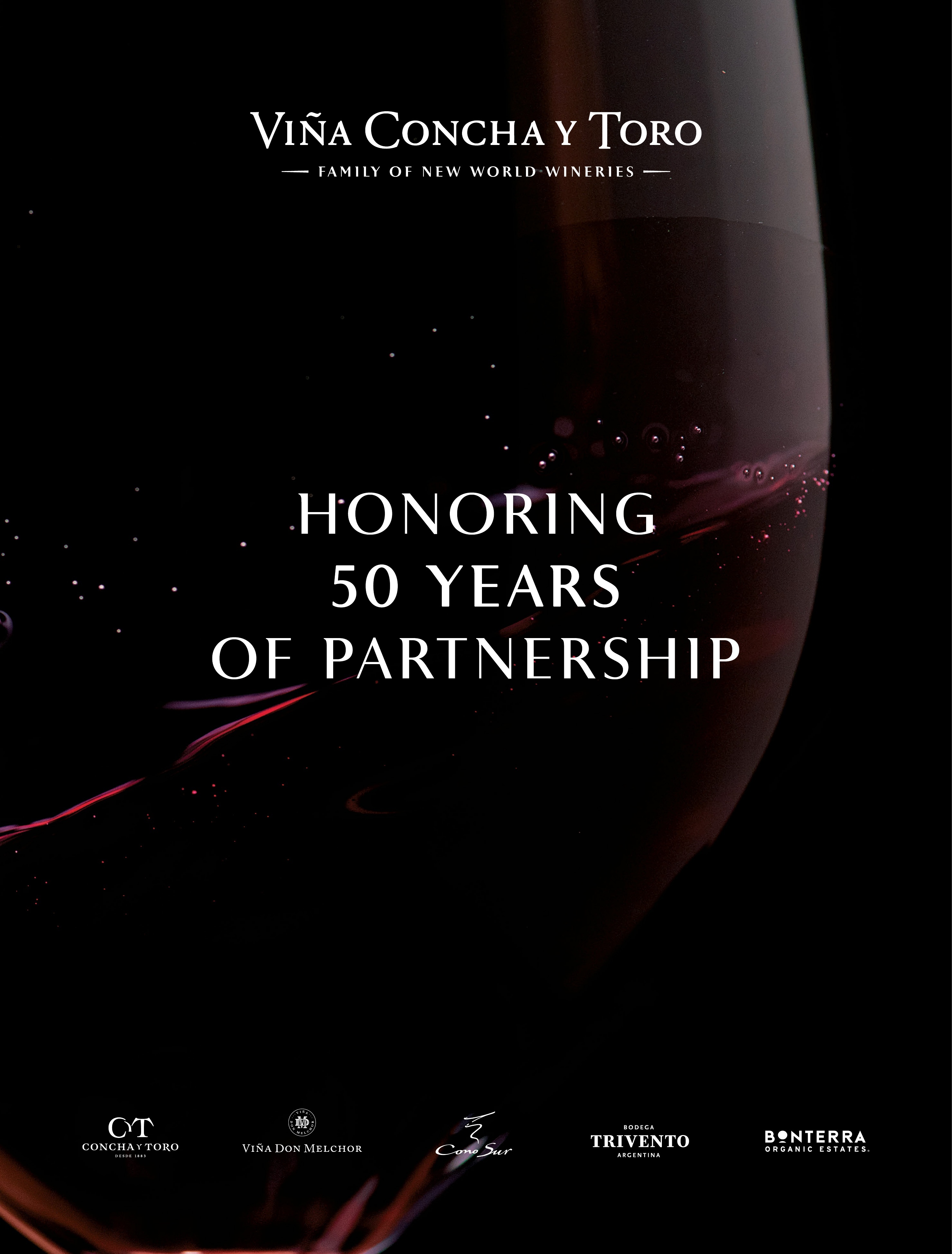
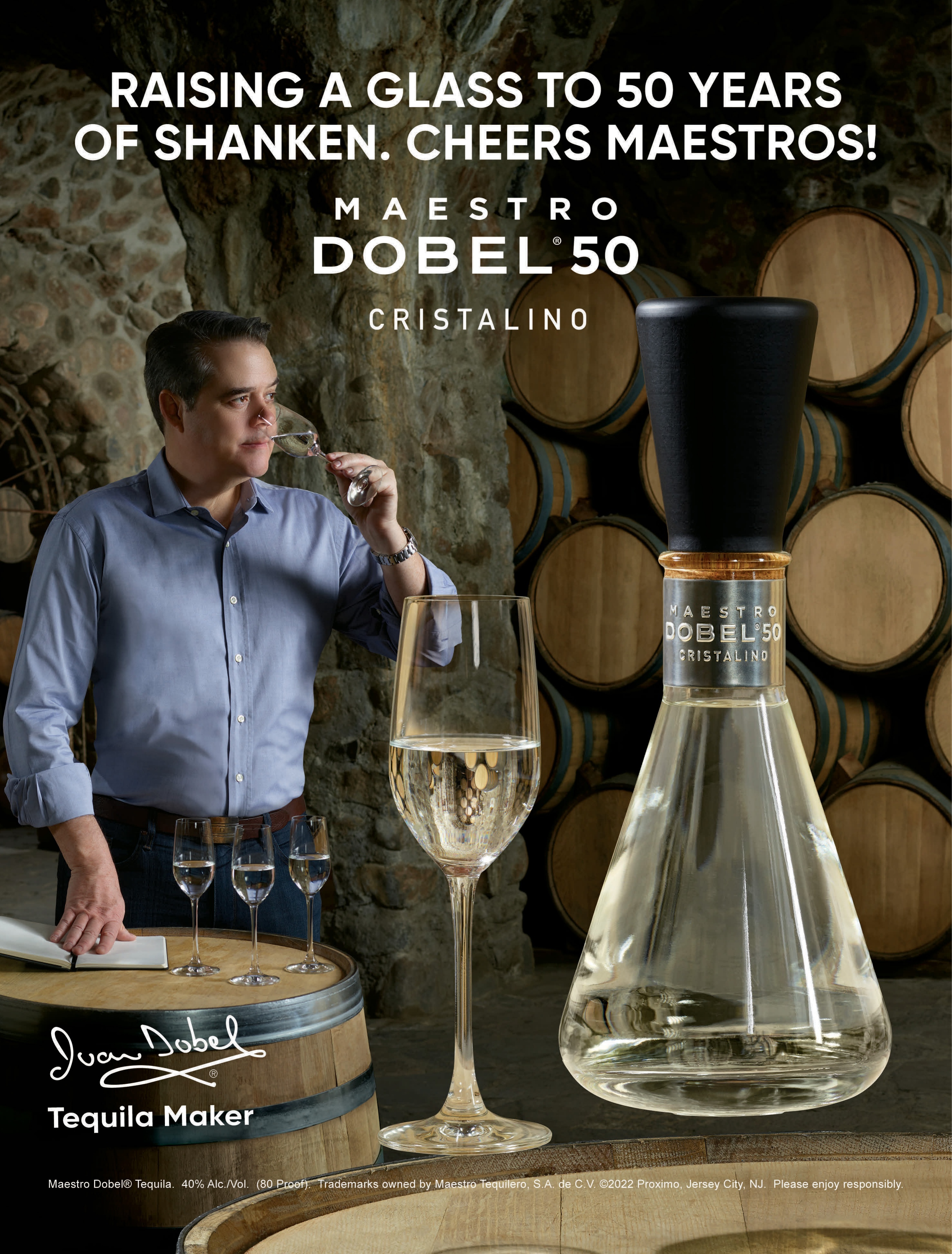
THE PORTFOLIO • MARKET WATCH
Cigar Aficionado
1992
F rom day one, Cigar Aficionado made waves in the magazine industry. The first consumer-lifestyle publication of its kind to dedicate pages of content to the cigar industry, Cigar Aficionado reshaped traditional, men’s lifestyle magazines while also drawing in a female audience. The publication that made it OK to like cigars and encouraged people not to hide their love of a good smoke continues to celebrate the good life with every issue, featuring content on cigars, of course, but also on spirits and luxury brands across many platforms, from travel and fashion to automobiles, golf, celebrities and art.
Marvin R. Shanken officially launched Cigar Aficionado in September 1992, when the inaugural issue hit newsstands (though he’d been working on the project for a year before the first issue was printed). The magazine’s first executive editor, Gordon Mott, recalls that when Shanken approached the company’s senior executives to pitch the idea of a cigar magazine, the response was negative as everyone in the room expressed skepticism of its potential for success. But after working through the initial planning stages and a sample issue, Shanken saw great possibility.
“Marvin very quickly came to the realization that he had an opportunity to do something unusual,” Mott says. “There was nothing out there that remotely resembled what we were attempting to do—a glossy, four-color, consumer magazine with the title Cigar Aficionado. A lot of people in the magazine industry give Marvin credit for coming up with a specialty magazine that also has broad lifestyle content.”
At the start, Shanken’s hope was to reach a circulation of 20,000 copies for Cigar Aficionado. He surpassed that goal from the onset, as the first issue went out to an audience of more than 100,000 and had a lot of support from advertisers. Today, Cigar Aficionado’s readership is over 1.4 million.
“It was an overnight success,” Shanken said in 2012 for the magazine’s 20th anniversary issue. “The magazine actually turned a profit in the first year, which is unheard of in publishing. I was fulfilling a fantasy and fulfilling a dream. More than any financial success, I wanted to create something that would bring cigar lovers together and bring them peace, and bring them happiness.”
From issue No. 1, Cigar Aficionado has featured blind tastings of cigars, which has proven immensely popular with readers. “Cigar Aficionado demystified the cigar shopping experience, providing a guide for cigar lovers,” says David Savona, the magazine’s current executive editor. “I was a reader before I joined the company, and I used the ratings to help me shop for cigars. The cigar lover of today is one who experiments, eagerly trying new brands and sizes, and the ratings in our magazine have always served as a tool to point cigar lovers in the right direction.”
Over its now 30-year history, Cigar Aficionado has stayed true to its editorial mission while also evolving. Mott recalls that one of its earliest changes came in the mid 1990s when the magazine added golf content to each issue. The magazine was originally a quarterly publication, but as it consistently sold out on newsstands, the frequency was increased in 1997 to six times a year. After riding out the boom in U.S. cigar sales through most of the 1990s—during which consumption and import numbers for cigars nearly quadrupled—Cigar Aficionado debuted a redesign at the end of the decade, making the word “cigar” smaller, the word “aficionado” larger, and simultaneously unveiling its first cover that didn’t feature a person holding a cigar. The redesign came not long after the cigar market went through a correction in supply, with declining sales from 1998 through around 2001.
The magazine’s switch ultimately ensured longevity for the publication, though it was met with harsh critique. “It was fascinating at the time,” Mott recalls. “It was a very symbolic change and people said we were giving up on cigars. It took a while, but people came back around to realizing we were still dedicated to cigars and there was nothing else like us.” Mott also points out a direct correlation between the aforementioned boom in cigar sales during the mid 1990s and the launch of Cigar Aficionado magazine. “If you look at a graph of cigar sales going back to the surgeon general’s report, the graph has a steady decline until September 1992, the date Cigar Aficionado was launched,” he recalls. “Either our timing was truly extraordinary and incidental, or we had a true impact on cigar sales.”
More proof of Cigar Aficionado’s impact came when the magazine sponsored its first Big Smoke event, an in-person gala celebrating cigars, spirits and “the good life.” Shanken debuted the Big Smoke in 1993 in New York City, but had only promoted it within Cigar Aficionado magazine. Before the inaugural event, there was no newspaper or radio advertising and no outreach for attendees beyond the magazine itself. Still, the first Big Smoke attracted 1,500 people, with a line at the entrance hundreds of people deep. Three years later, in 1996, the Big Smoke schedule included six different cities and drew thousands of attendees nationwide; at its highest, Cigar Aficionado hosted 10 Big Smokes a year. The cigar-themed event remains popular today, with annual events in New York and Las Vegas.
Cigar Aficionado has also garnered praise for its online presence. Along with printing six issues a year, the magazine maintains a website with its own content, a stand-alone offering that posts daily updates on cigars and lifestyle. CigarAficionado.com won the first online-themed award given by the American Society of Magazine Editors for its website and Mott credits Shanken with being a forward-thinker in that regard, encouraging unique online content in addition to and beyond the scope of the print magazine.
“He broke a frontier,” Mott says. “Marvin’s expectations, dreams and visions have driven M. Shanken Communications. His legacy is truly extraordinary.”
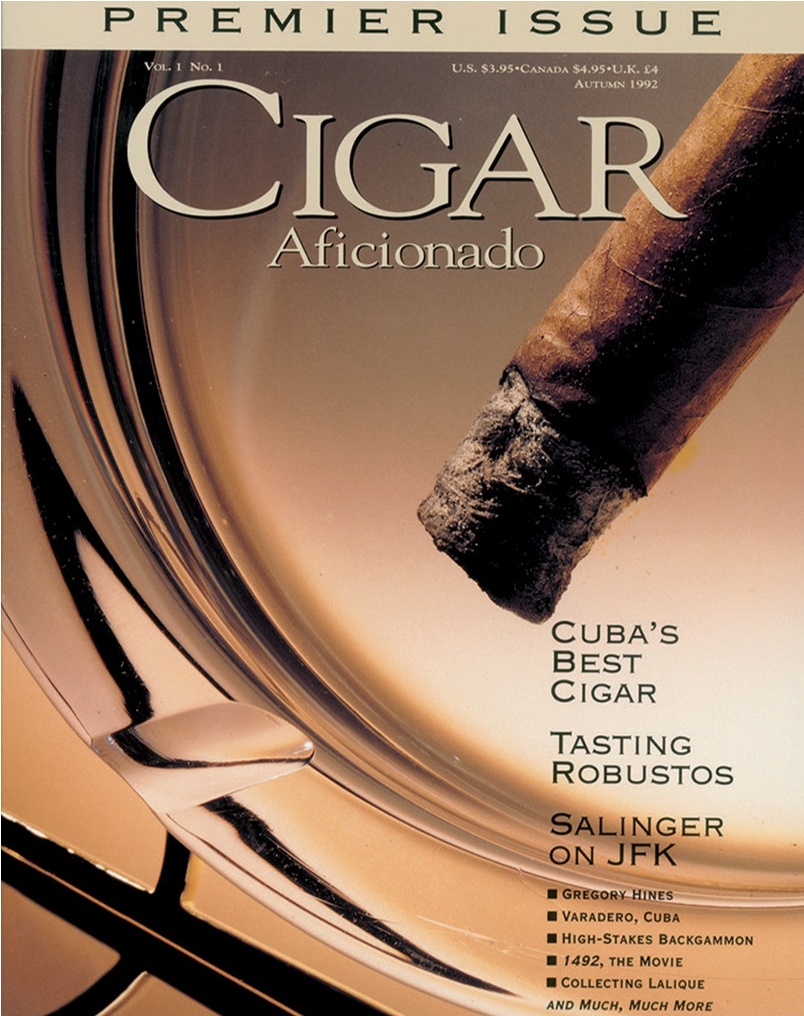
Autumn 1992
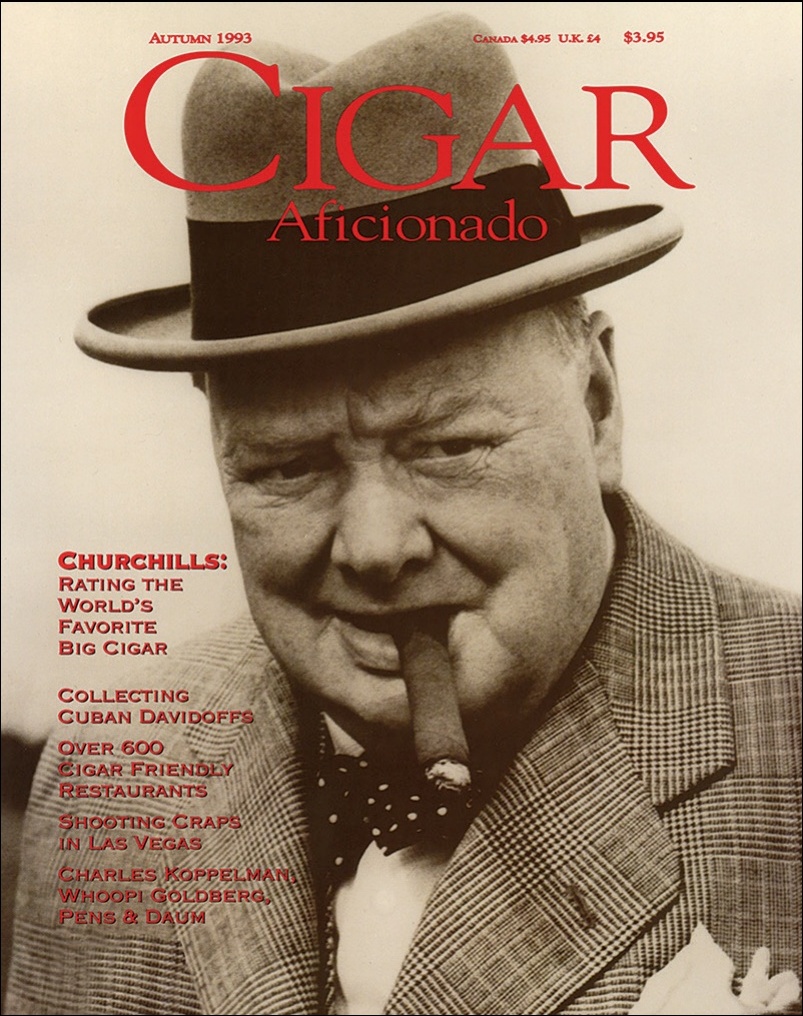
Autumn 1993
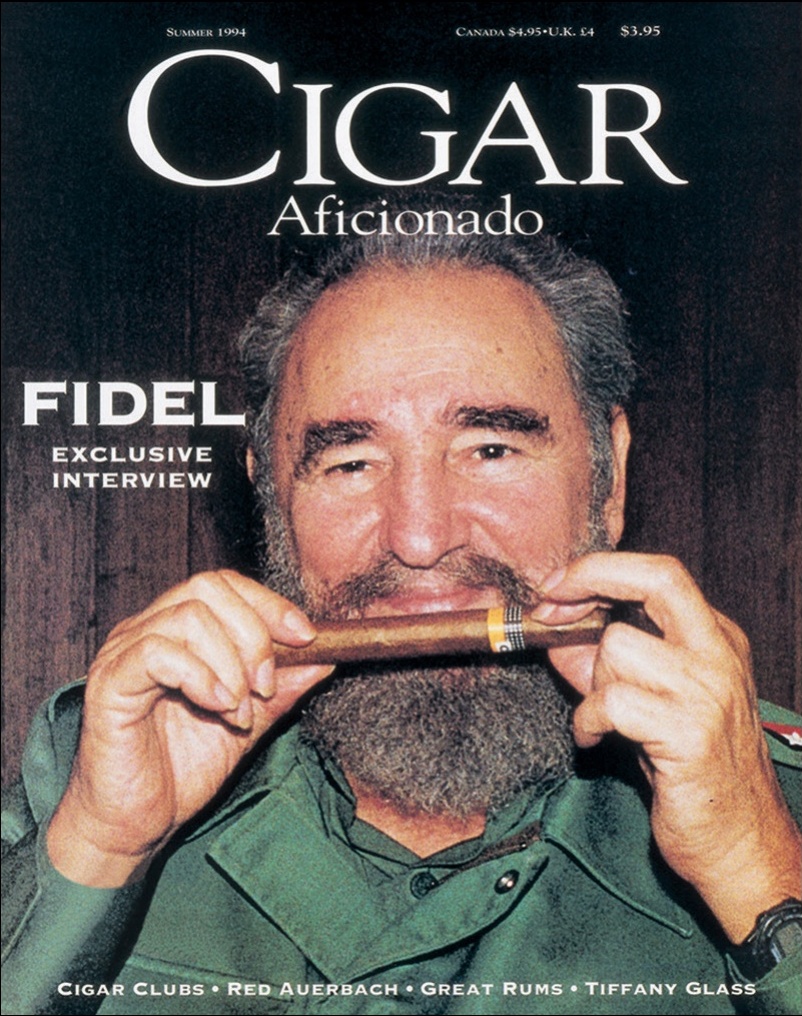
Summer 1994
March/April 2001
November/December 2017
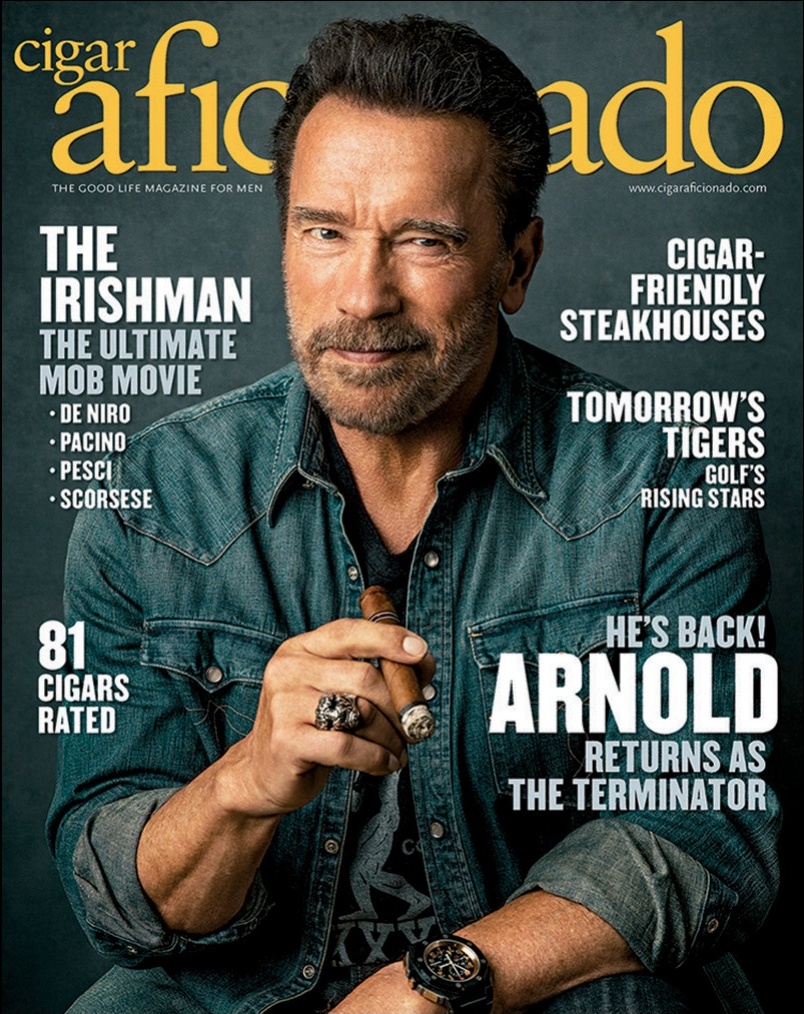
November/December 2019
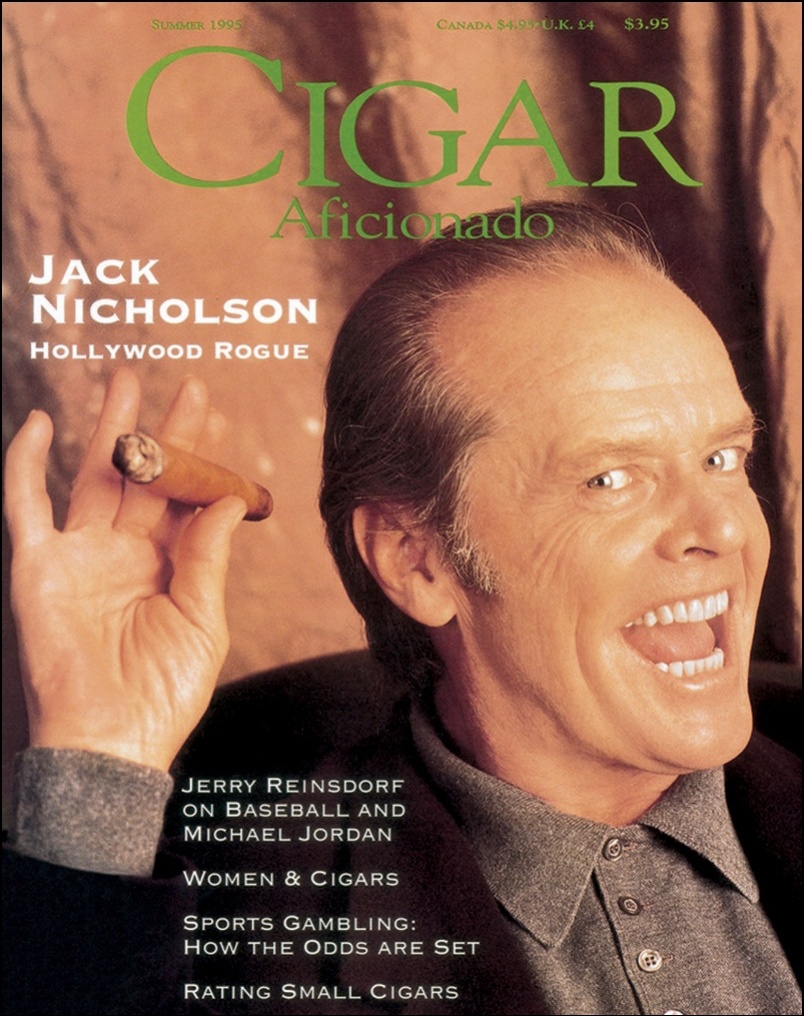
Summer 1995
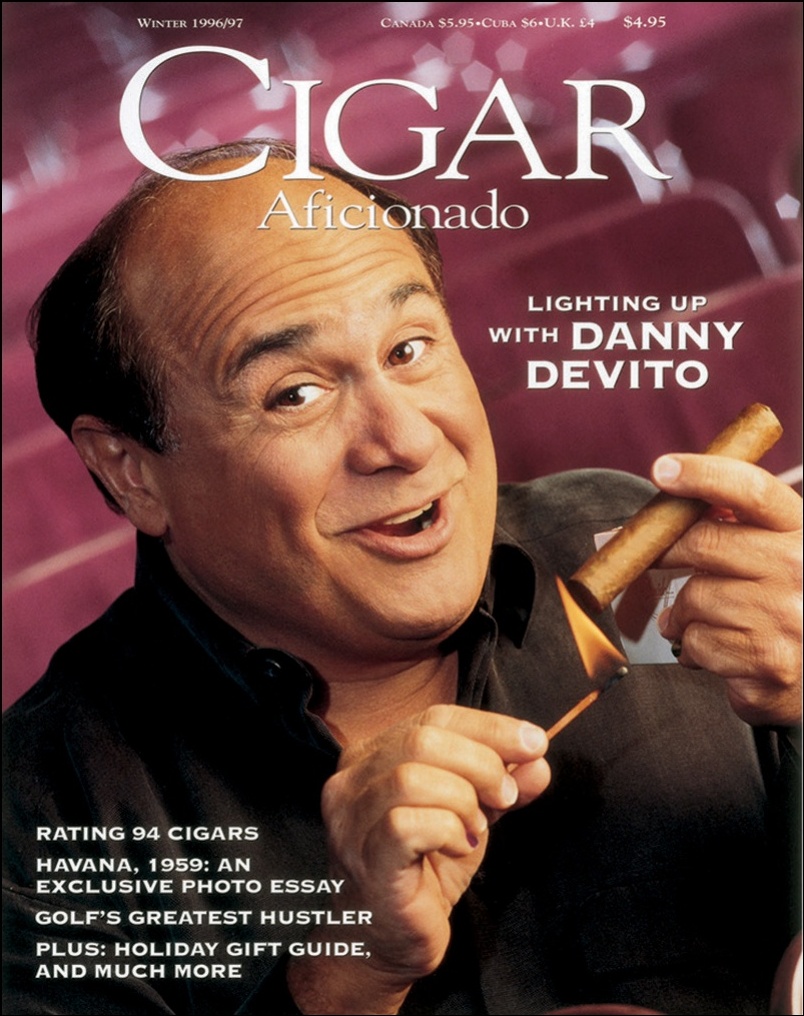
Winter 1996
November/December 1998
January/February 2021
March/April 2022
November/December 2022
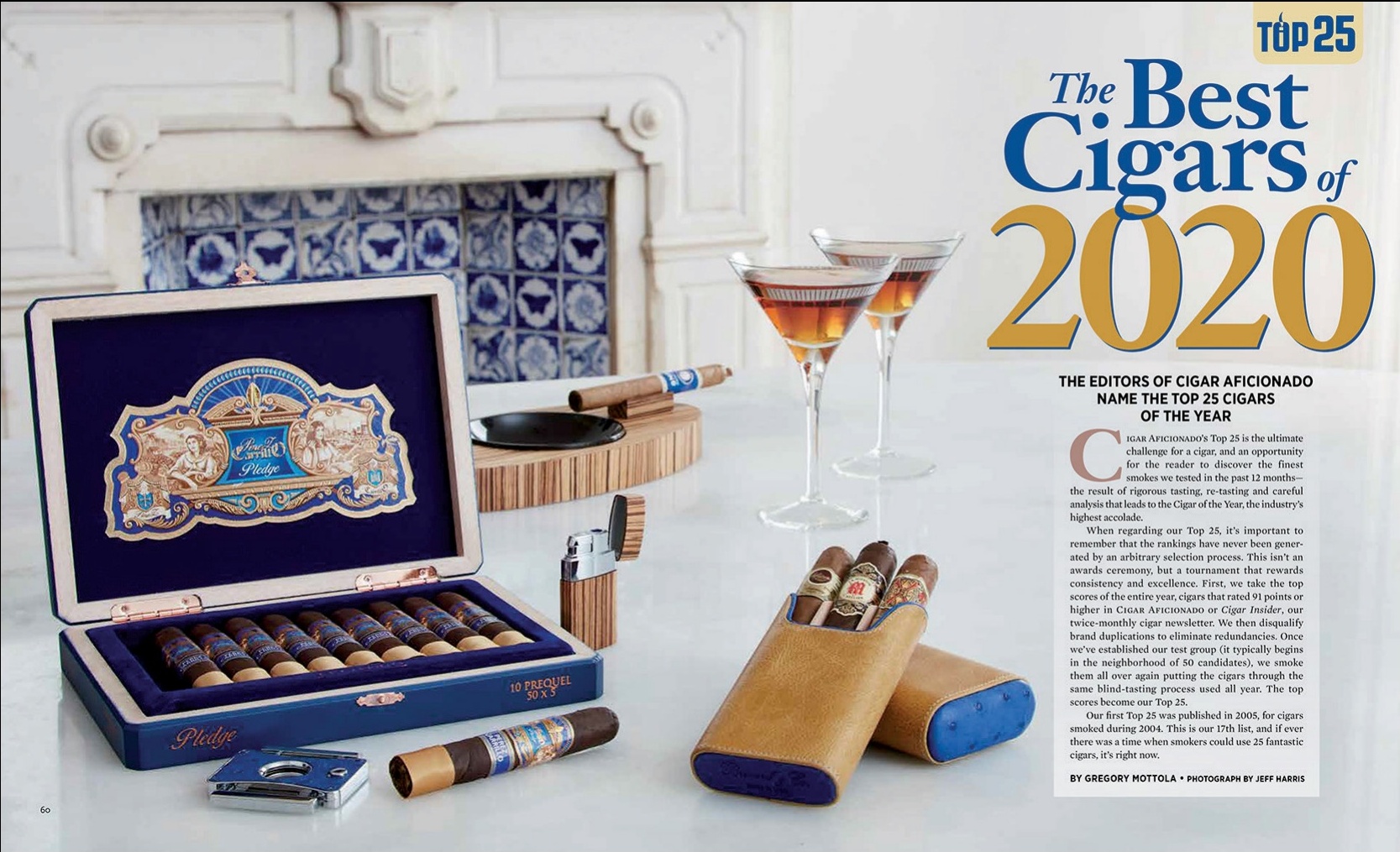
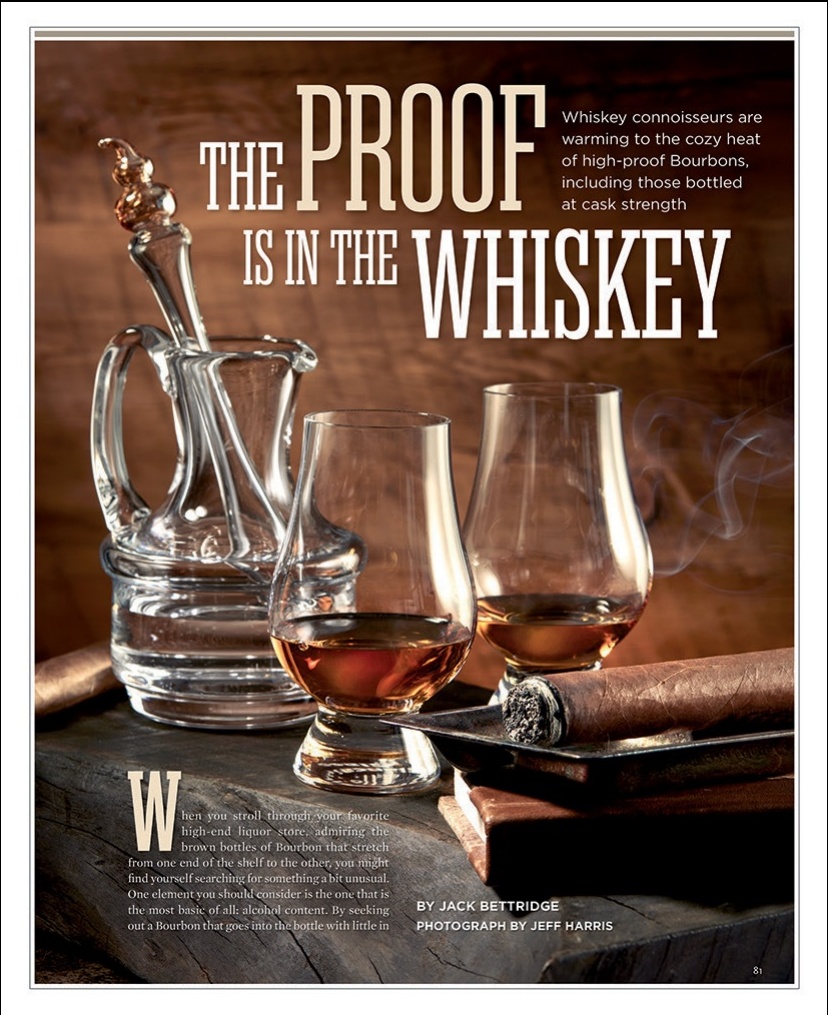
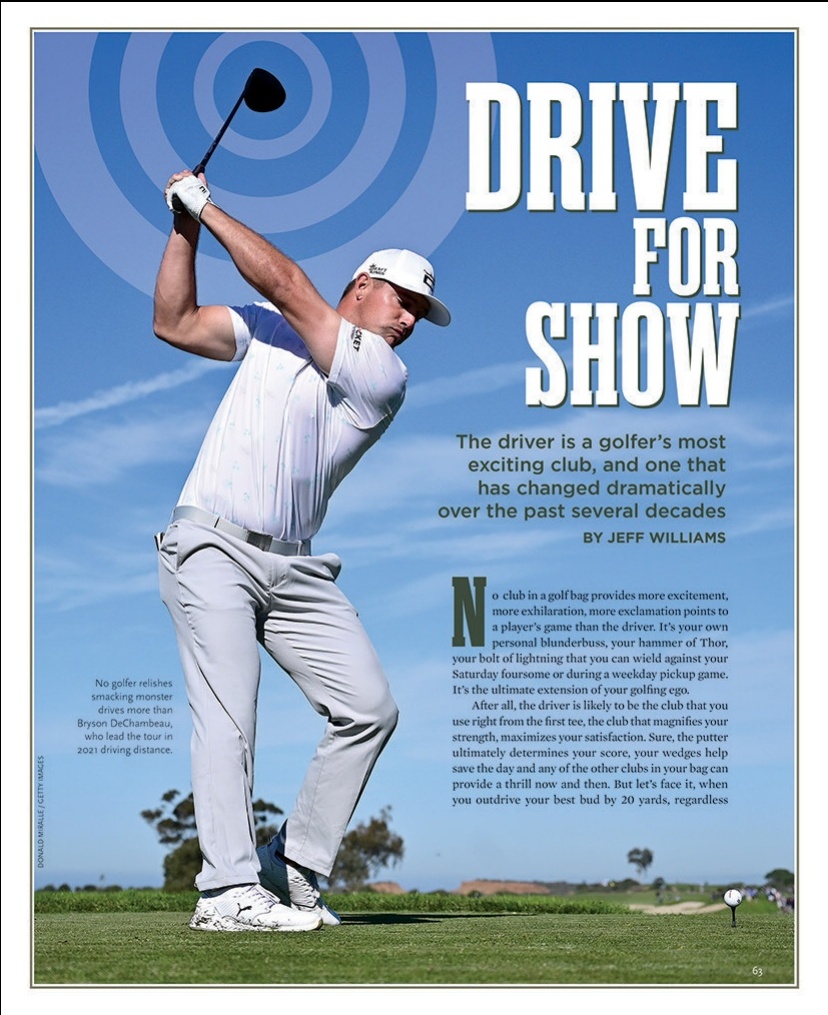
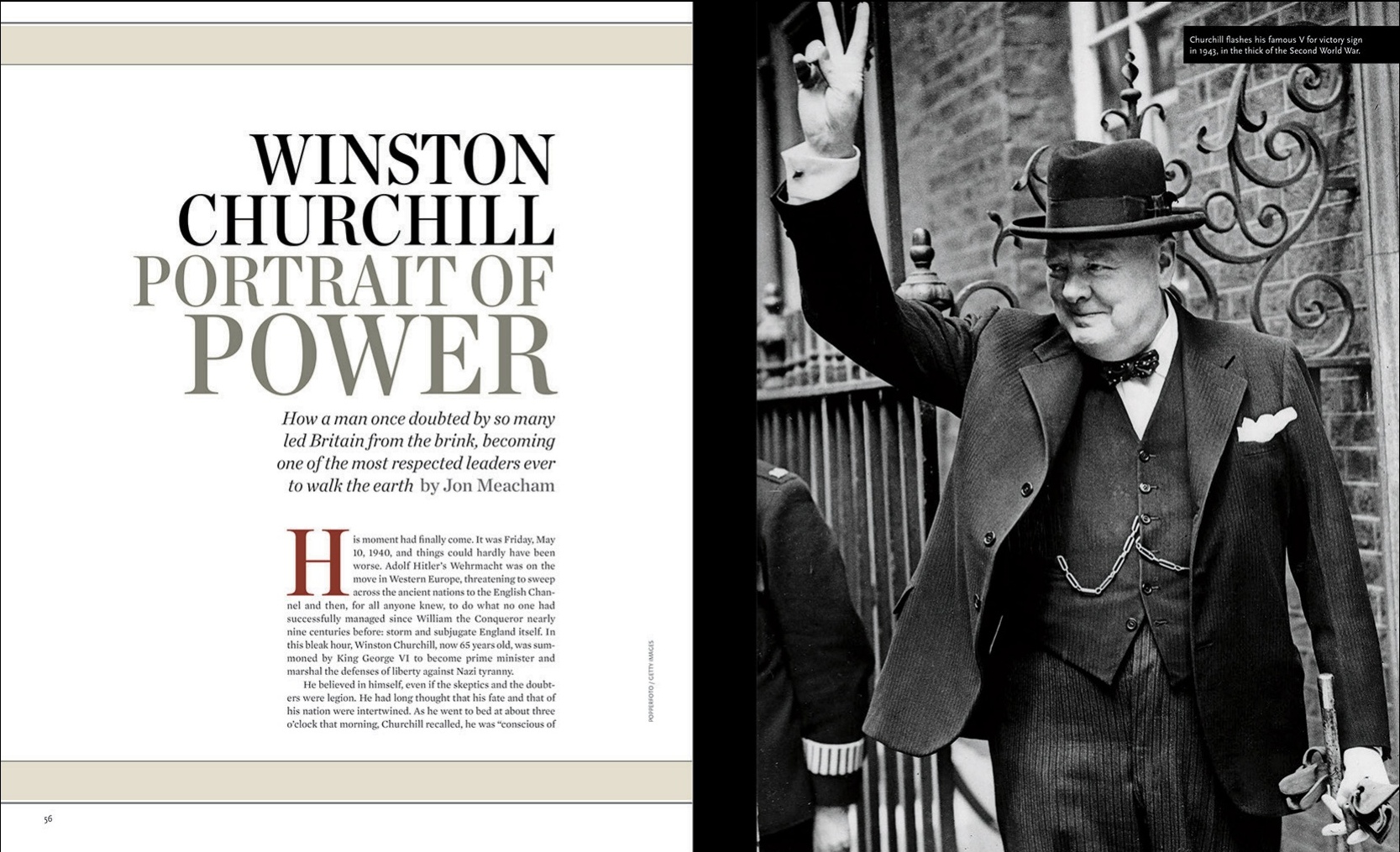
Premium drinks, profiles of intriguing personalities, golf and, of course, the world’s very best cigars have been core to Cigar Aficionado for 30 years.
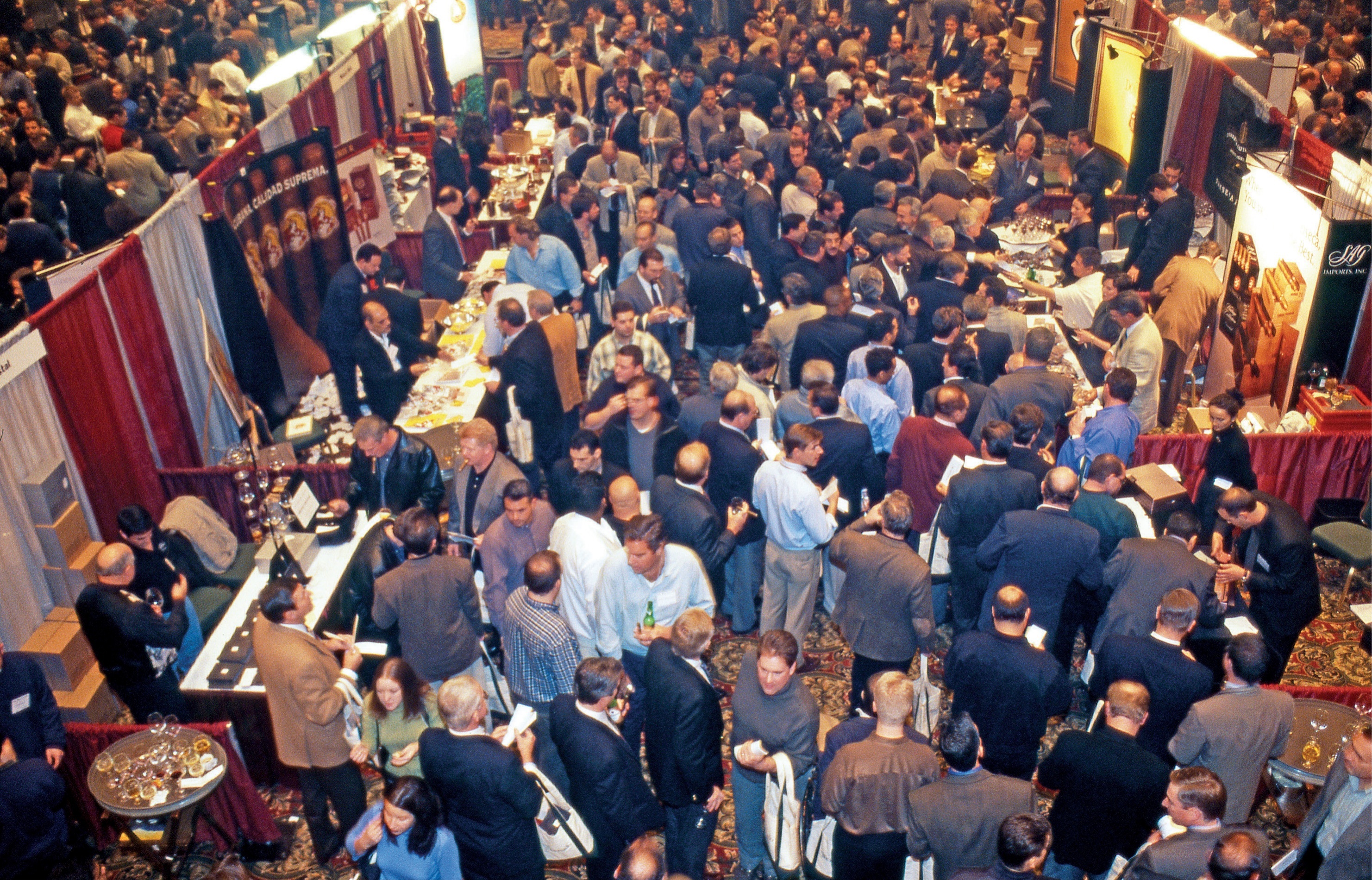
The Big Smoke is an unapologetically cigar-friendly gathering that has attracted cigar lovers from around the world since its debut in 1993.
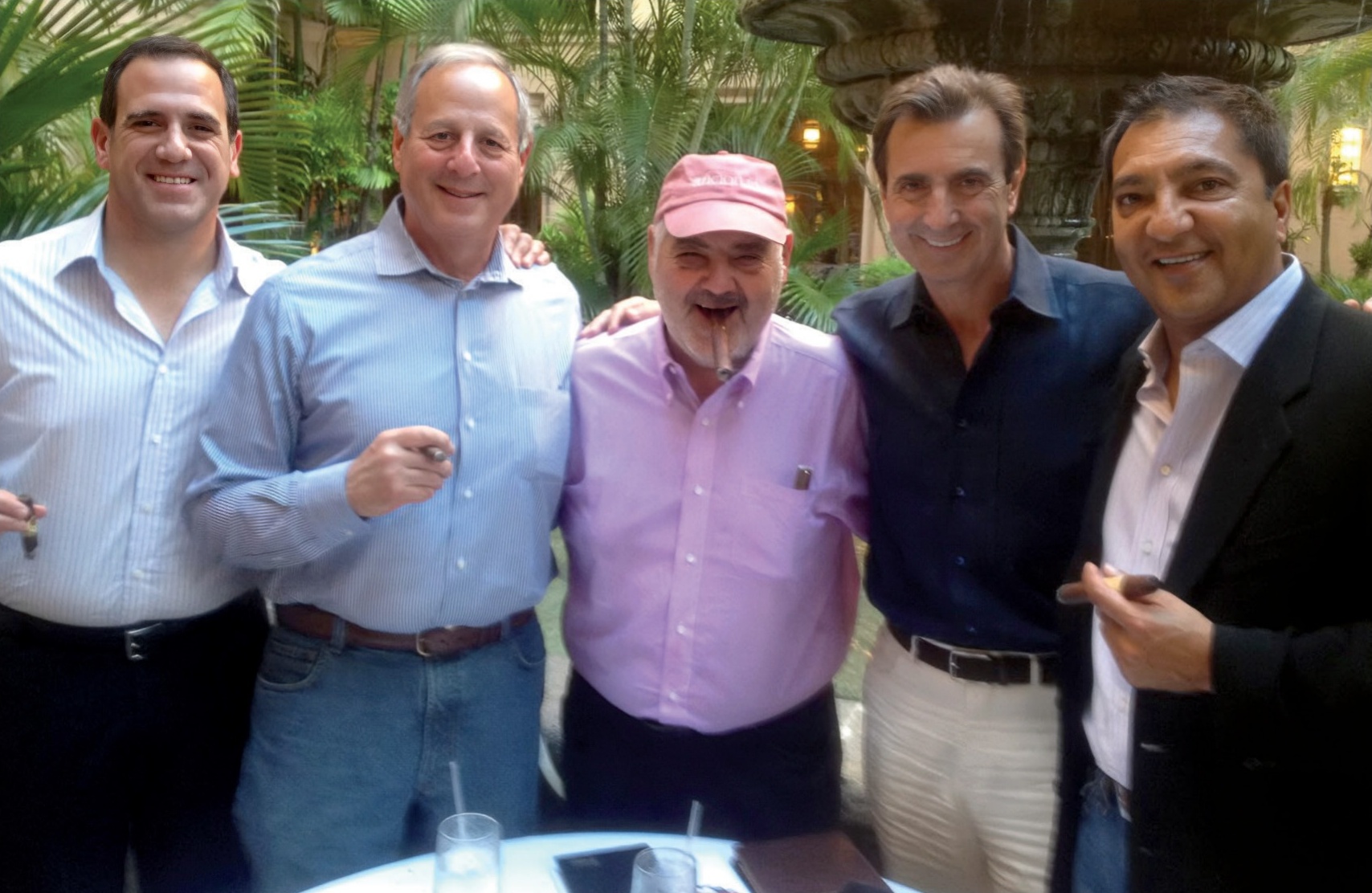
From left: Jorge Padrón, Robbie Levin, Marvin R. Shanken, Litto Gomez and Rocky Patel take a break from the Big Smoke action at the Biltmore Hotel in Coral Gables, Fla., in 2011.
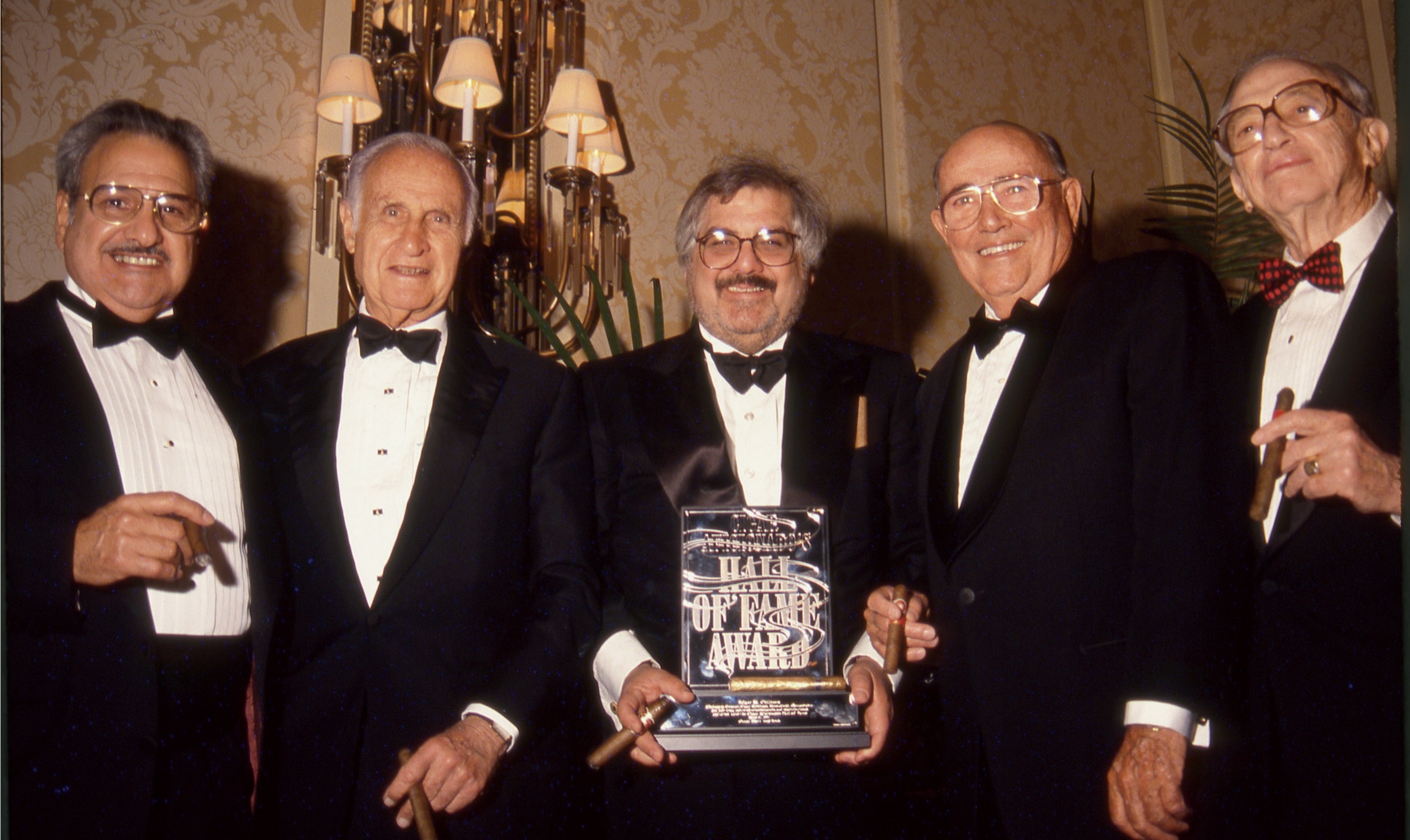
Cigar Aficionado Hall of Famers in 1997. From left: Carlos Fuente Sr., Edgar Cullman Sr., Marvin R. Shanken, Frank Llaneza and Stanford Newman.
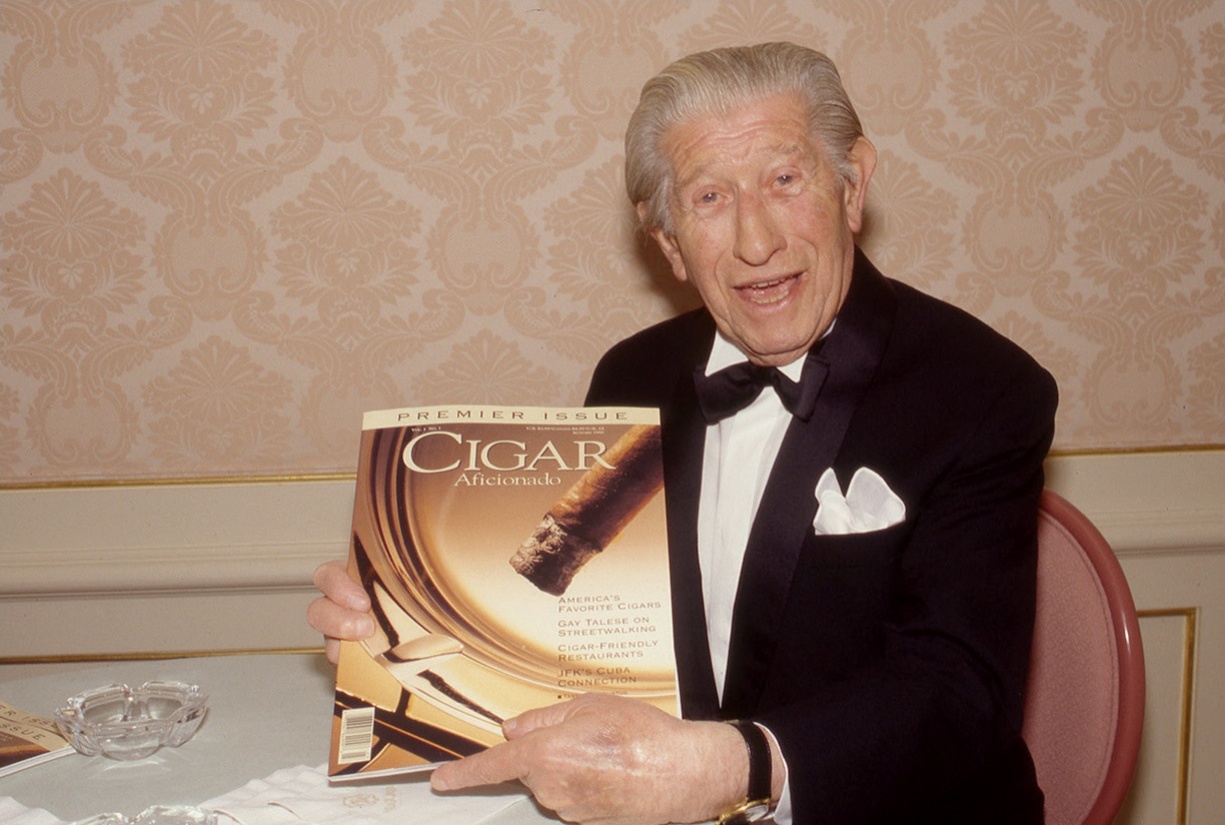
Zino Davidoff, creator of the cigar brand that bears his name, at the Cigar Aficionado launch party in New York City on Sept. 9, 1992.
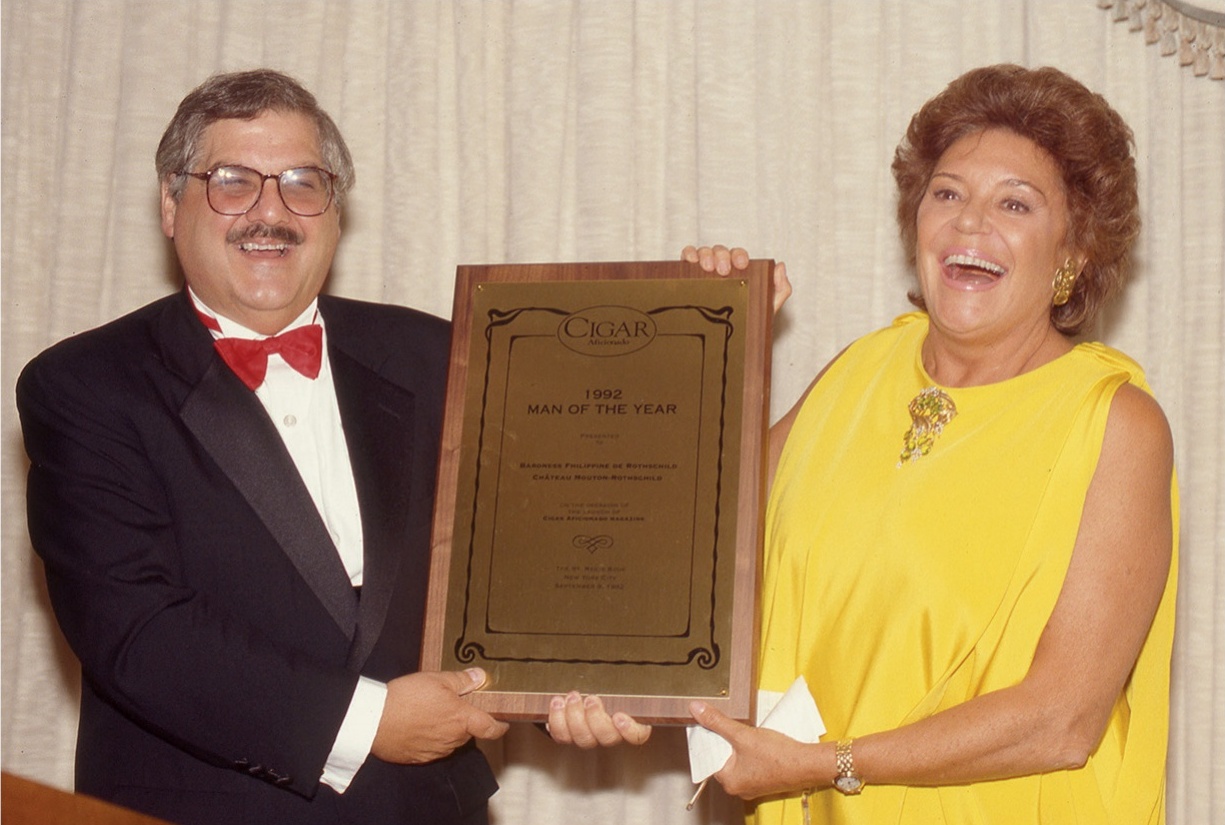
Baroness Philippine de Rothschild is named Man of the Year at the Cigar Aficionado launch party at the St. Regis Hotel in 1992.
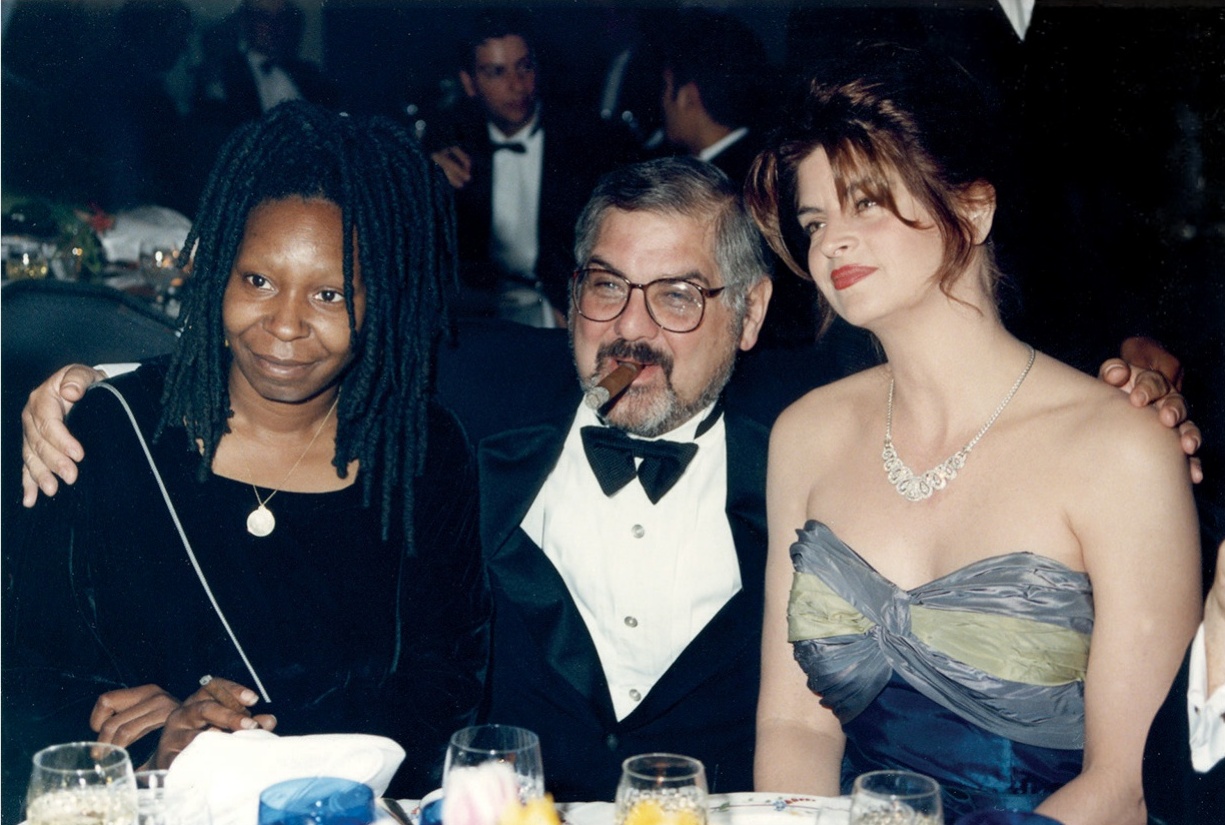
Whoopi Goldberg and Kirstie Allie flank Marvin R. Shanken at the Beverly Hills event Hollywood Salutes Marvin Shanken in 1995.
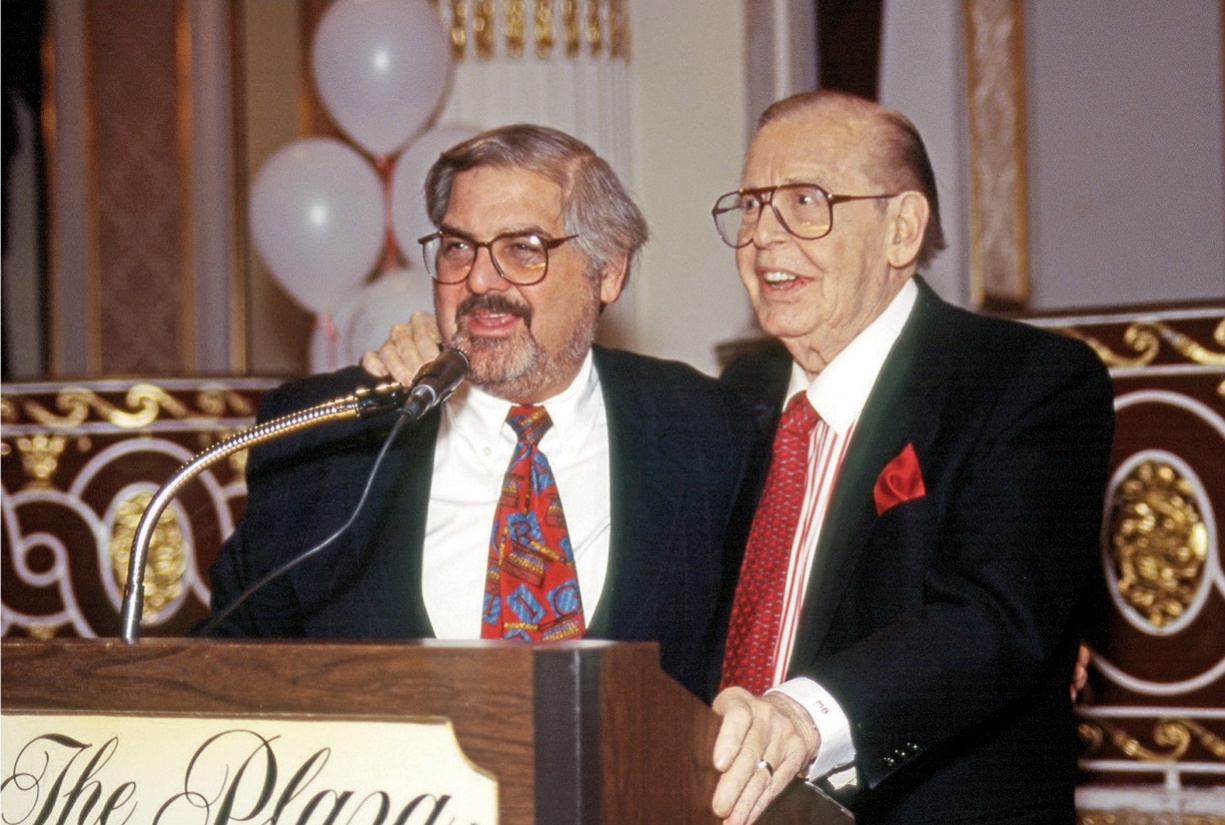
Legendary cigar lover Milton Berle (right), the original Mr. Television, with Marvin R. Shanken at a Big Smoke lunch in New York in 1995.
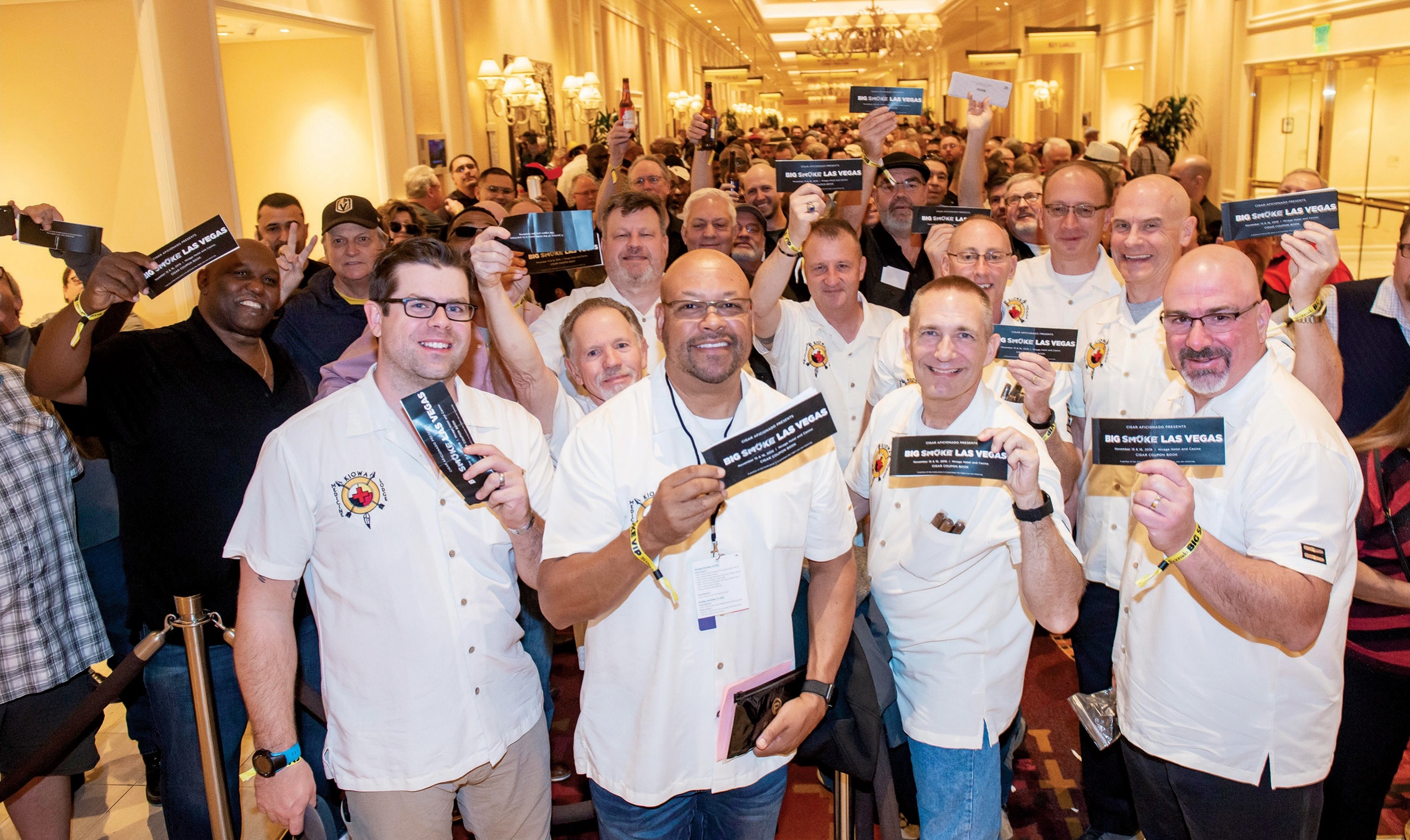
Gentlemen, you may smoke: An eager crowd, tickets in hand, lines up early to enter the Las Vegas Big Smoke in 2019.
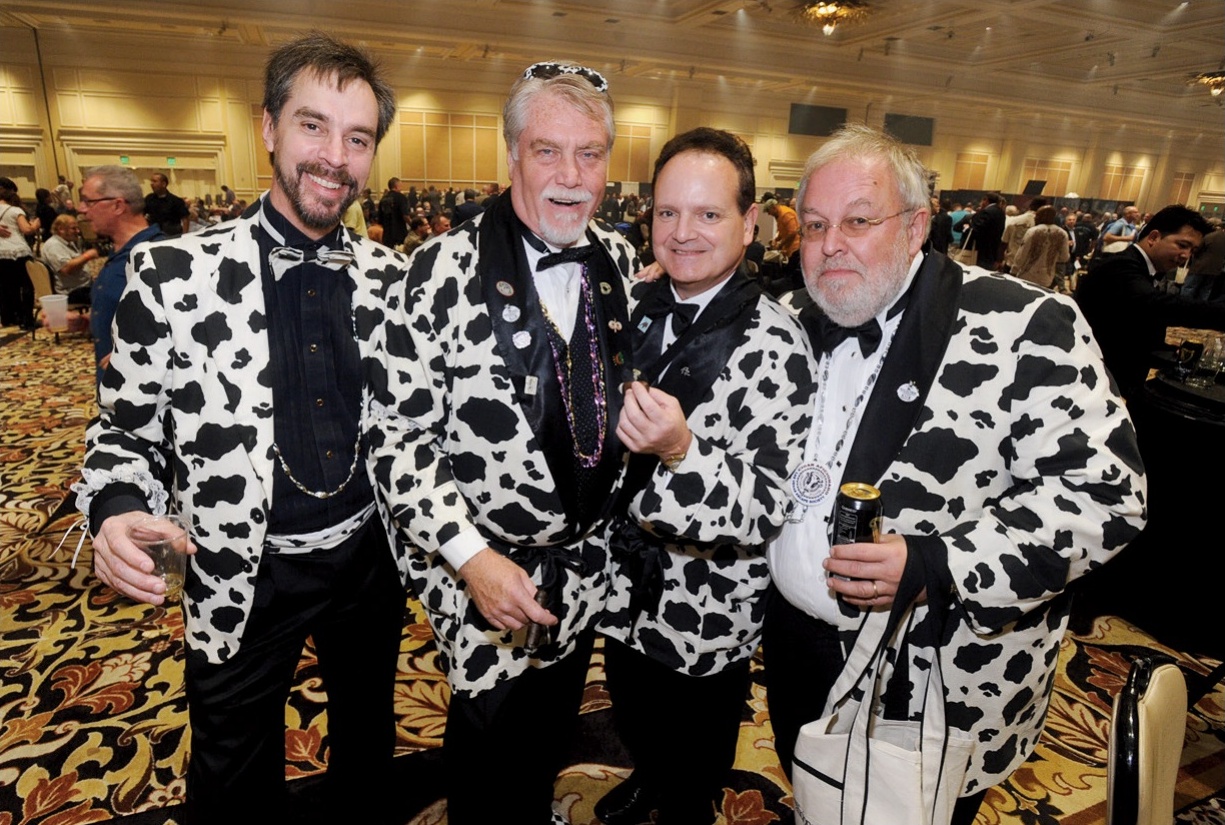
The CALVES break out their fancy smoking jackets in 2014.
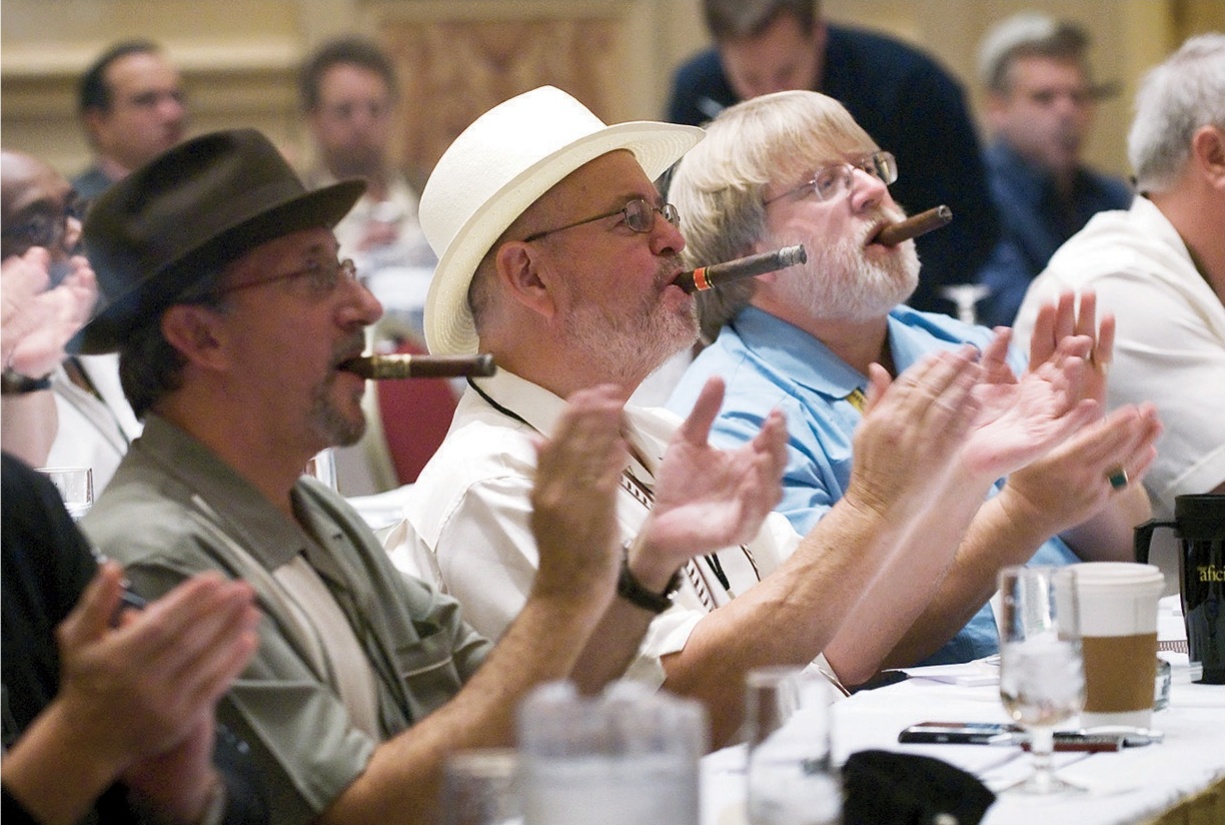
Veteran Big Smoke Las Vegas seminar attendees puff away in 2009.
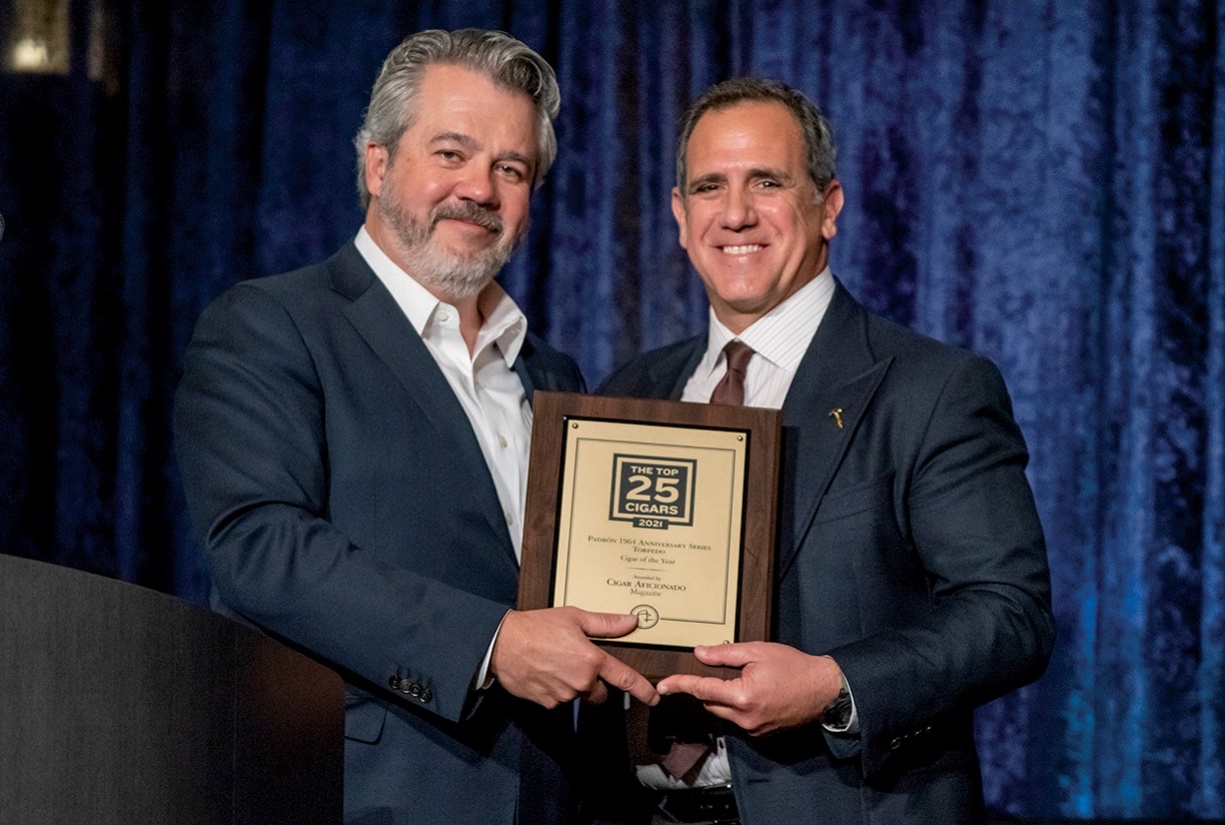
Jorge Padrón (right) is presented with the award for Cigar of the Year by executive editor David Savona at the Big Smoke Las Vegas in 2022.
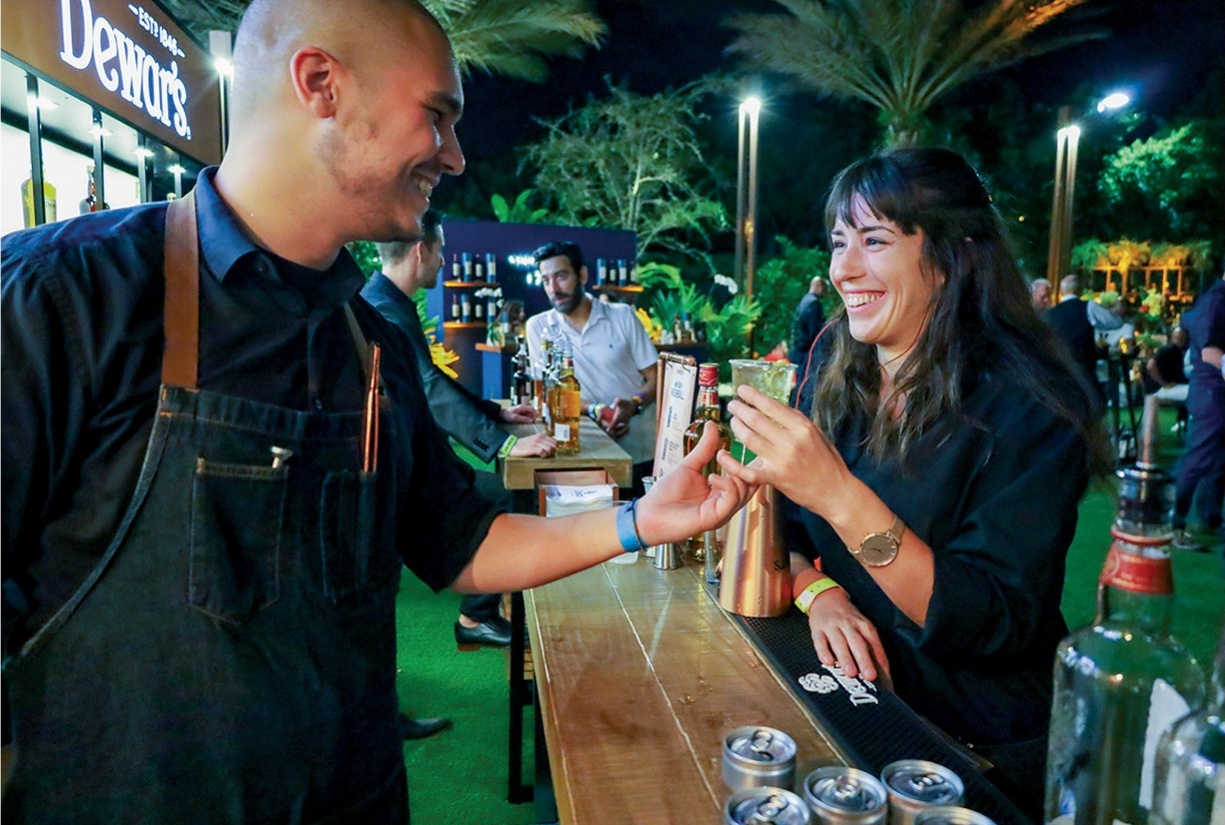
Guests indulge in fine whiskies and premium smokes, al fresco, at the inaugural Big Smoke Meets WhiskyFest in Hollywood, Fla., in 2021.
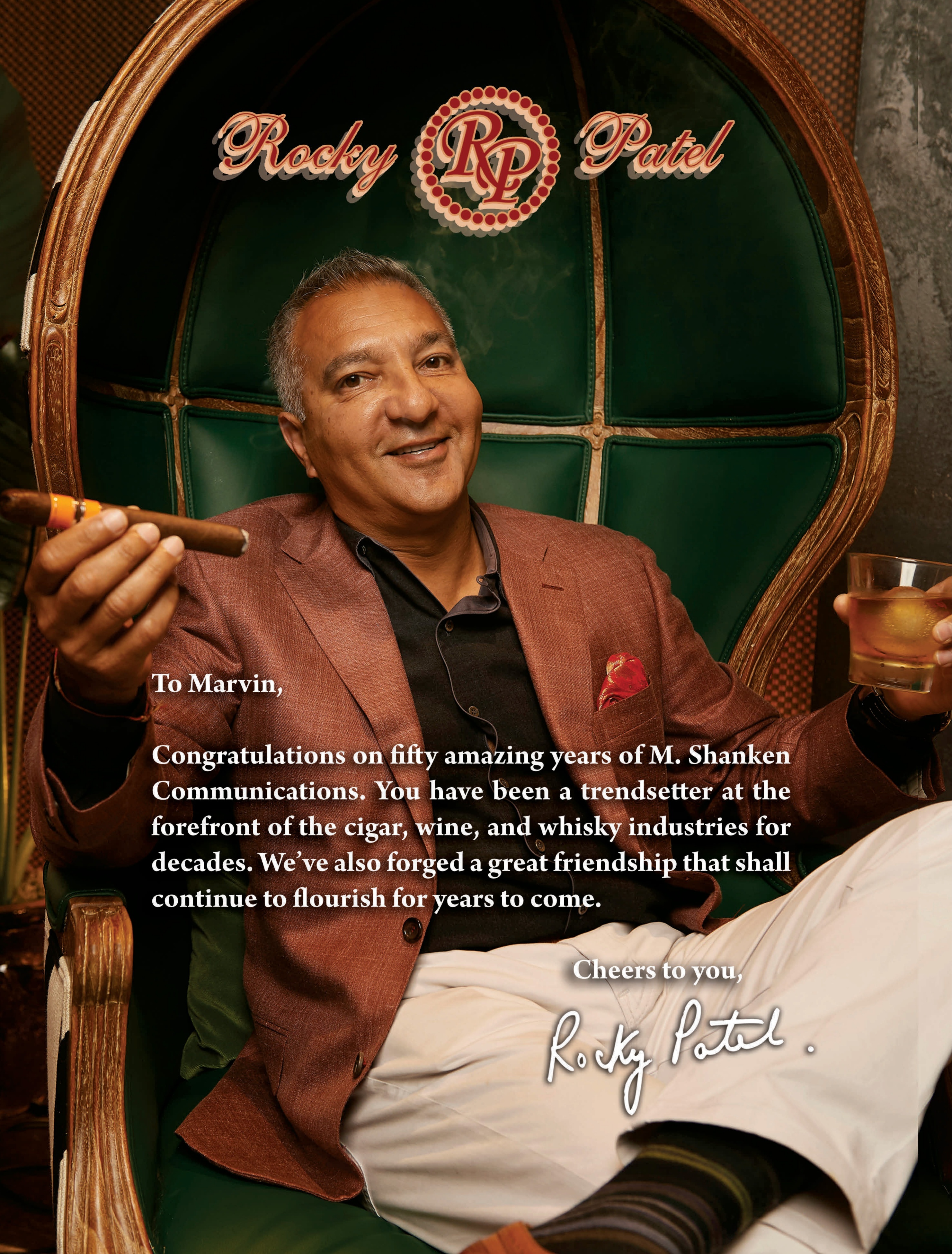
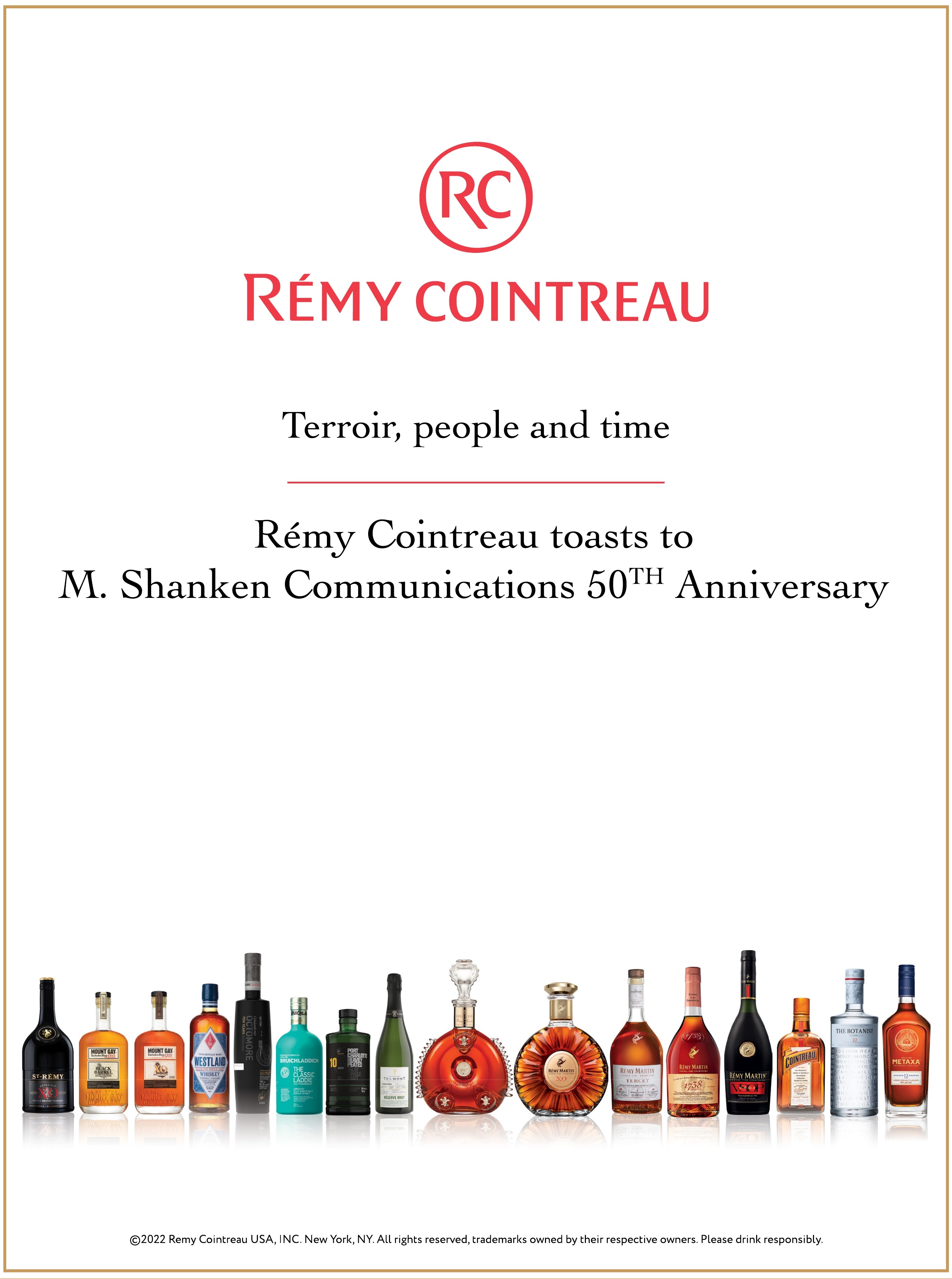
THE PORTFOLIO • WHISKY ADVOCATE
Whisky Advocate
2010
W hisky Advocate, the newest addition to the M. Shanken Communications lineup of lifestyle publications, was founded in 1992 as Malt Advocate magazine. In June 2010, M. Shanken acquired the then beer and whisky magazine, and within 18 months relaunched it as Whisky Advocate. Aside from the new name, focus on whisky, and larger book size, the magazine underwent a complete overhaul with enriched content and visual appeal that elevated the reading experience. Before the creation of whiskey trails and distilleries offered public tours, and before craft whisky burgeoned and there were distilleries in every state, the pages of Whisky Advocate transported readers to the distilleries they couldn’t explore and introduced them to whiskies they otherwise would have never discovered. Whisky Advocate was at the forefront of the evolution of the whisky industry, and today remains the premiere source for whisky lovers, inspiring readers to travel to distilleries, bars, and other whisky-related destinations with a copy of Whisky Advocate in hand as a travel guide.
Under Marvin R. Shanken’s direction, Whisky Advocate’s Buying Guide was also enhanced: A new rating scheme was instituted, more whiskies reviewed, and blind tastings by a panel of reviewers was established. The scores generated from these reviews are highly regarded by whisky companies, retailers, and consumers, who rely upon them when making purchasing decisions. These reviews are the precursor to the much-anticipated annual reveal of Whisky Advocate’s Top 20 Whiskies, announced each December.
In addition to the Buying Guide, each issue includes valuable content for whisky aficionados as well as those new to whisky. All categories of the spirit are covered—Scotch, Irish, American, Japanese, and world whiskies—plus cocktails, food pairings, collecting, and more. Special editions have covered whisky clubs and explored other spirits, like Tequila. Whisky Advocate’s readership has increased from less than 10,000 up to 875,000 as a result of the changes implemented over the course of the magazine’s 12 years in the M. Shanken Communications portfolio.
“Our mission is to go out and find the most exciting whiskies in the world and bring them to our audience,” says executive editor David Fleming. “Reader service—the art of showing our audience the world of whisky and how best to enjoy it—is at the heart of what we do.”
Whisky Advocate’s WhiskyFest was the first whisky event of its kind when it started in 1998, featuring the world of whisky and the people who make the spirit, along with consumers in one room. That first WhiskyFest took place in New York and then grew to include Chicago in 2001, San Francisco in 2007, and now Las Vegas in 2022. Since 2021 the event has also teamed up with Cigar Aficionado’s Big Smoke for a combined event in Florida. WhiskyFest delivers an unforgettable evening of sampling hundreds of whiskies from around the world, along with the opportunity to meet the distillers and blenders who create them. Industry icons like Jimmy Russell, Julian Van Winkle, Jim McEwan, John Glaser, Richard Paterson, Dr. Bill Lumsden, the late Parker Beam and the late Dave Pickerell, to name a few, have all been participants.
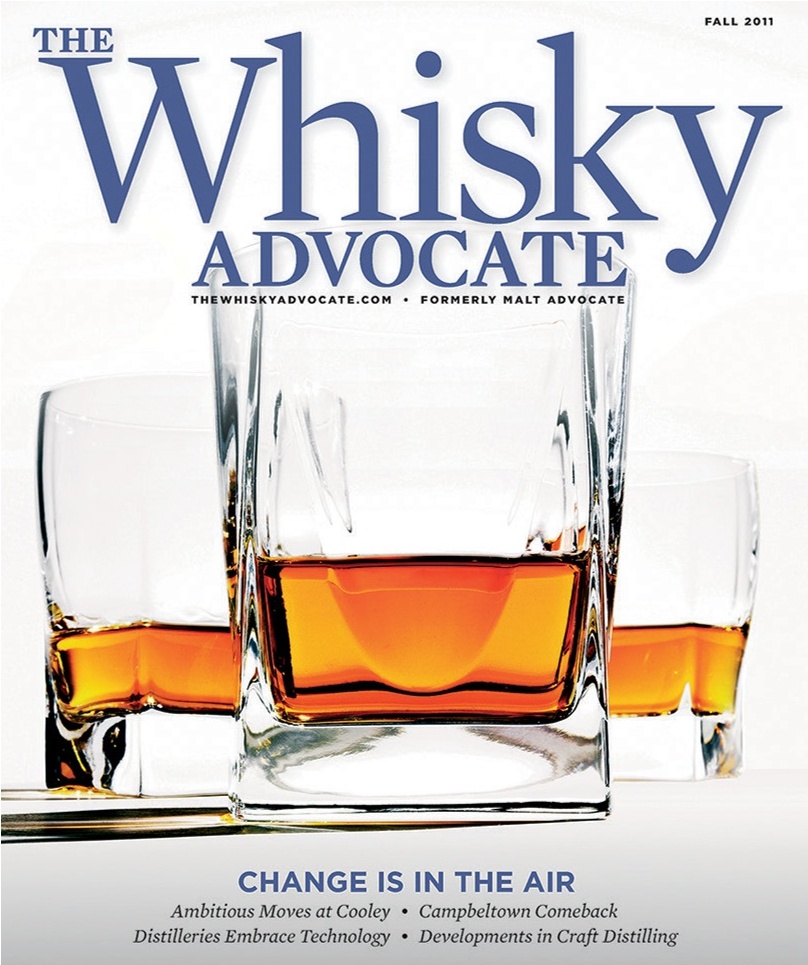
Fall 2011
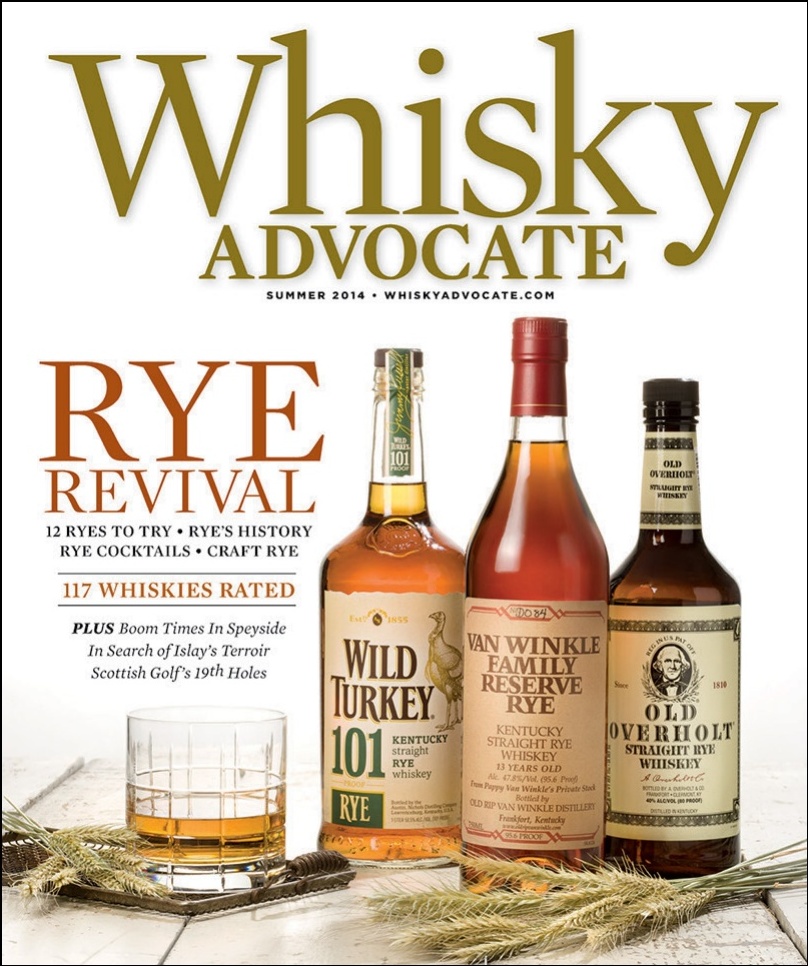
Summer 2014
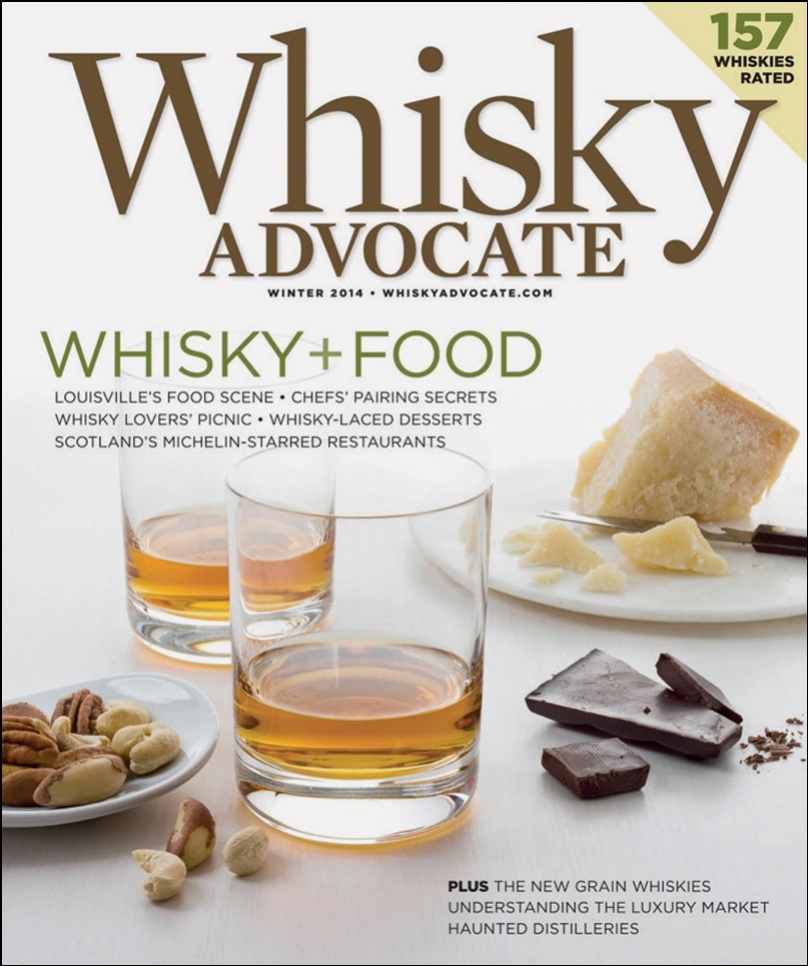
Winter 2014
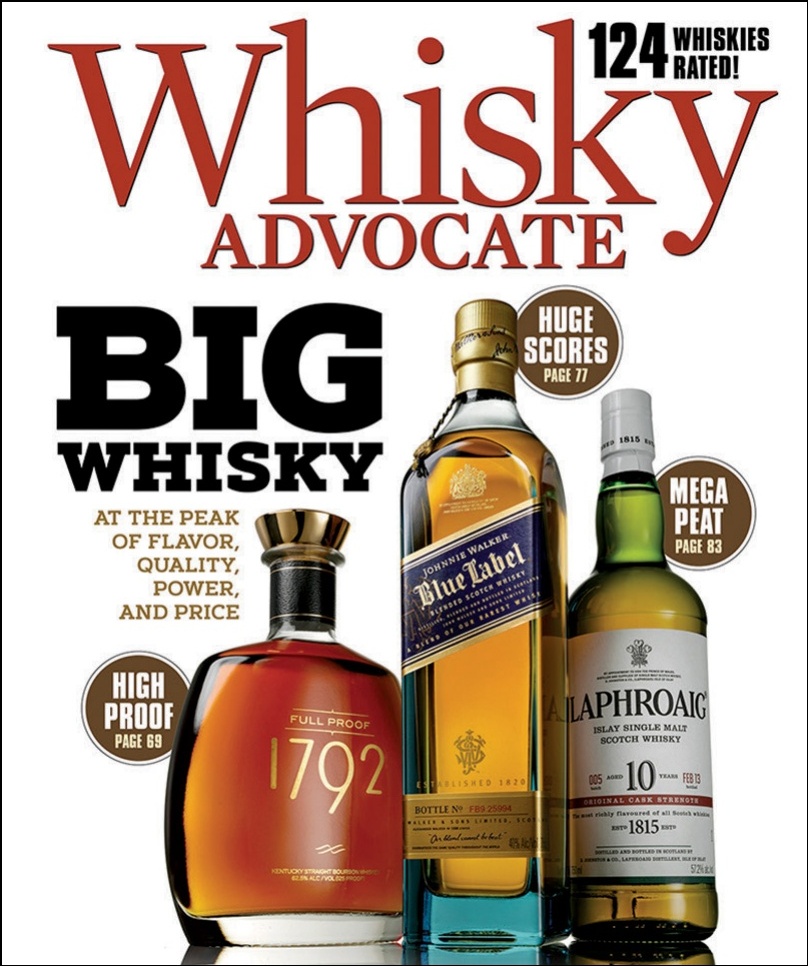
Fall 2020
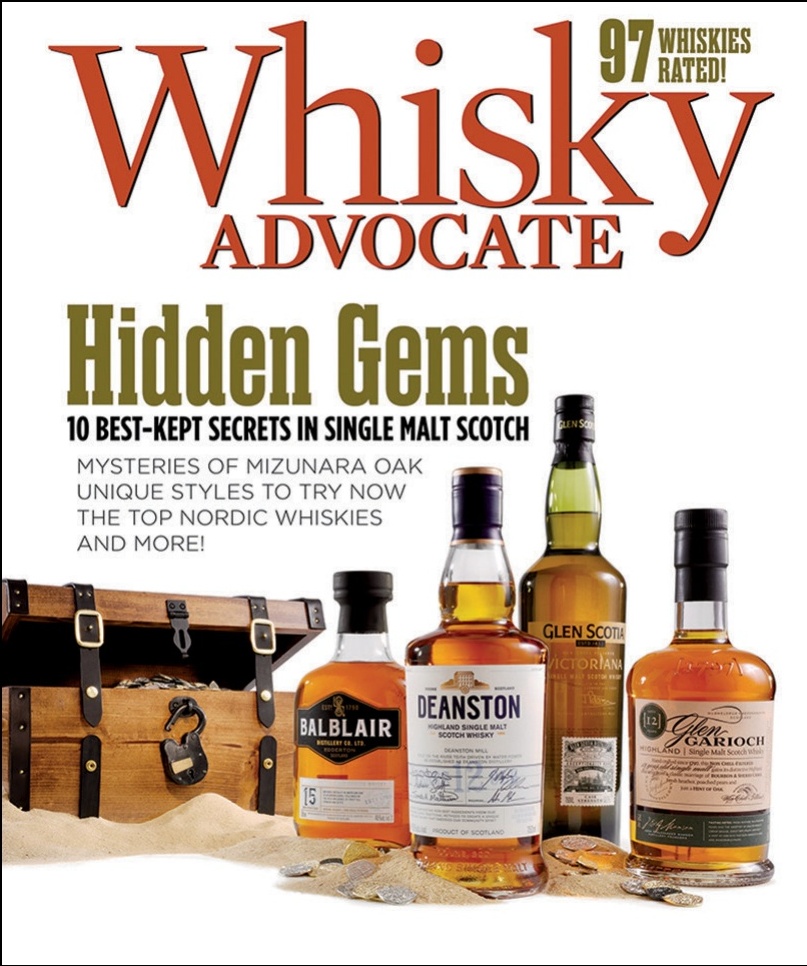
Spring 2021
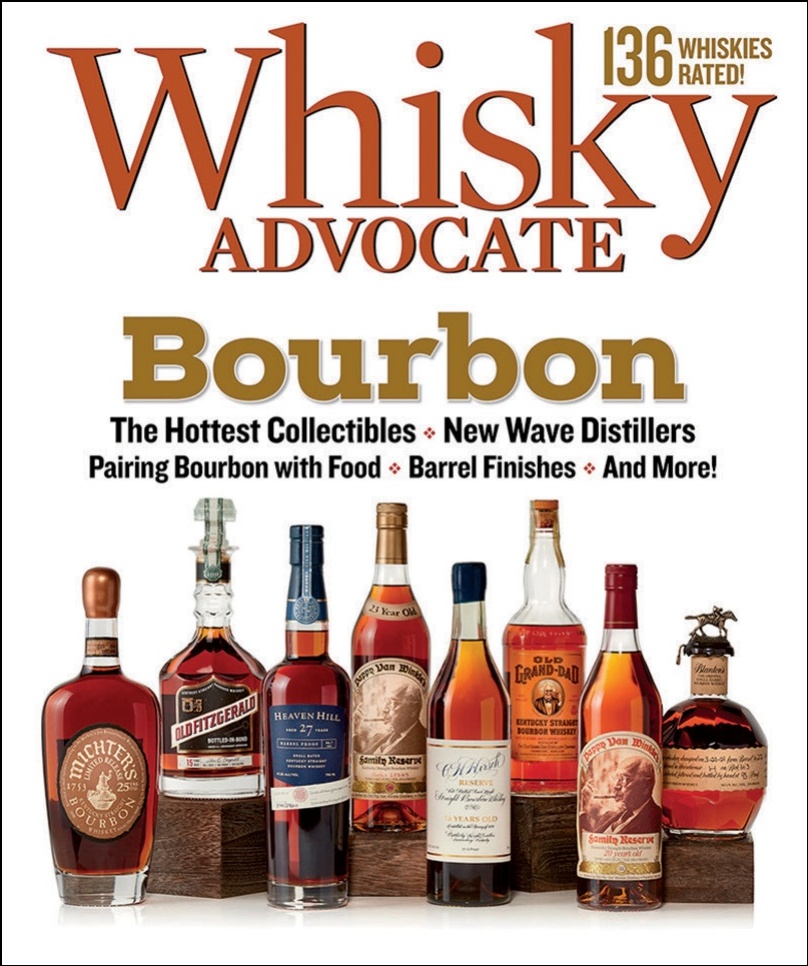
Fall 2021
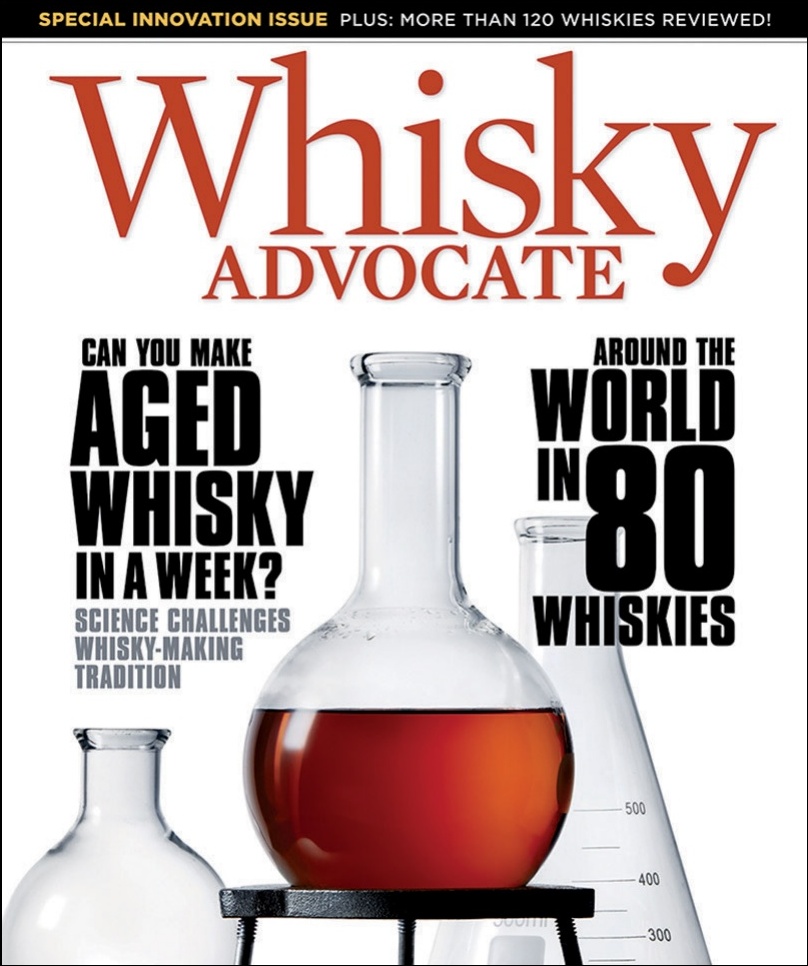
Spring 2018
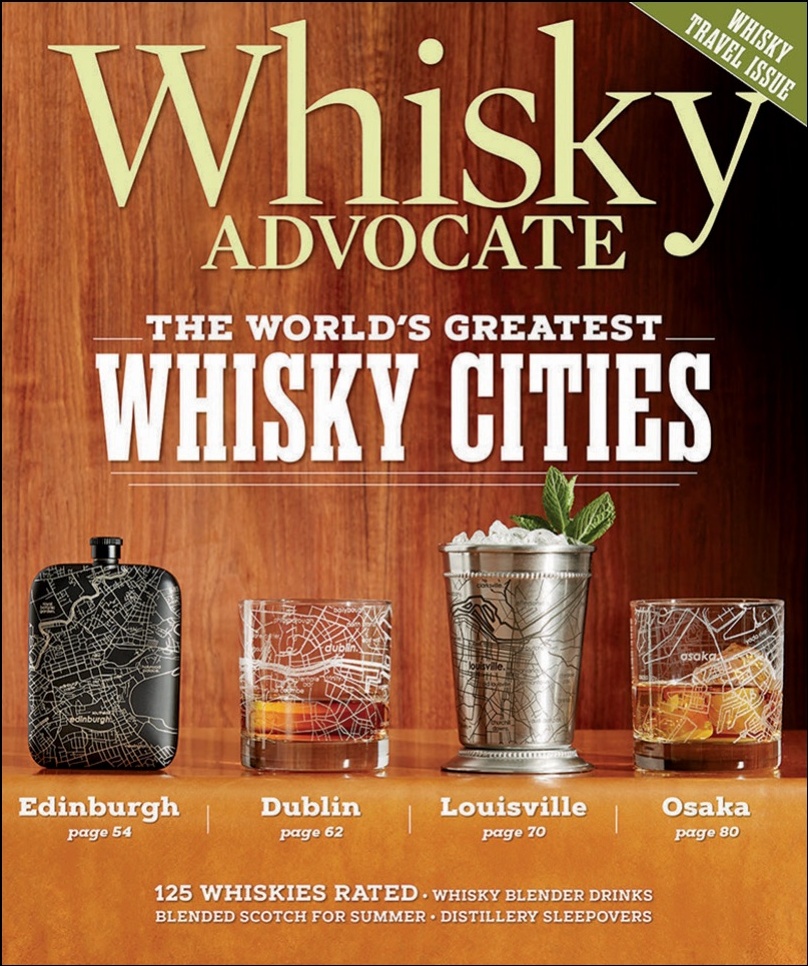
Summer 2019
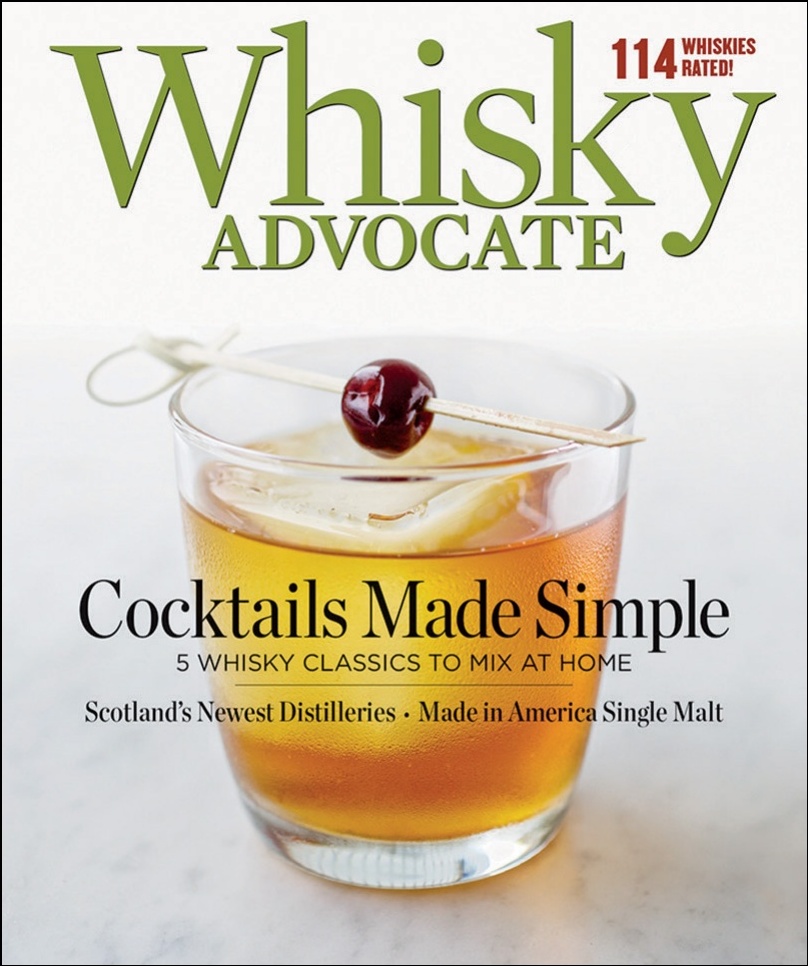
Summer 2020
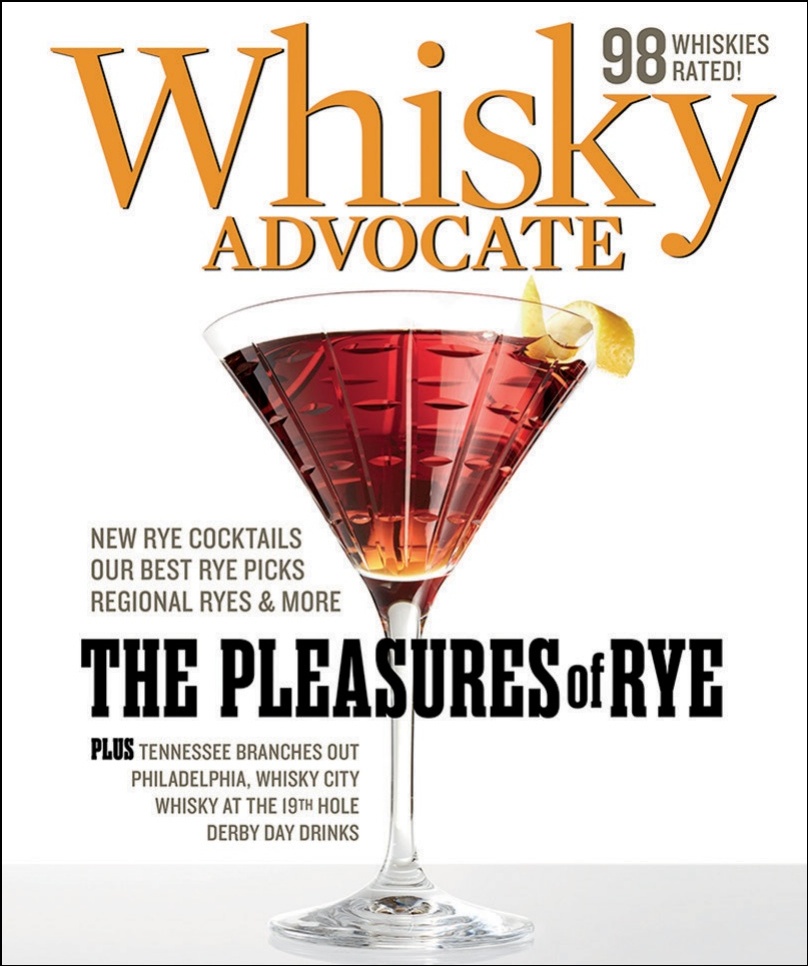
Spring 2022
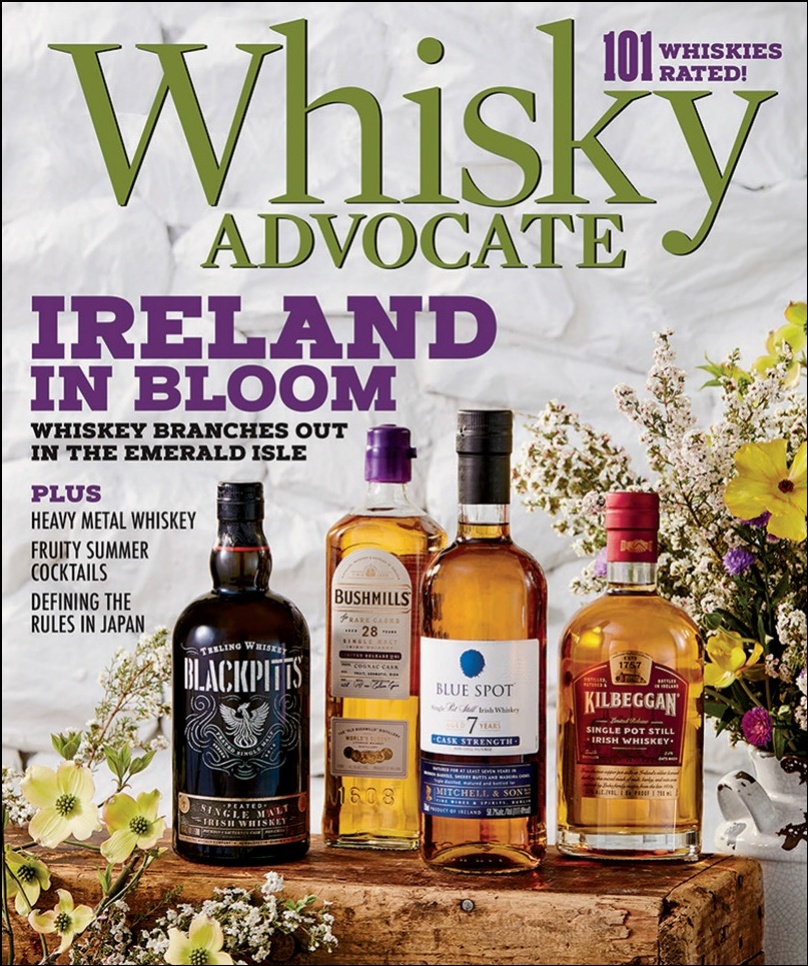
Summer 2021
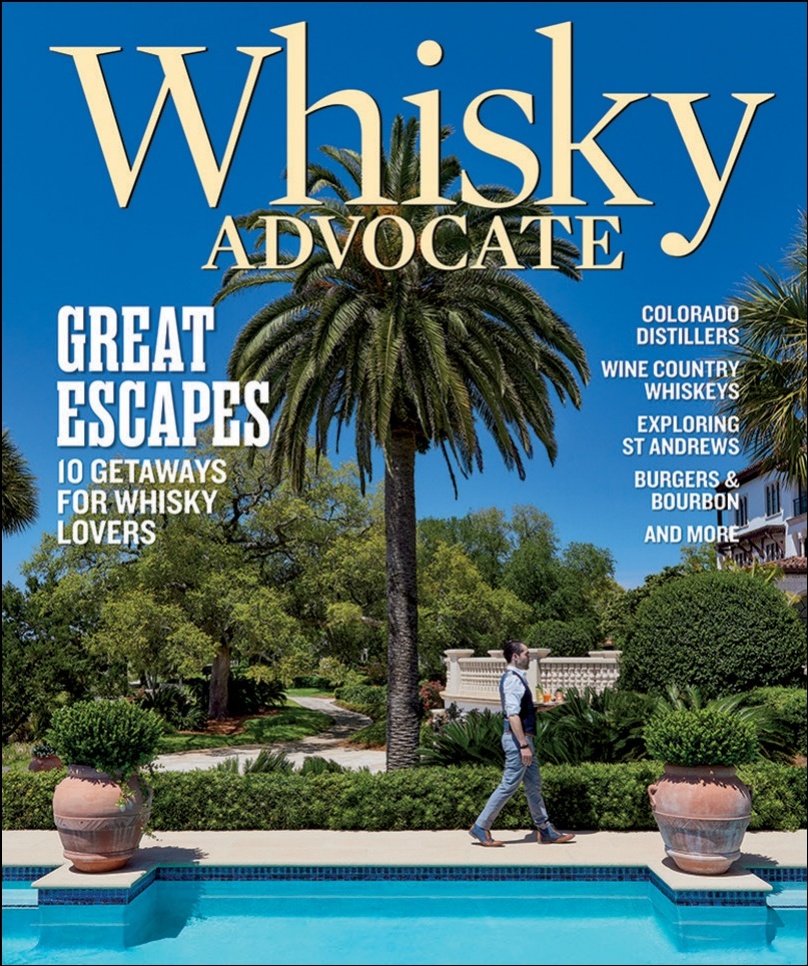
Summer 2022
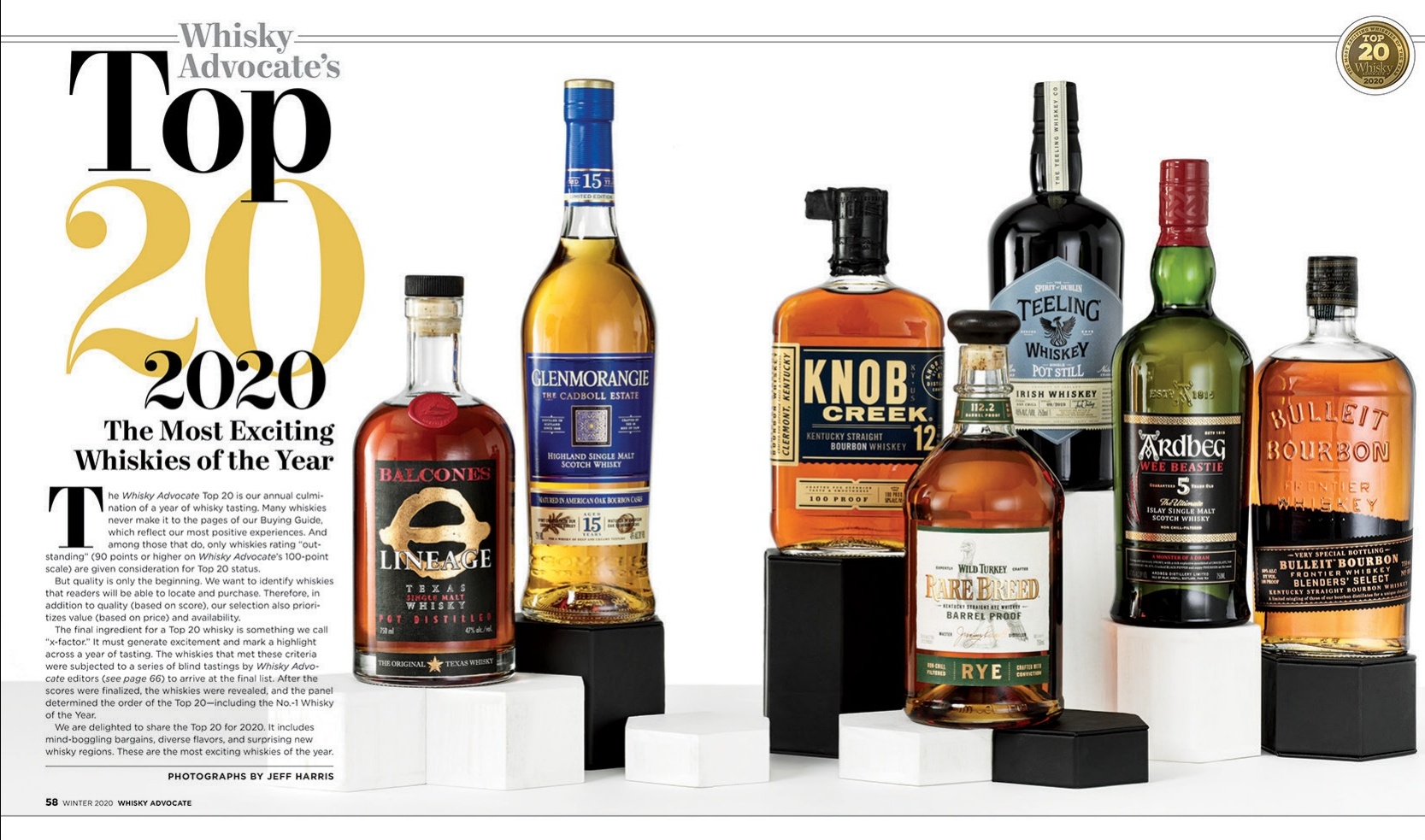
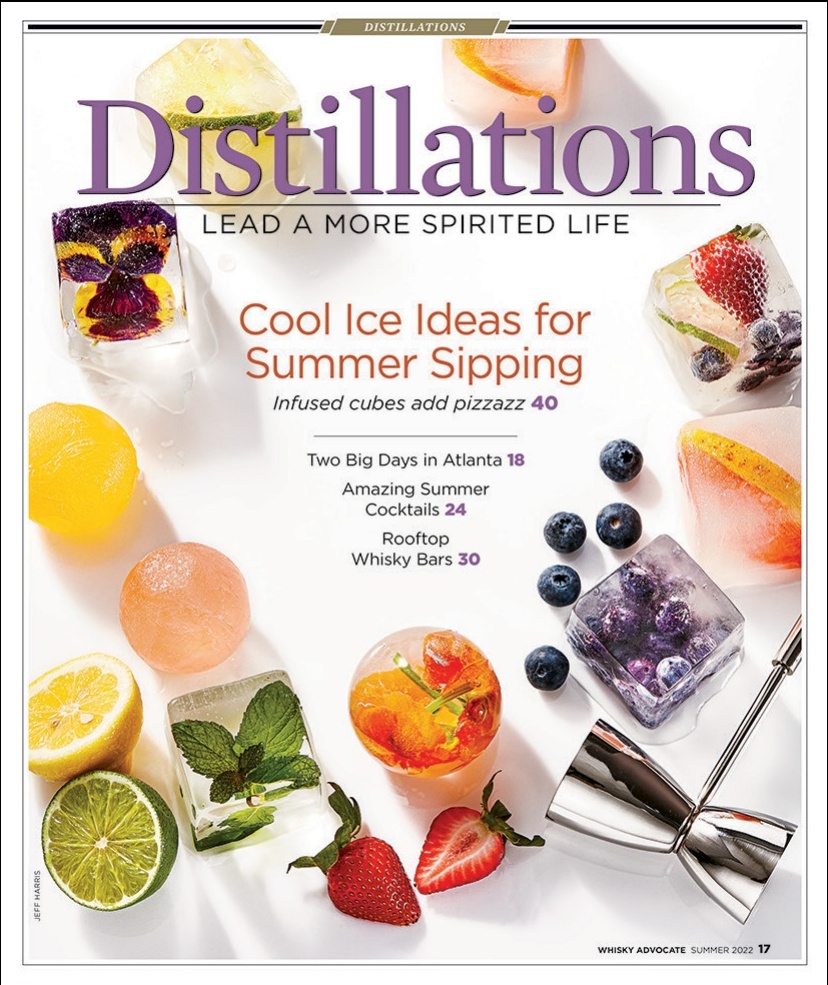
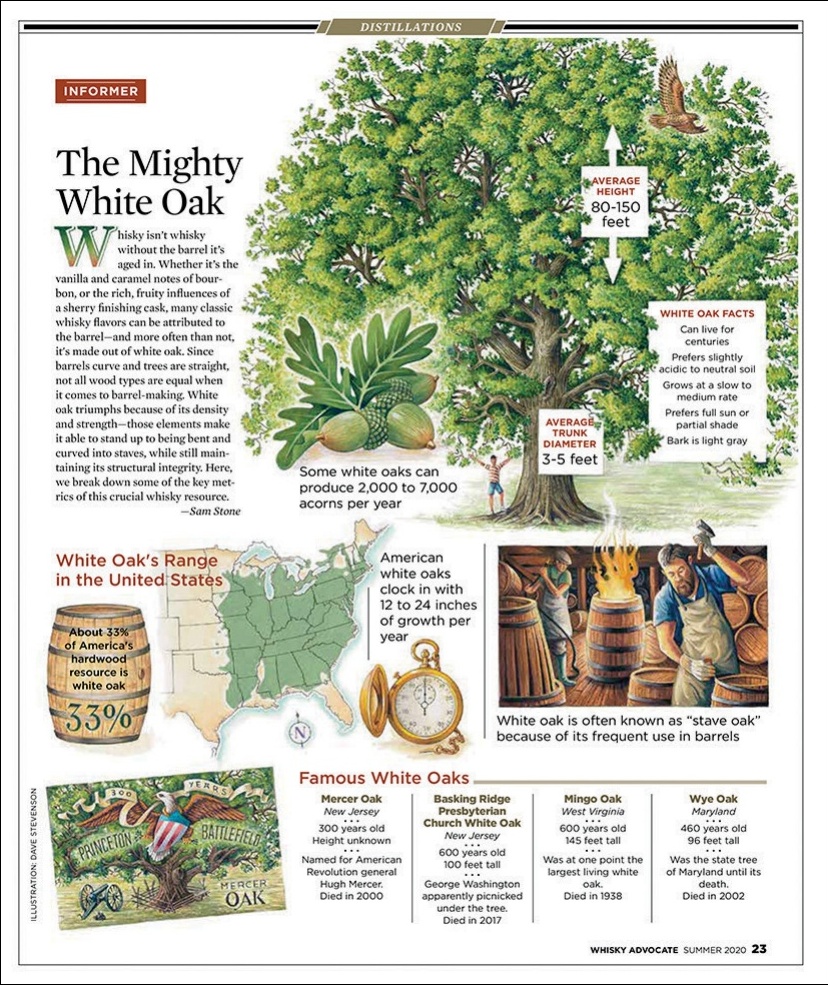
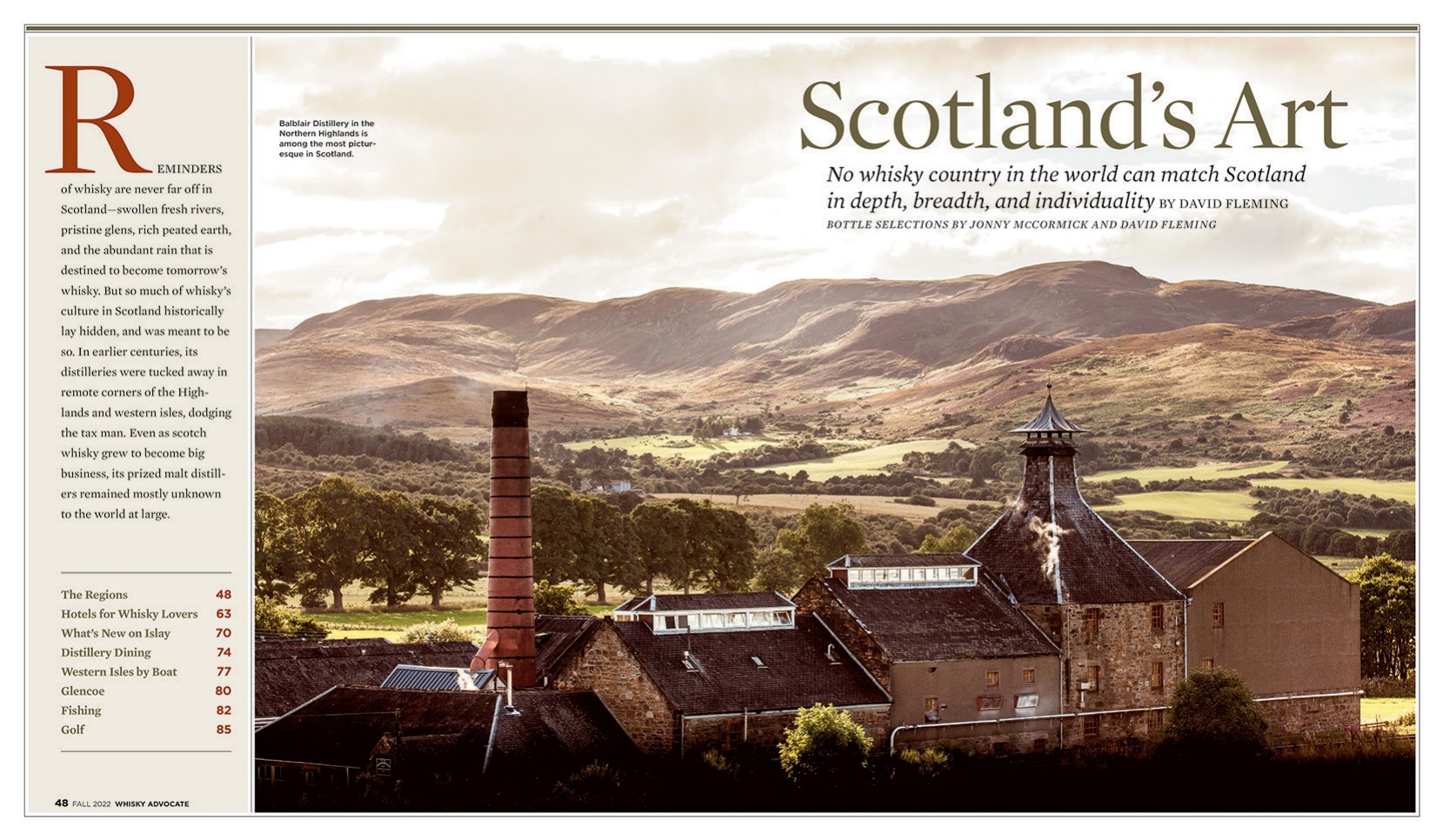
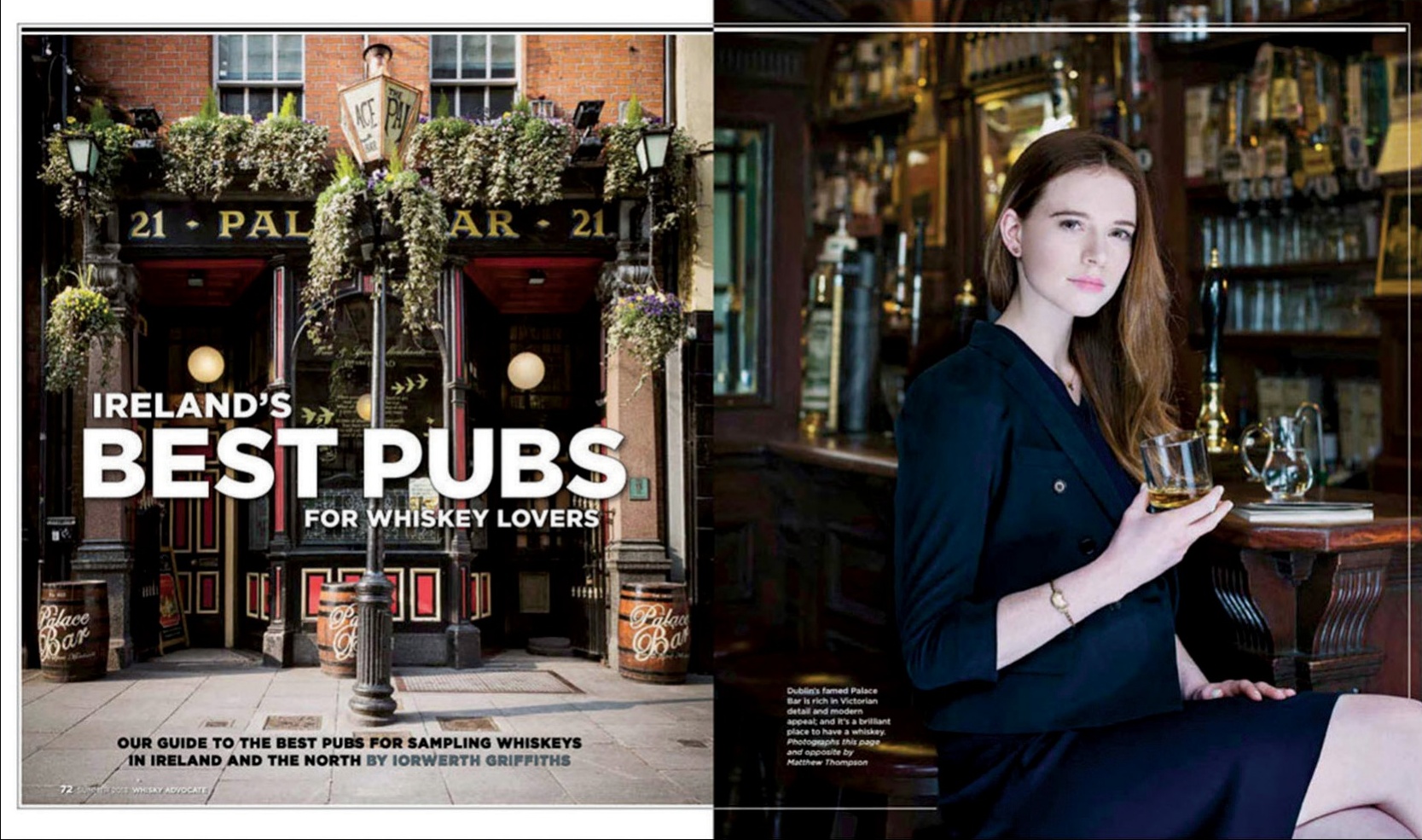
Whisky Advocate, America’s preeminent whisky publication, features an annual Top 20 Whiskies ranking, in-depth reporting on whisky regions, and lifestyle content for the whisky lover.
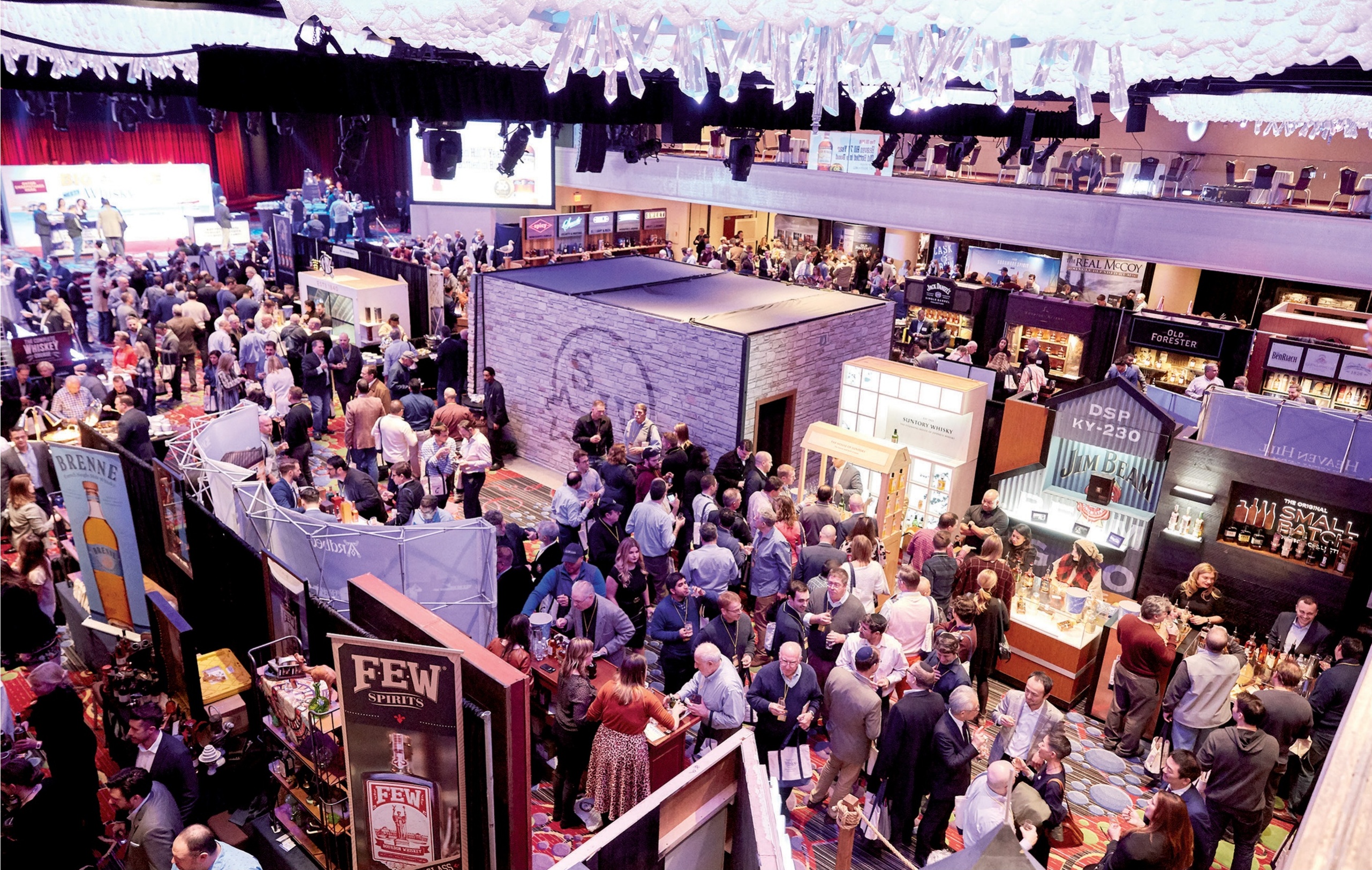
Hundreds of whisky fans meet and mingle with distillers and blenders at WhiskyFest New York 2020.
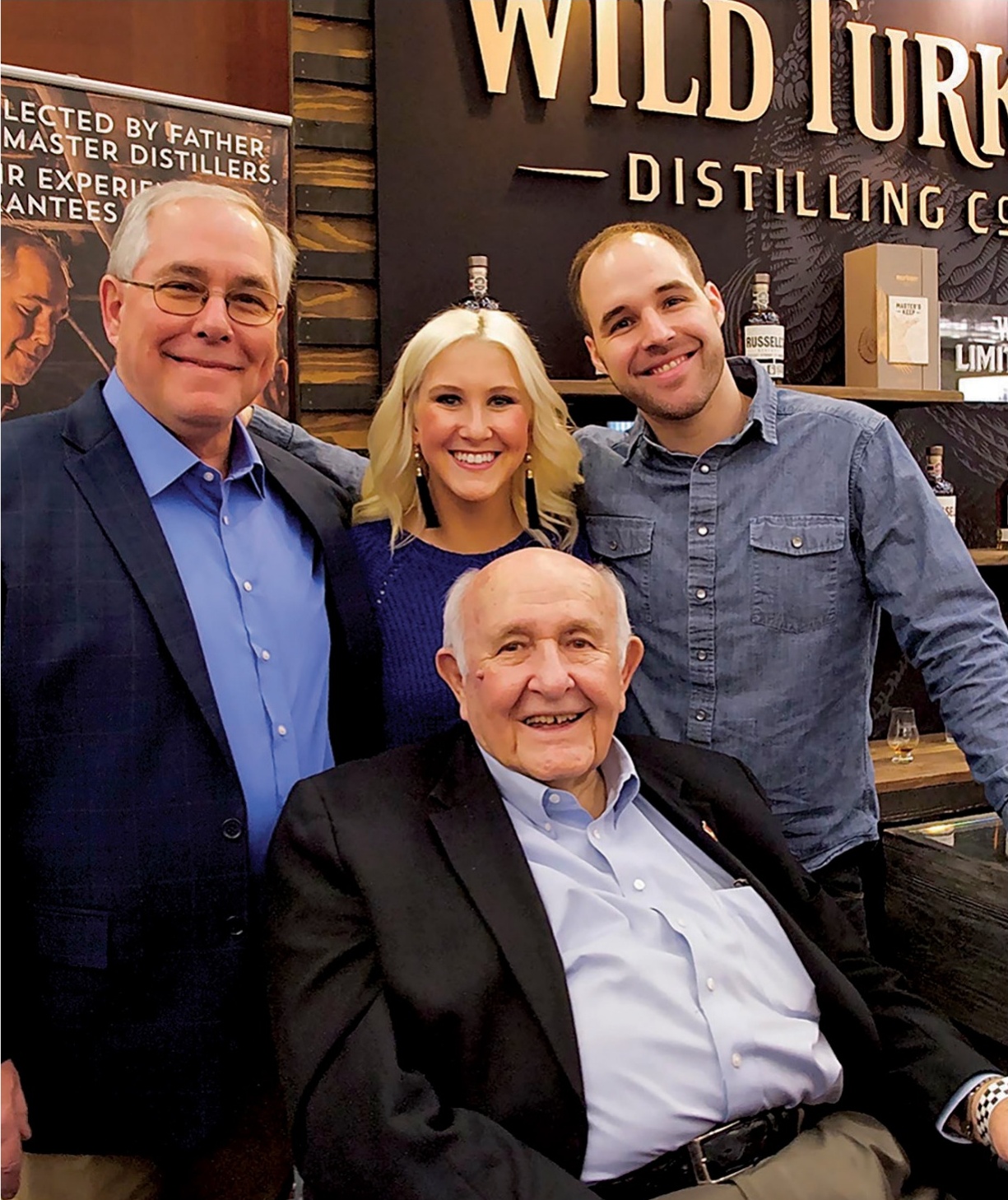
Wild Turkey’s Jimmy Russell (seated) and family members in New York in 2018.
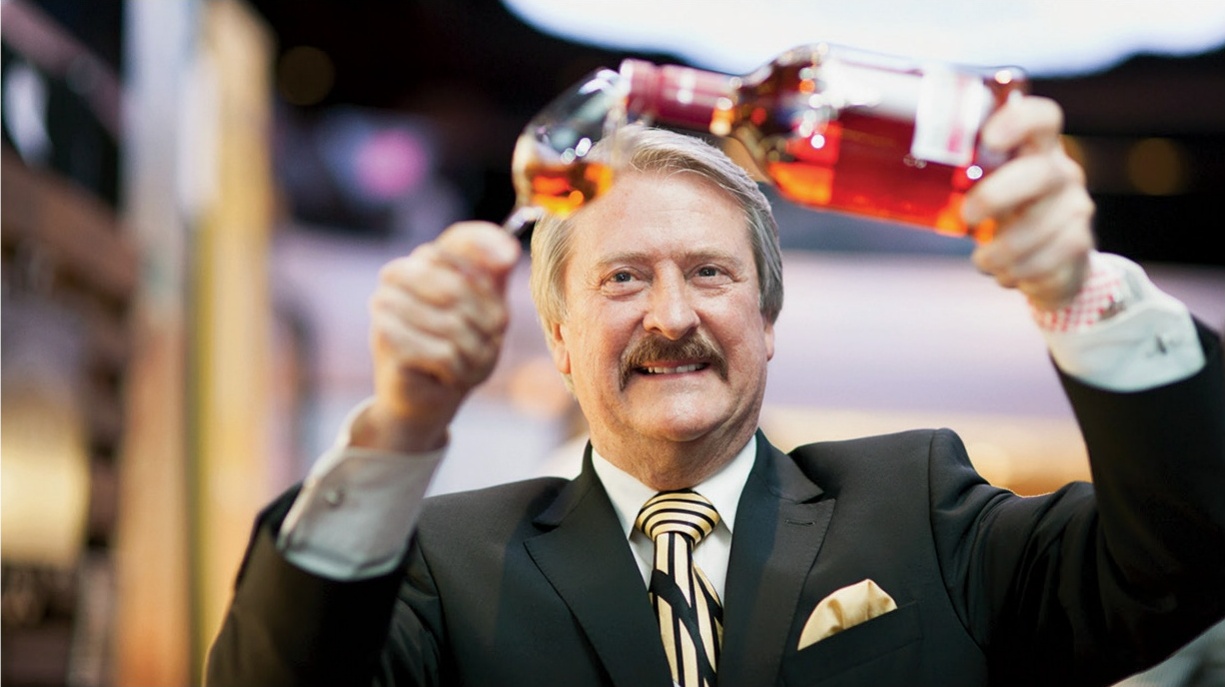
The Dalmore’s Richard Paterson in New York in 2013.
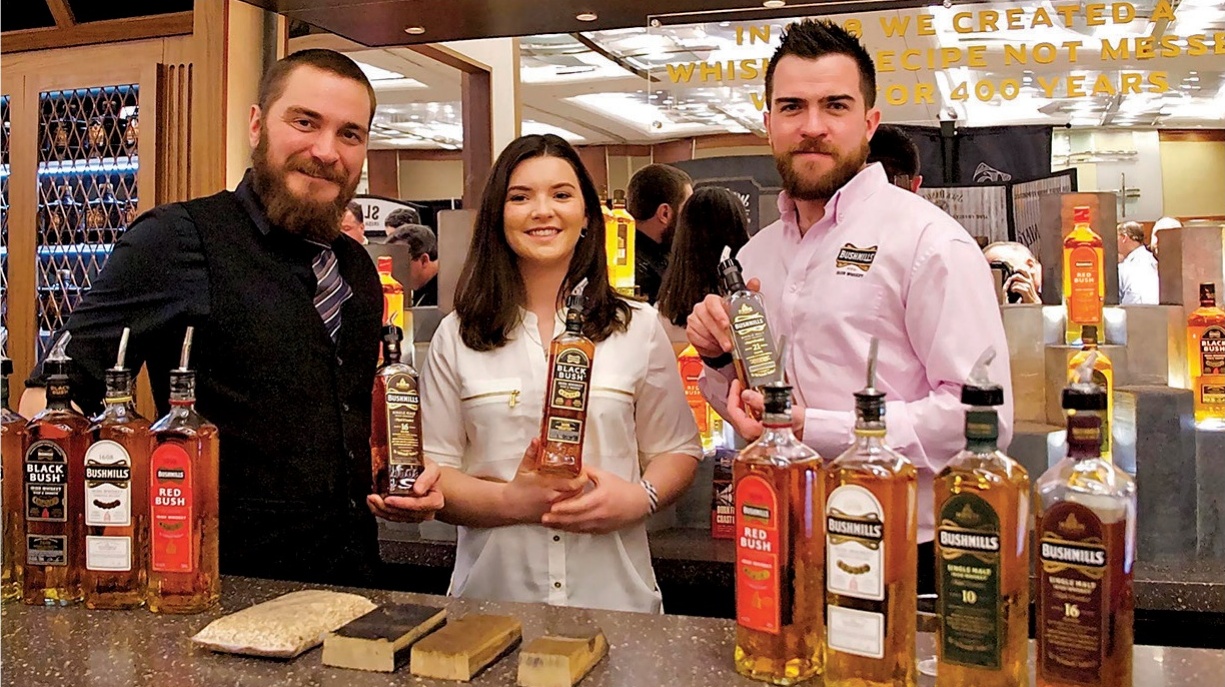
Friendly faces at the Bushmills booth in New York in 2018.
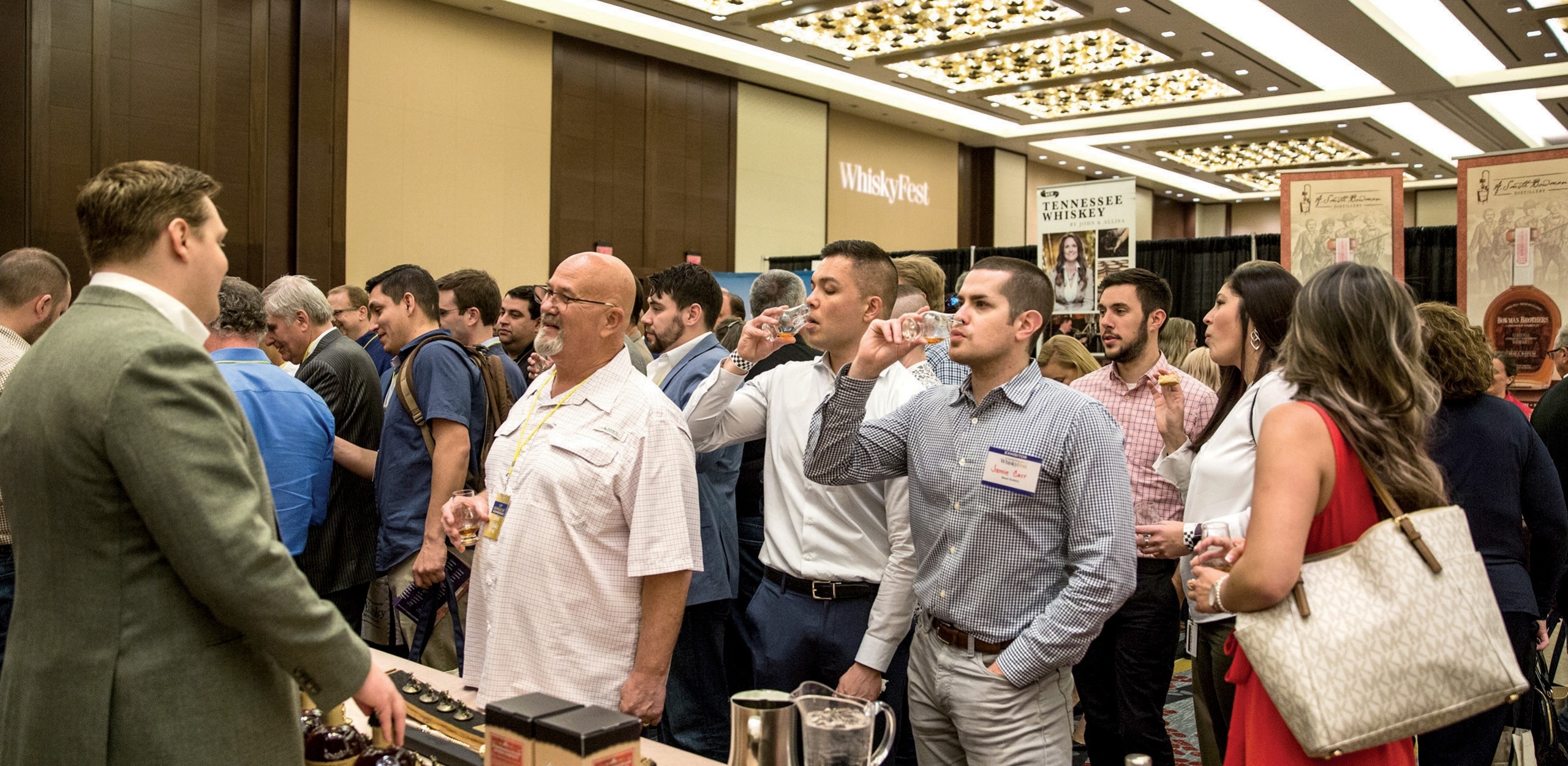
Attendees of WhiskyFest New York in 2019 taste samples at the Blanton’s booth.

Whisky fans pause for a photo in 2012.
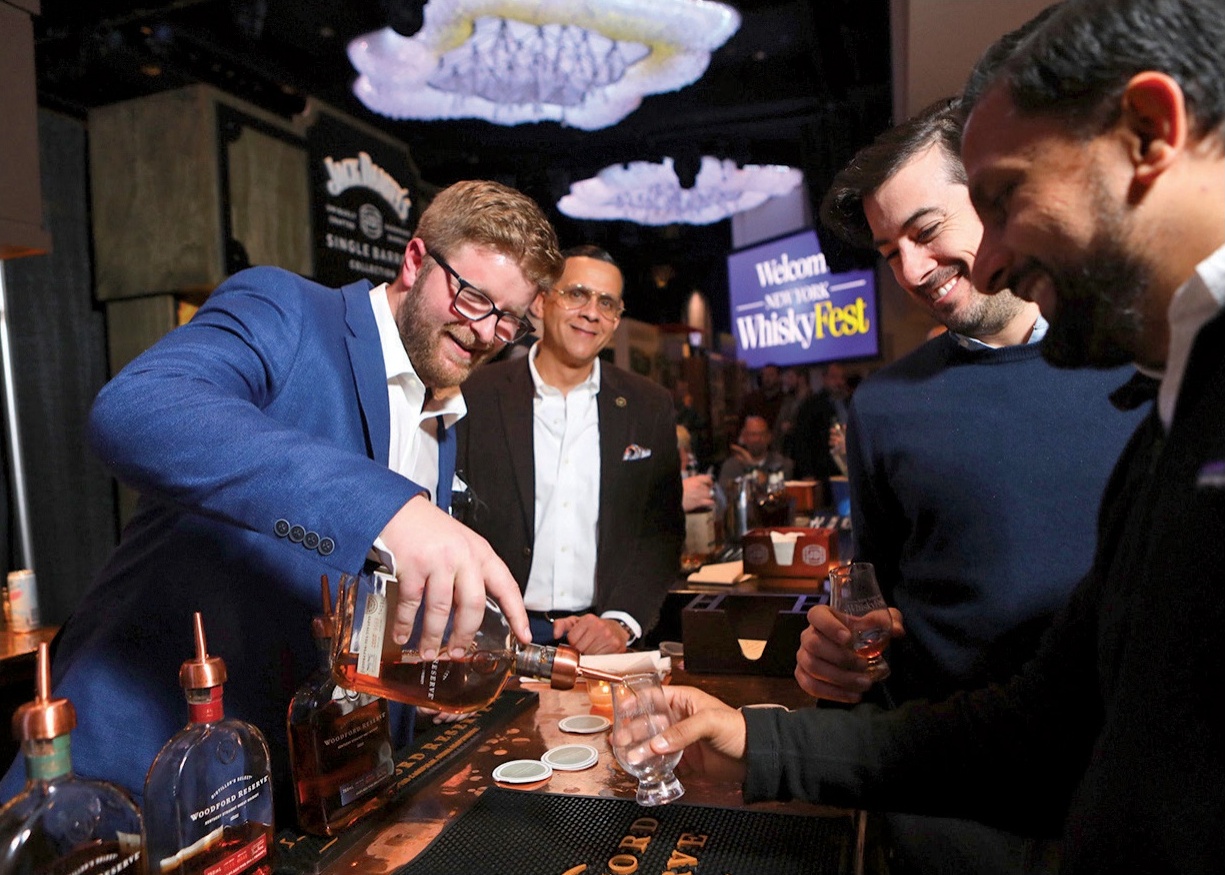
Pouring Woodford Reserve for happy attendees in 2021.
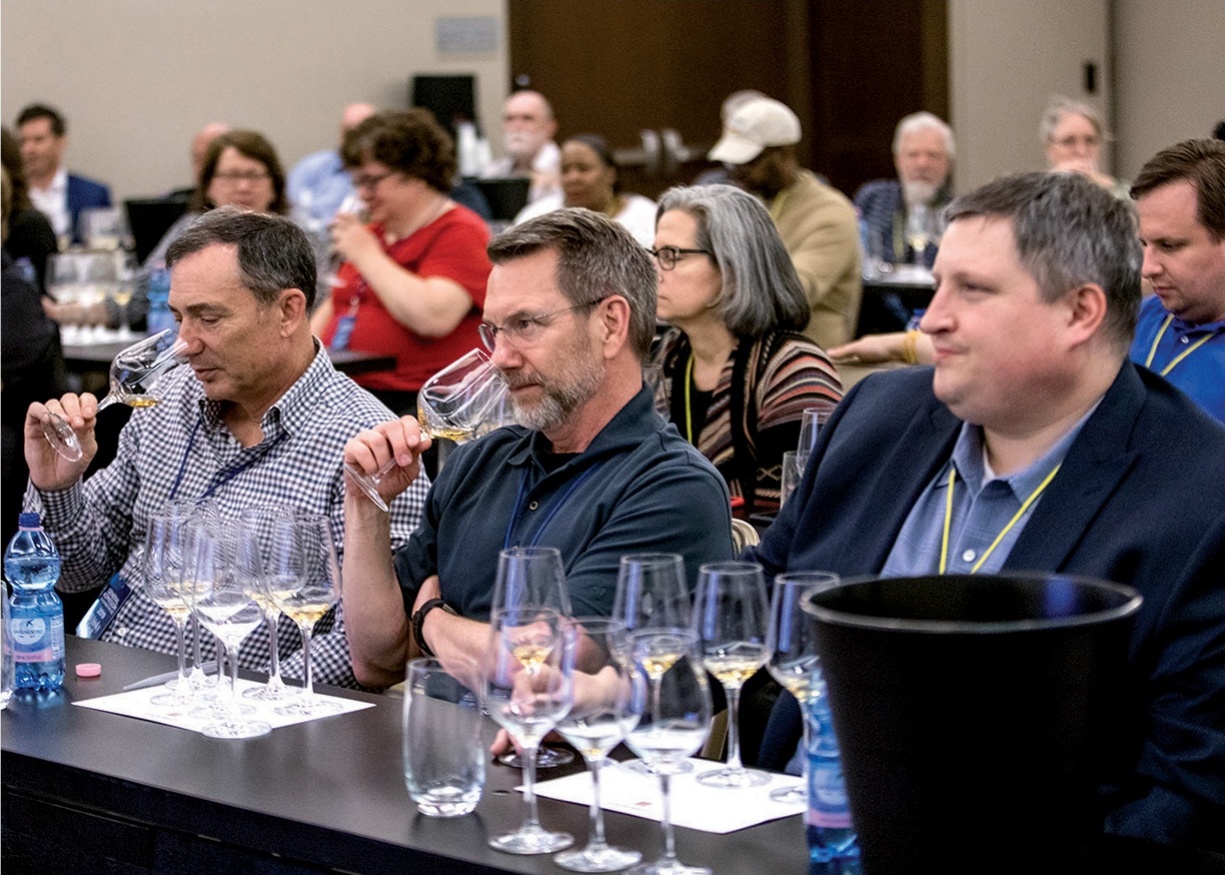
Seminar attendees nose various samples in 2019.
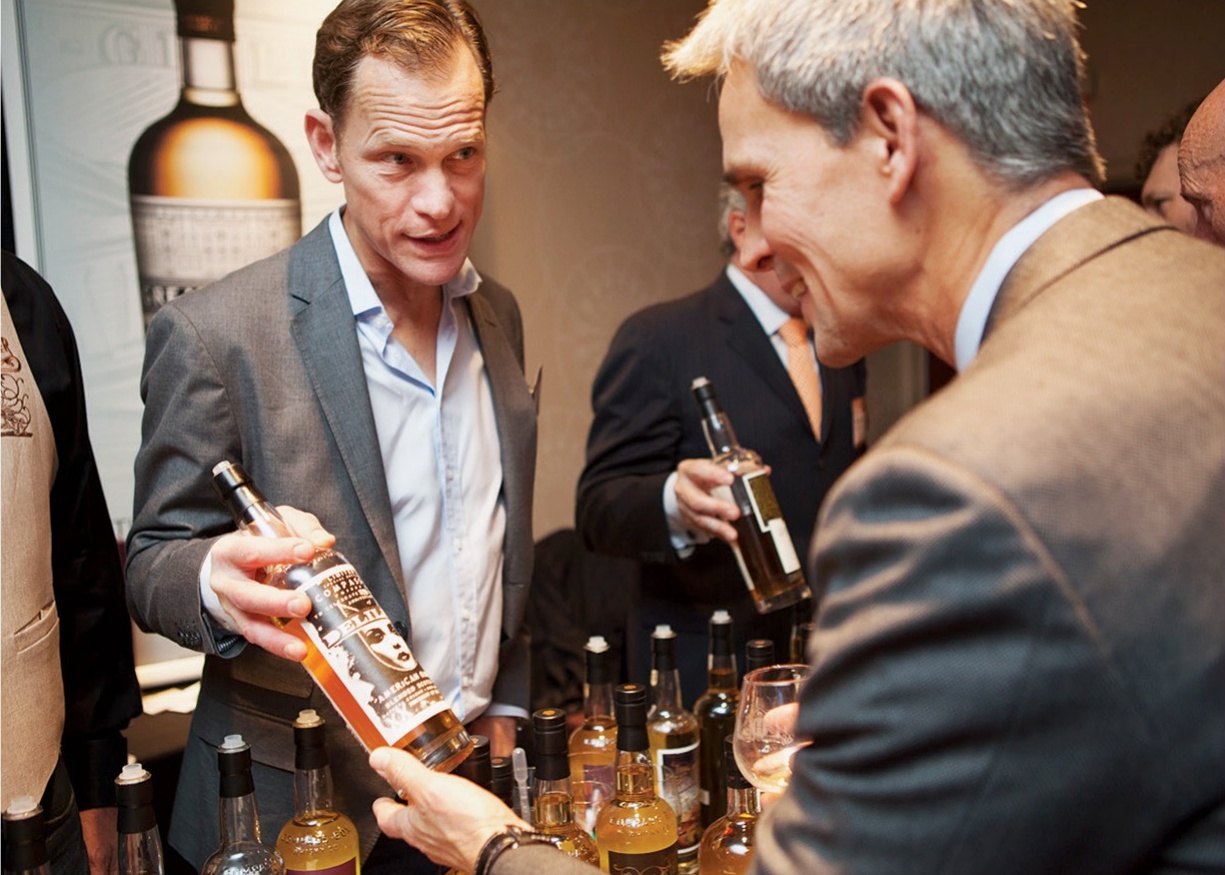
John Glaser of Compass Box interacts with attendees in 2017.
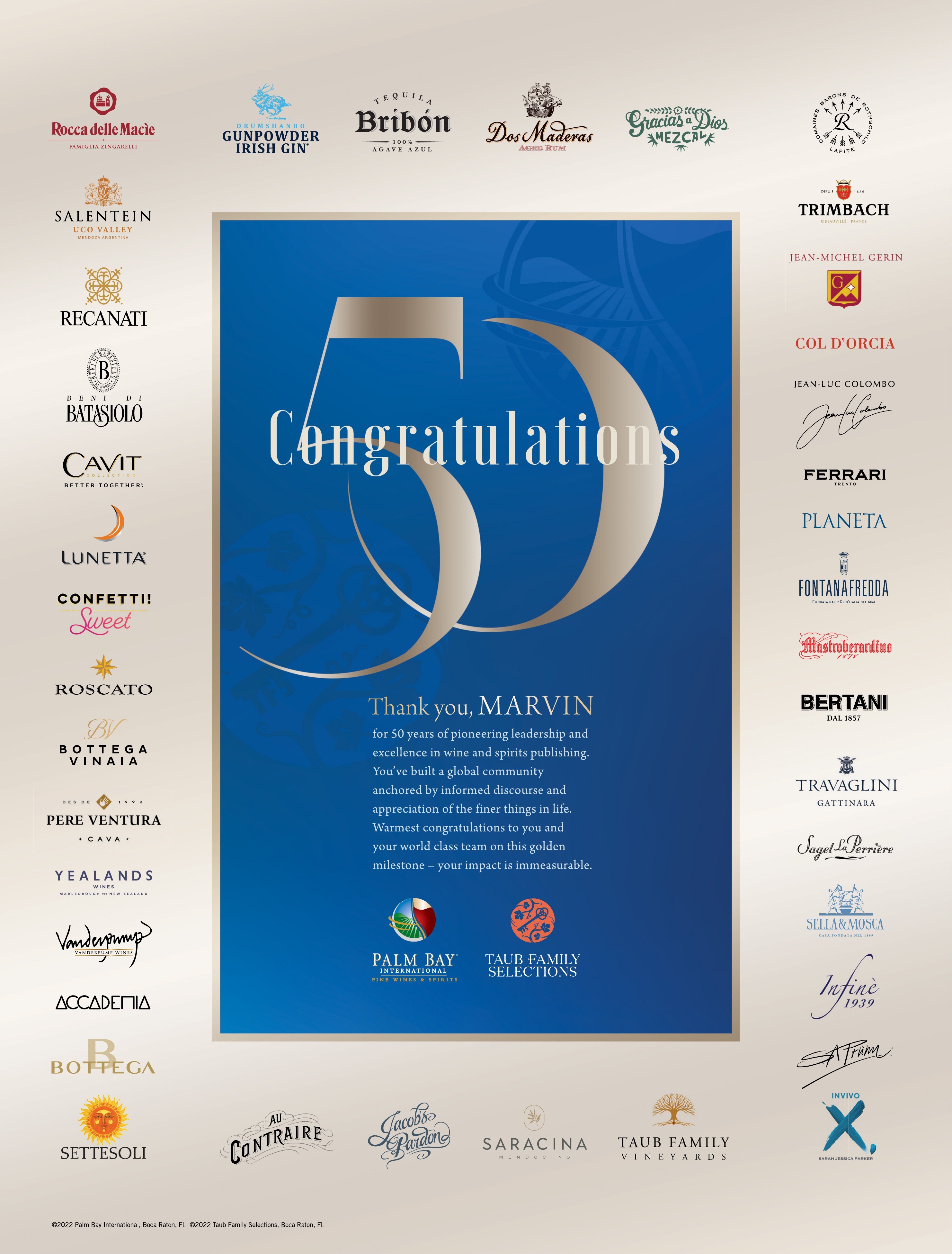
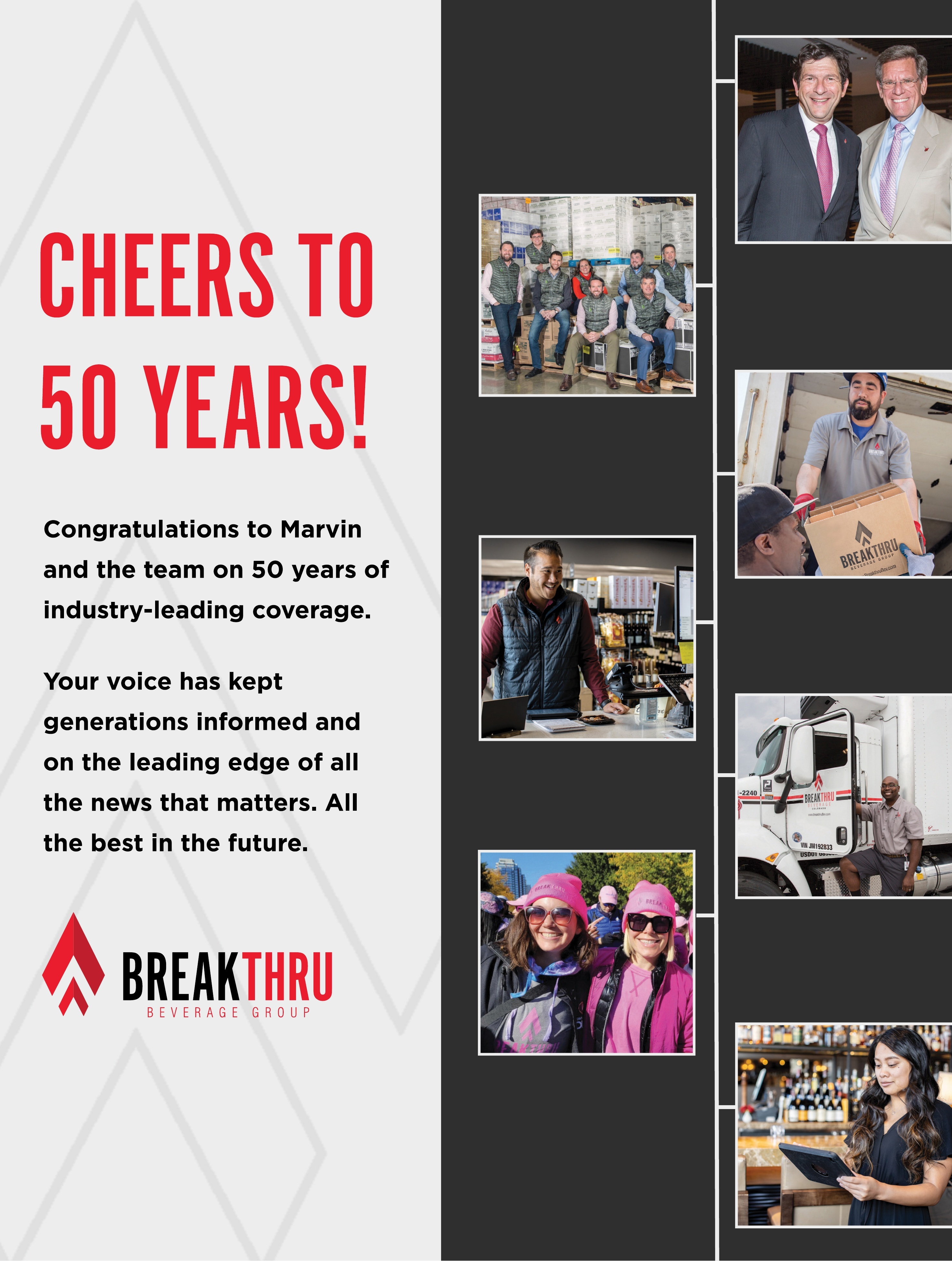
THE PORTFOLIO • SHANKEN NEWS DAILY eNEWSLETTER
Shanken News Daily
2011
R esponding to the new urgency of the 24-hour news cycle, M. Shanken Communications launched its first daily news vehicle, Shanken News Daily, in April 2011. Led by the editors of Impact and Market Watch, and leveraging the combined resources of the Shanken family of publications, SND quickly established itself as a must-read for the industry each morning.
More than a decade later, Shanken News Daily remains the leader in coverage of breaking news across the business, while also offering exclusive interviews with the biggest names in wine, spirits, distribution and retail, as well as timely and authoritative data and analysis from Impact Databank. “From the beginning, our goal has been to serve the drinks industry by providing not only up-to-the minute reports on the latest news, but also by contextualizing new developments within the wider landscape to give readers a clear, concise view of the most important industry happenings on a daily basis,” says Daniel Marsteller, SND’s executive editor.
Covering everything from the American whiskey boom to the ascendance of tequila, consolidation in the retail and distribution tiers and the arc of major suppliers’ businesses, SND has documented a period of rapid change across the beverage alcohol world in its daily email newsletter. Over the years, its essential reporting has included comprehensive takes on the megamergers that created wholesale titans Southern Glazer’s Wine & Spirits and Breakthru Beverage, as well as the impact of transformative acquisitions, such as Suntory Holdings’ $16 billion purchase of the former Beam Inc. and Diageo’s billion-dollar play for Casamigos tequila, among many others. SND also keeps its finger on the pulse of the latest industry trends—including the rise of spirits-based ready-to-drink cocktails and better-for-you wines—while informing its readers of important brand launches and management moves at top companies.
In 2019, SND added another arrow to its quiver with the debut of its weekly Cannabis Edition, dedicated to a new emerging U.S. consumer industry with substantial similarities—and, increasingly, business ties—to beverage alcohol. And, to keep its busy readers fully up to date, SND publishes a roundup of the most important news stories of the previous week each Saturday morning in its Weekly Review. Launched at a time when the drinks business was in many ways only beginning to participate in the digital revolution, SND is now an indispensable tool for those in the industry, who rely on its news judgment, accuracy and speed in covering the vital news events of the day. It has been embraced by readers around the globe and boasts a daily circulation of 52,000 wine and spirits industry readers.
Shanken News Daily, Oct. 28, 2022
Shanken News Daily | Cannabis Edition, Sept. 20, 2022
THE PORTFOLIO • DIGITAL PRODUCTS
Digital Editorial Products
M. Shanken Communications has been an assertive adaptor of digital technology. Website development for Wine Spectator and Cigar Aficionado began in the mid 1990s. The company’s vast databases, with hundreds of thousands of wine reviews as well as cigar ratings, were ideally suited for burgeoning digital technologies. Today, M. Shanken Communications offers a broad range of digital products.
Cigar Aficionado
• The leading source of cigar information on the web, with ratings and expert editorial content Including:
• Scores and reviews
• Info: Find a Retailer and Where to Smoke
• Top 25 Cigars of the Year
• Subscription opportunities for the digital Cigar Aficionado magazine
• Video content: Extensive video library, including Cigar 101 and other educational videos
Newsletters
• Cigar Insider, featuring comprehensive vertical brand-tastings of cigars as well as interviews with leading cigar personalities
• The pace-keeping Cigar Watch newsletter
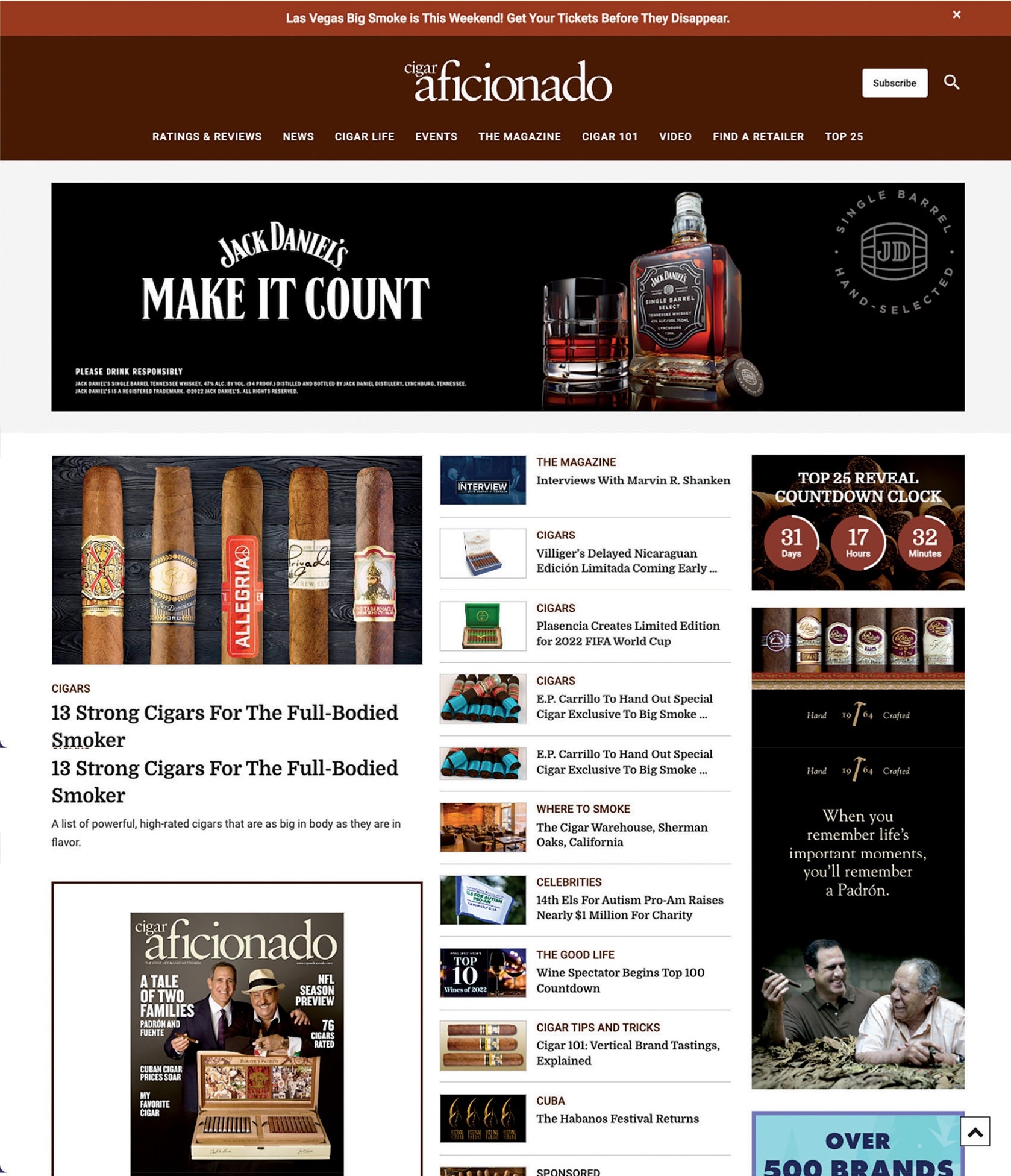
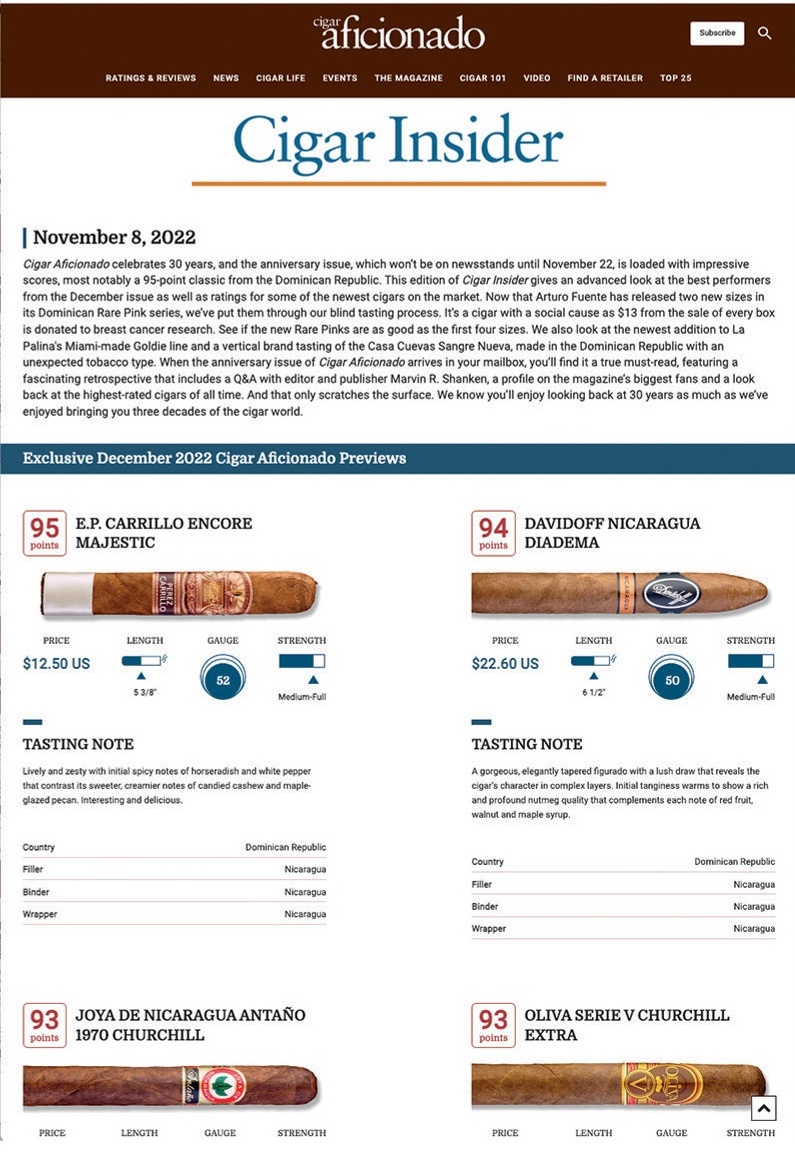
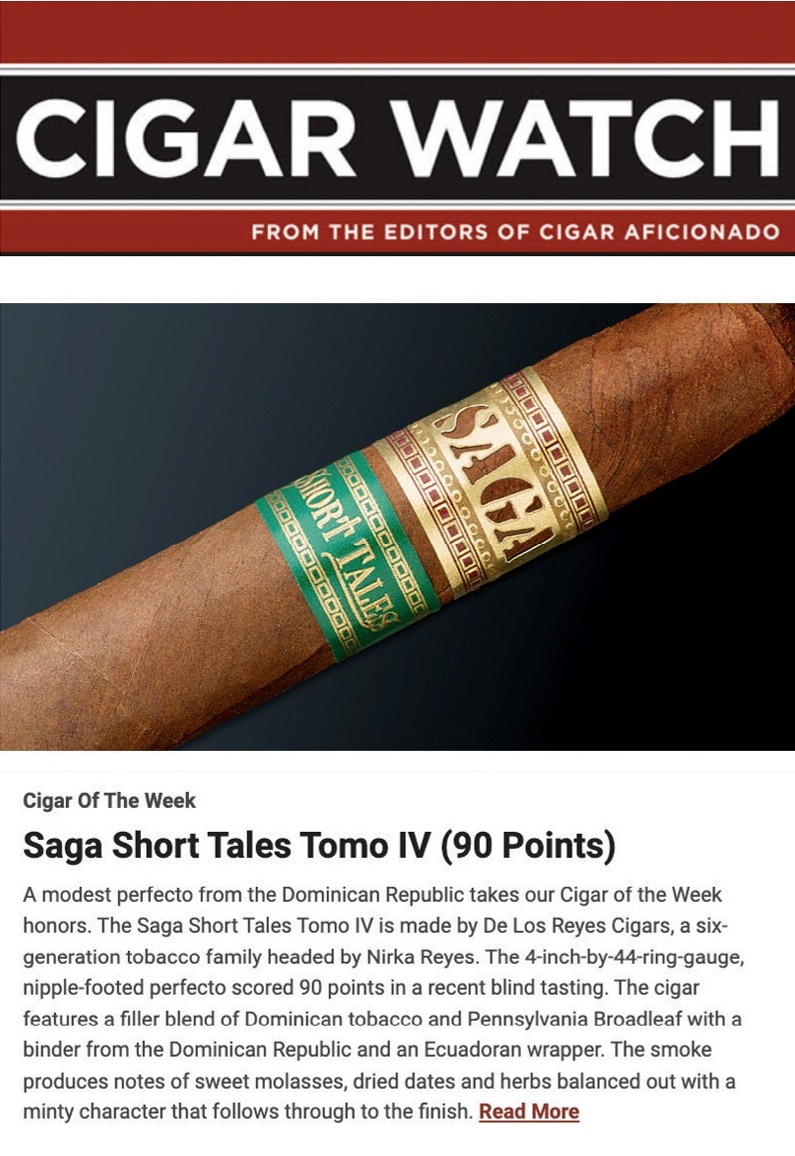
Wine Spectator
• WineSpectator.com is the preeminent source of wine information on the web, with industry-leading wine ratings and expert editorial content
• The website includes award winning stories, Restaurant Award winners and our highly anticipated Top 100 Wines of the Year
• Video content: Extensive video library, including “How To’s” and Wine 101 educational videos
• Wine Spectator’s Insider Weekly, a members-only newsletter that provides readers with the first look at our wine ratings
• Podcast: Wine Spectator’s Straight Talk, launched October 2022
Newsletters
• “Sips & Tips:” Recommendations on dining, travel, menus and wine
• “Unfiltered:” Highlighting wine and spirits trends across television, film, music, art and pop culture
• “Private Guide To Dining:” Restaurant and sommelier news, plus updates on celebrity chefs and dining trends
• “Wine IQ:” Designed to educate consumers with videos, tips and wine information
• “Healthy Living:” Tips for a healthy lifestyle, including recipes and advice
• “Collecting:” Keeping affluent wine buyers and collectors in the know
• “Retailer Report:” Trend reports on wine and spirits retail
Apps
• Wine Spectator Wine Ratings+ App
• Wine Spectator’s Restaurant Awards
WineSpectator.com Subscription
• With a membership to WineSpectator.com, consumers can access even more information and services:
• Tasting reports
• Wine ratings searches and the ability to build personal wine lists
• Wine Spectator digital magazines and archives
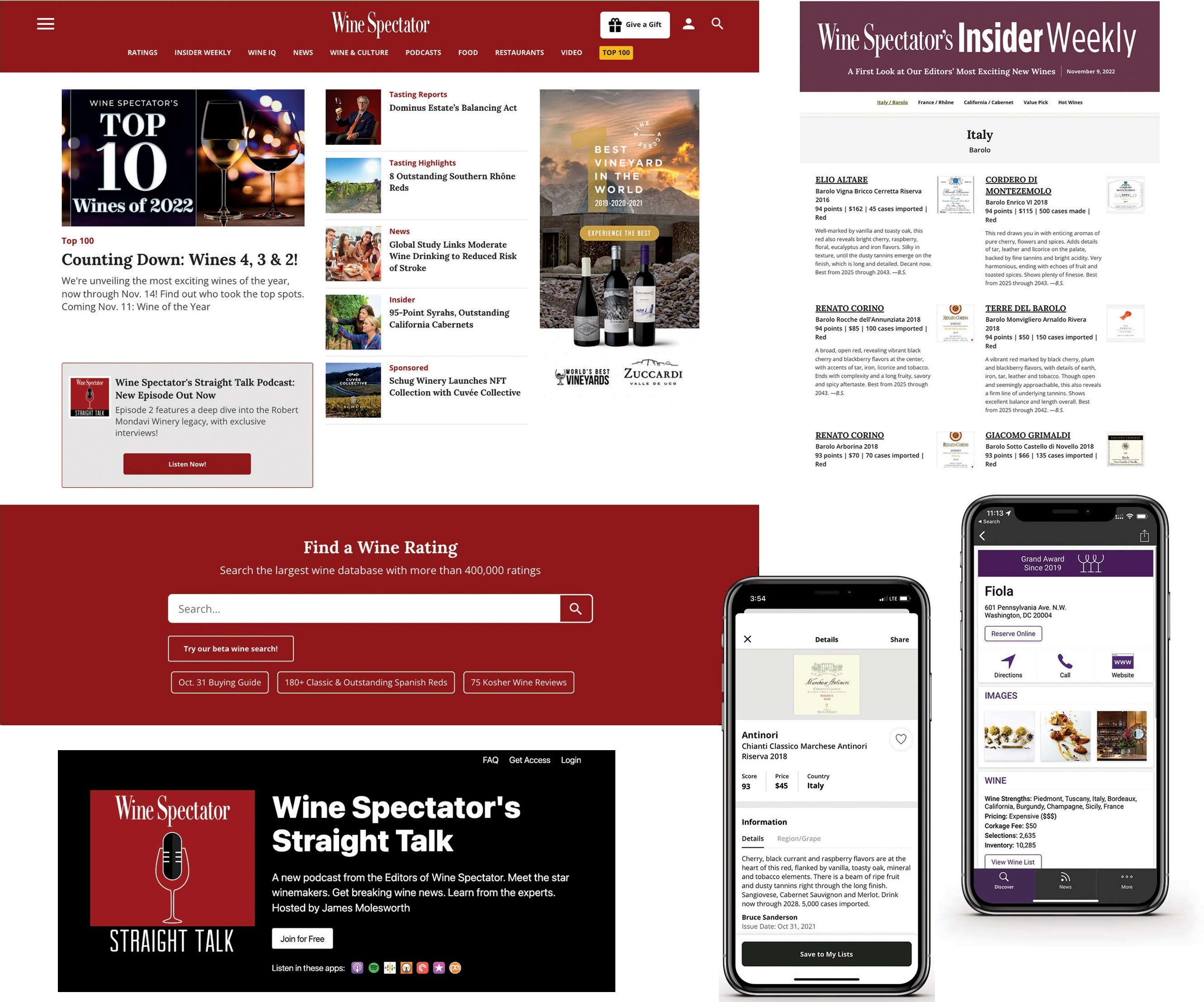
Whisky Advocate
• The best source of whisky information on the web, with ratings and expert editorial content
• Ratings and reviews
• Whisky 101, plus additional educational content
• Top 20 Whiskies of the Year
• Subscription opportunities for digital magazine
• Video: Extensive video library, including whisky pairing ideas and whisky cocktails
• Whisky Club Search
Newsletters
• “Whisky Notes”
• “Cocktail Club”
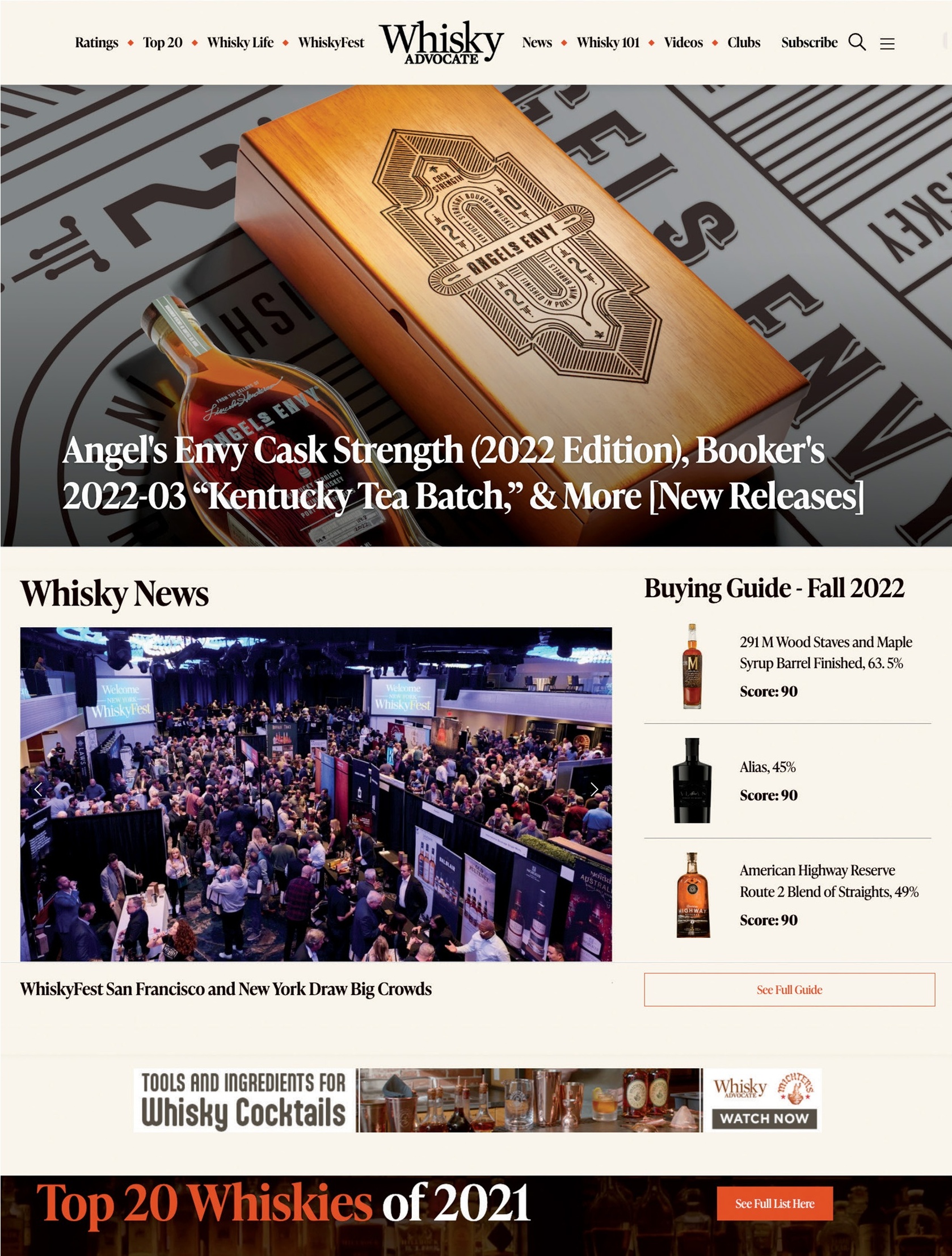
Market Watch
• Offers the latest news on new products
• Feature stories from the magazine
• Stories exclusive to the website
Shanken News Daily
• M. Shanken Communications daily newsletter, covering topics from all of the company’s publications
• The most widely read daily news vehicle for the global spirits, wine and beer industries
• Plus, a once-weekly cannabis edition, published every Tuesday, with reports on the latest trends in this growing industry
The Interviews
Marvin R. Shanken began interviewing wine and spirits industry executives in Impact newsletter in 1978, and then cigar industry luminaries in Cigar Aficionado in 1993. A rare interview with Fidel Castro in 1994 was a career highlight. Many interviews with celebrities from the industry, the military, film and sports followed. The following summaries are only some of the most notable interviews over the past five decades.
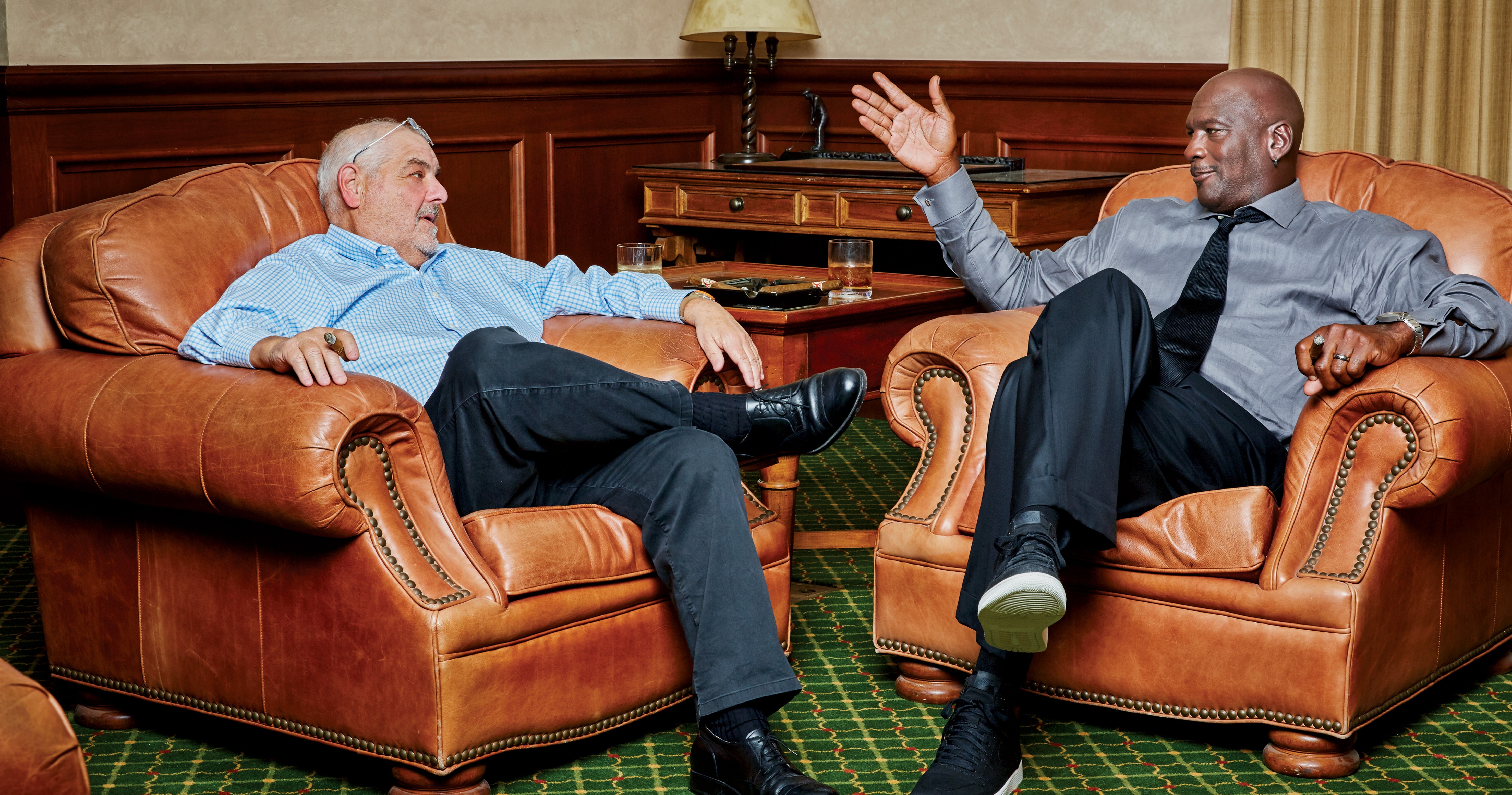
Marvin R. Shanken interviewed Michael Jordan for the second time in Cigar Aficionado in the fall of 2017.
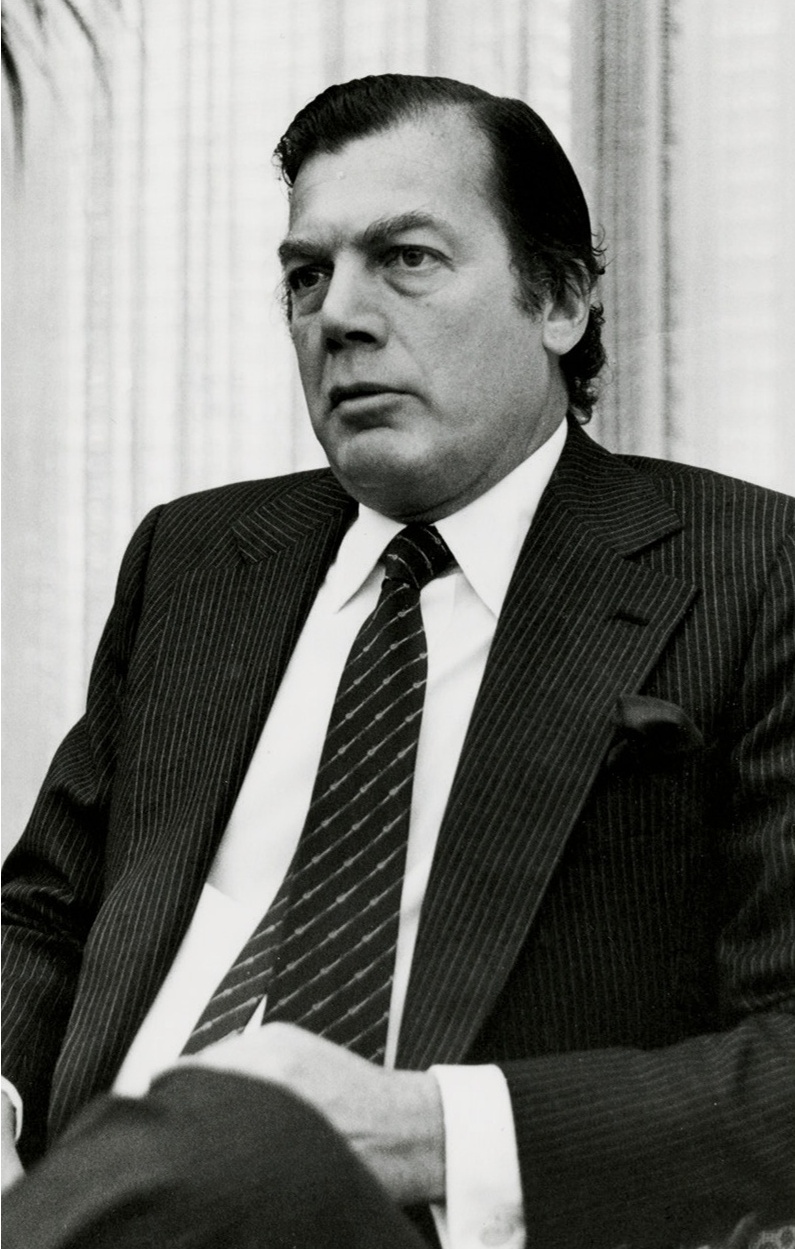
Edgar M. Bronfman
The Seagram Co. Ltd.
IMPACT: JUNE 1, 1978 & OCT. 15, 1983
Edgar Bronfman, chairman and CEO of the Seagram Co. Ltd., shared many insights with Marvin R. Shanken during their conversations about the beverage industry. Shanken interviewed Bronfman in 1978, shortly after Seagram—then the world’s largest spirits and wine marketer—had reorganized and created its new North American marketing arm: the House of Seagram. That conversation centered around the company’s plans to enhance its marketing efforts and expand its core brands from its then-top three brands—Seagram’s VO, Seagram’s Seven Crown and Chivas Regal—to also include portfoliomates such as The Glenlivet, Crown Royal and Seagram’s gin.
Five years later, Shanken interviewed Bronfman again after Seagram purchased the Wine Spectrum for $200 million from the Coca-Cola Co. In 1983, the Wine Spectrum was the third-largest wine company in America, and Bronfman’s buyout made Seagram the country’s second-largest wine marketer, behind E. & J. Gallo Winery. At the time, Seagram’s wine business was losing money, but Bronfman remained optimistic about the future of wine in the U.S. and told Shanken he saw big opportunity in the wine business, especially in table wine.
Stuart Watson
Heublein Inc.
IMPACT: APRIL 1 & 15, 1979
Shanken interviewed Heublein Inc. chairman Stuart Watson in 1979, discussing Watson’s forecast for growth in spirits and wine in the United States. Heublein was a prominent player in the 1970s and Watson became the company’s chairman in 1973. Its portfolio was anchored by Smirnoff vodka. During their conversation, Watson talked about changing consumer lifestyle habits that included drinking smarter and more socially, and he predicted growth for spirits categories such as Canadian whisky and tequila and for table wines such as Inglenook, which Heublein marketed aggressively.
James Gillis
McKesson Wine & Spirits Co.
IMPACT: JAN. 1 & 15, 1980
In the late 1970s, around the time of this interview, McKesson Wine & Spirits Co. was the largest spirits and wine wholesaler in the U.S., operating in 36 markets and boasting that its portfolio contained every wine and spirit brand sold in the country in at least one market. James Gillis, McKesson’s executive vice president, discussed with Shanken the company’s changing operations—it had recently closed underperforming wholesale operations in New York, Chicago, Los Angeles and Minnesota—and the economic outlook at the time. Gillis credited the Seagram Co. Ltd. with helping the wholesale tier by raising prices and restoring profitability.
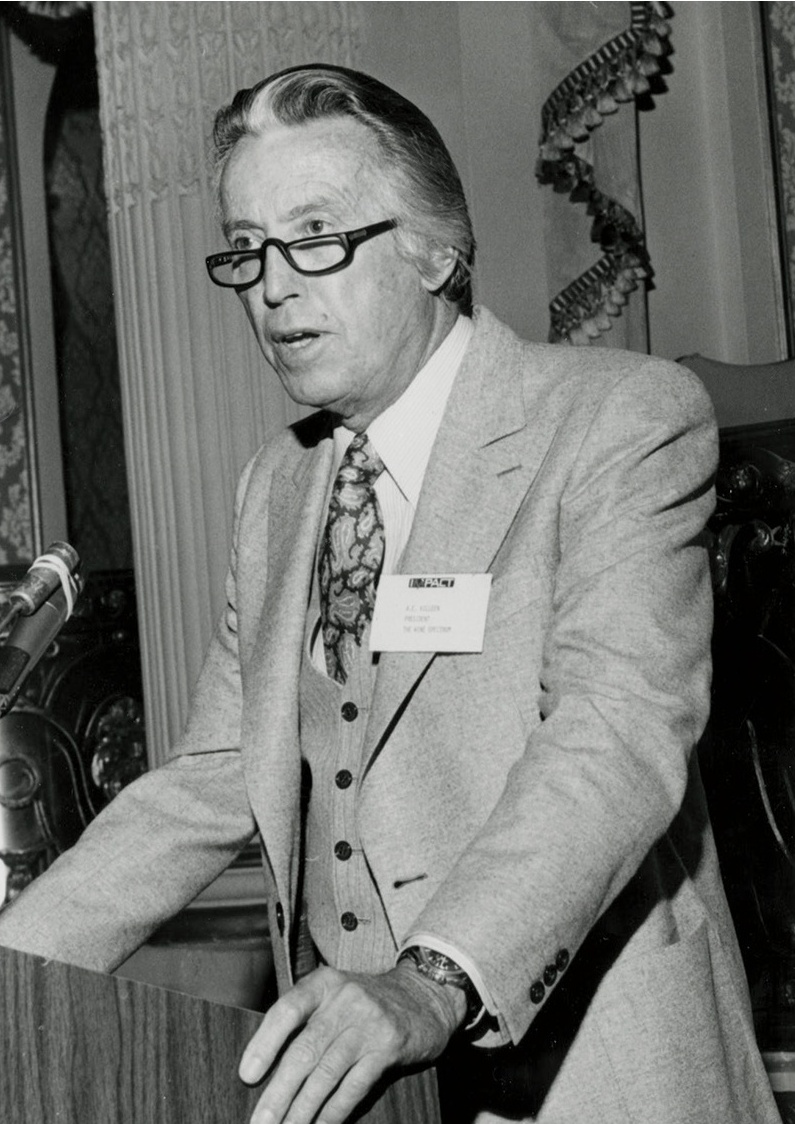
Albert Killeen
The Coca-Cola Co. and the Wine Spectrum
IMPACT: MARCH 15, 1981
As president of the Wine Spectrum, Albert Killeen managed wine operations for one of the country’s largest beverage players, the Coca-Cola Co., for which Killeen was also a vice chairman. Coca-Cola added wine and beer to its portfolio in the 1970s, purchasing Sterling Vineyards, the Monterey Vineyard and Taylor California Cellars under its Wine Spectrum arm in 1978. During their interview, Killeen told Shanken that the company rushed into the wine scene quickly to thwart the competition, noting that it was a huge gamble with equally huge potential. Ultimately, Coca-Cola sold the Wine Spectrum to the Seagram Co. Ltd. in 1983, and Shanken also discussed that purchase with Seagram CEO Edgar Bronfman at the time of the sale.
H. Clifford Hatch
Hiram Walker-Consumers Home Ltd.
IMPACT: AUG. 1 & 15, 1981
Cliff Hatch, chairman of the board for Hiram Walker-Consumers Home Ltd., which was based in Ontario, Canada, spoke with Shanken around the time he retired, culminating a 48-year career in the beverage alcohol industry. Hatch detailed the changes he’d seen in the drinks business over nearly a half century, emphasizing the importance of brand-building to influence consumer purchases. Some of Hiram Walker’s most successful brands 40-plus years ago remain top performers today, including Kahlúa, Drambuie and Courvoisier, among others. Hatch touted trademarks and the hard work that goes into making a brand successful.
John DeLuca
Wine Institute
IMPACT: APRIL 15 & MAY 1, 1983
Shanken met with John DeLuca, president of trade group the Wine Institute, during the recession of the early 1980s, when the wine industry was struggling to maintain sales. In 1982, growth of domestic wines had slowed to less than 1%, though imports were faring better, showing more than a 6% increase, due in part to the strength of the dollar against foreign currency. This led to the Wine Institute pushing legislation to eliminate trade barriers for exporting U.S. wines, which DeLuca discussed at length with Shanken. He called for more protections for domestic wine producers, predicting a tough time for the wine industry in 1983 but expansive growth in the years ahead.
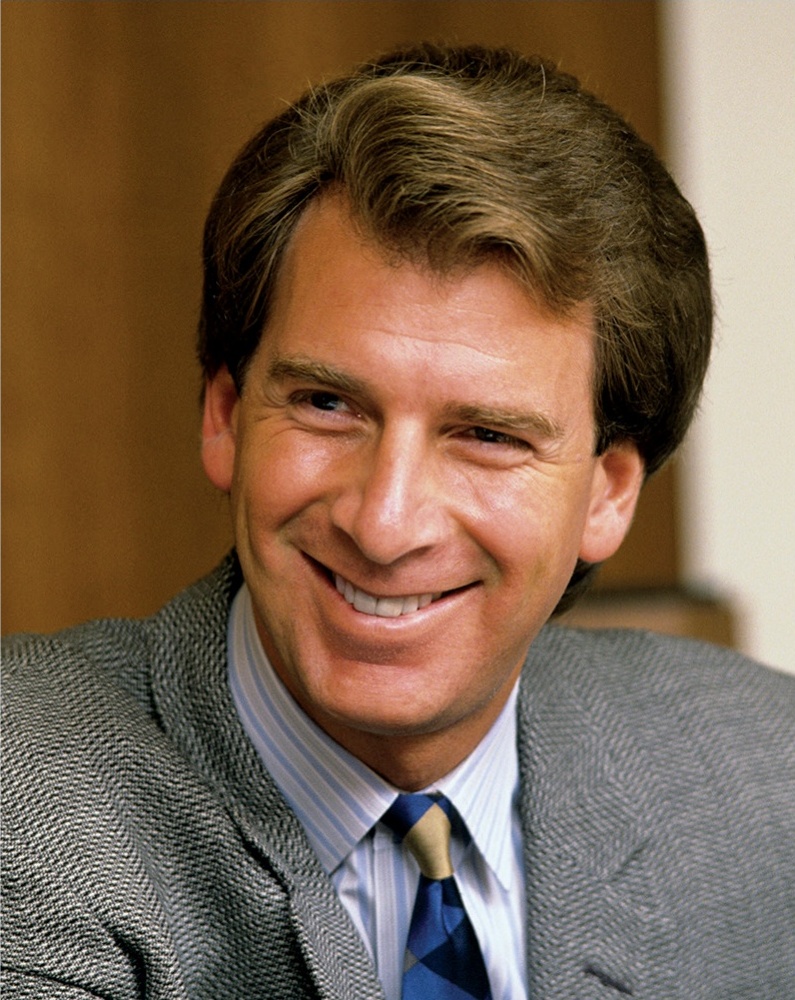
Edgar Bronfman, Jr.
The House of Seagram
IMPACT: JAN. 15, 1985
Just months after taking the helm at the House of Seagram, the U.S. spirits marketing arm of Joseph E. Seagram & Sons, Edgar Bronfman Jr., president of the House of Seagram, started a massive reorganization that realigned the company’s salesforce and brands and eliminated a large part of its workforce. Bronfman told Shanken the reorganization created complementary brand marketing opportunities, creating four divisions for Seagram and allowing room for new products and future growth. It also shook up the distributor tier.
Ernest Saunders
Guinness PLC
IMPACT: DEC. 1 & 15, 1986
Ernest Saunders, chairman and CEO of Guinness PLC, met with Shanken just a few months after Guinness purchased Distillers Co. PLC, the world’s largest Scotch distiller, for $4 billion. During the interview, Saunders touted how Guinness would help Distillers Co. succeed and about being cost-efficient against the competition. Shortly after the interview, the U.K. Department of Trade and Industry launched an investigation into Guinness’ affairs, and a year later, in 1987, Guinness removed Saunders from his post. He was later found guilty of fraudulently manipulating the share price of Guinness during the Distillers purchase.
W.L. Lyons Brown
Brown-Forman Corp.
IMPACT: DEC. 1 & 15, 1986
W.L. Lyons Brown, the chairman and CEO of Brown-Forman Corp., spoke with Shanken about his company’s huge restructuring, which brought its four separate wine and spirits divisions into one fold. Brown-Forman, then the fourth-largest wine and spirits company in the country, aimed to leverage the experience of its sales teams and encourage them to work together. Brown also talked about the then-fiery cooler market—Brown-Forman owned California Cooler—noting that no one knew how long its success would last. Ultimately, Brown-Forman’s restructuring positioned the company for global expansion.
J. Penn Kavanagh
Schieffelin & Somerset
IMPACT: SEPT. 1, 1987
Schieffelin & Somerset was formed in 1987 through a joint venture between Schieffelin & Co. (Moët-Hennessy), whose brands included Moët & Chandon Champagne and Hennessy Cognac, and Distillers Somerset Group (Guinness PLC), managers of Johnnie Walker Scotch and Tanqueray gin. Kavanagh led the effort, discussing with Shanken how the two companies complemented each other and had many brand synergies, noting how many of their brands played at the upper end of the beverage market. He also said both Cognac and Scotch had a place among consumers, even as Scotch was slipping in sales.
Barry Berish
James B. Beam Distilling Co.
IMPACT: OCT. 1, 1987
Following Beam’s purchase of National Distillers Products Co. in 1987, Shanken sat down with James B. Beam Distilling Co. president and CEO Barry Berish to discuss the acquisition and how it boosted Beam’s portfolio. Beam went from a one-brand company ranked tenth among American spirits marketers to a diverse player ranked third behind the industry’s biggest marketers. Berish said National Distillers was attractive because it had brands in every major spirits category and a complementary distributor network. At the time, Bourbon was declining, and expanding Beam’s Bourbon roster was a positive move for Berish.
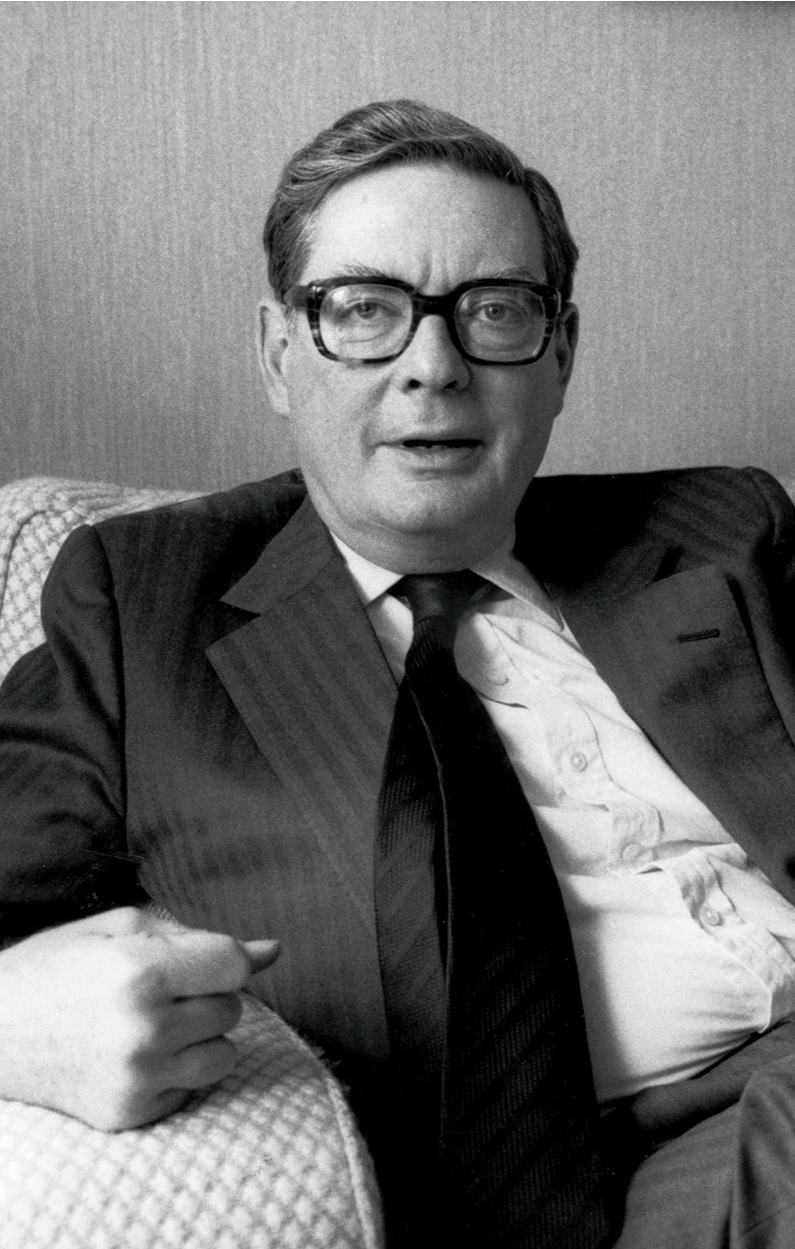
Anthony Tennant
Guinness PLC
Tony Greener
United Distillers Group
IMPACT: NOV. 15 & DEC. 1, 1987
Anthony Tennant took over at Guinness after Ernest Saunders was forced to resign, taking the helm at Guinness PLC following its acquisition of Distillers Co. Tennant told Shanken the intensifying consolidation in the U.S. beverage alcohol industry was helping to give more control to brand owners and marketers, especially in the distribution tier, which he saw as a boon for business. Meanwhile Tony Greener, the managing director of United Distillers Group, talked about the importance of welcoming new products into the fold. Shanken asked them both about the then-trend of European companies buying North American operators, but they weren’t concerned. Tennant said companies had to be global brand marketers, regardless of where their headquarters were located.
Michel Roux
Carillon Importers
IMPACT: JAN. 15, 1991
The U.S. division of International Distillers & Vintners, Carillon Importers was widely considered the most innovative marketing and advertising company of its time in the late ’80s and early ’90s for its work on Absolut Vodka. Led by Michel Roux, Carillon’s president and CEO, the company made Absolut a household name. Shanken sat down with Roux, who detailed his strategies that linked Absolut to the art community and made bullish predictions for its future growth. Roux also credited the magazines that ran Absolut’s advertising for helping to steer the direction for audience-appropriate marketing.
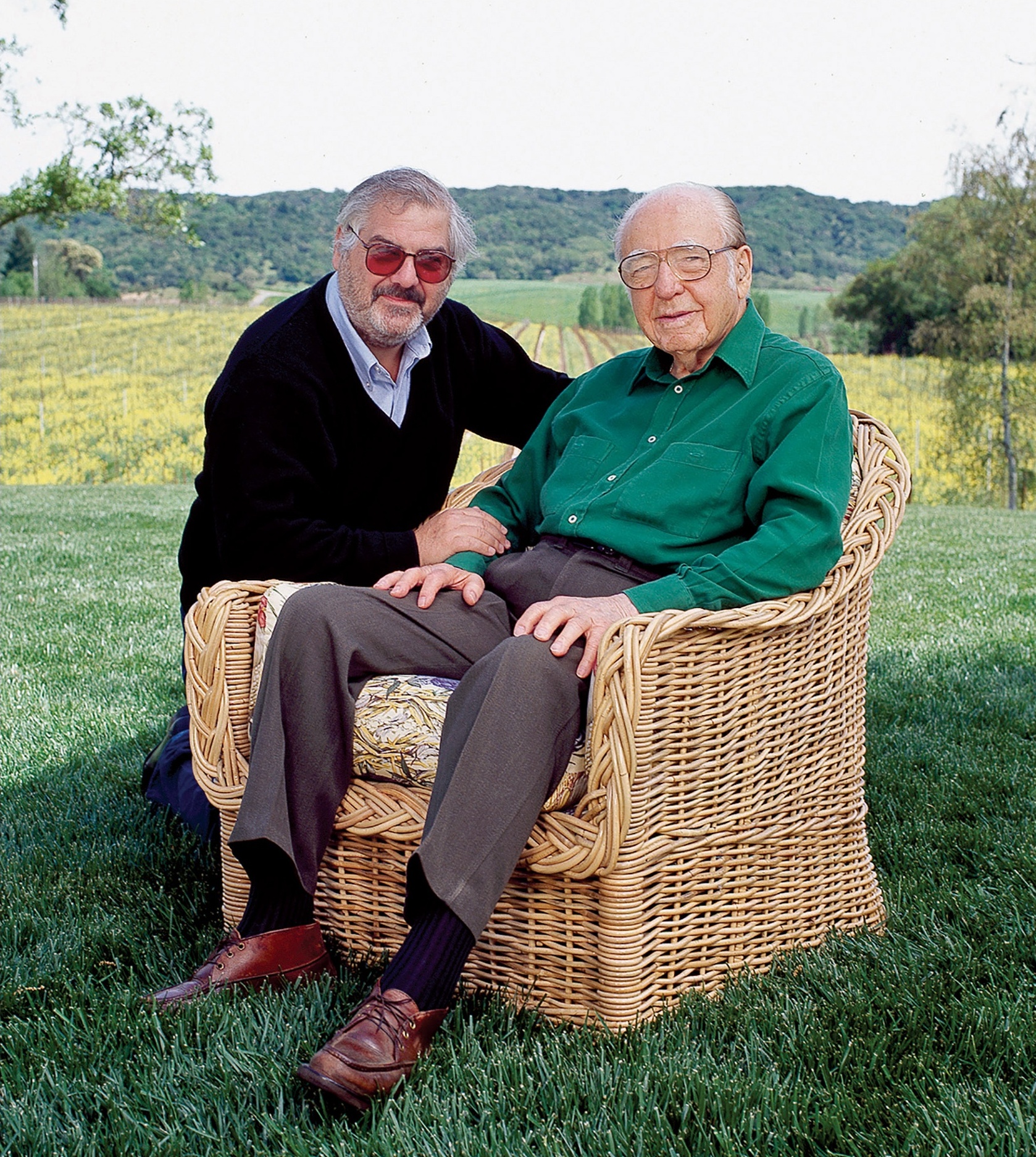
Ernest Gallo
E. & J. Gallo Winery
IMPACT: SEPT. 1, 1991 WINE SPECTATOR: JUNE 30, 1999
A wine industry legend, Ernest Gallo granted Shanken a couple of interviews during the 1990s, a rarity for the publicity-shy chairman of E. & J. Gallo Winery. In 1991, E. & J. Gallo controlled about 28% of the U.S. wine market, with depletions exceeding 69 million 9-liter cases. That year, he gave Shanken insight into his view of the California wine segment, noting that he expected varietal wines to grow but that wine companies had to do a better job of appealing to younger legal-age drinkers to expand the market.
Eight years later, in 1999, as Gallo was celebrating his 90th birthday, he spoke with Shanken again. This time the conversation took a nostalgic turn, as Gallo remembered his childhood growing up in the wine business with his grandfather and father making wine at home, and the earliest days of his wine business endeavors with his brother Julio at the repeal of Prohibition in the 1930s. Gallo and Shanken also took a helicopter tour of the E. & J. Gallo vineyards and property during this visit. He told Shanken that he still had work to do to make better wine and that he was not content with the state of the wine industry, as he believed even then that the wine market should be bigger and appeal to more consumers. Gallo also touted the quality and future potential for Sonoma County wines—and his pride in making wine there.
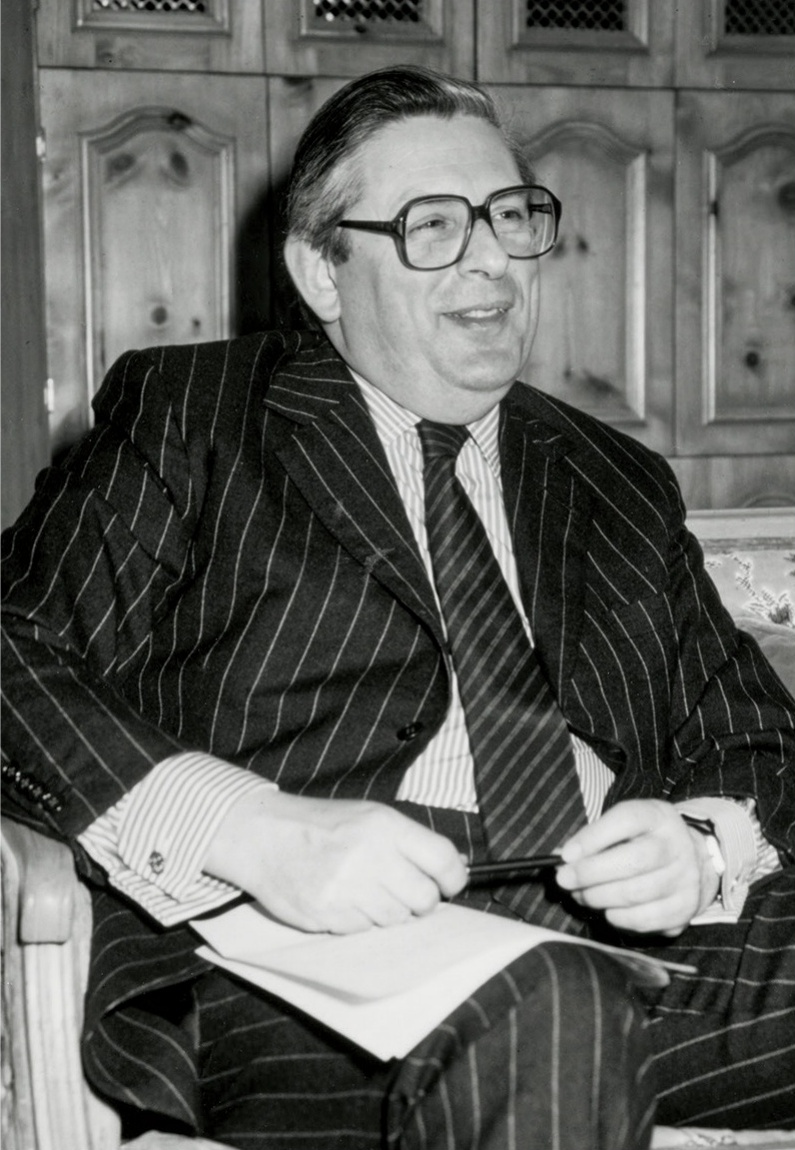
George Bull
Grand Metropolitan PLC
IMPACT: JUNE 15, 1992
When Shanken interviewed George Bull in 1992, he’d just been named chairman and CEO of the food sector at Grand Metropolitan PLC, moving on from his previous post as chairman and CEO of the company’s drinks division: International Distillers & Vintners. A year later, in 1993, he would become chairman of the entire Grand Metropolitan group. He discussed growth strategies amid a lagging economy and slowing wine and spirits sales, predicting growth for some parts of the world but expecting North America to continue declining. Bull also talked about how IDV managed its distribution networks, giving it global control of its brands.
Francisco Padron
Cubatabaco
CIGAR AFICIONADO: SPRING 1993 & SPRING 1994
Francisco Padron was the former head of Cubatabaco, the state-run entity that controlled all production and distribution of Cuban tobacco products. (Habanos S.A. began handling distribution in 1994, following the second interview highlighted here). Padron sat down with Shanken in November of 1992 in Havana, and again in December of 1993 in Mexico City, to discuss the state of Cuban cigars.
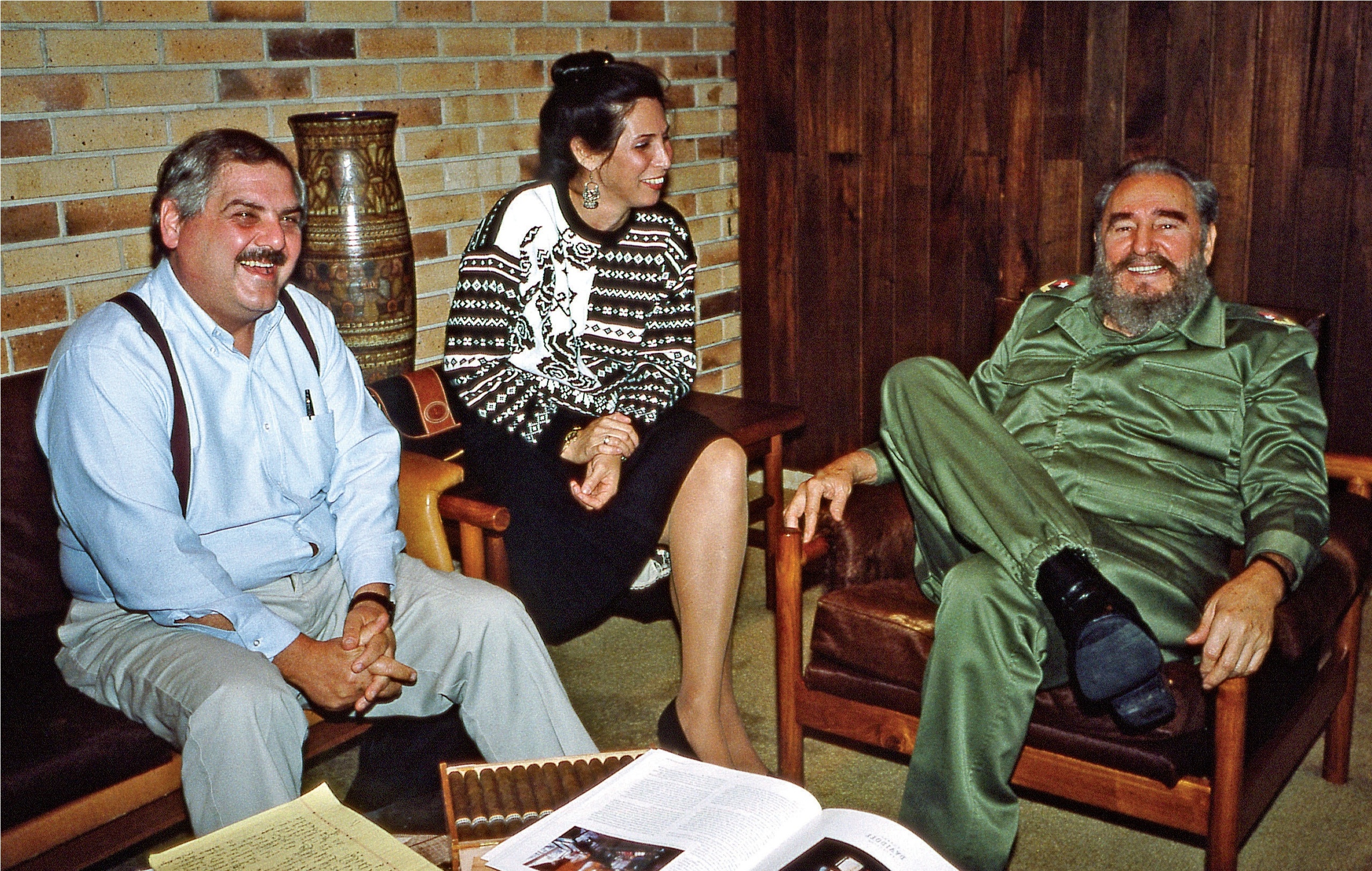
Marvin R. Shanken with Fidel Castro (right)
Fidel Castro
President of Cuba
CIGAR AFICIONADO: SUMMER 1994
On Feb. 3, 1994, Shanken traveled to Havana to speak with Fidel Castro, who at the time was the president and prime minister of Cuba. The polarizing revolutionary was born in August 1926 and passed away in November 2016. Castro led Cuba from 1959 to 2008. His one-on-one interview with Shanken, one of the few he granted during his long reign, covers cigars, the U.S. trade embargo and more.
Edgar Cullman Sr.
Culbro Corp. (General Cigar)
CIGAR AFICIONADO: AUTUMN 1994
In 1994, Edgar Cullman Sr. joined Shanken in New York City to discuss the trajectory of the cigar industry. Cullman Sr. was an industry giant, the chairman of Culbro Corp. and the owner of General Cigar, which was later sold. He came from a family with deep roots in the tobacco industry, and he turned the family business into one of the largest premium-cigar manufacturers in the world. Cullman Sr. passed away in 2011 at the age of 93.
Robert Furek
Heublein, Inc.
IMPACT: NOV. 1, 1994
The president and CEO of Heublein, Inc., Robert Furek spoke with Shanken about the spirits market and where he saw it going. He expected spirits to stay stagnant or decline in the mid ’90s, citing the then-rise of anti-alcohol sentiments among consumers and calling on spirits producers and marketers to up their innovation moves to boost the segment. Furek was upbeat, however, about the vodka category and Heublein’s Stolichnaya, Smirnoff and Finlandia brands, and he expressed confidence in Jose Cuervo. For wine, Furek justified his company’s sale of the Almaden and Inglenook wine brands by saying the future of growth rested in varietal-specific labels.
Ronald Perelman
MacAndrews & Forbes Inc.
CIGAR AFICIONADO: SPRING 1995
When Ronald Perelman sat down with Shanken in 1995, it was his first time ever granting a one-on-one, question-and-answer interview. Perelman, born Jan. 1, 1943, is an American business tycoon, and at the time of the conversation, he ranked as one of the wealthiest men in America. Perelman’s holding company MacAndrews & Forbes Inc. has featured a vast portfolio of notable companies, including Consolidated Cigar Corp. and Revlon.
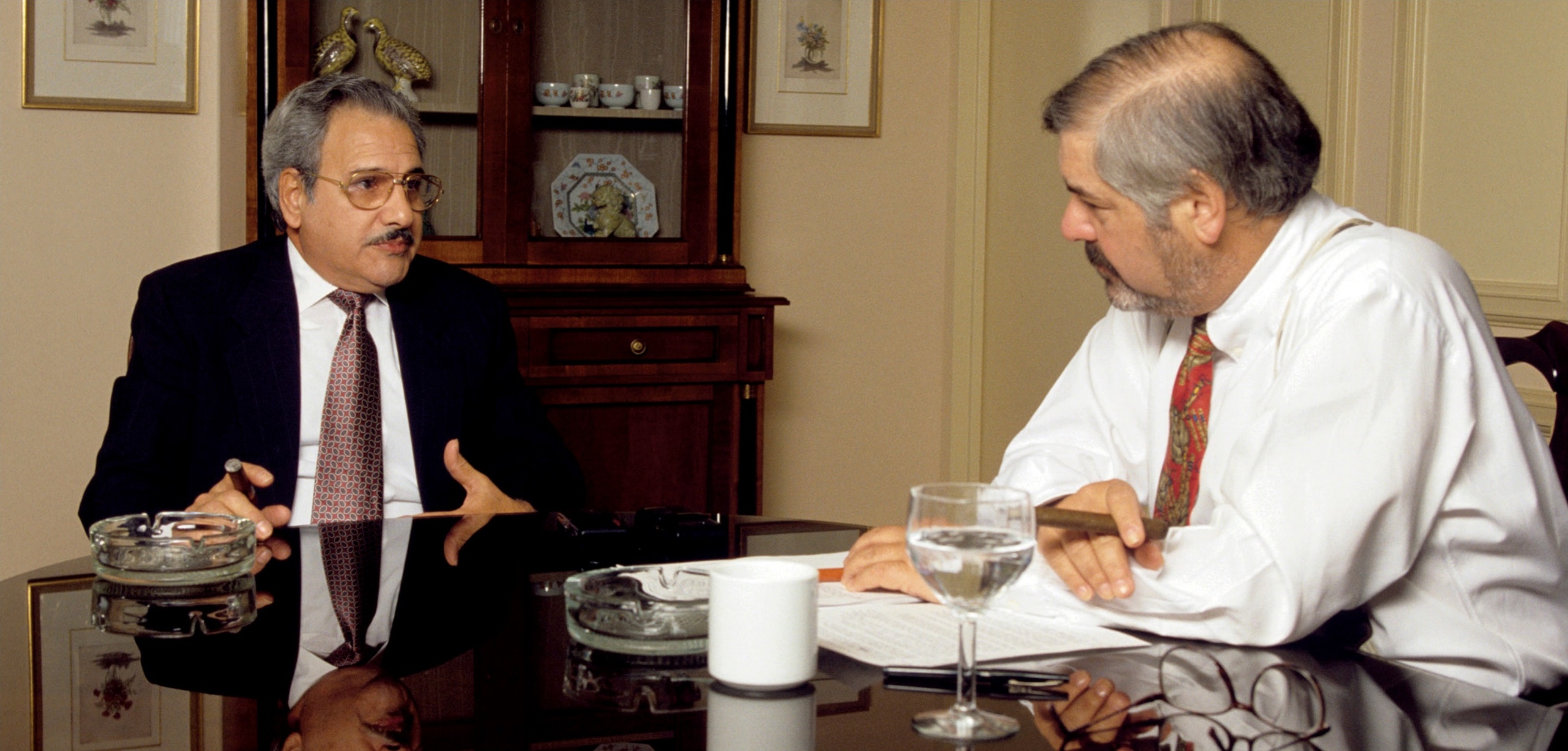
Carlos Fuente Sr. with Marvin R. Shanken
Carlos Fuente Sr.
Arturo Fuente cigars
CIGAR AFICIONADO: SUMMER 1995
Carlos Fuente Sr., patriarch of the Fuente family and head of Arturo Fuente cigars, helped transform his family’s cigar company into one of the world’s largest producers of premium hand-rolled smokes. In early 1995, he was interviewed by Shanken. During their conversation, Fuente Sr. discussed everything from the future plans for his company to the dynamics of the fast-changing cigar industry. Fuente Sr. died in 2016 at the age of 81.
Edgar Cullman Jr.
Culbro Corp. (General Cigar)
CIGAR AFICIONADO: AUTUMN 1996
In June 1996, Edgar Cullman Jr. met up with Shanken for an interview that primarily covered his plans as CEO of Culbro Corp. and General Cigar. Cullman Jr. had long awaited his chance to take the reins of the family business and had recently been appointed CEO of Culbro around the time of this interview. Cullman Jr. continues to manage Culbro today through a private equity investment firm.
Robert “Robby” Levin
Holt’s Cigar Store and Ashton Cigars
CIGAR AFICIONADO: WINTER 1996
At the Cigar Aficionado New York City office in 1996, Robert Levin, age 50 at the time, joined Shanken for a wide-ranging interview that covered the Levin family business and the Ashton cigar brand. Levin took over the family business in the late ’70s when it was only Holt’s Cigar Store. He later founded the Ashton cigar brand and several others.
Ernesto Perez-Carrillo
El Credito Cigar Co.
CIGAR AFICIONADO: MAY/JUNE 1997
Ernesto Perez-Carrillo, born in 1951 in Pinar del Río, Cuba, is one of the most respected and recognizable names in the cigar industry today. He and his El Credito Cigar Co. business had only recently achieved cigar industry fame when Shanken interviewed him in November of 1996. The two discussed the ups and downs of national notoriety stemming from a strong Cigar Aficionado rating and a subsequent story as well as his great success journey in the industry.
Stanford Newman
J.C. Newman Cigar Co.
CIGAR AFICIONADO: JULY/AUGUST 1997
Cigar industry pioneer Stanford Newman joined Shanken for an interview in 1997 to discuss his long history with cigars, his insight for running a thriving business and his impressions of the then-cigar boom. Newman, who passed away in 2006 at the age of 90, left a familial legacy that continues today with his sons Eric and Robert and his grandson Drew, who helm J.C. Newman.
José Orlando Padrón
Piloto Cigars Inc.
CIGAR AFICIONADO: SEPTEMBER/OCTOBER 1998
José Orlando Padrón is the founder of four-time Cigar of the Year winner Padrón Cigars. An industry icon, Padrón sat down with Shanken in 1998 to discuss his family’s deep history with cigars, which dates back to the 1850s in Cuba, and their industry success beyond the island nation. He died in 2017 at the age of 91, but the business remains in the family today, currently headed by his son Jorge.
Carlos Fuente Jr.
Arturo Fuente cigars
CIGAR AFICIONADO: NOVEMBER/DECEMBER 1998
In 1998, a 44-year-old Carlos Fuente Jr., the current head of Arturo Fuente cigars and son of Carlos Fuente Sr., spoke with Shanken about an array of topics. The interview between the two men covered, most notably, Fuente’s dream of creating the famed Fuente Fuente OpusX cigar line and the difficulties that came with it. He also spoke about how the family business adapted during the cigar boom and the future of the Fuente family’s Dominican farm.
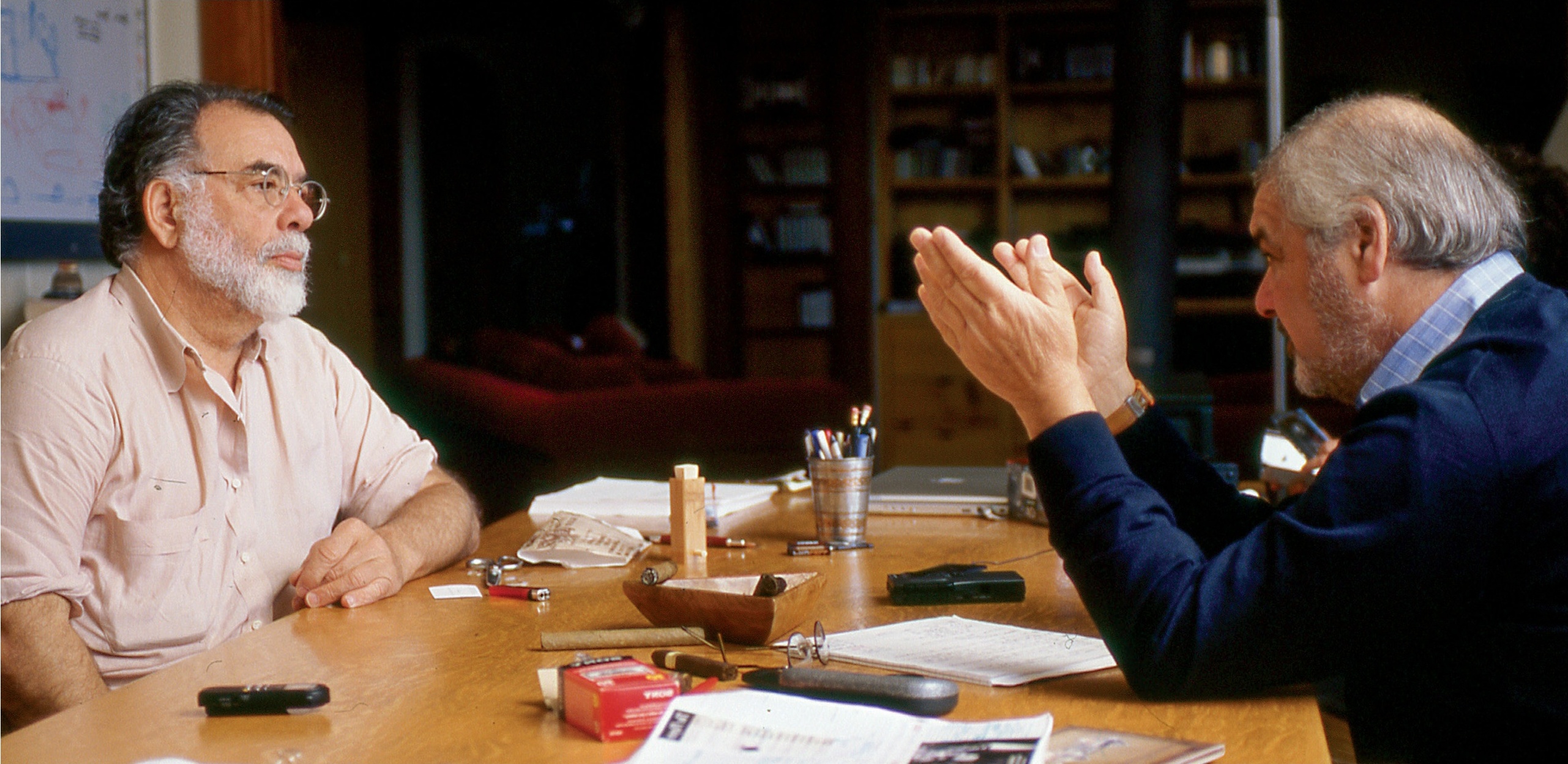
Francis Ford Coppola with Marvin R. Shanken
Francis Ford Coppola
Film director
CIGAR AFICIONADO: SEPTEMBER/OCTOBER 2003
Francis Ford Coppola, the acclaimed film director known for classic titles such as “The Godfather” and “Apocalypse Now,” among many others, joined Shanken in 2003 for a rare, one-on-one interview. In this revealing conversation, Coppola, now 83, discussed secrets of “The Godfather” and dove into an extraordinary amount of detail regarding what it took to make the film. He also shared his story on becoming a Hollywood legend.
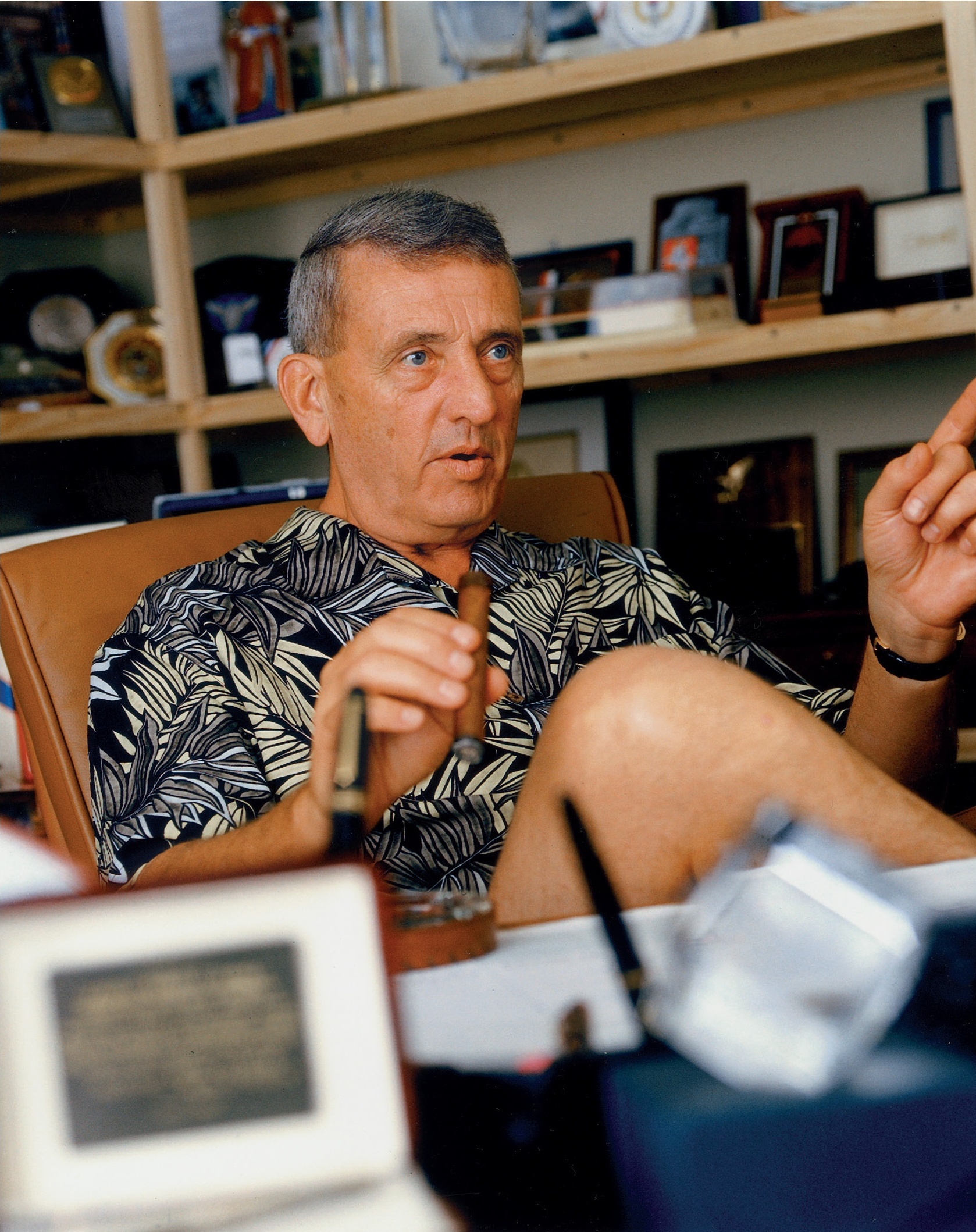
Gen. Tommy Franks
U.S. Army General
CIGAR AFICIONADO: NOVEMBER/DECEMBER 2003
On Sept. 11, 2003, in Tampa, Florida, Shanken interviewed the recently retired Gen. Tommy Franks. Though the date of the meeting was by coincidence, it would steer the trajectory of this interview, as the men discussed the infamous day in 2001 and the geopolitical and militaristic dynamics shaping the world at the time. Gen. Franks, born 1945, served in the military for 37 years, eventually reaching one of the highest posts: the head of Central Command.
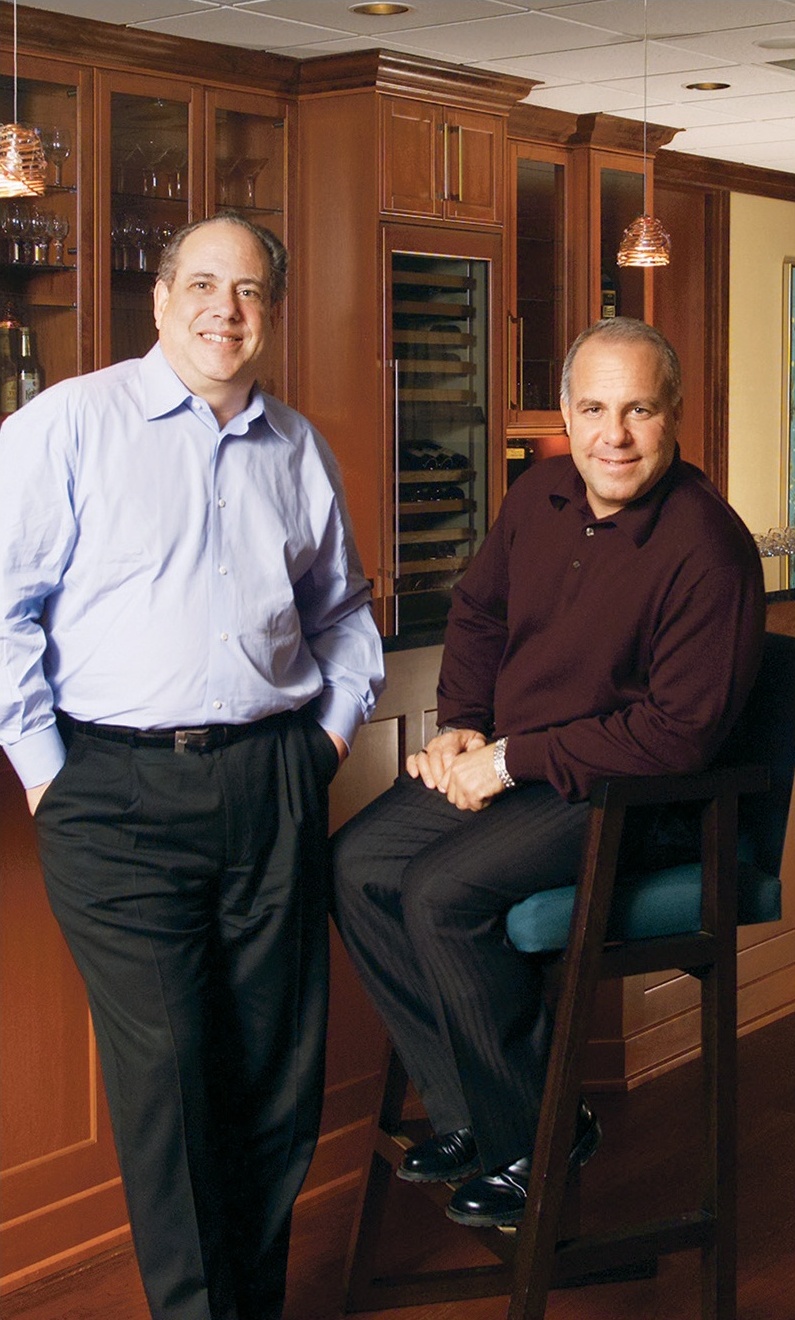
Richard Sands (left) and Robert Sands
Richard & Robert Sands
Constellation Brands
IMPACT: FEB. 1 & 15, 2005
Brothers Richard and Robert Sands shook up the domestic wine industry in the mid-2000s when Constellation purchased Robert Mondavi Corp. The deal furthered Constellation’s push to move its wine portfolio upscale. Richard, Constellation’s chairman and CEO, told Shanken his company would keep the Mondavi roster under one umbrella, rather than splitting the lower-priced labels from their luxury counterparts. Meanwhile, Robert, Constellation’s president and COO, touted the export potential for Mondavi labels and noted that their company could expand Mondavi wines around the world. The brothers talked about upholding their obligations to Constellation shareholders while remaining committed to producing great wine.
Michael Jordan
NBA legend
CIGAR AFICIONADO: JULY/AUGUST 2005 & NOVEMBER/DECEMBER 2017
Widely considered to be the greatest basketball player, if not athlete, of all time, the legendary Michael Jordan hardly needs an introduction. His brand, the Jordan Brand, is one of the most recognizable in the world, and he’s a businessman, a sports team owner and an avid cigar smoker. Shanken interviewed Jordan twice for Cigar Aficionado cover stories discussing his career, passion for cigars and much more. The second interview, done in video format, is Cigar Aficionado’s most watched video ever.

Arnon Milchan
Movie producer
CIGAR AFICIONADO: SEPTEMBER/OCTOBER 2008
In 2008, Shanken interviewed the highly successful, yet elusive, movie producer Arnon Milchan. The 77-year-old Milchan, who rarely gives interviews, is a man of great prestige in the isolated world of Hollywood, but to the everyday person, he remains relatively unknown. He’s produced classics such as “Once Upon a Time in America” and “L.A. Confidential,” and in this interview, he discusses those films while sharing alluring anecdotes from his exceptional career.
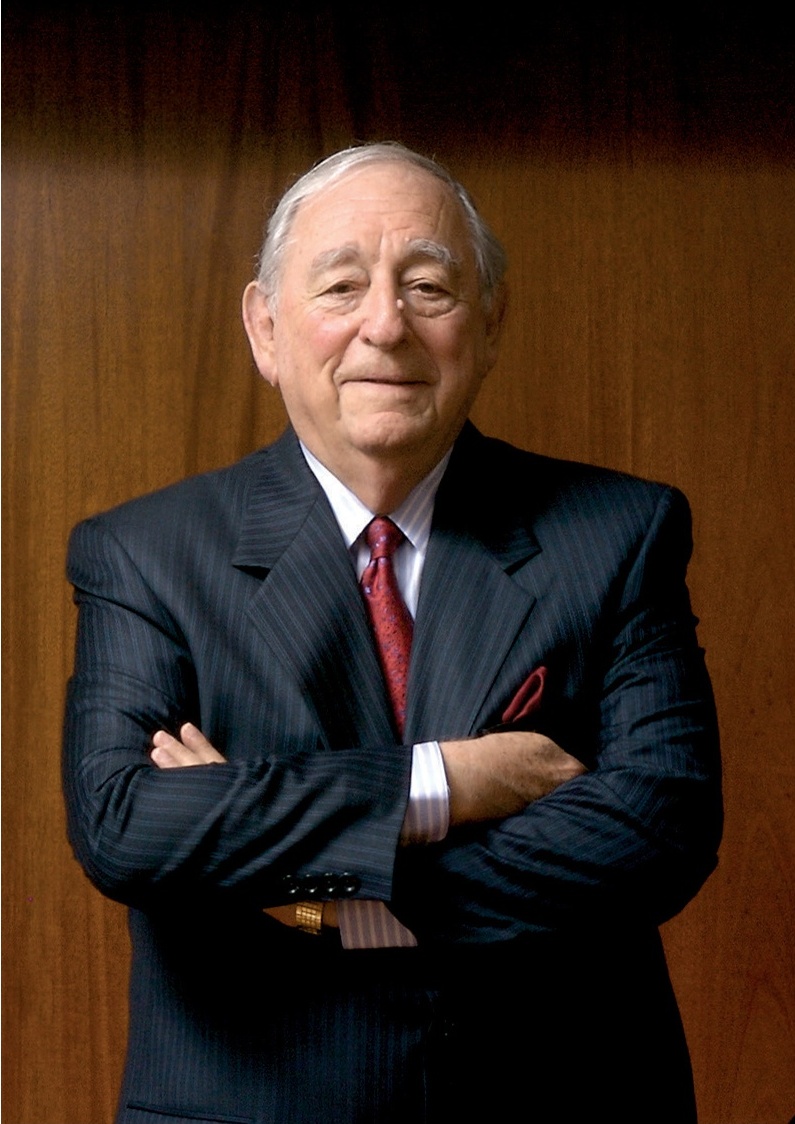
Harvey Chaplin
Southern Wine & Spirits of America
IMPACT: NOV. 15, 2008
A giant in the beverage distribution tier, Harvey Chaplin sat with Shanken around the time of Southern Wine & Spirits’ 40th anniversary. The chairman and CEO of Southern told Shanken that his company had no plans to be a national player early on, but said a couple key acquisitions changed its trajectory, most notably by entering California and later New York. Chaplin pointed out that each of Southern’s then-individual houses was run somewhat independently and with a sense of ownership from the personnel in each location, which was a point of pride for the company.
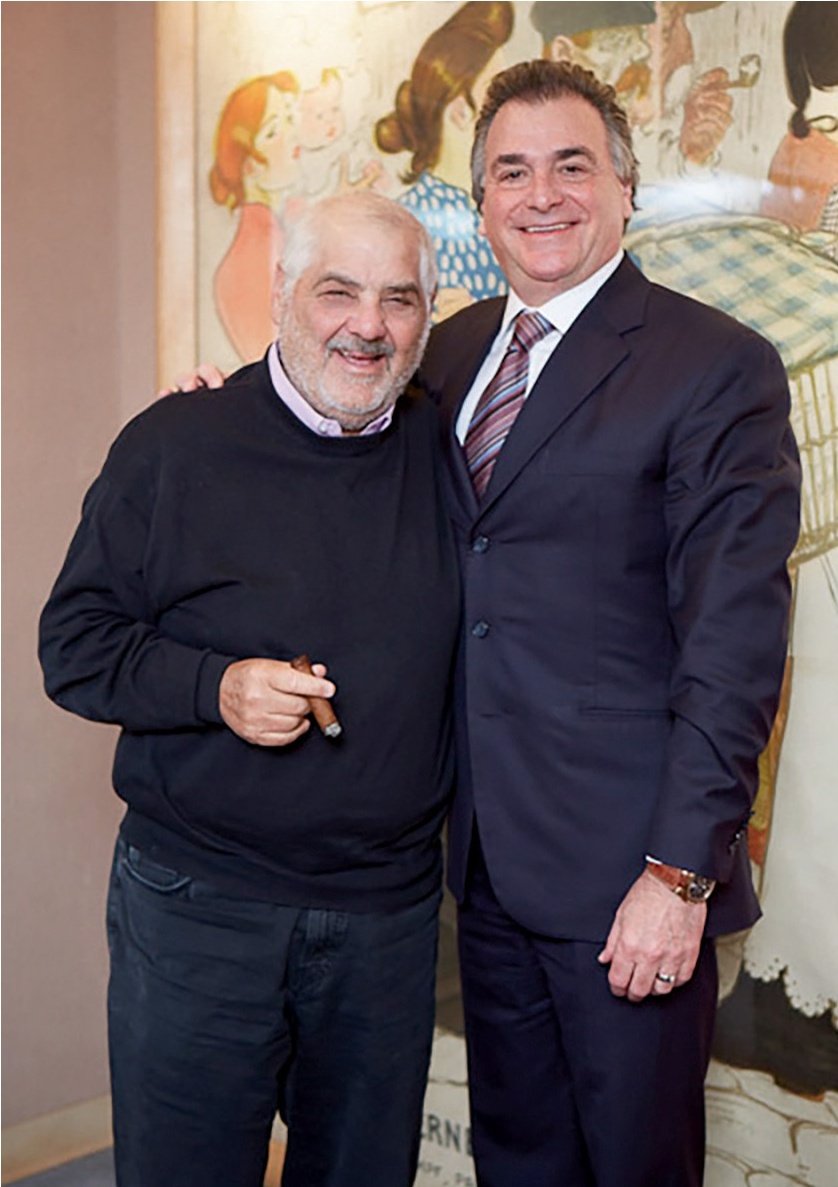
Marvin R. Shanken and Larry Schwartz
Larry Schwartz
Diageo North America
IMPACT: JULY 1, 2012
In 2012, when Shanken sat down with Diageo North America president Larry Schwartz, Diageo controlled roughly one-quarter of the U.S. spirits market. Schwartz told Shanken that the company was readying marketing and advertising materials to court multicultural consumers, an area he believed was underserved in the U.S. In addition, he discussed Diageo’s “Core Four”—the company’s highest-volume brands, which included Smirnoff vodka, Captain Morgan rum, Crown Royal whisky and Jose Cuervo tequila—as well as other well-known brands such as Cîroc and Ketel One vodkas and Johnnie Walker Scotch. While Diageo was a smaller player in beer and wine at the time, Schwartz also forecasted growth for Guinness Black lager.
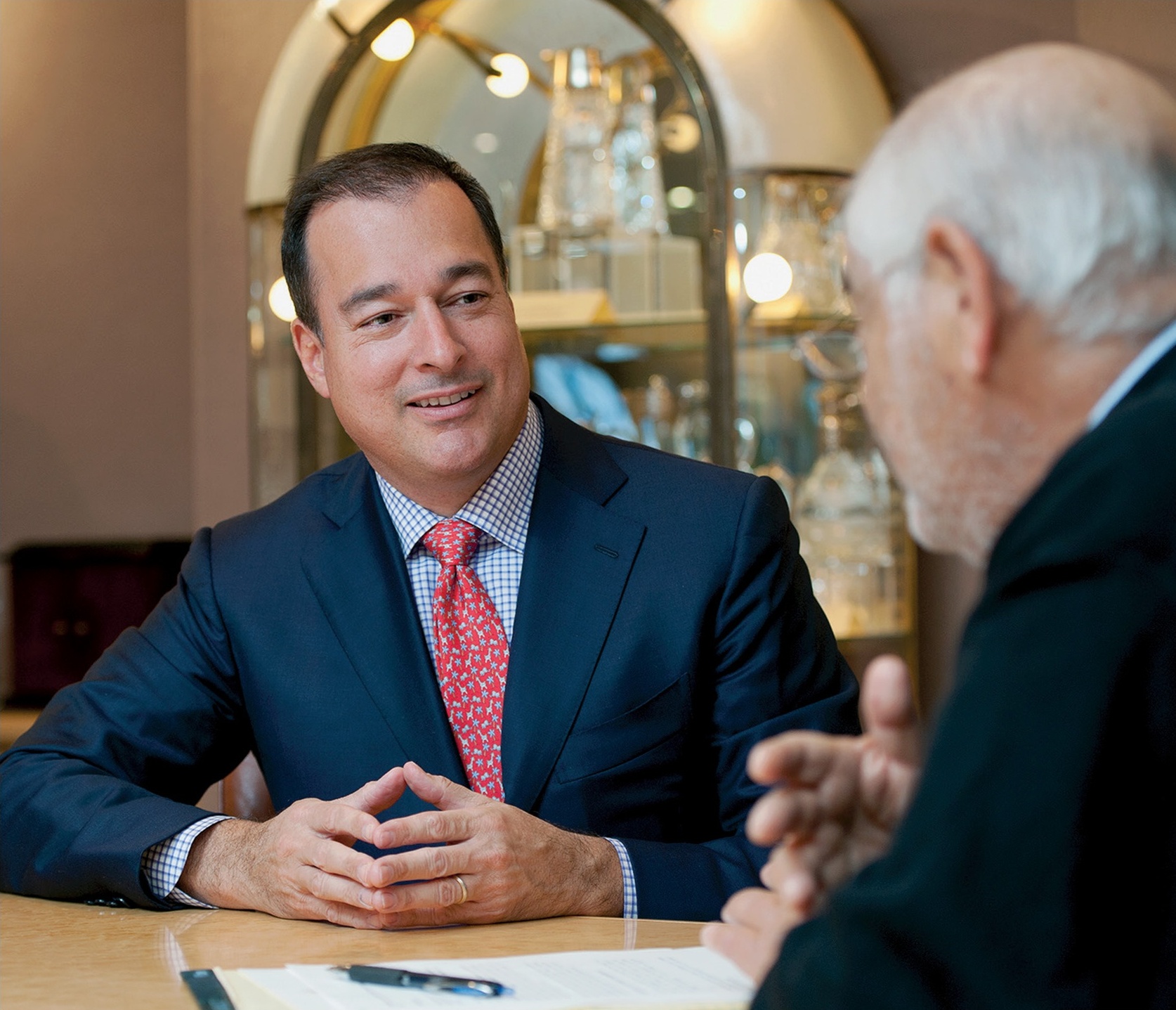
Facundo Bacardi with Marvin R. Shanken
Facundo Bacardi
Bacardi Ltd.
IMPACT: JUNE 1 & 15, 2014
The great-great-grandson of Bacardi Ltd. founder Don Facundo Bacardí Massó, Facundo Bacardi granted Shanken a rare interview in 2014 to discuss his company’s role in the global spirits business. The chairman of Bacardi Ltd. talked about the strengths and challenges of Bacardi’s family ownership structure and its Cuban heritage, saying that the Bacardis have every intention of making a Cuban-sourced rum again as well as reconnecting with their homeland. Beyond rum, Bacardi told Shanken about his company’s myriad successful acquisitions over the past two decades and about the family’s excitement over future opportunities.
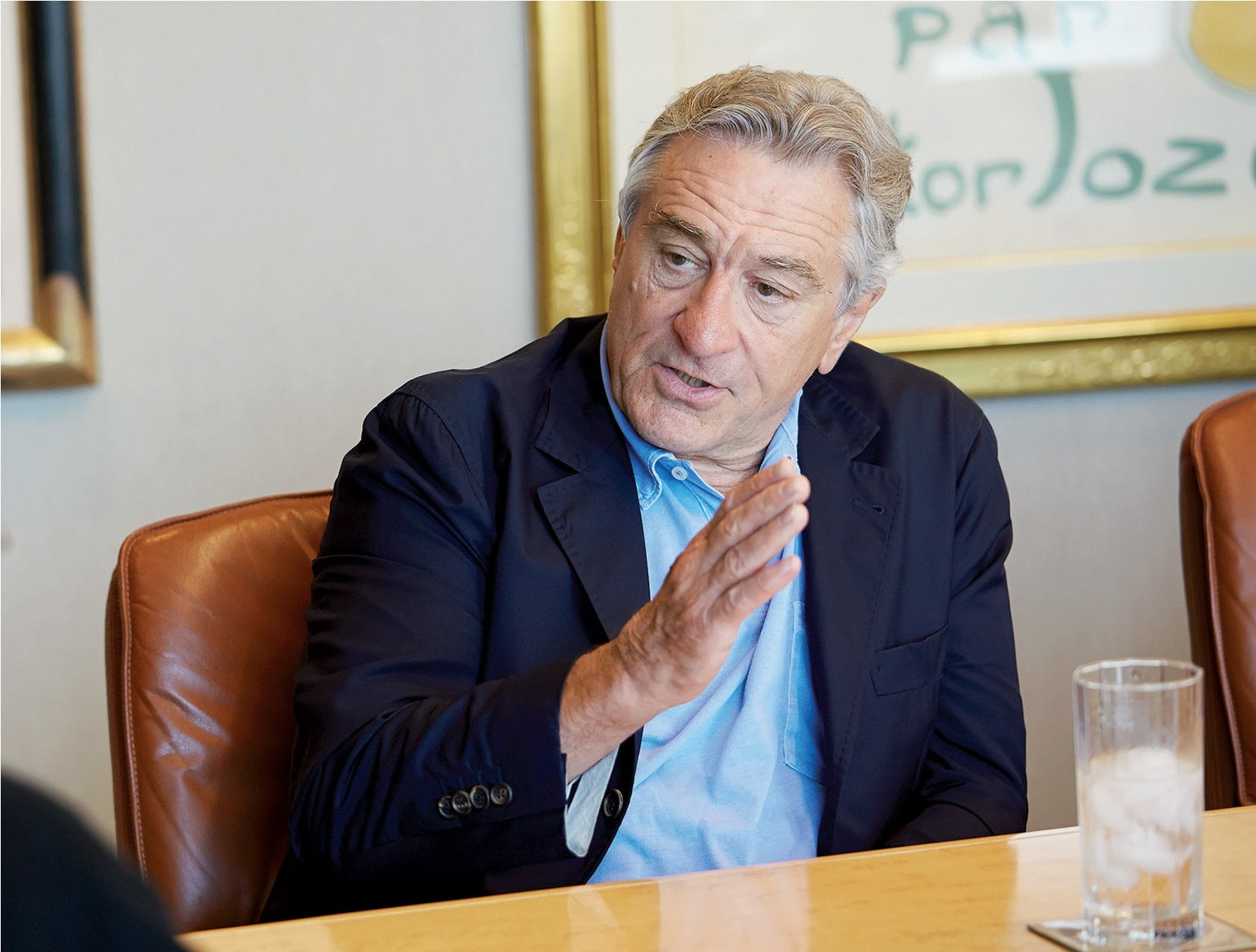
Robert De Niro
Actor
CIGAR AFICIONADO: SEPTEMBER/OCTOBER 2015
Few actors have an accomplished résumé that can compete with Robert De Niro’s. Born in 1943, the two-time Academy Award winner has starred in too many classics to name, from “The Godfather Part II” to “Raging Bull” and “Taxi Driver.” In 2014, the decorated actor joined Shanken in New York City for an exclusive one-on-one interview to talk about his illustrious career, his relationship with cigars, his dealings as a businessman and much more.
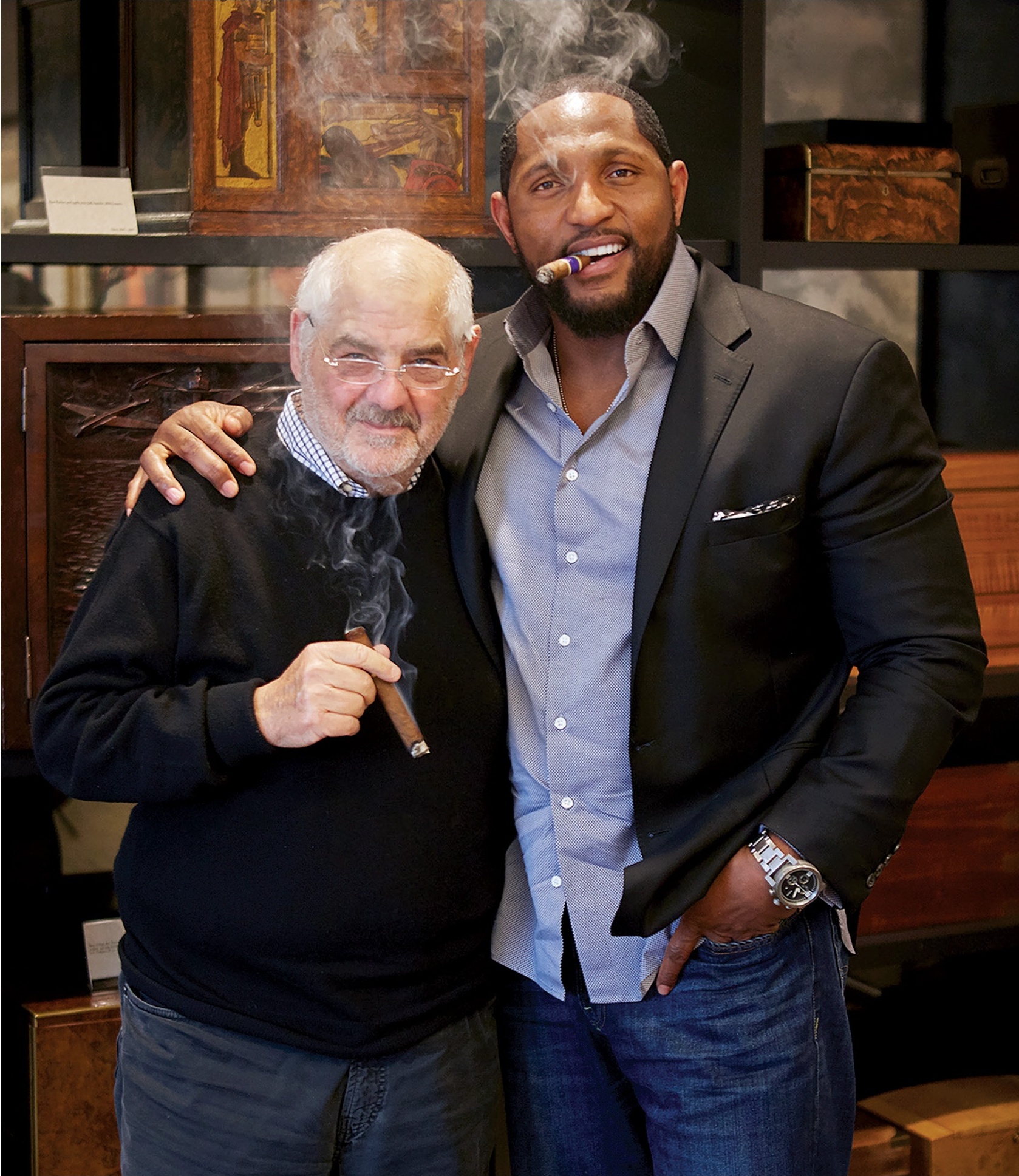
Marvin R. Shanken with Ray Lewis
Ray Lewis
NFL linebacker
CIGAR AFICIONADO: SEPTEMBER/OCTOBER 2016
Lauded as one of the greatest NFL linebackers of all time, Ray Lewis was among the premier athletes of his generation. Lewis enjoyed a 17-year, Hall of Fame career with the Baltimore Ravens, winning multiple Super Bowls. The cigar-loving ball player sat down with Shanken for a powerful video interview in 2016 to discuss his career and his motivations. He provided a glimpse into who he really is as a person, allowing viewers to learn about the man behind the uniform.
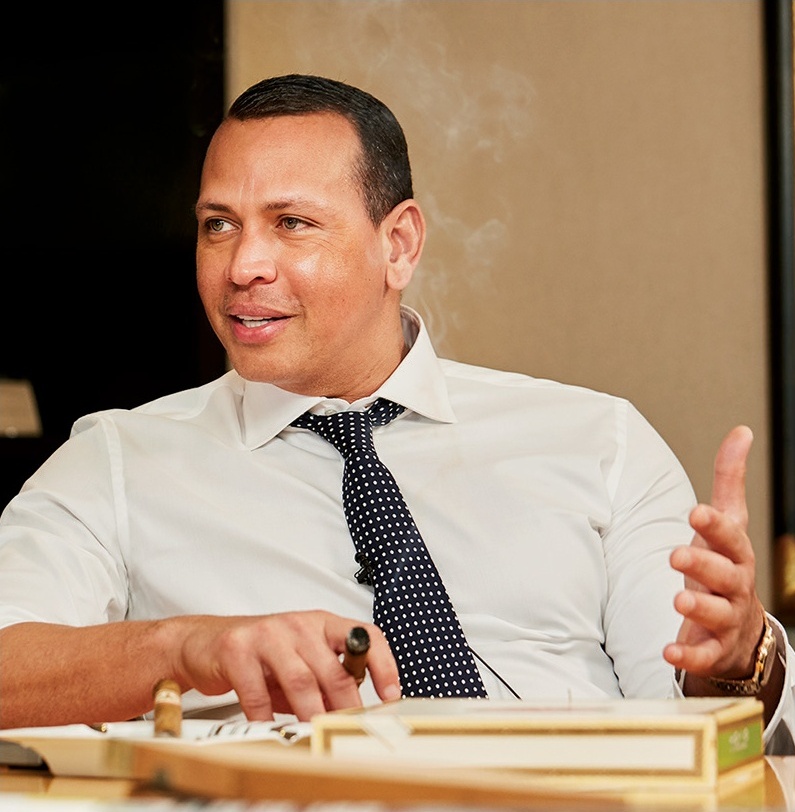
Alex Rodriguez
MLB star
CIGAR AFICIONADO: SEPTEMBER/OCTOBER 2018
Alex Rodriguez is arguably the most polarizing figure to ever step foot on a baseball diamond. The all-time great player, best known for his years as a New York Yankee, was interviewed by Shanken in 2018. The two men discussed Rodriguez’s exceptional yet controversial career, his subsequent success as a businessman, his love of cigars and his journey to becoming one of the biggest figures in professional sports.
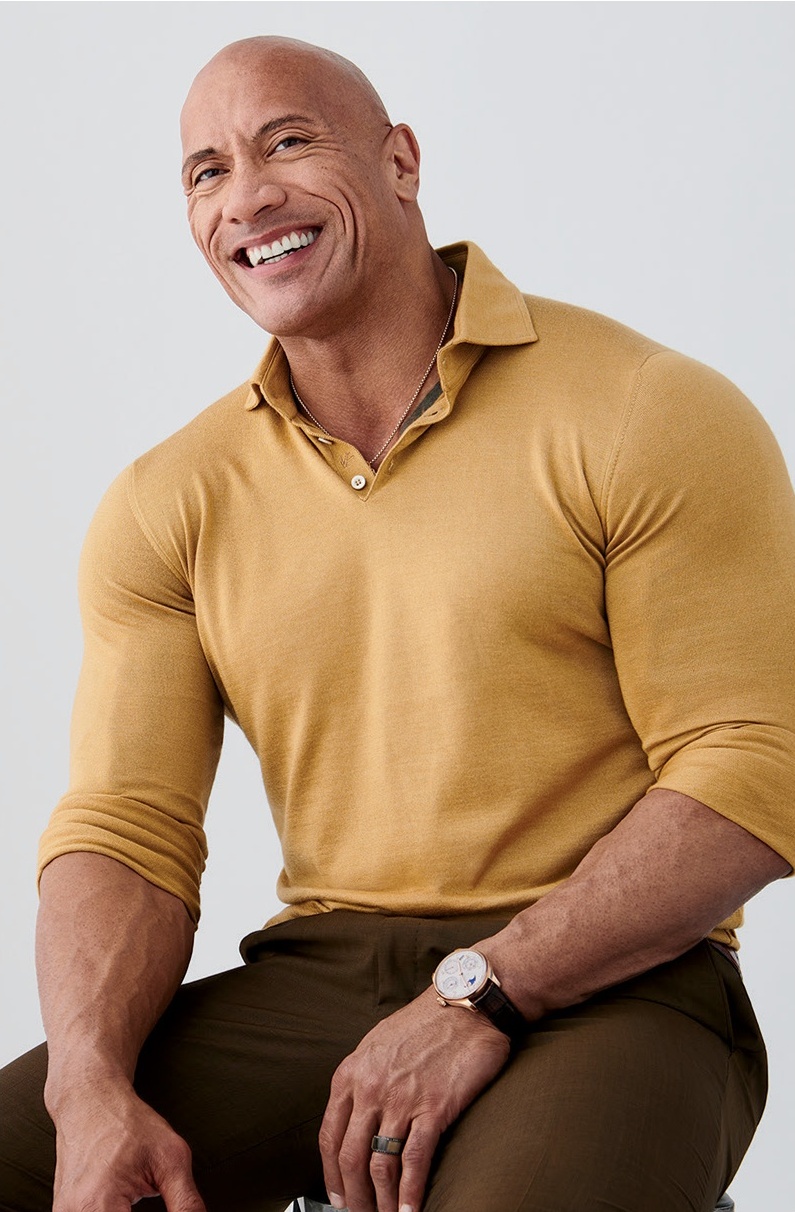
Dwayne “The Rock” Johnson
Actor
CIGAR AFICIONADO: JANUARY/FEBRUARY 2021
Over the last decade, Dwayne “The Rock” Johnson has blossomed into one of Hollywood’s biggest stars. The former Miami Hurricanes football player and professional wrestler is a household name across the world, yet his stardom continues to rise. He joined Shanken for an exclusive online video interview during the heart of the COVID-19 pandemic to discuss his remarkable career and the seemingly endless ambition that has fueled his life.
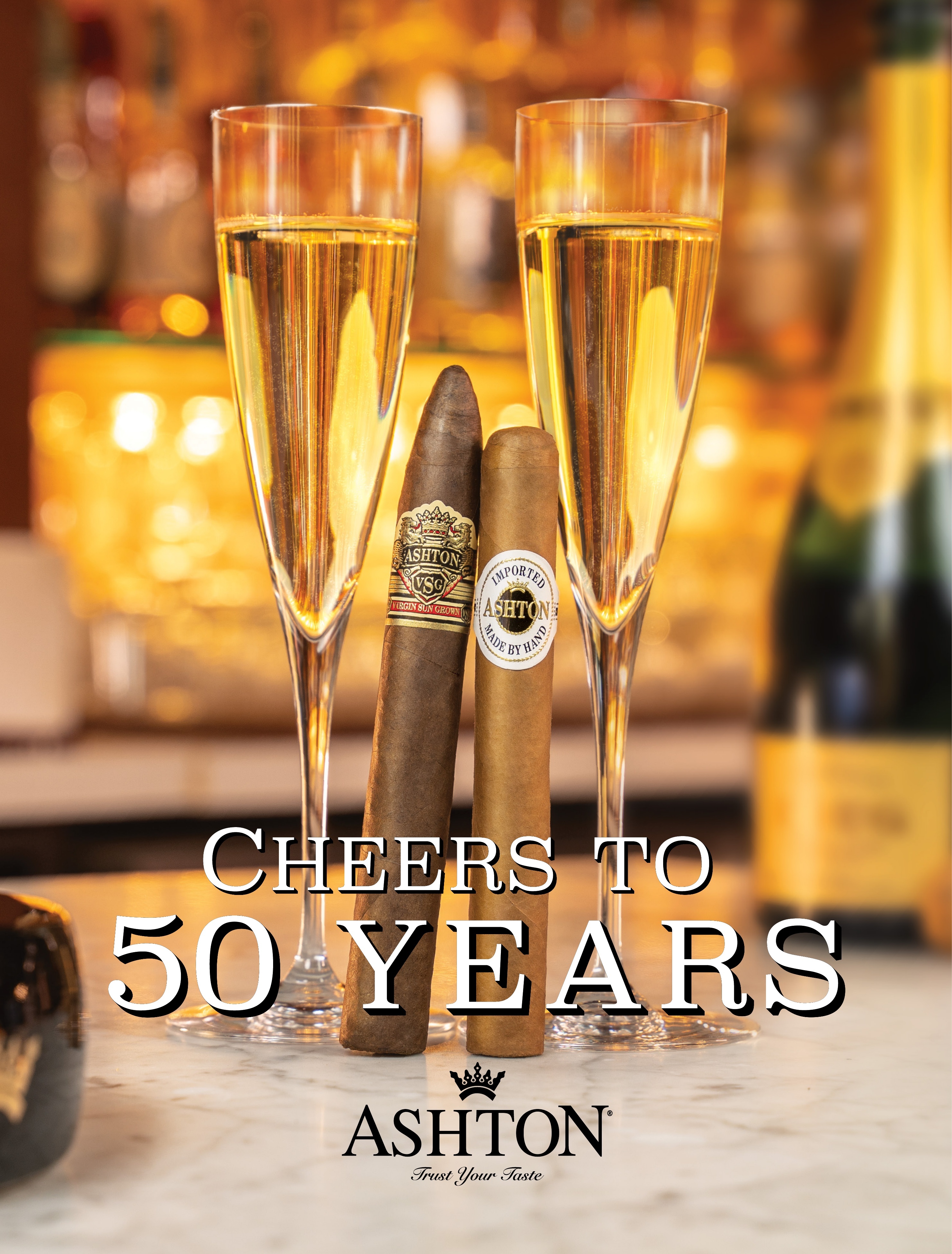
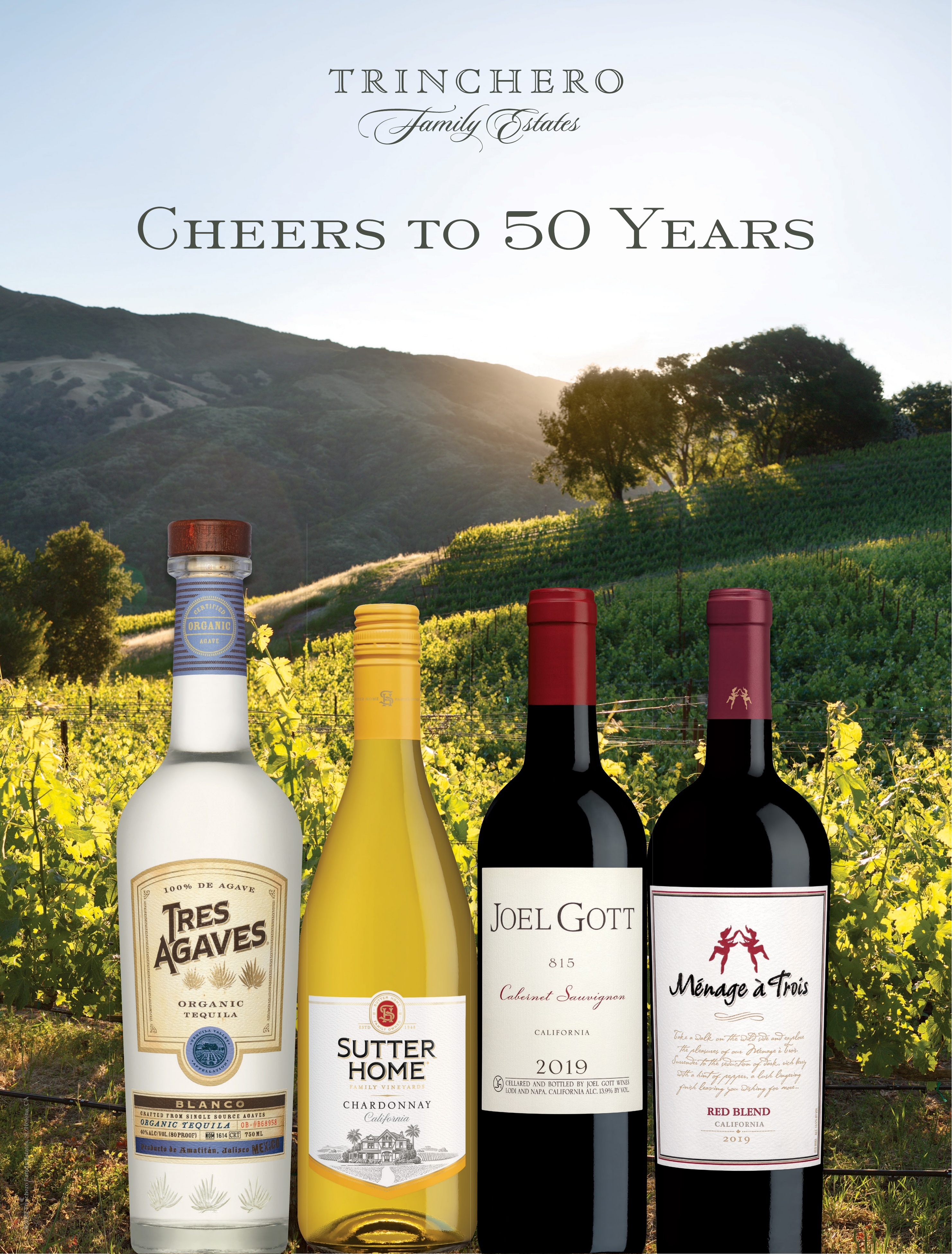
PHILANTHROPY
A TRADITION OF
Philanthropy
Giving back has long been a hallmark of M. Shanken Communications. “If you were to ask me what I am most proud of over the last 50 years, the answer would be simple,” says chairman Marvin R. Shanken. “From the very early days, we wanted to give back. Charity and charitable events are an integral part of our company culture.”
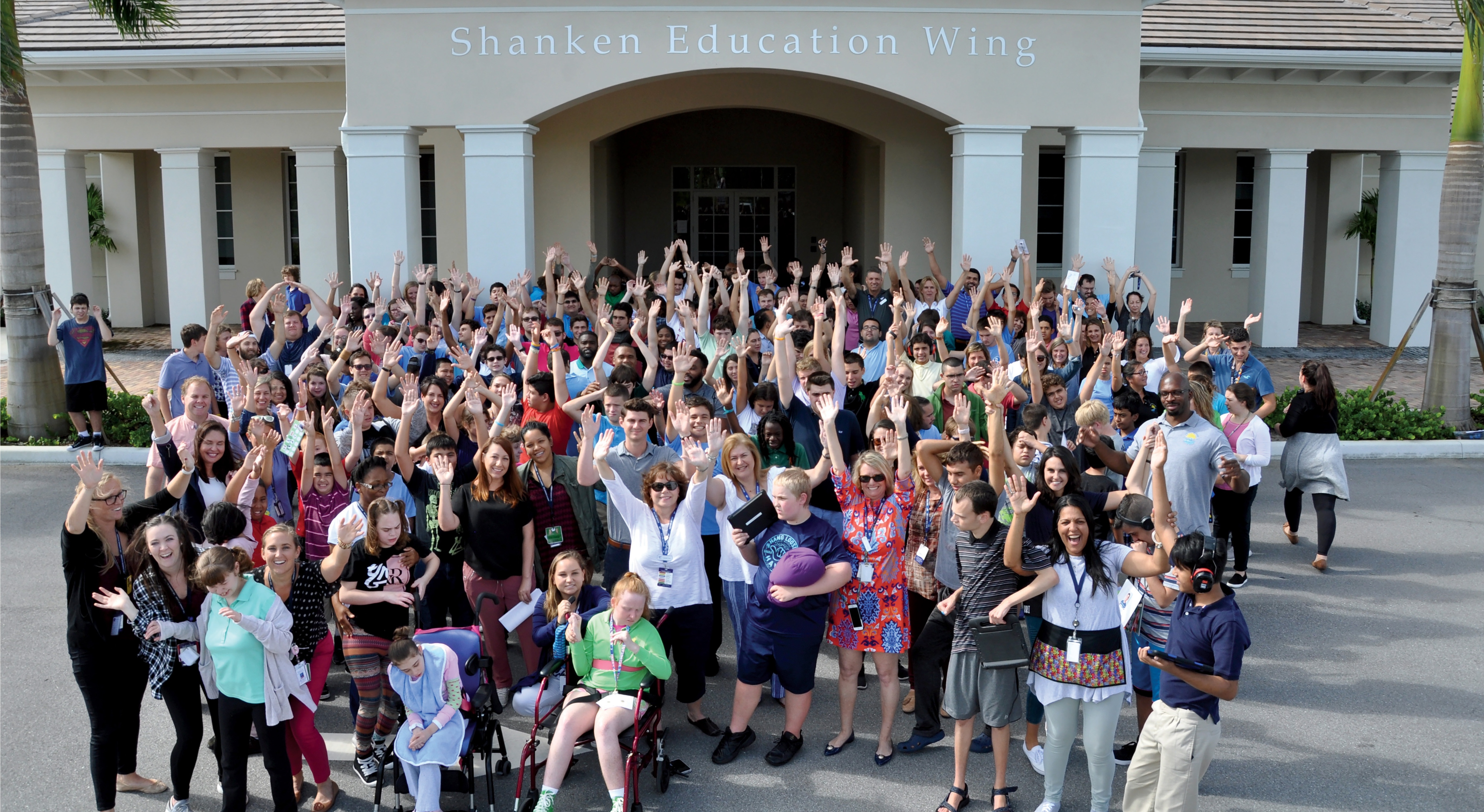
Students and staff at the Shanken Education Wing at Els Center for Excellence, Jupiter, Fla.
Wine Spectator Scholarship Foundation
I n 1981, the Wine Spectator Scholarship Foundation was established to support educational organizations that assist people in becoming part of the wine and hospitality industries. The foundation’s principal source of support is Wine Spectator’s Wine Experience: All net proceeds from this annual event are devoted to the foundation. As of 2022, more than $30 million has been raised.
The major beneficiaries are:
• The Wine Spectator Learning Center at the Wine Business Institute at Sonoma State University was granted $3 million toward construction of the facility.
• The University of California, Davis, has received more than $3.6 million over time for nearly 1,000 scholarships and research grants.
• Florida International University received $1 million in support of the Wine Spectator Restaurant Management Lab at the Chaplin School of Hospitality and Tourism Management.
• Washington State University’s Viticulture & Enology program received $1 million toward completing teaching labs and facilities at the school’s Ste. Michelle Wine Estates Wine Science Center.
• The Culinary Institute of America has received two major grants.
• University of California, Berkeley, received monies to fund an oral history project with winemakers and wine scholars, as part of the Bancroft Library’s California Wine Pioneers Series.
Other beneficiaries include Cornell University, University of Miami, Society of Wine Educators, the American Institute of Wine and Food, the James Beard Foundation, the Roots Foundation, José Andrés World Central Kitchen and the Emeril Lagasse Foundation.
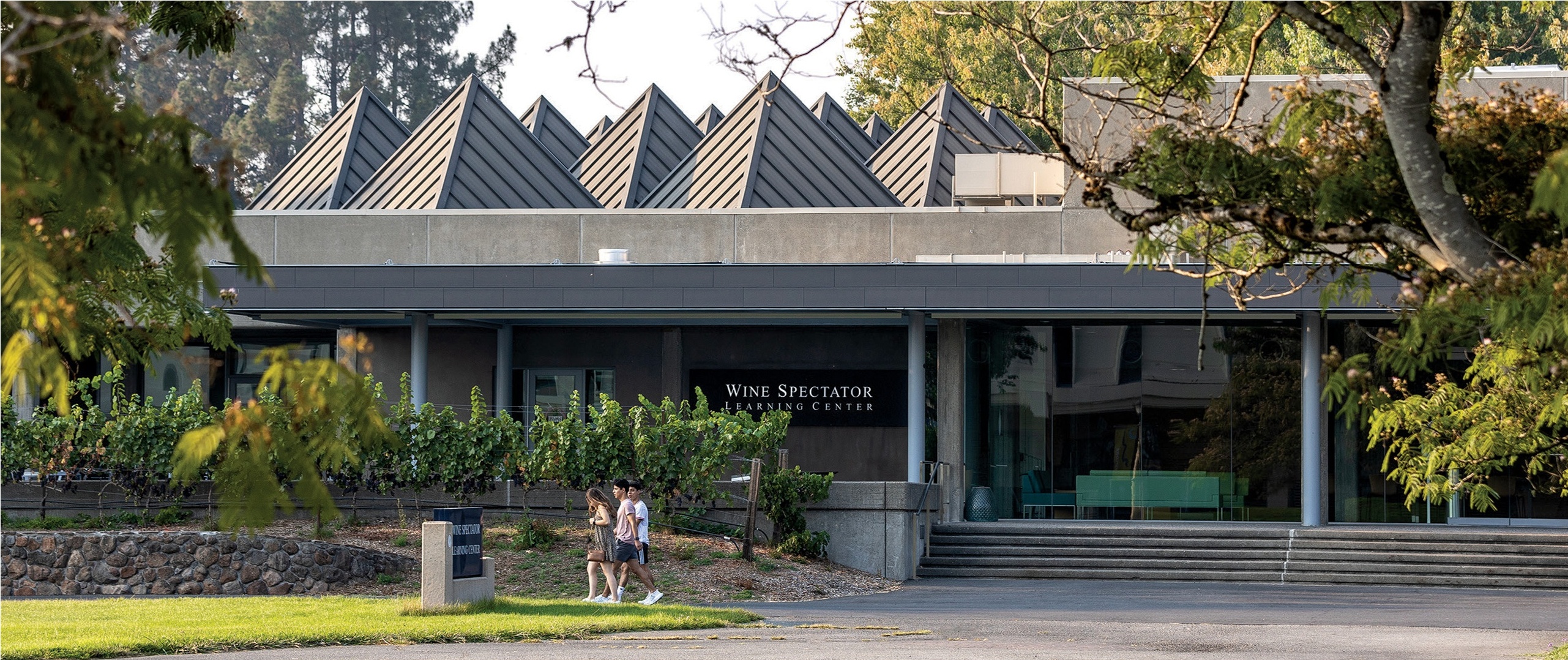
The Wine Spectator Scholarship Foundation granted $3 million to Sonoma State University for the construction of The Wine Spectator Learning Center, which now serves as a hub for students at the school.
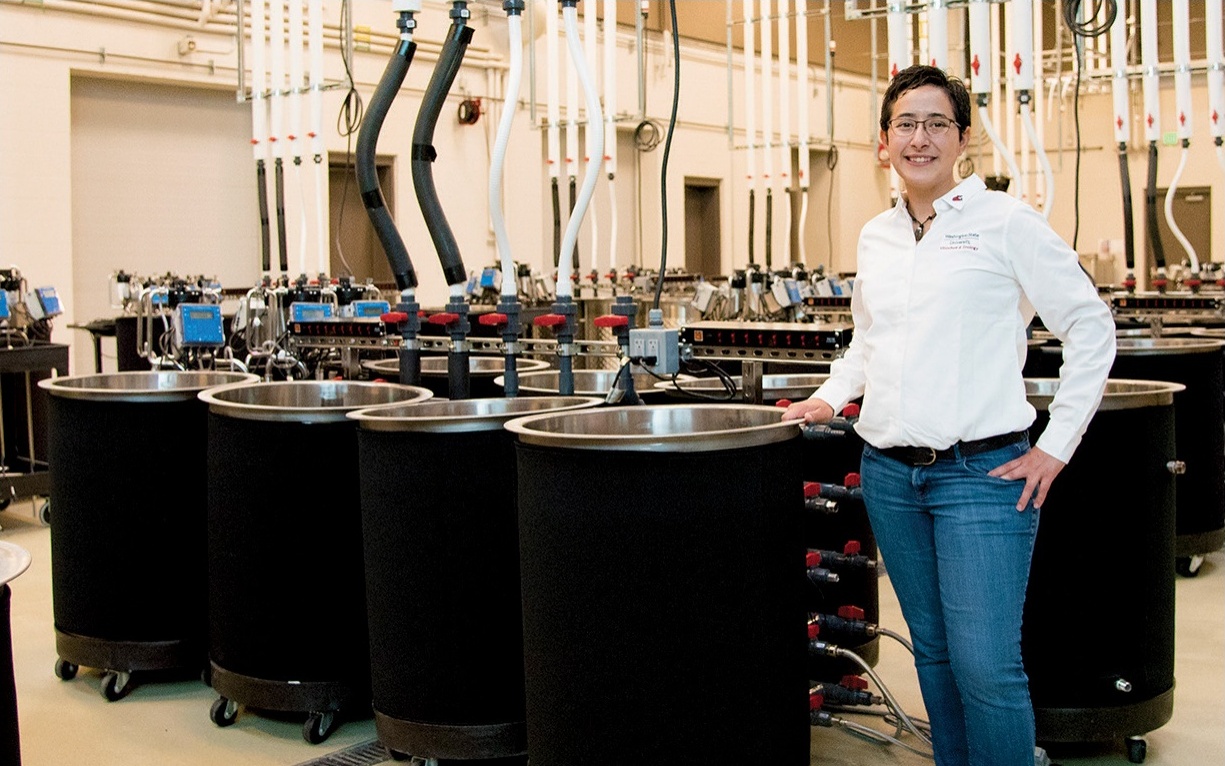
The Wine Spectator Scholarship Foundation awarded $1 million to the Washington State University Viticulture & Enology program, which funded the state-of-the-art fermentation room pictured above.
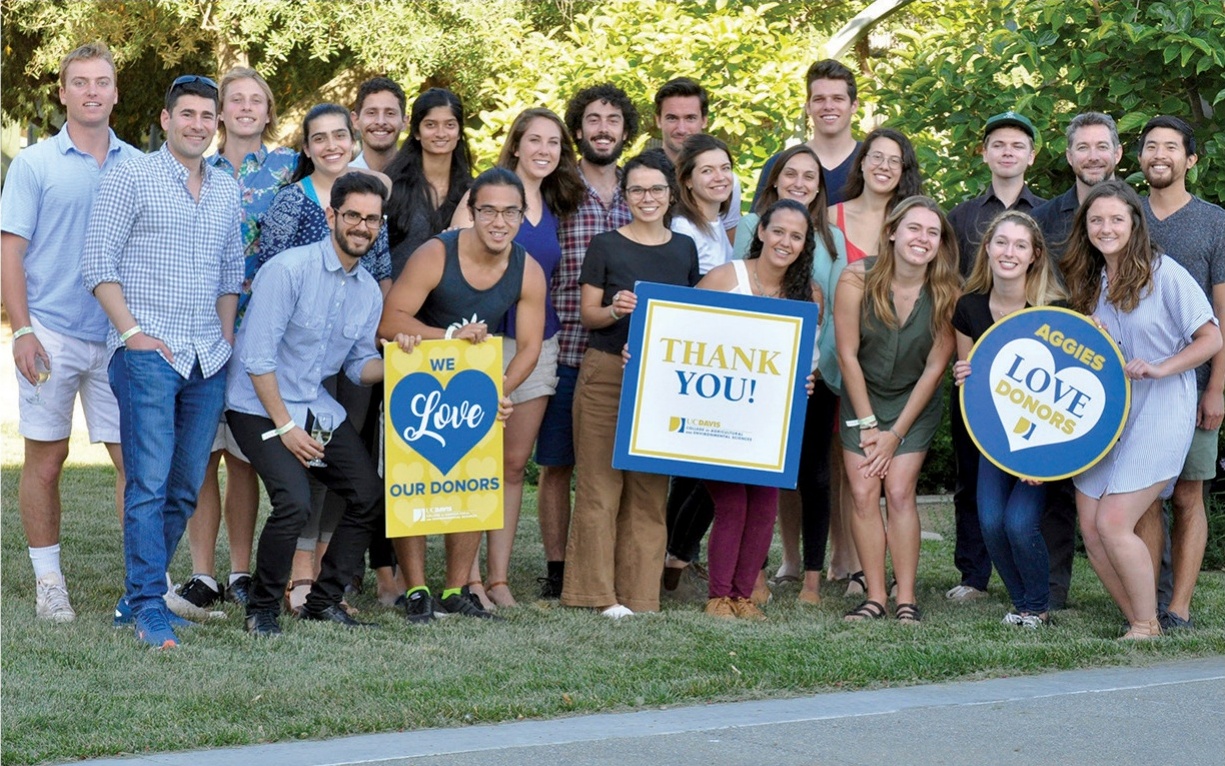
The University of California, Davis has received more than $3.6 million to fund scholarships and research grants. Some recent scholarship recipients are pictured above.

The Wine Spectator Scholarship Foundation donated $10 million last year to expand and update the teaching facilities at Napa Valley College. The complex (depicted above) will house a new sensory classroom and include an upgraded wine laboratory and wine sales training facility.
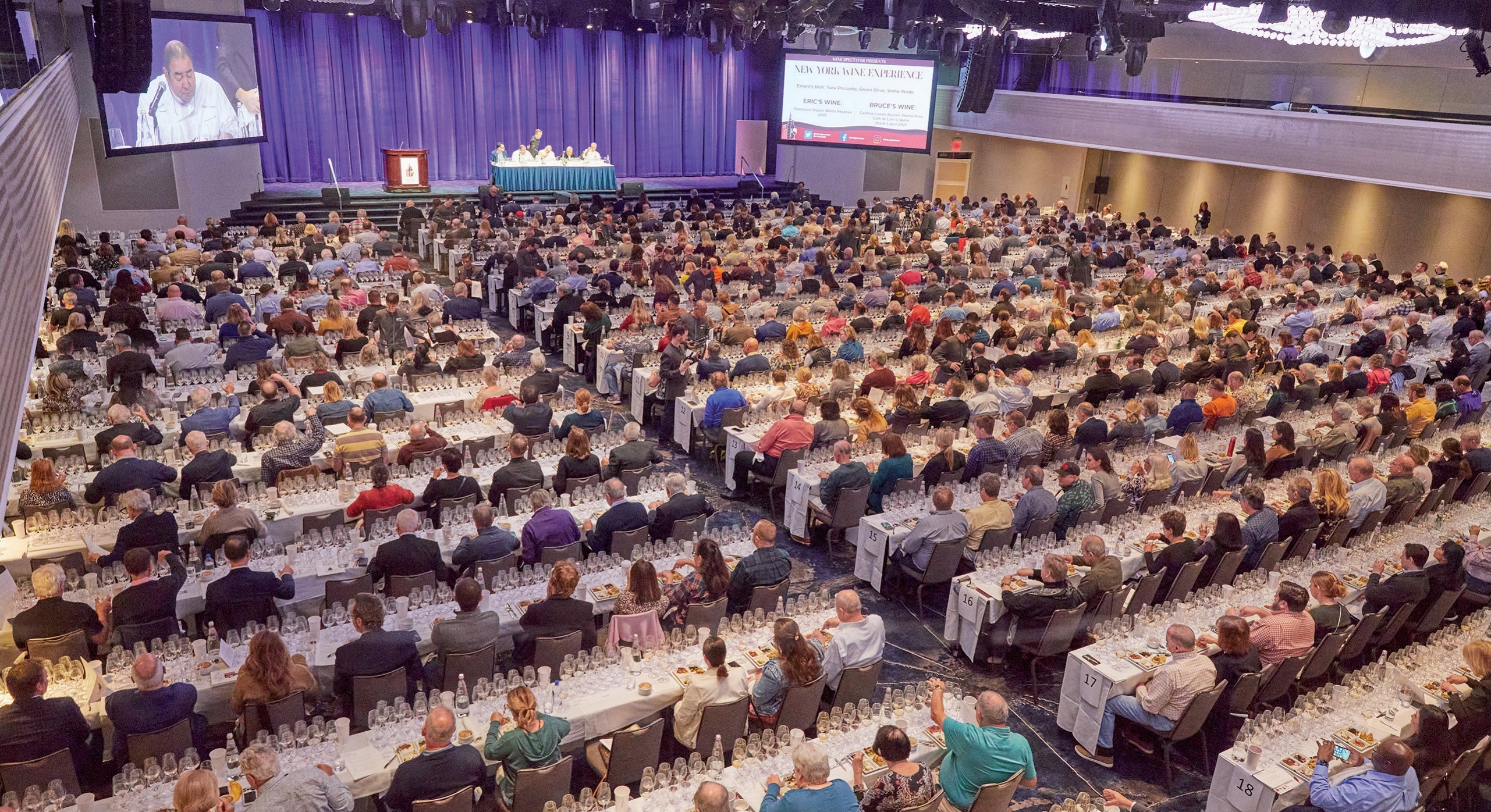
Proceeds from Wine Spectator’s annual Wine Experience help fund the Wine Spectator Scholarship Foundation. More than $30 million has been raised since the foundation’s inception.
Els Center for Excellence
S hanken was moved when professional golfer Ernie Els, who had just won the Honda Classic in March 2008, mentioned to a TV journalist that his 5-year-old son, Ben, had just been diagnosed with autism. Shanken knew Els, not only as a world-class golfer but as the owner of a winery in South Africa. Shanken offered to host a Pro-Am to raise money to help find a cure for autism. The Annual Els for Autism Pro-Am, hosted by Cigar Aficionado magazine, was started in 2009 and has since raised close to $15 million for the Els Center of Excellence, a school for nearly 300 autistic and special needs children in Jupiter, Fla. The school sits on a 26-acre campus and encompasses a lower school, an upper school and a main administration building. Currently, there are plans to begin construction on a 21,000-square-foot Adult Services Building for training students as they graduate and begin to look for employment.
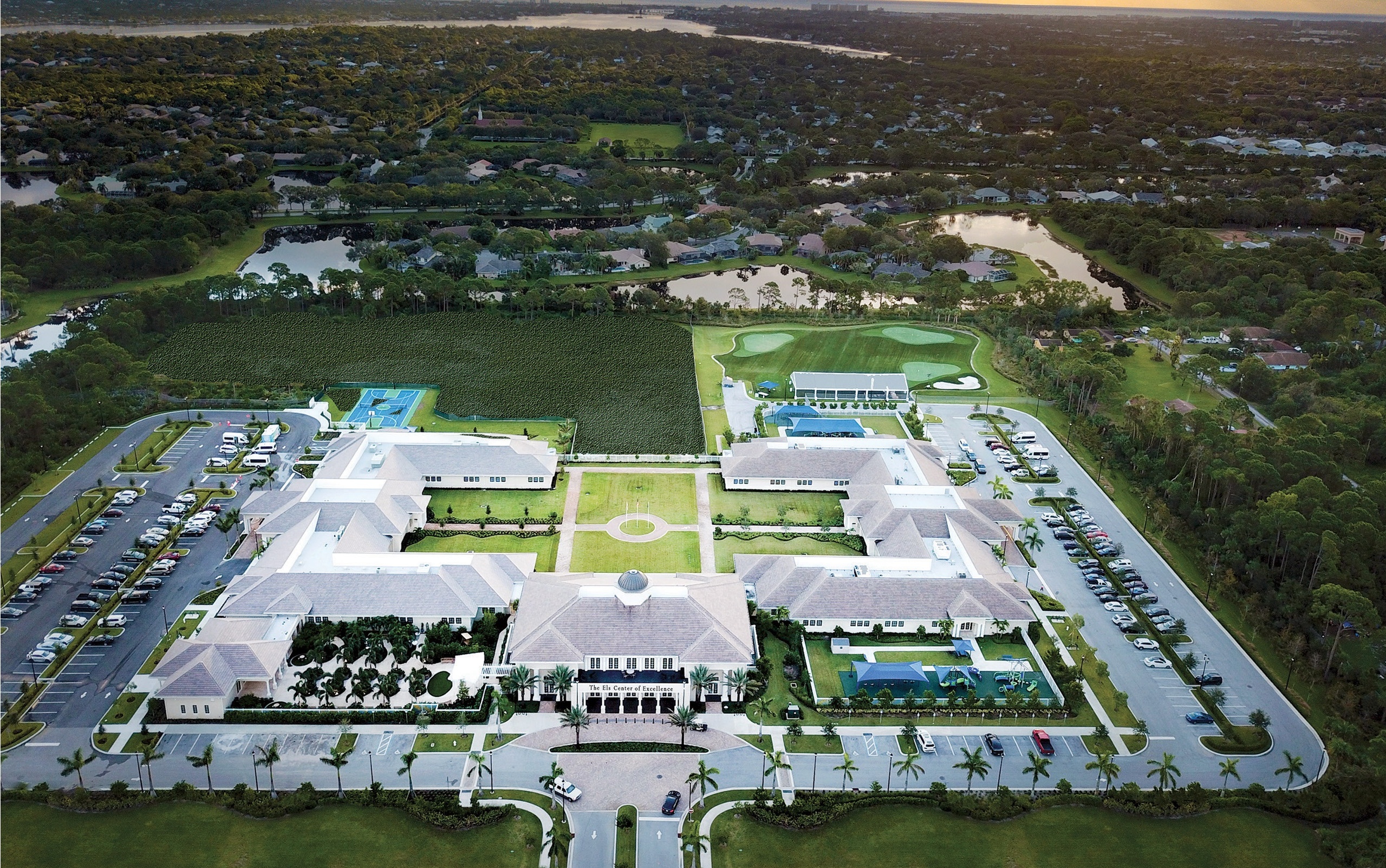
Cigar Aficionado has been supporting the Els Center for Excellence (campus pictured above) for more than 10 years through its annual Els for Autism Pro-Am golf event.

Golfer Rory McIlroy tees off at the Els for Autism Pro-Am in 2015. The golf event has raised close to $15 million.
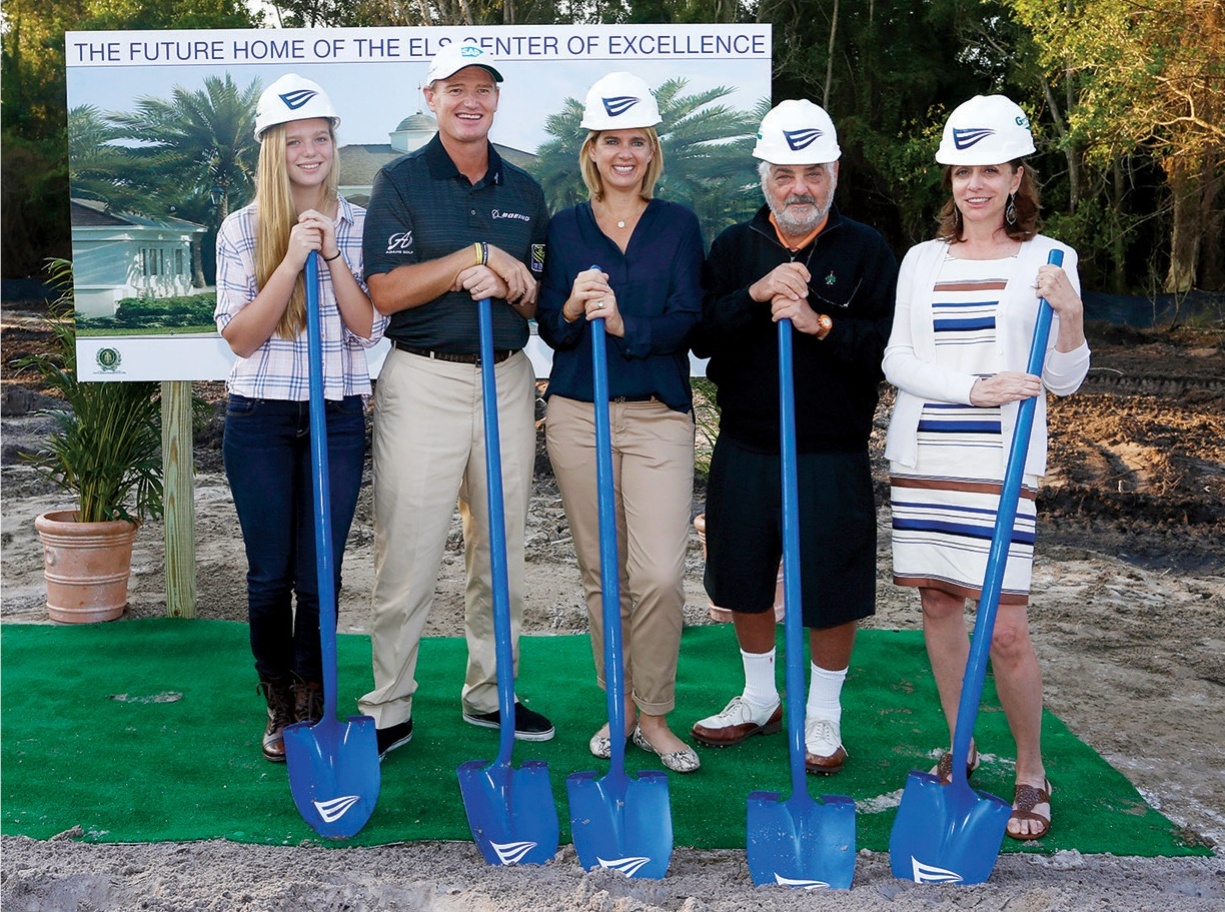
The groundbreaking for the Els Center of Excellence took place in 2014. Above from left: Samantha Els, Ernie Els and Liezl Els with Marvin R. Shanken and Hazel Shanken.
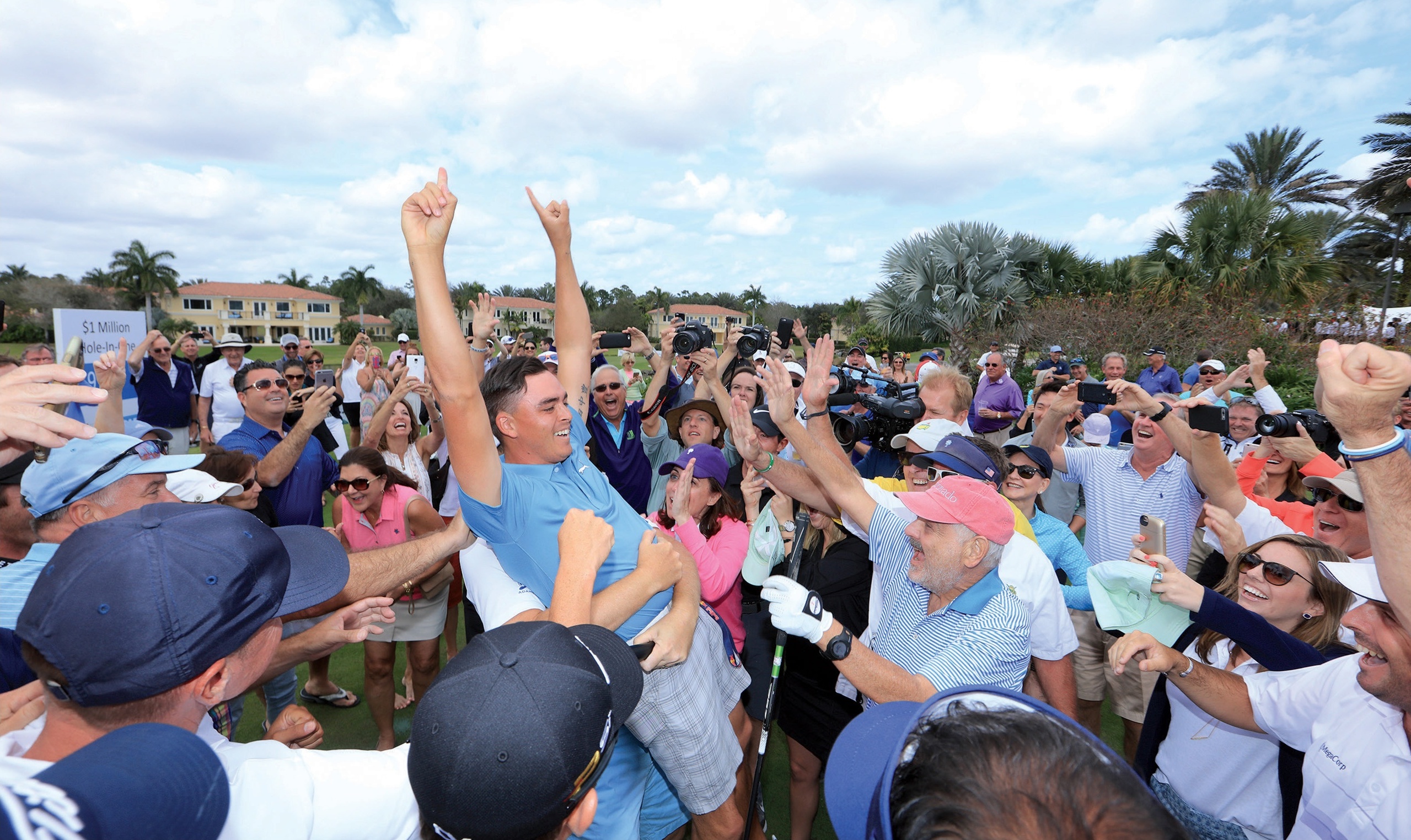
PGA golfer Rickie Fowler is held aloft by Ernie Els after getting a hole in one at the Pro-Am in 2016. His shot earned an extra $1 million for Els for Autism.
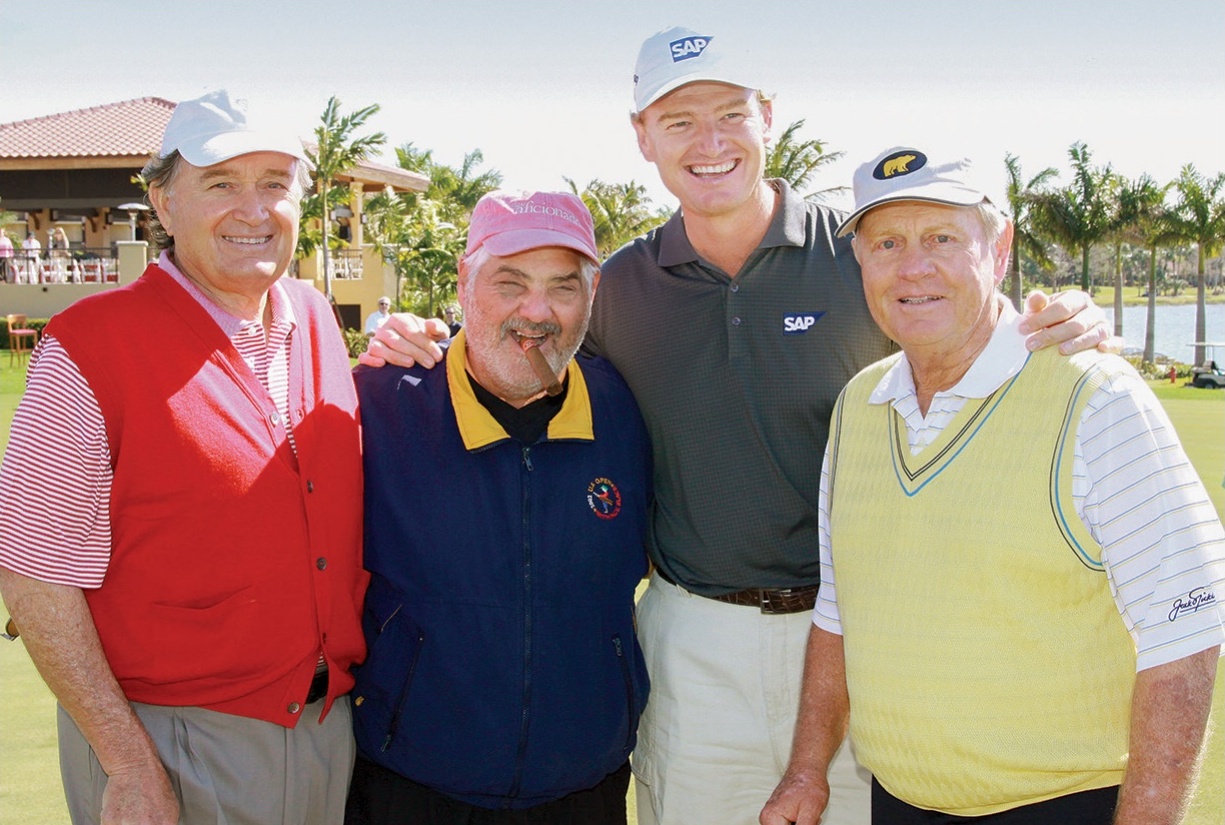
From left: Raymond Floyd, Marvin R. Shanken, Ernie Els and Jack Nicklaus at the Pro-Am in 2010.
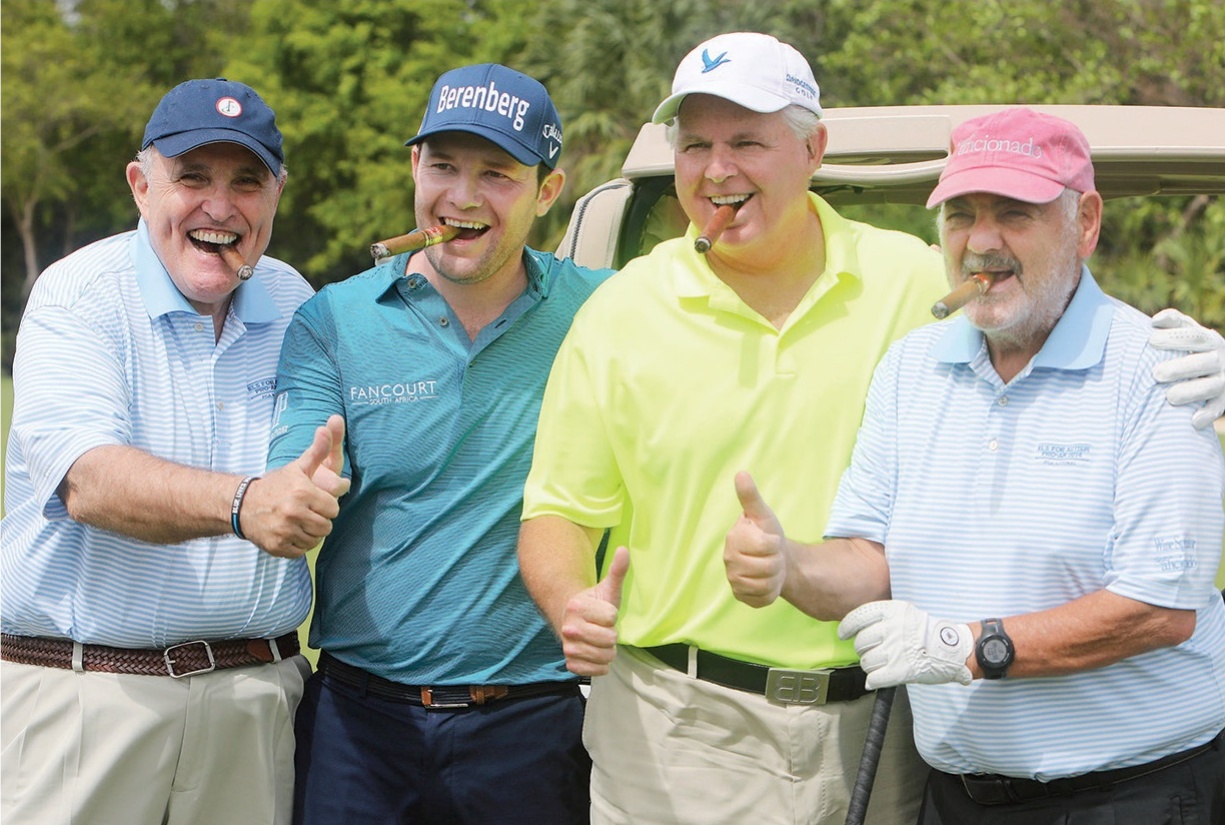
From left: Rudy Giuliani, Branden Grace, Rush Limbaugh and Marvin R. Shanken at the 2017 Pro-Am. Their team won the event.
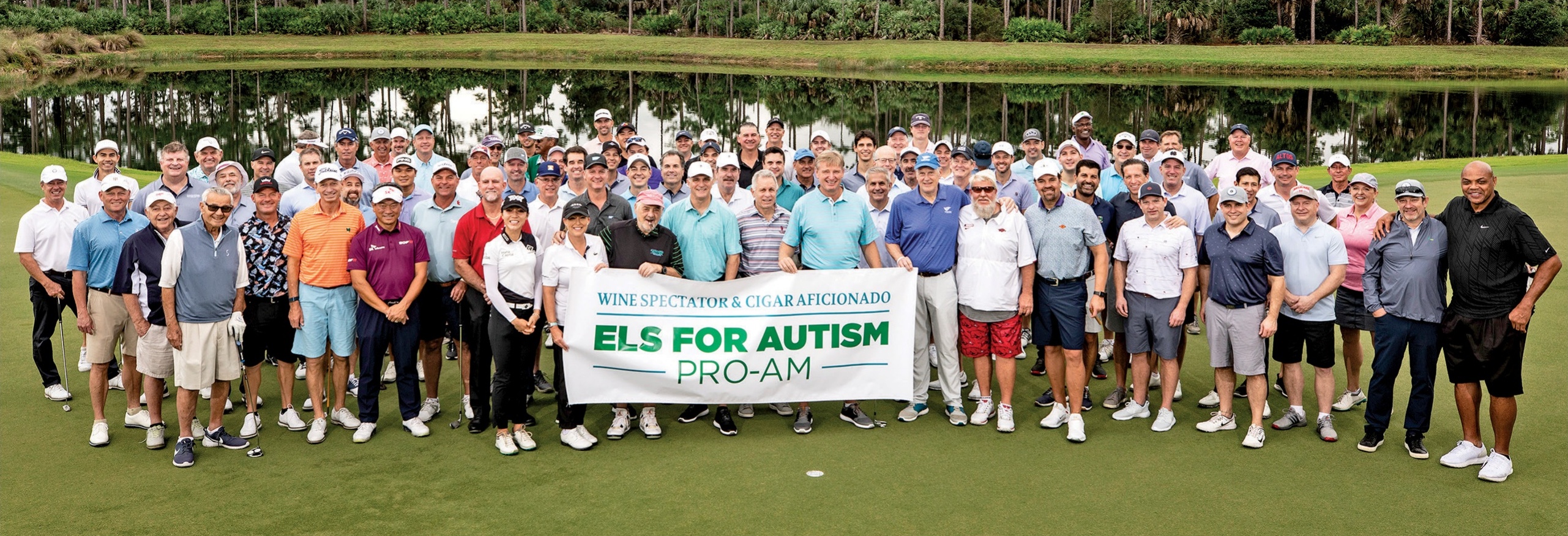
The Els for Autism Pro-Am always draws a great crowd of participants. Above: the 2021 group gathers.
Cigar Aficionado’s Night to Remember
S tarting in 1994 and continuing for the next 23 years, Cigar Aficionado’s Night to Remember was held in the elegant Pool Room of the now-defunct Four Seasons Restaurant. The event brought together luminaries from the worlds of sports and film, cigar makers, journalists and leaders from all walks of business to raise money for prostate cancer research. Rare vintage wines, luxury spirits, cigars and related accoutrements were auctioned off at this lively, black-tie event. More than $24 million was raised over the years to fund research that resulted in the advancement of prostate cancer treatment.
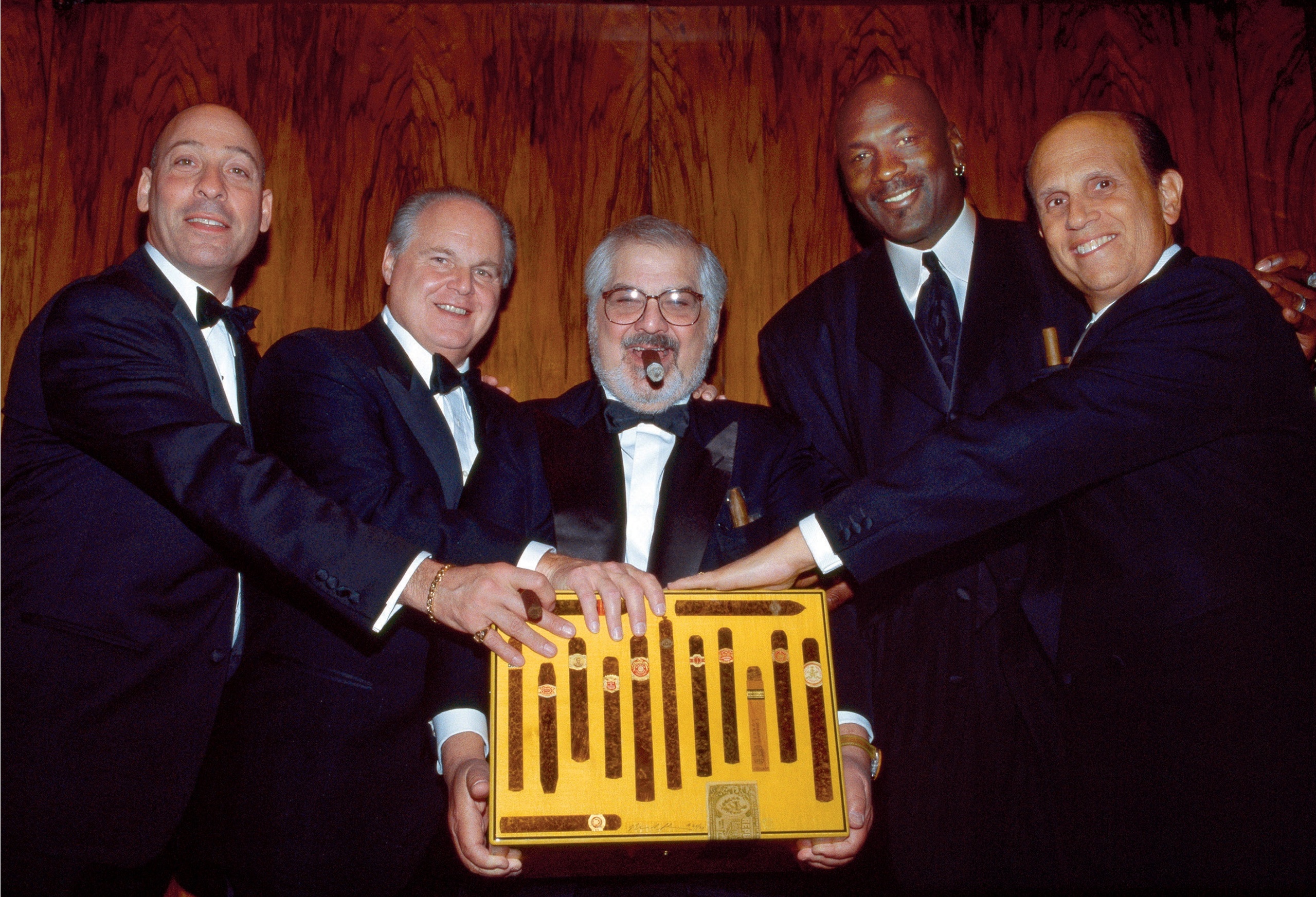
A bidding war broke out at the 2005 event, so Marvin R. Shanken made one lot three. The winners surrounding Marvin’s Mystery Box: (from left) Lee Einsidler (bidding for Sidney Frank), Rush Limbaugh, Shanken and Michael Jordan. Michael Milken (right) matched the bid, and the lot raised $1.8 million.
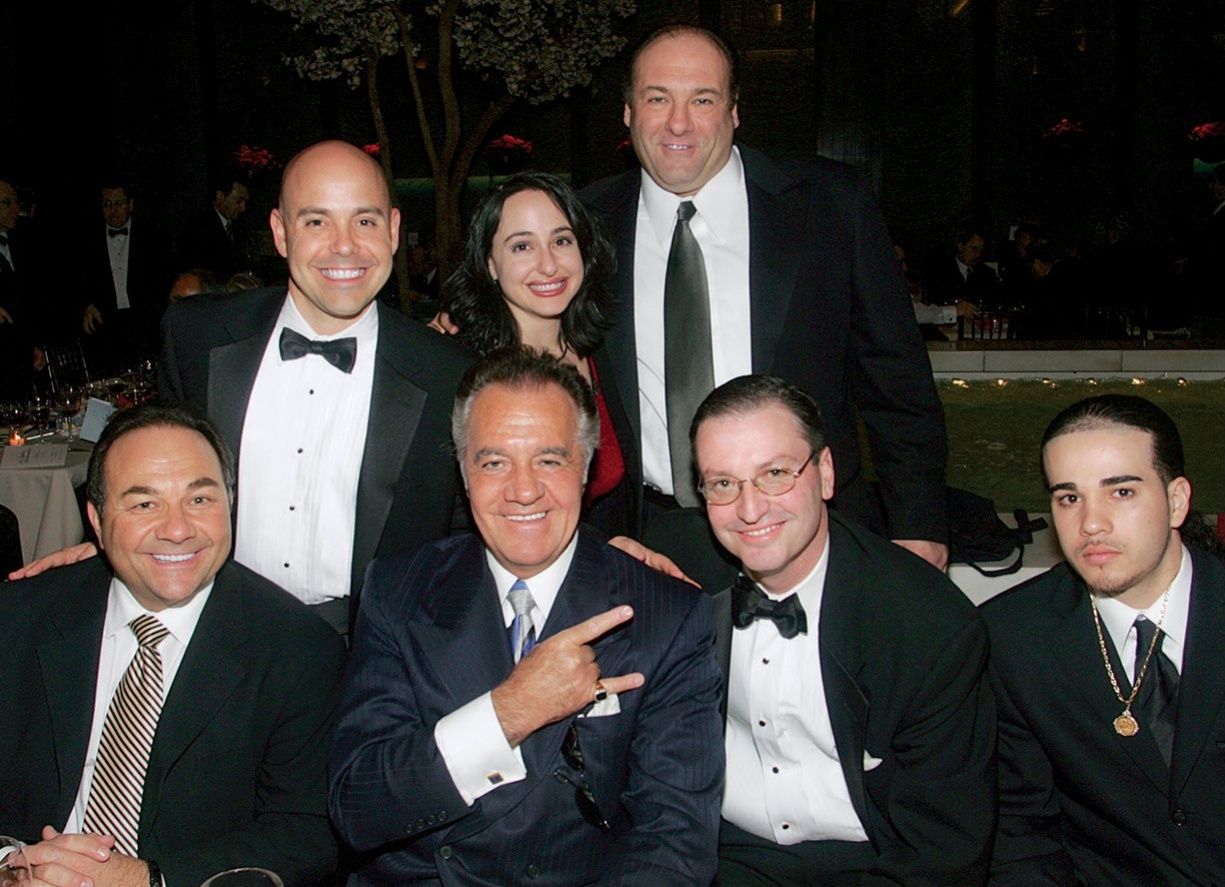
James Gandolfini (standing, rear right) and Tony Sirico (seated, second from left) of The Sopranos stole the show in 2006.
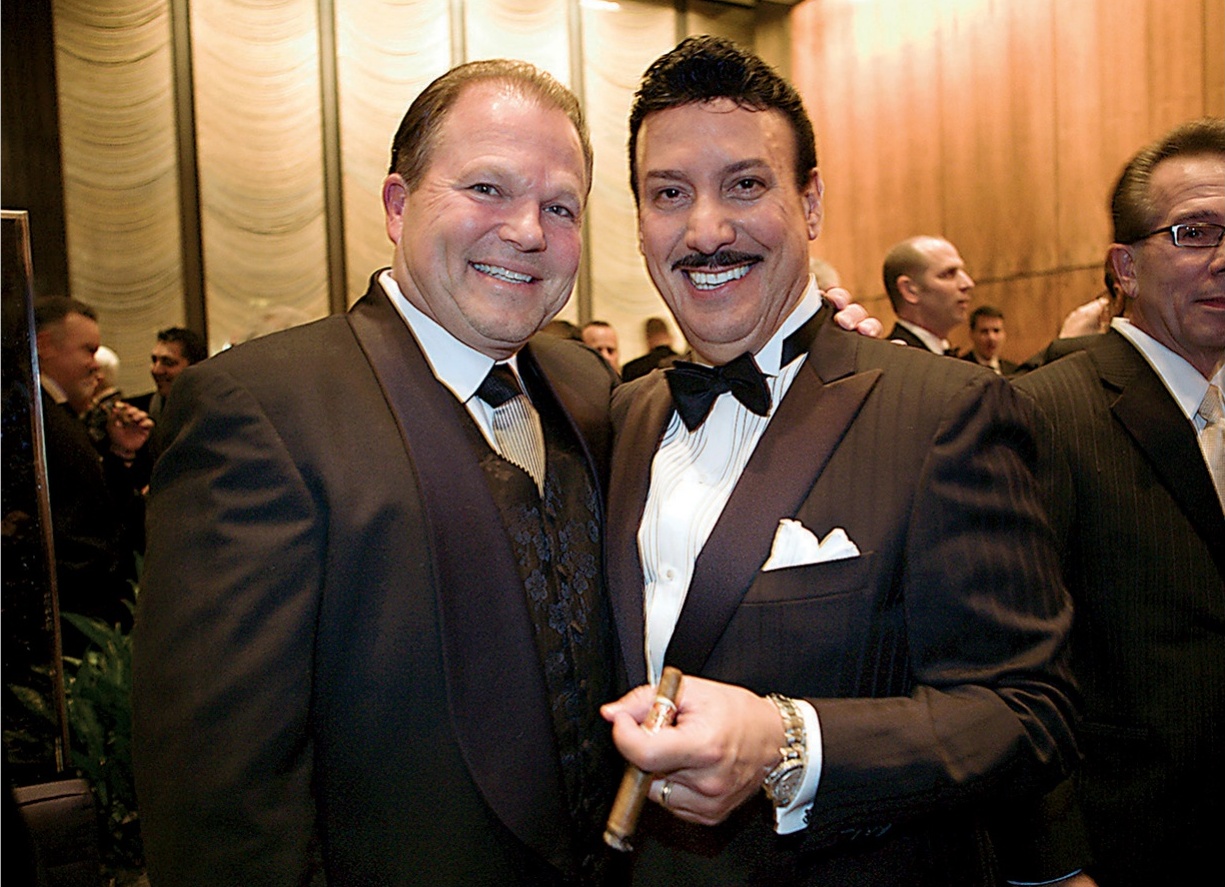
Caymus wine star Chuck Wagner (left) shares a smoky moment with Arturo Fuente cigar star Carlos Fuente Jr. at the Four Seasons in 2008.

A gathering of stars at the Night to Remember in 1997. From left: Ernesto Perez-Carrillo, Carlos Fuente Sr., Linda Evangelista, Tom Selleck, Marvin R. Shanken, Rush Limbaugh, Hazel Shanken, Janet Jones, Michael Nouri, Molly Mollen, Wayne Gretzky and Joe Pantoliano.
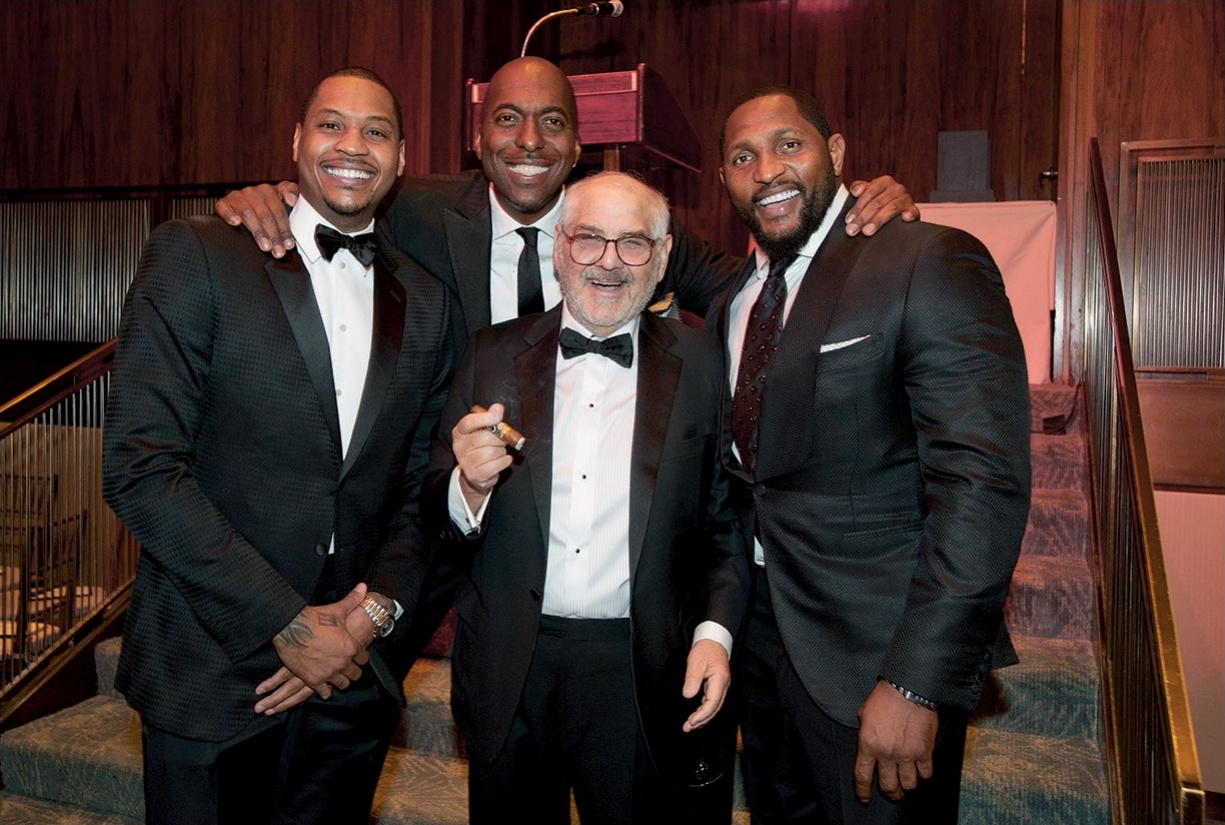
From left: Carmelo Anthony, John Salley, Marvin R. Shanken and Ray Lewis at the 2016 event.
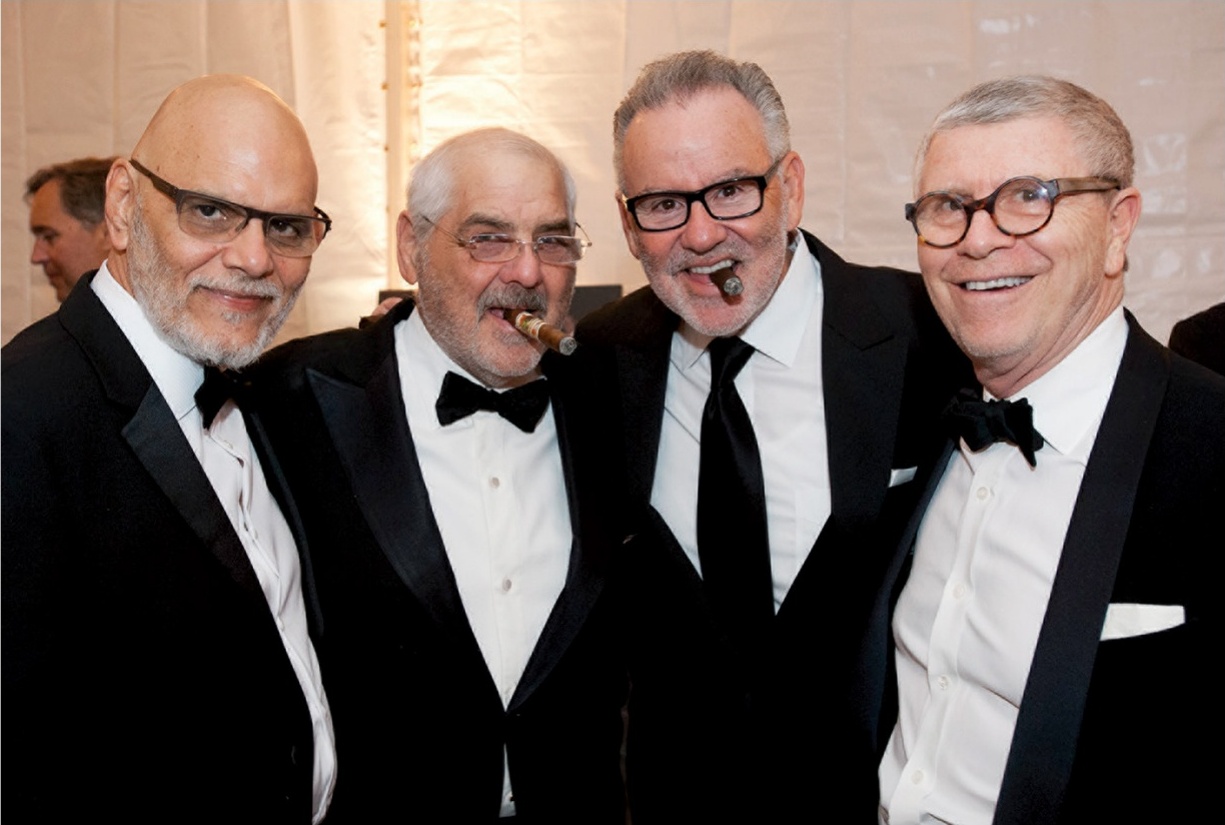
From left: Ernesto Perez-Carrillo, Marvin R. Shanken, Wayne Suarez and Ed Rabin in 2017.
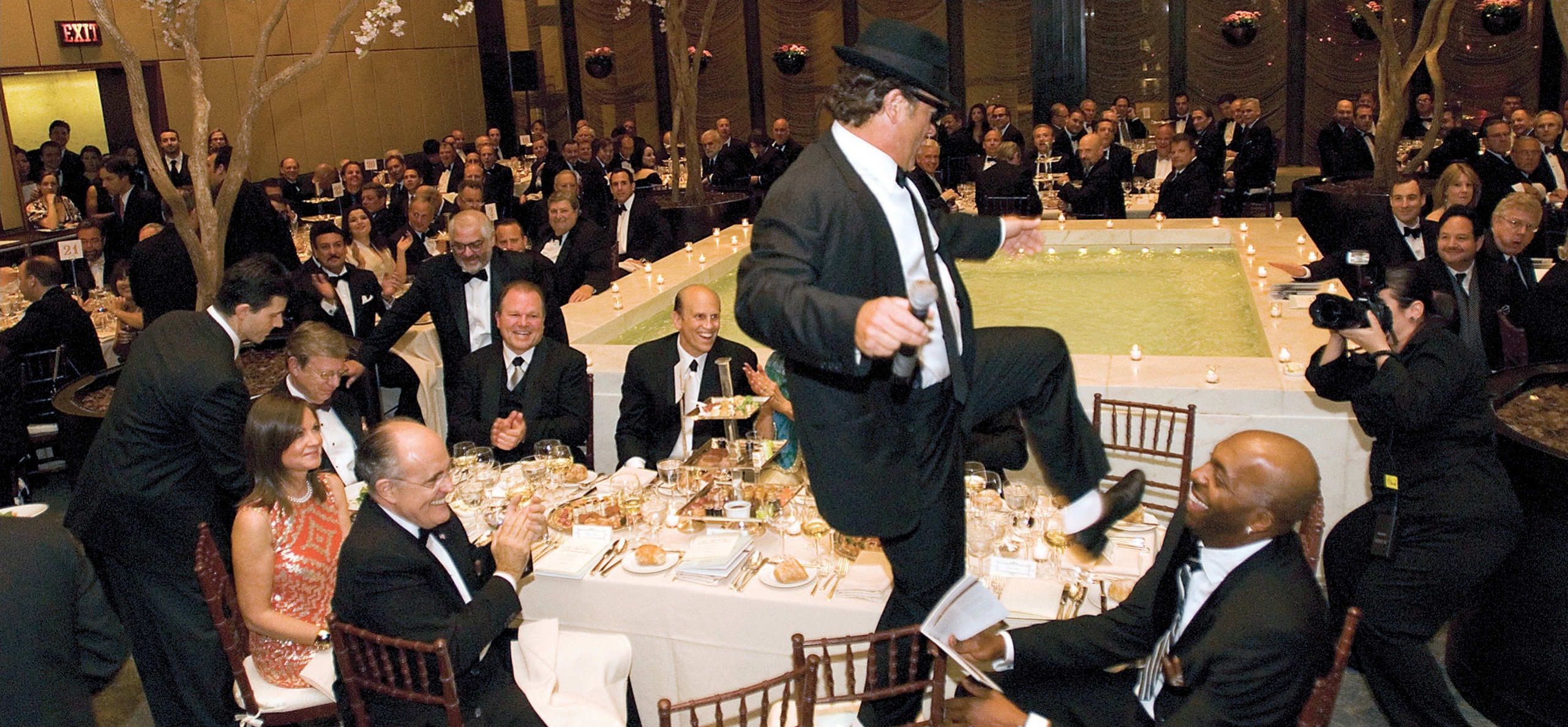
When the Blues Brothers came to town in 2008, Jim Belushi danced across the tables at the Four Seasons in a moment no one would ever forget.
DAVID CANNON/GETTY IMAGES
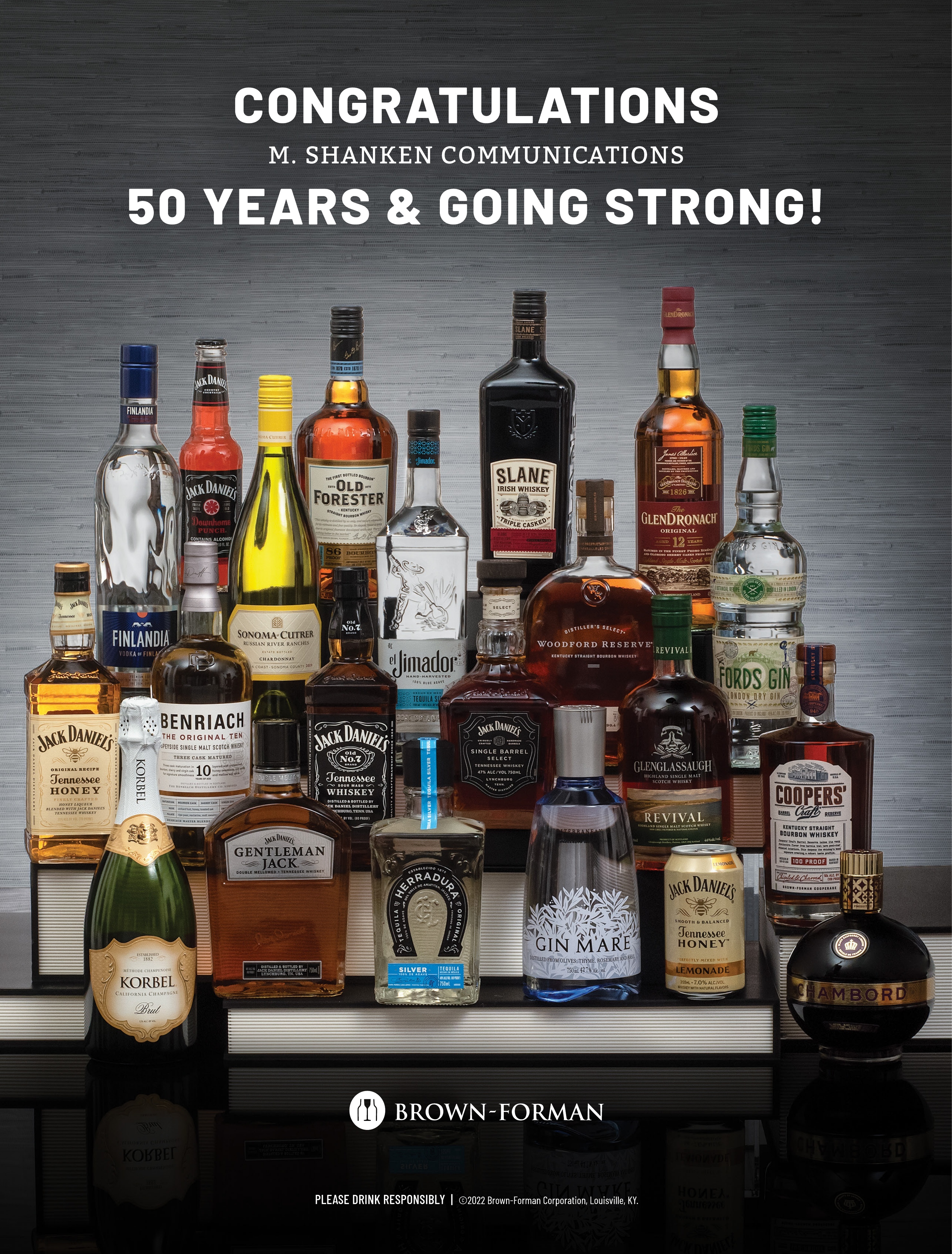
THE DRINKS INDUSTRY 1972-2022
A 50-Year History of the U.S. Drinks Market
Companies have come and gone, but brands continue to be the lifeblood of the industry
By Michael Moaba, David Fleming, Dan Marsteller and Juan Banaag
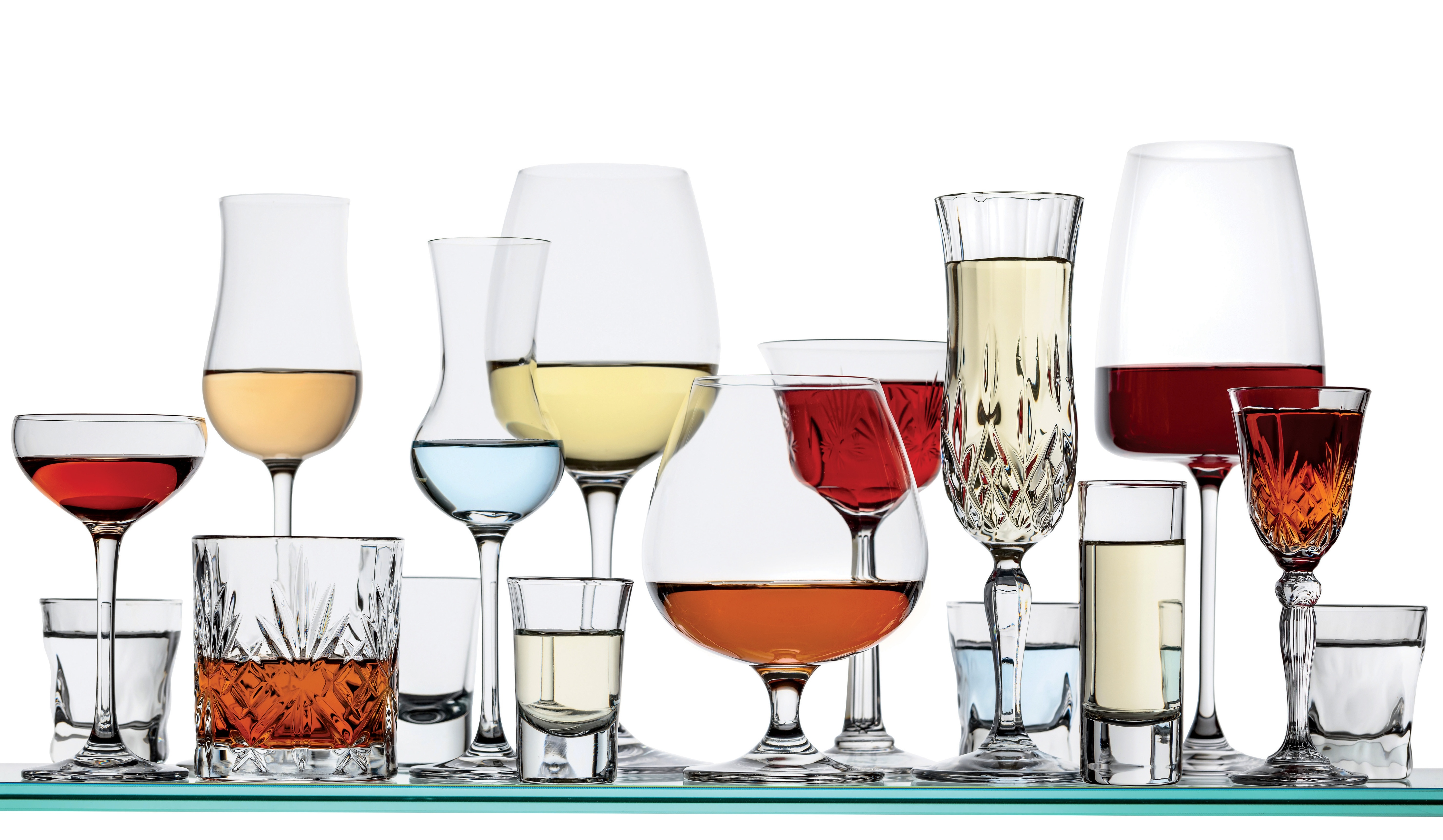
F ifty years ago, President Richard Nixon defeated Democratic rival George McGovern for a second term in the November presidential election. Earlier in 1972, Washington, D.C., police had arrested five men who broke into the Democratic National Committee headquarters at the Watergate office complex. The film version of Mario Puzo’s The Godfather was released and would later win the Academy Award for Best Picture. The Dallas Cowboys won Super Bowl VI, 24 to 3 over the Miami Dolphins, and Gloria Steinem launched Ms. magazine. On Dec. 20, 29-year-old Marvin R. Shanken bought Impact Newsletter for $5,000, which he borrowed from his sister. With the purchase, he was handed an index card box containing 200 names and addresses of subscribers.
THE DRINKS INDUSTRY 1972-2022
The 1970s
Early Days, Dramatic Differences
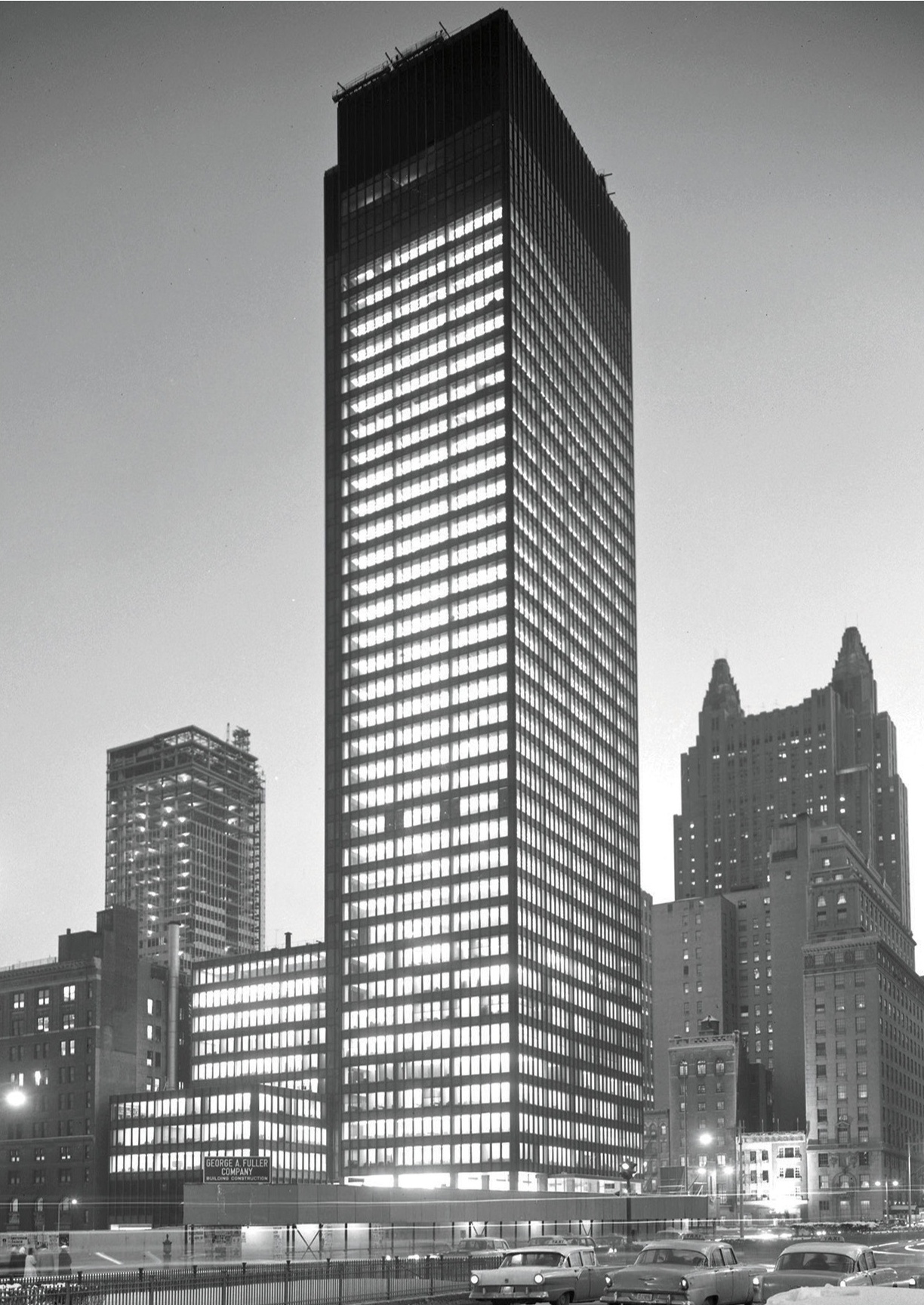
The Seagram Building, designed by Ludwig Mies van der Rohe, opened in 1958 and quickly became a landmark renowned for its modernist aesthetic.
A lmost everything about the beverage industry was different in the early 1970s. In response to the booming vodka market, the Bourbon whiskey industry introduced a new category of “light” whiskeys, promoting their lack of flavor as an attribute. Bob Trinchero of Sutter Home Winery created the first White Zinfandel wine. Standing tall over Park Avenue between 52nd and 53rd Streets in Manhattan, the landmark Seagram Building headquartered the most powerful company in the wine and spirits business at the time. In dollar terms, Seagram was nearly twice as big as its nearest rival, Heublein Beverage Group. Seagram and Heublein are just two of the leading spirits marketers of the ’70s that are no longer with us today. Others include Schenley Industries, National Distillers, Hiram Walker USA, Somerset Importers, and Glenmore Distilleries. Heublein was also a big player in wine—the category’s second-largest marketer—as was National Distillers, which ranked third. Also near the top of the list were Canandaigua Wine Co., Guild Wineries, Taylor Wine, Seagram’s Paul Masson, Monarch Wine, Mogen David and Franzia Bros. At the top was E. & J. Gallo.
With the notable exception of Gallo, even the companies whose names are still among today’s industry leaders have altered their identities in ways both large and small. Bacardi Imports, the marketer that later came to be called Bacardi USA, was essentially a one-brand player at the time, as megadeals for brands like Martini, Dewar’s, Bombay, and Grey Goose were still years away. Meanwhile, with only a limited presence outside its home market, there was no need for Brown-Forman Distillers to take on the name it eventually adopted in the mid 1990s: Brown-Forman Beverages Worldwide.
Like Brown-Forman’s Jack Daniel’s, James B. Beam Distilling Co.’s flagship brand wasn’t doing much business outside the U.S. in the 1970s. Beam would eventually go through several incarnations over the years before taking on a wholly new identity in 2014, when it was acquired by Japan’s Suntory Ltd. to create Beam Suntory.
Seagram’s 7 Crown was the most popular spirits brand in the country in the 1970s, with the 7&7 arguably the most popular cocktail order in bars across the U.S. Seagram, then headed by founder Samuel Bronfman’s son Edgar M. Bronfman, also owned top-selling brands such as Seagram’s V.O. and Seagram’s Gin, and was a wine powerhouse as well. Seagram’s 7 Crown was one of just six whiskies that ranked among the U.S. market’s top 10 spirits brands then, at a time when brown spirits were dominant, but white spirits like vodka were growing at a rapid pace. Other leading whisk(e)y brands included Hiram Walker’s Canadian Club; Paddington Corp.’s J&B Rare; and National Distillers’ Windsor Supreme.
Today’s two biggest names in whisk(e)y—Jack Daniel’s and Crown Royal—weren’t among the market’s top sellers in the 1970s. Even combined, the two brands’ sales wouldn’t have been big enough to earn a spot in the top 10 in the ’70s. But if Jack Daniel’s and Crown Royal weren’t household names back then, Jameson—and the entire Irish whiskey category—wasn’t even a blip on the radar screen.
Meanwhile, a stone’s throw from the Seagram Building, Marvin R. Shanken was running his nascent company, M. Shanken Communications, out of a one-bedroom, third-floor-walkup apartment at 305 East 53rd St. Shanken recognized the need for a new kind of independent, business-to-business journalism for the alcoholic beverage industry. Taking over the reins as Editor & Publisher of Impact, his reporting was brash, honest and data-driven.
An example of Impact “keeping it real” appeared in the May 1, 1973, issue, when a story ran that called out questionable reporting of a California wine tasting. The newsletter stated: “Impact was intrigued by the following press release: Weibel Champagne Vineyard’s 1968 Weibel Pinot Noir was ‘judged to be the most outstanding’ of a selection of premium California red wines tasted at a recent meeting of the Wine and Food Society of New York. Several members of the Impact staff were present at the occasion, and we can authoritatively say that this was not a judging, but merely a tasting of California wines.”
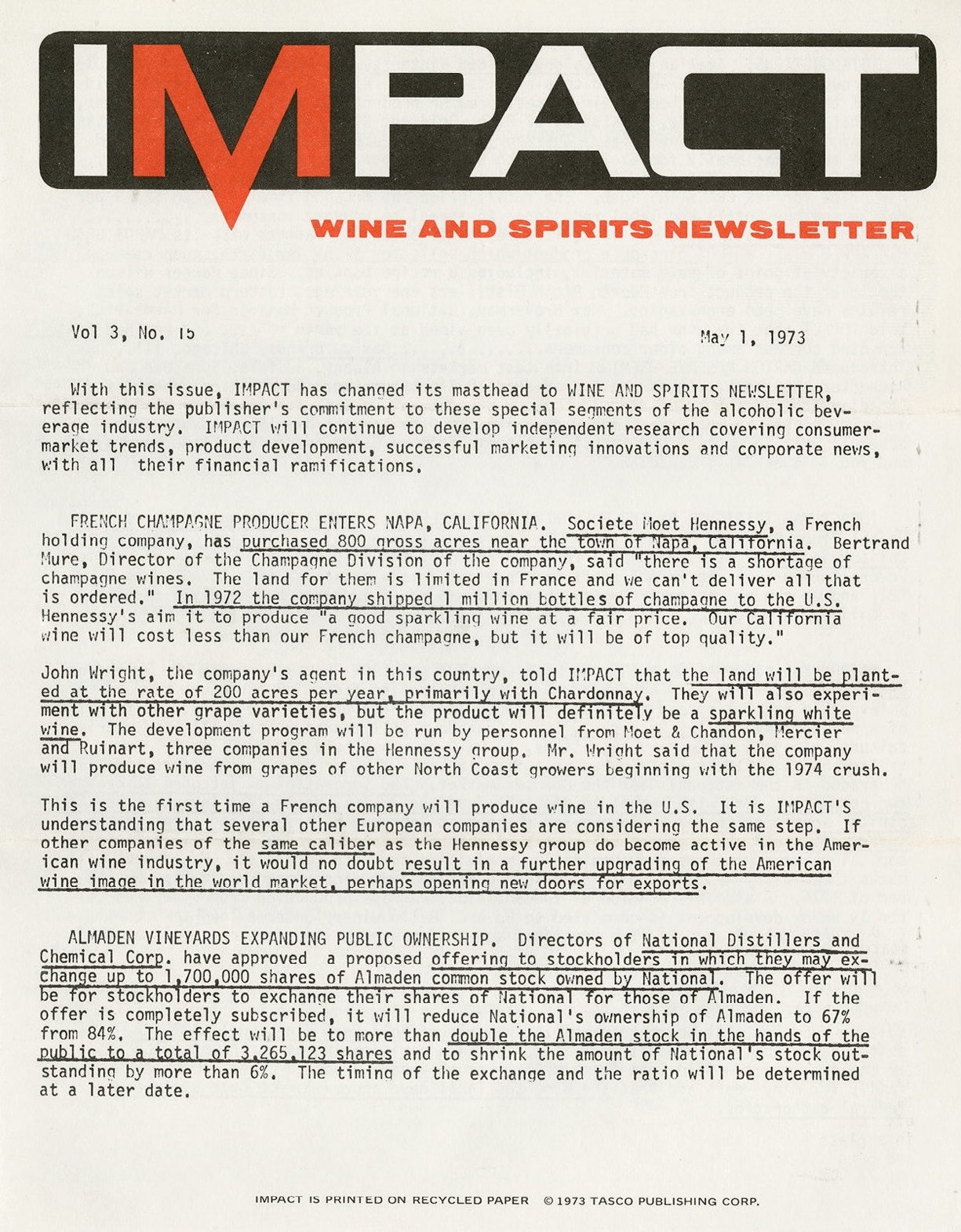
A 1973 Impact cover.
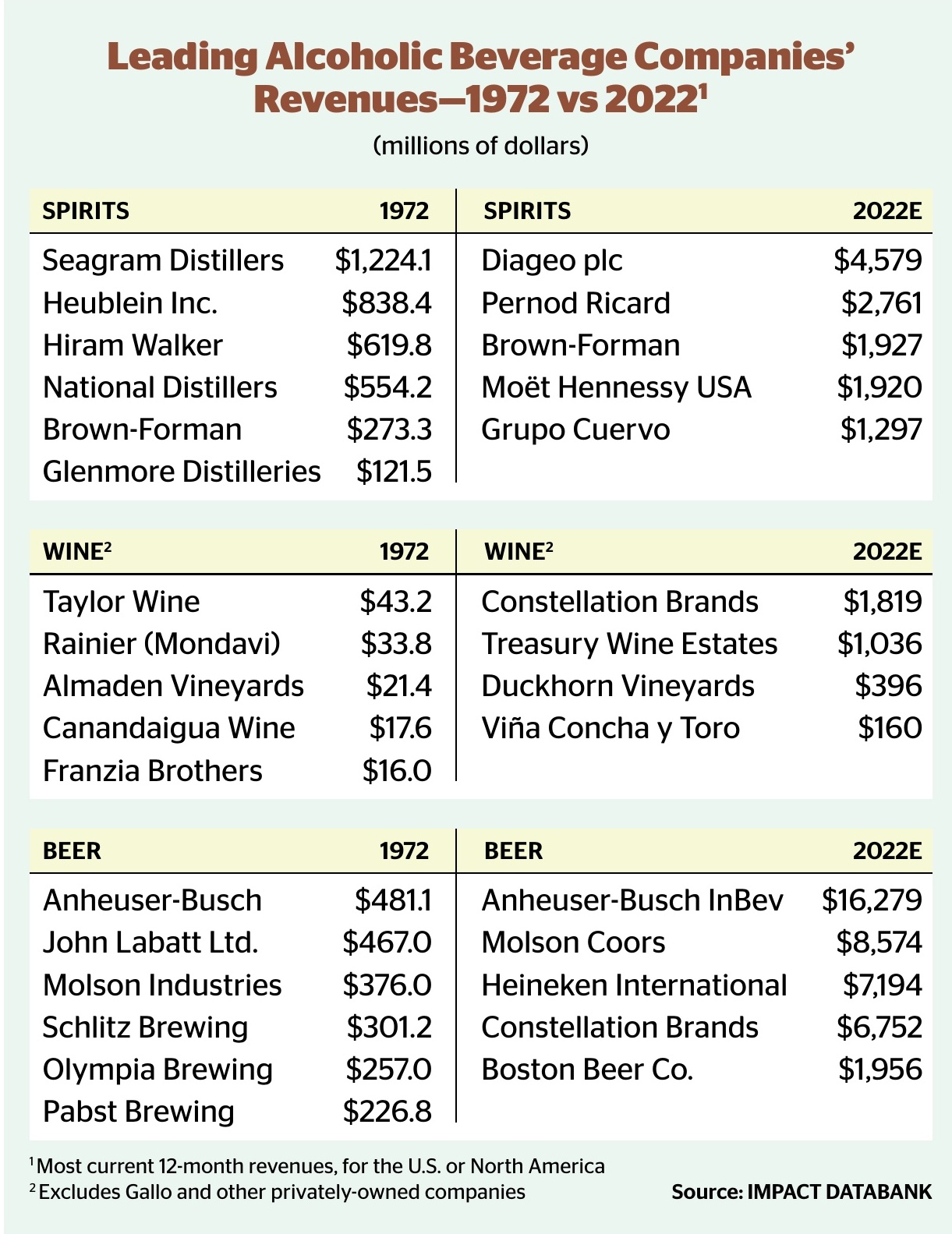
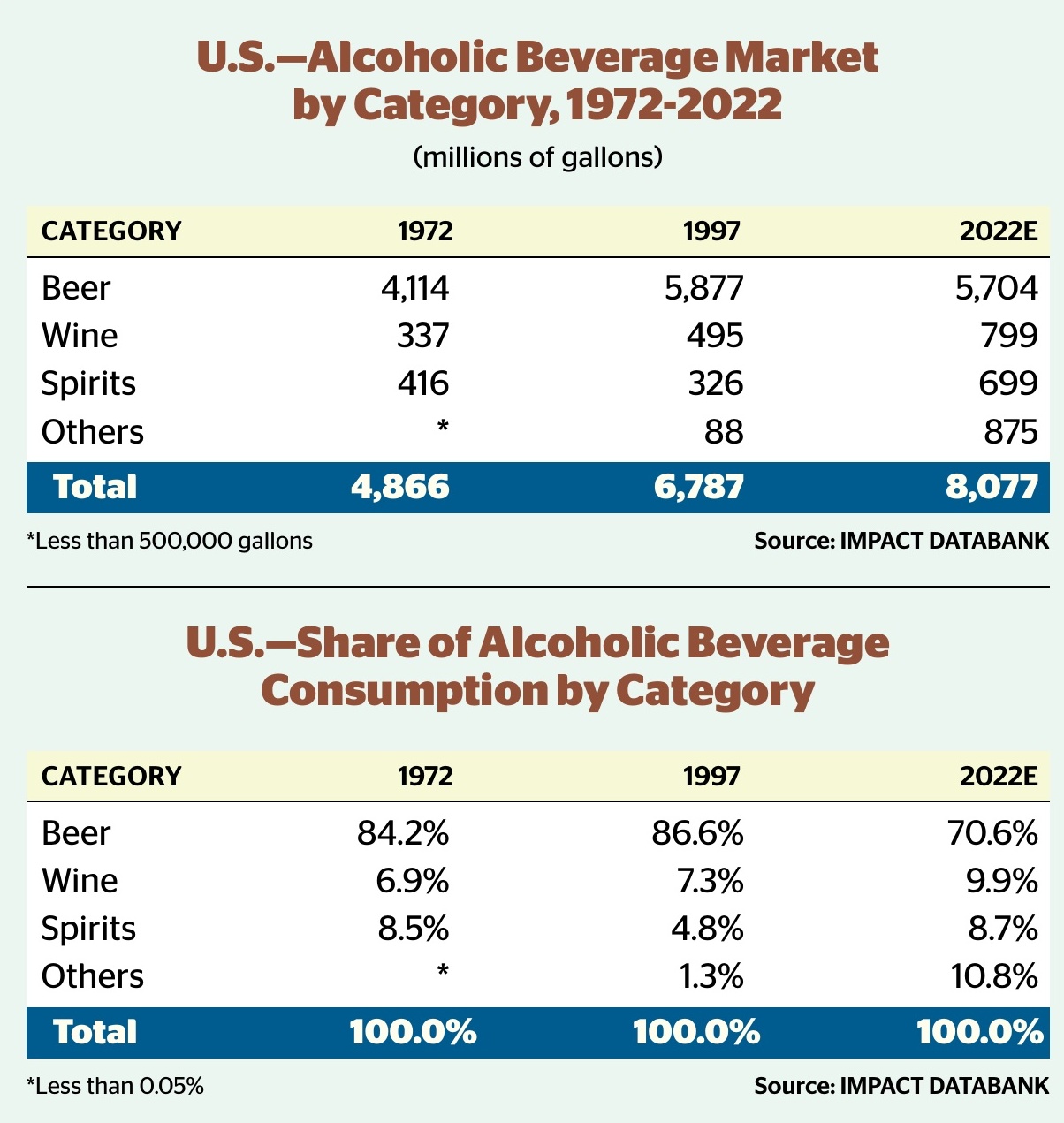
In 1973, Pepsico announced a 10-year agreement with the USSR stipulating that Pepsi-Cola concentrate would be shipped to the Soviet Union and Stolichnaya vodka would be shipped to the U.S. and distributed by its Monsieur Henri subsidiary. That same year, Château Mouton-Rothschild was elevated to a first-growth classification, the first revision made by the French government since the 1855 Classification of Bordeaux wine. Later that year, Impact called E. & J. Gallo Winery “the General Motors of the American wine market,” as it held an impressive 38.5% share of the U.S. wine market.
The first paid advertisement to appear in Impact was a fractional ad from Money magazine in the Feb. 1, 1975, issue. Two months later, Impact published its first ever “American Wine Market Review & Forecast.”
A year later, 1976 saw Coca-Cola dip its toe into the wine market when it purchased New York’s Taylor Wine Co., then the sixth-largest winery in the U.S., for $93 million. The companies merged in 1977 and Coca-Cola incorporated Taylor into a new subsidiary called the Wine Spectrum. Using the Taylor name to market California wine, the Taylor California Cellars brand was launched in 1978, when the company would also acquire Sterling Vineyards and the Monterey Vineyard.
On May 12, 1977, the first Impact Marketing Seminar was held, at New York’s Park Lane Hotel. “Impact ’77” brought together industry executives and experts in fields like advertising and government to explore the theme of “Concepts and Strategies for Tomorrow’s Markets.” Featured speakers at the event, which was hosted by Marvin R. Shanken, included Terrence Clancy of Somerset Wine Co., Robert Kinsey of McKesson Wine & Spirits and ad man Jerry Della Femina, among others. The event’s keynote luncheon speaker was Stephen Higgins, assistant director of enforcement at the Bureau of Alcohol, Tobacco and Firearms (BATF). Admission was $225 a person.
As the first Impact Seminar explored the coming changes in the drinks market, dramatic shifts were already beginning to occur. Four years after its introduction, Miller Lite was climbing the U.S. beer charts, precipitating a light-beer boom that would send the market’s full-calorie brands, such as Budweiser, Miller High Life, Pabst Blue Ribbon, Schlitz and Coors Original, spiraling downward. In wine, Italian brand Riunite had kicked-off a surge that would later propel it well past the 10 million case threshold—and catapult imported wine sales to 100% growth over the next seven years, while the domestic wine category barely budged. Whisk(e)y stood far above all other spirits categories but was starting to slip, as consumers increasingly turned to white spirits and wine. Vodka was on the rise and the Heublein-owned Smirnoff brand had become one of the market’s top-selling spirits.
In the middle tier, Southern Wine & Spirits, which had launched in 1968, was already an industry leader. But in those days, Miami-based Southern operated in just three states: Florida, California and Nevada. That wouldn’t change until 1992, when the company entered Arizona.
In 1979, Marvin R. Shanken expanded his company’s portfolio when he purchased a small California wine publication called The Wine Spectator. Two years later, he launched Market Watch magazine.

Marvin R. Shanken at the Impact Seminar, 1978.
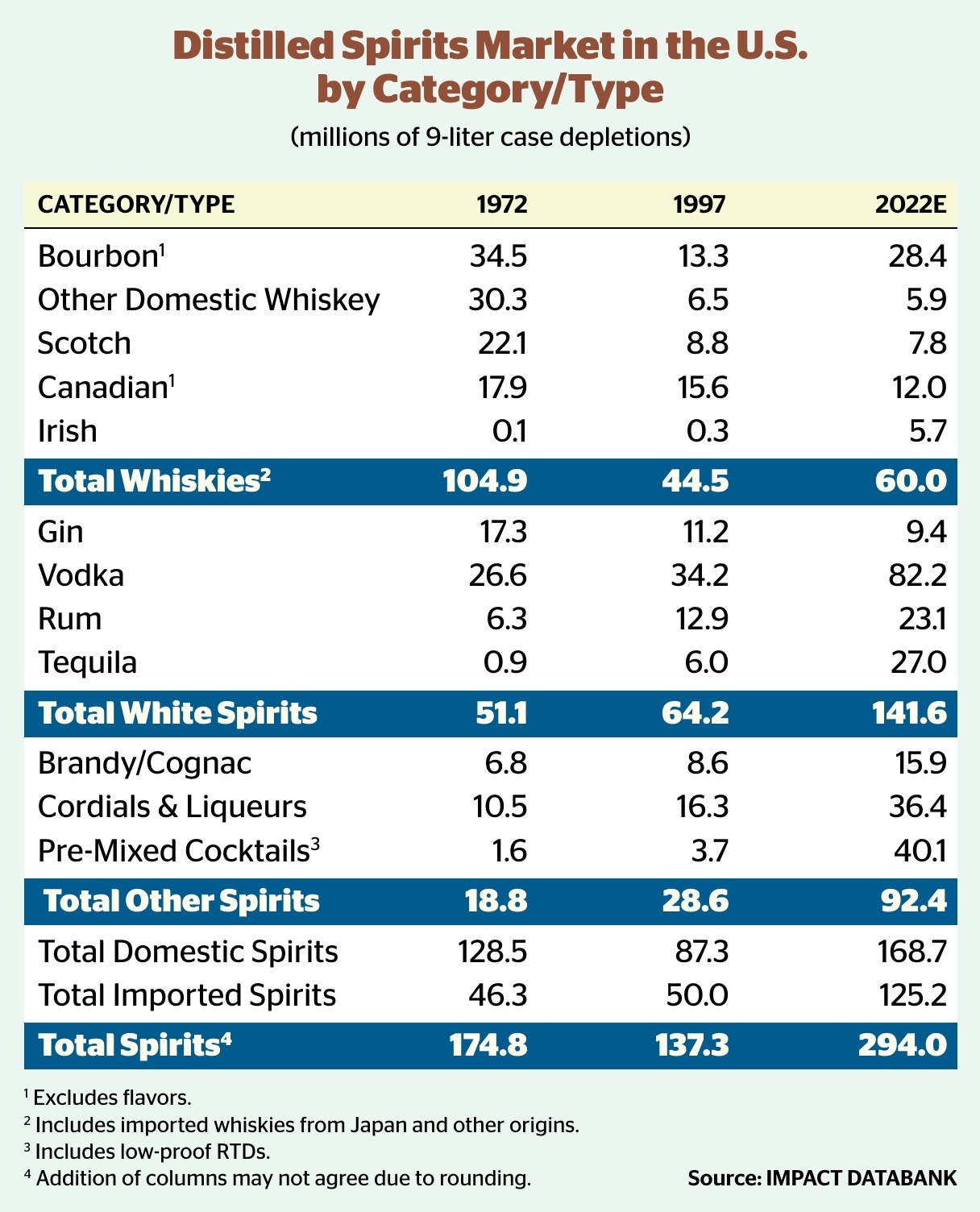
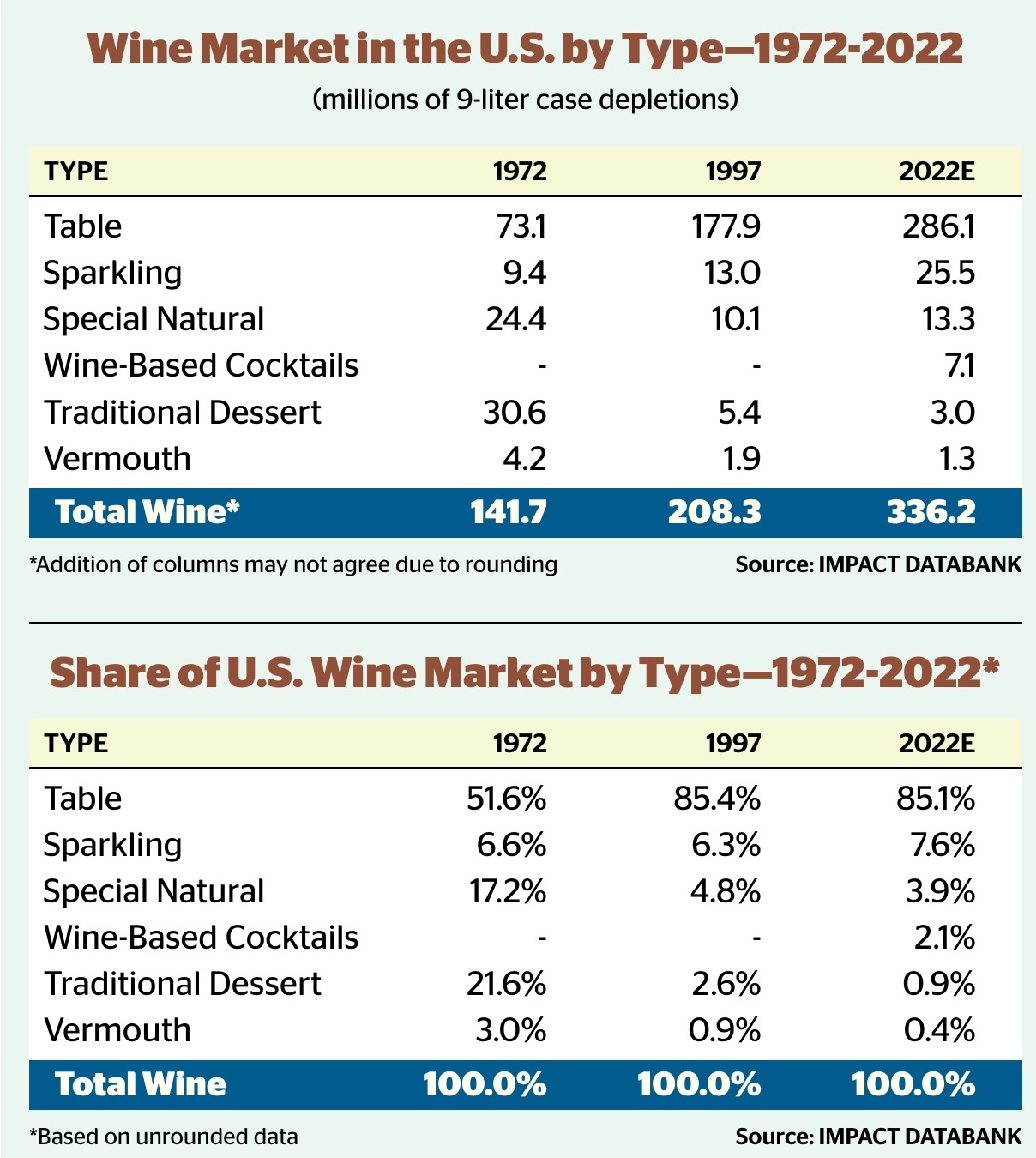
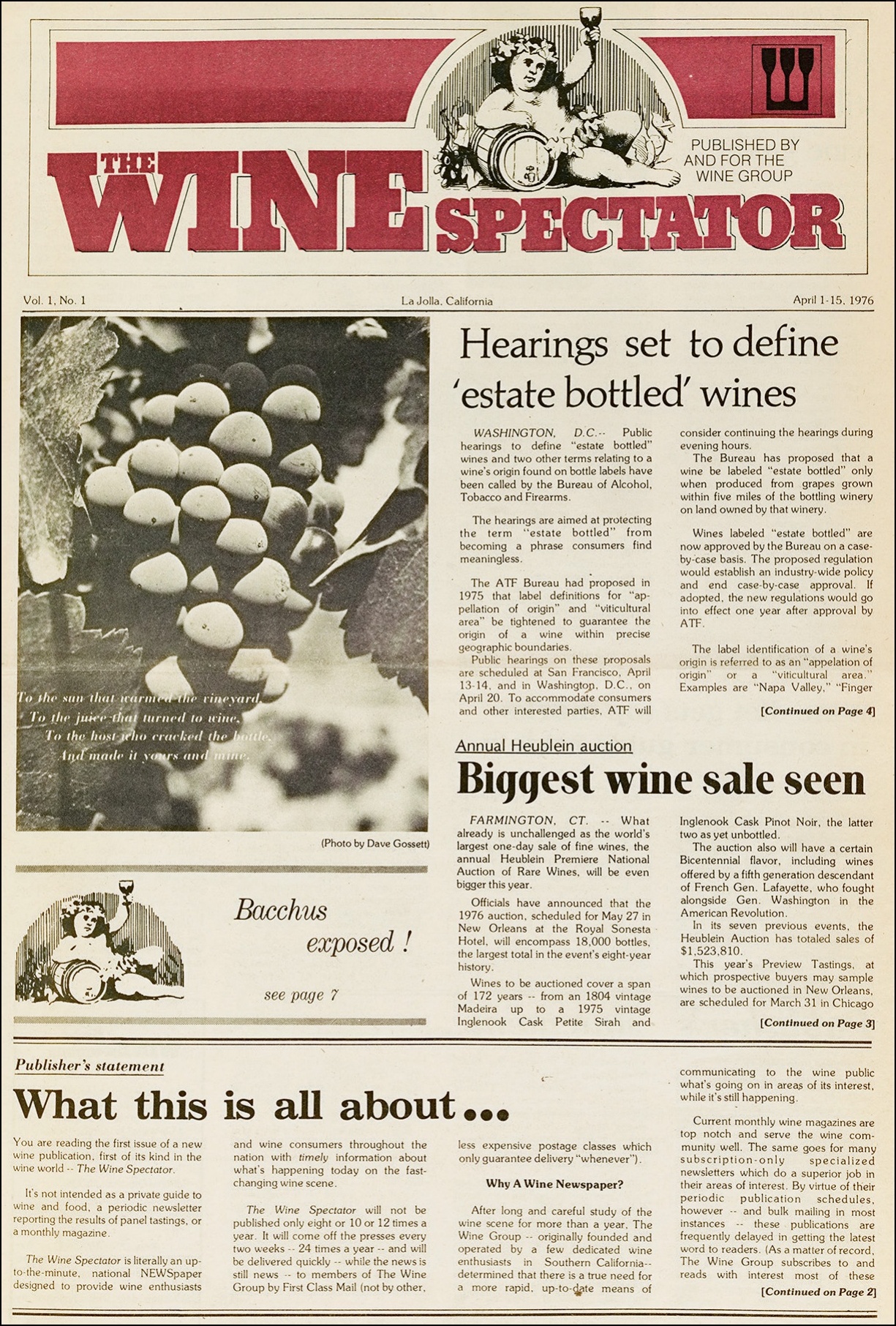
The first issue of The Wine Spectator, April 1976.
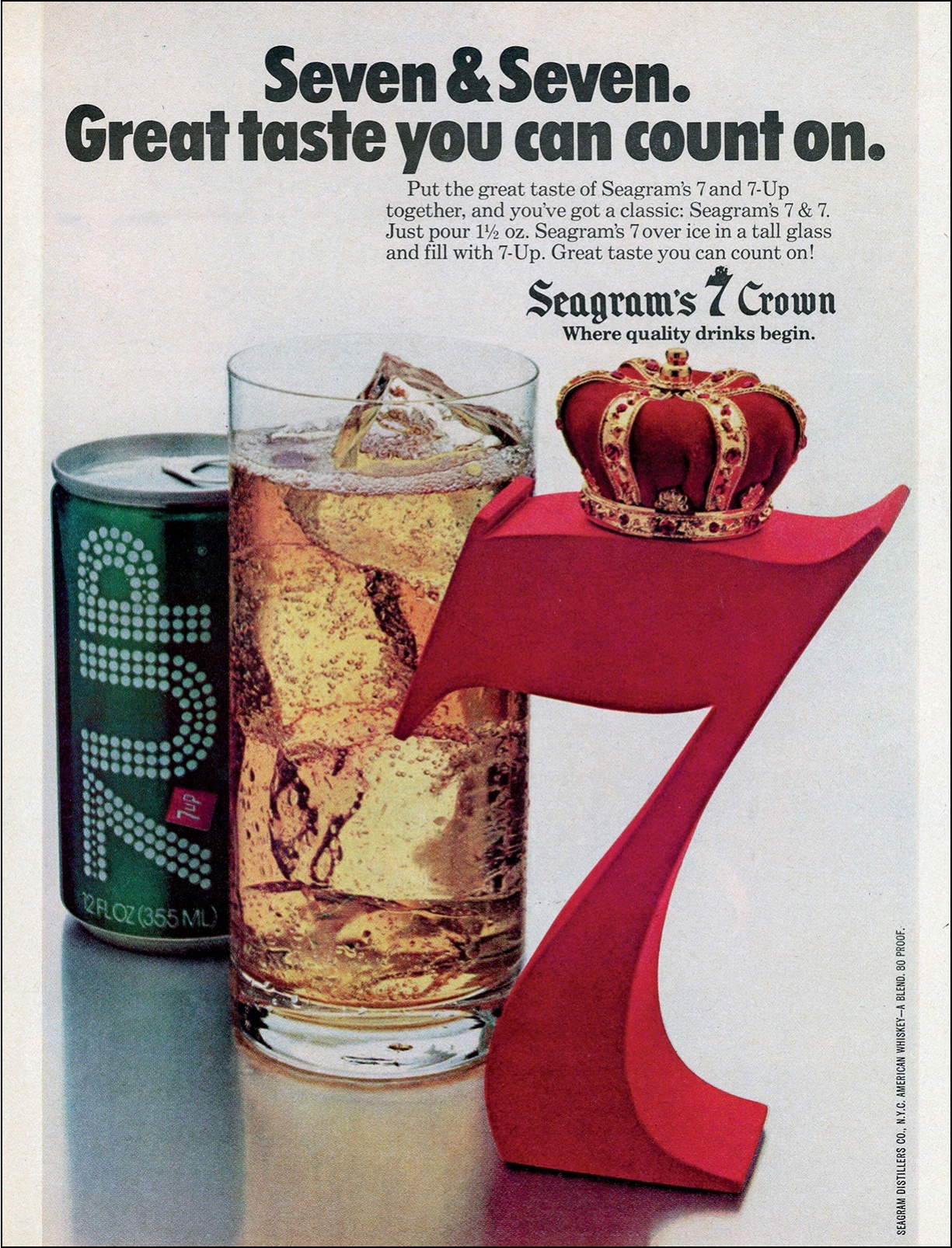
Seagram’s 7 Crown and Canadian Club ads from the 1980s.
G.E. HUM IMAGES/UNIVERSAL IMAGES GROUP/GETTY IMAGES; ISTOCKPHOTO/GETTY IMAGES; PATTI MCCONVILLE/ALAMY STOCK PHOTO (2)
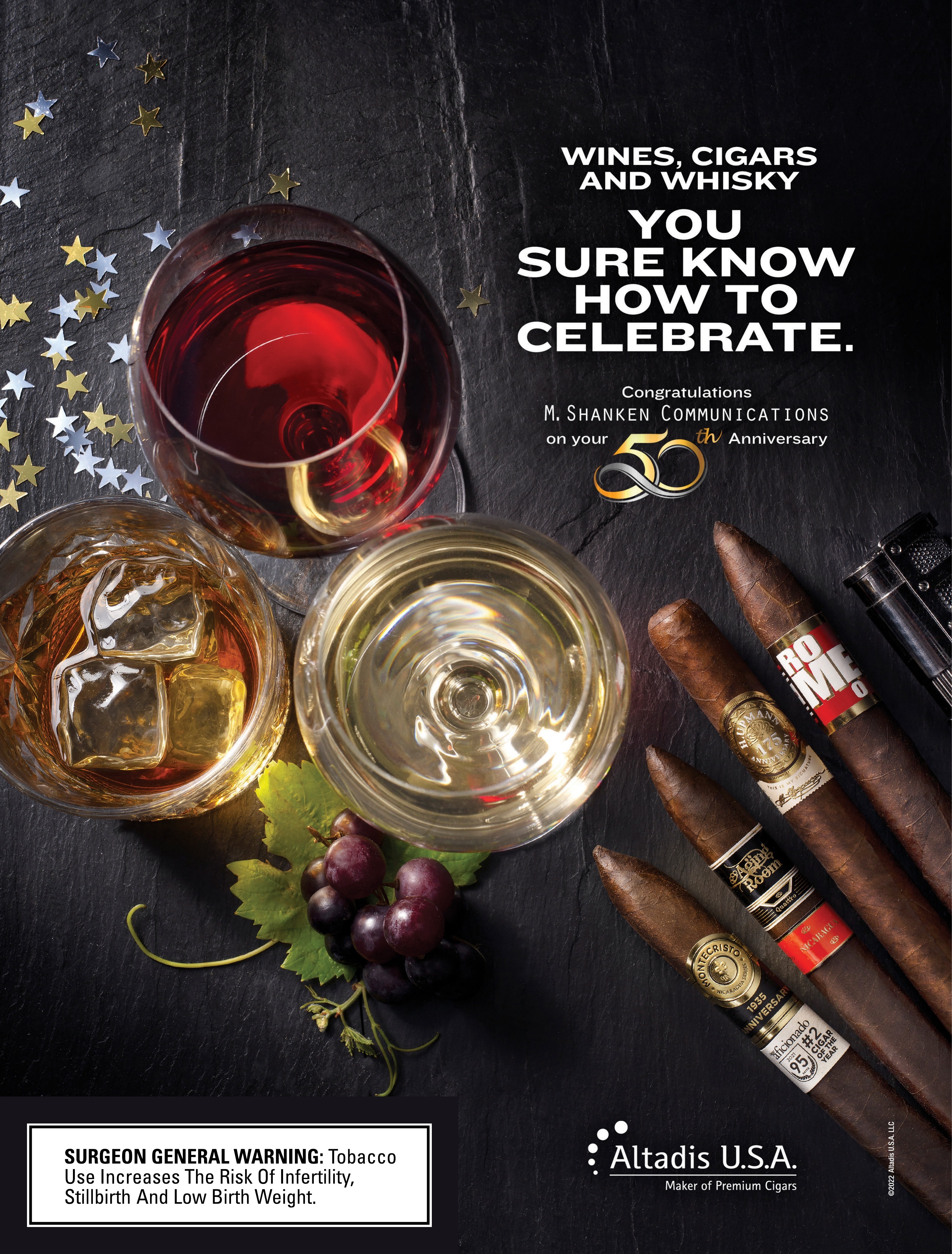
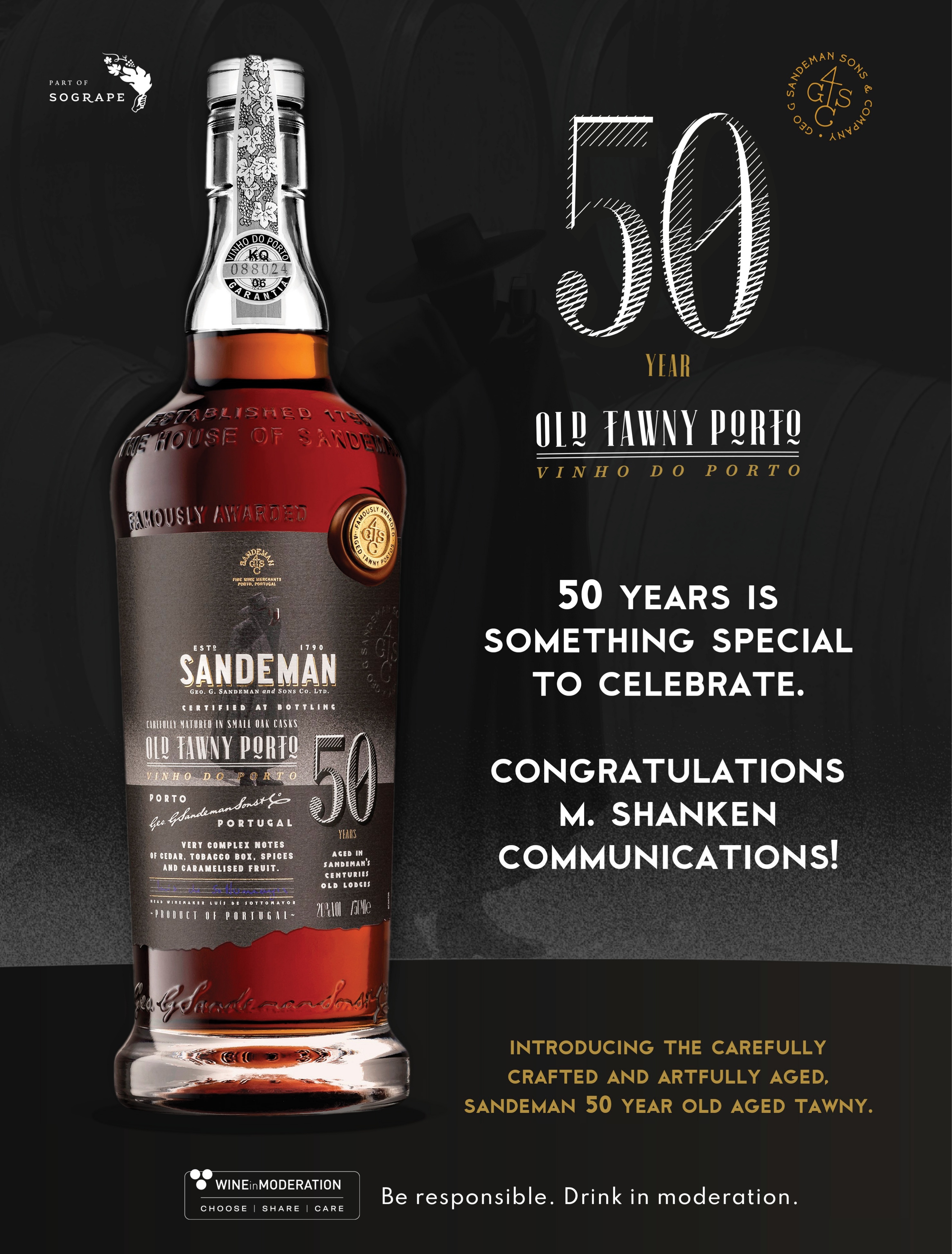
THE DRINKS INDUSTRY 1972-2022
The 1980s
Absolut Awakening, The British Invasions
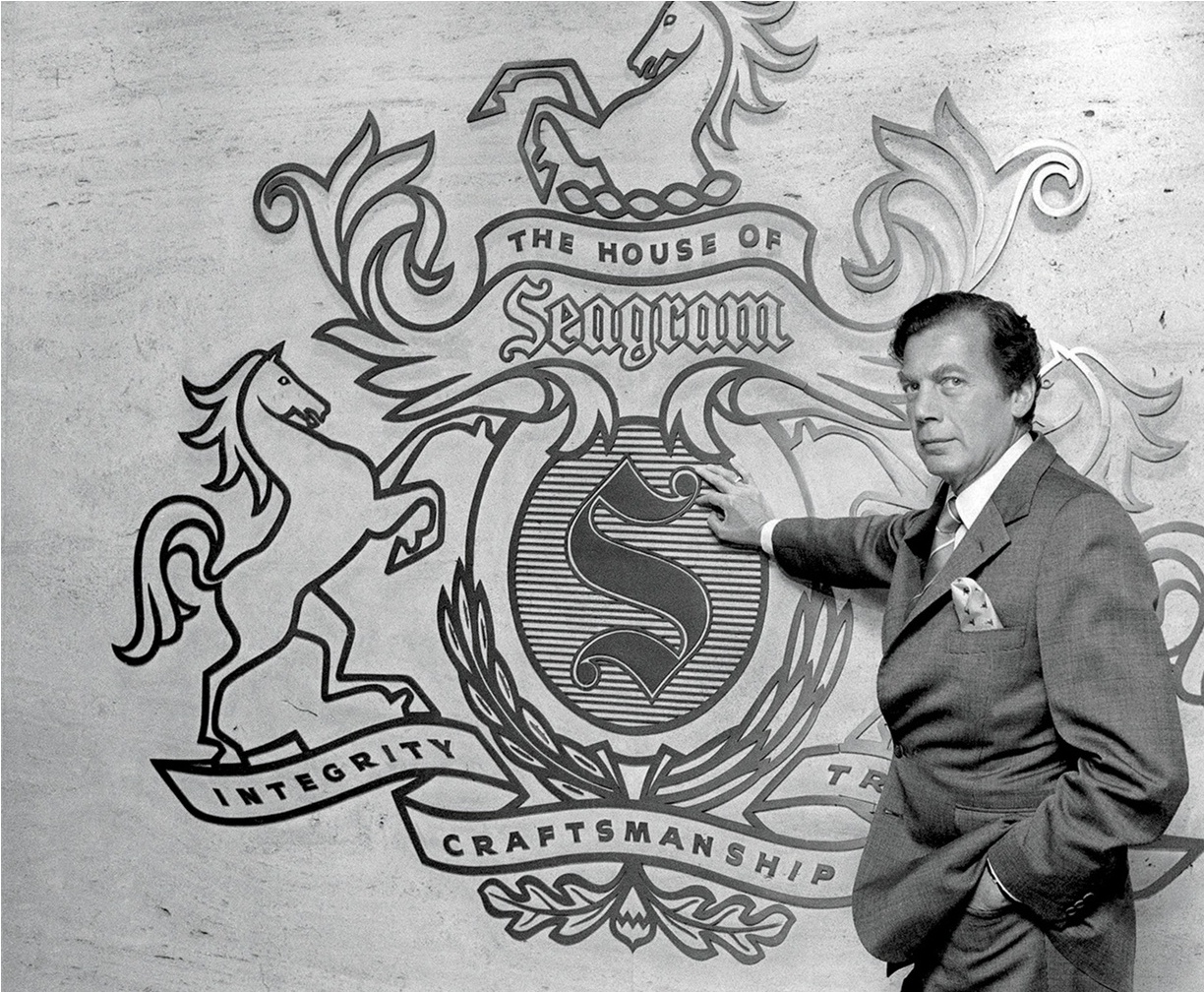
S eagram Chairman Edgar M. Bronfman.
In 1977, the imported vodka market stood at just 200,000 cases and was dominated by one brand: Stolichnaya. But as the ’70s drew to a close, a small Swedish vodka brand entered the U.S. market: After a promising start in some key metro markets, Absolut’s sales reached 45,000 cases in 1980. Meanwhile, advertising agency TBWA was nurturing a new campaign using wordplay and imagery that played off Absolut’s unusual bottle shape, which soon became the brand’s signature. The first execution, “Absolut Perfection,” appeared in The New York Times in 1980. The following year, Michel Roux became president of Carillon Importers, the brand’s marketer, and Absolut began to soar under his stewardship.
By 1985, Absolut had overtaken Stoli to become the market’s top-selling imported vodka—and made the category a real player in the U.S. spirits market. Roux scored a major coup in 1985 by commissioning pop artist Andy Warhol to do a painting of the bottle. (Warhol was a teetotaler, but told Roux he used Absolut as cologne.) Absolut proudly displayed Warhol’s painting in its ads, thereby launching a long-running collaboration between art and advertising. Later projects would involve artists such as Keith Haring and Damien Hirst, as well as fashion designers like John Galliano, Gianni Versace and Tom Ford.
Imported vodka sales approached 2 million cases in 1985, nearly a tenfold rise from less than a decade before. In the process, imports’ share of the overall vodka category grew from 0.5% in 1977 to 4% in 1985. It appeared that Absolut, then at around 700,000 cases, had plenty of room for more growth. By decade’s end, thanks to Absolut, New Jersey–based Carillon would be a 3.5-million-case superstar.
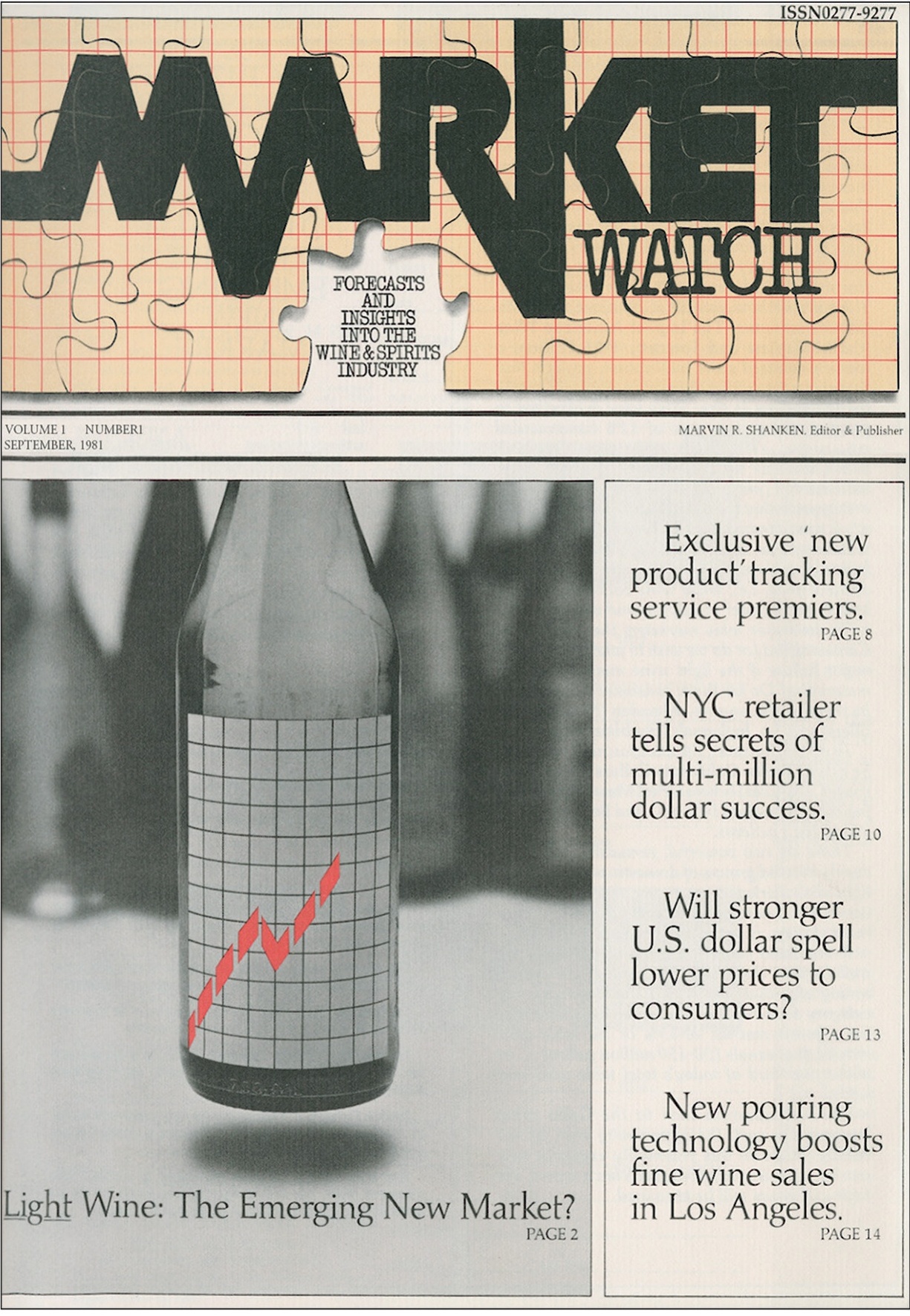
First cover of Market Watch, September 1981.
Across the Hudson River in New York’s Westchester County, Bill Deutsch, a senior vice president of sales at Somerset Importers, decided to go out on his own. He founded W.J. Deutsch & Sons Ltd. in 1981 with the idea of becoming a family-owned importer for family-owned wineries. Deutsch started as a two-person operation. Today the company, now called Deutsch Family Wine & Spirits, has more than 360 employees, yet has never strayed from its original concept. Its first major client was Les Vins Georges Duboeuf, which eventually became the market’s top-selling French wine brand at 1.2 million cases. Twenty years later, in 2001, Deutsch would launch Australian brand Yellow Tail, which today is the country’s second-largest wine import at around 6 million cases. When Deutsch opened for business in 1981, total Australian wine imports were less than 50,000 cases.
As the 1980s began, the wine discussion was dominated by the so-called GAMIT brands—an acronym that stood for Gallo, Almaden, Paul Masson, Inglenook and Taylor Wine Co. Coca-Cola was in the wine business. White wine cocktails were all the rage. Branded California generic wine types named Chablis, Burgundy and Rhine were on a decade-long ride that was about to end. E. & J. Gallo, at 150 million cases, was nearly three times the size of its nearest competitor, Heublein. The term “varietal” was barely on the radar screen. Riunite was still spearheading the Lambrusco craze, giving Italy total dominance in the import sector at 25 million cases. France, a distant second to Italy at 6.3 million cases, was led by big brands like B&G, Partager and Père Patriarche. Amazingly, Germany was the country’s third-largest import player in 1981 at 5.5 million cases. Germany’s star back then was Blue Nun, which peaked in 1981 at 1.3 million cases. Today it’s at around 90,000 cases.
In California, San Francisco lawyer Jess Jackson, who had converted his 80-acre orchard in Lakeport into a vineyard, produced his wine under the Kendall-Jackson label in 1982—a Chardonnay. In a wine world still awash in a sea of generic wine, Jackson quickly became one of California winemaking’s great pioneers. Jackson died in 2011, but today his company, still family-owned, produces more than 6 million cases of wine annually, with brands including Kendall-Jackson, La Crema, Murphy-Goode, Cambria and others.
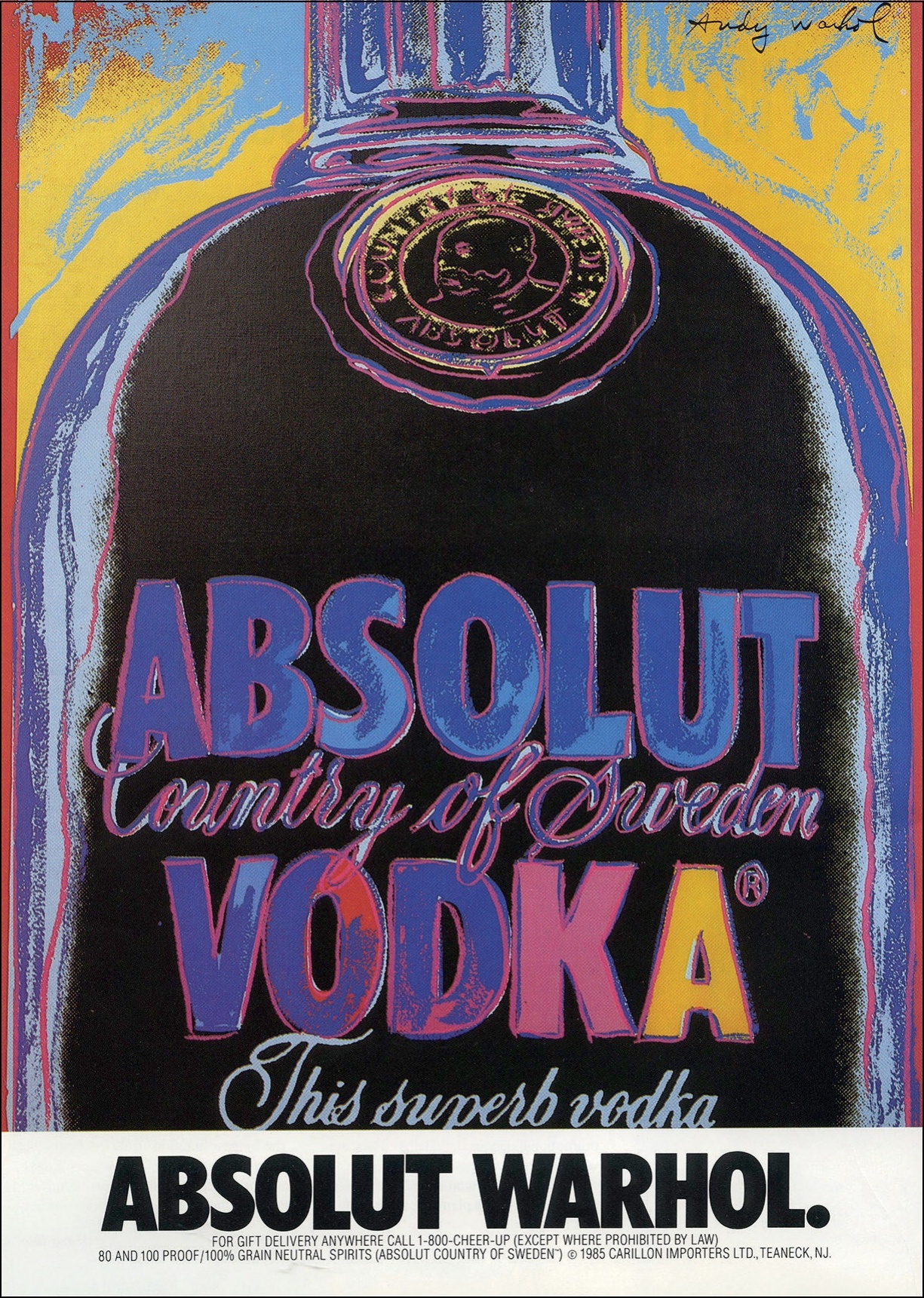
Absolut’s long-running ad campaign, centered around its iconic bottle, created an array of indelible images—including this one designed by Andy Warhol in 1985.
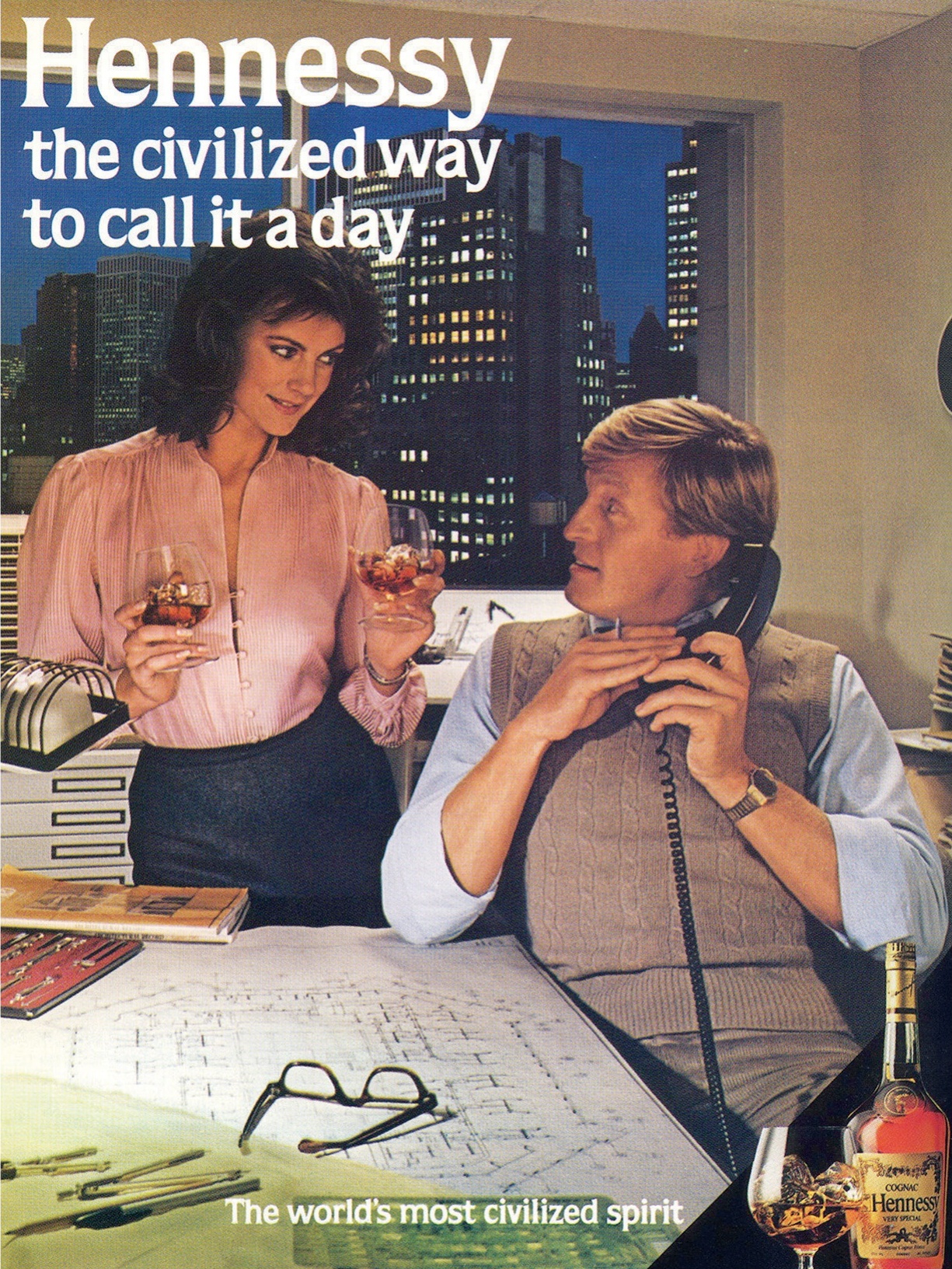
A Hennessy Cognac ad from the early 1980s.
Thanks to the efforts of winemakers like Jackson, the California jug-wine boom was coming to an end. The table wine segment had enjoyed 10% annual growth from 1970 through 1980, but growth eased to 8.1% in 1981 and slowed to a trickle the following year. Consumption clearly was faltering and competition from imports was intensifying. The GAMIT wines soon became locked in a battle for market share, and a destructive pricing war would ensue. Only Gallo—a long-term player, privately held and vertically integrated—would ultimately prevail in this onslaught.
While there was bad news in California, there was good news overseas. In Bordeaux, a historic 1982 vintage was hailed by critics, the trade and consumers. The hype was something the wine world had never quite seen. Helped by the tools of the modern media age, Bordeaux’s 1982 vintage propelled fine wine to new heights in America.
Spirits marketers, meanwhile, had a big new idea—which ultimately proved to be a big mistake. Distillers had petitioned the government to loosen restrictions on “couponing”—offering rebates on purchases through mail-in coupons—and in 1980 they succeeded. Marketers were overjoyed at first, but by 1982 it was clear that couponing created a bargain-basement image for high-end brands. It was also a trap; brands were becoming dependent on the coupons to move volume. Many spirits marketers, particularly in Scotch whisky, would spend years repairing the damage.
While Budweiser was still very much the “King of Beers” as the 1980s kicked off, the burgeoning light beer category was dominated by Miller Lite. Clearly rattled by its rival’s success, Anheuser-Busch would strike back, rolling out Bud Light across the U.S. in 1982. It would take 12 years of effort, but Bud Light eventually would pass Miller Lite to become the U.S. market’s top light beer. Today, Bud Light is the U.S. market’s biggest beer brand, having long since leapfrogged parent brand Budweiser.
Heineken dominated the import sector back then, with its volume three times that of its nearest competitor, Molson. Corona Extra had just entered the market, under the leadership of Modelo’s then-export director Carlos Alvarez. The Mexican brand became an instant hit in Texas, but few could imagine it would become the country’s top beer import before the new millennium began. In Milwaukee in 1982, the once-mighty Jos. Schlitz, which had never recovered from the bad publicity surrounding a taste makeover in 1976, was sold to Detroit-based Stroh Brewery Co. for $336 million.
Canandaigua Wine Co. (now Constellation Brands) saw sales surpass the $50 million threshold in 1980, led by brands including Richard’s Wild Irish Rose and J. Roget Champagne. Then Canandaigua launched Sun Country Cooler, which hit 1 million cases in just six months in 1984. Sun Country’s marketing mix included a giant polar bear mascot and a glitzy array of pitchmen, including Ringo Starr, Grace Jones, Patrick Duffy (from the hit TV show Dallas) and Donna Mills (from Knots Landing), along with heavy advertising on MTV and in Rolling Stone. By 1986, Sun Country was Canandaigua’s largest brand at 8.3 million cases, compared to 6.5 million cases for Richard’s Wild Irish Rose. Today, Constellation Brands is the third-largest wine company in the U.S.
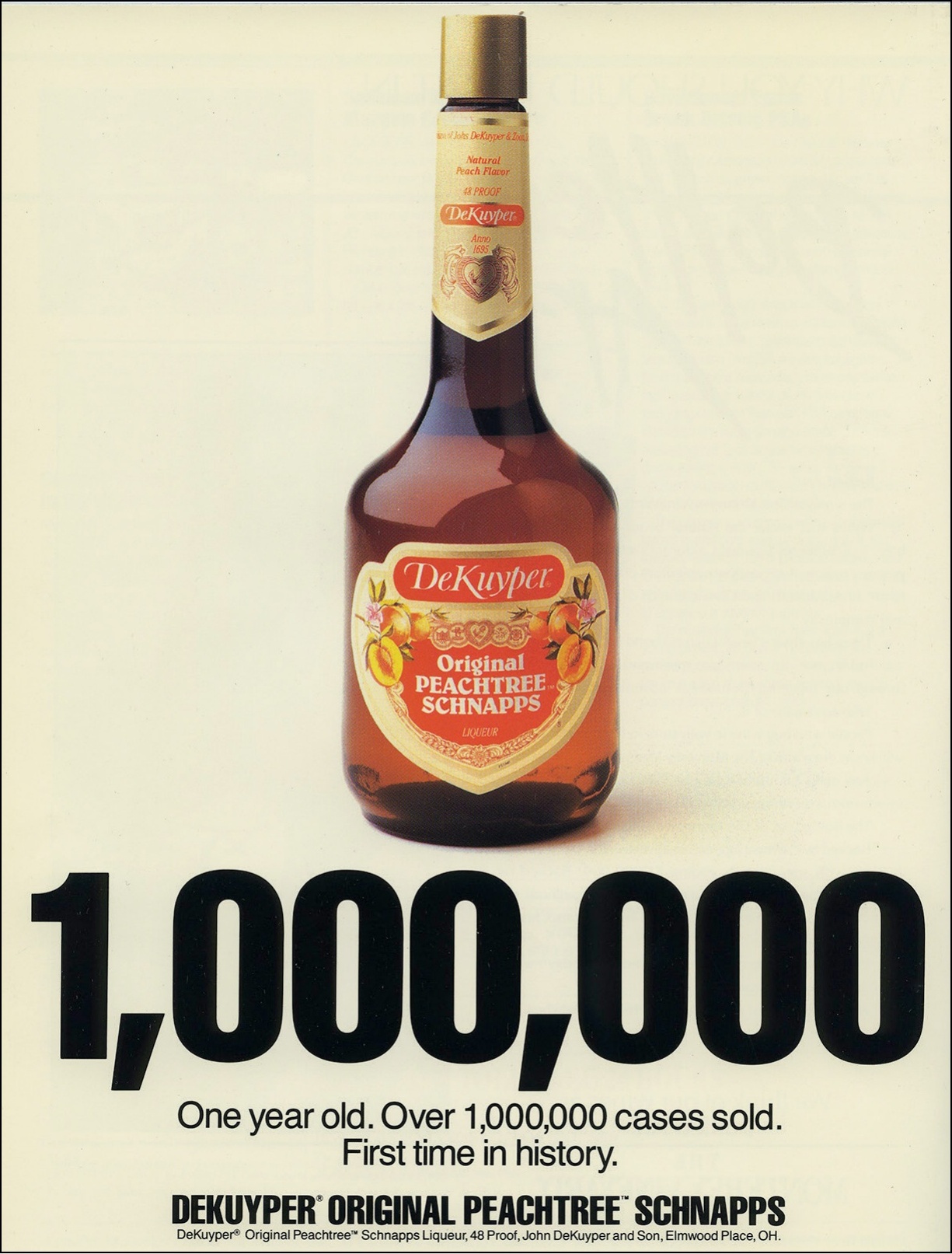
Launched in 1984, DeKuyper Peachtree schnapps was an instant success spurred on by the fuzzy navel cocktail.
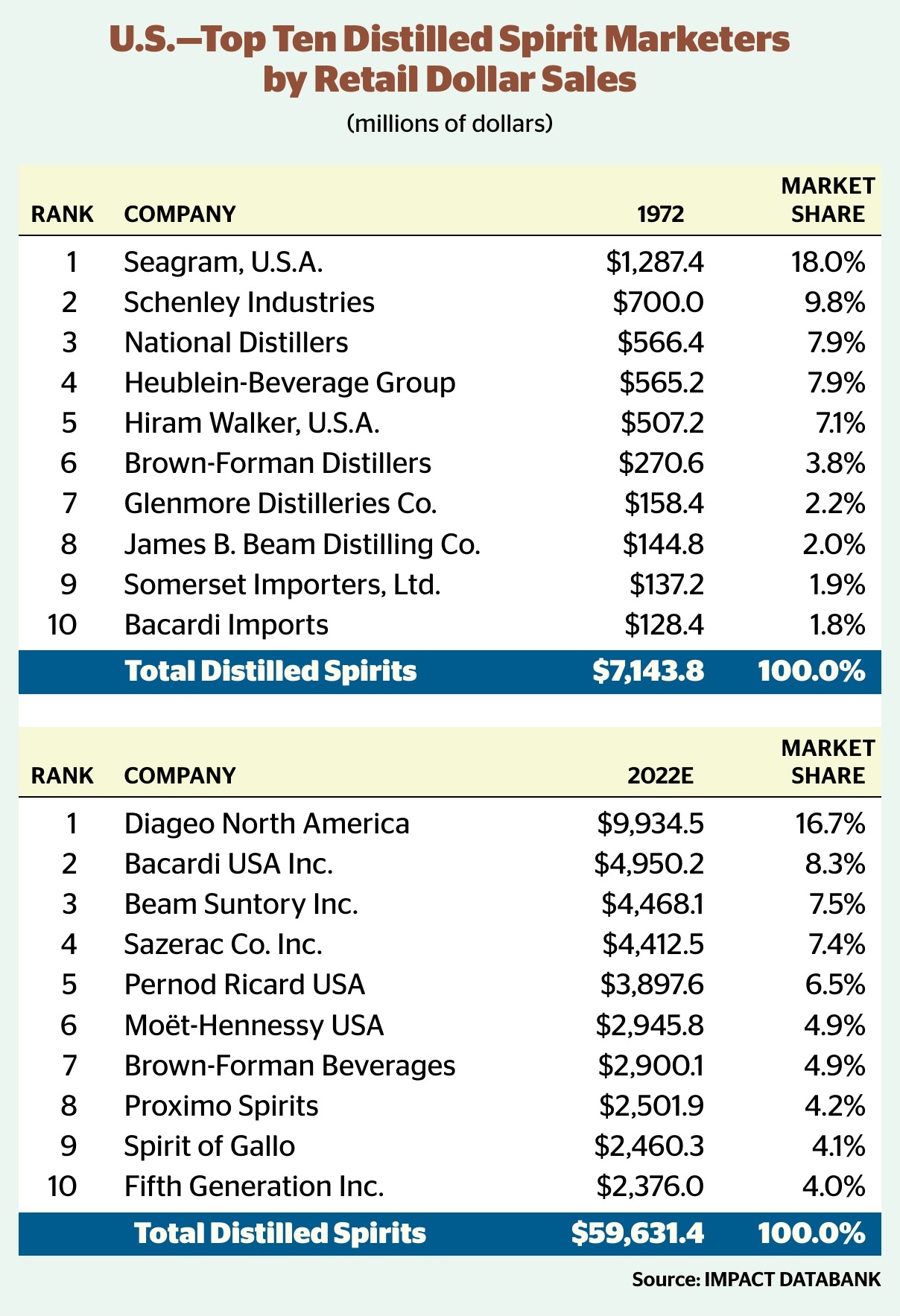
As with rival cooler brands, Sun Country’s success would be short-lived, as the category peaked in the late 1980s. But Sun Country played a big role in raising Canandaigua’s national profile and the company would continue to expand through acquisitions, such as the purchase of Manischewitz from Monarch in 1987. Sun Country was just one of many brands that would take the cooler category on a wild ride during the 1980s.
Coolers came into being as packaged commercial products in the summer of 1981, when two 28-year-old entrepreneurs named Michael Crete and Stuart Bewley began making wine coolers at their new company, California Cooler, in Lodi, Calif. Launched with a $10,000 investment, the California Cooler brand grossed $12,000 in sales in its first year. The cooler category quickly caught fire and California Cooler took the early lead with sales of 1.7 million cases in 1983—a more than 20-fold increase over the previous year’s 80,000 cases. California Cooler was doing it with no advertising and no real national distribution. By 1983, Seagram, Gallo and others had taken note of California Cooler’s success and were busy developing their own cooler brands. As California jug-wine volumes slipped and spirits also declined, coolers were seen as a silver bullet solution for recapturing growth and attracting a new generation of drinkers, especially women.
Crete and Bewley would sell out to Brown-Forman in 1984 for nearly $150 million, getting out before the crash. The deal would soon be seen as a great one for Crete and Bewley—and a not so great one for Brown-Forman. In 1984, California Cooler’s share of the category fell to 49% from 73% in the previous year. The sector was becoming increasingly competitive and crowded with big players. Seagram rolled out Seagram’s Wine Coolers in New York and Phoenix and entered Florida soon after.
Around the same time, E. & J. Gallo launched its assault on the cooler category with Bartles & Jaymes, complete with a primetime television ad campaign. The brand’s fictional pitchmen, two hayseeds named Ed Bartles and Frank Jaymes, ended each commercial with the signature phrase, “Thank you for your support.” The ads, created by Hal Riney, were a huge hit, and Frank and Ed became household names. Bartles & Jaymes blew past California Cooler to grab leadership of the cooler category in 1986, reaching 18 million cases compared to California Cooler’s 12.2 million cases.
Seagram’s Wine Coolers were still off to a slow start, but mega-players were now in the game and the cooler boom was in overdrive. Anheuser-Busch even got into the act in 1985 with its Baybry’s Champagne Cooler brand and followed a year later with Dewey Stephens, a low-calorie entrant backed by a $20 million ad campaign. Both brands bombed. Miller would join the fray two years later with its Matilda Bay cooler brand, which had only fleeting success before being discontinued in 1989.

Seagram took another crack in 1986 by launching a more upscale line, Golden Wine Coolers. Backed by a $20 million budget, the brand’s television ads starred the white-hot actor Bruce Willis—then the star of the hit TV series Moonlighting. Total media advertising for coolers reached $170 million by year’s end. With spirits mired in a long decline, many experts were still predicting coolers would become the adult beverage of the 1990s. But 1986 would prove to be the category’s last real boom year, as the cooler craze soon began to fizzle. In 1987, Seagram’s Wine Coolers did double in volume to 18.5 million cases, passing Bartles & Jaymes’ 18 million cases. Thus, the category did advance in 1987, thanks largely to Seagram—but only by 12%, to 77 million cases. In 1986, growth had been 66%, to 69 million cases.
Though the cooler craze didn’t last, it would become one of the decade’s signature trends—and a symbol of the industry’s efforts to redefine itself amid relentless downturns for spirits and wine.
As coolers took off in the early 1980s, the big wine players were enthusiastically embracing another new category: “Light Wine.” These wines were made from early-harvest grapes—an approach that reduced sugar concentration and thus lowered the calorie count. Their alcohol content was also low, at below 10%. The idea was to build a low-calorie wine segment similar to diet soda and light beer. Those held 18% and 13% of their respective categories, and wine marketers hoped for similar results.
The light wine brands, mostly white, included Los Hermanos Light from Beringer; Masson Light from Paul Masson; and Taylor California Cellars Light Chablis from the Wine Spectrum, Coca-Cola’s subsidiary. But light wines proved to be a bust. One problem was their taste; low-sugar grapes couldn’t really produce good wine. Production methods were tweaked, but the idea just didn’t pan out. More than 3 million cases of light wine did sell the following year—not bad, but well below expectations. There were also “soft wines,” like Lake Country Soft from the Wine Spectrum, launched in 1981. Soft wines were made by adding non-fermented juice to lower the alcohol content. They also ultimately bombed. Gallo, proving its acumen as usual, stayed out of the light wine/soft wine game.
In 1982, Edgar Bronfman Jr., at age 27, abandoned his movie-producing career and entered the family business, joining Seagram as an assistant to Phil Beekman, then president of Jos. E. Seagram & Sons. Later that year, Edgar became managing director of Seagram Europe.
In 1983, Coca-Cola exited the wine business, selling its Wine Spectrum subsidiary to Seagram for $237 million. The Wine Spectrum’s portfolio included Sterling Vineyards, the Monterey Vineyard and the Taylor Wine Co. (Taylor California Cellars, Great Western Champagne and Taylor Champagnes). Coke had entered the wine business in 1977, tantalized by projections showing that wine could become America’s fastest-growing beverage alcohol sector over the next decade. The Wine Spectrum’s volumes had risen quickly, from 450,000 cases to nearly 7 million cases by 1981. But then it all began to fall apart. By the time Coke walked away—leaving the business a dozen years before archrival PepsiCo’s exit—California table wines were growing at a mere 0.2%, and there was worse to come. Seagram took over and would also encounter difficulty with the mass-market sector. In 1987, the company would sell its jug brands to startup Vintners International.
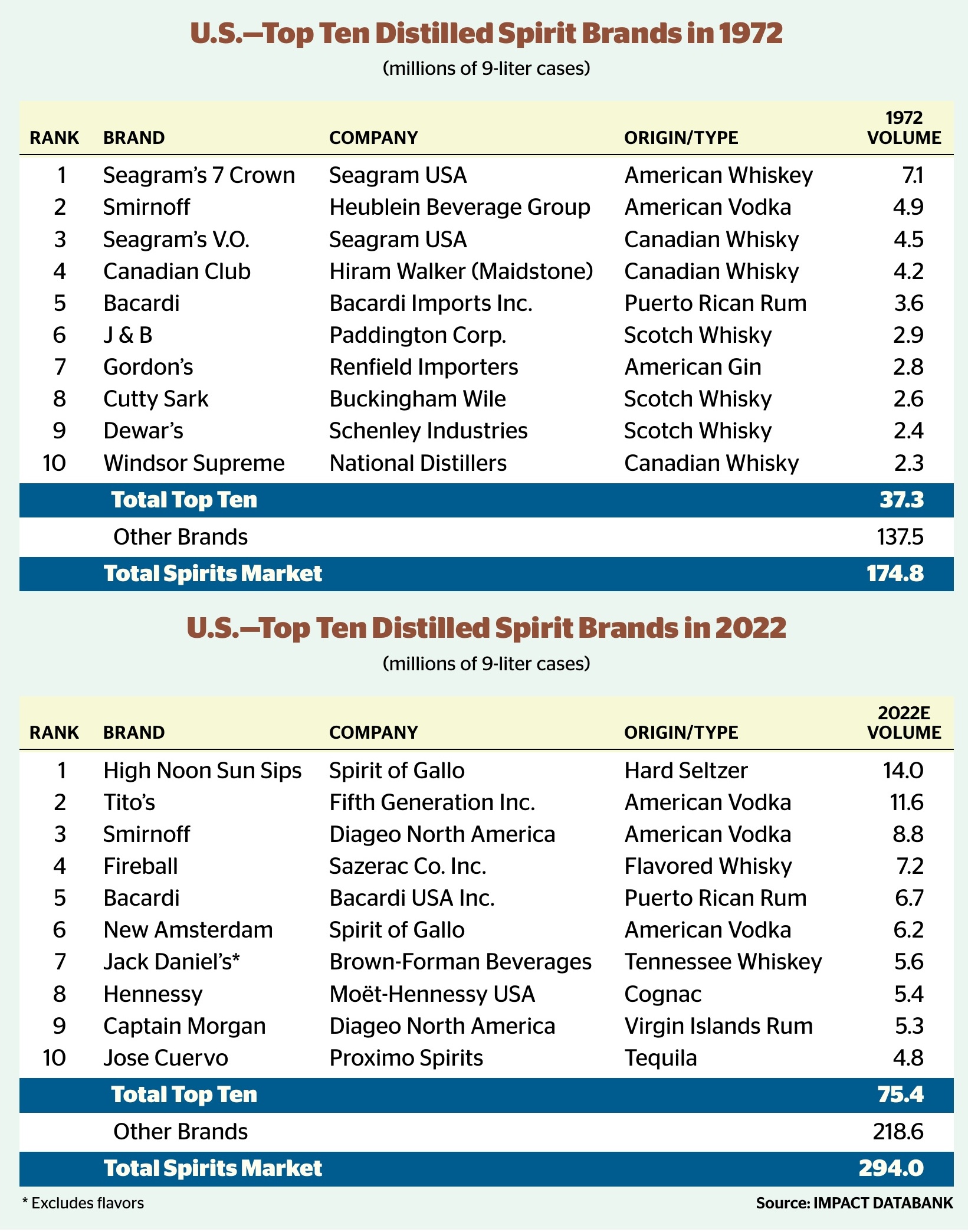
Meanwhile, supermarket chains were discovering alcohol in a big way, and the elimination of fair trade laws in California and elsewhere had opened the door to discount chains. Liquor Barn, founded in 1979 and owned by Safeway, had around 100 units in California by 1983 and sales of $300 million and was easily the country’s biggest liquor retailer. Supermarkets’ huge buying power was spurring major consolidation at the distributor tier. In the early 1960s, California had nearly 40 spirits and wine distributors. By 1983, fewer than half that number existed.
In April 1983, the inaugural Sam’s Club (the Wal-Mart club store operation) opened in Midwest City, Okla. In September, Costco Wholesale Corp. opened its first store, in the Seattle suburb of Kirkland, Wash. Costco would soon merge with California-based Price Co., whose Price Club stores were Costco’s business model. The club stores’ initial idea: Charge a membership fee and build a client list of small business owners. That concept would soon expand to encompass a broad consumer audience. Today, the major big-box stores are powerhouses in the alcohol retail scene.
Overall spirits consumption declined from the late ’70s through the mid-’80s, with many of the top-selling brands experiencing little or no growth during that period. Bacardi was a notable exception. The rum brand’s annual U.S. sales nearly doubled, from 4.5 million cases in 1977 to 8.5 million cases in 1983. In the process, Bacardi overtook brands such as Seagram’s 7 Crown and Smirnoff to become the U.S. market’s biggest spirits brand—a position it would maintain until 2007.
Bacardi essentially had the 15 million case rum category all to itself in the mid-1980s, with no competitor coming close. In fact, rum’s second-most player at the time was also a Bacardi brand: Castillo. But in 1984, Seagram introduced Captain Morgan spiced rum. While the new product barely caused a ripple in the market in its earliest days, it would eventually become one of the biggest success stories in industry history.
After the success of light beer and the failure of light wine, light spirits become a hot topic in 1984 after distillers lobbied the government to allow new reduced-proof products or even eliminate minimum proof regulations altogether. Regulators would only allow distillers to label such products “diluted” rather than “light.” This put spirits at a huge disadvantage, spirits marketers argued. So urgent was the cry for light spirits that one distributor called them “the only salvation for the industry.” But the concept was poorly received by the trade, and light spirits would become yet another failed attempt to stem spirits’ decline. In the end, beer would be the only beverage alcohol category to achieve success with light products.
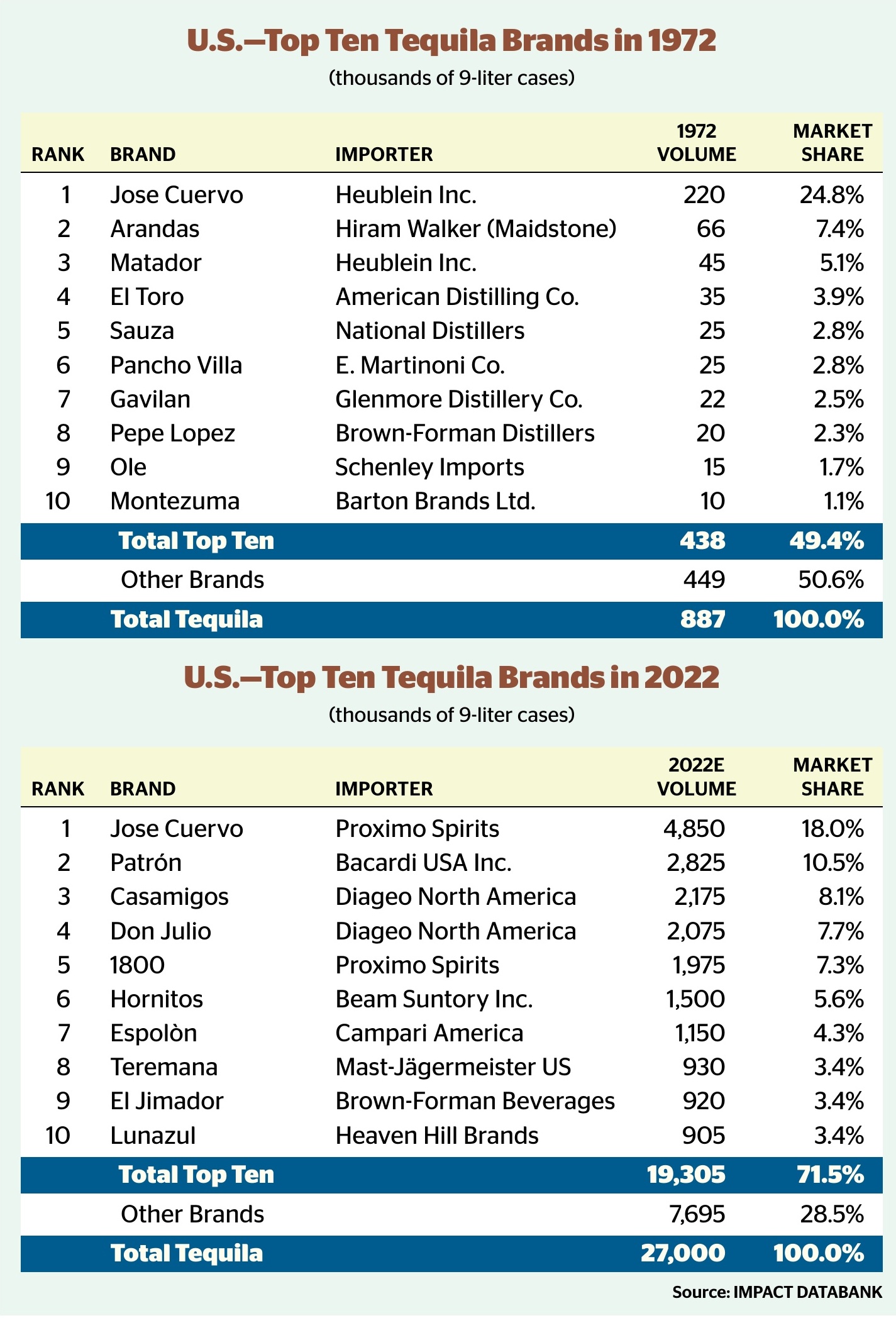
One bright note amid the spirits industry’s problems was schnapps—most notably DeKuyper Original Peachtree schnapps. Launched in 1984, Peachtree would soon blossom into a major market force and become one of the decade’s few spirits successes, hitting 1 million cases in 1985, its first year of full distribution.
In California’s vineyards, new plantings began to diminish in response to weaker demand in the early 1980s, and the wine grape industry entered a recession that would last for about two years. Meanwhile, the dollar’s strength aided wine imports and continued to undercut the California jug-wine business, leading to further price competition. Mass-market wines were in the midst of a long decline. On the import front, Kobrand acquired Maison Louis Jadot in 1985, becoming the first American firm to own a major Burgundy producer. The initial purchase included Jadot’s production facilities, inventories and major vineyards. Kobrand later expanded its vineyard ownership and secured major vineyard contracts. Kobrand also became a shareholder in Napa Valley’s Sequoia Grove.
Propelled by Corona’s success, Mexican beer began making its presence felt in the mid-1980s. Dos Equis led the segment, but Corona’s ascendancy would result with it soon becoming synonymous with Mexican beer.
In Boston, in 1984, a young entrepreneur named Jim Koch discovered his great-great-grandfather’s recipe for Louis Koch lager in his father’s attic and launched the Boston Beer Co. The company’s Samuel Adams Boston Lager made its public debut in April 1985 and would go on to rock the American brewing industry.
A $2 per gallon federal excise tax increase on spirits took effect in 1985, boosting the rate from $10.50 a gallon to $12.50 a gallon. There had even been talk of raising the federal excise tax to $21 a gallon—a sign of the anti-alcohol lobby’s growing assertiveness.
Seagram, meanwhile, was in full throat with an effort known as the Equivalency Campaign, which it had launched in late 1984. The campaign’s thrust was that a 1.25-ounce serving of 80-proof spirits, a 5-ounce glass of wine or a 12-ounce serving of beer all contain the same level of alcohol. Edgar Bronfman Jr., by now president of the House of Seagram, led the effort with the full support of his father. “The problems associated with alcohol are laid at our doorstep,” Seagram chairman Edgar M. Bronfman said in defense of the spirits industry. Ad spending on the high-profile campaign hit $1.2 million for cable TV, $4.1 million for print and $1.6 million for outdoor.
Brewers saw this as the first salvo in a battle to equalize alcohol excise taxes. They struck back, sending letters to every member of the U.S. Senate and House of Representatives. The brewers also published a slick pamphlet calling Edgar Bronfman Jr. “the 30-year-old president of the House of Seagram” and referring to “the foreign-owned hard liquor industry.” Seagram soon ended its Equivalency Campaign, declaring victory by showing research that more than half the country now agreed with its view.
In wine, the torrid growth of the category’s two big brands, Riunite and Cella, had slowed to mid single-digits by the early 1980s. Red Lambruscos had been hardest hit, declining by 1 million cases. Riunite still dominated all import brands in 1983 at 11 million cases, far ahead of its nearest competitor, Cella, at 2.7 million cases. But Riunite was flat in 1983, a harbinger of worse to come for Lambrusco.
Looking to deal, Canandaigua Wine Co. raised $60 million in 1986 to explore the acquisitions of Almaden, Inglenook and Taylor California Cellars. Talks went nowhere. Almaden was sold to Heublein, and Inglenook and Taylor went to Vintners International the following year. But Canandaigua had signaled its intent to become a mega-player. Remarkably, the company eventually would own all three brands. Canandaigua did get some deals done in 1986, buying Widmer Wine Cellars, Manischewitz Wine Co., and the Italian Swiss Colony and Jacques Bonnet brands.
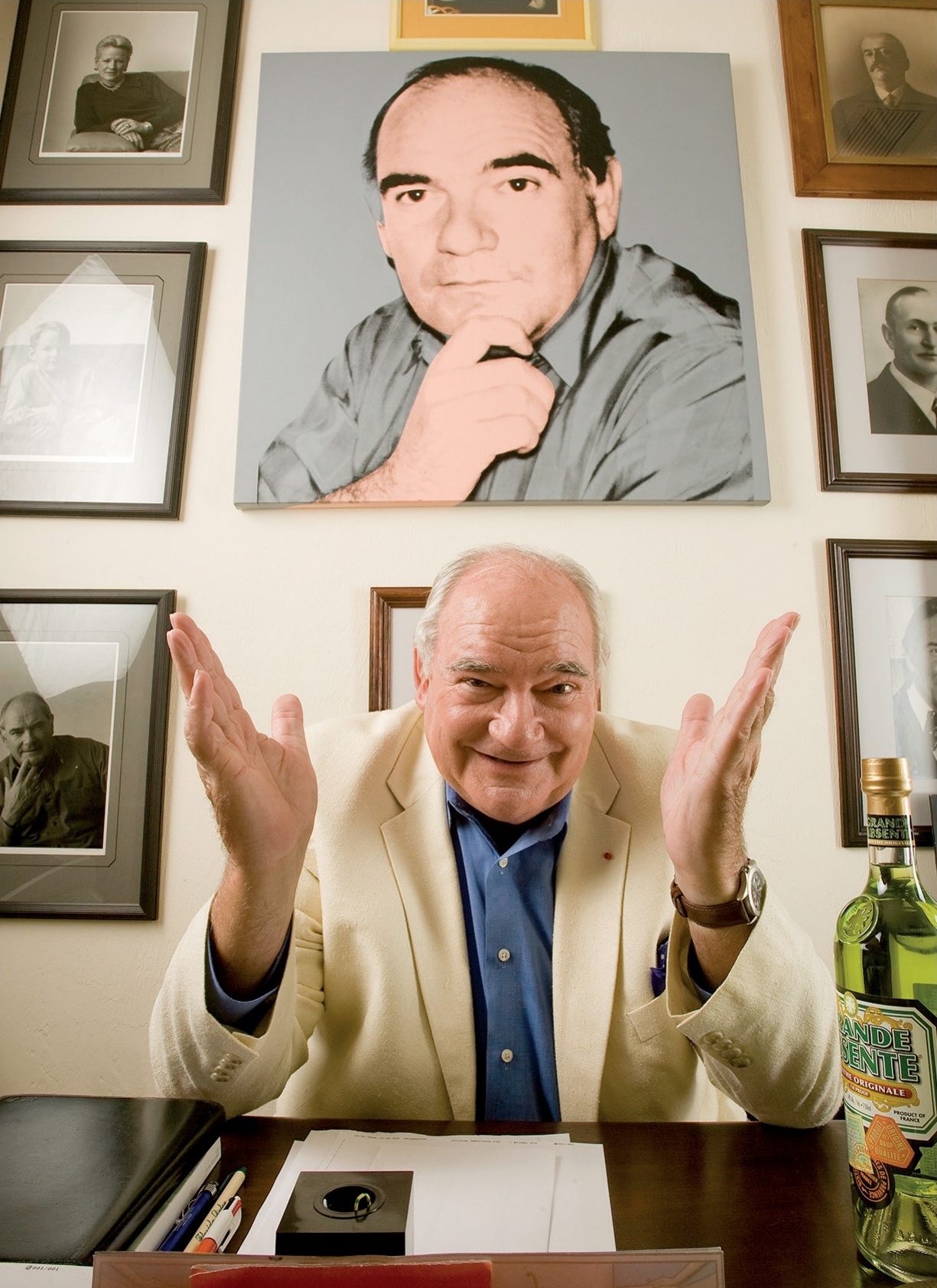
Michel Roux, then president of Carillon Importers, was the marketer behind the success of Absolut vodka in the 1980s.
California’s discount chains were continuing to spur consolidation at the second tier and in 1986 Southern Wine & Spirits of America established statewide distribution in California, a market where they’d been present since 1969. Young’s Market Co. was also an emerging statewide force. The roadmap to California’s future distribution structure was being charted.
Imported table wines nosedived as the 1980s entered the decade’s second half. The category fell by 23% to 36.6 million cases in 1986, and nine of the top 10 brands lost volume. A weaker dollar was one factor, but the key reason was Lambrusco’s collapse. Riunite plunged by 27% to 7.5 million cases, while Cella (down 25%) and Canei (down 22.7%) also tanked. In Italy, 23 people died in the northern province of Piedmont after unscrupulous winemakers used ethanol to make low-end wines for sale to local supermarkets. None of the wines involved had been exported, but Italy’s reputation suffered.
While imports languished, California wines gained a renewed sense of optimism in 1986 as the so-called “fighting varietals” made by Fetzer, Glen Ellen, Sutter Home and Sebastiani became popular. The fighting varietal boom remained strong the following year, with Glen Ellen clearly the star. The brand added nearly half-a-million cases in 1987 to reach 1.14 million cases. California vineyards previously planted with Colombard and Chenin Blanc were ripped up and replanted with Chardonnay and other popular varieties as California adapted to a new era. The fighting varietals surge created a California renaissance. The trend also drove consumer interest in wine and helped develop a new focus on quality.
The industry’s consolidation trend continued in earnest throughout the mid 1980s. In December of 1986, Allied-Lyons (later Allied Domecq) acquired Hiram Walker for about $732 million, gaining spirits notables Kahlúa, Tia Maria, Ballantine’s, Courvoisier and Canadian Club. In one stroke, Allied became a global spirits powerhouse. Its core brands previously were Teacher’s, Harveys and Babycham.
Also that year, Guinness acquired Distillers Co. Ltd. for $3.8 billion, having already purchased Arthur Bell & Sons in the previous year. The Distillers acquisition would famously result in Guinness chief Ernest Saunders being sent to prison in a stock-fixing scandal. The deal would also have widespread repercussions in the U.S. market as the new Guinness chief executive, Anthony Tennant, soon began pursuing acquisitions around the world, reshaping the industry.
The British invasion kicked into high gear the following year, as IDV/GrandMet (forerunner of Diageo) acquired Heublein in March 1987 for $1.2 billion, snaring Smirnoff vodka and other key brands, including the agency for Jose Cuervo. With that deal, IDV supplanted Seagram as the world’s largest spirits marketer; Seagram would never regain the top spot.
A few months later, Guinness bought Schenley from the Riklis family for $480 million. Schenley was the U.S. importer of Dewar’s and licensed producer of Gordon’s, so Guinness now had full control of its two biggest brands in the market. Whitbread acquired the U.K.’s James Burrough Distillers for $286 million, gaining Beefeater. Kobrand Corp., the U.S. importer of Beefeater since 1946, lost the brand in the wake of the deal. Beefeater was selling 1.1 million cases at the time and accounted for 40% of Kobrand’s business. Many predicted that the loss of Beefeater would mean the end of Kobrand, but the company overcame the setback and went on to prosper.
Consolidation was also occurring at the retail tier. In 1987, London-based retail group Majestic Warehouse purchased the 104-unit Liquor Barn chain from Safeway Stores for $120 million. One year later, Liquor Barn filed for bankruptcy, having faced rough competition from supermarkets that were still expanding rapidly into beverage alcohol. Liquor Barn eventually was offloaded to an investor group for $40 million in 1989.
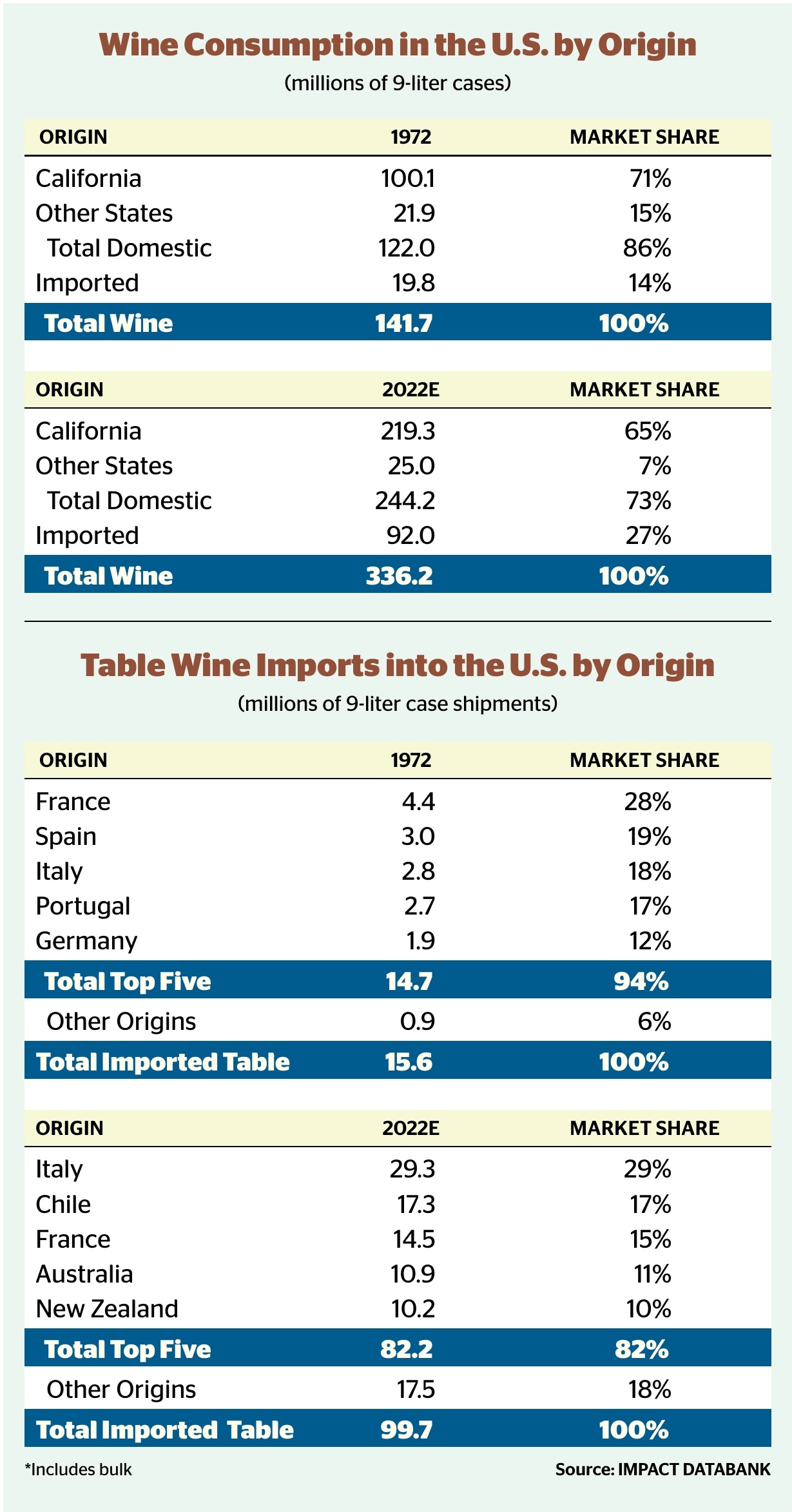
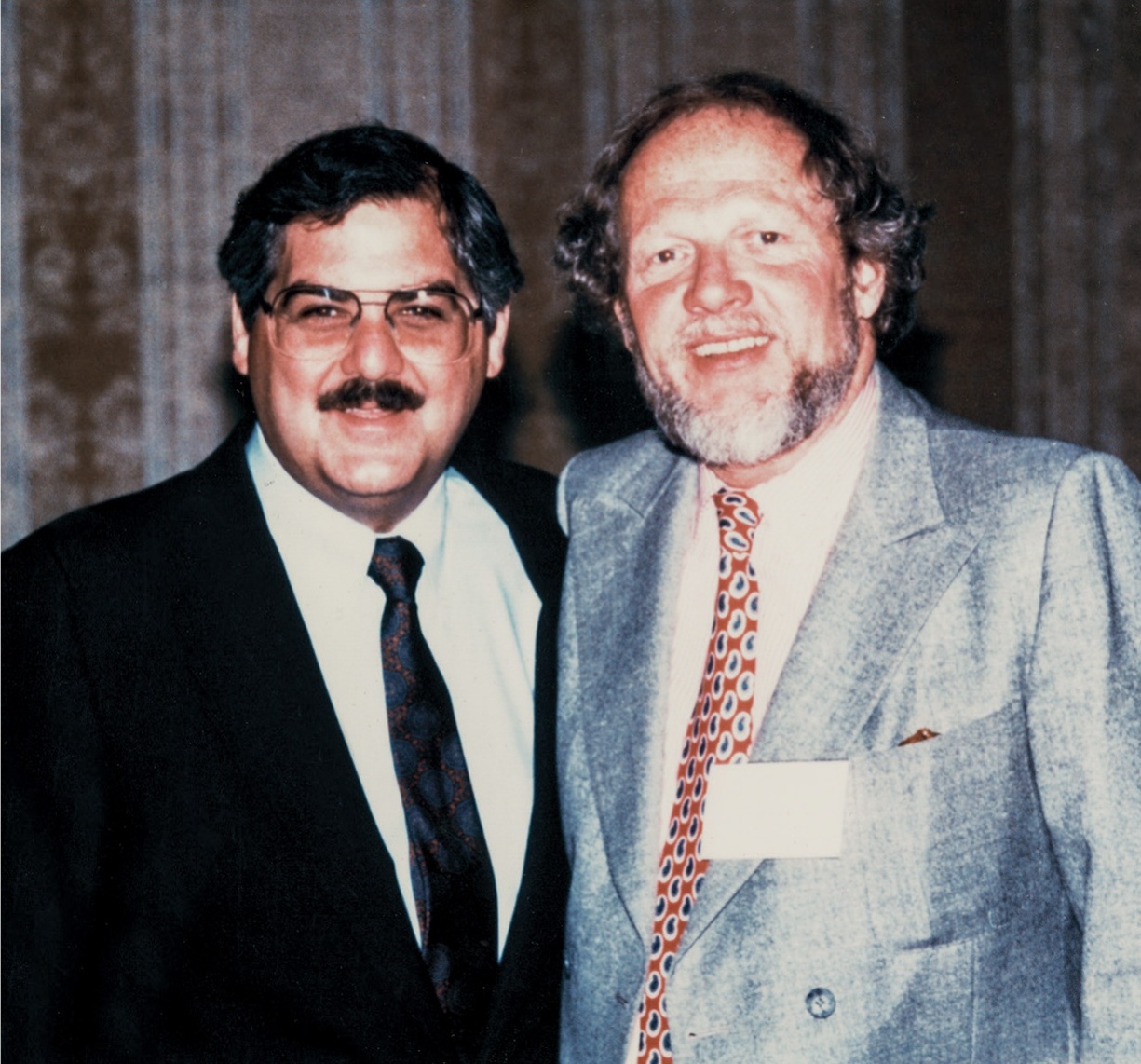
Marvin R. Shanken and wine industry veteran Terrence Clancy in 1987.
Other deals were getting done in 1987, too. National Distillers and Chemical Corp. (NDCC) sought a buyer for its National Distillers Products Co. (NDPC) unit, which included DeKuyper and Windsor Supreme. It would be sold to Jim Beam that year for $545 million, catapulting Beam to the No. 3 spot in spirits, behind International Distillers & Vintners (IDV) and Seagram. British grocery group Argyll sold its U.S. drinks unit, Barton Brands, to a management group led by Ellis Goodman for $47 million.
Schieffelin & Co. (Moët Hennessy) and Distillers Somerset Group (Guinness) launched a joint venture in August 1987 to be helmed by J. Penn Kavanagh. The new venture—Schieffelin & Somerset—leapt to the forefront of modern added-value drinks marketing, with a luxury portfolio including Hennessy, Johnnie Walker and Moët & Chandon.
There was also upheaval for California wine. NDCC sold Almaden to Heublein, and Seagram sold Paul Masson and Taylor California Cellars to Vintners International, a group led by longtime industry player Paul Schlem and Seagram executive Michael Cliff. Seagram thus departed the jug-wine scene, turning its California focus to its higher-end Sterling, Monterey and Domaine Mumm brands. In the space of a decade, family-owned E. & J. Gallo had defeated two corporate marketing stars in the California wine wars—Coca-Cola and Seagram.
In the beer business, two of Belgium’s largest brewers—Artois and Piedboeuf—combined to form Interbrew in 1987. At the time, the deal barely caused a ripple in the U.S. market, where Anheuser-Busch was the top dog, Miller and Coors were formidable second- and third-ranked players and the leading European imports included Beck’s and St. Pauli Girl. But Corona Extra was starting to soar, nearly tripling its volume in 1986 from 5 million cases to 13.5 million cases. Corona was now easily the biggest Mexican import, though still far behind Heineken’s 35.7 million cases.
Elsewhere, Miller Genuine Draft was launched nationally 1986 in a $20 million effort. Genuine Draft was produced without pasteurization, using cold filtration technology acquired from Japan’s Sapporo Breweries. The success of the bottled “draft” beer created huge buzz in the brewing business.
In 1986, New York state finally legalized the use of credit cards in liquor stores, and retailers reported significant sales increases as a result. The next year, a court ruling in the Empire State removed liquor retailers’ guaranteed 12% profit and permitted price promotions, continuing a retail deregulation trend that began at the start of the decade. Ads with price promotions appeared almost immediately and sales increased. Mom-and-pop stores were angered by the ruling, which clearly favored the larger discount operators.
Tequila was starting to catch on, as Jose Cuervo passed the 1 million case mark in 1986. Australian wine was still under the radar, with total volume of around 150,000 cases. Flavored vodka was beginning to find its footing, with a big boost from Absolut, which introduced its first flavored line extension, Absolut Peppar, in 1986. Citron would follow in 1988 as Absolut stepped further into the flavor arena.
In a sign of things to come, the U.S. brewing industry was shaken up in 1987 by the entry of an overseas player when Australian tycoon Alan Bond acquired G. Heileman Brewing Co.—then America’s fourth-largest brewer—for a whopping $1.3 billion. It would be a disastrous move for Bond, who had dreamed of internationalizing his beer business, which included Australian brands Castlemaine XXXX, Swan and Tooheys. Bond’s empire later collapsed in debt and Heileman floundered.
At Anheuser-Busch, meanwhile, Bud Light kept charging ahead—with the help of a four-legged friend. Spuds MacKenzie, an English bull terrier, achieved national stardom as the Bud Light spokesdog. Sales of Bud Light rose by 22.2% to 6.6 million barrels in 1987. But Spuds eventually landed Anheuser-Busch in the doghouse, as the brewer came under fire for supposedly marketing to children with the cuddly mascot.
By the late 1980s, it was evident that the drinks industry was facing staunch challenges. Per-capita consumption of spirits had plummeted by 23% from 1980 to 1987, wine had fallen by 14% and beer had declined by 7%. Because of heightened awareness and enforcement of drunk-driving laws, alcohol consumption in restaurants had slipped by 17% during the same period.
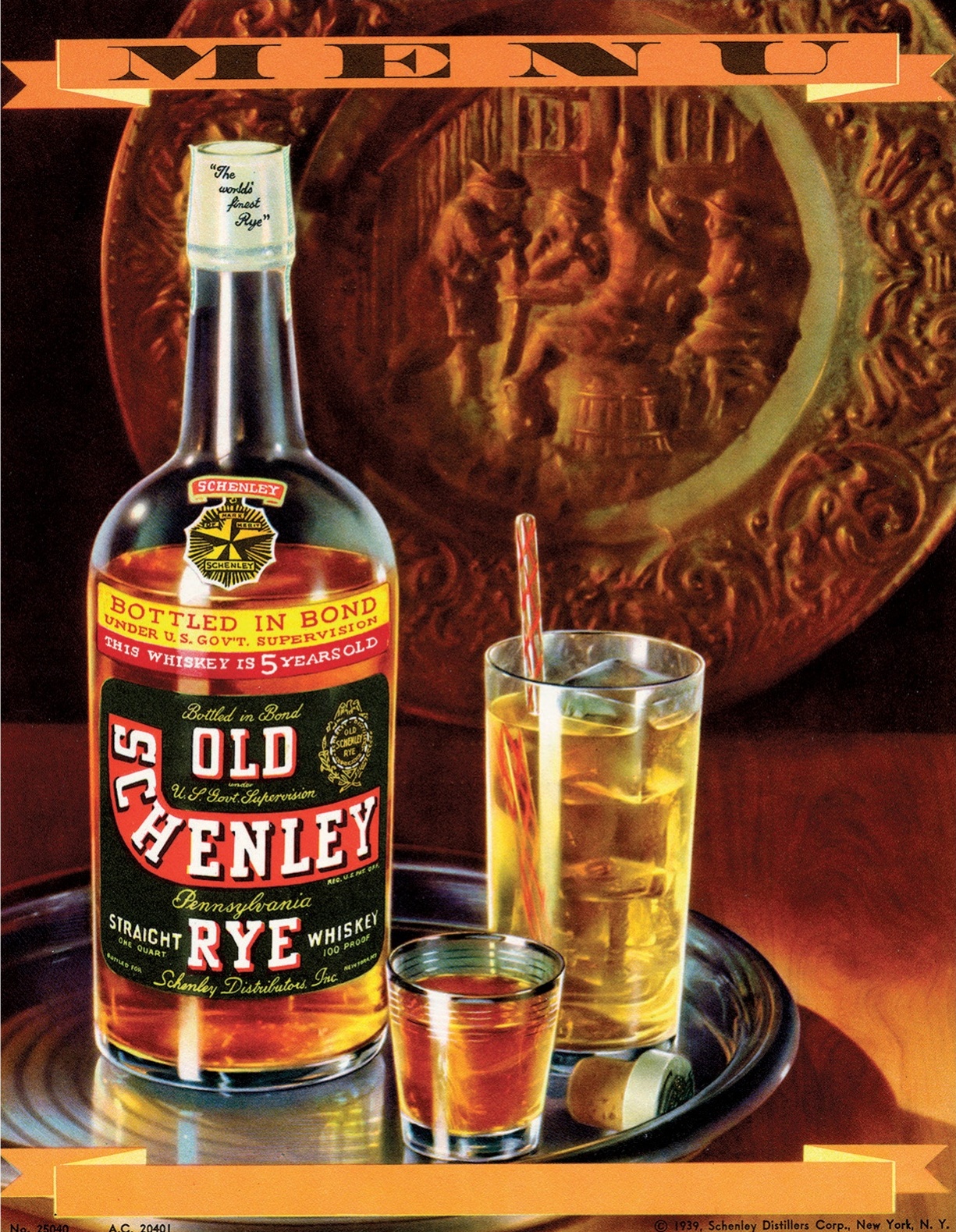
Led by whiskies like Old Schenley rye, Schenley Industries was a powerhouse for decades. The company was acquired by Guinness in 1987.
In the face of such numbers, the game now became all about adding value. In that light, one product on every supplier’s wish list was a Cognac brand. By late 1987, Seagram and IDV/GrandMet had become entangled in a battle for Cognac producer Martell & Cie, and their wild bidding war dominated the news. Seagram won Martell in early 1988, paying just under $1 billion. But Asia’s Cognac boom—much the basis of Martell’s rich price tag—soon went bust. Seagram developed a global campaign for Martell and tried to revive sales in Asia, but then missed out on the start of America’s own Cognac boom in the 1990s. Seagram also purchased Tropicana from Beatrice Foods in early 1988 for $1.2 billion in an ongoing effort to diversify its product base.
GrandMet tried to do another deal later in the year, teaming up to buy Irish Distillers. That effort led to a messy bidding war with Pernod Ricard—and a regulatory tangle with the Irish government. Pernod eventually got Irish Distillers for $440 million. Its bid was actually lower than GrandMet’s $510 million offer, but the Irish government disliked GrandMet’s purported plans to split up the company. It took until 2005 for GrandMet’s descendant, Diageo, to acquire an Irish whiskey—Bushmills, from Pernod.
As the ’80s neared their close, spirits marketers were finally coming to grips with the problem of couponing. Coupon offers of $5 and $10 accompanied luxury brands like Chivas Regal and Johnnie Walker Black, still creating a discount image for the industry’s premier assets. Many brands wouldn’t abandon coupons completely for fear of huge volume losses, so the effort was still a work in progress.
“We have to send these brands to the methadone clinic,” said Schieffelin & Somerset president J. Penn Kavanagh at the time. S&S started the year having halted all couponing, and Seagram followed suit with Chivas Regal. But efforts to move upscale were ongoing. Scoring one for added value, Carillon president Michel Roux launched upscale Bombay Sapphire in 1988 to great acclaim.
With the 1990s on the horizon, Japanese “dry beer” brands, led by Asahi Dry, launched a mini-invasion in the United States. Their supposed attributes included a smooth mouthfeel and lack of aftertaste. Domestic brewers, sensing a boom, soon introduced their own versions. Anheuser-Busch gave domestic dry beer instant respectability with Michelob Dry—the first serious domestic contender. Many others would soon follow—including Bud Dry.
The introduction of Bud Dry and the continued growth of Bud Light (up 12.6% in 1989) were blamed when Budweiser lost ground in 1989, after more than two decades of uninterrupted growth. In truth, it was the start of a long period of decline for the King of Beers, which still continues. Corona Light made its debut in 1989 as one of the earliest light imports after Amstel Light.
Wal-Mart launched its first Supercenter, in Washington, Mo., in 1988, featuring a grocery area and 36 general merchandise departments. And distributor McKesson Corp. exited the business to concentrate on its pharmaceuticals operations, selling its wine and spirits operations to a group led by the unit’s then-president, Ray Herrmann. He streamlined it into a four-state distribution company (Maryland, Florida, South Carolina and Arizona) and renamed it Sunbelt Beverage Corp.
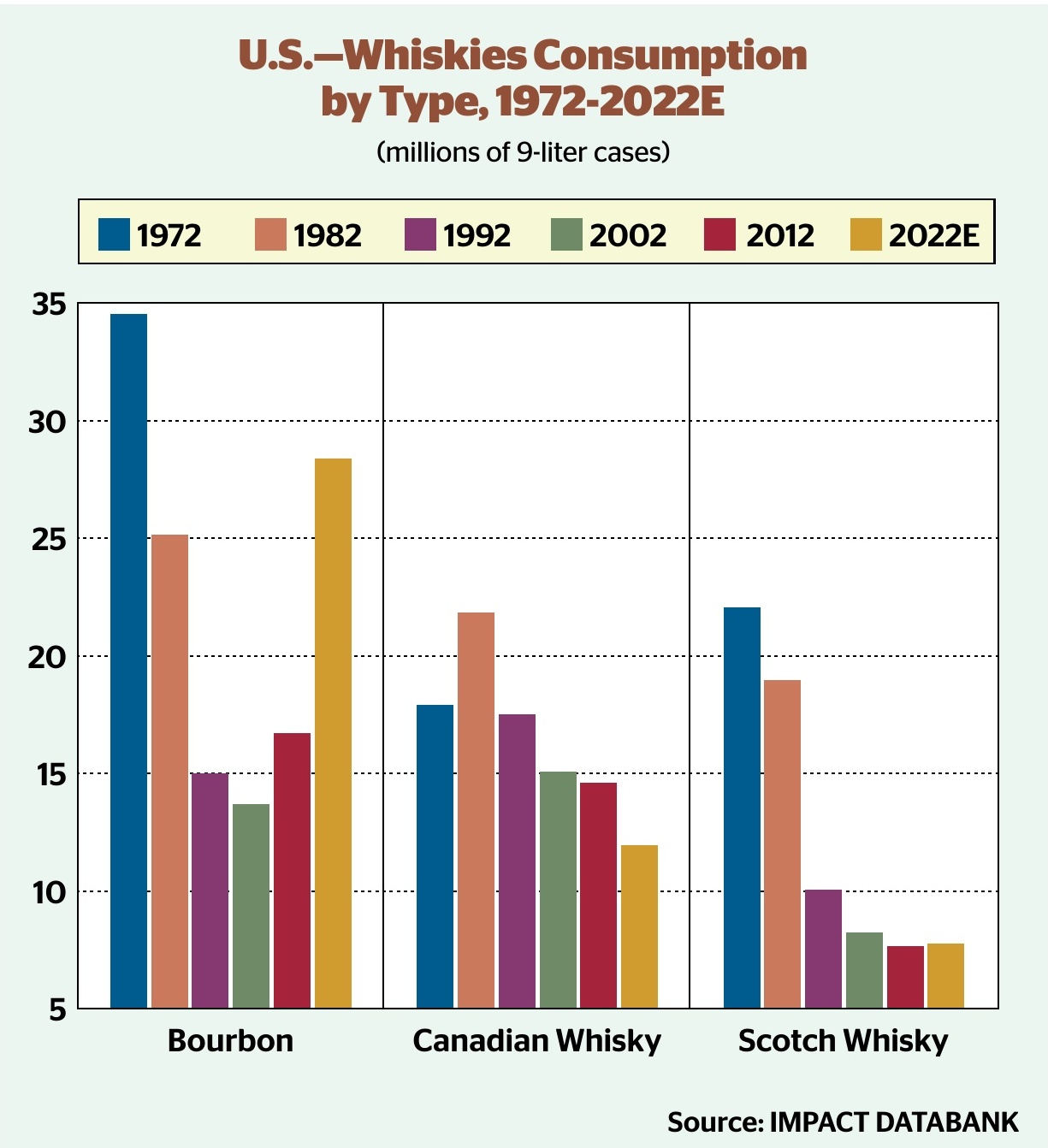
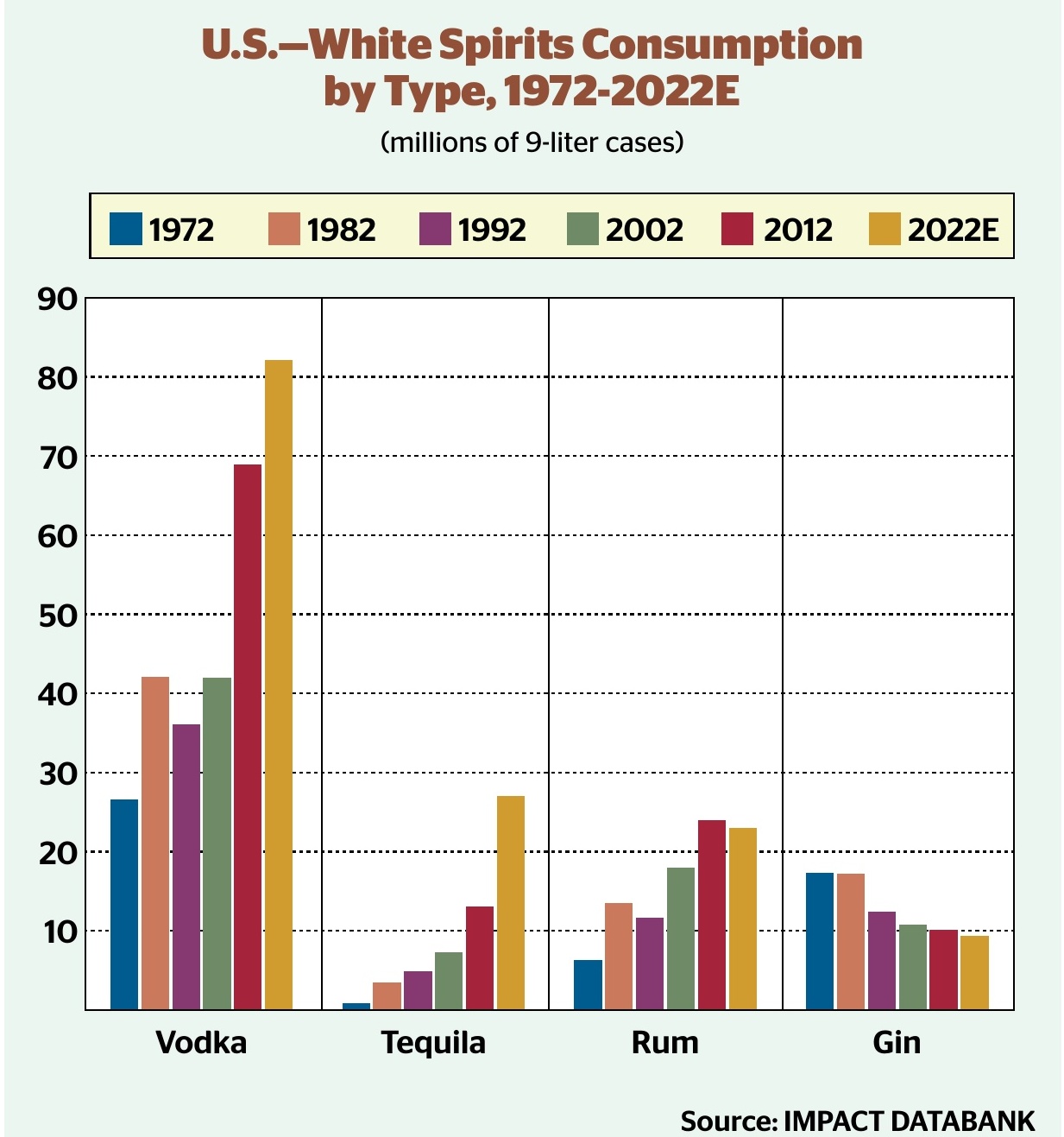
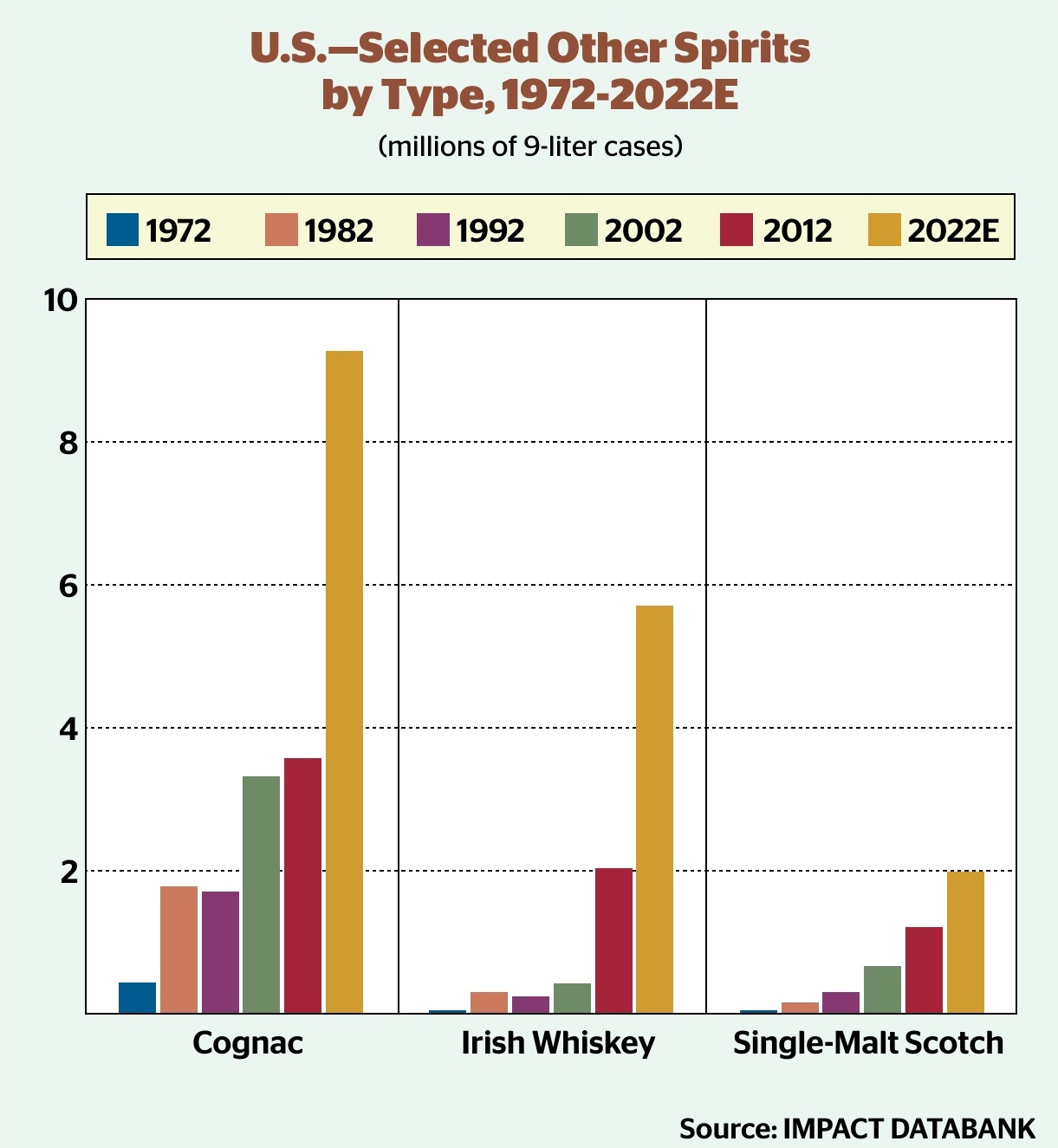
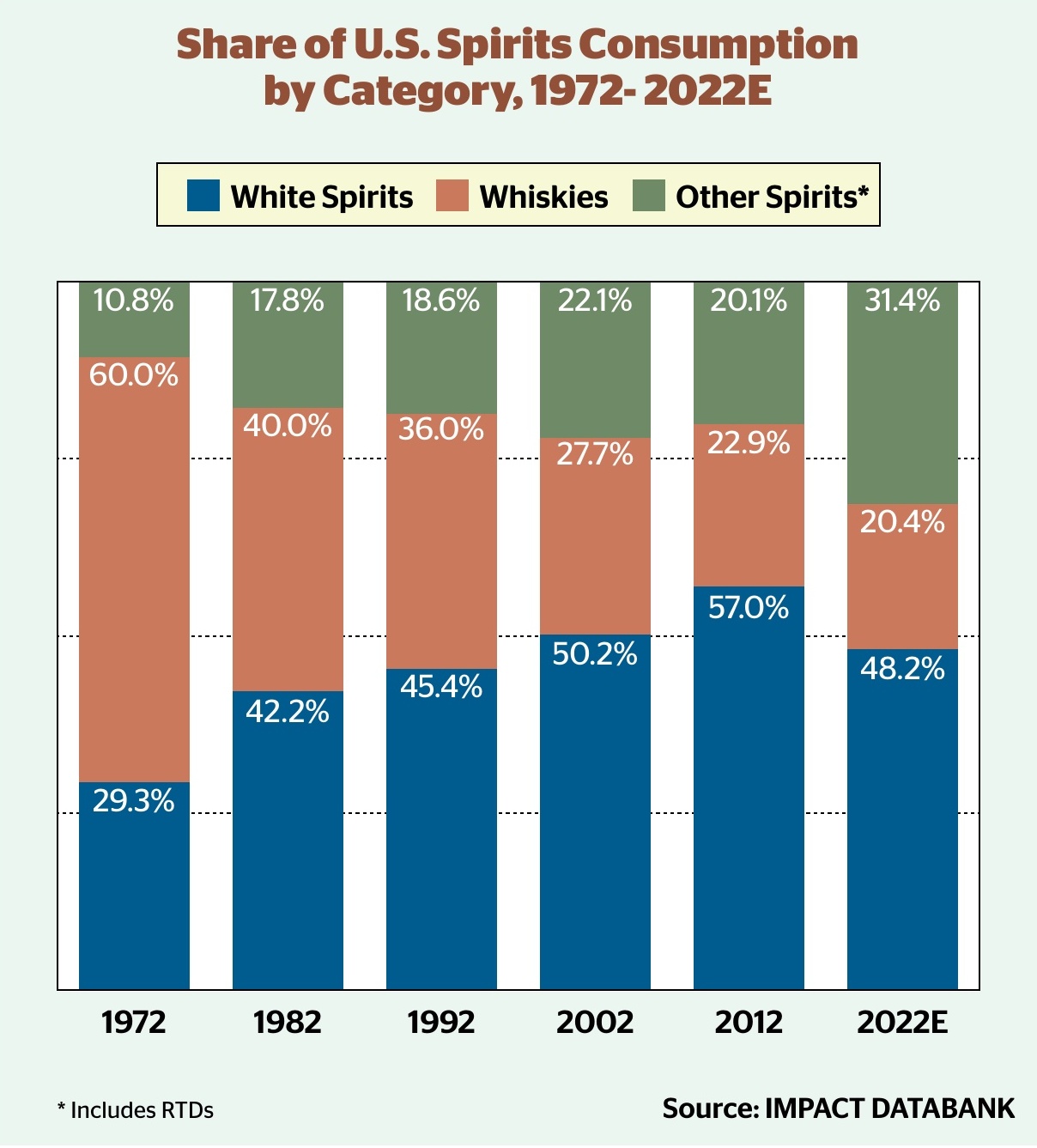
The 1980s ended with enormous uncertainty in the drinks industry. Along with declining consumption, the anti-alcohol movement gathered steam, particularly in California. The state began requiring all licensed establishments to post large, highly visible posters warning about health risks of alcohol. A new California anti-toxins law included alcohol on a list of over 200 carcinogenic substances.
“In Americans’ minds, alcohol is more and more linked to the use of illegal drugs,” said Edgar Bronfman Jr. at the 1989 Impact Seminar in New York. “In the U.S., with the exception of Prohibition, alcohol has never faced a more hostile environment than it does today.”
Echoed IDV chairman George Bull: “The anti-alcohol lobby is the enemy of our trade. We have to fight it on a collective basis. If we don’t, it will consume us.”
In the spring of that year, U.S. Surgeon General C. Everett Koop endorsed equalization of the federal excise tax for wine, spirits and beer—and adjusting the rate for past inflation. Koop also called for a drunk-driving blood-alcohol content threshold of .04% by 2000; a ban on alcohol brand sponsorship of all athletic events; and an end to endorsements from celebrities with any sort of youth appeal. A front-page article appeared in The New York Times that spring carrying the headline: “A New Temperance Is Taking Root in America.”
In November 1989, warning labels were mandated for placement on all alcoholic beverage containers. The warnings, the same as those found today, were actually far less severe than the original wording proposed by South Carolina Senator Strom Thurmond. His label included a preamble citing alcohol as “the most abused drug in America.” It involved five rotating messages, all citing the various health and safety risks attributed to alcohol. The industry had won a compromise, but the labels still were a stinging defeat. Winemakers, led by Robert Mondavi, sought to separate themselves and gain an exemption, to no avail. In the end, the impact of warning labels was far less severe than anticipated, and they actually provided protection from litigation.
The industry moved on. Bernard Arnault became chairman of LVMH (Moët Hennessy Louis Vuitton) in January 1989, winning a bitter boardroom feud and cementing Guinness (now Diageo) and LVMH into a partnership that exists to this day. In July, Edgar Bronfman Jr. ascended to the throne, becoming president and chief operating officer of The Seagram Co. Ltd. Elsewhere, Southern Wine & Spirits’ annual revenues passed the $1 billion mark for the first time. Glazer’s merged with Southern in 2016; today Southern Glazer’s Wine & Spirits has revenues of $24 billion.
“Adding value” and “drinking less but better” were now more than slogans, as companies began jettisoning low-margin products to concentrate on fewer, higher-end brands. Seagram sold off 17 low-end spirits brands to various buyers. Hiram Walker did likewise, selling 11 non-premium spirits brands to Barton. In a world of disappearing volumes, distillers were rapidly reinventing themselves.
Whitbread, after acquiring James Burrough and its Beefeater Gin brand only two years earlier, sold out to Allied-Lyons and exited the spirits business. Whitbread’s brief sojourn roiled the industry. Beefeater had four different marketers in the space of two years and the once-iconic gin brand suffered enormously. It would never fully recover. Having already sold Fleischmann’s in 1988, Whitbread also sold Buckingham Wile, in 1989.
In June 1989, Vinexpo, the bi-annual Bordeaux wine trade show, was beset by a searing heat wave, creating conditions too unbearably hot for wine tasting or deal-making. Organizers pledged to air condition the giant exhibition hall for subsequent shows. But the heat produced the great 1989 vintage, capping off an incredible decade for Bordeaux.

THE NEW YORK TIMES
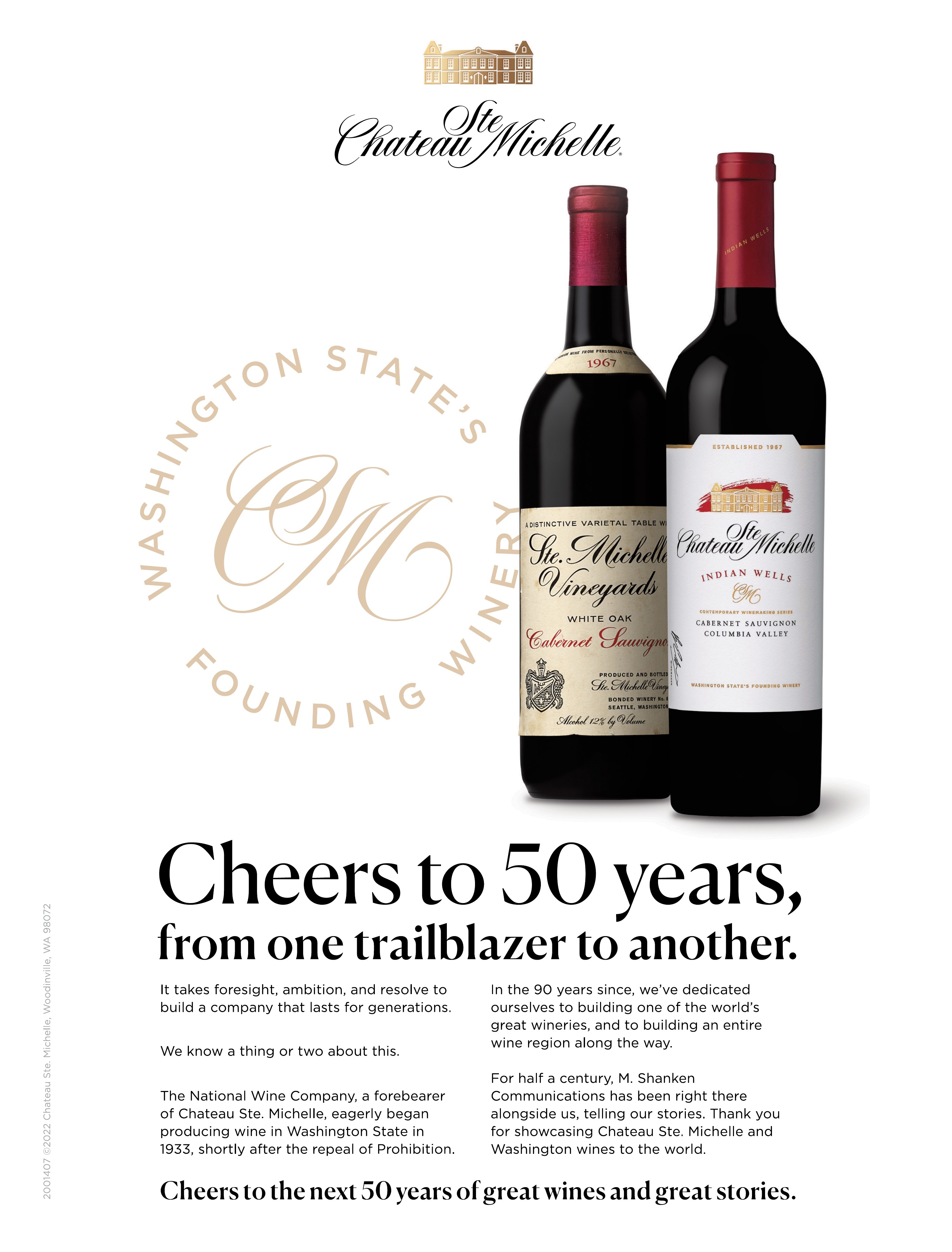
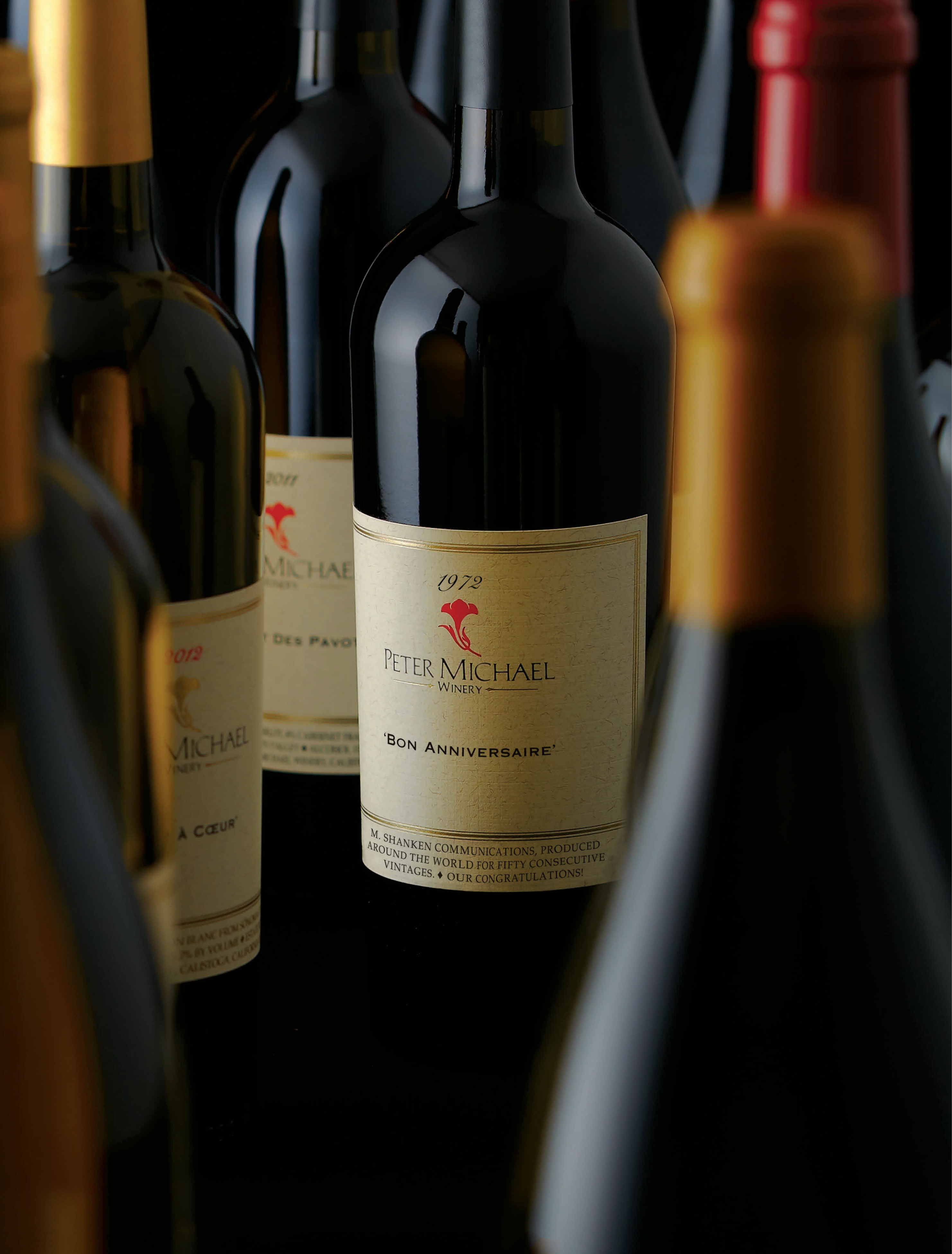
THE DRINKS INDUSTRY 1972-2022
The 1990s
Bolstering Brands, Growing Giants
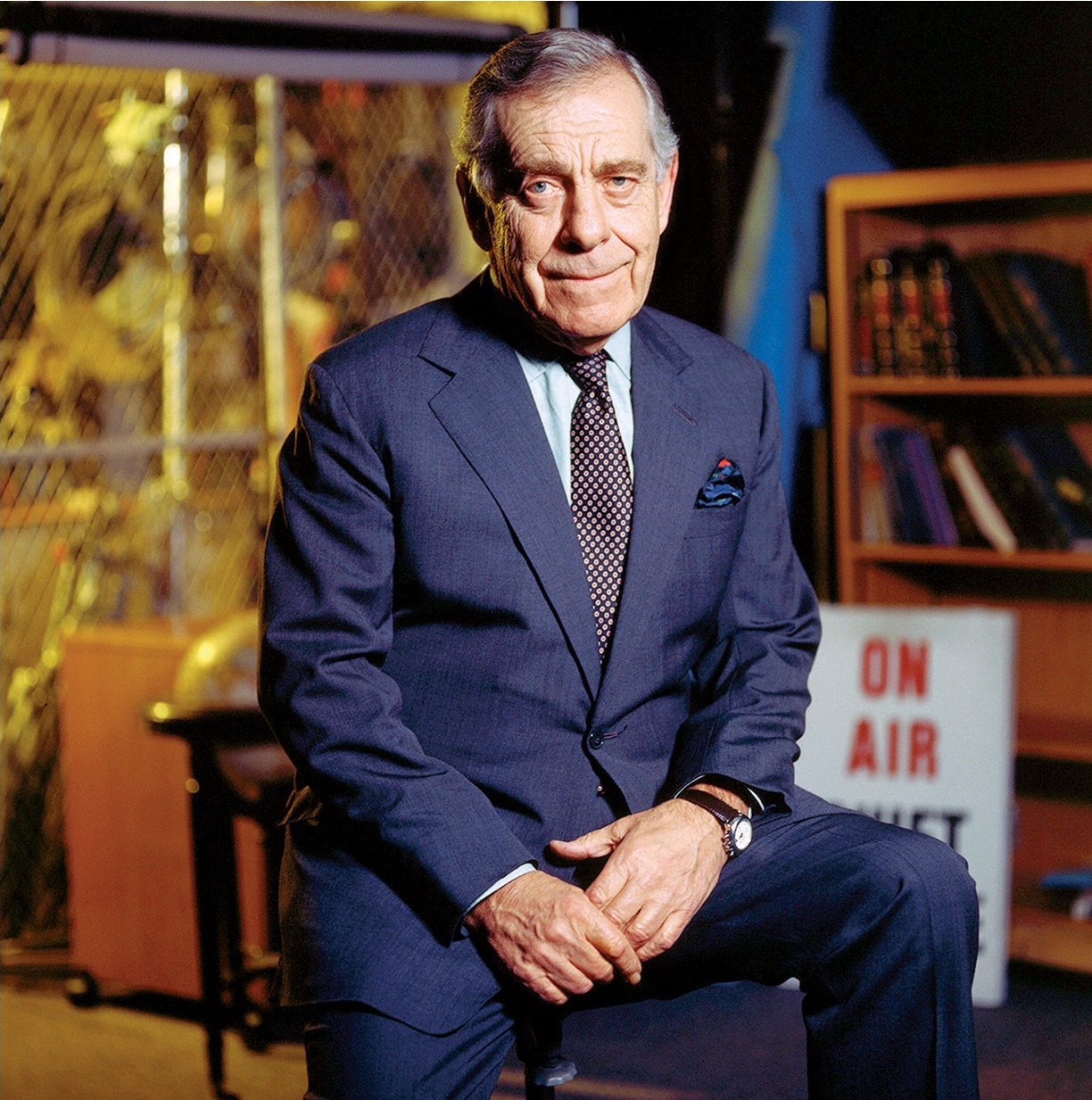
In 1991, Morley Safer of 60 Minutes reported on “The French Paradox,” propelling red wine to enormous gains in the ensuing weeks. Safer later spoke at the 1993 Impact Seminar.
A s the 1990s began, the operative word in the beer category was “dry.” After introducing Bud Dry in 1989, Anheuser-Busch gave it a huge push in 1990 with a $70 million budget, then the largest ever for a new product. Most other brewers were also launching dry expressions. “Dry beer could equal the light beer category in size,” A-B president and CEO August Busch IV said at the time, predicting it would have 10% of the beer market by 1995 and 25% in the longer term. It never did. The category hit 4.7 million barrels in 1990, with Bud Dry the star performer. That was the high-water mark. The well has since gone dry for dry beer, which became an afterthought long before Bud Dry was discontinued in 2010.
Budweiser wasn’t the only big beer brand that was struggling. In 1991, Miller Lite lost volume for the first time in its history. The company’s new star was Miller Genuine Draft, which rose at double-digit rates. Budweiser, meanwhile, posted its third straight year of decline. Heileman filed for Chapter 11, and Alan Bond’s original $1.3 billion investment in the Wisconsin-based brewer was now valued at $300,000. Bond relinquished control of his brewing interests in 1990.
Corona Extra was also having problems. After booming from 1985 to 1987, Corona posted its third straight year of decline in 1990, falling by 18% to 13 million cases. The Corona craze appeared to be over.
The environment got even tougher for Corona—and the entire beer business—when Congress passed, and President George H.W. Bush signed, a bill doubling the federal excise tax (FET) on beer from $9 to $18 a barrel. Distillers were hit with an 8% increase, from $12.50 per proof gallon to $13.50. Wine’s FET rose by $0.17, to $1.07/ 750ml. A recession, which had begun to bite in the second half of 1990, lingered into the new year. Unemployment was at 6.8% and consumer confidence was low.
But the setback proved to be temporary—particularly for Corona. After one more year of decline in 1991, the Mexican brew absorbed the FET hike and launched a long-term upturn. In a sign of the consolidating times, Van Munching & Co., Heineken’s U.S. importer since Prohibition’s end, was acquired by Heineken NV and renamed Heineken USA. Heineken, at 30.2 million cases, was still more than twice as big as Corona.
C. Everett Koop kept up his assault on the beverage alcohol industry, recommending a complete ban on all beer and wine broadcast ads, in line with spirits practices at the time. In Congress, the Sensible Advertising and Family Education Act of 1990, proposed by Rep. Joseph Kennedy and Senator Al Gore, called for a strict set of warning labels to appear on a rotating basis for both print and broadcast ads. That effort ultimately failed. In California, the Tax Act of 1990 proposed raising nearly $1 billion from alcohol taxes in the law’s first year alone. Voters decisively rejected it.
The industry also got some good news from one of America’s most popular TV shows. In November 1991, CBS’s 60 Minutes broadcast a report titled “The French Paradox,” which explored the connection between France’s high red wine consumption and its low rates of heart disease. Suddenly Americans began buying red wine in droves. Market researcher IRI reported a 44% surge in red wine supermarket sales in the ensuing four weeks. The story effectively linked wine—and, by extension, all drinking—with good health. It came at a time when the industry sorely needed a boost, and marketers went into overdrive to spread the word.
Absolut began the 1990s in fine form, smashing the 2.5 million case mark to hit 2.7 million cases. The brand’s growth since 1985 had been an astounding 31.6% and it was now twice the size of erstwhile rival Stoli. The only brand approaching Absolut’s performance was Jose Cuervo, which passed the 2 million case milestone in 1990 and had risen by 15.5% from 1985 to 1990.

Imported wine, already slowed by a weak dollar, was clobbered by a ban on procymidone in 1990 and suffered a volume loss of 12.4%. Procymidone was a chemical fungicide used in Europe but not approved for use in America. The Environmental Protection Agency held up all shipments of wines containing procymidone while it reviewed the findings–a process that took the remainder of the year, burying sales for the crucial holiday season. France suffered worst, but Italy and Spain also were hurt. For wine importers, the controversy was the story of the year. But everyone was also talking about Chile—a rising import star that had grown tenfold in a decade and rose by 57% in 1990 to nearly 1 million cases.
White Zinfandel continued its charge, rising 21% and leading all California varietals at 14.5 million cases. White Zin had passed 10 million cases only two years earlier. Sutter Home led the field, breaking the 3 million case mark. Chardonnay and Cabernet also were surging. Merlot stood at a mere 600,000 cases and Pinot Noir wasn’t even a blip. Among the generic wines, Vintners International began major layoffs and chairman and CEO Paul Schlem resigned in late summer. Partner Michael Cliff had already departed in the previous year. The company, launched from the buyout of Seagram’s jug wines in 1987, was drowning in debt.
In Wilmington, Del., Total Wine & More—then known as Liquor World—opened its first store in 1991, a 12,000-square-foot unit. Owners David and Robert Trone dreamed of expanding the business even then. Today, Total Wine & More operates 245 stores in 27 states, with sales of $5.5 billion.
Since the mid 1980s, hotel chains, national account restaurants and independent operators had been witnessing a steady shrinkage in alcohol’s importance to their business. Societal trends like greater health consciousness, stiff drunk-driving laws and an aging baby boomer population had taken their toll. On-premise operators were simply paying less attention to the bar. But by the early 1990s, there were signs of a comeback and operators were reporting alcohol sales gains. Big names like Red Lobster and Olive Garden were now opening 45 to 50 new units a year, and they were placing greater emphasis on the bar.
Maurice Kanbar, a highly successful entrepreneur in various fields, tried his hand at the spirits business in 1992 with the launch of Skyy Vodka. At first, Skyy was packaged in a rather dull-looking, clear bottle. Its main selling point was a distilling process that removed enough congeners (toxic impurities) to make it hangover-proof. A year later, Skyy shifted gears and unveiled its signature blue bottle, which soon became a hit. Kanbar would later recruit three seasoned industry veterans—former IDV executives Tony Foglio, Gerry Ruvo and Keith Greggor—to run the business. By 1995, Skyy had won its first Impact “Hot Brand” award, the first of many. Early on, Skyy established high standards for brand imagery and it became a leader in the spirits renaissance of the 1990s. Kanbar died in 2022.
Dallas-based Schenley Industries, one of the modern drinks industry’s great names, finally closed its doors in 1992. Owned by Guinness since 1987, its operations had been integrated into other Guinness U.S. operations. Guinness also dismantled Glenmore, which it had acquired in the previous year. The move was yet another defining moment in the industry’s long process of consolidation and modernization. The old order was crumbling fast.
In September 1992, Marvin R. Shanken launched Cigar Aficionado magazine, a move that inspired new interest in premium, handmade cigars and spurred a boom in cigar sales nationwide.
In 1993, a few years after its acquisitions of Irish Distillers and Jacob’s Creek producer Orlando Wyndham, Pernod Ricard forged a partnership with the Cuban government to market Havana Club rum. In time, the Cuban rum brand would become a major global player, selling around 4 million cases annually despite its absence from the world’s largest premium rum market: the U.S. While it would still be years before Pernod would be known for its blockbuster deals, the French company was clearly indicating its bold stance on mergers and acquisitions with these moves.
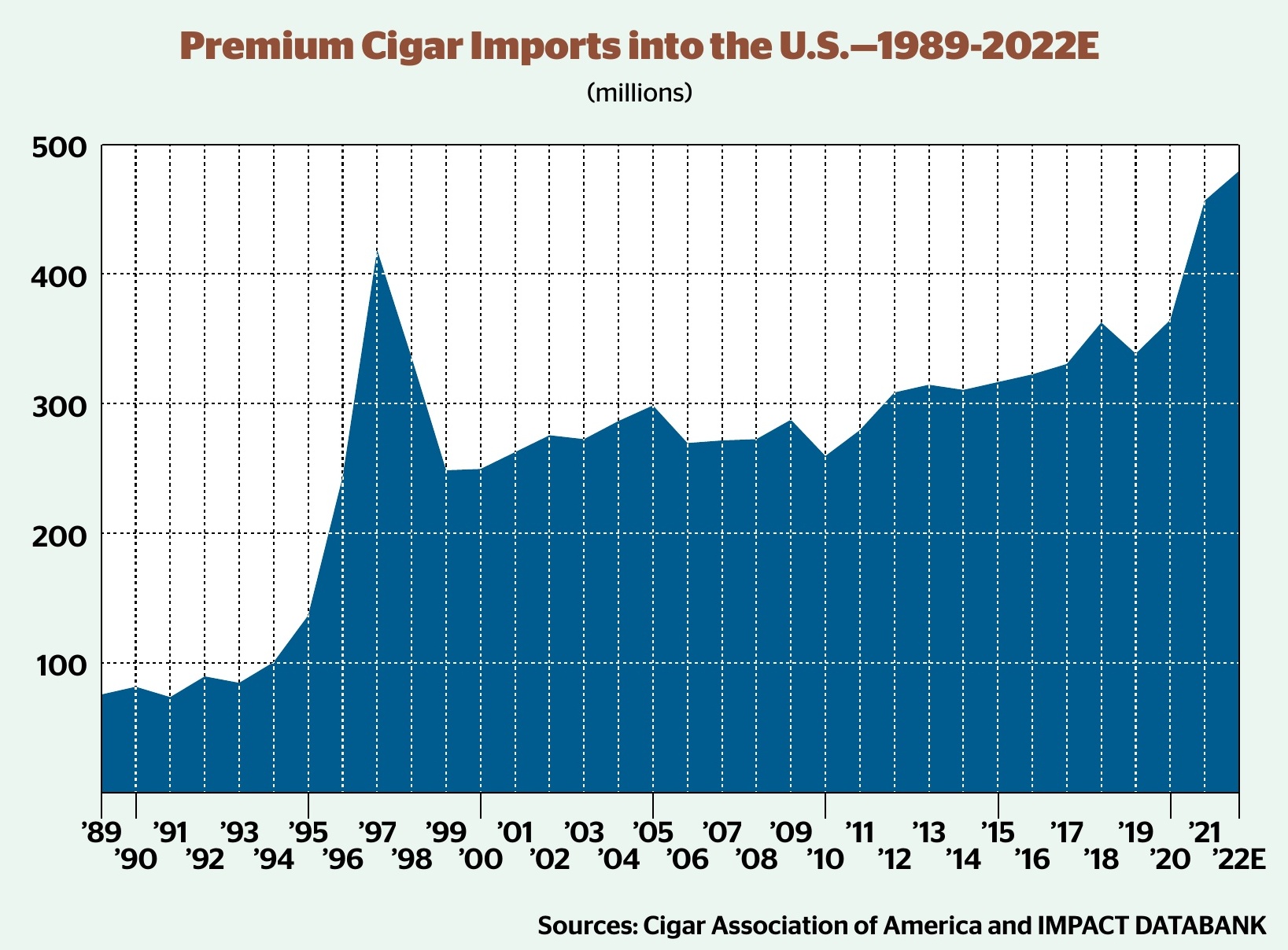
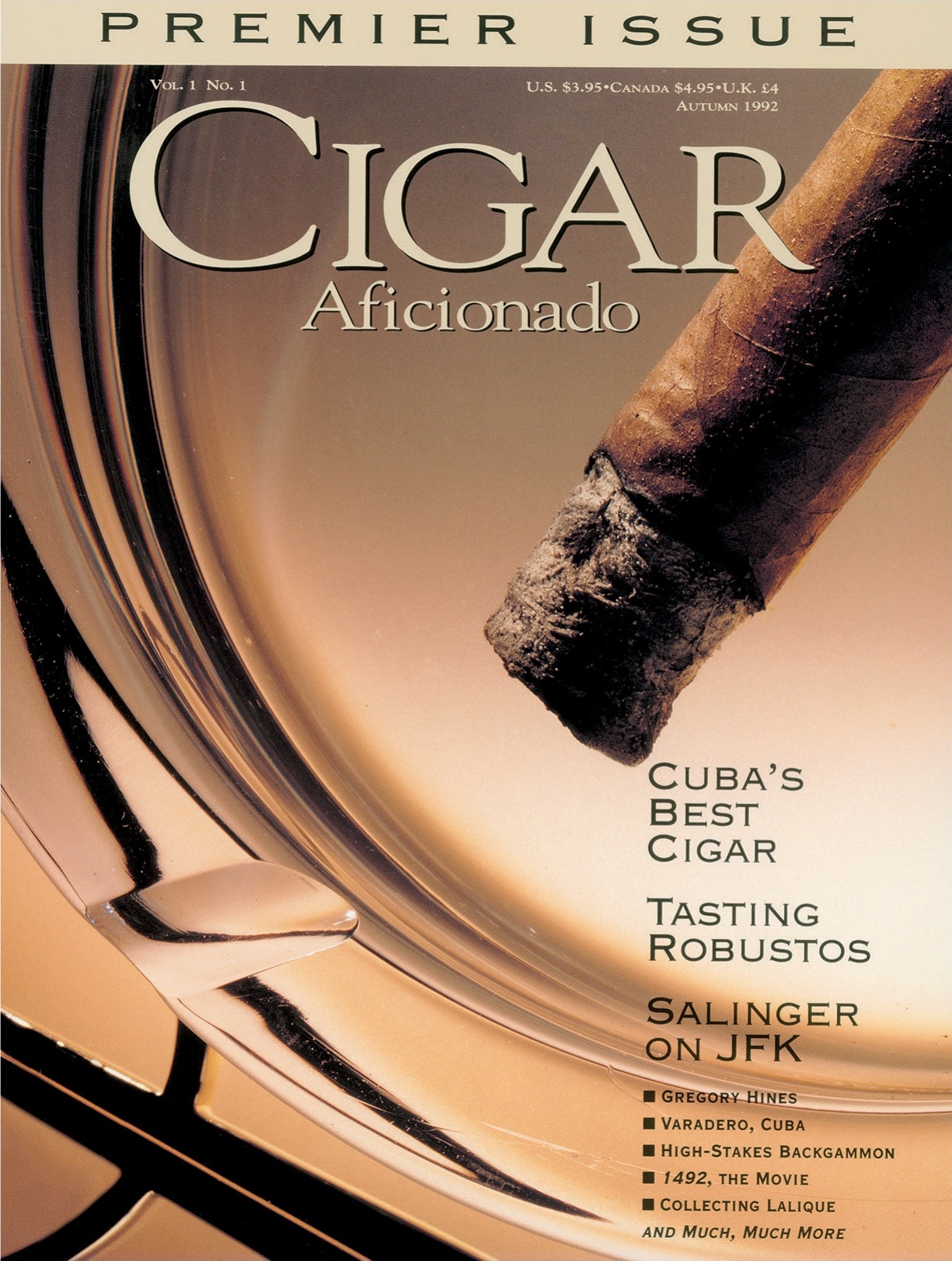
The first issue of Cigar Aficionado hit newsstands in the fall of 1992.
April 2, 1993 was “Marlboro Friday”—a day of infamy in brand marketing. Philip Morris announced a 20% price cut on its flagship cigarette brand to compete against bargain-priced players that had been stealing market share. The company’s stock price plunged. Other consumer-brand companies’ shares followed. Media stories heralded “the death of the brand.” A new generation was shunning brands and embracing simpler, value-driven products, the theory went.
Early the following year at the Impact Seminar in Miami, Grand-Met chairman George Bull would raise the rafters in an impassioned defense of brand value. “Fashionable theories about alcoholic drinks are no more than ripples on the surface of a great ocean,” Bull intoned. “Brands are the building blocks on which the whole industry rests.” His was a lonely voice at the time, but he was ultimately proven correct. High-margin, image-driven brands with huge ad budgets returned to dominate the 1990s and beyond.
Those brands were increasingly being sold at the large retailers who had begun sprouting around the U.S. In October 1993, Chicago retailer Harold Binstein opened a Binny’s Beverage Depot in the suburb of Des Plaines, Illinois. It was the nation’s largest liquor store at the time, spanning 30,000 square feet, just topping the 25,000-square-foot outlet of Total Beverage in suburban Washington, D.C.
Meanwhile, the deal-making frenzy continued. Bacardi, in its biggest acquisition to date, purchased Martini & Rossi for $1.4 billion in 1992. Bacardi was now no longer a one-category player and its international presence was greatly expanded. That same year, Brown-Forman acquired Fetzer Vineyards for $82 million. Constellation bought Barton for $142 million the following year, gaining Western import rights to Corona Extra and a spirits portfolio. Constellation also bought Vintners International for $149 million in 1993, winning Paul Masson, Great Western and Taylor California Cellars. Meanwhile, Guinness sold off 70 spirits brands to Heaven Hill and Luxco, as the bigger companies’ portfolio streamlining continued.
California varietal wines finally passed generic labels in 1993—a historic milestone in a nearly decade-old trend. And in beer, “ice” replaced dry as the new buzzword. Ice beers—brewed below freezing—quickly gained a foothold and soon every major U.S. brewer had an ice beer (or several) in their portfolio.
Following a nearly 15-year run that was nothing short of remarkable, Absolut moved to a new marketer in early 1994: the mighty Seagram. Carillon and Michel Roux, who had built Absolut into an icon, were out. IDV, which owned Carillon (its parent company, Grand Metropolitan, had obtained the drinks marketer via its 1980 acquisition of the Liggett Group), had been stripped of its most profitable asset. At the time, Absolut had become one of the market’s biggest spirits brands, with annual sales approaching 3 million cases. The V&S–owned vodka was even stronger in value terms, as its upscale positioning priced it higher than nearly any other top brand.
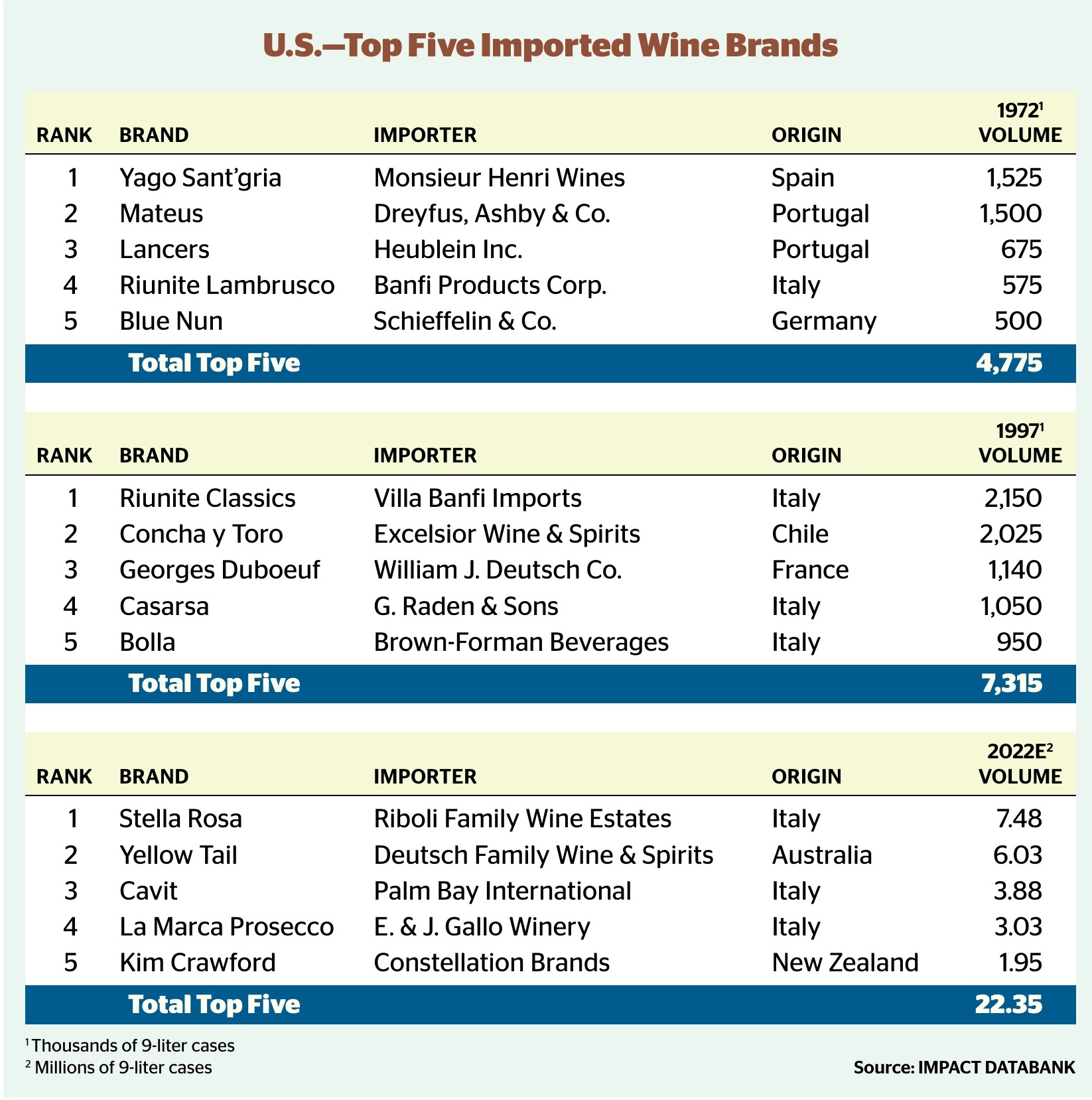
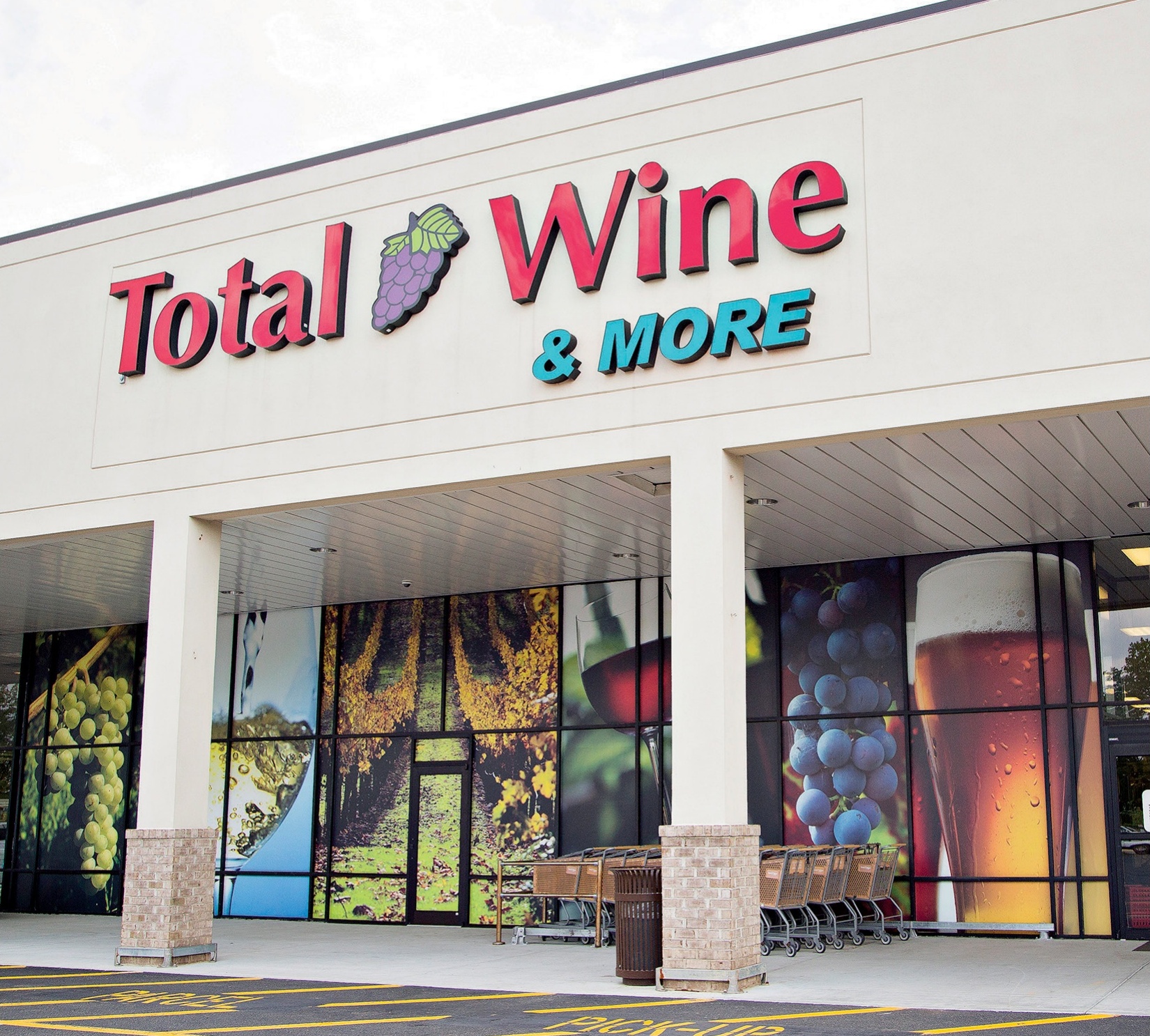
Total Wine & More opened its first store in 1991. Today, it operates 245 stores in 27 states, with sales of $5.5 billion.
IDV struck back—gaining the marketing rights to Stolichnaya from PepsiCo in early 1994. Carillon and Roux were back in the saddle with Stoli. Roux did an excellent job with Stolichnaya, rolling out an extensive new flavor line, which was far ahead of its time. But the marriage would last only a few years. IDV (later to become Diageo) tired of Russia’s business complexities and turned its energies to Smirnoff. Roux left after the Diageo merger in 1998 to form Crillon Importers. As for Absolut, Seagram handled the brand admirably until 2001 when Seagram exited the business and marketing rights went to the Future Brands joint venture between Jim Beam and V&S.
At around the same time as the Absolut shift, Allied-Lyons acquired Pedro Domecq for $1.1 billion. The Domecq portfolio consisted mainly of brandies such as Presidente, Don Pedro and Centenario. But Domecq also owned Sauza, which eventually proved to be the deal’s big prize. In September 1994, Allied-Lyons changed its name to Allied Domecq. That same year, Constellation Brands acquired Mission Bell Winery from Heublein for $121.3 million, gaining the Almaden and Inglenook brands. Canandaigua’s goal of the previous decade was achieved: It now owned all the GAMIT wines except Gallo.
California’s wine industry was experiencing growing pains as the state now had more than 800 commercial wineries, compared with 250 back in 1970. (Today there are more than 4,200.) Vineyard replanting after phylloxera had proven expensive, with cost estimates skyrocketing to nearly $1 billion.
Bud Light finally overtook Miller Lite to become the U.S. market’s top light beer in 1994, capping a mission begun when Bud Light was launched in 1982. Molson Ice rocketed to third place among imported beer brands, at 16 million cases.
Former Liquor Barn executive Steve Boone came back on the scene in 1994, acquiring some of the Liquor Barn outlets and transforming them into California retailing giant Beverages & More! Boone eventually left the company. Beverages and More!, later rechristened as BevMo, lives on as one of America’s biggest beverage retailers, with around 161 stores in California, Arizona and Washington. In 2020, e-commerce giant Gopuff acquired BevMo to gain a physical and licensed infrastructure on the West Coast.
In the spring of 1995, Seagram, led by Edgar Bronfman Jr., agreed to pay $5.7 billion for an 80% stake in MCA. The company, which Seagram later renamed Universal, owned Universal Pictures, MCA Television, MCA Music Entertainment and other media and entertainment assets. Seagram financed the deal by selling its 23% stake in DuPont, for $8.8 billion. “Our investment in MCA continues the transformation of Seagram,” Bronfman said at the time.
Bronfman’s deal for Universal satisfied his desire to run a major entertainment business. It also signaled the beginning of the end for the great Bronfman drinks dynasty. By 1995, it was increasingly obvious that Bronfman’s heart wasn’t in the liquor business and that Seagram’s migration to entertainment was spelled out. Five years later, Edgar would unveil his merger deal with Vivendi and the sale of the drinks business. Despite all the signals, the industry would be stunned.
Constellation, a nonstop deal machine, bought 12 United Distillers Glenmore spirits brands for $475 million. Bacardi introduced Bacardi Limón in April 1995, its first foray in flavored spirits. Priced at a premium over the core brand and with a stylish bottle, it was clearly positioned against vodkas. Limón was an instant hit. Meanwhile, Bacardi’s nearest rival, Captain Morgan, passed the 1 million case mark for the first time.
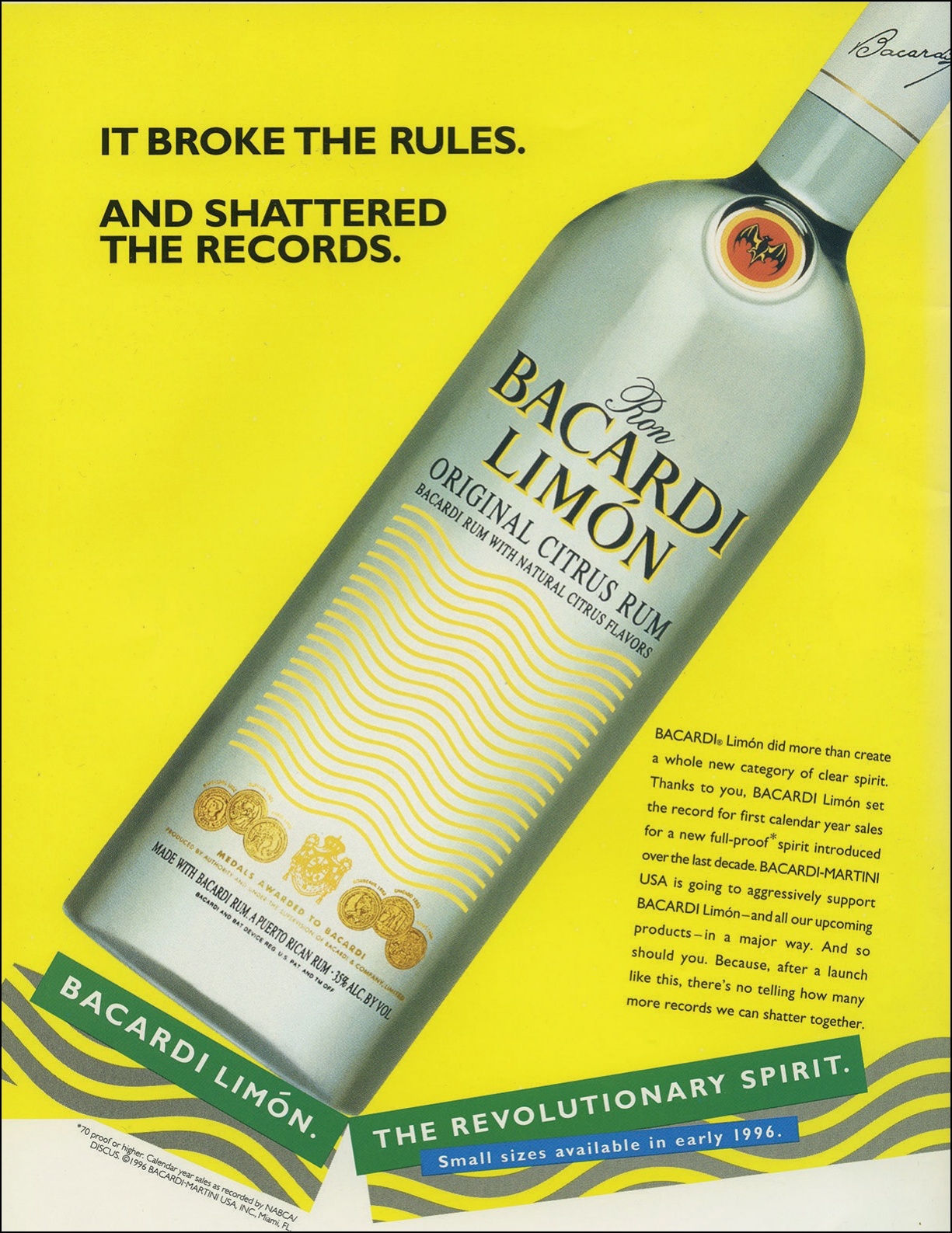
Bacardi launched Bacardi Limón in 1995, its first foray into flavored spirits.
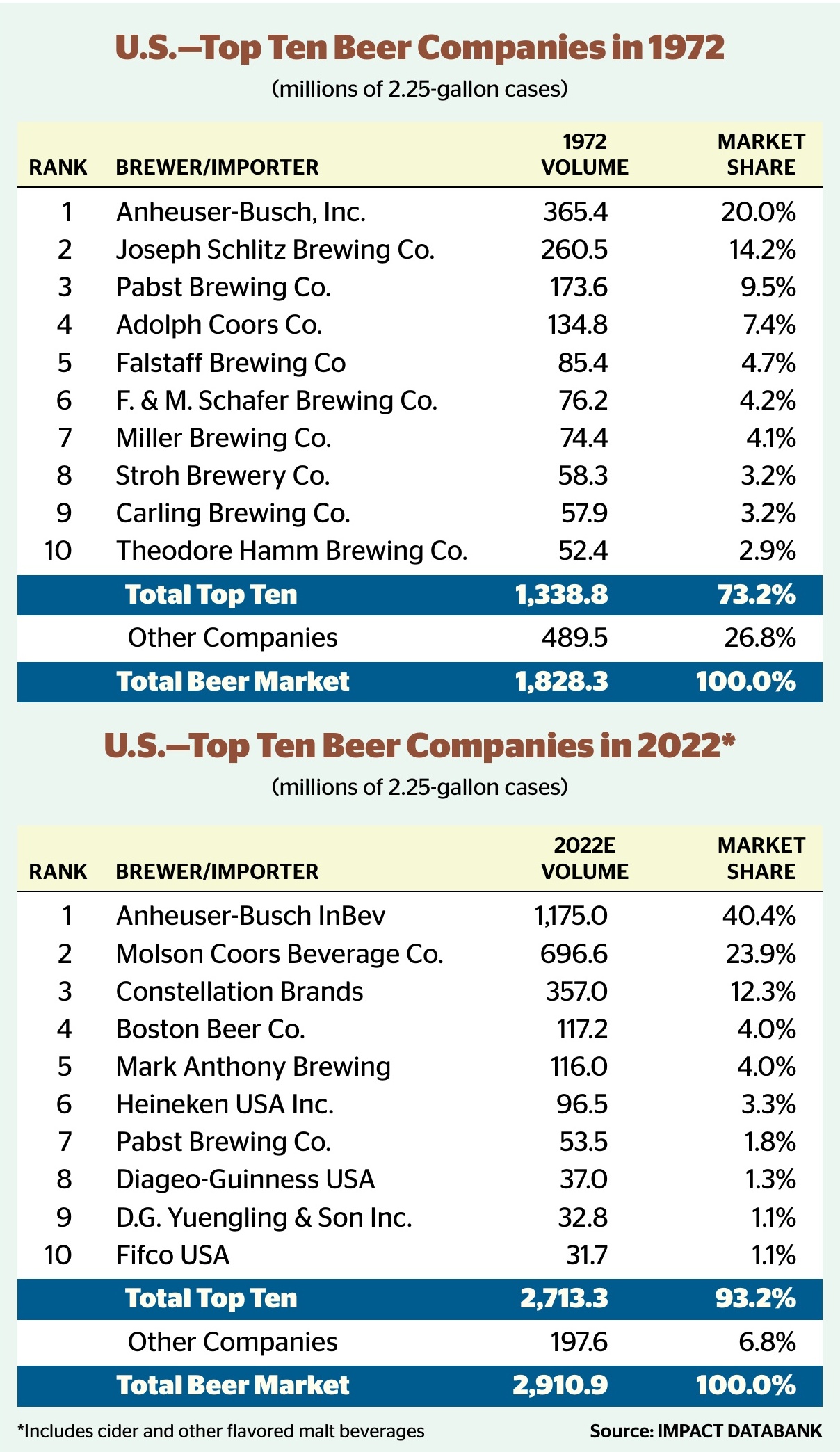
The International Center for Alcohol Policies (ICAP) was launched in Washington, D.C., in the spring of 1995. An industry-funded alcohol policy group, ICAP signaled greater industry coherence in debating the alcohol issue. The Century Council, launched back in 1991, was another important step. Supplier ads promoting moderate consumption and other proactive moves had finally put the anti-alcohol lobby on the defensive.
Merlot, long before its rough treatment in the movie Sideways, was all the rage in 1995, growing at a rate of more than 20%. In late fall, 60 Minutes struck once more with a Danish study citing wine’s health benefits. Wine marketers were ecstatic, again. That same year, Anheuser-Busch sold its Tampa brewery, the St. Louis Cardinals baseball team and its Eagle Snacks subsidiary in a major restructuring move aimed at focusing on its core businesses.
Spirits were still struggling to achieve progress as the 1990s reached their midway point, but an industry watershed occurred in 1996 when the category achieved its first growth year since 1981. It was only a 0.3% rise in volume, but enough for marketers to sense—correctly—that the long generational decline had finally ended. The top 25 premium and super premium spirits rose by a collective 5% as the industry’s concentration on fewer and high-end brands began paying big dividends.
Seagram, meanwhile, boldly broke the mold by launching local TV and radio commercials for its Crown Royal brand in Texas. Seagram thus ended the spirits industry’s voluntary ban on electronic advertising that had existed since Prohibition’s repeal, and a door was opened to a new era. Today spirits are everywhere on the cable airwaves and can also be found on network TV, including during high-profile sporting events like the Super Bowl.
Another breakthrough came in the early days of 1996 when the U.S. government released its 1995 Dietary Guidelines for Americans—and they contained new wording on alcohol. The guidelines pointed to evidence suggesting that moderate drinking may lower the risk of heart attacks and that “alcoholic beverages have been used to enhance the enjoyment of meals by many societies throughout human history.”
The wording was a big departure from the 1990 Dietary Guidelines, which simply said, “drinking has no net health benefit.” Marketers hailed the new language. Those changes, now largely forgotten, played a major role in alcohol’s resurgence as the decade progressed.
In California, the Terlato family, whose Chicago-based Paterno Imports was already among the nation’s top wine importers, acquired Rutherford Hill winery, entering the production side for the first time. The move was part of a long expansion for the company, today known as the Terlato Wine Group, as it evolved from its Italian wine importing base to become a diversified player. Terlato now has a renowned portfolio of brands from around the world and is one of the leading marketers of wine over $20 in the U.S. They also have a burgeoning spirits and non-alcoholic business.
Meanwhile, the consolidation trend remained strong across all tiers. Ray Herrmann’s Sunbelt Beverage Corp. merged with Herman Merinoff ’s Charmer Industries in 1996 and the Charmer Sunbelt group was born. Charmer Sunbelt became the nation’s second-largest spirits and wine distributor, behind Southern, with revenues approaching $1.5 billion. More big deals were on the way.
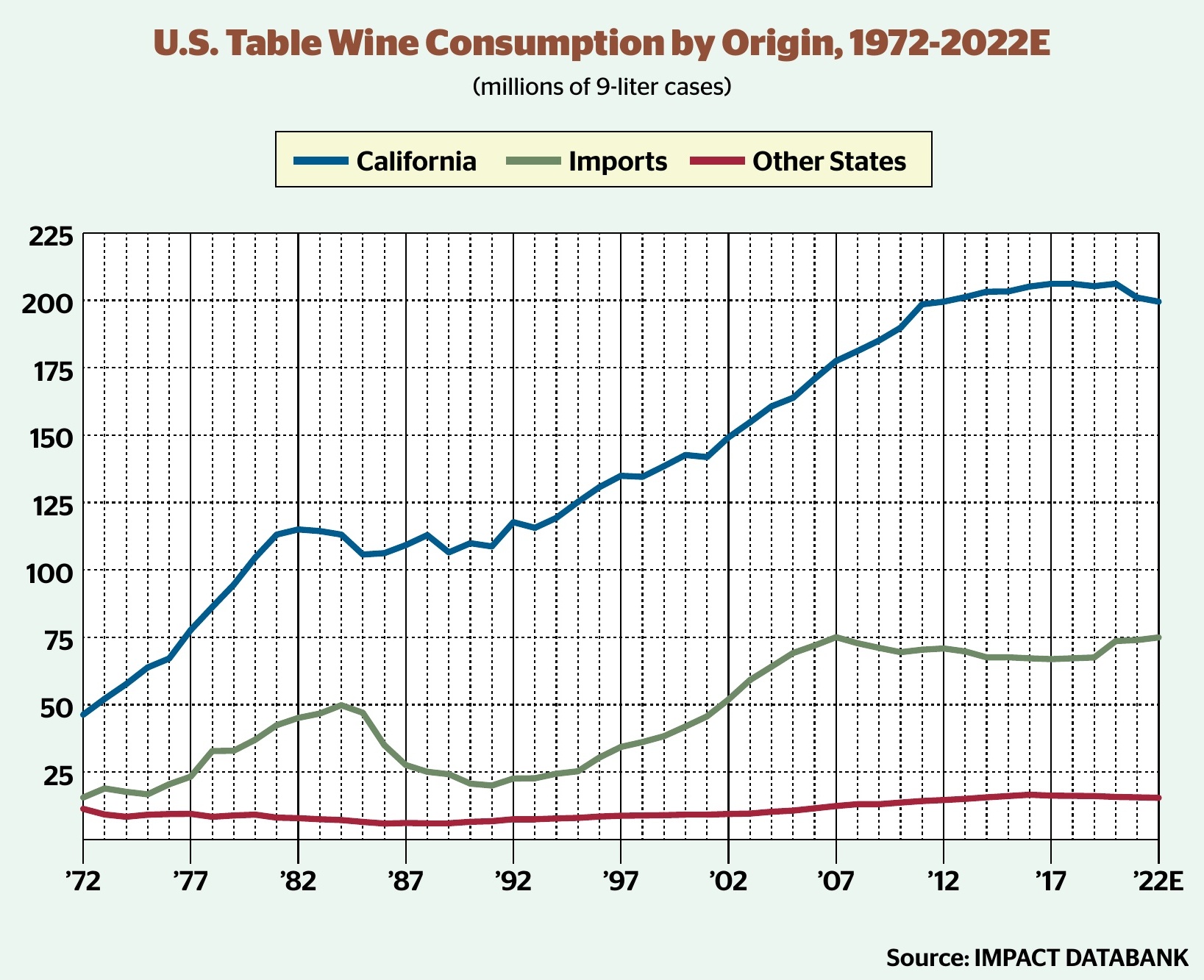
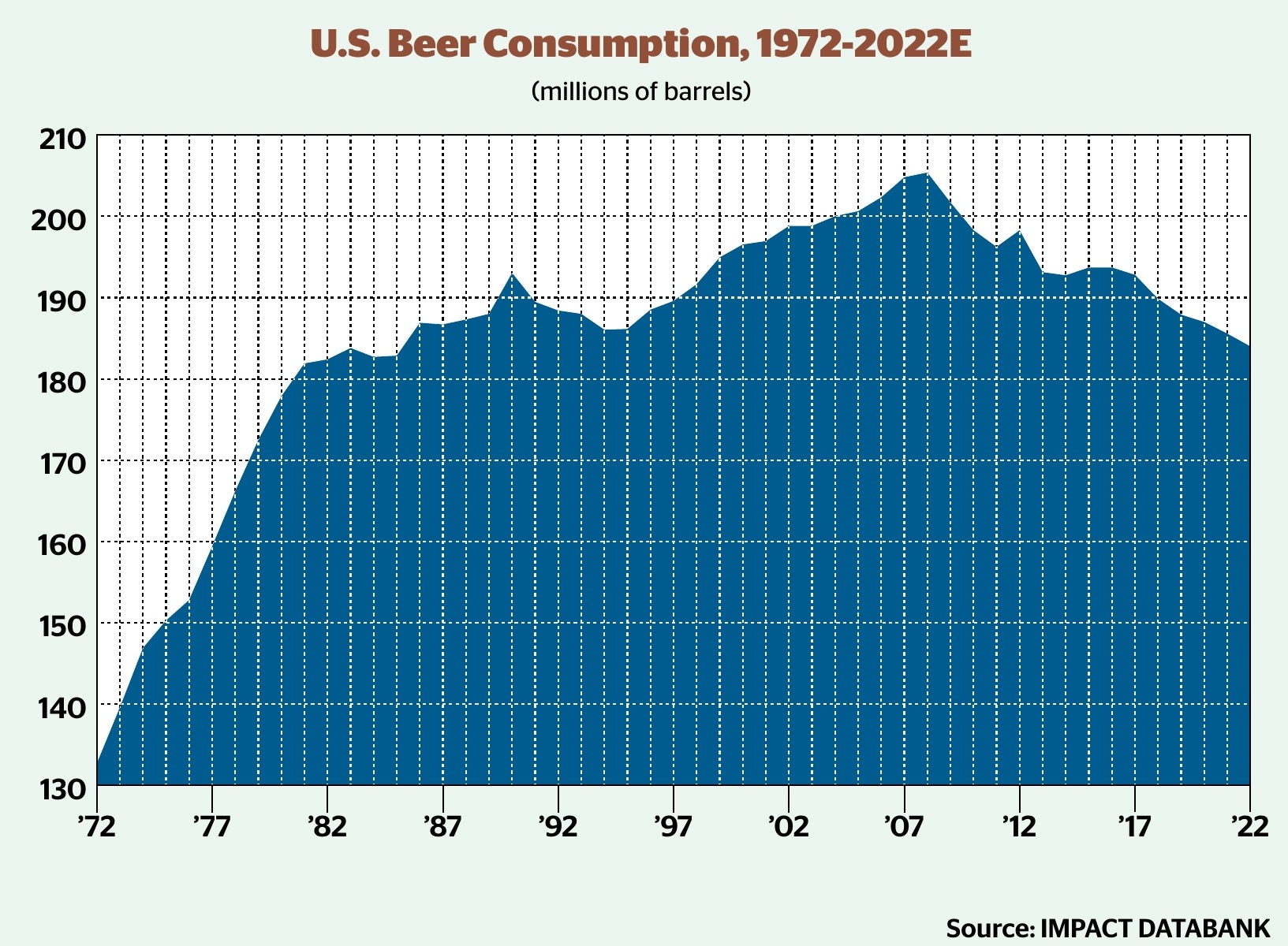
One April evening in 1997, Guinness chairman Tony Greener and Grand Metropolitan chairman George Bull were dining at Duke’s Hotel in central London. They chatted about the issues of the day, and then came the question: Bull asked whether it was time to consider a merger. On May 12, in an announcement that sent shockwaves through the industry, GrandMet and Guinness unveiled plans to do just that.
It was the largest merger ever between two British companies. They spent the rest of the year obtaining regulatory approval and fending off attacks from disgruntled shareholder and LVMH chairman Bernard Arnault. On Dec. 17, the merged Guinness-GrandMet officially began trading as Diageo. The name combines the Latin word for “day” with the Greek word for “world,” which Diageo elaborates as “celebrating life every day, everywhere.” The strange new name was lampooned in the British press, but Diageo’s strong performance soon silenced the critics. The company now had a nearly 25% share of the U.S. spirits market, and competitors mulled alliances to deal with the industry’s new order. To that end, Seagram explored a deal with Allied Domecq, which went nowhere.
In order to gain regulatory approval for its merger, Diageo had to sell off its Dewar’s and Bombay brands. The auction began and Bacardi emerged with a winning bid of nearly $2 billion. It was Bacardi’s biggest acquisition ever—even bigger than the Martini & Rossi deal in 1993. At the time, Dewar’s was roughly three times as big as Bombay, both in the U.S. and globally. Since then, though, Bombay—sparked by the upscale Sapphire—has enjoyed robust growth while Dewar’s has sputtered, like the overall blended Scotch segment in general. Bombay is now at 1.2 million cases, while Dewar’s is at 900,000 cases in the U.S.
While the giants were merging, independent player Sidney Frank Importing Co. was launching an unusual new brand, Grey Goose vodka. The packaging was beautiful, but critics predicted that a $35 French vodka would never fly. But Grey Goose soon took off, and Sidney Frank’s brand-building legacy was ensured.
Sixteen years after entering the market, Corona Extra overtook Heineken to become the largest imported beer in the U.S. in 1997. Corona has never looked back. Another major development occurred that year that didn’t grab as many headlines: The “echo boom”—the children of baby boomers attaining legal drinking age—began. The nation added 4 million new legal drinking age adults in 1997. That growth has continued at similar rates since then. At first, the echo-boom was expected to primarily benefit the beer industry, but so far the winners have been spirits and wine.
As the 1990s neared their end, Seagram continued to move further into the entertainment business—and further away from drinks. In May 1998, Seagram acquired music company Polygram for $10.6 billion in cash and shares. To help finance the deal, Seagram sold Tropicana to PepsiCo. for $3.3 billion. Drinks now accounted for a minority of Seagram’s business for the first time ever. Entertainment was at 70% of revenues, while drinks comprised 30%.
California outlawed smoking in bars at the start of 1998, launching a trend that led to similar bans around the country. In Washington, D.C., FTC chairman William Kennard mulled a crackdown on alcohol advertising and all the major marketers were required to submit special reports on their ad practices. But no major action was taken. Around the country, city governments began scrutinizing outdoor ads and considered tighter regulation or even outright bans.
Constellation was at it again on the deal front to close out the 1990s. The upstate New York–based drinks marketer—long known for its decidedly sub-premium portfolio—entered a new phase as an upscale wine player, acquiring Simi Winery for $57.5 million in the spring of 1999 and then buying Franciscan Estates for $243 million a few weeks later. Constellation had arrived, rising from its low-cost wine roots to enter the rarified world of super premium and ultra premium wine.
On the spirits side, as part of Diageo’s brand disposals, Constellation also picked up Black Velvet and seven other Canadian whiskies for $184 million. The company’s deal craze extended into 2000, when Constellation acquired Sebastiani’s Turner Road Vintners for $290 million, Blackstone Winery for $138 million, Ravenswood for $290 million, and Columbia, Covey Run, and Alice White for $52 million.
In Bordeaux, meanwhile, LVMH finally won control of Château d’Yquem, ending a nearly three-year battle with Yquem heir Alexandre de Lur Saluces, who agreed to stay on at the famed Sauternes winery.
Southern Wine & Spirits passed the $3 billion mark for the first time in 1999. Meanwhile, Absolut, fueled by the success of its Absolut Mandrin flavor extension, pushed past the 4 million case mark.
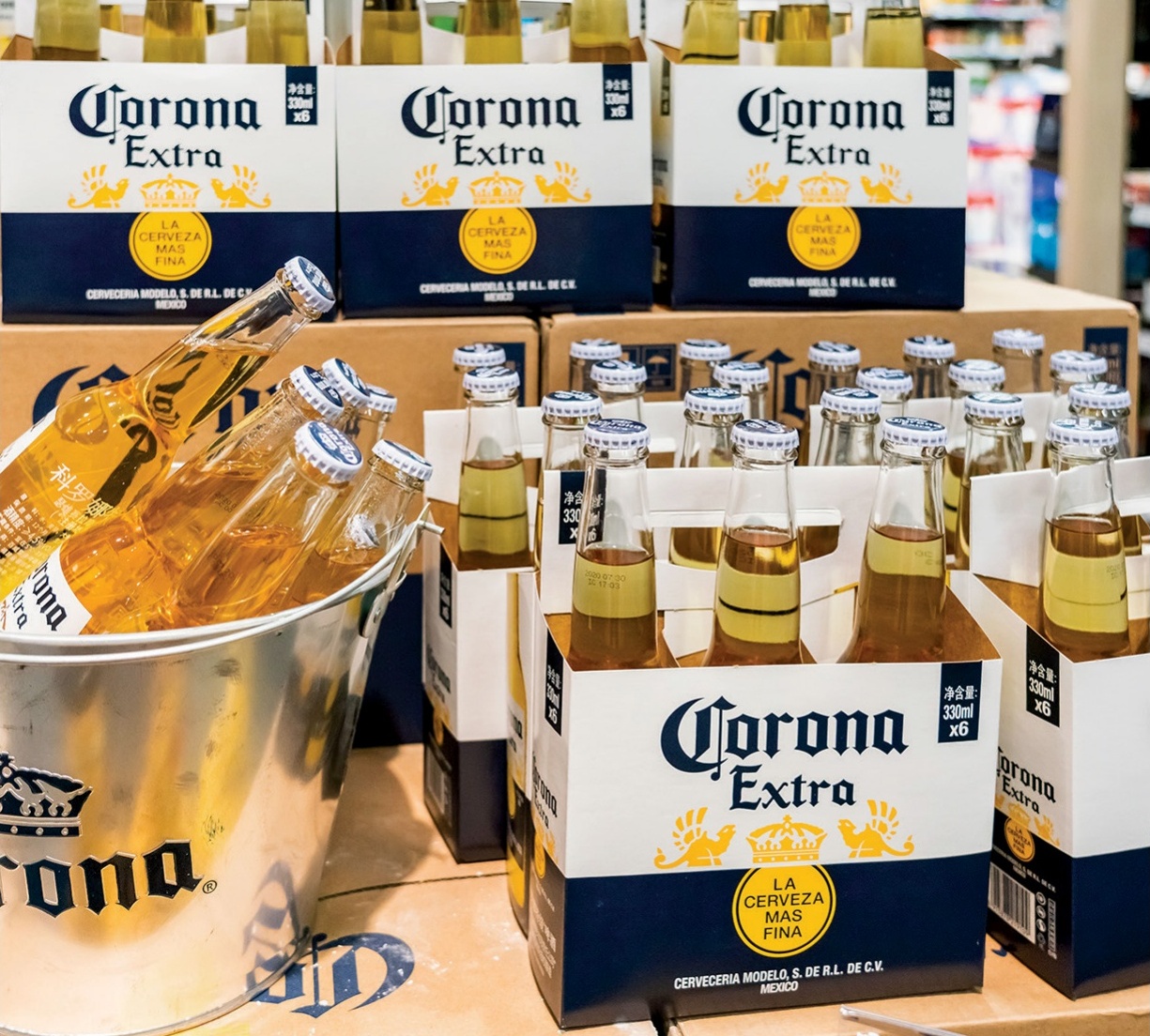
PETER FREED/CORBIS; ALEX TAI/SOPA IMAGES/LIGHTROCKET/GETTY IMAGES
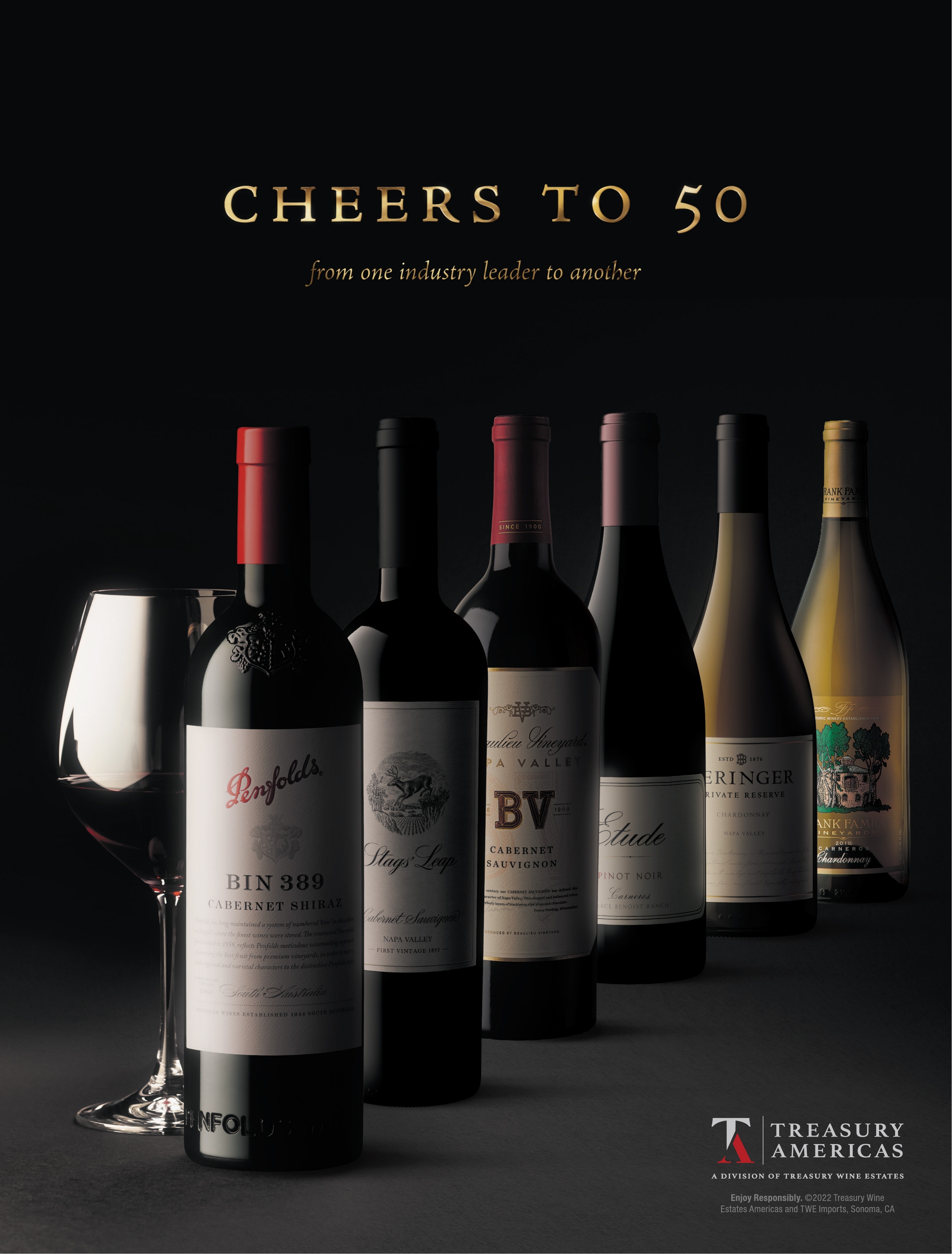
THE DRINKS INDUSTRY 1972-2022
The 2000s
Seagram Bows Out, Pernod Steps Up
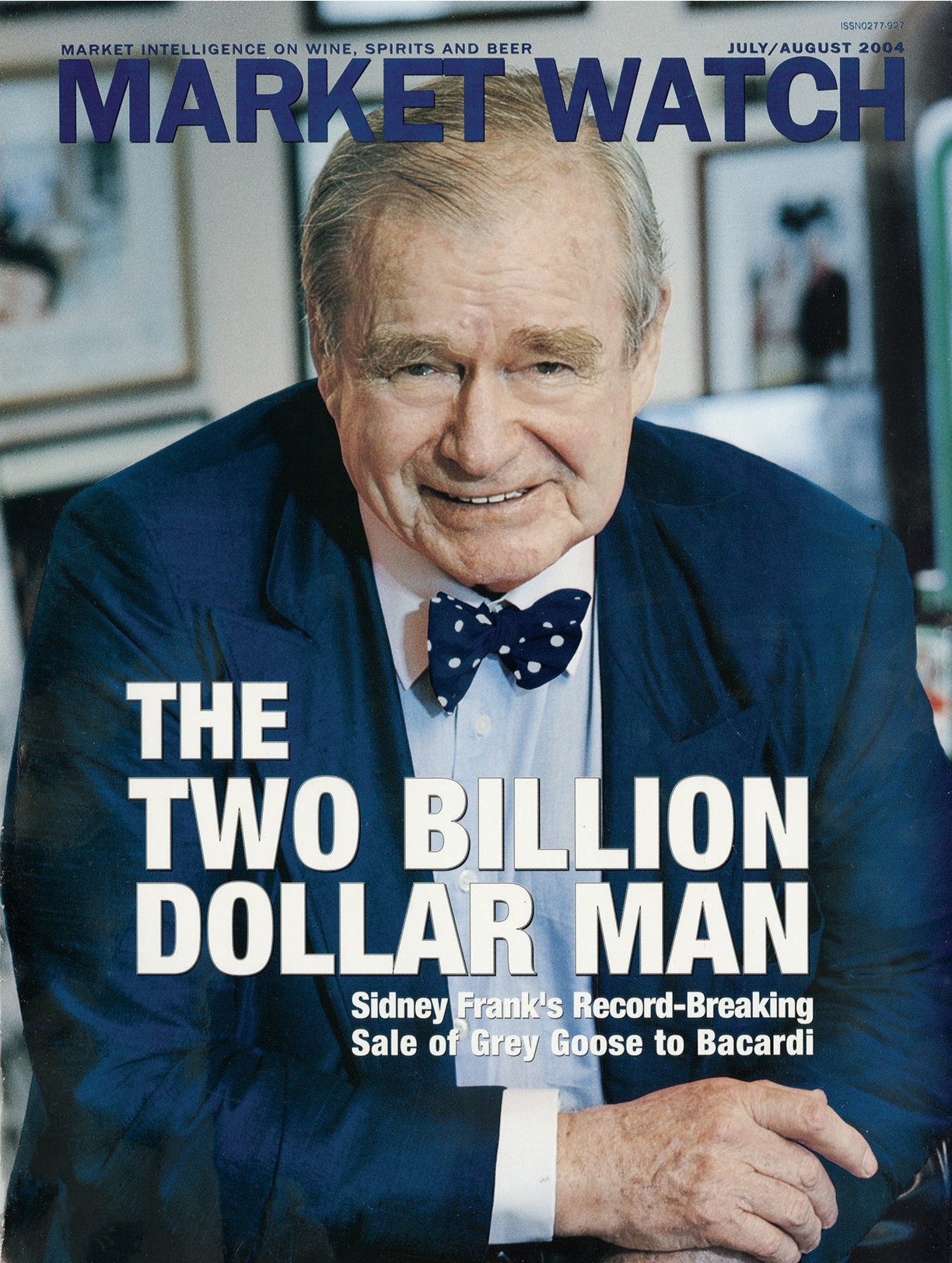
Sidney Frank, the creator of Grey Goose vodka, on the July/August 2004 cover of Market Watch.
W ith the dot-com boom in full swing at the dawn of the new millennium, direct shipping of Internet alcohol purchases had become a major issue for wholesalers. The Wine & Spirits Wholesalers of America (WSWA) formed an alliance with San Francisco–based WineShopper.com in 1999 to create an e-commerce network that worked within the three-tier system. WSWA was seeking a middle path—one that utilized e-commerce but didn’t marginalize distributors.
The following year, before a packed audience at the WSWA convention in Boston on April 30, WineShopper.com CEO Peter Sisson celebrated the limited launch of WineShopper.com. Flush with venture capital, partnered with Amazon and supported by WSWA, WineShopper’s future seemed ensured. But Internet purchases of wine and spirits were tiny, the business model was flawed and the tech bubble had burst in February. WineShopper began to falter before the year was over. By August, it had merged with competitor Wine.com and the dream was over. Soon, Seagram would be over too.
Three years after the Diageo merger had rocked the industry, on June 20, 2000, Seagram dropped an even bigger bombshell. The company had agreed to be sold to French media giant Vivendi in a $34 billion deal. Since the deal was focused on Seagram’s entertainment assets, the new partners would unload the spirits and wine operation. The brands that created the modern drinks business were on the block. Even though this move had been rumored for about a year, it shocked the industry.
Bronfman family members, led by Edgar Jr.’s uncle, Charles Bronfman, seriously explored buying the drinks business, but decided against it. A long sale period ensued, with excruciatingly slow negotiations that would last through the year. In December, a joint effort by Diageo and Pernod Ricard finally won the Seagram-owned brands for a price tag of $8.15 billion. Edgar Bronfman Jr.’s grandfather, Samuel “Mr. Sam” Bronfman, had entered the business in 1924 and acquired Joseph E. Seagram & Sons in 1928. His son Edgar M. Bronfman became president of Seagram in 1957, though Mr. Sam tightly controlled things until his death in 1971. Now Mr. Sam’s company was no more.
Having clinched the Seagram deal in December of 2000, Diageo and Pernod Ricard set about seeking regulatory approval. Diageo was the bigger investor, paying $5 billion for Captain Morgan, Crown Royal, Seagram’s VO, Seagram’s 7 Crown and other brands. Pernod paid $3.15 billion for brands including Chivas Regal, Martell, Seagram’s gin and Montilla rum. The deal didn’t get approved until year’s end. Regulators ordered Diageo to dispose of Malibu, which it sold (along with Mumm Napa) to Allied Domecq for $834 million early the following year.
In June, V&S–owned Absolut, which had been marketed by Seagram, found a new home with Future Brands, a new sales company formed by V&S and Beam Global Spirits & Wine. V&S also acquired a 10% stake in Beam for $375 million. Rival Skyy vodka, meanwhile, was acquired by Campari, which took a 50% stake in Skyy Spirits LLC for $207 million, adding to its existing 8.9% share.
While Absolut and Skyy were flying high in the early days of the 2000s, another vodka brand was quietly getting its start in Texas. In 1997, Bert “Tito” Beveridge, a former geologist, began distilling a namesake vodka in a distillery he’d built in Austin. In 2000, Tito’s Handmade vodka sold approximately 5,000 cases. By 2021, Tito’s volume had reached 11 million cases.
Celebration of the new millennium had been hugely anticipated—and widely overhyped. Champagne producers were left with a millennial hangover caused by inventory logjams. Shipments dropped dramatically in 2000.
California wine was also a popular target—at least for a particularly bothersome pest. Pierce’s Disease, which devastated vineyards in Southern California’s Temecula appellation in 1999, was a hot topic in 2000. Fears abounded that the glassy-winged sharpshooter, the insect carrying the disease, would move into California’s northern vineyards. State agriculture officials implemented strict inspection procedures and tighter regulation of nursery stock shipments.
While blockbuster spirits deals were making headlines, consolidation was also occurring in the wine business. Southcorp merged with fellow Australian winemaker Rosemount in February 2001—a reverse takeover that left Rosemount’s owners, the Oatley family, running a 10-million-case wine giant.
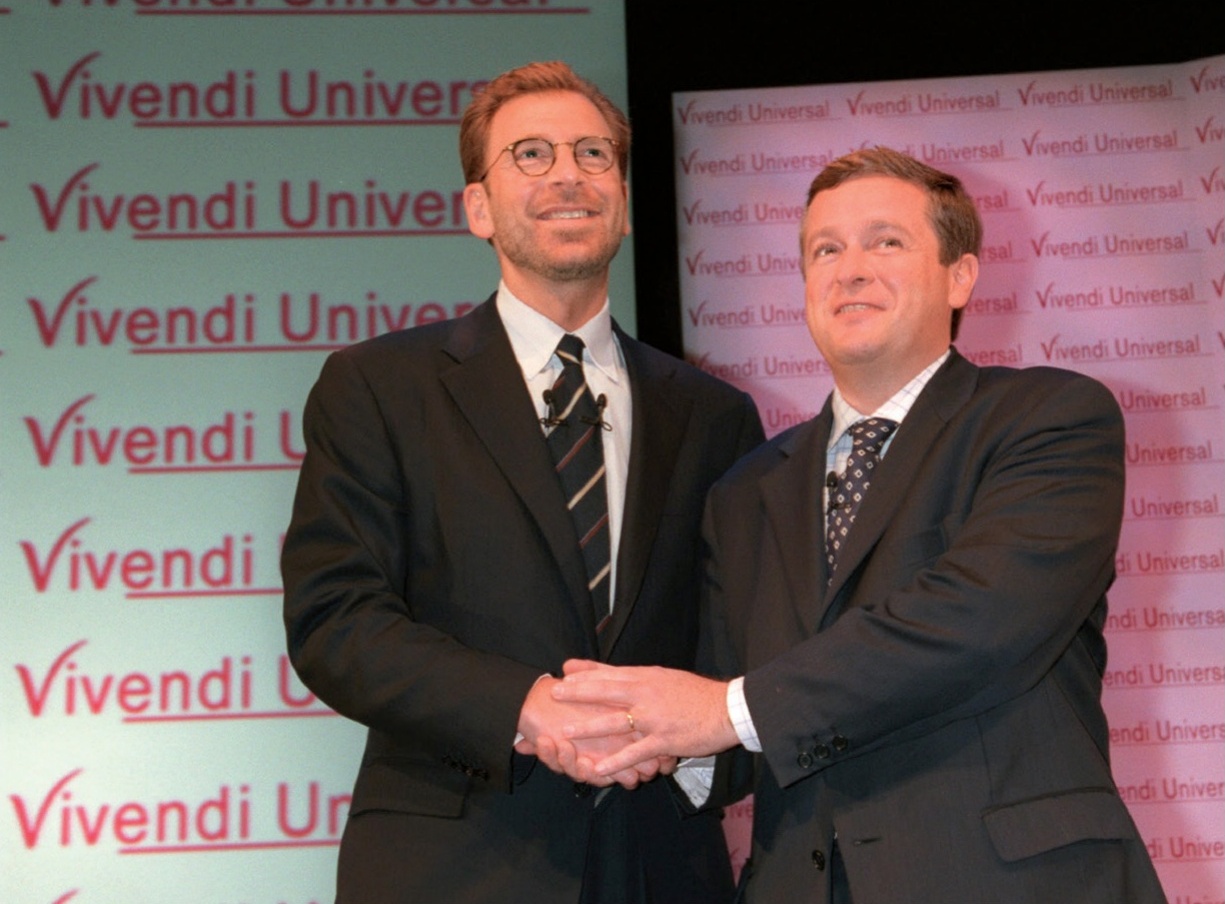
Edgar Bronfman Jr. and Jean-Marie Messier celebrated the Vivendi-Seagram deal in 2000. Within two years, however, both men would depart troubled Vivendi Universal.
Texas-based Tito’s Handmade vodka sold 5,000 cases in 2000. By 2021, its volume reached 11 million cases.
The attacks of September 11, 2001, cast a pall over the nation. As America mourned the loss of life, the economic toll was massive. Hotels suffered as air travel slowed to a trickle. Dining out became primarily a local neighborhood affair. In New York, promotions like “Wall Street Wednesdays” and $20.01 prix fixe dinners helped, but recovery would take a long time. The New York Wine Experience celebrated its 20th anniversary that October, where the appearance of Mayor Rudolph Giuliani at the event cheered the wine world and the city. Interestingly, while conspicuous celebration was out, sales of high-end spirits, particularly vodkas, kept rising.
Meanwhile, in California, years of vineyard overplanting since the mid 1990s began taking its toll. The industry was encountering a major glut (a cyclical event that seems to happen in California once every decade or so). In Lodi, grape prices fell to levels not seen since the mid 1980s. Some 70,000 tons of grapes were left to rot on the vine in 2002, while 30,000 acres of grapes were pulled up and the land replanted to other crops.
Oversupply brought a pricing collapse. Bronco Wine Co. launched Charles Shaw, a $1.99 wine sold exclusively at Trader Joe’s. Nicknamed Two-Buck Chuck, it became wildly popular with consumers—and the bane of premium wine marketers’ existence. It was a great time to be a wine consumer, but a lousy time to be a wine seller. Wine imports, meanwhile, were growing well, although consumers were trading down and restaurant sales remained weak.
The middle tier’s consolidation trend was accelerated with a key catalyst in 2002, when Diageo launched an ambitious effort to consolidate its distribution. Called “Next Generation Growth” (NGG), the program’s aim was to streamline distribution into one wholesaler per state, where possible, and establish standalone Diageo sales forces. Players like Southern, United Group, Glazer’s and Charmer Sunbelt signed on. Others, like Republic Beverage, National Distributing Co. (NDC) and Young’s Market, decided against it. Diageo completed most of its distribution realignment by the following year, largely ending a long and arduous process that had really started in the company’s earliest days in 1998. At the WSWA convention that year, Diageo CEO Chuck Philips made a memorable speech calling for reforms in the three-tier system. Those remarks made wholesalers nervous, but Diageo ultimately modernized its distribution in close partnership with the industry’s second tier.
Television networks were on the verge of allowing spirits ads in the early days of 2002. NBC had struck a deal with Diageo allowing brand advertising in a package with responsibility and public service ads. But in March NBC suddenly reneged, citing bipartisan pressure from Congress. Diageo instead began putting together its own “unwired network”—spending upwards of $200 million annually to advertise on cable stations, local stations and network affiliates to achieve national networklike reach. Other big spirits marketers also were jumping into the TV ad game.
Diageo and other major spirits players were able to get the names of their leading brands frequently mentioned on TV, however, via the ready-to-drink (RTD) route. The RTD category had fallen on hard times as coolers were largely relegated to the dustbin of history. While popular new products were able to provide the occasional bounce—such as Coors Brewing’s Zima in the mid-’90s—the uptick was usually short-lived.
However, as the 21st century began, spirits marketers increasingly turned to RTDs as a way to broaden the appeal of their brand franchises, particularly with the early legal-drinking-age crowd. By 2001, Diageo’s Smirnoff Ice was leading the RTD category with sales exceeding 20 million (2.25-gallon) cases. The brand’s success sparked a flood of new entrants, including Bacardi Silver, Skyy Blue, Jack Daniel’s Hard Cola, Stoli Citrona and Sauza Diablo, among others. Many of these were produced in conjunction with top brewers like Anheuser-Busch and Miller Brewing.
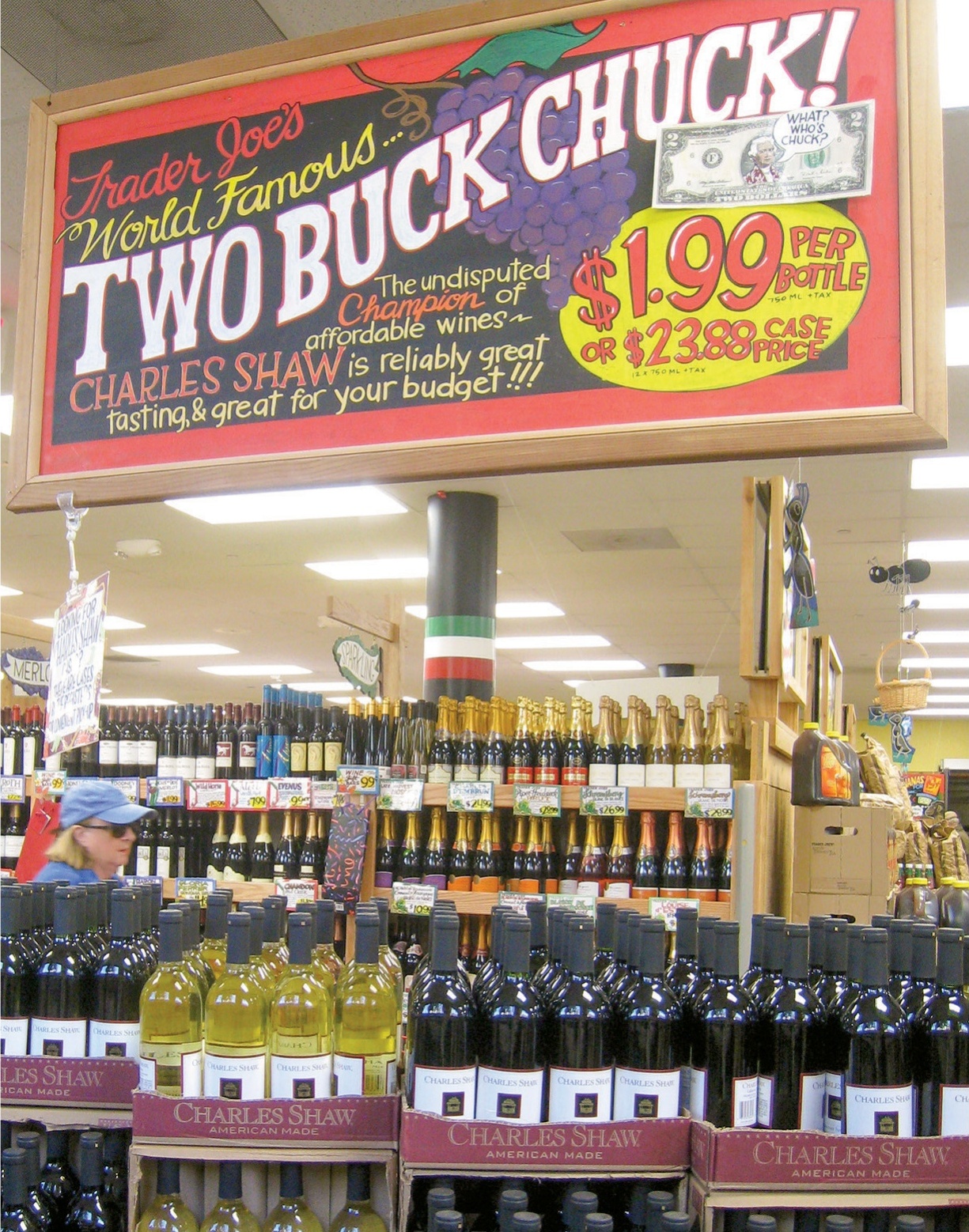
Charles Shaw wines, known as Two-Buck Chuck, were introduced at Trader Joe’s grocery stores in California in 2002.
Unlike the spirits brands for which they were named, these RTD entries quickly gained wide access to network TV, and their marketers backed them with the huge ad-spends normally reserved for much larger brands. They proved pivotal for the spirits industry, as these brands helped ease the way for today’s ubiquitous presence of spirits advertising across the cable TV and digital spectrum. Unlike with coolers, this new RTD boom had more staying power. In the past five years, RTDs have exploded. Gallo’s High Noon brand could be the largest-selling spirit brand in the U.S. by the end of this year.
Southern Wine & Spirits entered Illinois during the early 2000s, buying 49% of the Terlatos’ Pacific Wine Group and then acquiring the remainder by year’s end. Southern would soon expand from that beachhead to buy the Romano operation.
The beer industry was also awash in consolidation. In May 2002, South African Breweries absorbed Miller Brewing in a $5.6 billion merger deal, creating SABMiller. SAB brewing executive Norm Adami came from South Africa to run Miller and he would engineer a dramatic turnaround. At A-B, Michelob Ultra was launched nationwide in September and quickly became one of the market’s hottest brands.
Geopolitical issues upended the imported wine market in the early months of 2003. Political tensions between France and the United States over the Iraq war rose to a boil and French wine sales plummeted. France’s share of America’s imported wine market, which had stood at 31.4% as recently as 1997, dwindled to 15%. (Champagne sales, however, actually started to improve.)
New World wines continued to take center stage as Constellation acquired Australia’s BRL Hardy for $1.4 billion and moved past E. & J. Gallo to become the world’s biggest winemaker. Australia’s Yellow Tail, in the U.S. since only 2001, zoomed past 4 million cases.
Flavored spirits were all the rage in the first few years of the 21st century. The flavored spirits trend exploded. Bacardi added Bacardi Razz, Coco, and Vaníla, joining Limón and orange-flavored Bacardi O. Absolut added Vanilia, its first new flavor since Mandrin in 1999. Skyy, which had launched Citrus in 2000, added Berry, Vanilla, and Spiced. Smirnoff Twist added its fifth flavor, Green Apple, and Stoli rolled out its sixth and seventh, Cranberi and Citros. Hpnotiq led the fusion craze in 2003, rising from 100,000 cases to 615,000 cases. Absolut, showing concern over the ultra-premium competition, launched Level vodka at $30/750ml.
The low-carb beer fad was also in high gear, led by Michelob Ultra, which was taking the drinks market by storm. Michelob Ultra rocketed from 5.5 million cases in 2002 to 41 million cases by the end of 2003. A battle brewed over the exact amount of carbs in various beer brands, with Miller Lite claiming the fewest. Spirits marketers soon jumped in, trumpeting their no-carb, low-carb attributes and so giving themselves a boost.
In June 2004, Sidney Frank sold his Grey Goose vodka brand to Bacardi for an astounding $2 billion, and Frank was soon dubbed “The $2 Billion Man.” Grey Goose had risen to become a 1.3 million case brand since its 1997 launch and the mega-deal jolted the drinks industry. It also catapulted Sidney Frank to celebrity status in the business world. Critics thought Bacardi had overpaid, but the brand’s torrid growth rates continued for several more years. Grey Goose sold more than 2.6 million cases in 2021.
If the Grey Goose deal was a rollicking tale of fame and fortune, the sale of Robert Mondavi Winery was not. The legendary Mondavi project had encountered problems and in September 2004 unveiled plans to sell its luxury wines. In October, Constellation moved to acquire all of Mondavi, eventually sweetening its price to $1.36 billion. The deal was sealed in December. It was a historic changing of the guard. Constellation also acquired a 40% stake in Ruffino for $80 million in December 2004, adding to its fine wine arsenal. Diageo, meanwhile, bought Chalone for around $260 million.
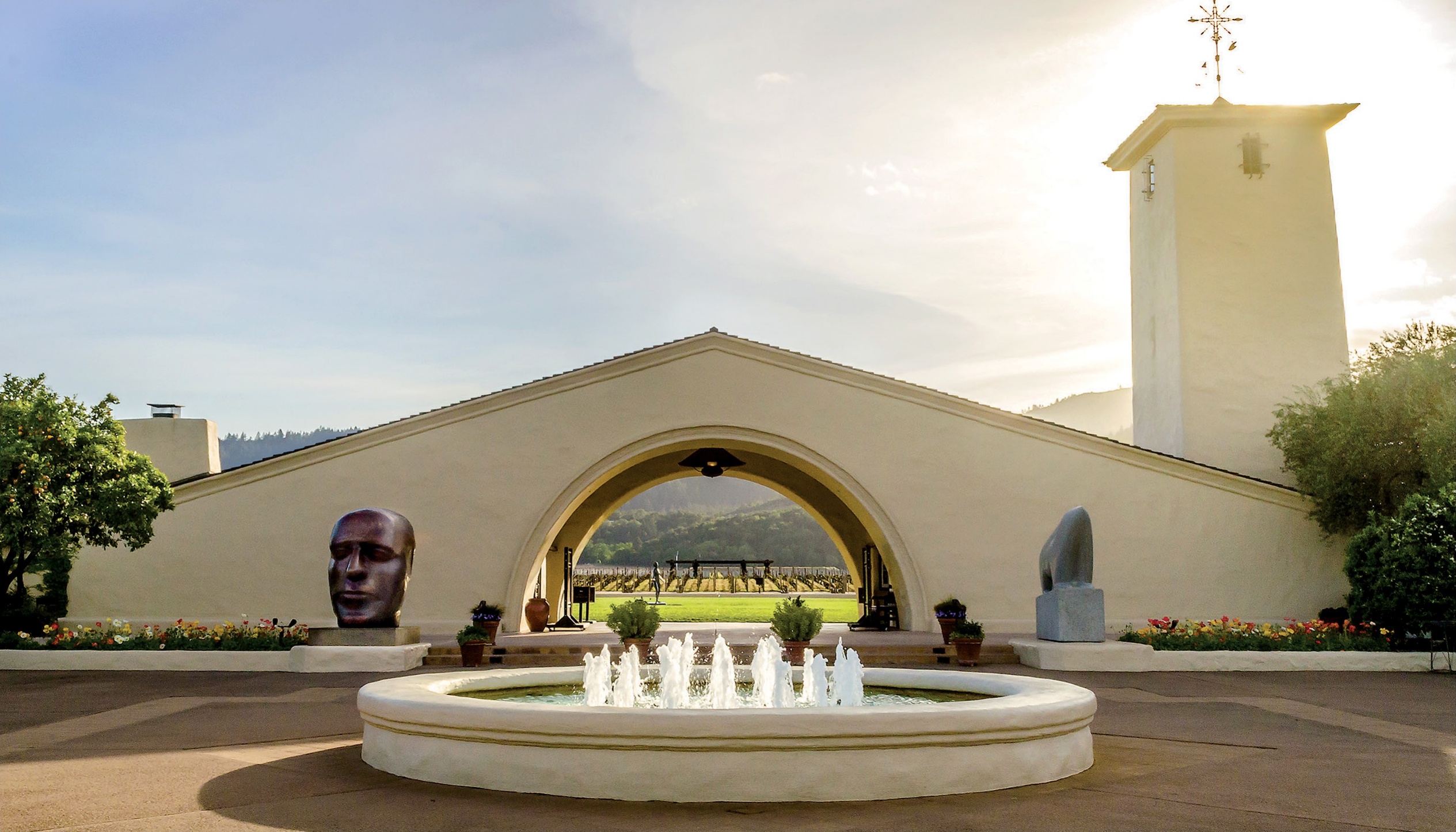
Constellation bought the legendary Robert Mondavi Winery in 2004 for $1.36 billion.
Fast-expanding retail giant Costco put itself on a collision course with the distributor tier in the mid-2000s, launching a lawsuit in its home state of Washington with the goal of buying direct from producers. Costco won big in court in March 2006 with a ruling that a Washington law allowing in-state direct shipping by wine and beer producers but banning the practice from out of state violated the U.S. Constitution’s Commerce Clause. Washington’s pricing, minimum markups, uniform pricing ban on volume discounts and other rules were also tossed. It was a huge victory for Costco, which soon was seeking direct deals with suppliers in the state.
Southern Wine & Spirits entered New York in 2004 by acquiring Premier Wines & Spirits, the distribution company owned by the Taub family. Southern also created a new national accounts division for big chains and hotels.
Consolidation continued apace. In July 2004, Molson merged with Coors to form Molson Coors. Heineken USA signed a three-year deal to market Femsa brands Dos Equis, Sol, Tecate, Bohemia and Carta Blanca. Femsa’s brands had been handled by Labatt USA, a subsidiary of Interbrew, since it acquired Canada’s Labatt in 1995. In 2004, Interbrew obtained Brazilian brewing giant AmBev to form InBev. While the new entity was a global brewing force, its footprint in the U.S. market remained relatively small, especially with the loss of the Femsa portfolio.
The movie Sideways came out in late 2004 and Pinot Noir sales soared by more than 25% during the 2004–2005 holiday season.
In May 2005, the U.S. Supreme Court handed down its long-awaited ruling on direct shipping. The High Court, in a 5–4 decision, said states could not allow in-state direct shipping while forbidding it from out of state; states thus would either have to ban or permit direct shipping altogether. The ruling left the door open to more direct-shipping efforts.
Pernod Ricard sealed its deal for Allied Domecq a few months later, paying about $13.6 billion. Pernod gained Ballantine’s, Beefeater, Malibu, Kahlúa and others. It sold brands including Sauza, Canadian Club, Maker’s Mark, Courvoisier and Clos du Bois to Beam for $4.96 billion. The acquisition doubled Pernod’s U.S. spirits share to 9%. Meanwhile, Beam’s size doubled and it rose from sixth to fourth in the global rankings. Diageo bought Bushmills from Pernod for $365 million.
The Allied deal strengthened Southern Wine & Spirits, as both Pernod and Beam aligned heavily with them. But Republic Beverage also was a big winner, gaining the Pernod brands. Southern also acquired Lauber Imports, adding New Jersey and Pennsylvania to its list of states. In New York, Southern bolstered its sales force by around 350 people, while Absolut left Charmer for Southern, sparking a bitter lawsuit.
A bit earlier in the year, Foster’s acquired Australian winemaker Southcorp for $2.5 billion. Foster’s, which had bought Beringer in 2000 for $1.5 billion, became the world’s fourth-largest wine company at 40 million cases, capping a decade-long diversification from brewing into wine.
Also in 2005, E. & J. Gallo purchased Barefoot Cellars from Michael Houlihan and Bonnie Harvey. The previous year, the fast-rising Santa Rosa, Calif.-based Barefoot, which had been founded in 1986, sold nearly 600,000 cases of wine, up from around 200,000 cases in 2000.
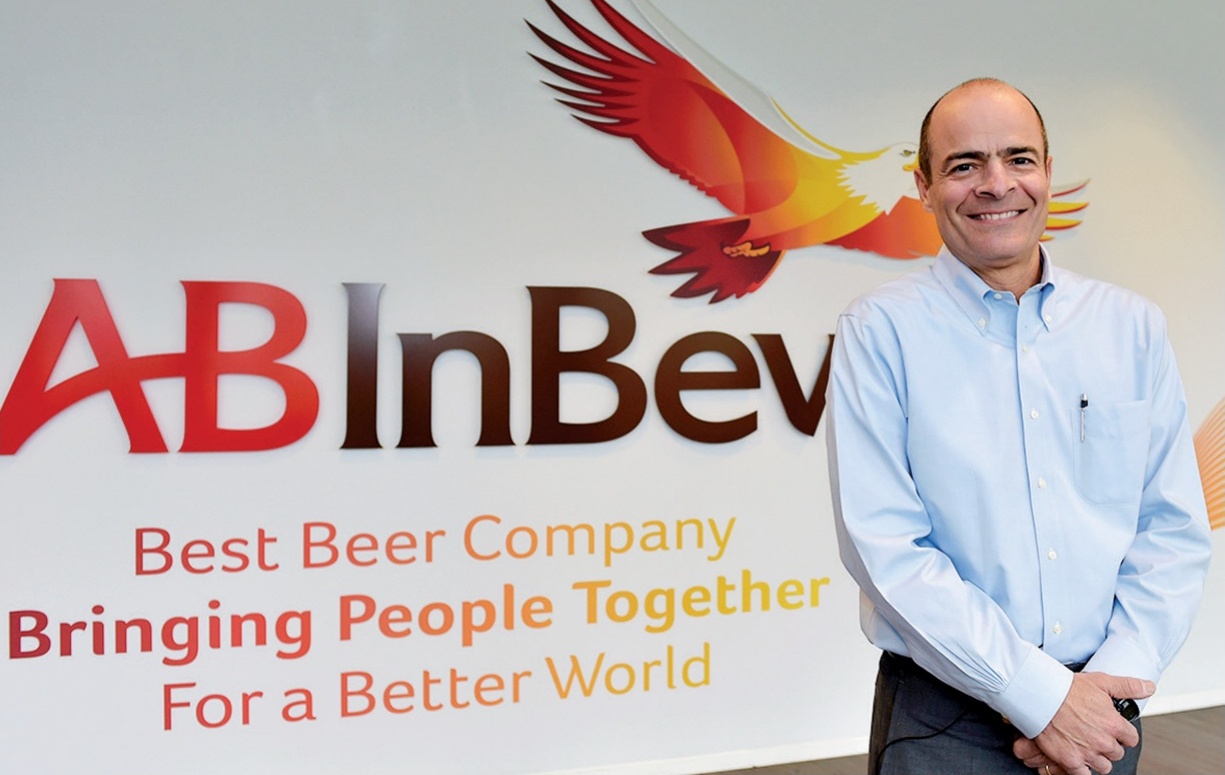
InBev, led by CEO Carlos Brito, turned the brewing world on its head in 2008, when it acquired Anheuser-Busch for $52 billion.
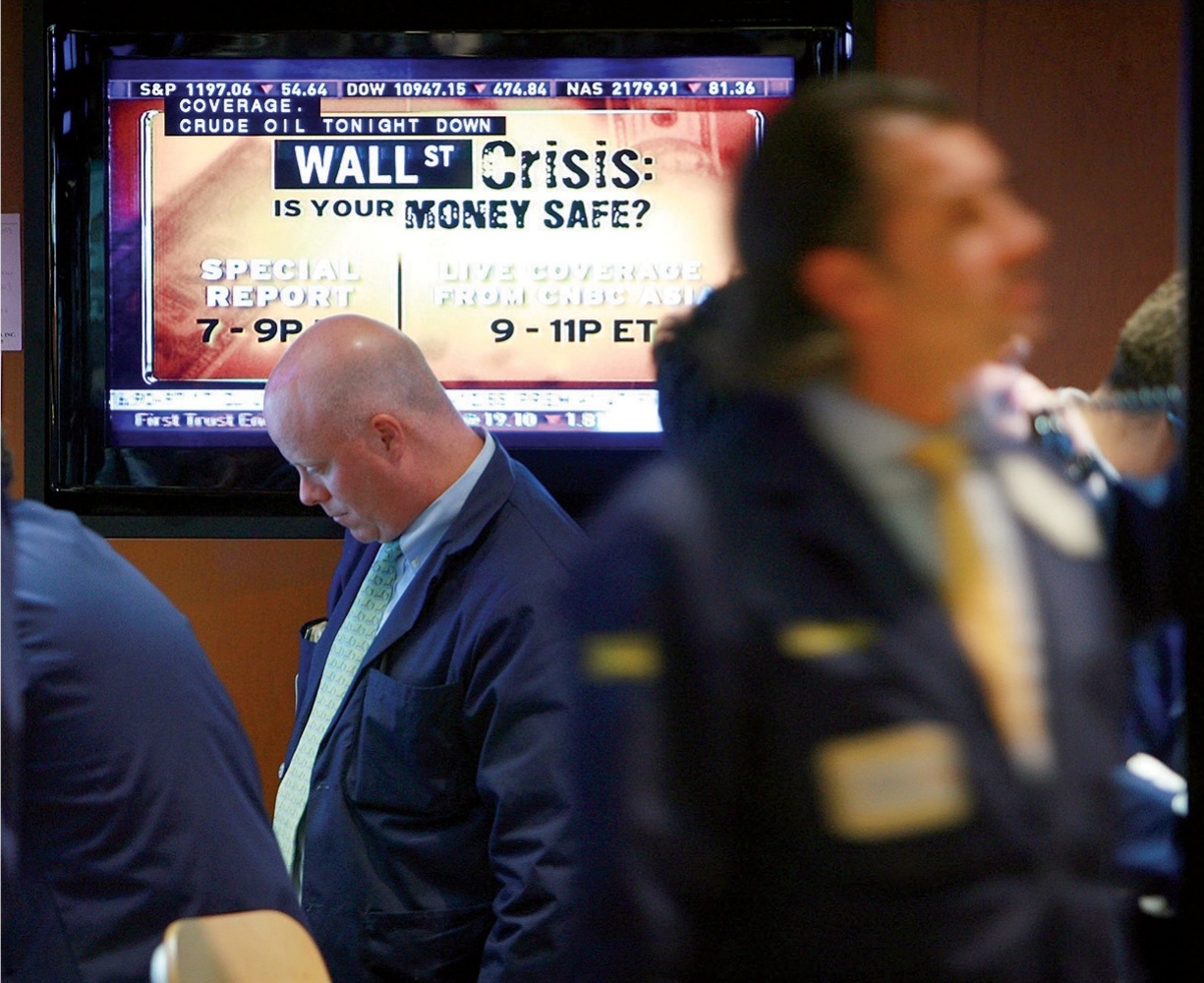
Massive layoffs and severe belt tightening followed the financial crash of 2008. The drinks industry—long considered recession-resistant—was hard hit.
By the mid-2000s, beer’s share of consumer alcohol purchases had fallen below 50%. Miller and Anheuser-Busch engaged in a vicious pricing war during the summer of 2005. A-B tested Jekyll & Hyde, which were actually liqueur brands—Jekyll, a red berry flavor, and Hyde a black licorice flavor. Meanwhile, wines in the $8 to $10 range were recovering nicely. Two-Buck Chuck began to stagnate; today its volume has fallen below 1 million cases.
Hurricane Katrina clobbered New Orleans and the Gulf Coast in late August of 2005. Recovery was long and difficult. At the same time, Schieffelin & Co was restructured and renamed Moët Hennessy USA, and the Schieffelin name, in business for two centuries, was gone.
A flurry of deals occurred in 2006. Constellation formed a joint venture with Grupo Modelo to handle the Modelo portfolio in the entire United States, expanding from its Western territory. Constellation also acquired Canada’s Vincor for $1.3 billion, gaining Jackson Triggs, Kim Crawford, Kumala, RH Phillips, Toasted Head and Hogue Cellars. Brown-Forman bought Chambord for $255 million and Anheuser-Busch bought Rolling Rock for $82 million. The Taittinger family regained Taittinger Champagne for $850 million.
As consolidation continued apace at the supplier tier—and big chains continued to expand their influence at retail—some of the middle tier’s biggest players looked to join forces. In 2007, Republic Beverage merged with National Distributing Co. to form Republic National Distributing Co., a $4 billion, 20-state distribution giant. The newly formed RNDC was the U.S. market’s No. 2 spirits and wine distributor, behind Southern. Around that time, Southern formed a joint venture with Alaska Distributors, expanding its reach to 27 states with Wyoming, Utah, Montana, Idaho, Oregon and Washington. Soon thereafter, Martignetti obtained fellow Massachusetts-based distributor United Group to create the biggest middle-tier player in New England.
Vodka’s flavor craze remained strong throughout the second half of the decade. In 2007, after building Three Olives into one of the category’s fastest-growing franchises on the strength of its expanding flavor range, White Rock Distilleries sold the brand. The buyer, Proximo Spirits, was a new player created by Casa Cuervo to handle the tequila leader’s 1800 and Gran Centenario brands. That same year, Constellation purchased another fast-rising vodka brand: Svedka. Constellation paid just shy of $400 million for the Swedish vodka brand, which soared past the million-case threshold in 2006 as a popular—and far less pricey—alternative to countrymate Absolut. (As recently as 2000, Svedka’s U.S. sales were just 75,000 cases and industry observers wondered how much upside the brand had left after coming so far so fast.)
Absolut, meanwhile, was struggling after one of the most impressive runs in the history of the spirits business. Marketed by Future Brands, the growth of the joint venture between brand owner V&S and Beam had stalled in the mid-2000s, as the premium vodka category it had essentially created spurred a number of brands that quickly caught on with consumers—particularly Grey Goose. In 2006, Future dropped the iconic bottle campaign that had helped make the brand a household name. Despite its lackluster results, Absolut remained one of the biggest names in premium spirits—and a brand still coveted by every major spirits marketer.
With Three Olives gone, White Rock began to focus on another of its imported vodka offerings: Pinnacle. At the time, the competitively priced French brand was moving roughly 150,000 cases in the U.S. market. As it had with Three Olives, the Lewiston, Maine–based White Rock began to build Pinnacle by aggressively expanding its flavor range. By 2010, the brand surged past the 1 million case threshold. And then it really took off. In mid 2010, White Rock introduced two new flavor extensions: Whipped and Cotton Candy. In the process, the company essentially invented a thriving new segment for vodka: confectionery flavors. Whipped exploded as no flavor had before it, with the product selling nearly 1 million cases on its own in 2011. That year, Pinnacle’s total sales crested 2 million cases, while a bevy of confectionary flavors from a host of competitors began flooding the market.
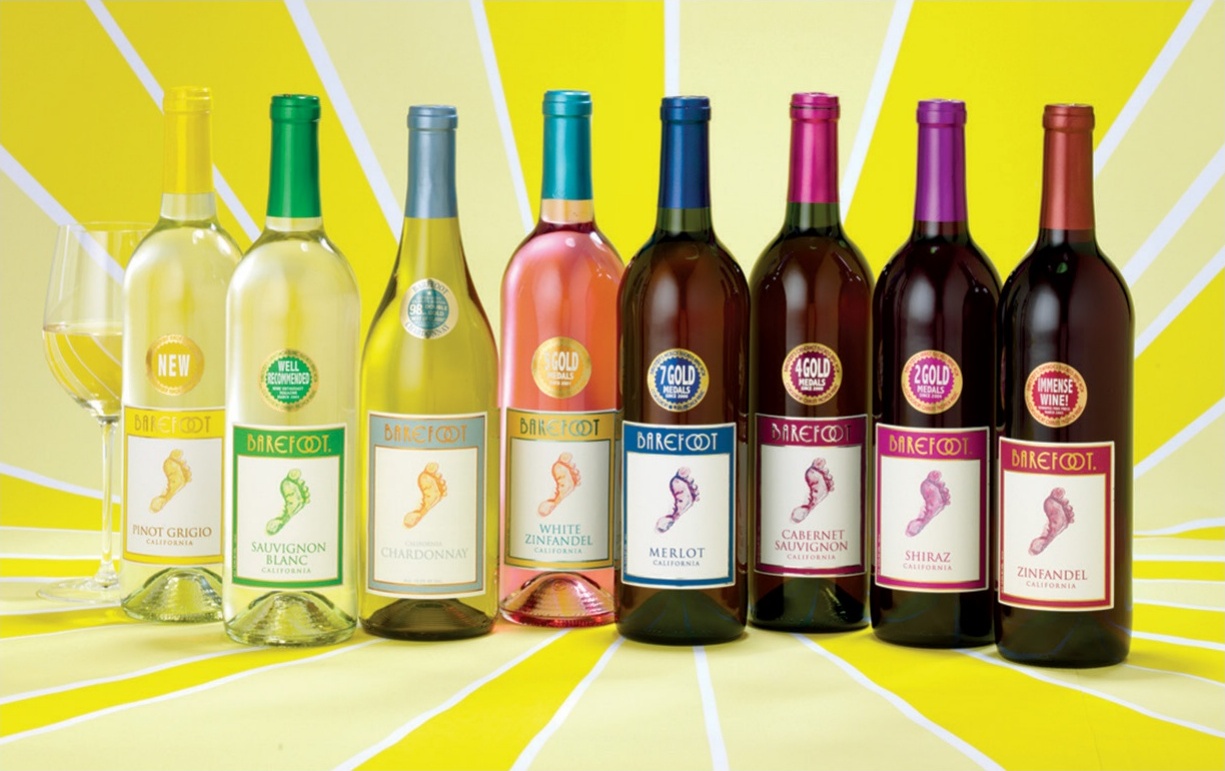
In 2021, E. & J. Gallo’s Barefoot ranked second among all wine brands in the U.S., selling nearly 17 million cases.
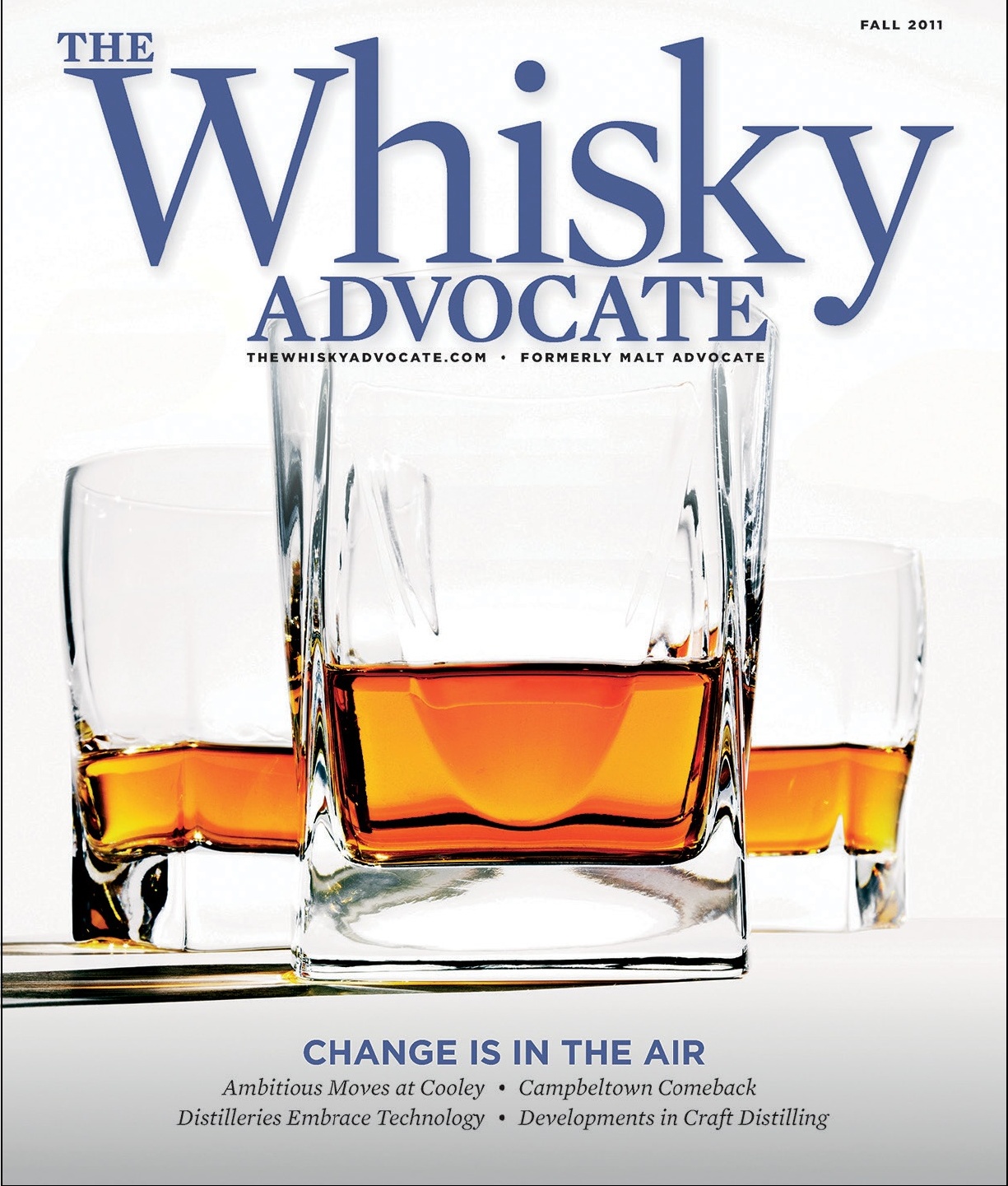
Fall 2011 was the rebranded Whisky Advocate’s first issue.
In 2012, White Rock sold Pinnacle and some other assets to Beam for around $600 million. Soon after, it exited the business, selling the rest of its portfolio to Sazerac Co. By then, Pinnacle’s boom had slowed considerably (it had sales of 2.3 million cases in 2021). But Sazerac had a brand of its own that was quickly becoming the next big thing, a flavored Canadian whisky called Fireball; the cinnamon whisky would soon make Pinnacle’s fast growth trajectory appear modest in comparison.
While Pinnacle was surging, Absolut was floundering. But that didn’t stop Pernod Ricard from acquiring the iconic brand’s owner— Sweden’s V&S—for roughly $8 billion in March 2008. Bringing together two of the world’s 10 biggest spirits marketers, the blockbuster deal was Pernod’s third of the decade (following the Seagram acquisition in 2001 and the Allied Domecq purchase in 2005)—a decade that Pernod had entered as a sleepy company dominated by its anise portfolio and finished as a global force with a scale and reach rivaled by just one competitor, Diageo.
Then, in the latter months of 2008, Southern and Glazer’s announced a plan to form a strategic alliance that would bring together two of the U.S. market’s four largest wholesalers. Soon after, Wirtz Beverage Group struck a deal to align with Young’s Market Co. However, in both cases the deals would fall through, in part because of the chilly climate for dealmaking brought on by the economic crisis that engulfed the global economy just as 2008 came to a close.
The world didn’t come to an end in the autumn of 2008, but the world of global finance came pretty close. In September, Lehman Brothers shut its doors after declaring bankruptcy, just six months after another venerable financial firm—Bear Stearns—nearly collapsed before JP Morgan Chase agreed to acquire it for $2 a share. Only months earlier, Bear shares were trading at well over $100. Billions of dollars worth of bad bets on subprime mortgages—not just by Bear Stearns and Lehman but by other big names, such as Merrill Lynch and Wachovia—also wrecked the bottom line of nearly all the world’s biggest banks.
The economic crisis that followed the financial crash brought massive layoffs and severe belt-tightening. The drinks industry—long considered recession-resistant—was hard-hit. Spirits, wine and beer all grew by less than 1% in both 2008 and 2009, and trading down was rampant in all categories.
After a few challenging years, solid growth resumed, driven by an array of brands that forged strong connections with consumers and helped many companies persevere through the dark days of the economic crisis and emerge firing on all cylinders. E. & J. Gallo’s Barefoot sold 2.3 million cases in 2007. By 2011, Barefoot had surged past the 10 million case mark to become one of the top five wine brands in the U.S. In 2021, Barefoot ranked second among all wine brands in the U.S., selling nearly 17 million cases (excluding line extensions). Aside from Barefoot Bubbly and Barefoot Refresh, recent line extensions include Barefoot on Tap, Barefoot Fruitscato, Barefoot Hard Seltzer, Barefoot Spritzer, Barefoot Wine to Go and Barefoot Bright & Breezy.
Yes, some brands—and categories—were never the same after the financial crisis of 2008–’09. But in the case of Australian wine, its own downturn soon after appeared to have little to do with the macro-economic situation. Sparked by Yellow Tail’s amazing upswing, Aussie wine was on fire throughout the first decade of the new millennium. In fact, in 2009 Australia overtook Italy as the No. 1 imported wine origin in the U.S. But whether it was a case of too much too soon or just changing consumer tastes, Aussie wine then began to slide. Conversely, New Zealand wine has become one of the hottest categories, with nearly all of its top-sellers achieving double-digit growth in recent years.
Like Australian wine, Jose Cuervo was also on the wane during the years following the economic downturn. Though still tequila’s leader by a large margin, the brand had stalled while competitors prospered, including Patrón, Sauza and 1800 (1800 was actually produced by Casa Cuervo and handled in the U.S. by Proximo Spirits, while Jose Cuervo was marketed by Diageo North America). If Absolut effectively pioneered the premiumization of spirits, Patrón can fairly be credited with spirits’ ultra-premiumization. Before the brand’s ascent, tequila was widely viewed as a commodity product and the only brand most consumers knew by name was Jose Cuervo. Clearly, though, that was no longer the case—as evidenced by the fact that in early 2007, Brown-Forman paid nearly $800 million to acquire Casa Herradura.
Jose Cuervo would finally resume growth in 2014. By that time, it had joined 1800 in the Proximo portfolio, after ending its long partnership with Diageo the previous year. Diageo and Proximo parent Casa Cuervo struck another deal in late 2014, with a swap that saw Cuervo add Bushmills and Diageo obtain full ownership of high-end tequila Don Julio. Like Jose Cuervo, Bushmills was a brand in need of reinvigoration when it joined the Proximo fold.
Of course, just about any brand’s performance would pale in comparison to that of Jameson. At the start of the new millennium, when Bushmills and Jameson were both in the Pernod Ricard portfolio, each sold around 150,000 cases annually in the U.S. By 2005, though—the year Diageo obtained Bushmills from Pernod—the disparity between the two Irish whiskies surpassed 200,000 cases. By 2010, the gulf had widened to more than 800,000 cases. And by the end of 2015, with Jameson still enjoying double-digit gains and Bushmills basically flat, there were some 2 million cases between them.
One company that didn’t lose ground during the downturn was Southern Wine & Spirits. In fact, the distribution giant enjoyed impressive growth from 2007 through 2009 and continued to expand aggressively even at a time when banks were reluctant to lend money in the shaky economy. In the summer of 2008, the Miami-based Southern became a major player in the Northwest when it formed a joint venture with The Odom Corp. (which it would eventually buy out). By the end of that year, Southern had operations in nearly 30 states and yearly revenue in excess of $8 billion.
Just weeks before the collapse of Lehman Brothers, InBev made a play for Anheuser-Busch that would reshape the global beer business. The Belgium-based brewing giant’s timing was impeccable, as it likely would’ve had a much harder time securing financing for the $52 billion blockbuster if it had waited until fall to make its move. The newly formed Anheuser-Busch InBev was not only the world’s biggest brewer, but an industry force the likes of which had never before been seen—a leading player in markets around the globe, from the U.S. and China to Brazil, Russia and many others.
In the months before InBev’s acquisition of Anheuser-Busch, the U.S. beer market was the scene of another major transaction when SABMiller and Molson Coors combined their U.S. interests to form MillerCoors. The new company had a market share of around 30%, which, though still well behind A-B’s near 50% share, made it a strong second banana.
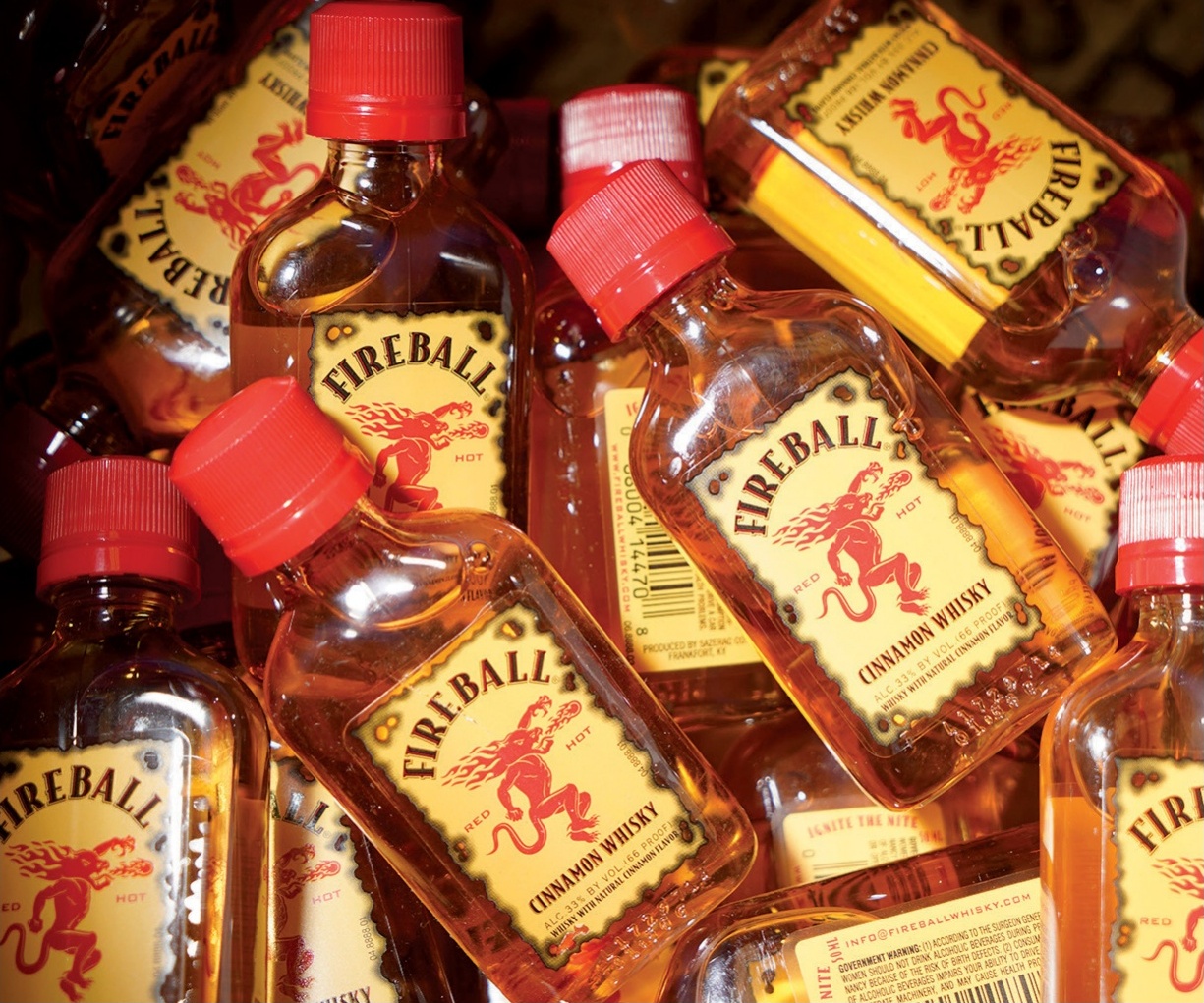
Sazerac’s Fireball, which competed against Jägermeister, benefited immensely from social media.
RICK MAIMAN/SYGMA/CORBIS; ERIC VIDAL/REUTERS; SPENCER PLATT/GETTY IMAGES
THE DRINKS INDUSTRY 1972-2022
2010–2015
Consolidation Keeps Churning
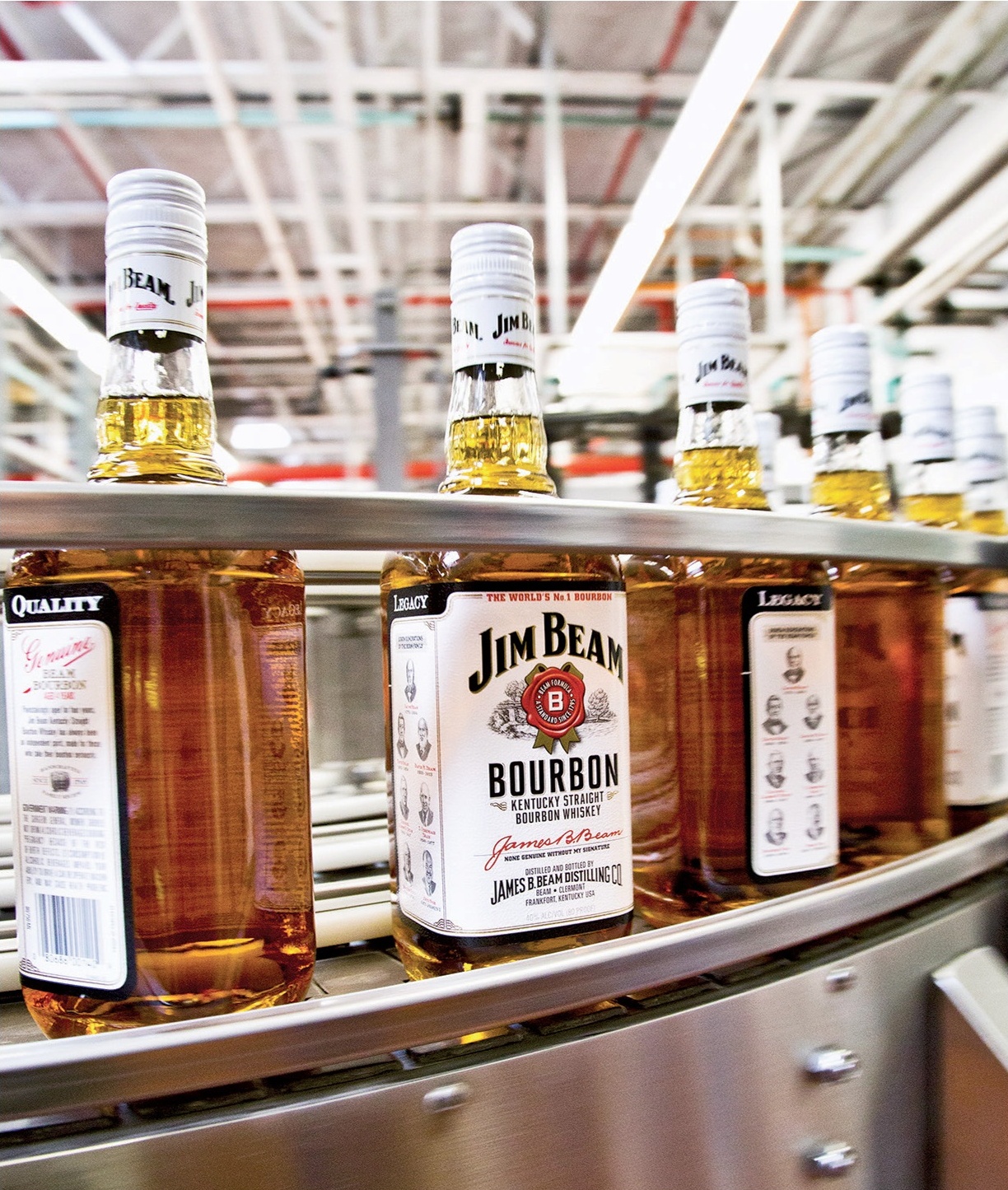
Japan’s Suntory acquired Beam Inc. for $16 billion in 2014.
I n the early months of the new decade, one of the biggest names in business entered the middle tier: Warren Buffett. In March 2010, McLane Co., the food distribution giant owned by Buffett’s Berkshire Hathaway firm, purchased Empire Distributors, a leading spirits and wine wholesaler in Georgia that also operated in North Carolina. While industry observers anxiously waited to see if Buffett would go full-bore into the spirits and wine distribution business, McLane’s Empire Distributors has expanded in a measured fashion, with current operations in Colorado, Georgia, North Carolina and Tennessee and revenues of $1.4 billion.
Marvin R. Shanken also made a major play in 2010, when he acquired Malt Advocate magazine and its WhiskyFest event arm. Shanken rebranded the publication as Whisky Advocate, and the revamped magazine quickly became a key proponent of the whisk(e)y renaissance that continues in full boom today. A year later, in April 2011, he launched the company’s first digital daily news service, called Shanken New Daily (SND), which quickly established itself in the industry as a “must read” to stay abreast of fast-changing developments in the wine and spirits business.
After years of eye-catching growth, vodka began to slow, as consumers lost much of their taste for the seemingly never-ending parade of new flavors. Meanwhile, brown spirits began catching on again in a big way, although this time around it was Bourbon—not Scotch—that was gaining favor. Jack Daniel’s, Jim Beam, Evan Williams and Maker’s Mark carved out solid gains—though the category’s fastest growth came from its burgeoning high end.
Late in 2011, with its business going strong amid the Bourbon boom after years of struggle, Beam became a standalone entity when it was spun-off from consumer goods conglomerate Fortune Brands. The company was barely on its own before rumors sprouted that it would soon be acquired by a major drinks player. Still, Beam would remain independent for another two-plus years before Japan’s Suntory would obtain the spirits marketer for roughly $16 billion in early 2014.
Clearly seizing on the “you can’t get too much of a good thing” ethos, marketers leveraged this new thirst for whisk(e)y by taking an approach similar to that engineered by their vodka brethren years before. Suddenly, flavored whisk(e)y was born. Campari was one of the first into the pool when it extended its Wild Turkey Bourbon with Wild Turkey American Honey. When it achieved success in the years following the economic downturn, others soon followed—including Jack Daniel’s with its Tennessee Honey and Jim Beam with Red Stag, among many others. Soon after, “moonshine” became a hot category, with offerings like Ole Smoky and Junior Johnson Midnight Moon earning Impact “Hot Brand” awards for their impressive progress. And then there was Fireball.
Owned by Sazerac Co., which had previously been best known for a vast array of sub-premium brands, Fireball began the decade quietly, selling just over 100,000 cases in 2010. Soon, though, the Canadian whisky-based product was flying off the shelves and backbars. After many years as the shot of choice among the younger legal-drinking-age set, Sidney Frank’s Jägermeister increasingly saw the upstart Fireball encroaching on its territory. In 2010, Jägermeister was more than 2.5 million cases bigger than Fireball. That margin shrunk by nearly 1 million cases over just the next two years. Like Jägermeister’s, Fireball’s ad spend was minimal. However, while its shot-favorite predecessor largely prospered via word-of-mouth and ambitious on-premise promotional activity, the Sazerac brand benefited immensely from social media, with consumers spreading the word about Fireball in rapid-fire fashion—all at essentially no cost to the brand’s owner.
Following the adoption of the 21st Amendment to the U.S. Constitution in 1933, 18 states elected a control model, with the respective state governments taking an active role in the sale of beverage alcohol. Nearly 80 years later, those 18 still operated as control states when it came to the sale of spirits (others also maintained a control model for wine and/or beer).
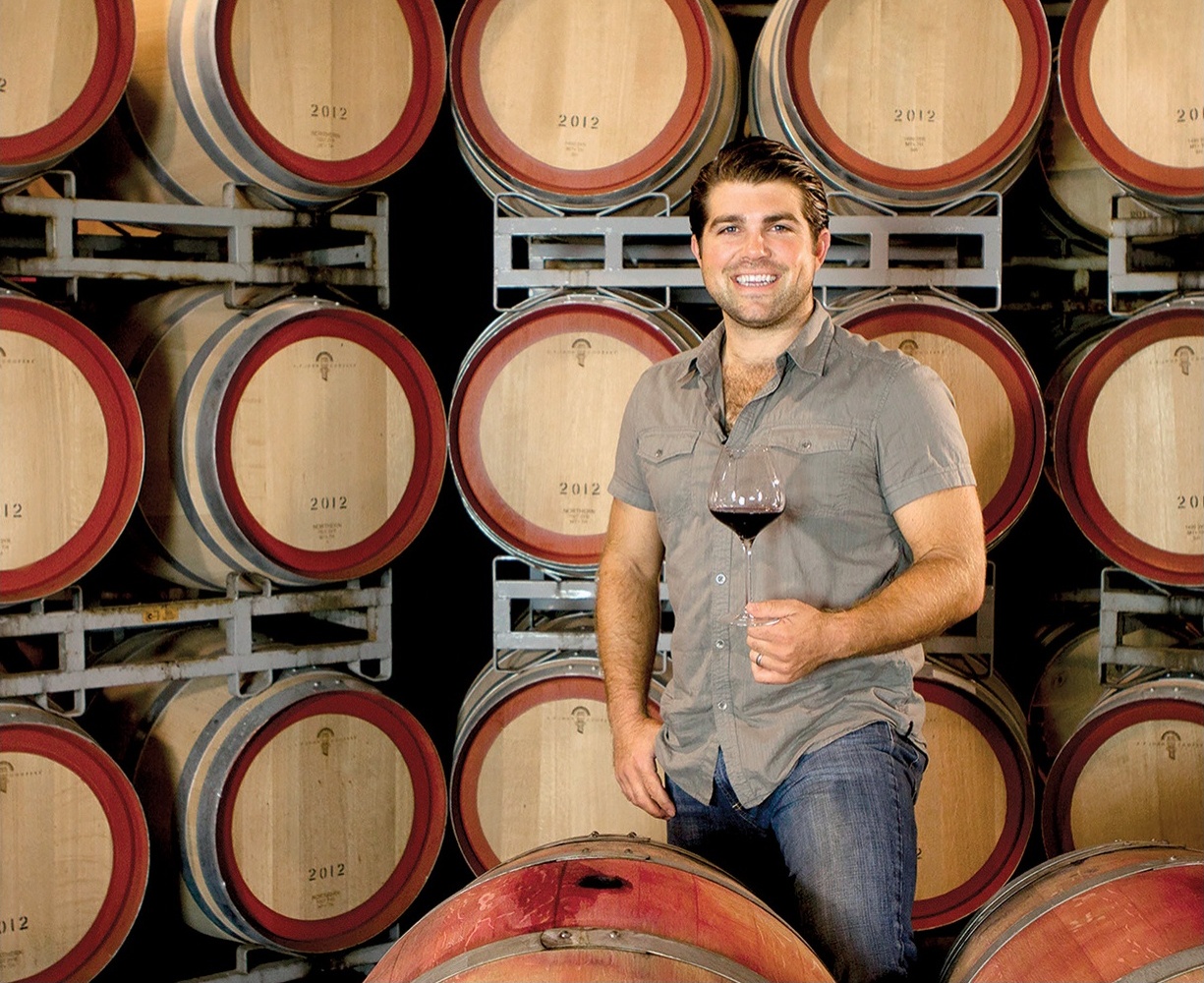
Joe Wagner of Copper Cane sold his Meiomi brand to Constellation in 2015 for $315 million.
But in mid 2012, the ranks of the control states shrank to 17, as Washington state privatized its liquor business. State residents voted for the change following an aggressive campaign by retail giant Costco—one of the largest Washington-based businesses. Those voters, though, were likely unaware that the shift would result in them paying some of the highest prices for spirits in the U.S., as high taxes were implemented in order to compensate for lost revenue from the state exiting the liquor business. Amid the fallout from Washington’s privatization, the push to privatize lost momentum in other states, including North Carolina, Pennsylvania and Virginia.
After acquiring Anheuser-Busch, it was thought that InBev might be out of the mergers and acquisitions game temporarily to focus on organic growth. And things were relatively quiet on the deal front for a while. In June 2012, though, ABI struck a deal to acquire the 50% of Grupo Modelo—and crown jewel Corona—that it didn’t already own.
The $20 billion deal took nearly a year to finalize, and while the world’s biggest brewer added Mexico’s top beer-maker, the real winner may well have been Constellation Brands. Because of antitrust concerns, ABI was forced to sell Modelo’s U.S. business to Constellation. That move essentially transformed Constellation—which not long before was vying with Gallo to become the leading U.S. (and global) wine marketer—into a beer company. Indeed, while Constellation’s spirits and wine business grew by around 1% in fiscal 2015, the company’s beer business—led by Corona and Modelo Especial, an Impact “Hot Brand” for the past two decades—was up by double-digits.
Still, Constellation has pushed forward in spirits and wine. The company’s Svedka brand overtook Absolut to become the U.S. market’s top-selling imported vodka brand in 2015, with its yearly sales north of 4 million cases—3 million more than when Constellation had acquired the brand eight years earlier. Meanwhile, Constellation acquired Meiomi, purchasing the Pinot Noir–driven brand from Copper Cane for $315 million. Meiomi’s volume jumped from 90,000 cases in 2010 to nearly 800,000 cases in 2015, largely on the strength of its Pinot Noir offerings.
For years, Pinot Noir had been one of the best-performing varietals in the U.S. market. Still, it couldn’t keep pace with Moscato. Moscato began the 21st century as a 100,000 case varietal, but had soared to nearly 5 million cases by 2010. It wasn’t nearly done though, as by 2015 it had climbed past the 15-million case threshold. The thriving varietal almost single-handedly secured white wine’s advantage over red in the process. By 2015, the disparity had expanded to more than 17 million cases.
Fireball continued to charge ahead. The Sazerac brand sold around 4.5 million cases in 2015, accounting for more than half of overall flavored whisk(e)y sales. The category jumped by around 26% in 2015, following a 50% advance the year before. Despite Fireball’s vast scale, flavored whisk(e)y’s shining star became Crown Royal Regal Apple. Introduced in the closing weeks of 2014, the offering shipped more than 600,000 cases in 2015, giving new life to the Crown Royal franchise, which had stalled after years of growth. The brand that had made news nearly 20 years before by breaking the industry’s voluntary ban on spirits advertising was again making headlines.
Amid all the upheaval in the spirits market, Smirnoff continued to lead, while Bacardi remained ensconced in second place and Captain Morgan long maintained the third slot. With the emergence of flavored whiskey, brands like Jack Daniel’s and Crown Royal soared to new heights, and the big three were vulnerable for the first time in years.
Around the same time, it was thought that Bacardi and Captain Morgan could soon face new competition in the rum category. In July 2015, then-President Barack Obama announced that formal diplomatic relations between the U.S. and Cuba would resume, and some travel restrictions between the two countries were lifted. While the trade embargo remained in place, momentum to remove it appeared on the rise. In January 2016, the U.S. government recognized Pernod Ricard’s Havana Club trademark, reigniting its long-running battle with Bacardi, which also claims ownership of the trademark in the U.S. The dispute continues to this day.
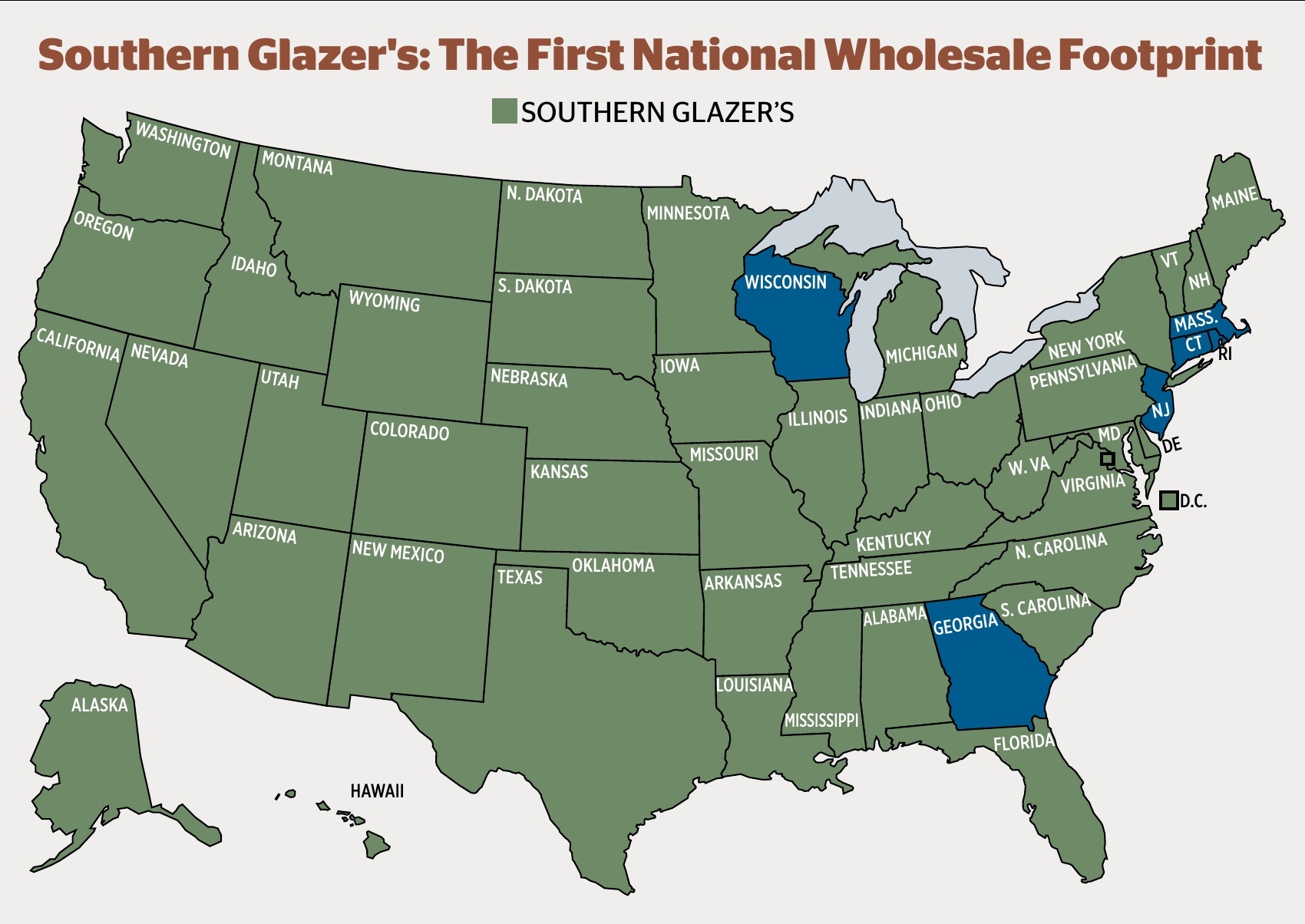
By 2017. distributor Southern Glazer’s was operating in 45 states.
Vodka was the industry darling in the 2000s and whisk(e)y has been since 2010, but Hennessy has quietly generated some of the most impressive growth in the industry. The Cognac leader and its competitors largely concentrated on China as the 21st century began, and that strategy paid off as the category surged, leapfrogging Scotch as Chinese consumers’ favorite imported spirit. Pernod Ricard’s Martell sold more than 1 million cases in China. But under the stewardship of Moët Hennessy, Hennessy also continued to keep a close eye on—and invest heavily in—the U.S. market. Only supply constraints are holding it back from even faster growth.
Tito’s surge continued even as it fought off a torrent of lawsuits questioning its “handmade” claim. With consumers caring more than ever about the provenance of brands, Tito’s was one of many beverage alcohol brands to face such litigation. While some of the targets were leading brands, such as Jim Beam and Blue Moon, the burgeoning craft spirits segment was also a frequent target. This trend intensified after it was revealed that a host of craft products (and bigger brands as well) were produced at a massive distillery in Indiana by MGP Ingredients. As craft products faced more demand but also more scrutiny than ever before, some of craft beer’s biggest players began selling out—and industry giants were more than willing to pay top dollar.
In September 2015, Heineken NV acquired a 50% stake in California’s Lagunitas, and while the price was undisclosed, original estimates of around $500 million were later thought to be low. Weeks later, Constellation turned heads by anteing up $1 billion for San Diego’s Ballast Point, whose net sales for 2015 weren’t expected to be much above $100 million. It cut losses on the deal in recent years after it became apparent Ballast Point’s growth potential had been overestimated. Not long after that, Colorado’s New Belgium—long one of the leading craft players—began seeking a buyer; today Kirin owns the brewery, along with Michigan’s Bell’s.
As 2015 neared its end, it seemed that Anheuser-Busch InBev (ABI) was snatching up a new craft player with each passing day. In a five-day period in late December 2015, the world’s biggest brewer acquired three craft players: Arizona’s Four Peaks, Colorado’s Breckenridge Brewery, and U.K.-based Camden Town Brewing. One month earlier, ABI made headlines when it obtained its chief rival—SABMiller—for $107 billion. While the mega-deal created an unrivaled global brewing titan (although it could be argued that ABI was already that), as with the Modelo deal from 2013, ABI was forced to make major concessions in the U.S. to win approval. It was forced to sell SABMiller’s majority share of MillerCoors to Molson Coors, which paid $12 billion for the 58% stake. So, the biggest brewing blockbuster ever essentially left the ranks of the U.S. market unchanged, with ABI still controlling nearly 50% and Miller-Coors holding almost 30%.
When consumers reached for a bottle of bubbly to celebrate the start of 2016, they were far more likely to choose Prosecco than Champagne. The Italian sparkler’s upswing was nothing short of phenomenal, as its U.S. volume advanced from around half-a-million cases in the U.S. in 2008 to some 4 million cases in 2015—when it outsold Champagne by nearly threefold. Prosecco’s leading brands, including La Marca, Mionetto, Risata, Zonin, Riondo and Lunetta, all saw double-digit growth. The Prosecco category had come so far so fast that producers and growers were debating in 2015 whether the industry would continue to have enough wine to satisfy market demand.
Meanwhile, even as the leading players in all three tiers amassed awesome scale and reach, the consolidation trend showed no sign of abating. In October 2015, Charmer Sunbelt Group and Wirtz Beverage Group—two of the top half-dozen spirits and wine distributors—agreed to merge. Also around that time, Southern Wine & Spirits and Glazer’s signed a letter of intent to form a strategic alliance, in their second go-round. The Southern-Glazer’s union brought together the country’s first- and fourth-largest spirits and wine wholesalers, respectively, to create a distribution force of unmatched scope. The two wholesalers’ combined revenue surpassed $15 billion, with operations in more than 40 U.S. states.
THE DRINKS INDUSTRY 1972-2022
2016–2022
A Whole New World
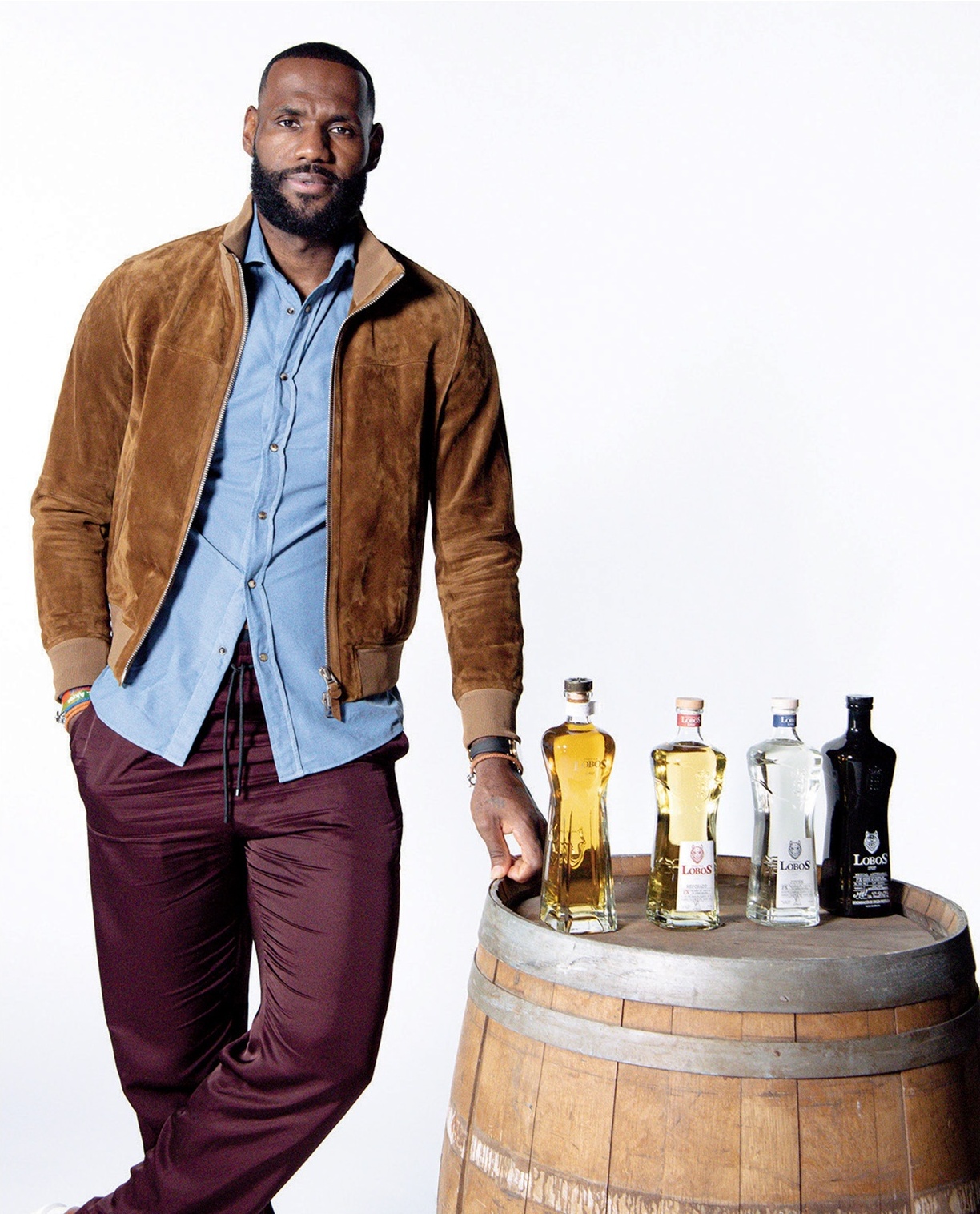
LeBron James, with his Lobos 1707 line, was one of several celebrities with premium tequila brands.
L ooking back over a period defined by dramatic geopolitical shifts, vast economic disruptions and an unthinkable global pandemic, it would be easier to focus on what didn’t change than what did over the past seven years. As 2016 dawned, the leading wholesalers nationwide continued their quest to consolidate the business, marked by the christening of the new Southern Glazer’s Wine & Spirits. But while that massive company embarked on a new era and set about integrating its operations, its competitors weren’t standing pat. After the formation of Breakthru Beverage via the combination of Wirtz Beverage and Charmer Sunbelt, only two years passed before another transformational deal was exclusively reported by Shanken News Daily (SND).
In November 2017, Breakthru agreed to join forces with second-ranked distributor Republic National Distributing Co. (RNDC) to form an emboldened competitor to Southern Glazer’s. But the alliance did not come to fruition. In April 2019, SND reported that after 16 months of talks, RNDC and Breakthru ended merger discussions due to the Federal Trade Commission dragging its feet on approving the deal. With legal fees mounting, RNDC and Breakthru opted to withdraw their application to the FTC and go their separate ways.
But the consolidation train would keep rolling. Before 2019 was over, RNDC, which had long stated its desire to create a national wholesale footprint, turned to the West and formed a joint venture with the Underwood family, owners of $3 billion giant Young’s Market Co. Grafting Young’s 10-state territory onto the existing RNDC business created a $12 billion behemoth with operations across 32 markets. RNDC followed that move with entries into both New York and Illinois via joint venture deals with Heritage Wine Cellars and Opici Family Distributing, respectively.
Breakthru likewise continued to expand, purchasing Missouri’s Major Brands, while Southern Glazer’s made a bolt-on deal in California, acquiring Epic Wines & Spirits from billionaire Bill Foley. Fourth-ranked Johnson Brothers also steadily grew its presence, making moves in Virginia, West Virginia and North Carolina, among other states.
Consolidation remained in swing in the retail tier as well. National off-premise giants such as Total Wine & More and Costco continued to expand their reach. Total Wine co-founder David Trone entered the political sphere in 2018, becoming a Democratic congressman from Maryland.
As the advance of technology continued to transform business interactions globally, everyone from Total Wine to the local corner liquor store moved aggressively to capitalize on consumers’ penchant for convenience with e-commerce initiatives, including home delivery. Service providers like Drizly, Minibar and Instacart—as well as online retailers like Wine.com—furthered those delivery efforts.
Taking the trend a step further, “instant-needs” players such as Gopuff—with $2 billion in sales in 2021—have sprung to the fore in recent years and become increasingly important participants in beverage alcohol. After acquiring BevMo on the West Coast and Liquor Barn in Kentucky, Gopuff boasts more than 400 alcohol licenses across 30 states.
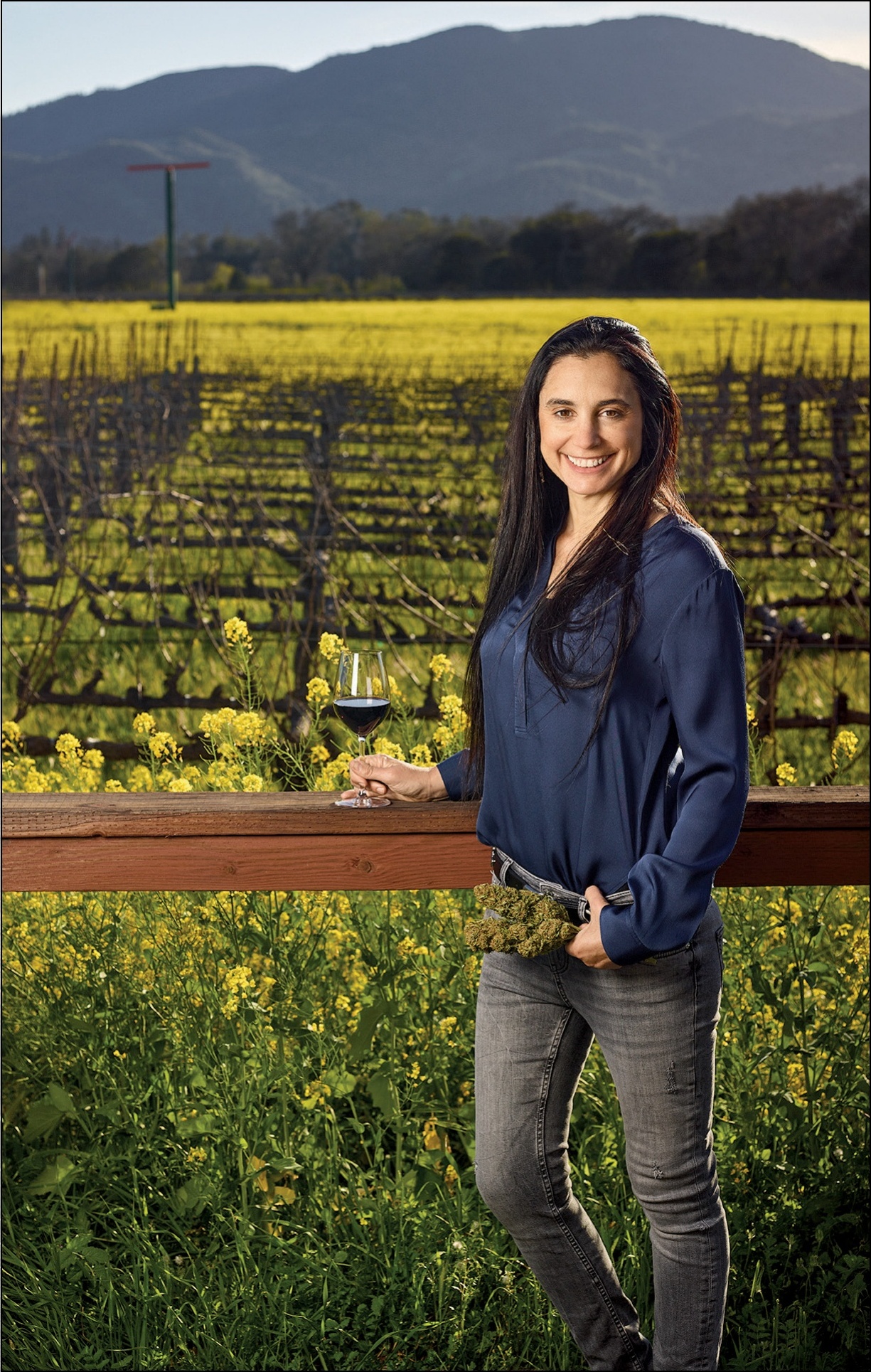
Stephanie Honig, of Honig Winery in Napa’s Rutherford, is president of the Napa Valley Cannabis Association.
Wholesalers have likewise prioritized technology and e-commerce lately, with all of the top distributors unveiling new proprietary online platforms to streamline operations for both themselves and their suppliers and customers. They’ve also invested in e-commerce companies in some cases—the Wine & Spirits Wholesalers of America took a minority stake in Drizly, which it eventually divested as Drizly was acquired by Uber for $1.1 billion. Southern Glazer’s then took a minority interest in upscale e-commerce site ReserveBar.
All these moves to update the industry for the digital age paid handsomely when the world suddenly confronted the worst pandemic in a century in early 2020. With on-premise closed for an extended period, off-premise exploded as consumers used online ordering, delivery and curbside pickup to stock up on familiar brands. As ensuing waves of the COVID-19 pandemic swept over the globe, many of these habits have remained in place, with consumers coming to rely on newly available ways of shopping for their favored tipples.
As off-premise operators raced to meet soaring demand, restaurants and bars were decimated by lockdown orders and social distancing requirements. But they too made some successful pivots to blunt the damage, focusing on takeout during the worst waves and leveraging relaxed rules around “cocktails to go.” Those relaxed rules have now become permanent in many states, opening up a lucrative new sales avenue for businesses still sorely in need of assistance.
In 2021, the American Rescue Plan established the Restaurant Revitalization Fund (RRF) with $28.6 billion in funding—saving more than 900,000 jobs, according to the National Restaurant Association—but failed to fully address the plight of restaurant operators around the country still recovering from the pandemic. Out of more than 278,000 restaurants that applied for RRF funds, only 101,000 received aid before the funding was depleted, and Congress has so far declined to offer more aid. Still, as of this writing, the on-premise is estimated to be about 80% back to full strength and the hope is that it will be back on pre-pandemic footing from a value perspective before long.
The pandemic also had the effect of accelerating nascent trends that were already in motion, among them consumer proclivity for premixed canned cocktails. Rising in tandem with the hard seltzer craze, best exemplified by White Claw from Mark Anthony Brands and Truly from Boston Beer, spirits-based RTDs rapidly gained prominence. Gallo holds the pole position with High Noon Sun Sips, which is jockeying to become the biggest spirits brand in the U.S. overall, perhaps by the end of 2022. That would mean overtaking Tito’s vodka, which itself wrested the top position from Smirnoff in 2020.
In addition to spirits-based RTDs, tequila and whisk(e)y have remained the major growth engines for the spirits business. Tequila surpassed rum in terms of U.S. volume in 2021, with its higher-priced 100%-agave segment leading the charge. The category’s success has attracted new brand launches from a host of celebrities, among them Michael Jordan and partners (Cincoro), Dwayne “The Rock” Johnson (Teremana), Kevin Hart (Gran Coramino), Mark Wahlberg (Flecha Azul) and LeBron James (Lobos 1707). All are following in the footsteps of George Clooney and Rande Gerber, who sold their Casamigos tequila brand to Diageo in 2017 for $1 billion.
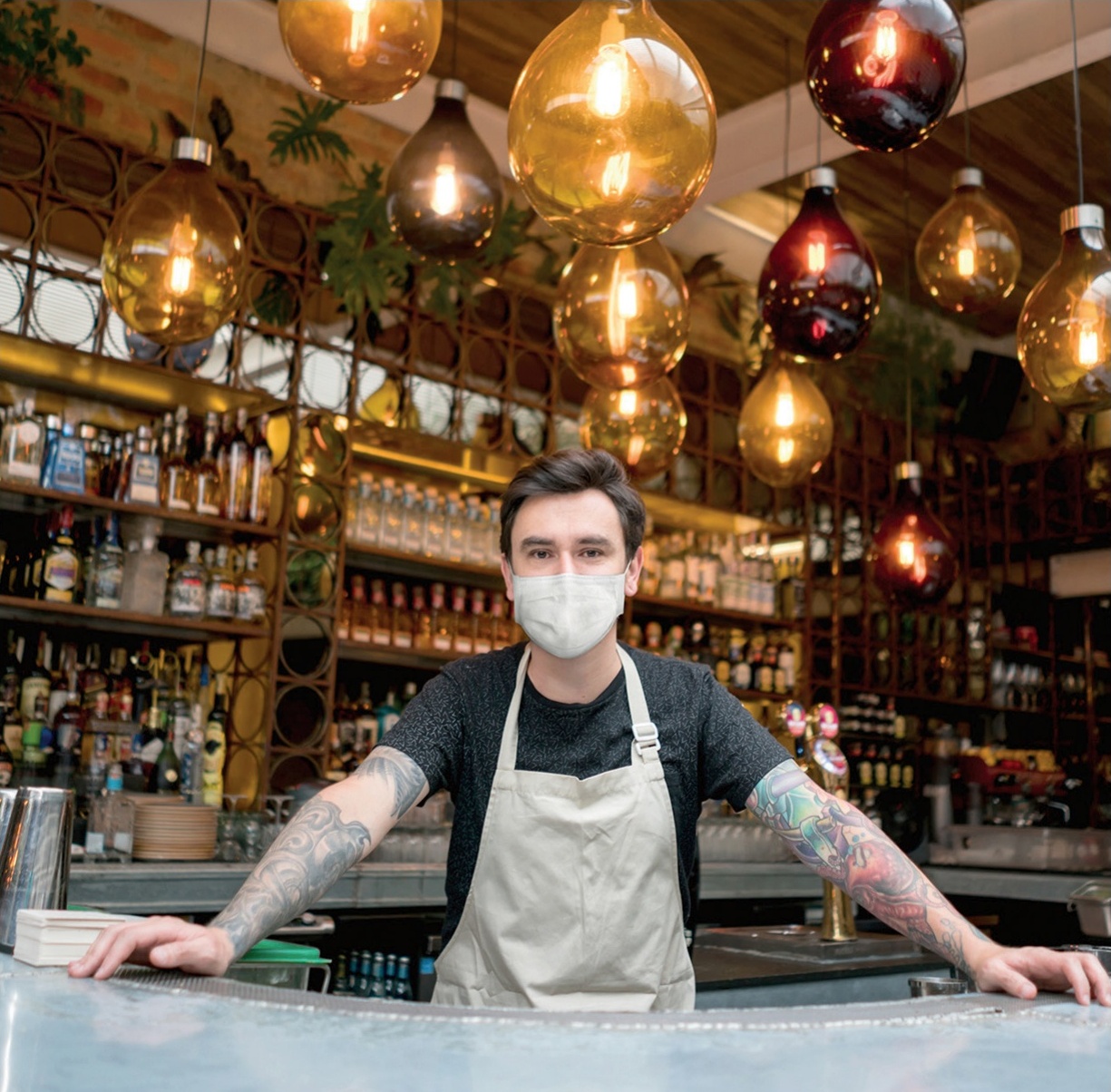
Bars and restaurants were hurt by the COVID-19 pandemic, though Americans continued to imbibe at home, often through takeout.
Meanwhile, the whisk(e)y renaissance is going strong, with both American bottlings and imports such as Irish whiskey and single malt Scotch continuing to gain adherents. In particular, Kentucky has seen enormous investment both in terms of production capacity and amenities such as visitor experiences at distilleries, with the Kentucky Bourbon Trail drawing an influx of whiskey tourism. The consumer enthusiasm for Bourbon tourism is no surprise, given that straight American whiskey depletions surpassed 27 million cases in the U.S. in 2021, excluding flavors, up from 20 million cases in 2015.
Like spirits, premiumization is today a central theme in wine, where the $15-and-above segment has provided the best prospects. Among the key milestones of recent years, Italian label Stella Rosa, marketed by Riboli Family Wines, ended Yellow Tail’s long reign as the top-selling imported wine. But Yellow Tail marketer Deutsch Family Wine & Spirits built another industry juggernaut in California’s Josh Cellars, now a 5-million-case brand.
The boom in sparkling wines has likewise been a key development, with both Champagnes such as Veuve Clicquot (Moët Hennessy) and Proseccos such as La Marca (Gallo) fueling growth. So too has been the rebirth of “light” wines, rising in tandem with a trend toward low- and no-alcohol offerings. Now billed as representing the “better-for-you” wine category, lower-calorie and lower-alcohol versions of existing brands have been hitting the market at a rapid pace, along with some entirely new labels dedicated to wellness-minded consumers.
Ever keeping its eye on the future, Constellation Brands sent shock-waves through the industry when it became the first drinks player to invest in cannabis, taking a $4 billion stake in Canada’s Canopy Growth. Canopy and other cannabis players have seen plenty of growing pains due to the uneven rollout of recreational sales in North American markets and the failure of the U.S. federal government to follow the wishes of a two-thirds majority and legalize in a timely fashion. Yet there’s no question about consumer demand, with some states already pulling in more tax revenue from cannabis than from alcohol, and the top three wine and spirits wholesalers all active on the CBD side of the category. While acknowledging the near-term challenges, industry participants and observers alike see cannabis products continuing to expand their presence in America in the coming years.
“This is a business that we do believe will be a large segment for us to participate in in the future,” Southern Glazer’s CEO Wayne Chaplin told Impact recently. “It’s coming a little bit slower than we had hoped, but I think back to 50 years ago when fine wine was a very small segment and how it took time to be embraced by the consumer, and I feel the same way about CBD. It’s early days. We’re going to continue to invest behind it, and we believe it’s a big opportunity going forward.”
And M. Shanken Communications will be covering all this, and more, every step of the way.
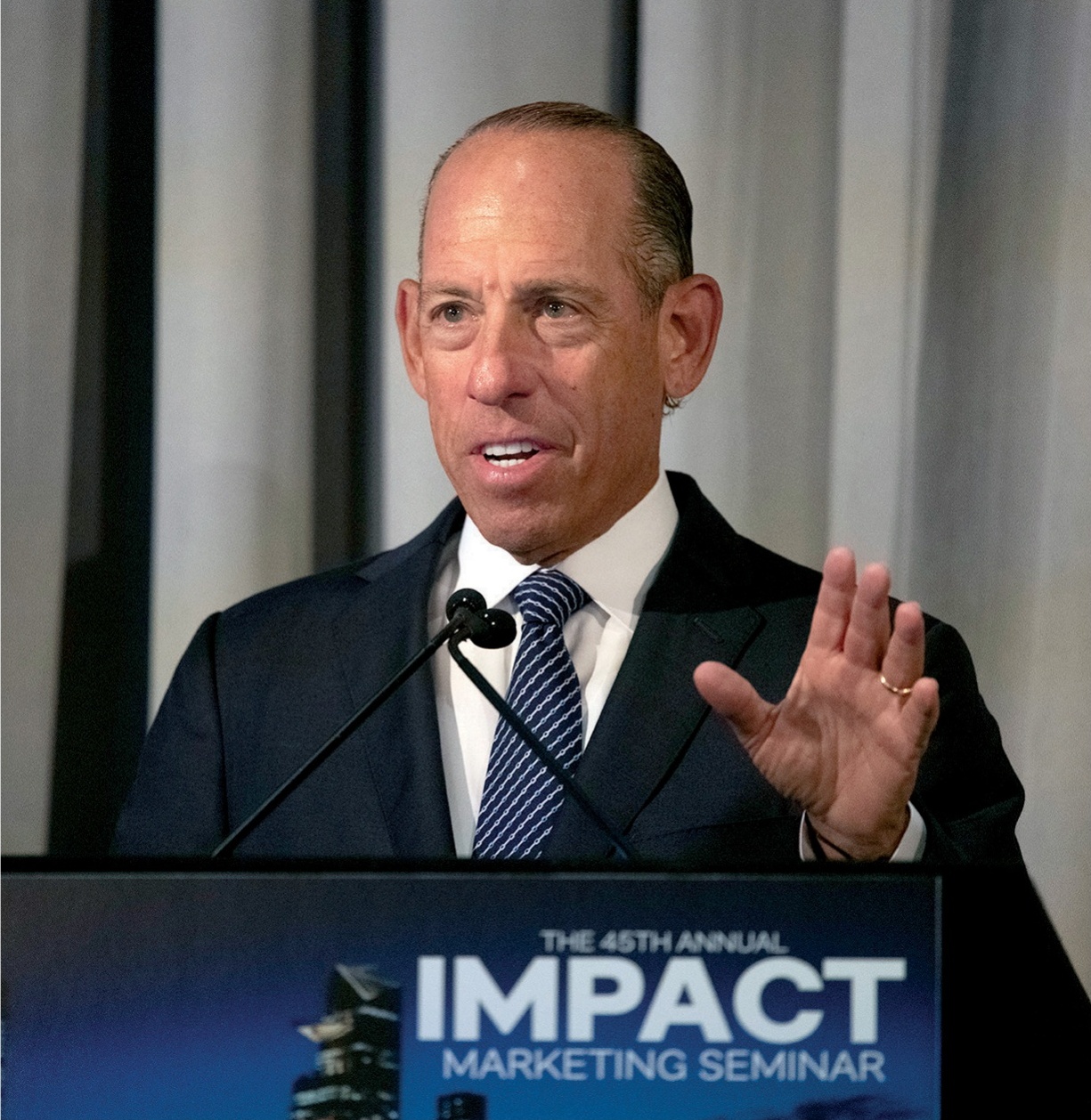
Southern Glazer’s CEO Wayne Chaplin acknowledges that consumers have been slow to embrace CBD, but notes, “We believe it’s a big opportunity going forward.”
ANDRESR/GETTY IMAGES
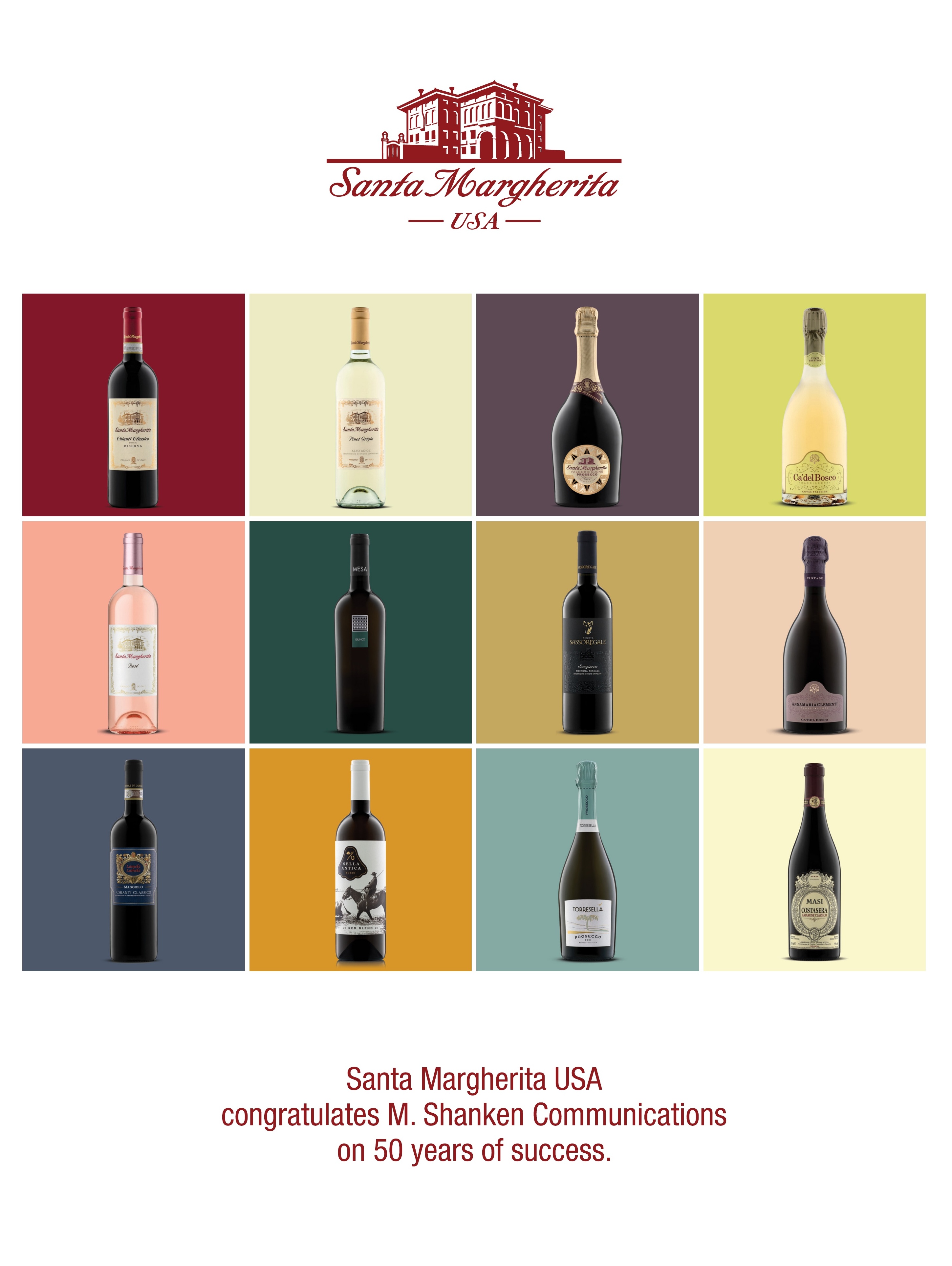
THE CIGAR INDUSTRY 1972-2022
A Brief History of the Cigar Industry
The cigar world of 50 years ago is unrecognizable today
By David Savona
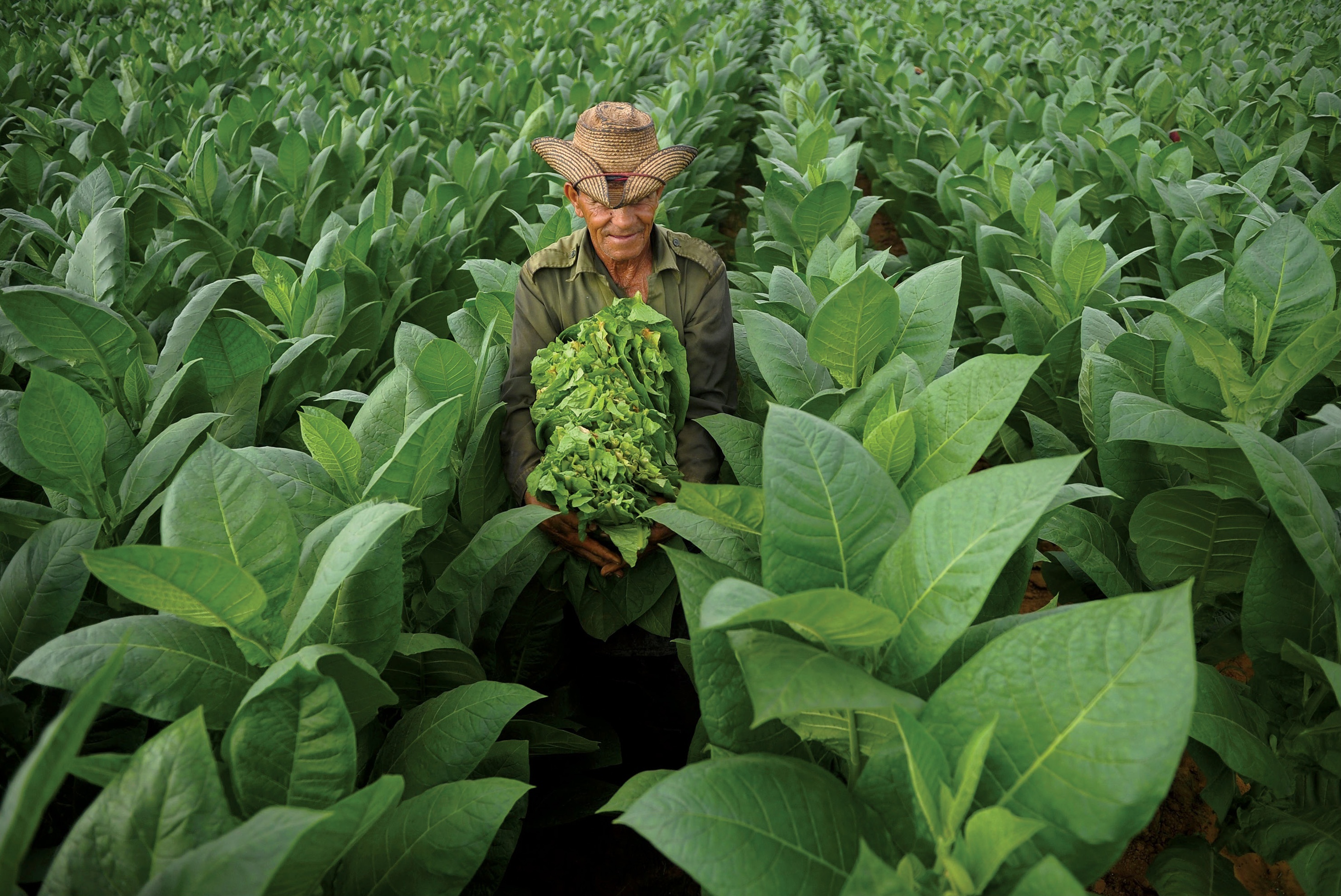
A worker harvests tobacco in Cuba’s Pinar del Río province, one of the country’s prime tobacco growing regions.
C igar sales in the United States have come a long way over the past 50 years. In the early 1970s, the cigar industry was in the midst of both decline and adjustment. It had been only 10 years since President John F. Kennedy signed the embargo banning Cuban goods, a move that cut off American cigar makers from their primary ingredient: Cuban tobacco. Cigar makers were forced to find new blends. Imports of handmade, premium cigars—most of them from the Canary Islands, Jamaica and Mexico—were around 70 million units a year, a fraction of what they are today. Cigars were more commodities than luxury items, and the typical cigar smoker was an older male who bought by the box and largely kept to the same brand and size. Good cigars could be had for mere coins, great cigars for a buck. “The prices were crazy,” says Sherwin Seltzer, who began selling cigars in the late 1950s. “Macanudo was a dollar, maybe $1.25.”
By the early 1990s, cigar sales had stagnated. American cigar consumption was spiraling to all-time lows, having dropped by more than 66% between the mid-1960s and early 1990s, according to the U.S. Department of Agriculture. Prices were still ridiculously low, with many good handmade cigars selling for less than $2 apiece. Imports of premium, handmade cigars shrunk by 2.6% between 1990 and 1991, to 103.6 million cigars. People compared the cigar industry to the buggy-whip business during the advent of motorized vehicles—one without a future. No one knew it was about to change, in a dramatic fashion.
Imports of handmade cigars began to climb toward the end of 1992—soon after Cigar Aficionado magazine launched in September of that year. The American cigar market was turned on its head. Imports began to rise, slowly at first (by 3.8% in 1992), then rapidly, gaining 10.3% in 1993, 11.8% in 1994, 33.1% in 1995 and 66.7% in 1996, to more than 293 million cigars. Between 1992 and 1996, the market for fine cigars nearly tripled.
Over the decades, Cigar Aficionado has continued to provide unbiased information on quality handmade cigars, including an annual ranking of each year’s top 25 releases.
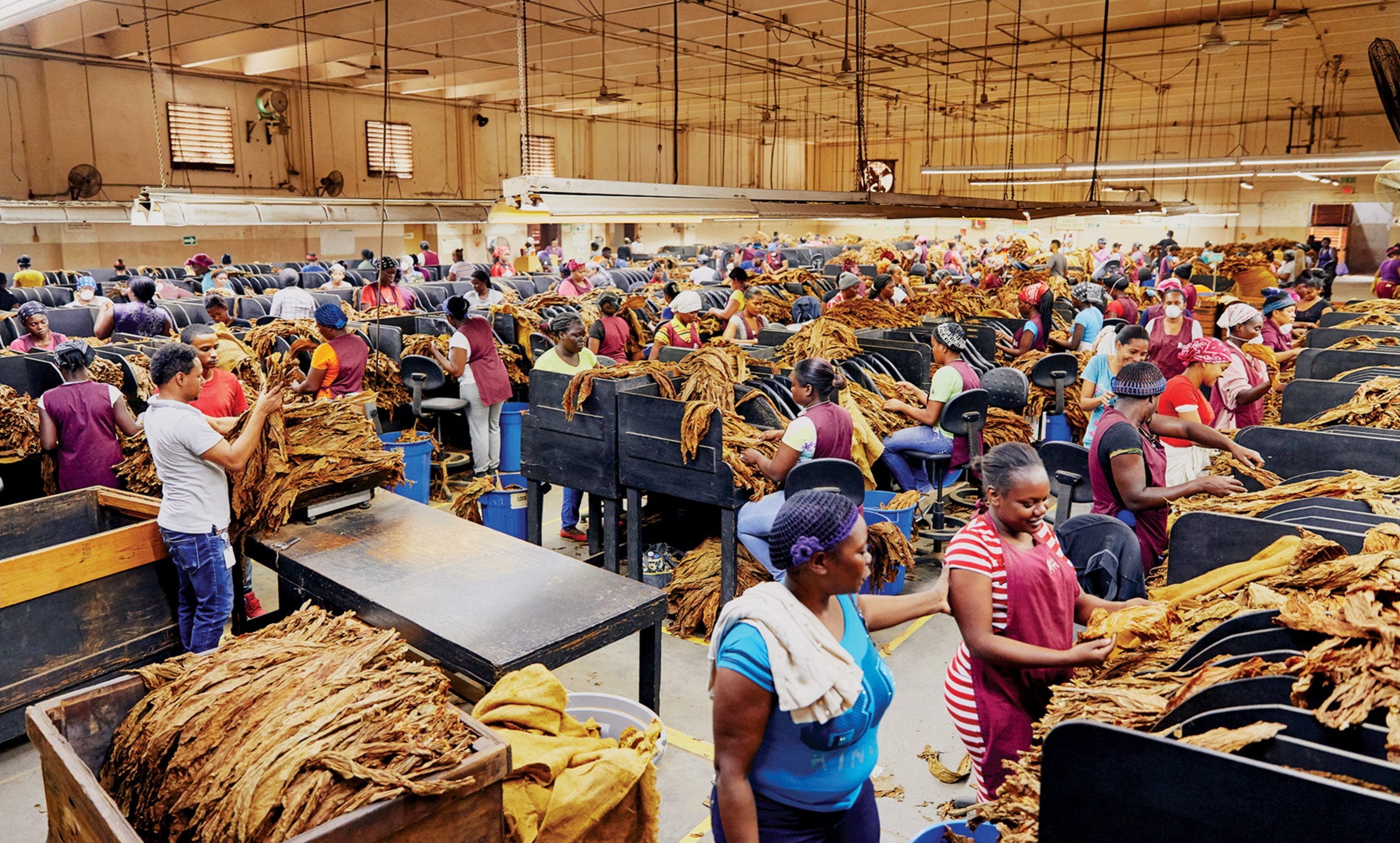
Workers sort tobacco at the Dominican Republic’s Tabacalera de García factory.
Once-sleepy smoke shops became jammed with customers. Incoming orders of cigars would sometimes not even make it to the walk-in humidor. Kansas City retailer Curt Diebel, whose boom-time business doubled each month for a time, went as far as to install a secret spot in his shop to hide his stock, in fear that new customers would walk in and buy everything he had. “I spent my time on the phone trying to convince the vendors to give me product,” Diebel says. “Then I had to allocate my product for my [regular] customers. We got tired of having strangers come in and saying, ‘I’ll take all of them.’”
In Miami, Ernesto Perez-Carrillo’s La Gloria Cubana brand—heralded in the third issue of Cigar Aficionado with several 90-point scores for $2 cigars—was suddenly the hottest thing in the cigar world and attracted a deluge of new orders. Perez-Carrillo’s sales rocketed from 700,000 cigars in 1992 to 3.3 million in 1996, and then nearly doubled to 6.1 million the following year.
Anti-smoking regulations in the U.S. were still in their infancy during the cigar boom, and restaurateurs eagerly welcomed cigar lovers. Cigar bars opened, cigar dinners flourished and cigar events brought cigar lovers out en masse. The boom benefited retail, too. Cigar shops expanded and new ones opened. As traditional cigar companies tried to expand their operations, newcomers flocked to the cigar industry, creating myriad new brands.
Cigar lovers were not only buying more cigars, but their buying habits changed as well. First, they moved from box buys to singles, experimenting with new brands, shapes and sizes. They began to buy stronger cigars—the most popular cigars of the early 1990s were often made of mild, Dominican filler, wrapped with even milder leaves of Connecticut shade. Cigar makers began to make more flavorful blends. The late 1995 release of the Fuente Fuente OpusX helped spark a trend toward more powerful, spicy smokes. Nicaragua, once shut off to the U.S. market due to a Reagan-era embargo, began to grow as a cigar-producing and tobacco-growing country, buoyed by the 1994 release of the ultrarich Padrón 1964 Anniversary Series, a Nicaraguan smoke that also ignited a trend toward box-pressed cigars.
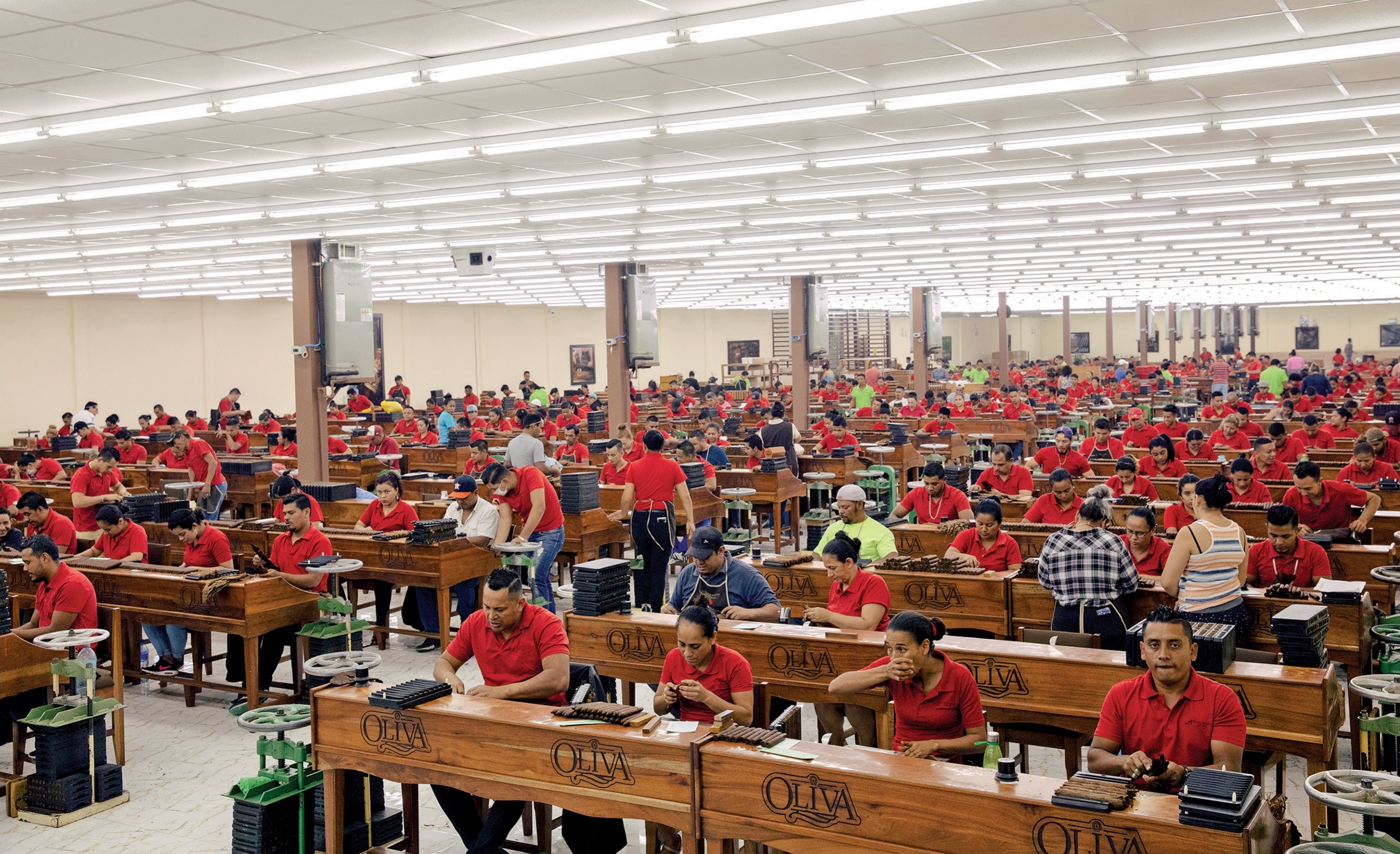
Hundreds of workers roll handmade cigars at the Oliva factory in Nicaragua.
As cigar sales grew, so did the girth (measured in ring gauge) of the most-popular smokes. One retailer said that in 1990, almost 80% of his sales came from the very slim lonsdale and corona sizes. By 1996, most of his sales came from fat robustos and corona gordas.
In the 1980s, cigar makers struggled to sell. In the 1990s, they couldn’t make enough to meet demand, as good cigars take years to produce since tobacco has to age. By 1995, more than 25 million cigars were on back order, and in 1996, that number was more than 50 million. “We were using tobacco so rapidly, we got caught,” said one industry executive at the time, forced to stop production of his biggest brand. “We didn’t have enough.”
Newcomers arrived in droves, cash in tow, in Honduras, Nicaragua and especially the Dominican Republic, hoping to make a quick profit on the boom. New factories appeared, particularly in the Dominican Republic, hiring away talented cigar makers. Many cut corners on production. It became a battle to find tobacco, workers, cellophane, cedar boxes—everything used to make a premium cigar. Tobacco companies planted seeds in such unlikely places as Peru, Colombia, Panama, even Canada, and cigar factories opened in Indonesia, Ecuador and elsewhere. The once-anemic industry trade show expanded from a few dozen booths to hundreds, and some enterprising attendees went so far as to sell their badges to those hoping to get inside.
It was a crazy time—and cigar sales had grown at an untenable pace. In 1997, established producers finally caught up, and some 500 million handmade cigars were shipped to the U.S. Cigar supply finally exceeded cigar demand. Cigars without pedigree suddenly became unwanted, orphans of the changing market. In 1998, discount retailers had a field day buying up unwanted cigars. Imports dipped in 1998, as the market struggled to absorb all the cigars that had been made in the dizzying, final days of the cigar boom. Shipments fell for two years straight, leveling off at 248 million in 1999.
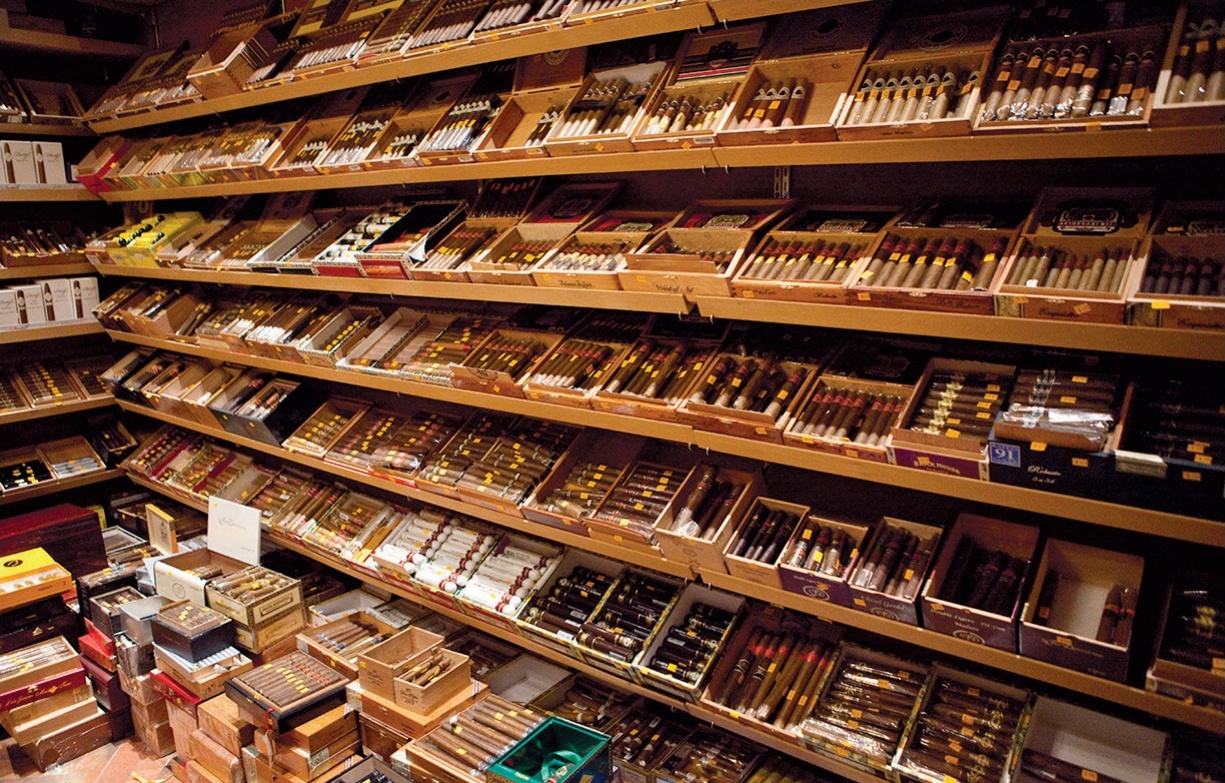
Cigar Aficionado was launched in 1992. Between 1992 and 1996, the market for fine cigars in the U.S. nearly tripled.
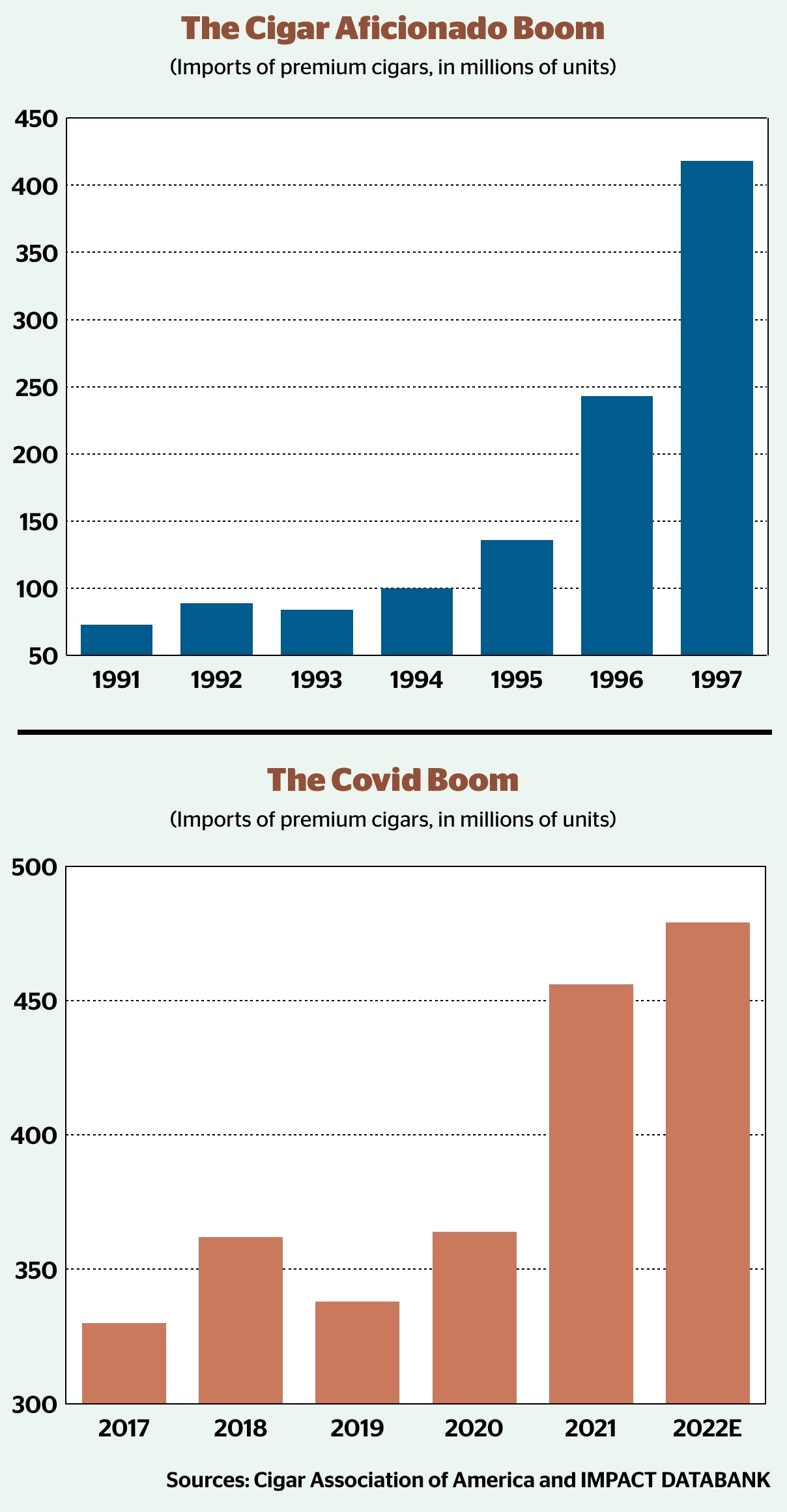
The New Millennium
With the cigar market undergoing radical change, the industry was remade. In 2000, General Cigar closed its Jamaica factory, ending some 30 years of history and putting an end to Jamaica’s era as a cigar-industry power. Cigar shipments from Mexico, once vibrant, kept shrinking. The industry began moving to a three-nation standard, with imports split between the Dominican Republic, Honduras and Nicaragua. By 1996, Nicaragua overtook the Dominican Republic as the leading producer of cigars, a title it holds to this day. (The Dominican Republic, a longtime No. 1 producer, now ranks second.) Today, those three producers make 99% of the handmade cigars shipped to the U.S.
After the fallout in 1998, the industry began to slowly recover, growing by an average of 6% annually between 2000 and 2010. By 2012, the magic 300-million-import mark was crossed again for the first time since the 1990s.
The post-boom world saw the rise of new challenges, primarily from onerous government regulation, first in the form of smoking bans, then in the form of higher taxes, and most ominously with the onset of limitations imposed by the Food and Drug Administration. The industry responded to each challenge, then nature threw what many thought would be the most difficult of curveballs in early 2020, with the onset of a pandemic. What no one knew at the time was that this crisis would turn into a second boom.
When the world shut down due to COVID, making and selling cigars became difficult, and in some places impossible. Cigar factories and shops dealt with closures. But when people stopped going to the office, they sought personal reward, and many opted to reward themselves with cigars, one of life’s most affordable luxuries.
Imports climbed 25.3% in 2021 to 456 million cigars, the best year since 1997. “It was an absolutely phenomenal year, double-digit growth from the year previous—and 2020 was pretty good,” says Gary Pesh of Old Virginia Tobacco Co., who has been selling cigars since 1980.
The cigar world of 2022 is nothing like that of 50 years ago, or the years prior to 1992. Instead of selling for a dollar, cigars now sell for $10, $15, $20 or more. Instead of being smoked by an aging audience, the market is filled with enthusiastic consumers in their 30s, 40s and 50s, who not only gravitate to new releases but devour information about the people who make their favorite brands. And many cigar companies operate in a world with comfortable and reliable profit margins, no longer worried about welcoming the next generation into the business.
“When he founded Cigar Aficionado magazine in 1992, Marvin R. Shanken triggered the last cigar boom,” said Drew Newman of J.C. Newman Cigar Co. in 2021. “Twenty-five years later, the American premium cigar industry is in the midst of a cigar boom once again.”
YAMIL LAGE/AFP VIA GETTY IMAGES; RAMIN TALAIE/CORBIS VIA GETTY IMAGES
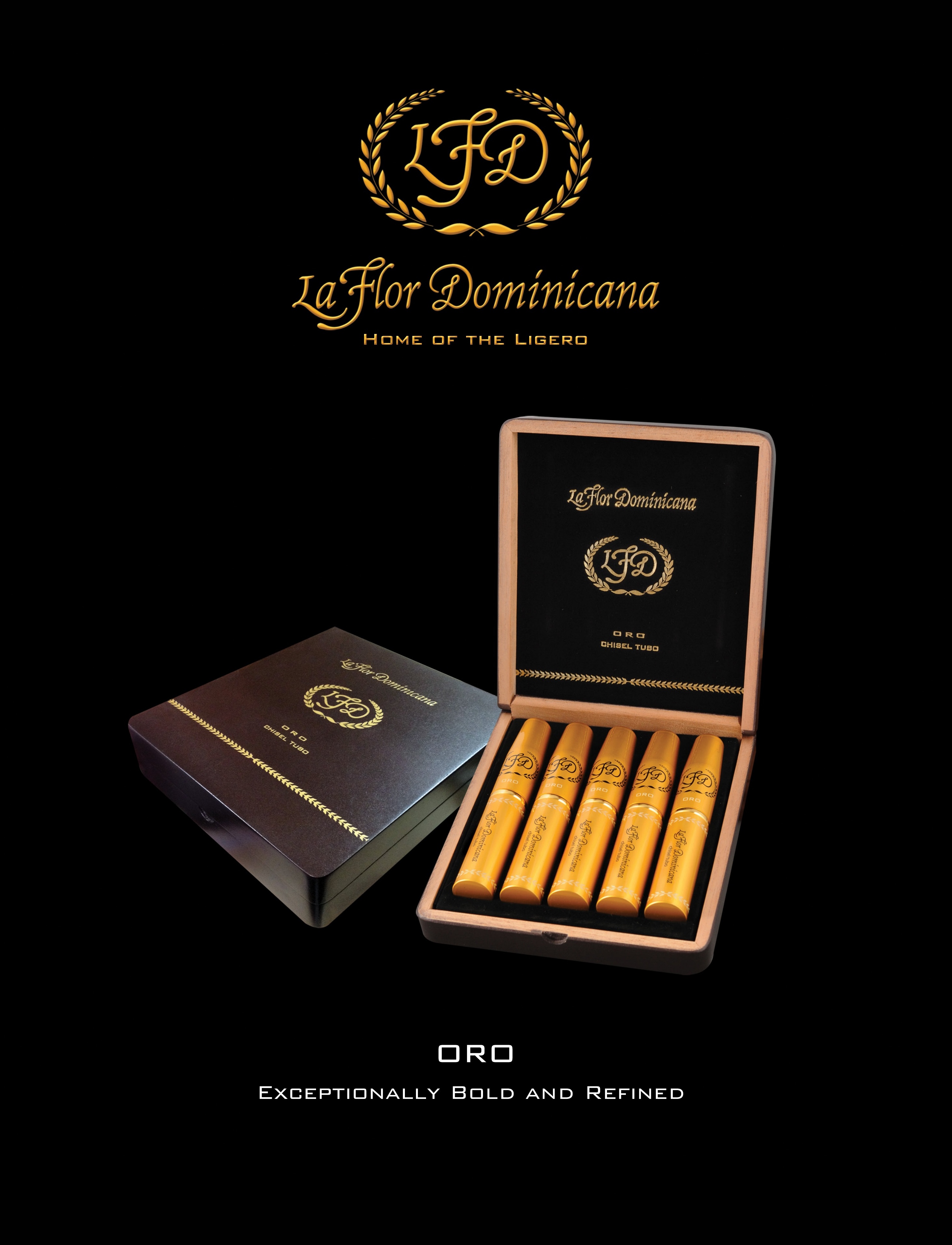
ADVERTISING OVER THE YEARS
Advertising Over the Years
A look at some of the most iconic spirits and wine advertising efforts—and their lasting impressions—over the past five decades
By Carol Ward
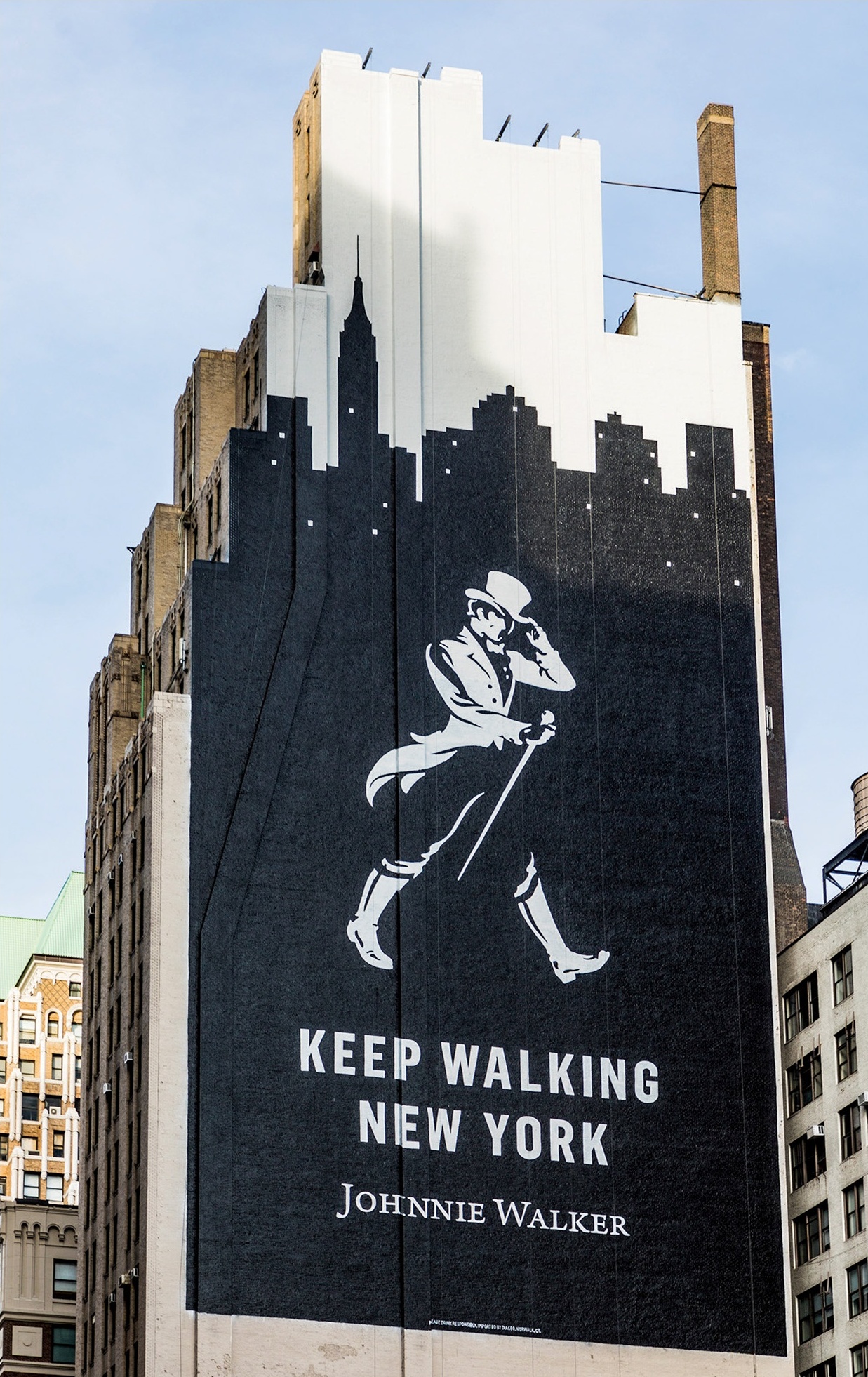
Johnnie Walker, 2017
T he ultimate goal of any consumer brand is to make a real and substantive connection with its target audience. Over the years, countless such connections have been made by spirits and wine producers, who’ve introduced their brands to willing consumers. Occasionally, though, a campaign breaks through in a more elevated way, inspiring brand trial, loyalty and even passion across a broad range of customers. A precious few campaigns resonate so expansively that they affect the zeitgeist of an era.
These cultural touch points create shared experiences and memories that reverberate throughout a generation of consumers. They’re referenced in pop culture, broadly recognized and iconic. There is no better example than the print campaign for Absolut vodka in the 1980s and 1990s.
Whit Friese, vice president and group creative director of creative marketing at CNN, recalls the impact of “the bottle and two words.” Friese, a former advertising executive who worked for Leo Burnett in the 1990s and who has contributed to campaigns for Dewar’s and Jim Beam, among others, never worked on the iconic Absolut campaign, but he remembers it as one of the most impactful campaigns of a generation.
“I remember, even when I was in college, studying the Absolut campaign and thinking, ‘This is as good as it gets. It’s simple. It’s bold. It’s breakthrough,’ ” Friese says. “It was on every back cover. That campaign lived for a long time and people would wait to see what the two words were. Of course, we knew one of them.”
The print campaign focused on an image of the Absolut vodka bottle with an ever-changing, two-word tagline: “Absolut [Blank].” The campaign ran for 25 years—one of the longest continuously running advertising campaigns in history—and had more than 1,500 print media iterations. “Absolut was not an advertising campaign. Absolut was a popular culture phenomenon,” says Adam Stagliano, global brand leader for advertising firm TBWA\Worldwide. Stagliano himself didn’t work on the Absolut campaign until the 2000s, but he believes the principles of good creative work weather the test of time.
Absolut’s is one of a handful of spirits campaigns that remain housed in the minds of advertising executives. It’s a campaign that’s studied in today’s advertising classes and remains highly regarded long after the actual advertising effort has ended. “I’d say Absolut has to be the most iconic campaign in spirits history,” Stagliano says. “Also right up there is Johnnie Walker. When people question which campaigns I envy most, the top of my list has to be Johnnie Walker.”
Specifically, Stagliano is referencing the “Keep Walking” Johnnie Walker campaign, which TBWA was not involved in; BBH London gets credit for that effort. The “Keep Walking” ad campaign launched globally in 1999, using the brand’s iconic striding man and featuring messages that focused on stories of achievement.
“I think the two, Absolut and Johnnie Walker, share principles,” Stagliano continues. “They’re stories well told; they have fundamental truths about them. One thing that I think is missed perhaps most of all in the mythology of those brands—and particularly today with all the talk about purpose and the like—is that Johnnie Walker and Absolut stood their ground to promote that they’re the finest products [in their respective spirits categories]. People forget that. At the end of the day, alcohol is something people consume, and the product matters.”
The “Keep Walking” campaign is still part of the Johnnie Walker messaging. One recent iteration, a TV and digital ad campaign, used the iconic tagline in an attempt to “put a spring in people’s step as they head back into the world and socialize with confidence,” after the waning of the global COVID-19 pandemic.
Those campaigns for Absolut and Johnnie Walker are just two of hundreds of wine and spirits advertising efforts that have shaped consumer drinking habits over the past five decades. Most are mere blips, but some campaigns leave lasting memories and a few even transcend their platform and are regarded as iconic brand communications even decades later.
Absolut, 1990
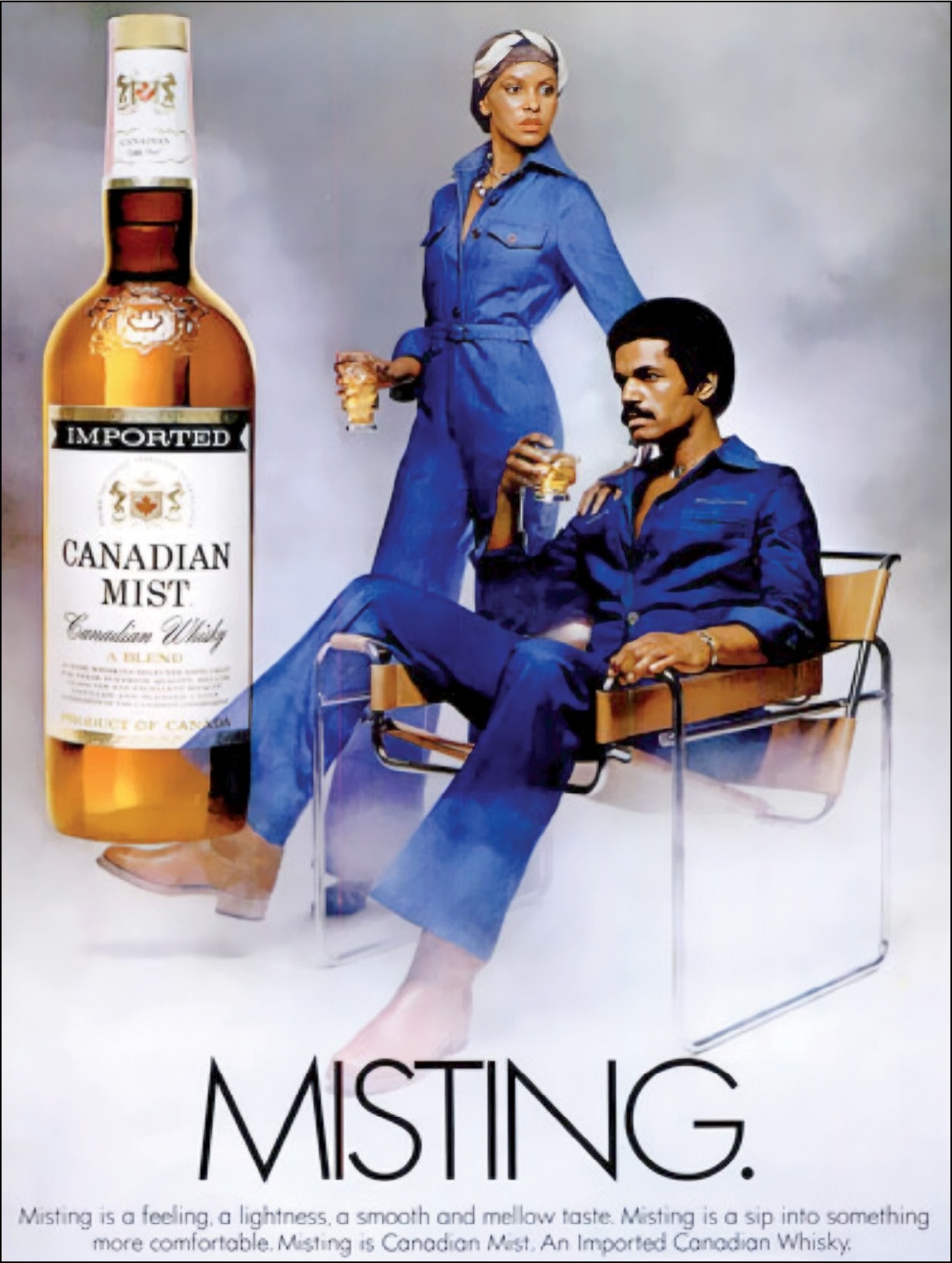
Canadian Mist, 1979
Signs of the Times
For most of the latter half of the 20th century, wine and beer advertisements could be seen in the main forms of media at that time, namely print, TV, radio and billboards. Spirits advertising, however, was notably absent from TV. In 1948, the spirits industry imposed a voluntary ban on spirits advertising on TV, which held for nearly 50 years. In 1996, NBC reached an agreement with spirits producers to begin introducing spirits advertising on TV. According to PBS, the first TV ad for a spirits brand in half a century was for Smirnoff vodka during an episode of Saturday Night Live.
“That was a big transition for spirits,” says Friese. “Obviously, beer and wine had already been on TV, but it was huge for spirits.” Friese recalls repurposing print ads for Dewar’s and other brands. “We took a lot of our favorite print ads and made them into TV commercials,” he explains. “However, spirits didn’t have [overly large] marketing budgets. Back then, they just did not have the budget to [transition] to TV, so they’d run a spot here or a spot there, but that was it.”
Ted Simmons, a former advertising executive for Gardner Advertising and subsequently Simmons Durham, worked on the Brown-Forman Corp. account at both agencies. He says Jack Daniel’s ads at that time were easily transitioned from print to TV, with messaging intact. “We were telling the story of this old distillery in the hills of Tennessee, where men make whisky the way it should be made and the way it had been made for generations,” Simmons says. “The TV ads were basically the same story—a print ad compressed into the discipline of 30 seconds.”
However, there was reticence among some to tap into this media opportunity. Stagliano recalls that the initial inclination for the Jameson Irish Whiskey brand was to eschew TV and, instead, keep with the more comfortable media of print and billboards. “We resisted going on TV because one of the things that we always liked about Jameson was that it was a bartender’s brand,” he says. “We thought that if we went on TV, the brand would become sort of mainstream. But we did go on TV, and thank god we did, because that’s when it catapulted.”
The move to TV was controversial at the time, but advertising of any beverage alcohol has always had some opposition from consumer groups worried about the potential of targeting underage consumers or encouraging overconsumption. The beverage alcohol industry became proactive on both fronts, with explicit statements within ads encouraging people to consume in moderation, to not drive after drinking and to refrain from consumption if under the legal drinking age.
One early adopter of the “don’t drink and drive” messaging was Bacardi, according to Rachel Dorion Guerin, heritage curator for the Bacardi Archives. A 1970s Bacardi print ad used bottle caps and fruit rounds to illustrate rum’s mixability with a variety of flavors. The twelfth “round,” however, was a steering wheel. The tagline below read: “Bacardi rum mixes with everything. Except driving.”
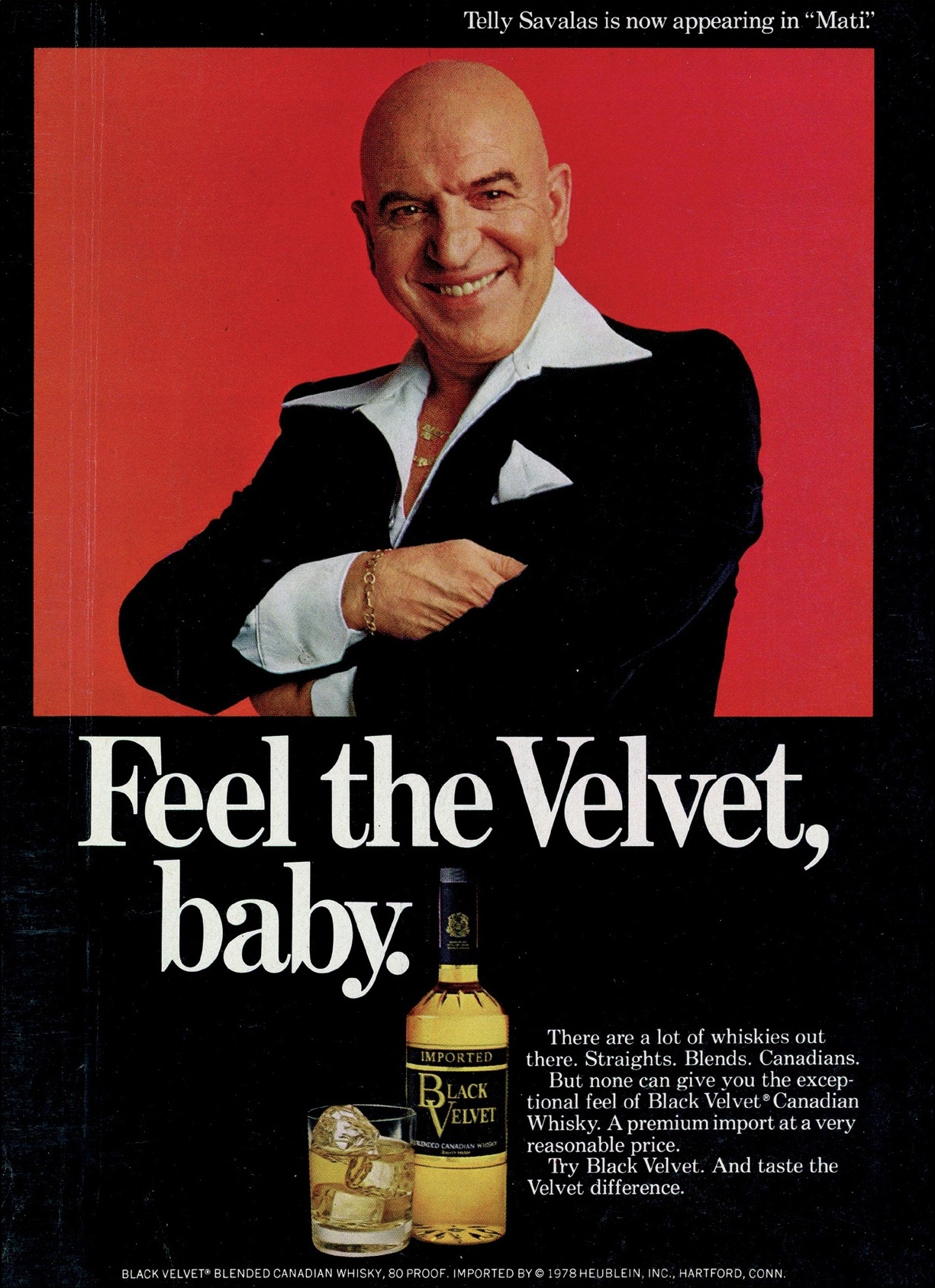
Black Velvet, 1978
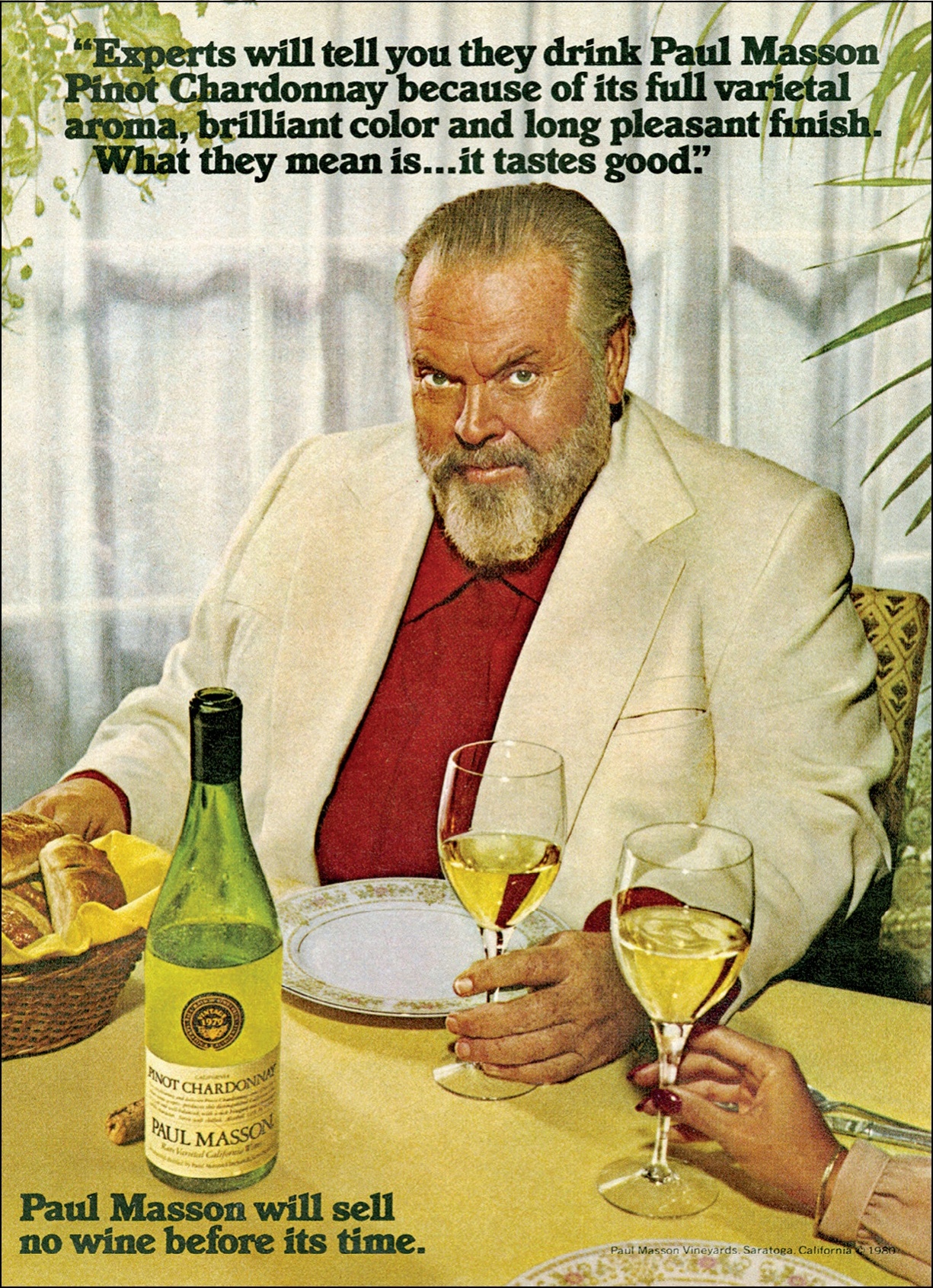
Paul Masson, 1981
“This is one of the most memorable advertisements I think we have to this day, particularly from a responsible drinking standpoint,” Dorion Guerin says, noting the ad came at a time when “many brands weren’t thinking about, or at least weren’t advertising, responsible drinking.” Later on, many alcohol brands had a responsibility component to their advertising strategies, infusing messaging that encouraged consumers to “enjoy in moderation” or “drink responsibly.”
Target marketing, and specifically targeting minority consumers, was another hurdle for the spirits industry in the 1980s and beyond. In the latter half of the 20th century, the target audience for many spirits brands wasn’t well-defined. Some brands sought younger consumers and many had men in their crosshairs, but drilling down to specific demographics was difficult, given the nature of media.
There were exceptions, of course. For example, in the late 1970s and early 1980s, some companies began targeting the Black community specifically, according to Jason Chambers, associate professor of advertising and associate dean for diversity, equity and inclusion in the College of Media at the University of Illinois Urbana-Champaign. One effort that stands out for Chambers as an early example of targeting Black consumers is the “Misting” campaign from Canadian Mist, which he says ran in the 1970s and early 1980s. According to Chambers, the advertisements shifted from the “rural, outdoorsy Canadian mountains and clear springs” imagery to sophisticated scenes of nightlife in cities such as Toronto and Vancouver.
The “Misting” campaign featured a Black man and woman, “usually surrounded by an ethereal mist,” Chambers says. “It turned the perception of Canadian Mist into something sophisticated. Even if the brand didn’t change the price, it elevated the vision and perception of the brand.” An iteration of Martell Cognac’s “I Assume” campaign from the early 1980s, with a Black woman and the tagline, “I assume you drink Martell,” Chambers says also resonated within the Black community.
In later years, such targeting became more commonplace and other minority groups also gained attention from brand marketers. Many brands increasingly targeted the Latino community as marketers recognized the growth and buying power of that segment of the population. The LGBTQIA+ community also became more represented in marketing campaigns, with what started as very minimal representation in the 1970s and 1980s shifting to comprehensive campaigns targeting the demographic in subsequent years.
Pam Forbus, chief marketing officer for Pernod Ricard USA, says Absolut was the first brand to openly target and support the LGBTQIA+ community. “To this day, we can authentically play in spaces that maybe looks like ‘rainbow washing’ for other brands,” she says, noting in particular the brand’s early affiliation with the arts community. “We really lean in on that because it’s in the DNA of the brand.”
Chambers says that today, ads that target specific demographic groups are more likely to resonate with their intended audience. He notes that many campaigns in recent years have reverted to a common denominator approach. “So many alcoholic beverage campaigns today disappear into the mass. They end up with the ‘we’re for everybody’ approach,” he says. “It’s basically, ‘Do you like to have fun? Sure. Is alcohol a part of that? Sure.’ The ad ends up being a lot of people having fun times.”
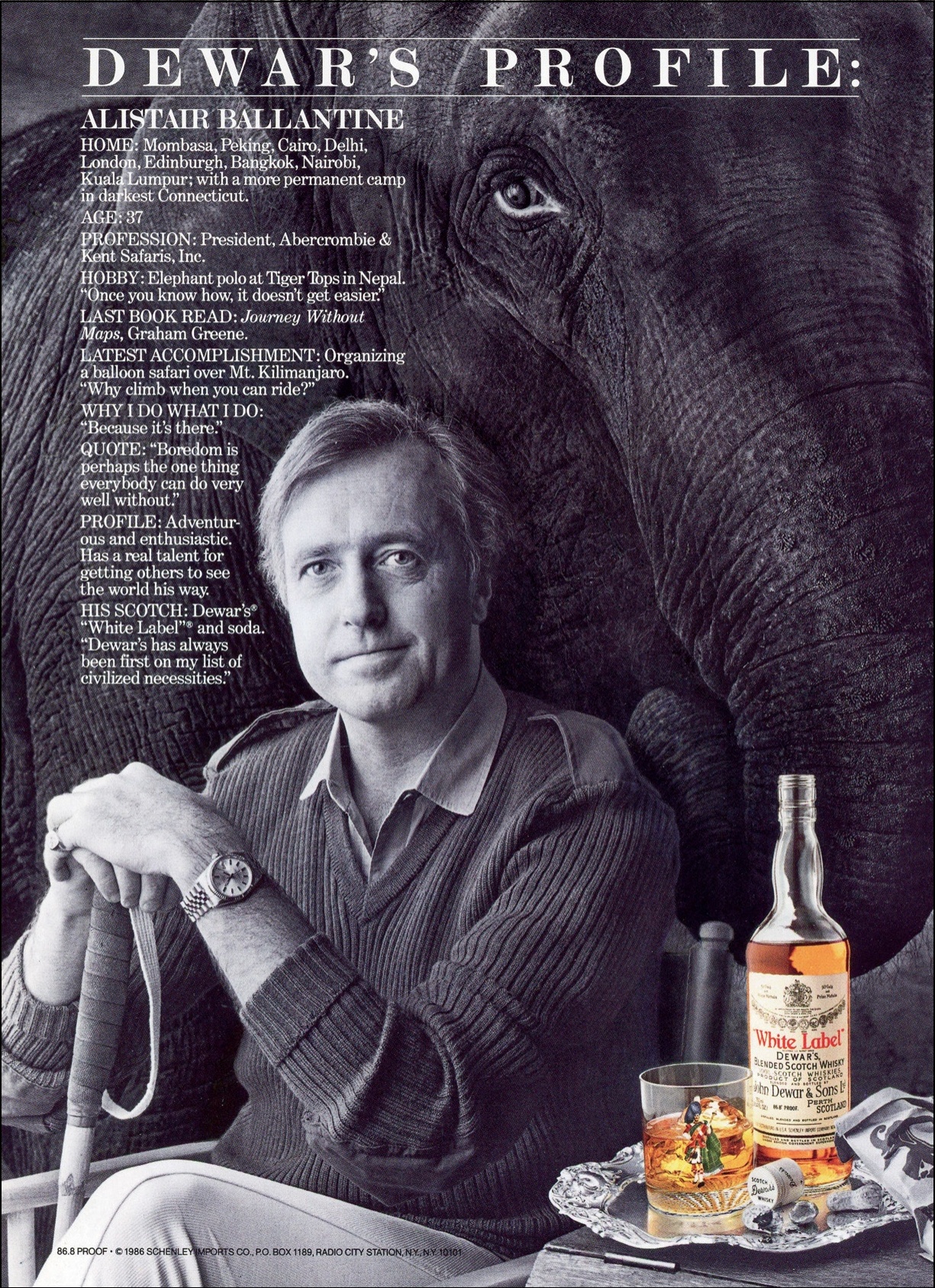
Dewar’s, 1986
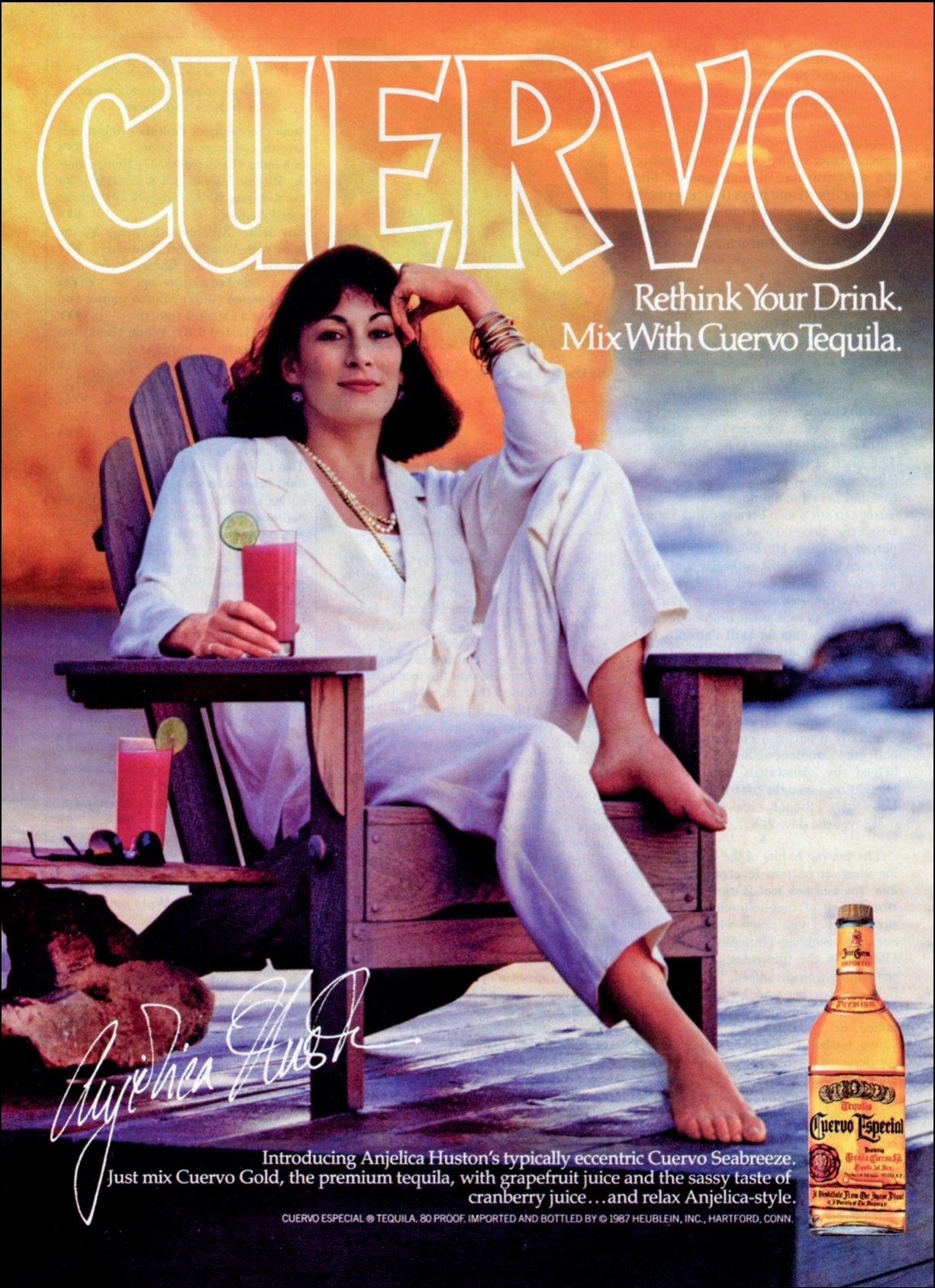
Jose Cuervo, 1987
Cooler Battle
One campaign that epitomized the idea of carefree fun was the mid-1980s push for California Cooler. David O’Hare, a former Chiat/ Day advertising executive who now runs his own firm, recalls being tasked with creating new messaging for what was then an upstart in the new “cooler” segment. One of the founders of California Cooler, Stuart Bewley, asked Chiat/Day to create a campaign focused on partying with friends.
“We all kind of thought … he wants ‘Miller Time,’ ” O’Hare remembers. O’Hare and colleague Dave Woodside began brainstorming, both recalling their (separate) youths spent on California beaches and the “punch” that often accompanied the gatherings of surfers and beachgoers. “I thought, what if we just told people this was the surf culture’s version of what everyone around the country was making at fraternity parties—basically trash-can punch,” O’Hare says. He and Woodside created a campaign set on California beaches, featuring people they might have partied with on the beach, with an accompanying soundtrack that upped the beachy vibe.
“We wanted to position California Cooler as the most authentic cooler, which meant the advertising had to be as authentic as we could make it, depicting surf culture as it really was,” he recalls, noting the lack of slick visuals and toned, tanned models. “It had a grittiness and a graininess, and it felt like documentary-style filming.”
O’Hare later went on to work for Hal Riney & Partners, whose namesake created the Bartles & Jaymes ads of the same era. The two cooler brands together “owned” the cooler category in its heyday. The Bartles & Jaymes campaign took a completely different approach, featuring two older men as proprietors of the Bartles & Jaymes Wine Cooler Co., aiming to portray it as a somewhat homespun operation when, in reality, the brand was owned by mega-company E. & J. Gallo Winery. “He chose to use two old farts to sell wine coolers, and it worked,” O’Hare says of Riney’s campaign. “Part of that was that Hal himself was a total contrary. People told him that in order to sell wine coolers to young people, you need to put young people in the ads and he didn’t believe it.” O’Hare recalls that Riney also wanted to differentiate his ad campaign from that of California Cooler, which already featured “cool, young-people stuff.”
Both cooler brands utilized TV as their key medium, as did a select number of wine brands at the time. But TV advertising was expensive, and only a few brands had the budget to make a splash. One of those was Paul Masson Winery, which contracted with actor-director Orson Welles to create ads beginning in 1978. The tagline uttered by Welles— “We will sell no wine before its time”—triggered a massive increase in notoriety for the brand and the campaign.
Blue Nun also embraced TV, radio and other forms of media, using imagery of a nun dressed in a blue habit while on various adventures. The brand’s initial advertising efforts were created by Jerry Della Femina of New York City’s Della Femina, Travisano & Partners advertising agency. The messaging was always the same: Blue Nun wine can be paired with a variety of dishes. Later, radio ads for Blue Nun featured comic duo Jerry Stiller and Anne Meara in what was one of the most recognizable radio campaigns of the 1990s.
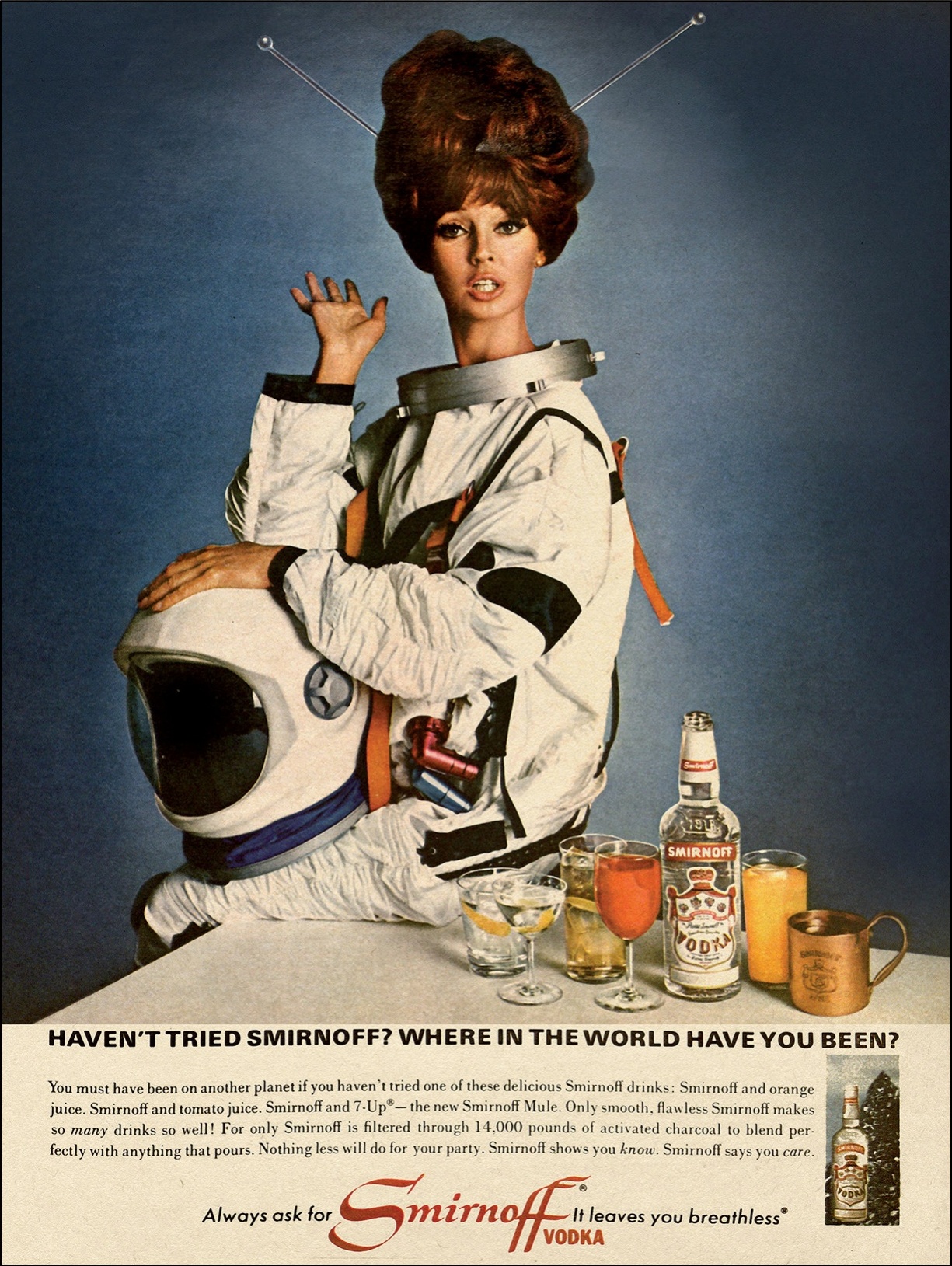
Smirnoff, 1966
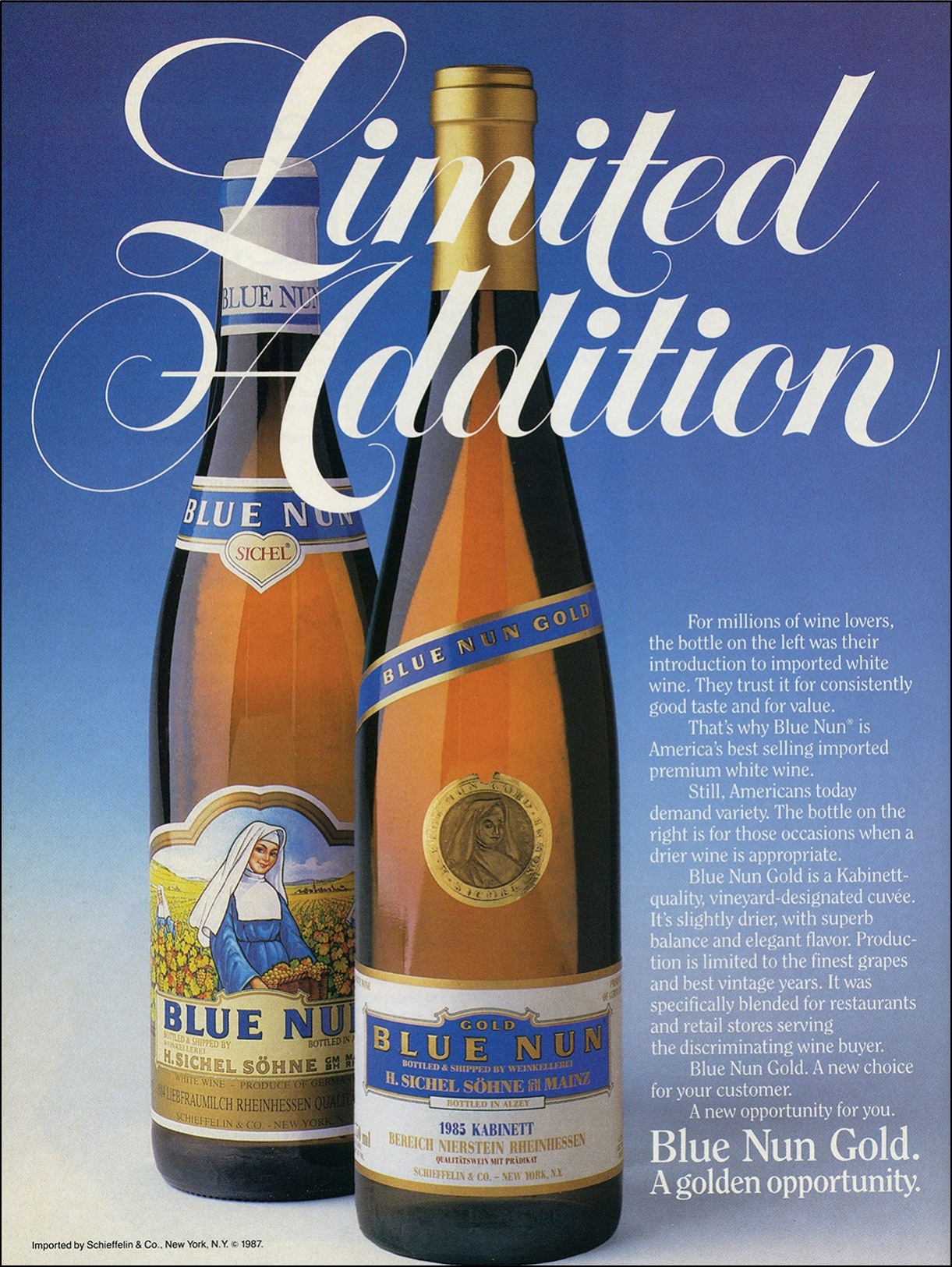
Blue Nun, 1987
White Spirits Dominance
Along with the push for wine and wine coolers, white spirits were turning up the heat in the middle of the 20th century with their take on the cutting edge. Whisky had dominated for decades, but in the 1960s, 1970s and 1980s, white spirits were on the rise. The Smirnoff vodka 1960s “Breathless” campaign is often credited with upsetting the whiskey dominance of the era.
As consumers’ preference for lighter tasting, mixable spirits began to erode sales of Bourbon and other brown spirits, Heublein Inc., the marketer of Smirnoff vodka, promoted the odorless aspect of vodka as a benefit. In an era when it wasn’t unusual for executives to indulge in three Martinis at lunch before returning to the office, the lack of odor after imbibing was seen as a key attribute of vodka. The campaign slogan, “It Leaves You Breathless,” became a long running and very successful campaign for Smirnoff.
Smirnoff ’s campaigns evolved in the 1970s and ’80s, latching on to the glamour and lifestyle aspects of consumption. Other brands were in the mix as well. Absolut created the super-premium vodka sector, due in large part to its innovative advertising, but other players made their mark in the sector, too.
Ketel One gained attention in the 1980s with an innovative and somewhat risky approach. Ed Pilkington, chief marketing and innovation officer for Diageo North America, which now co-owns the brand that was launched by Nolet Spirits, says that Ketel One was largely built in the on-premise sector in the U.S. through taste tests. “They built the brand by working the bars,” he says. “The distributors would do taste tests with bar owners and bartenders. Bartenders loved the brand, they put it on menus and in cocktails. It was basically bartender built.”
In subsequent years, the shoestring budget approach gave way to a comprehensive advertising campaign, though Ketel One had a notably minimalist approach to brand-building. The “Dear Ketel One Drinker” print ad campaign used simple black text on a white background. Typically, half or more of the page was simply white space, with no bottle or other imagery. The messages ranged from a simple, “Thank You,” to, “If you meet our new drinker, Mike, at the bar, please say hello,” and many others. All of the campaigns used the brand’s identifiable Bradley typeface.
Rival vodka brand Grey Goose made an advertising splash as well. The superpremium vodka created by Sidney Frank relied heavily on its French heritage and a somewhat obscure taste contest to convince U.S. consumers of its product superiority. The Beverage Testing Institute of Chicago rated Grey Goose “the world’s best-tasting vodka” in 1998, and the brand boldly heralded that fact in its messaging. That, coupled with some high-profile product placements, translated into rapid growth for the brand.
In an interview with Inc. Magazine, Frank recalled his strategy. “We submitted two bottles to the Beverage Testing Institute, and Grey Goose won as the best-tasting vodka in the world,” he told the magazine. “So we took $3 million, which was going to be our total profit for a year, and we put it into advertising. We made big, beautiful ads that listed Grey Goose as the best-tasting vodka in the world, and we indoctrinated the distributors and 20,000 bartenders, and when somebody would come in and say, ‘What’s your best-tasting vodka?’ they said, ‘Grey Goose.’ ”
“We gave away Grey Goose to any charity that wanted vodka at its bar,” Frank continued. “The people at charity events are the people who are our target audience. Sales started to zoom. In 2004 we sold 1.5 million cases.”
Among other white spirits, Bacardi also held its preeminent position as the leading rum brand and one of the largest premium spirits brands in the world, with 1980s advertising that evoked tropical beach vacations with fruity, fun drinks. “This was really a time when so many consumers were looking to learn more about these tropical cocktails that could transport them to paradise,” says Dorion Guerin. In the 1990s, the brand’s messaging evolved, specifically with the launch of Bacardi Limón and its accompanying campaign, combining messaging of mixability, music and fun.
At the same time, investment in rival brand Captain Morgan Spiced Rum was gaining, with heavy reliance on the now-iconic Captain Morgan figure. Pilkington says the Captain Morgan figure was created long before Diageo purchased the brand in 2002. But through the decades, the figure has continued to be relevant to the brand’s overall advertising.
“We talk about memory structures and what the consumers remember, and in the case of Captain, they remember the captain, the pose, some of the lines around it, elements of mischief and fun,” notes Pilkington, referencing the hands-on-hips, barrel-under-one-foot pose portrayed on the bottle and in many ads. “The heart of the idea was that he brings people together for a great time. That’s a very simple idea and that’s what Captain advertising has been about, what communications have been about for the past 25 to 30 years or more. He’s less present now, but still, the Captain is on the bottle and he’s still the instigator of fun.”
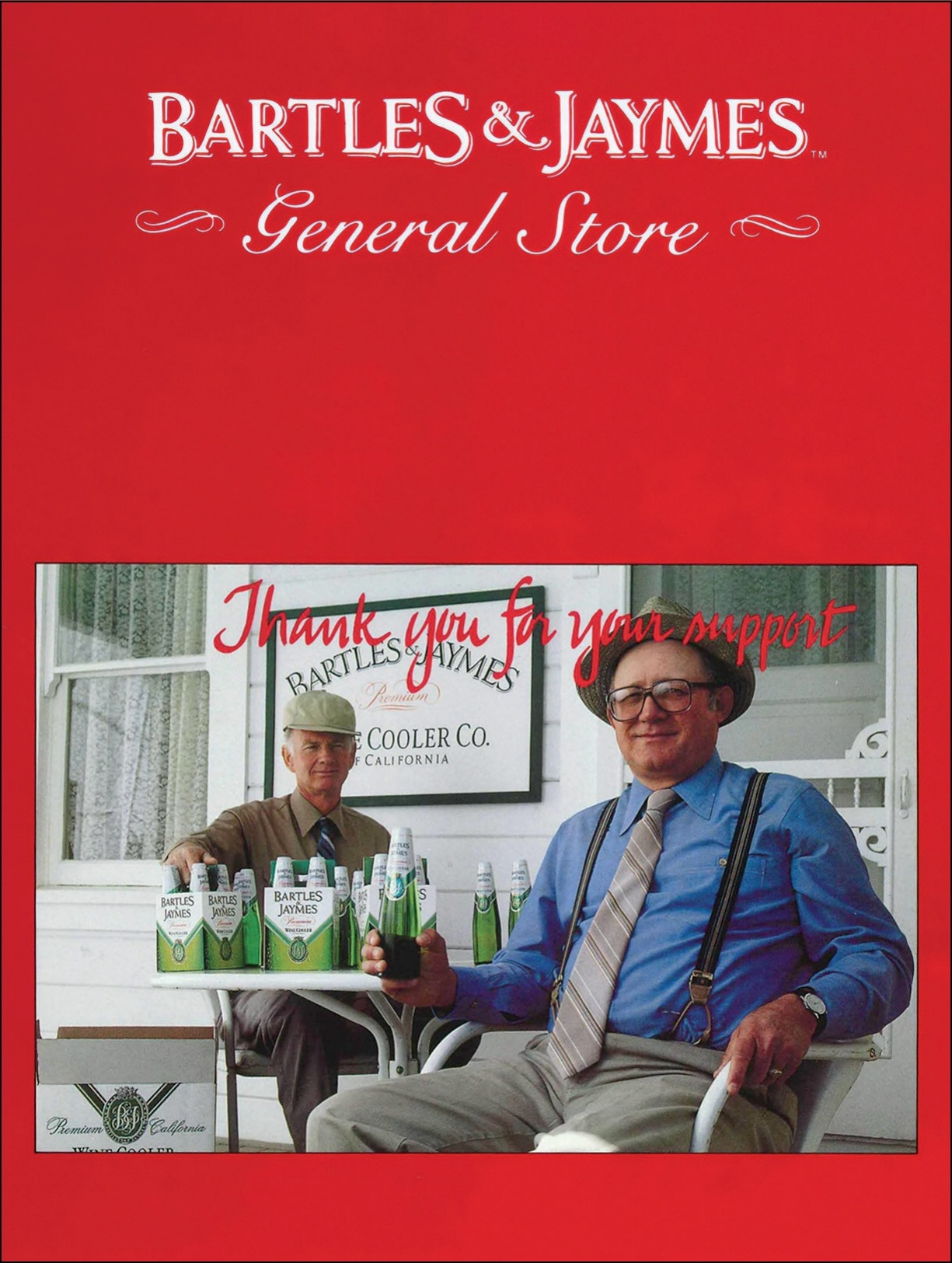
Bartles & Jaymes, 1987
Grey Goose, 1998
Rebuilding Whisky’s Image
During the 1980s and 1990s, whisky demand was being eclipsed by white spirits, and whisky marketers were scrambling to figure out how to make their brands cool again. Up until the early 1990s, most whisky advertising, and particularly Scotch whisky advertising, was all about heritage, Friese recalls, adding that most ads at the time took place in Scotland and talked primarily about peat and distillation techniques. That is, until Dewar’s took a new approach.
Friese, then a junior member of the advertising team at Leo Burnett, which handled the Dewar’s account, recalls the assignment was to “make it cool for a young adult to want to drink what was seen as their dad’s drink.” The response from the agency was the “Truths” campaign, a humorous take on adulting that targeted consumers in their 20s. The first installment focused on an attractive woman with the tagline: “You thought girls were yucky once, too.”
“The [Dewar’s] ‘Truths’ campaign stopped [focusing on heritage],” he says. “Over time, I think Dewar’s helped to not just raise the whole brown goods industry, but actually change other people’s campaigns to a more young, hip approach.”
Friese separately, and just before his time at Leo Burnett, won a contest to create one of the iconic “Back to Basics” ads for Jim Beam. The campaign featured the evolution of a particular item—sandwiches, popular names, hairstyles, fashions and myriad others—with the tagline: “You always come back to the basics.” Friese won for his submission about dance moves.
Another campaign that went against the grain in the whisky sector was launched in 1954 by Gardner Advertising. The Jack Daniel’s campaign featuring Lynchburg workers, called “Postcards from Lynchburg,” may not have been out of the norm in the 1950s and 1960s, but as the sophistication and flash of spirits ads came to a head in subsequent decades, brand owner Brown-Forman stuck with the tried-and-true.
Though he’s worked on Brown-Forman campaigns, Simmons wasn’t involved in the original “Lynchburg” campaign but says the goal was to tell the story of a unique place in the hills of Tennessee that produced a uniquely tasting whiskey, due to its “charcoal mellowing” production process. Simmons joined the campaign when it was about 10 years in, and the messaging never varied.
“We did maybe about 15 different ads every year,” he says. “They all looked alike and they all sounded alike, but they all said something a little bit different about the way that these people made whiskey down there in the hills of Tennessee.”
As the years passed, many spirits marketers upped the glitz on their advertising efforts, featuring beautiful people in beautiful places, oozing with wealth and sophistication. The Jack Daniel’s campaign evolved a bit but stayed true to its core messaging. “When I look at it today, I think, ‘Wow, it was ahead of its time,’ ” Simmons says. “It was more narrative; it was more like a social post than an ad today.” In the mid-1990s, color was added to some of the ads, which had run in black-and-white for years. The copy was also cut back but the messaging “was still the same story of a whiskey that basically had been unchanged from the very beginning,” he says.
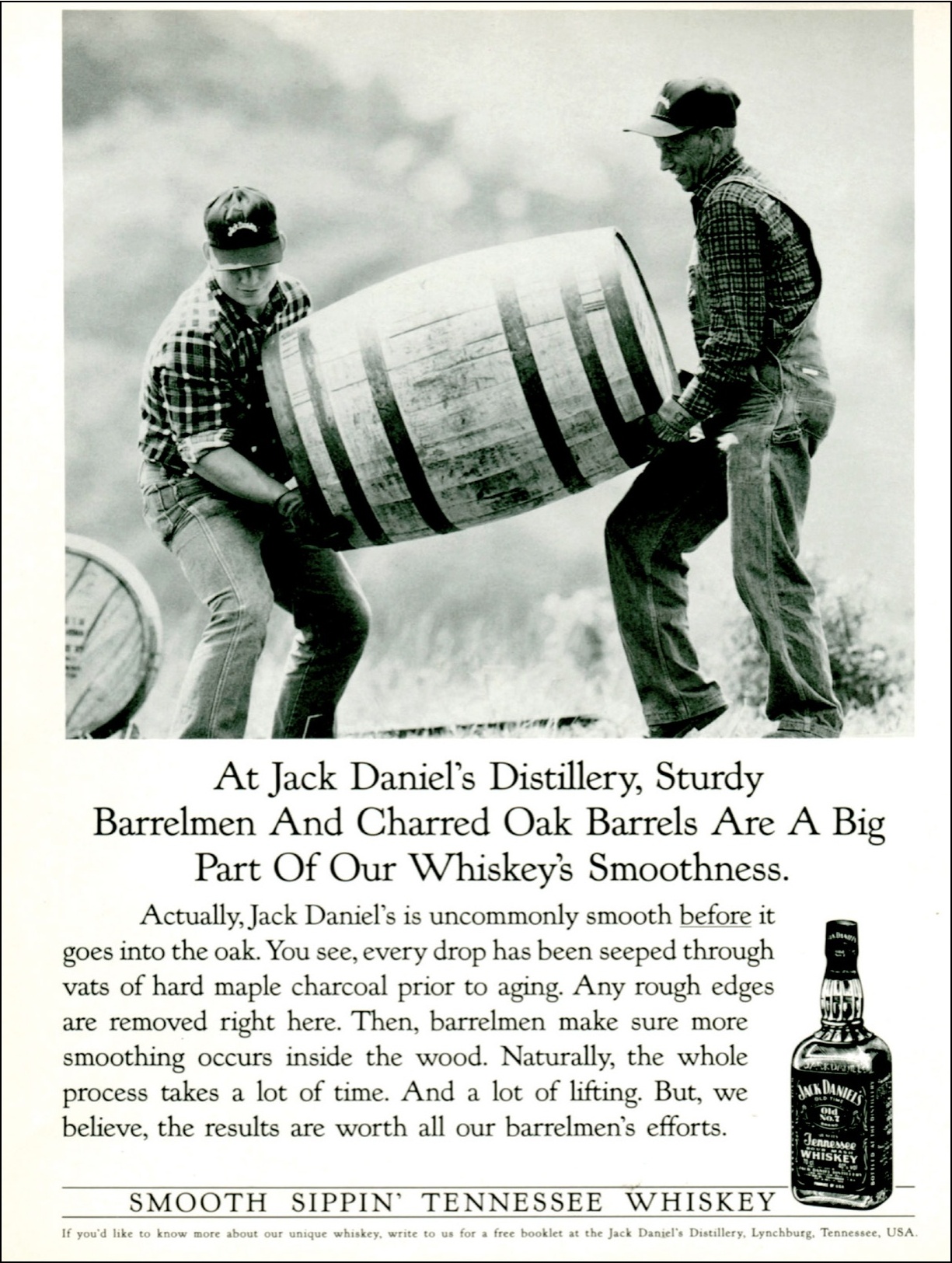
Jack Daniel’s, 1992
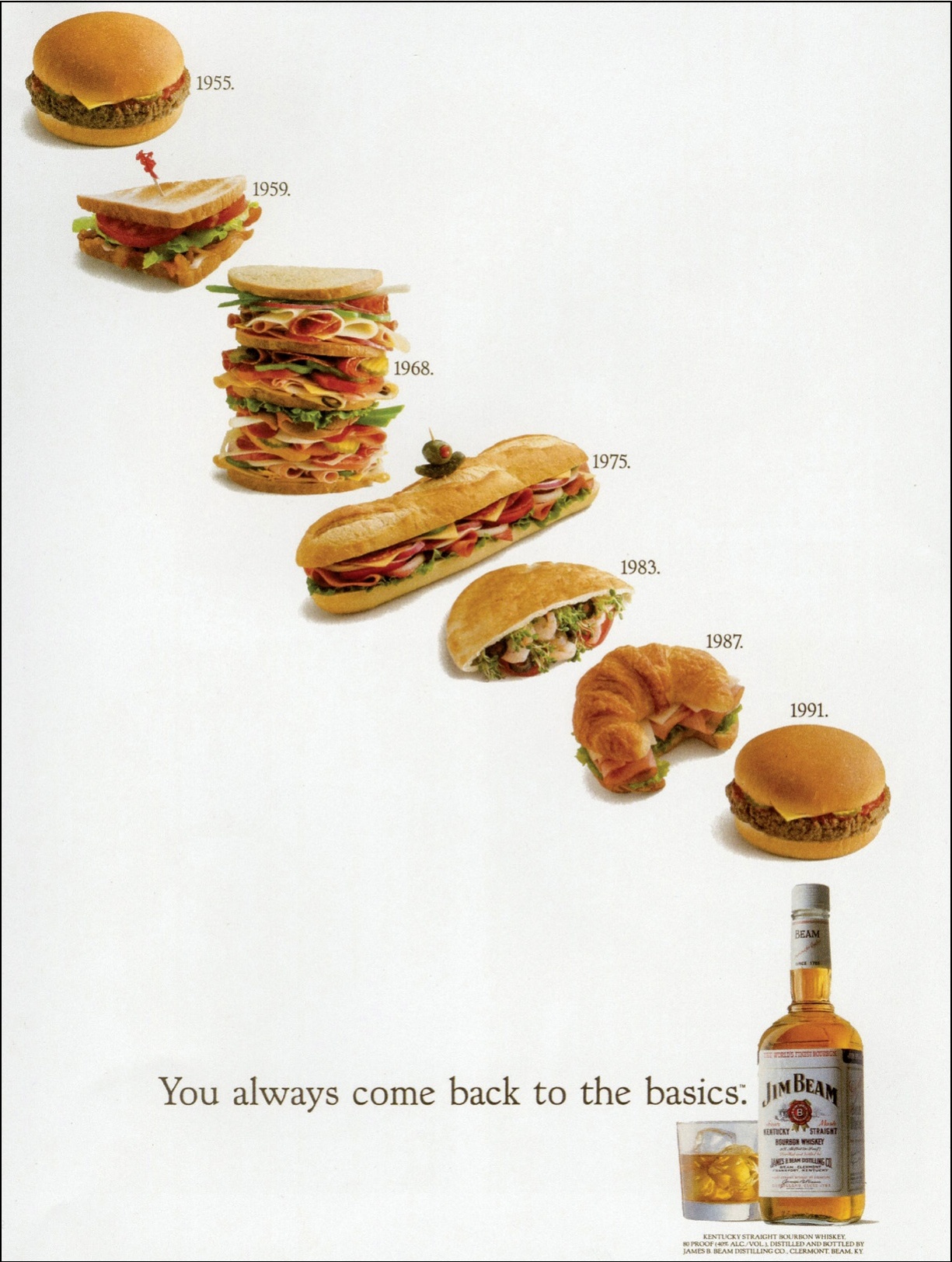
Jim Beam, 1991
A New Paradigm
When spirits brands began advertising on TV in the late 1990s and early 2000s, it changed the media mix and spending parameters, but marketers were still, to a great extent, targeting a mass-market audience with mass-appeal messaging. But a few years later, social media began upending that.
Forbus says today’s fragmented and diverse marketplace has resulted in “an explosion of variations of content” that has required a custom approach to different audiences. That thinking didn’t exist in the latter half of the 20th century. “The alcohol advertising industry at the time was constrained to minimal exposure in certain types of media,” she notes. “I think there was an outburst of creativity in those times because of that constraint.”
Dorion Guerin also notes the shift in modern-day marketing efforts. “It’s really fascinating to see how just within the last 20 years, the way we’re advertising and marketing to consumers is completely different,” she says. “I know we’re not alone in that sense. Brands are constantly looking for ways to just get their voice out there and to share what they’re all about, in a world full of so many different advertisements and different things coming at you from all different directions.”
In this ever-evolving marketing landscape, Dorion Guerin stresses how important it is for brands to be consistent in their messaging, despite the disparate demands they’re up against. Stagliano agrees, lamenting the lack of long-term commitments from some brands. The advertising executive says that with the prevalence of social media and the fast pace of media overall, clients can quickly become “bored” and don’t allow a campaign “to live and breathe and grow.”
“Obviously things are so much more complex in terms of what we have to deal with as an agency, in terms of messaging and channels,” Stagliano continues. “By the same token, I come back to where I always start. The principles of great ideas and great creative [efforts] don’t change.”
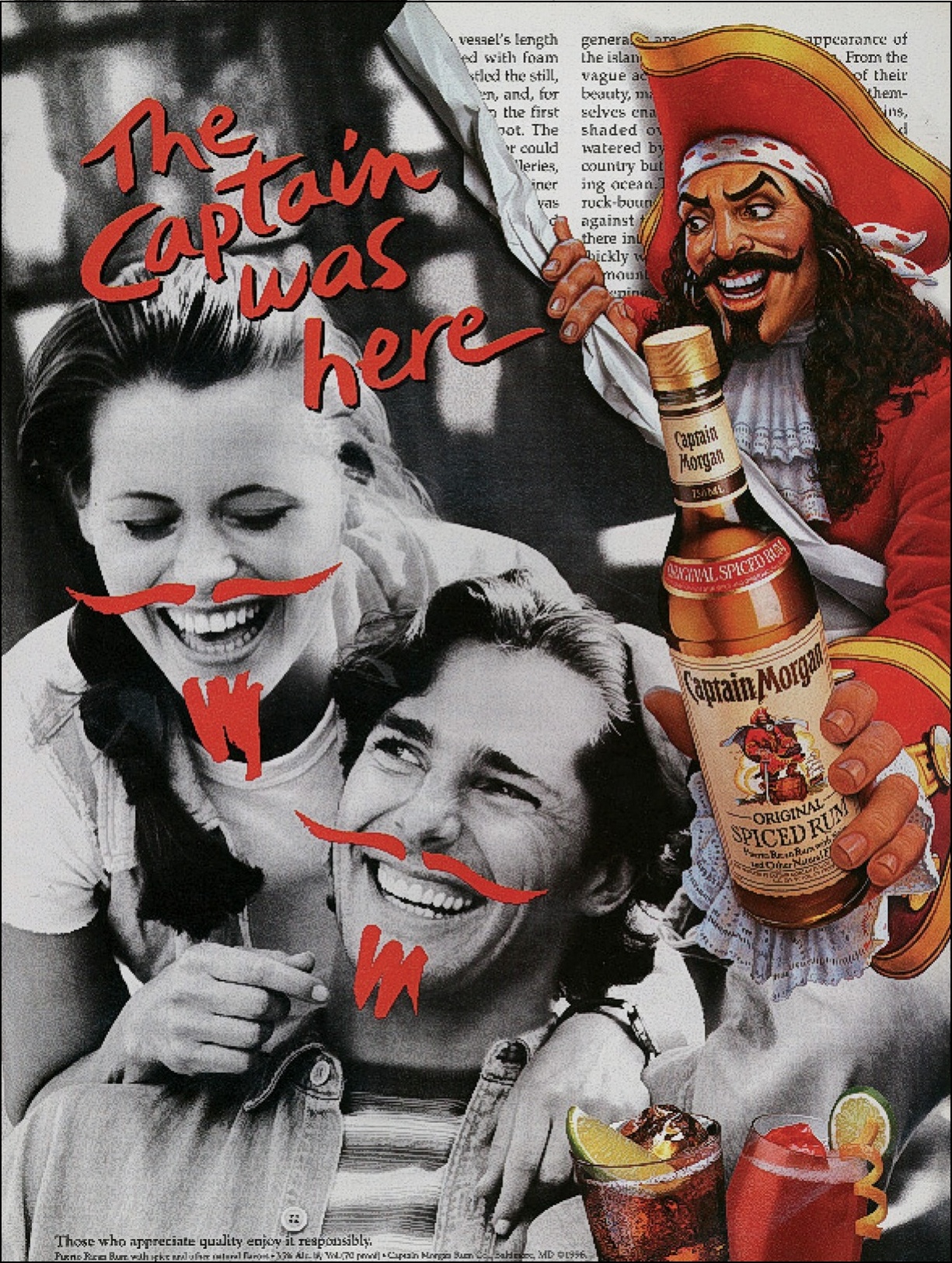
Captain Morgan, 1996
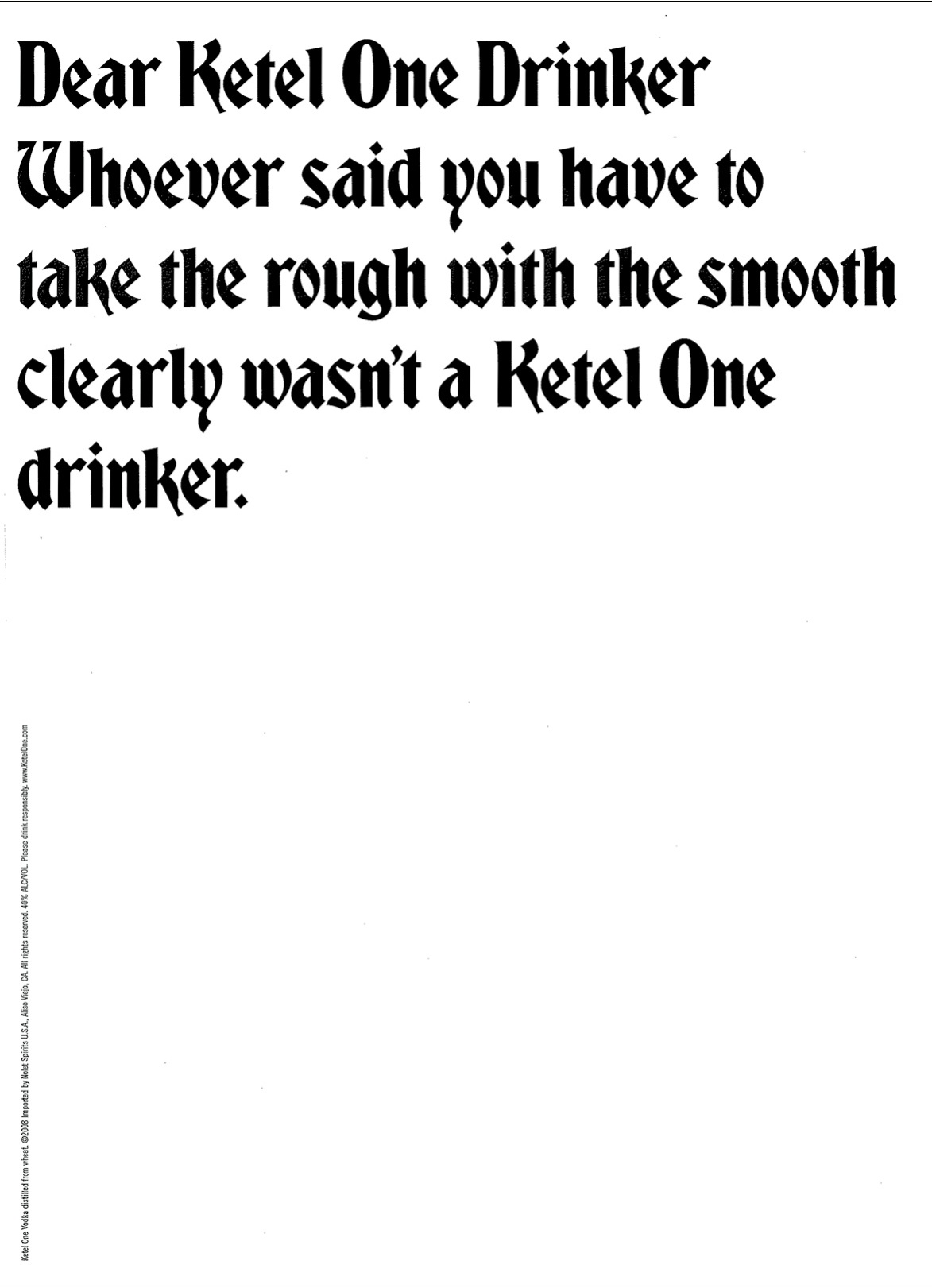
Ketel One, 2008
GETTY IMAGES; PATTI MCCONVILLE/ALAMY STOCK PHOTO; PATTI MCCONVILLE/ALAMY STOCK PHOTO; E. & J. GALLO WINERY; THE ADVERTISING ARCHIVE
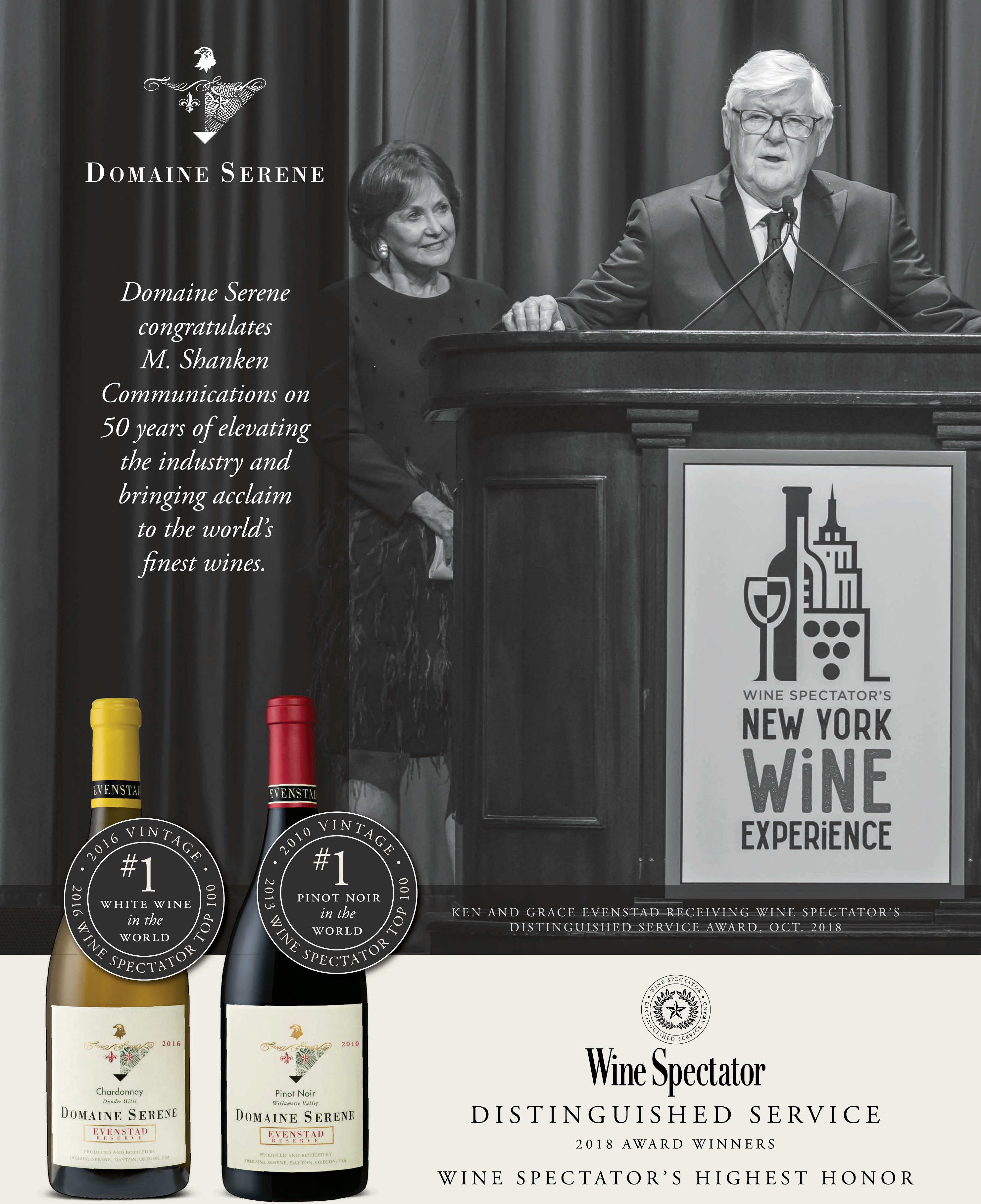
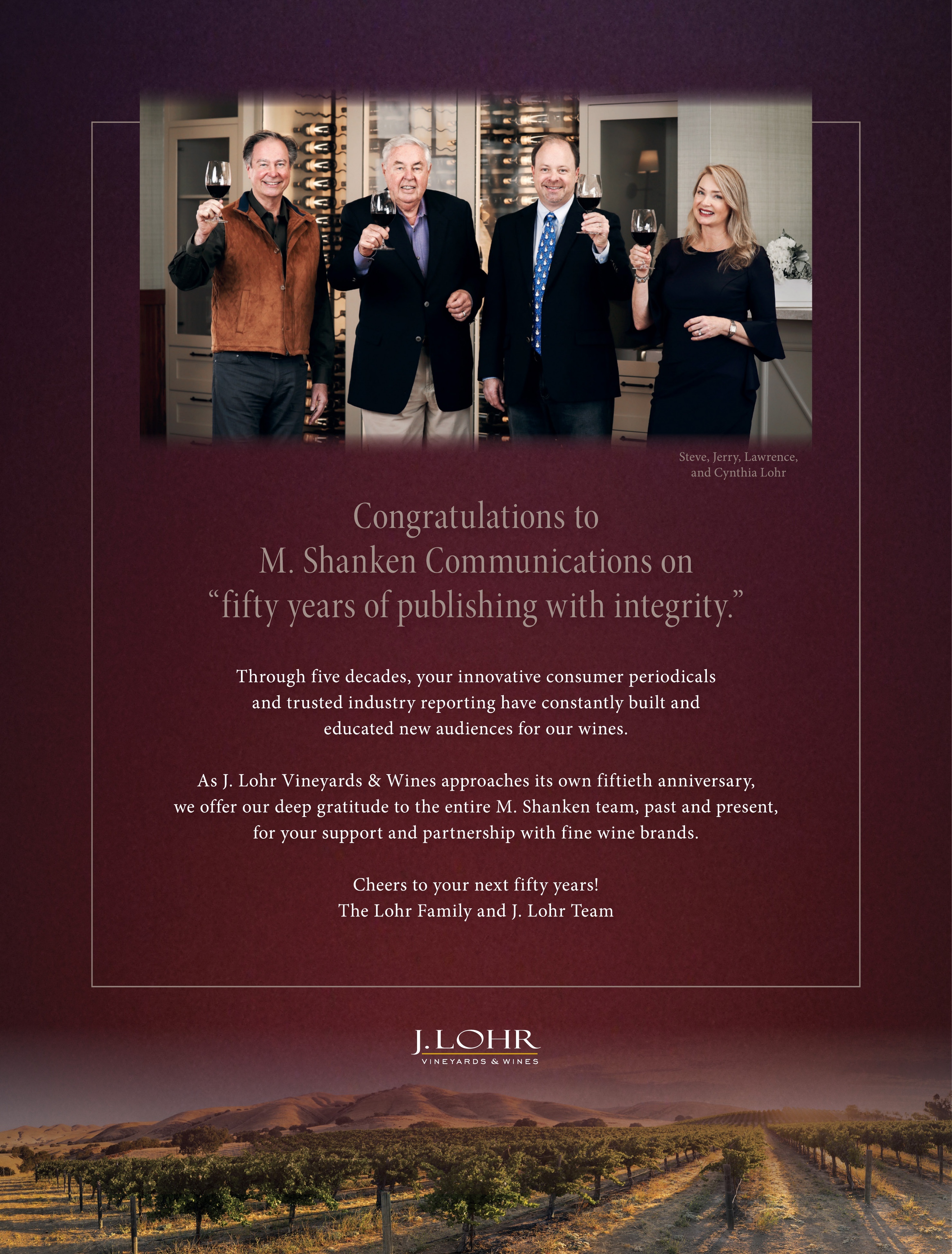
THE FUTURE
The Future
Of the Wine and Spirits Markets in America
By Daniel Marsteller and Juan Banaag
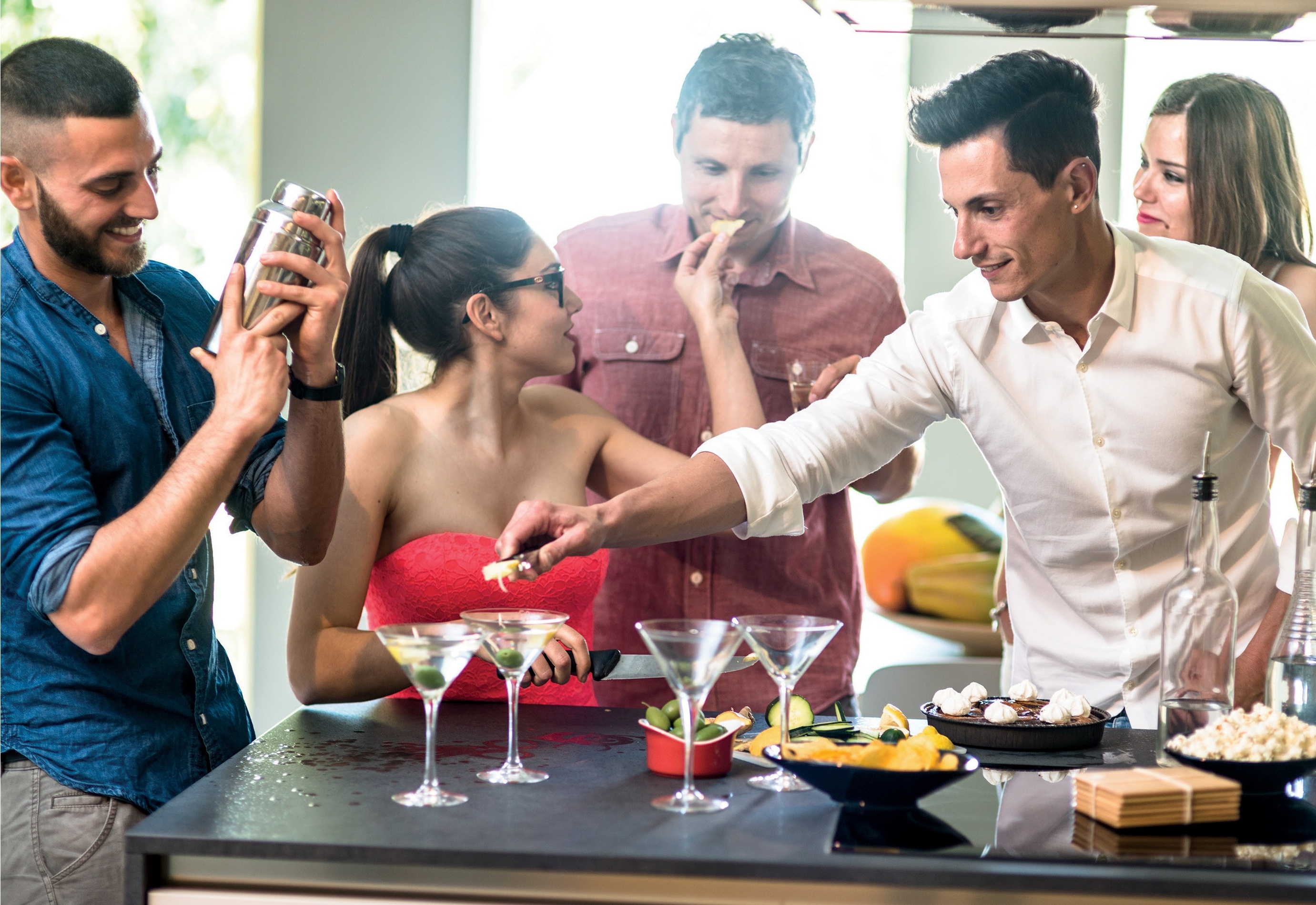
Sophisticated younger consumers will continue to be a factor in the spirits market’s turn toward premiumization.
T he drinks industry has seen much change over the past 50 years, and it’s dizzying to contemplate how rapidly—and in what directions—it will continue to evolve in the future. Today, key industry players are focused on satisfying the demand of on-premise consumers while continuing to serve an off-premise market that’s been challenged by supply chain issues. But they’re also casting their eyes to the longer-term future.
Leading executives in the drinks market believe the future will be shaped by the increasingly sophisticated tastes of younger consumers, which has propelled premiumization efforts in spirits in particular. This, along with the rise of fast-growing categories such as tequila and ready-to-drink cocktails (RTDs), innovations in wine and the ongoing digital transformation of the business at all levels, has the potential to reshape the drinks industry as we know it.
Premiumization Moves
The premiumization trend is expected to continue across the drinks market in the coming years, with much of the uptrading fueled by younger consumers. “Younger shoppers and on-premise consumption have driven growth in spirits, with 60% of the spend growth coming from Gen Z and millennial consumers in recent years,” says Southern Glazer’s CEO Wayne Chaplin, citing strong demand by millennials and younger legal-drinking-age shoppers for premium-and-above products. “[Consumer] shifts toward online sales channels are also driving access to premium offerings,” he continues. “And while on-premise [sales] have largely recovered from COVID, consumers continue to want to create entertaining experiences at home, including using ready-to-drink offerings to make premium cocktails, driving [the] interest in unique products to explore and consume off-premise.” Bacardi North America president Pete Carr says increasing consumer sophistication will help further propel premiumization efforts. “In the past, people built up their cocktail knowledge over time, going from beer to simple mixed drinks with known brands, like a Bacardi and cola, gradually moving on to drinks like daiquiris and old-fashioneds,” he explains. “We’re now seeing people move much more quickly to ordering more complex cocktails and calling out their brand of choice. This increased cocktail knowledge is driving a greater appreciation for how quality ingredients can elevate both the occasion and the cocktail, motivating them to invest in premium spirits.”
The same trends are visible at the retail tier. “We foresee a trend toward more premium products continuing,” says Gary Fisch, founder and CEO of New Jersey retail chain Gary’s Wine & Marketplace. “While people may not be drinking as much as they were during the pandemic, when they do enjoy alcohol, they’re looking for quality rather than quantity. Millennials and Gen Z are starting to invest earlier.”
Peter Deutsch, Deutsch Family Wine & Spirits CEO, says premiumization will remain a priority for his company. “We are very focused on continuing to offer higher quality wines and spirits worthy of more premium prices,” he says. “Most of Josh Cellars’ growth has come from consumers trading up from lower-priced wines.”
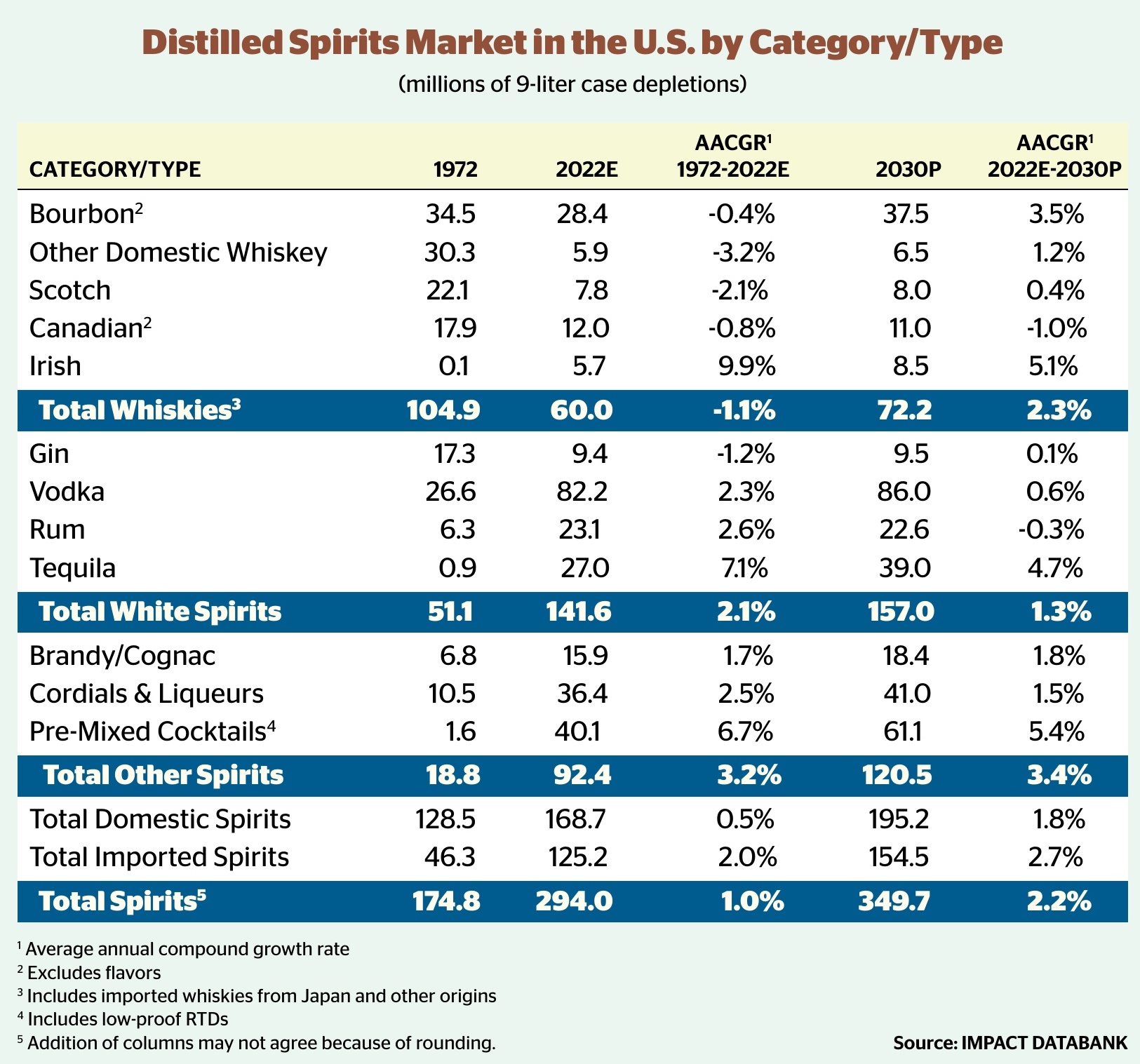
Spirits Sales Increase
According to Impact Databank, wine consumption in the United States surpassed that of spirits for the first time in 1980. More than 40 years later, spirits volume is projected to once again exceed wine in the U.S. within the next few years. Due primarily to the surge in low-proof RTDs, the sustained momentum of tequila and the continued whisk(e)y renaissance, the distilled spirits market is expected to overtake U.S. wine volume by 2028. Premixed cocktails accounted for less than 1% of spirits volume in 1972, but by the end of this decade, more than one out of every six spirits purchases will be represented by RTDs, according to Impact Databank.
“Spirit-based RTDs aren’t just driving share away from hard seltzer, they’re also stealing share from beer,” observes Carr. “For [Bacardi], this is a real recruitment opportunity. We’re seeing that 65% of RTD drinkers first discover a spirits brand through canned cocktails and that a large number then go on to purchase that brand.”
Chaplin sees similar trends: “We continue to see spirits-based hard seltzers gain share of the total hard seltzer market. Many consumers entered the RTD category through malt-based hard seltzers and are now trading up to higher-quality spirits-based RTDs and full-proof spirits brands.”
Less than four years after its debut, E. & J. Gallo’s vodka-based High Noon Sun Sips seltzer is projected to be the largest-selling spirit by the end of 2022, according to Impact Databank. Previously, it had taken Tito’s more than 20 years to overtake Smirnoff vodka for the top spot.
Tequila’s ascent in the U.S. is also projected to continue. Despite occasional concerns with agave supply, tequila continues to blossom, especially at higher price tiers. Two of Diageo’s upscale labels, Don Julio and Casamigos, will sell over 2 million cases each this year but still trail Bacardi’s Patrón in the over $40/750ml sector. By the end of this decade, tequila will likely trail only vodka and RTDs among depletion volume of all spirits, according to Impact Databank. “The most developed states are places like California, Texas and Arizona, where tequila represents about 20% of the spirits volume. [There], the value will be higher,” says Diageo CEO Ivan Menezes. “If you look at the rest of America—states like New York, Florida, New Jersey—there are a lot of [places] where the share of tequila is still sub-10% of the total market. And we’re seeing consumer traction everywhere.”
The resilient whisk(e)y market is poised to remain relevant thanks to higher-priced brands in many segments, including Irish whiskey, premium Bourbon and single malt Scotch. According to Pernod Ricard North America chairwoman and CEO Ann Mukherjee, American whiskey is slated to account for a significant amount of Pernod Ricard USA’s total volumes in the next five to 10 years. She says the company’s American whiskey export business is also showing strong growth potential.
“The Bourbon category has been growing for a number of years, but even with that growth, volumes in the U.S. are still well short of their historical peak of the 1970s,” notes Carlo Coppola, managing director of James B. Beam Distilling Co. “If you look at the growth of Bourbon as well as the trend of consumers trading up, the opportunity is clear.”
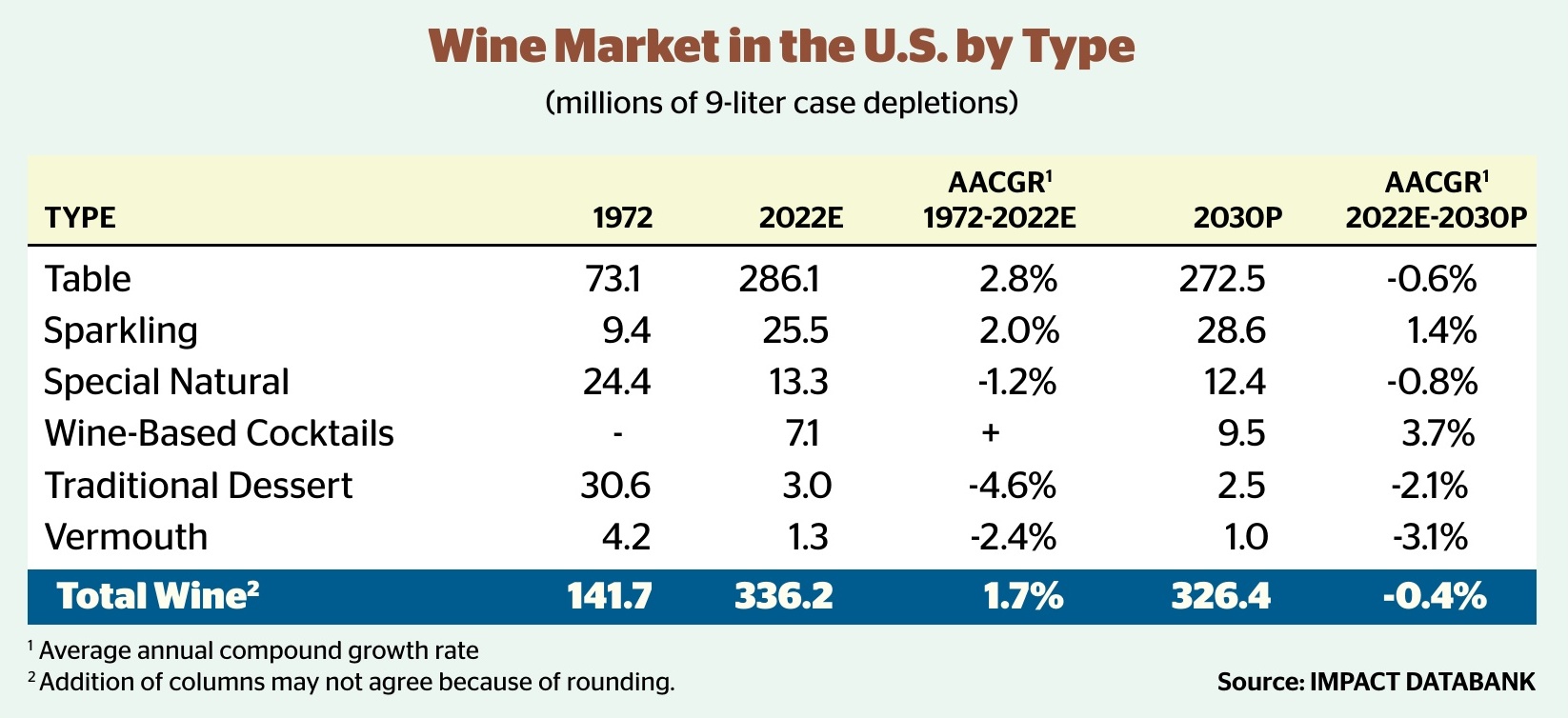
Sharpening Focus in Wine
After an uninterrupted three-decade run of growth, U.S. wine volume declined last year and is expected to do so again this year, returning to forward progress only after 2025, according to Impact Databank. Table wines will remain sluggish beyond 2025 at the below-premium levels, but the resiliency of upscale brands, the enduring growth of sparkling wines, the influx of wine-based cocktails such as Rancho La Gloria and BeatBox as well as the increased demand for low-calorie, low-sugar “better for you” options should propel the wine market in a positive direction during the latter half of this decade.
Bill Terlato, CEO of Terlato Wine Group, believes wine’s status as an affordable luxury, its place in dining culture and an increasing focus on sustainability and organic products will help boost the category going forward. “The quality, the place of origin, the sustainability of the farming and so on will all be important,” he says. “The other big thing that I see, which is huge for wine, is that we now have a dining culture in the United States. Dining out is a simple luxury. It doesn’t cost as much as getting a new car or a boat or extending the family vacation, but people are very social and it’s a great way to get together with family and friends.”
Still, marketers will need to be nimble to keep the category moving forward, explains Deutsch. “We must successfully attract new multicultural millennials and Gen Z consumers into the wine category by offering brands and products that meet their unique needs,” he says. “Our innovations should be food-friendly, delicious and overdeliver for the price. As an industry, we can also demystify wine and make it more approachable. Flavor can come from less traditional varietals and more innovative products, such as Bourbon barrel-aged wines, fruit wines and wine infusions.”
Wholesalers are focused on fine-tuning wine operations at both the upscale and entry levels of the market. “In wine, there have been some good tailwinds at the higher end and challenges at the lower end,” says Tom Bené, president and CEO of Breakthru Beverage. “Between the supply chain challenges and the trading up, there’s some balancing out that’s probably going to still happen. But we’re very well-positioned for that transition to higher-end wines with all the work we’ve been doing with our Aspect fine wine division.”
Chaplin notes that historically, beverage alcohol in general—and fine wine in particular—has been a bit insulated from financial shocks, especially with higher-income consumers. “Our key indicators show that lifestyle trends are gradually shifting toward a focus on essential consumption,” he adds. “With this shift, we’re working with our customers to maintain a steady emphasis on wine offerings from $8 to $15, in addition to our continued best-in-class service to the premium and ultra-premium wine category customers. Focus on food and wine is essential for long-term growth.”
Continuing to boost on-premise sales is part of that food-and-wine focus. “It’s not only about accounts reopening, but also being adequately staffed,” says Nick Mehall, CEO of Republic National Distributing Co. “There’s been significant turnover in the on-premise [sector], so we’re focusing on educating about the brands in our portfolio and getting back to the level of strength we had pre-pandemic.”
For winemakers, climate change is also a vital concern for the future, even as its effects are already being felt across some of the world’s most renowned growing regions. “Sustainability is a key area we’re focused on as a company globally, not just in the U.S.,” says Ben Dollard, president of Treasury Wine Estates Americas. “It’s part of our DNA, and we don’t refer to it as a project—it’s what we do all day, every day.”
Terlato also has an eye on climate change. “As far as long term, the biggest issue ever is climate change,” he says, adding that he believes the wine industry will be clever enough to find a solution. “We don’t have a solution right now, and there’s no plan to solve the issue. The things that you hear, the green initiatives underway, they’re not going to solve it. We have to get really serious about the environment and what we’re going to do to combat climate change, because that I think is the biggest risk to the industry, far and away.”
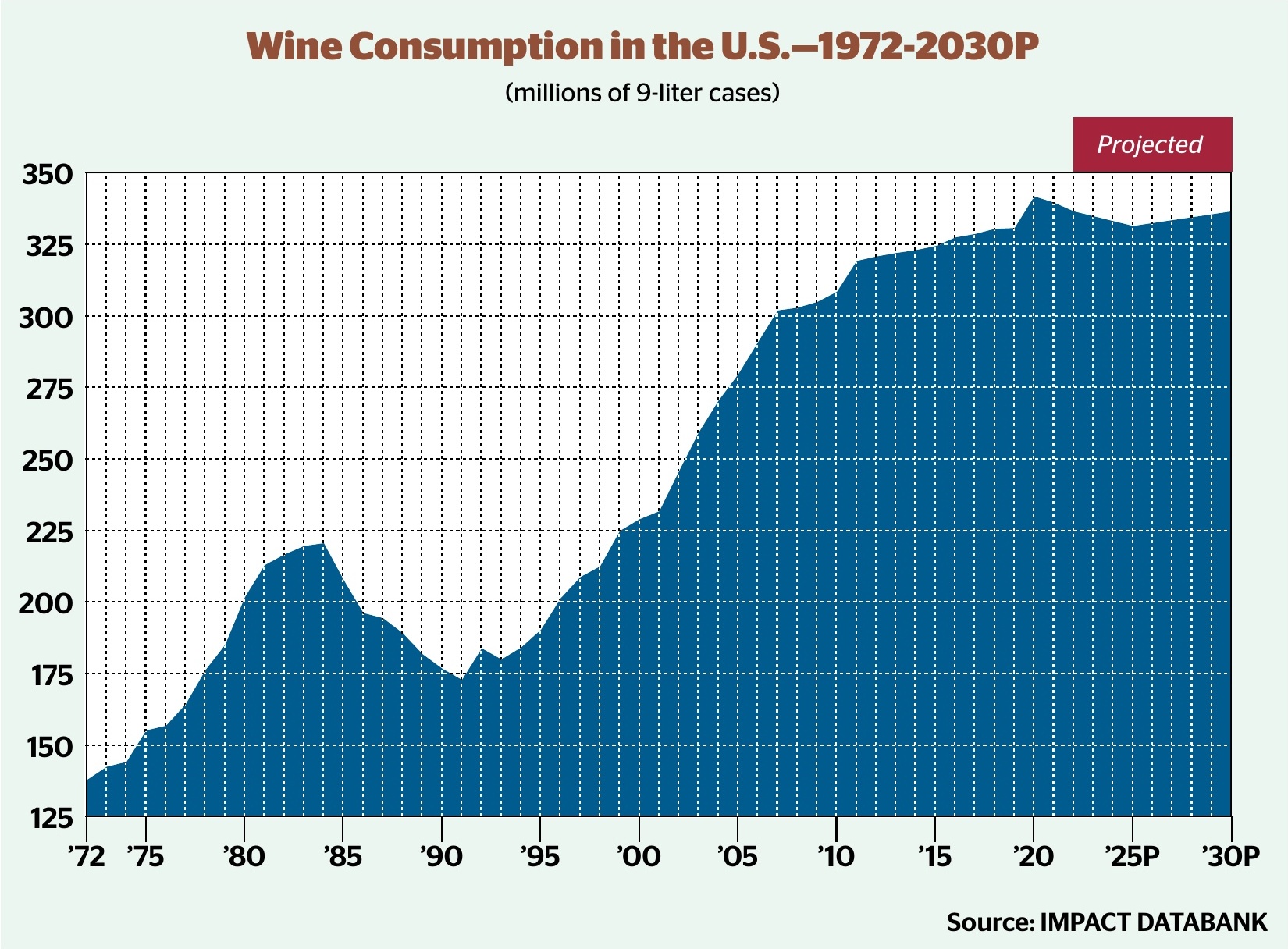
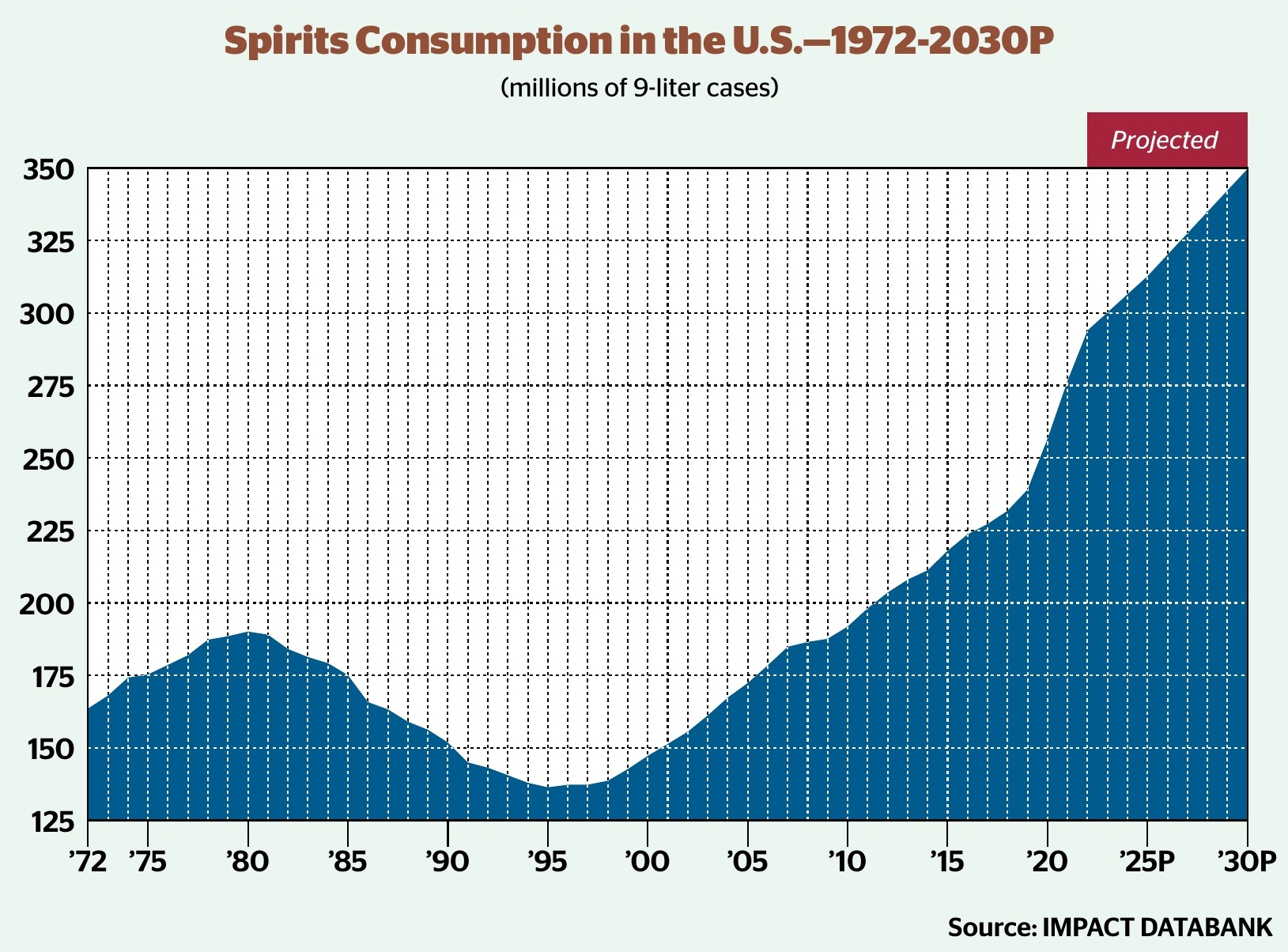
E-Commerce Evolution
The e-commerce market for beverage alcohol took a quantum leap forward amid the pandemic, and industry leaders believe it will continue to gain momentum going forward thanks both to younger consumers who embrace technology and to the benefits that digitalization can offer operators at all three tiers.
“E-commerce has grown almost threefold since pre-pandemic, although it’s still only mid single-digits as a percentage of the business,” says Mehall. “We believe this channel will continue to see significant growth. Consumers are spending more time online, and that’s where a lot of decision points are happening.”
Bené points to recent growth in the online sector. “Rabobank [has shared data that shows] $6 billion in beverage alcohol e-commerce for 2021, more than doubling from 2019,” he says. “Even with that growth, there’s only about 4% of off-premise sales going through e-commerce, but it’s going to continue to grow.”
At Southern Glazer’s, Chaplin notes that the shift to e-commerce platforms has leveled off from its enormous pandemic growth rates, but adds that the “hybrid shopper” continues to play a huge role. “This is someone who purchases through a digital channel at times and in person at others,” Chaplin explains. “It reinforces the need for a best-in-class omnichannel approach, where brands can be built seamlessly across all channels. We expect beverage alcohol to remain an omni-channel business, with both digital commerce and retail stores.”
With their e-commerce initiatives jump-started by the pandemic in many cases, retailers are also heavily invested in the channel. “I believe that having a seamless e-commerce experience and fulfillment process will become table stakes for successful alcohol retail operations, as customer expectations continue to increase and technology continues to improve,” says Fisch. “With current e-commerce solutions available, retailers can easily build these capabilities in-house instead of relying on a third-party marketplace.”
For suppliers, the e-commerce channel has offered new opportunities to educate and connect with consumers, especially younger generations. “E-commerce in spirits has seen 10 years’ worth of change in the past three years and is now a mainstay of the shopping experience in our industry,” Carr observes. “Partnering with pure players like ReserveBar, Cocktail Courier and Drizly, along with access to first-party data, has changed the game in terms of how we can build a fully connected consumer journey—speaking to our consumers at the right time, about the most relevant offering, and getting our brands to people’s doorsteps with the click of a button.”
Deutsch sees opportunities to leverage real-time conversations and learn to create new products that better meet consumer needs. “Because we believe e-commerce will take an increasingly important role in the future of our industry, we decided early on to invest heavily in it,” he says. “As a result, Josh Cellars has been the No. 1 wine on Drizly for the past two-and-a-half years.”
Online platforms remain critical for the wholesale tier, too. “The value and importance of tech-enabled data collection cannot be overstated,” Chaplin notes. “This data provides a lens into what works and what doesn’t, which products and flavors consumers are seeking and which price points consumers are willing to pay. Ultimately, digital capabilities will lead to a closer orchestration of sales, marketing, e-commerce and service—for greater execution and value for customers and suppliers alike.”
For Bené at Breakthru Beverage, technology advances gained during the pandemic will leave a lasting legacy. “Technology probably accelerated by five years during the pandemic, whether it’s things like QR codes or being able to order through delivery apps more easily,” he says. “There’s a whole generation of people who never went online to order or make reservations before the pandemic, but now they do, and that’s not going away.”
All in all, while the drinks industry may face unforeseen hurdles in the coming years, operators at all three tiers of the industry are largely bullish on the future, owing to consumers’ increasing enthusiasm for exploring various drinks segments, crafting their own cocktails and engaging with their favorite brands through new touchpoints, both online and in person.
It will be ultimately up to the industry as a whole to continue stoking that enthusiasm with intriguing brand propositions and experiences, while meeting consumer expectations by delivering products in increasingly accessible and convenient ways. It’s always easier said than done, but if the past few years are any indication, the drinks business appears to be up for the challenge.
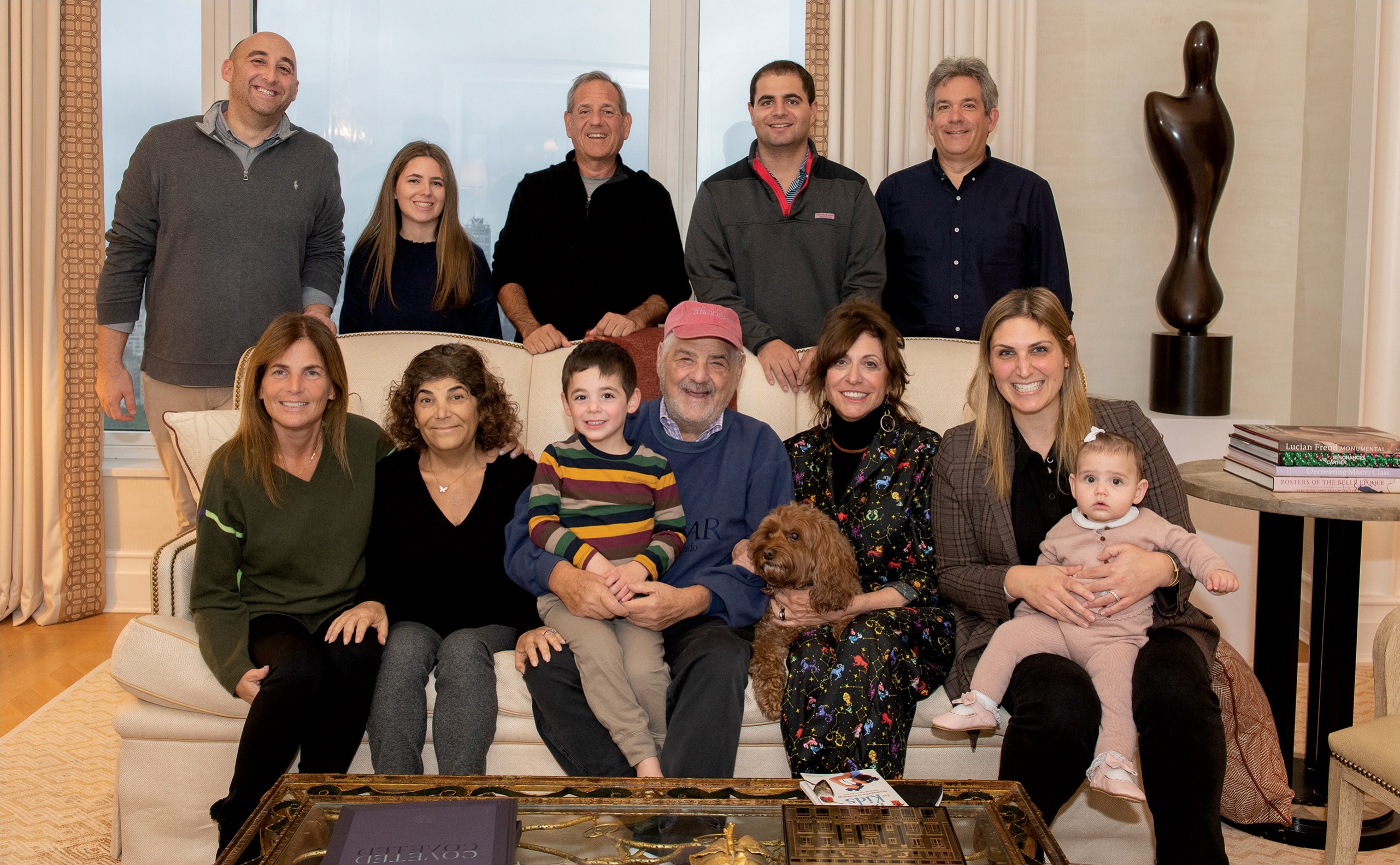
The Shanken family on Oct. 4, 2022. Standing (from left): Jay Reid, Lauren Cohen, Adam Cohen, Jake Cohen, Mike Baker. Seated (from left): Allison Shanken Cohen, Samantha Shanken Baker, Asher Reid, Marvin R. Shanken, Hazel Shanken, Lionel Shanken (a mini golden doodle), Jessica Shanken Reid, Jordan Reid.
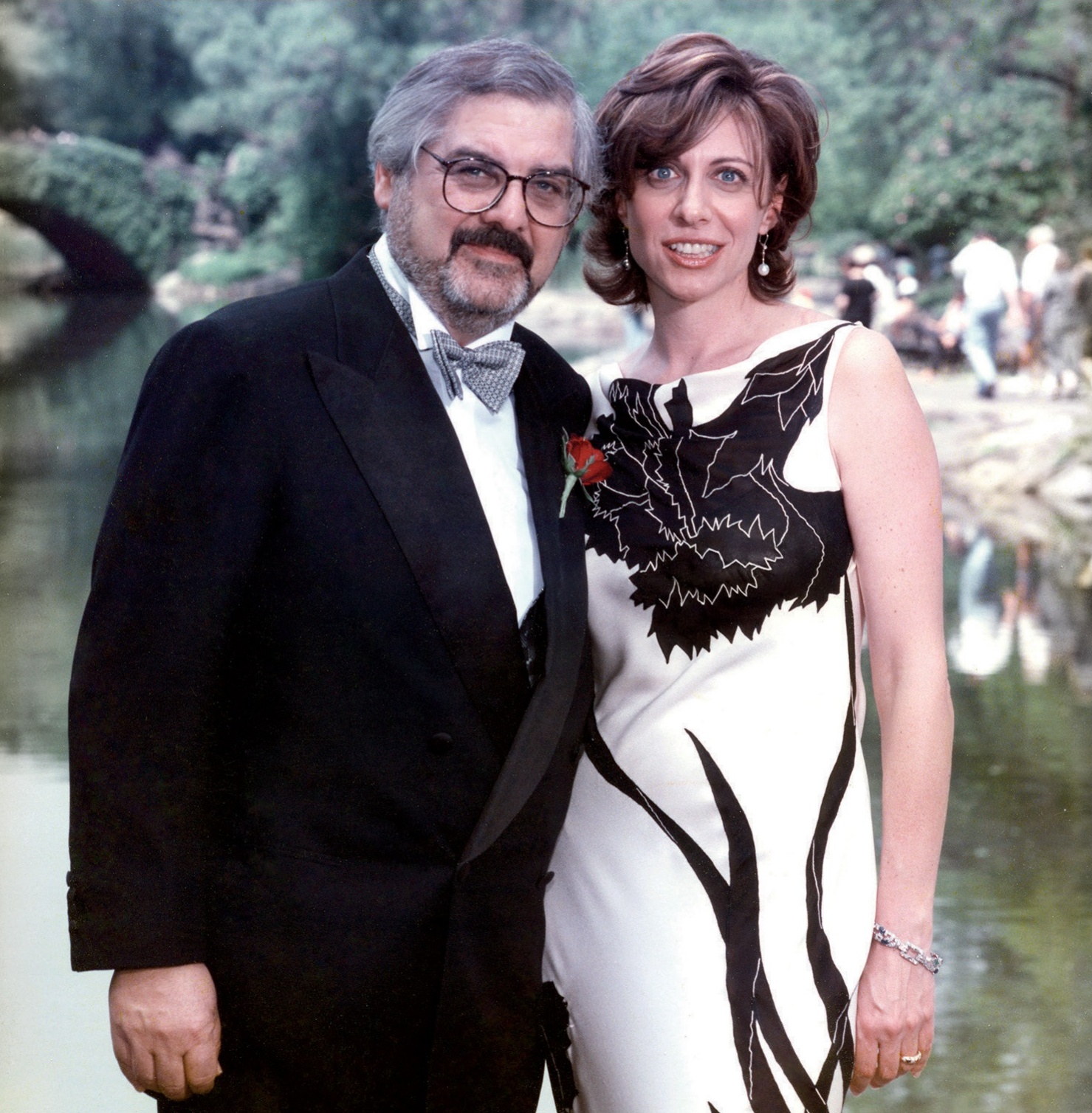
Marvin and Hazel Shanken in 1996.
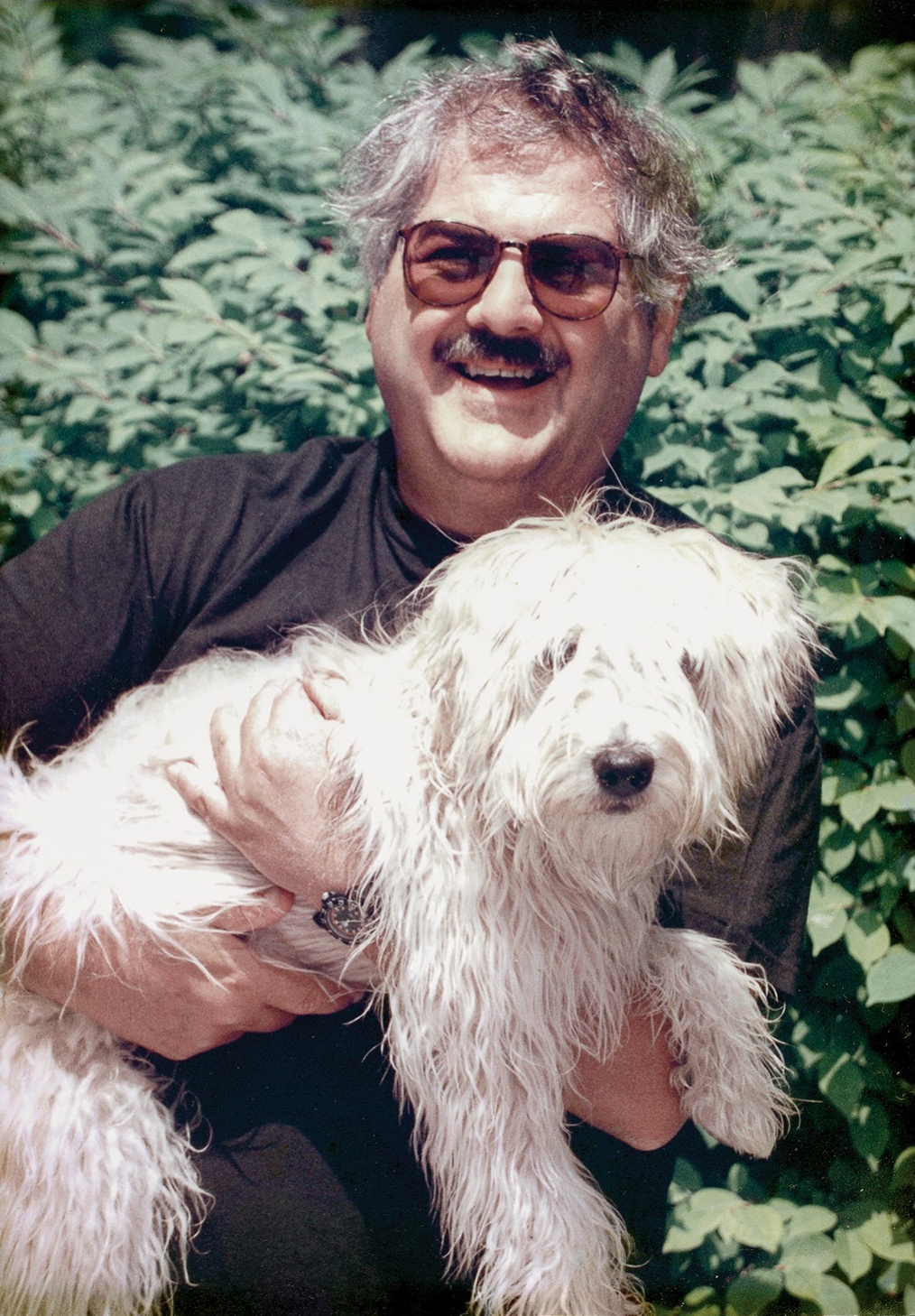
Marvin R. Shanken and Cristina (a soft-coated Wheaten terrier) in 1995.
FRANCKREPORTER/GETTY IMAGES
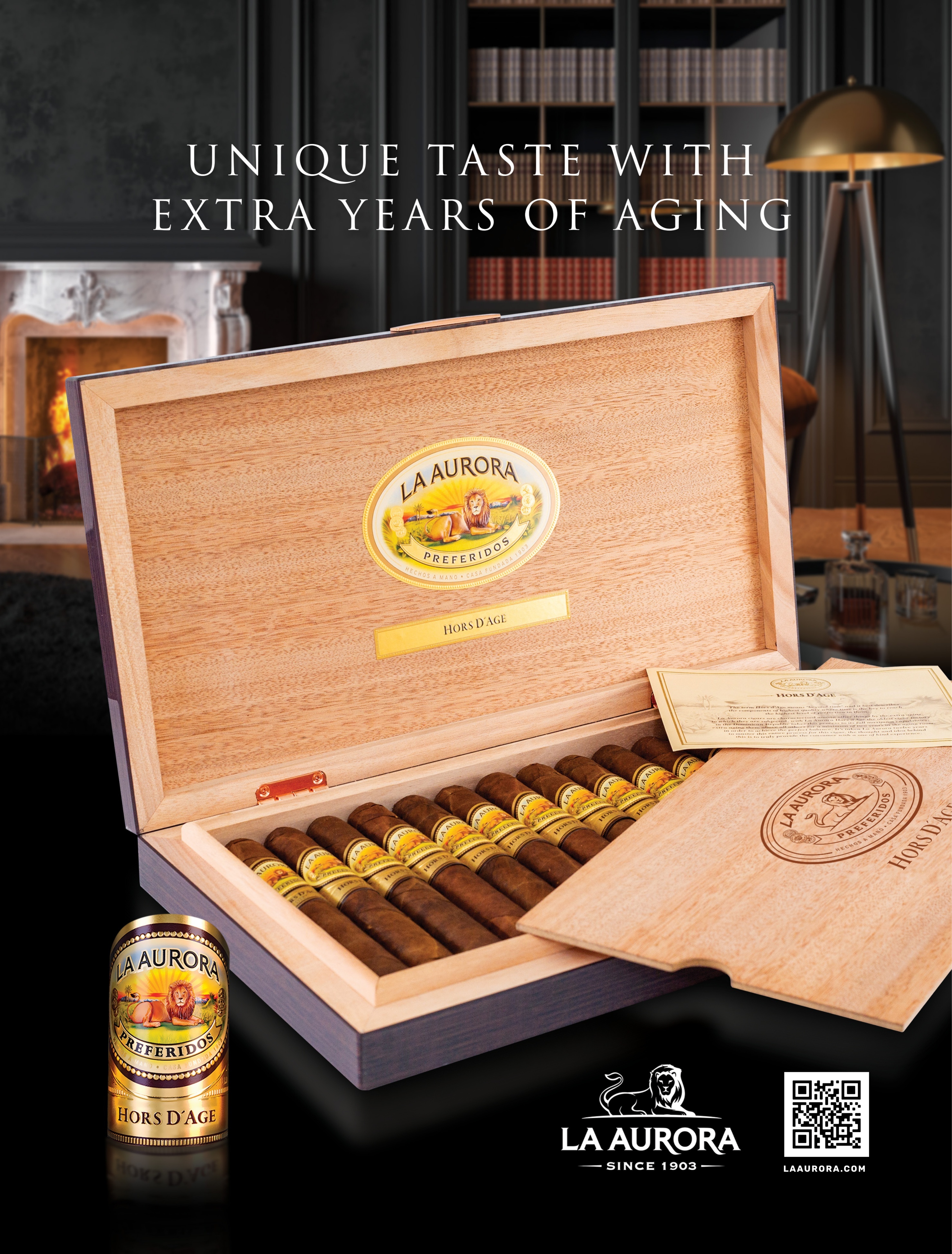
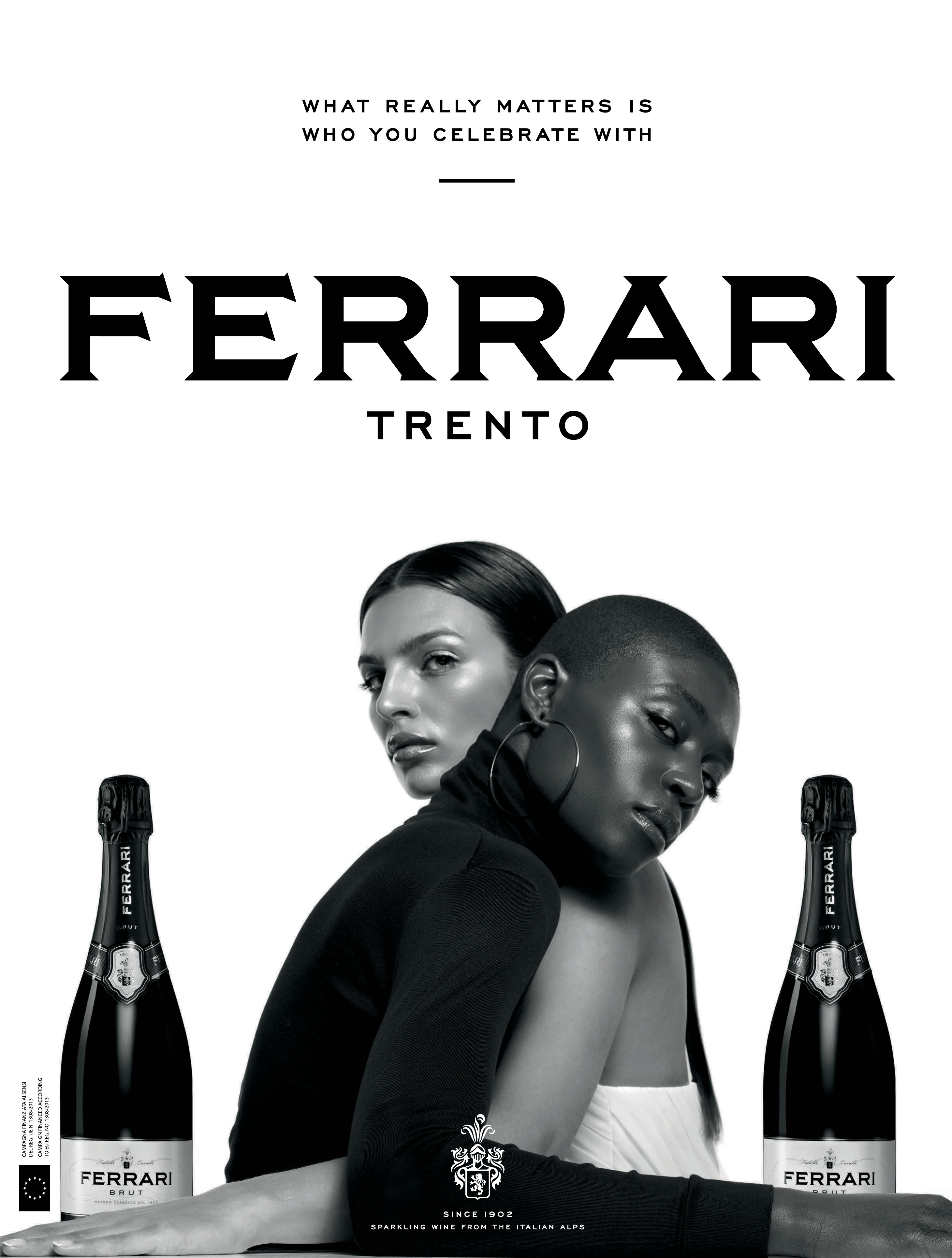
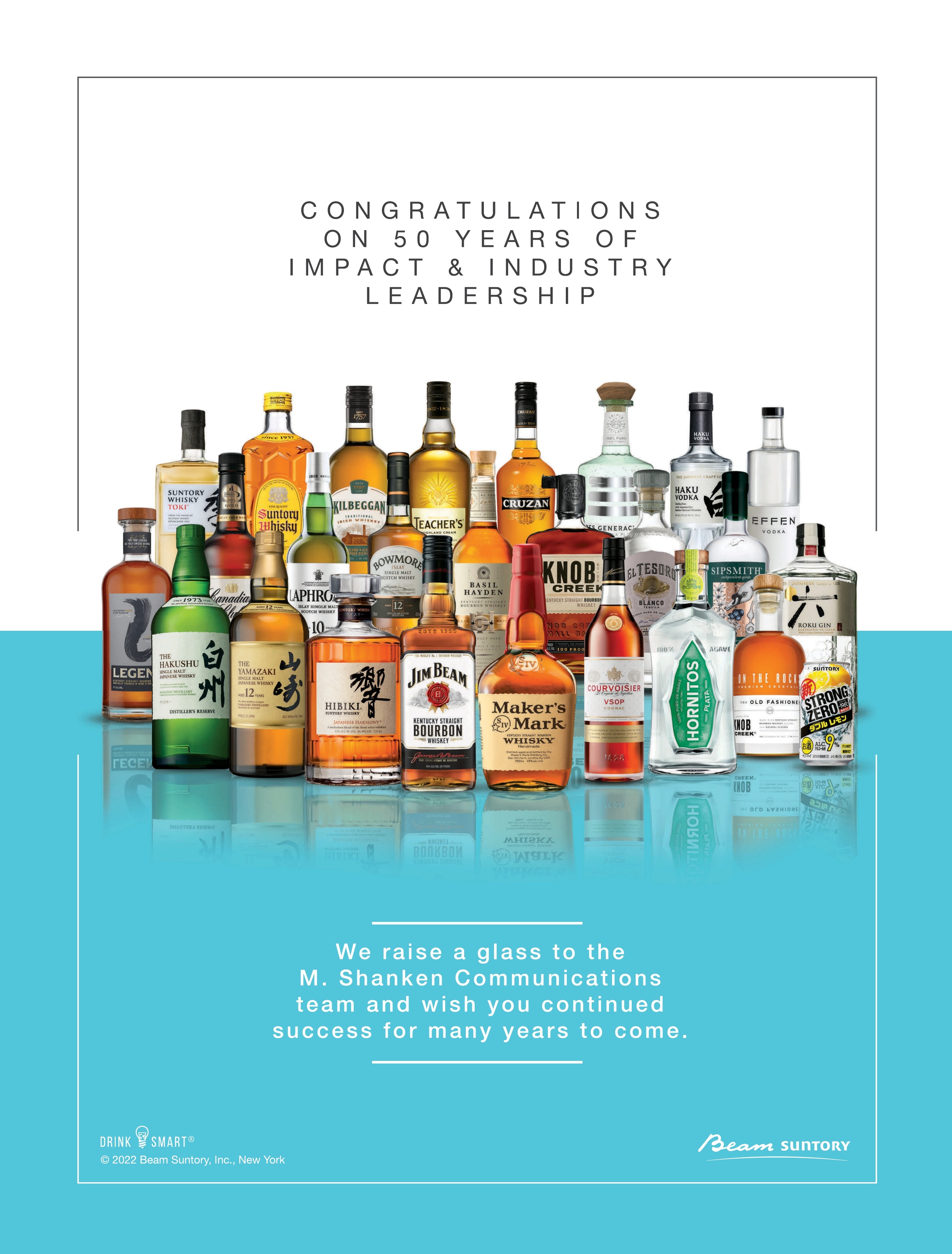
The Portfolio
Over its 50-year history, M. Shanken Communications has grown to include a far-reaching portfolio of publications, events and digital offerings
Digital Editorial Products
M. Shanken Communications has been an assertive adaptor of digital technology. Website development for Wine Spectator and Cigar Aficionado began in the mid 1990s. The company’s vast databases, with hundreds of thousands of wine reviews as well as cigar ratings, were ideally suited for burgeoning digital technologies. Today, M. Shanken Communications offers a broad range of digital products.
The Interviews
Marvin R. Shanken began interviewing wine and spirits industry executives in Impact newsletter in 1978, and then cigar industry luminaries in Cigar Aficionado in 1993. A rare interview with Fidel Castro in 1994 was a career highlight. Many interviews with celebrities from the industry, the military, film and sports followed. The following summaries are only some of the most notable interviews over the past five decades.
A Tradition of Philanthropy
Giving back has long been a hallmark of M. Shanken Communications. “If you were to ask me what I am most proud of over the last 50 years, the answer would be simple,” says chairman Marvin R. Shanken. “From the very early days, we wanted to give back. Charity and charitable events are an integral part of our company culture.”
A 50-Year History of the U.S. Drinks Market
Companies have come and gone, but brands continue to be the lifeblood of the industry
By Michael Moaba, David Fleming, Dan Marsteller and Juan Banaag
A Brief History of the Cigar Industry
The cigar world of 50 years ago is unrecognizable today
By David Savona
View Desktop Version
Subscribe Now





























































